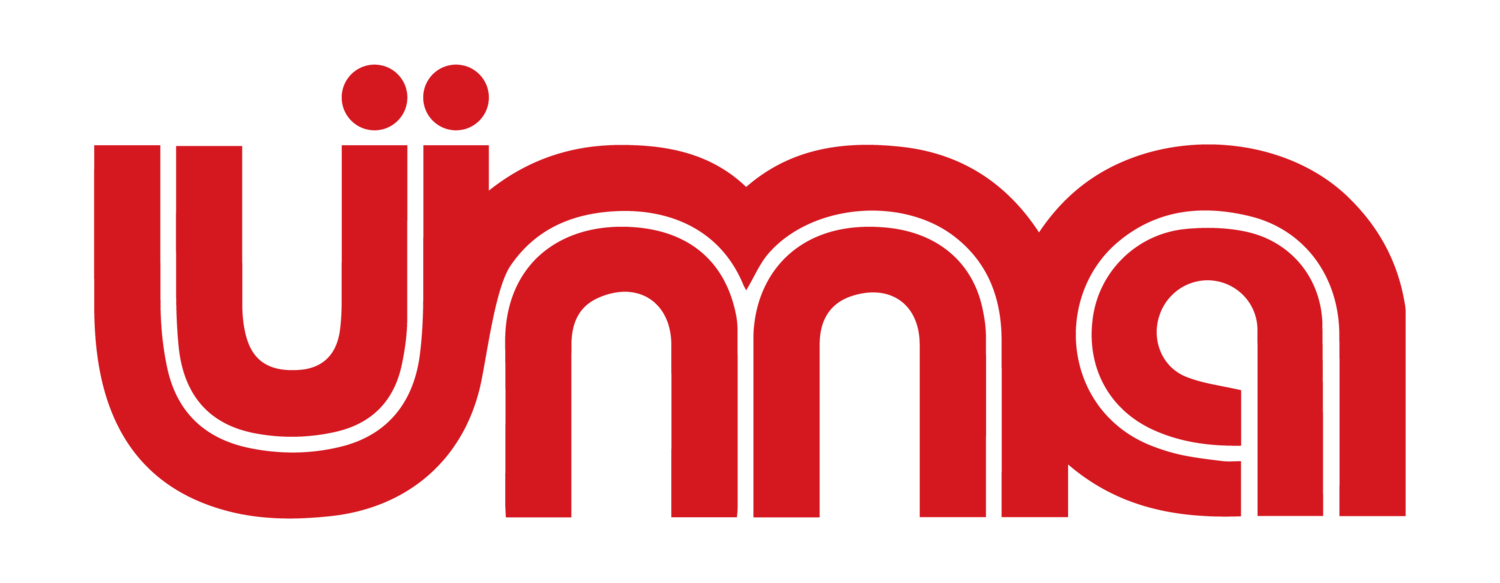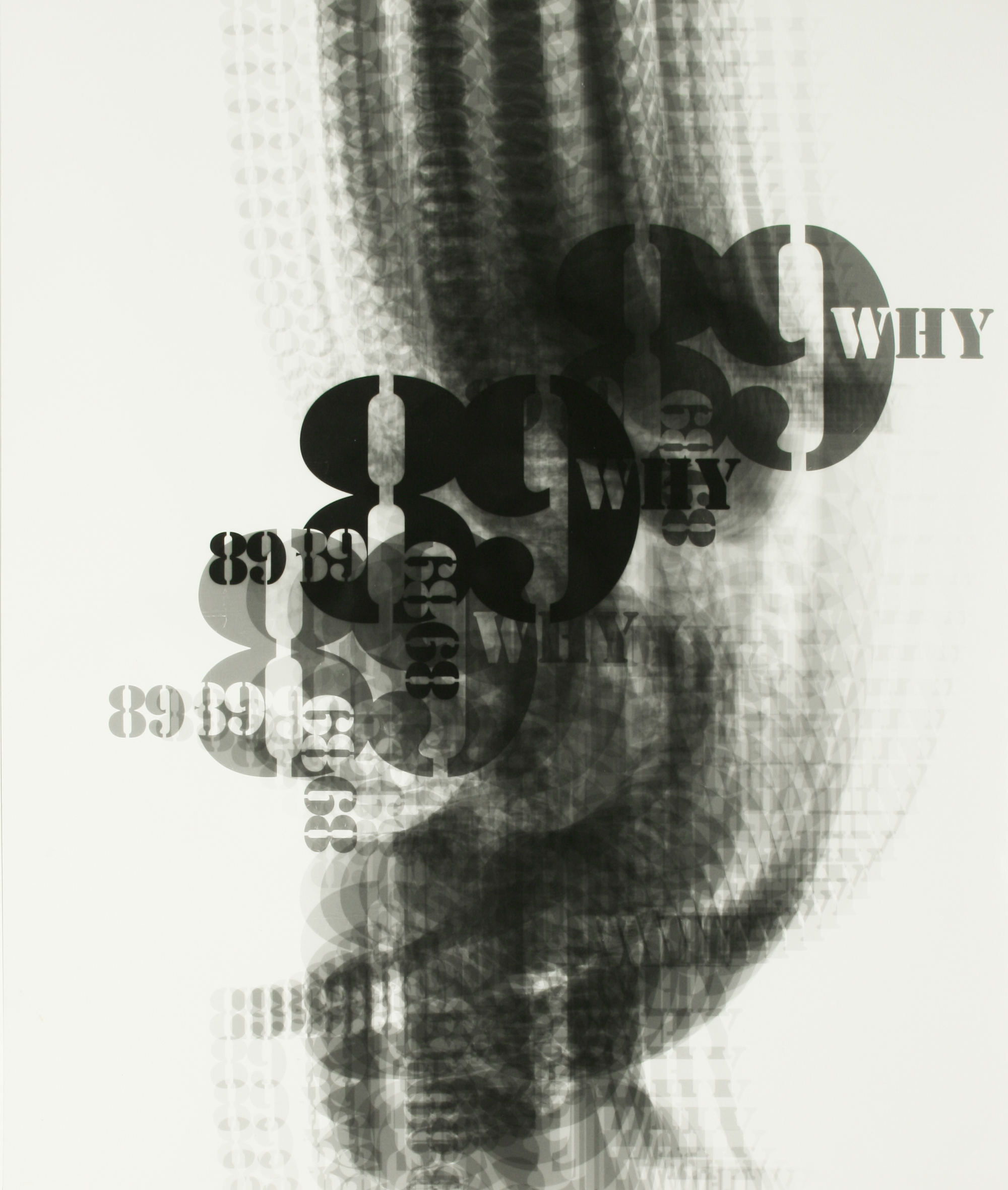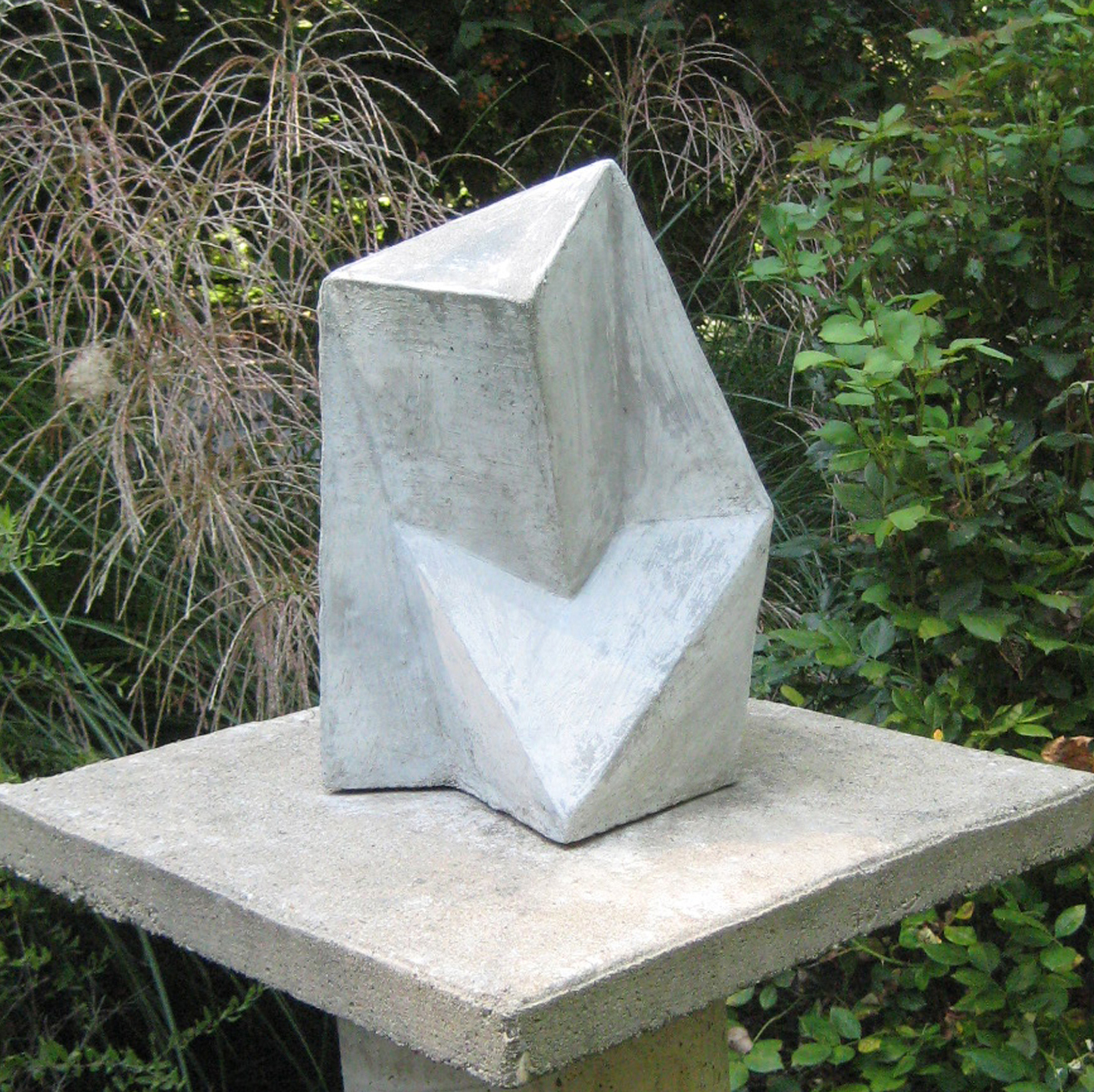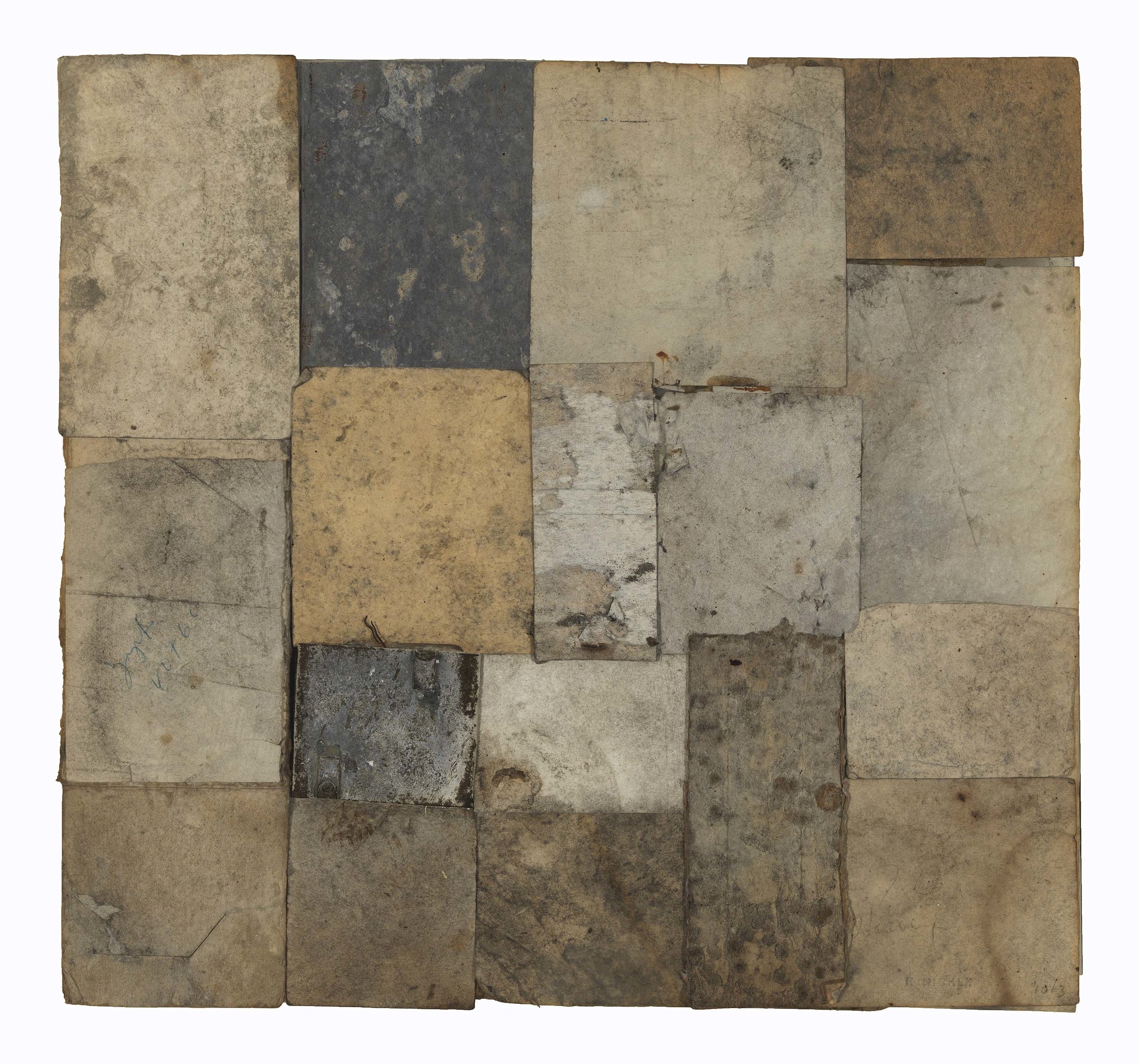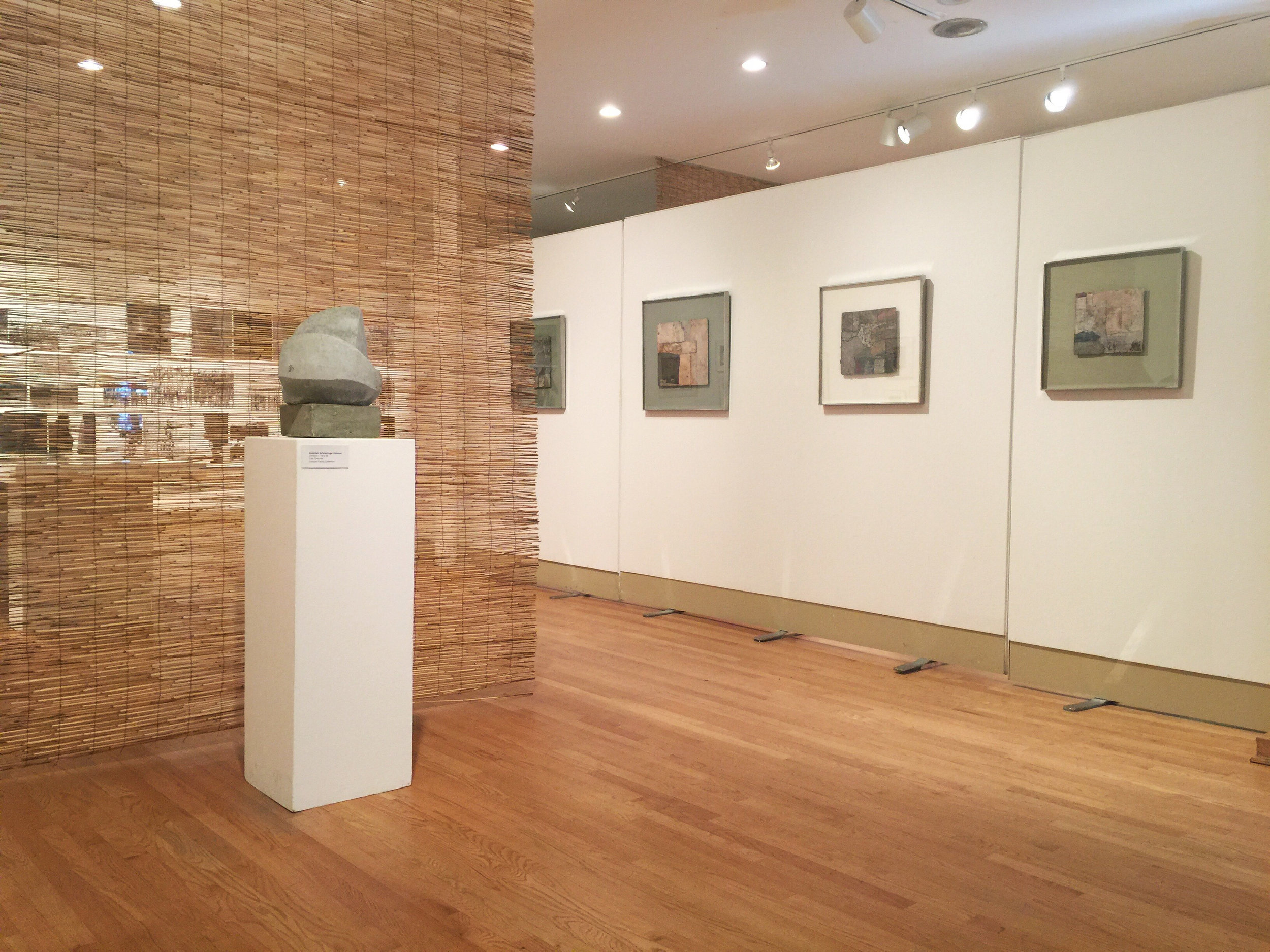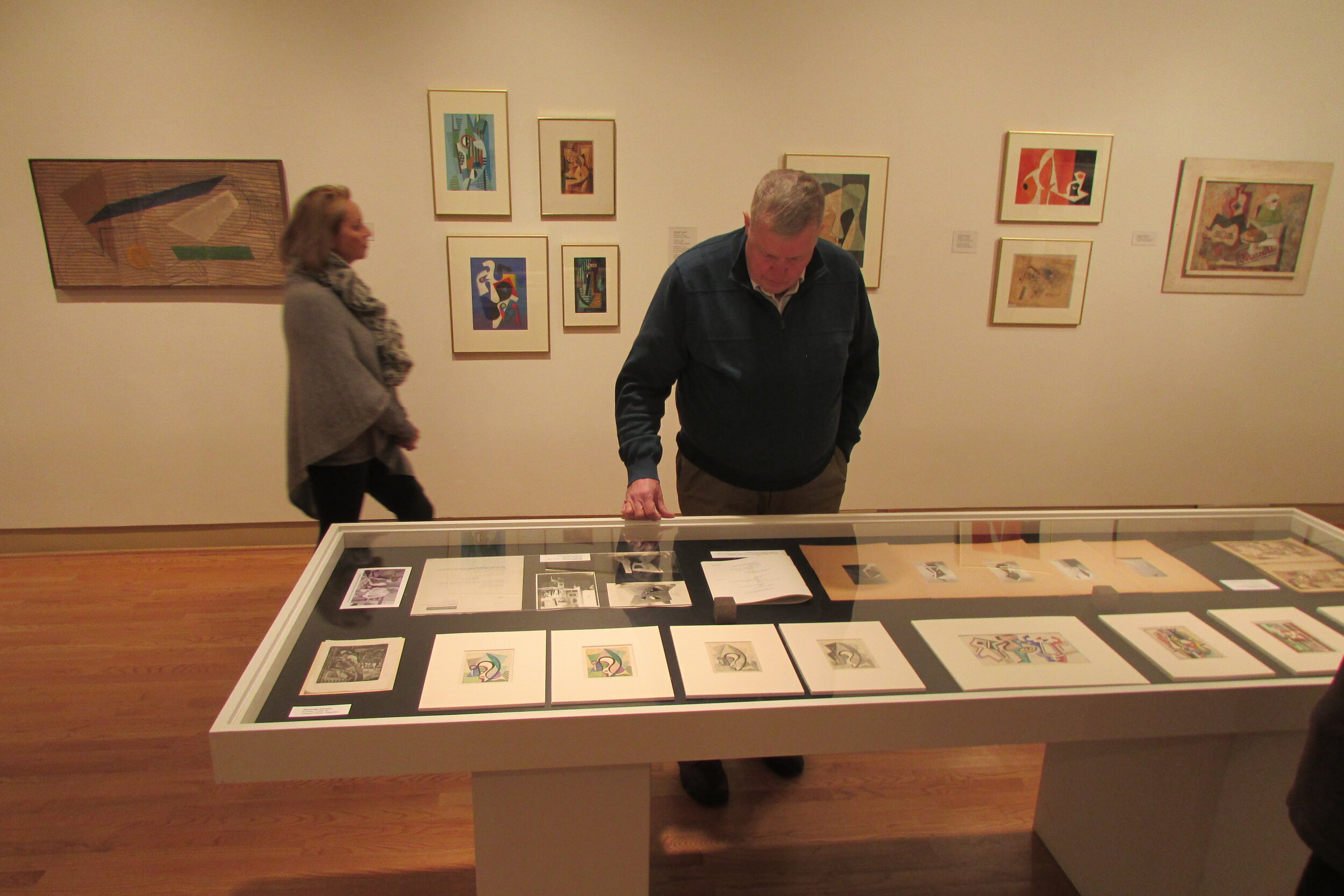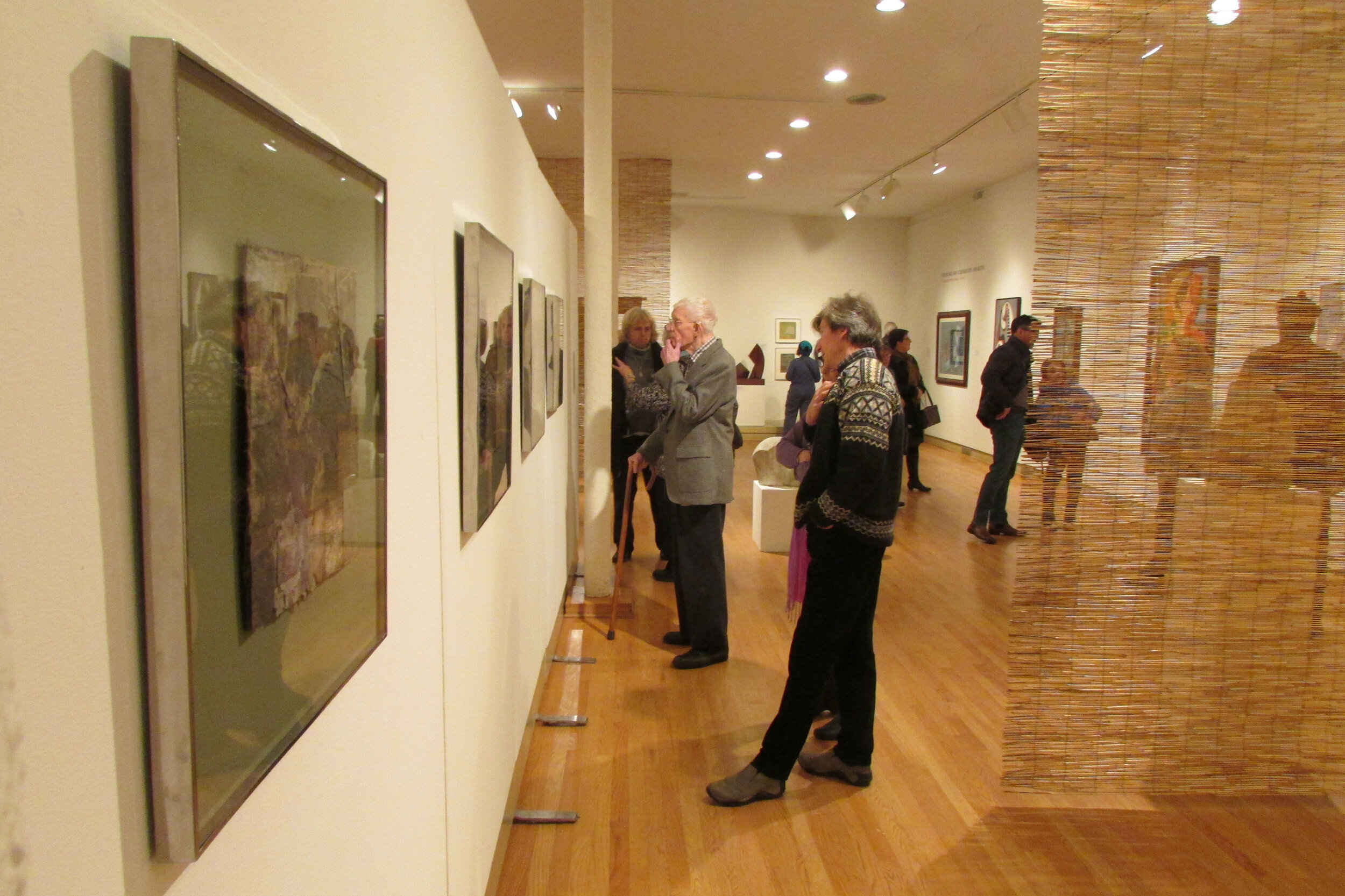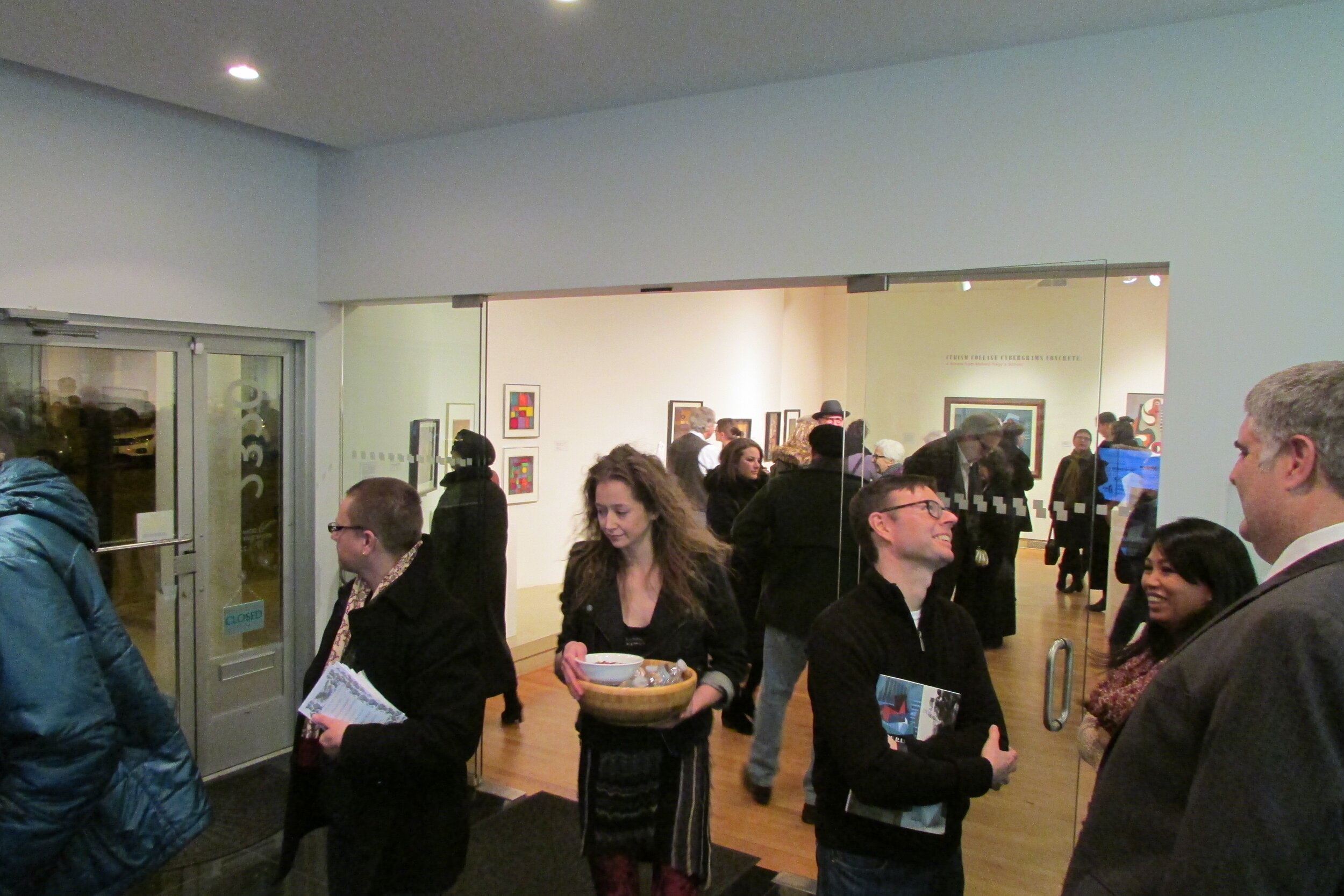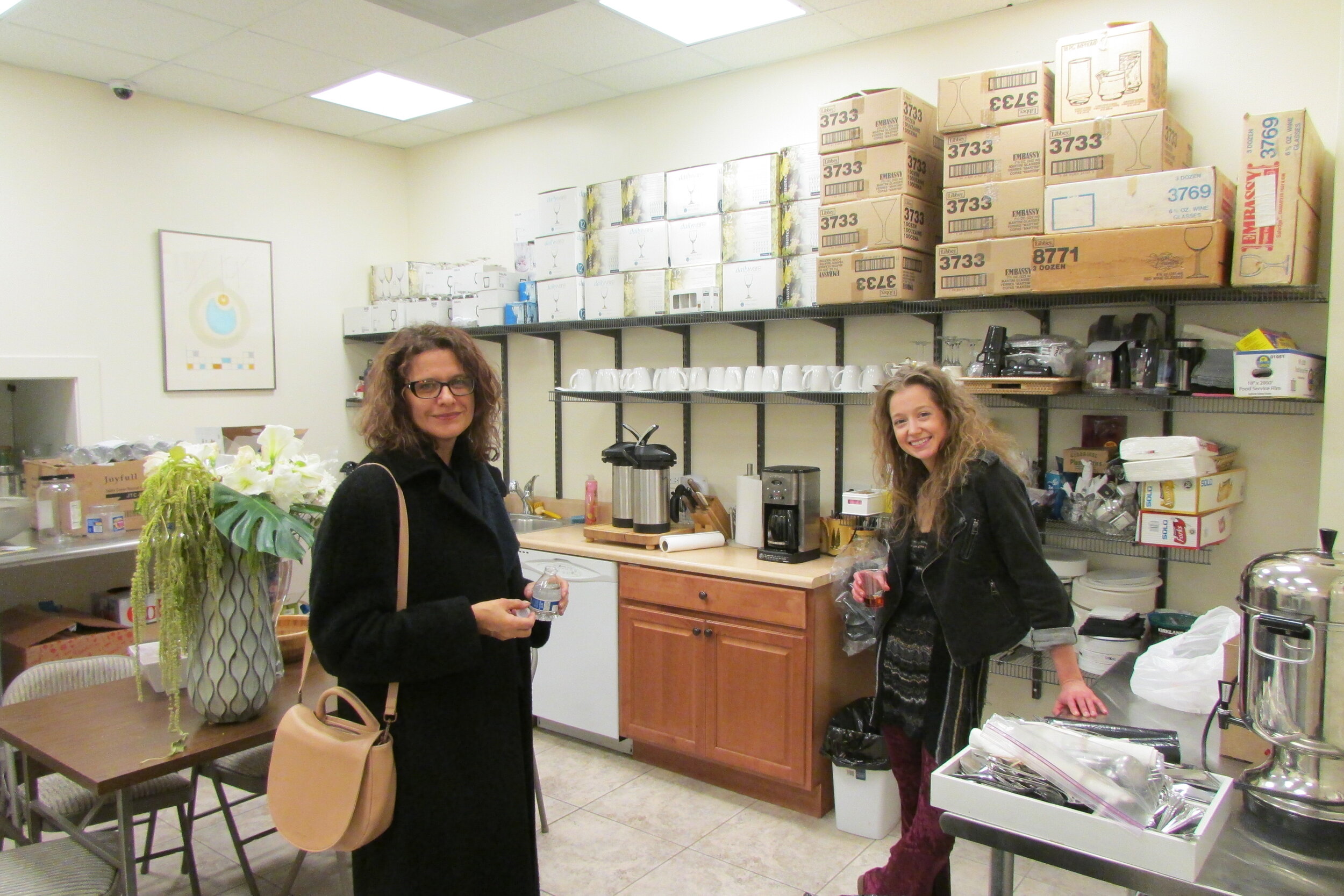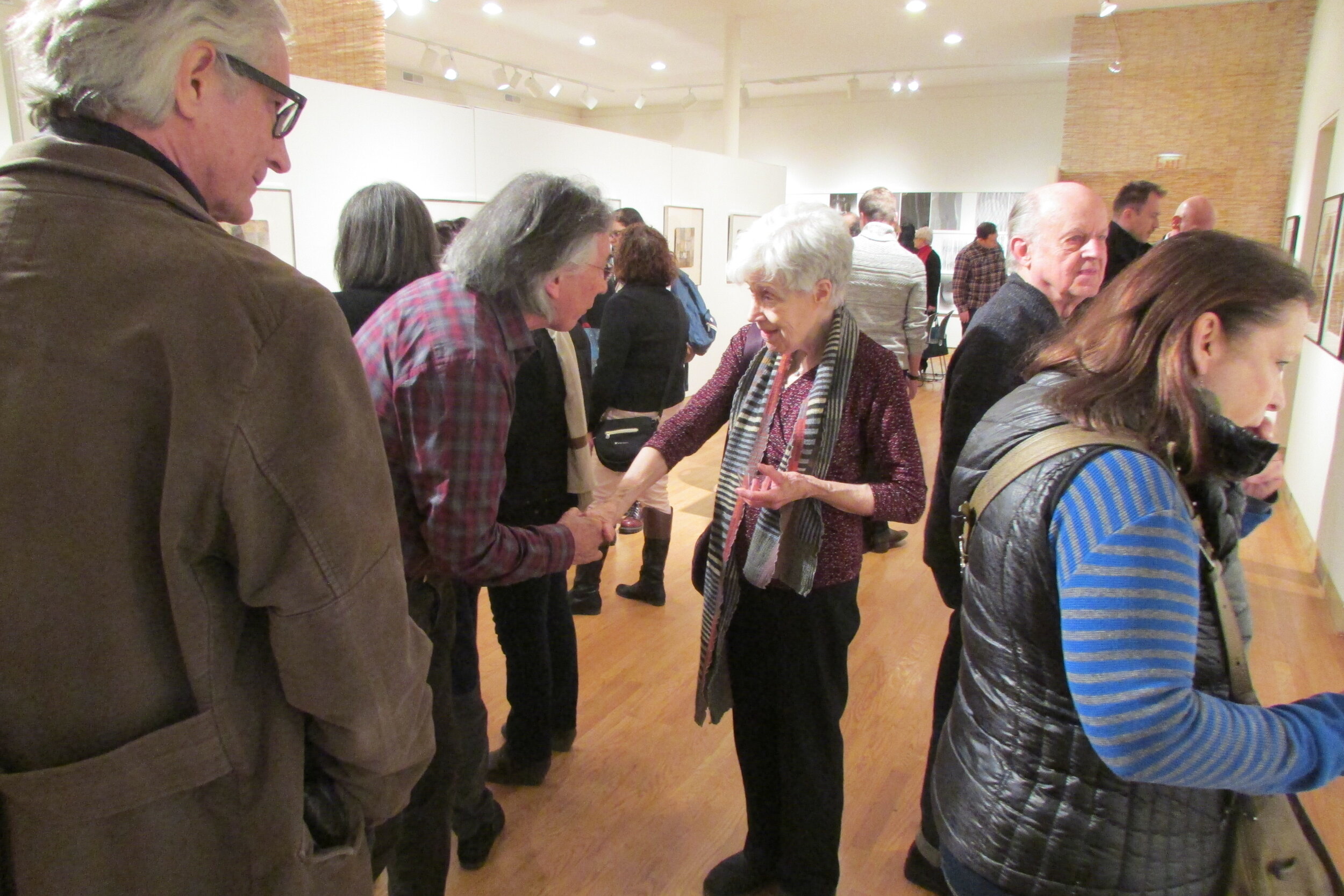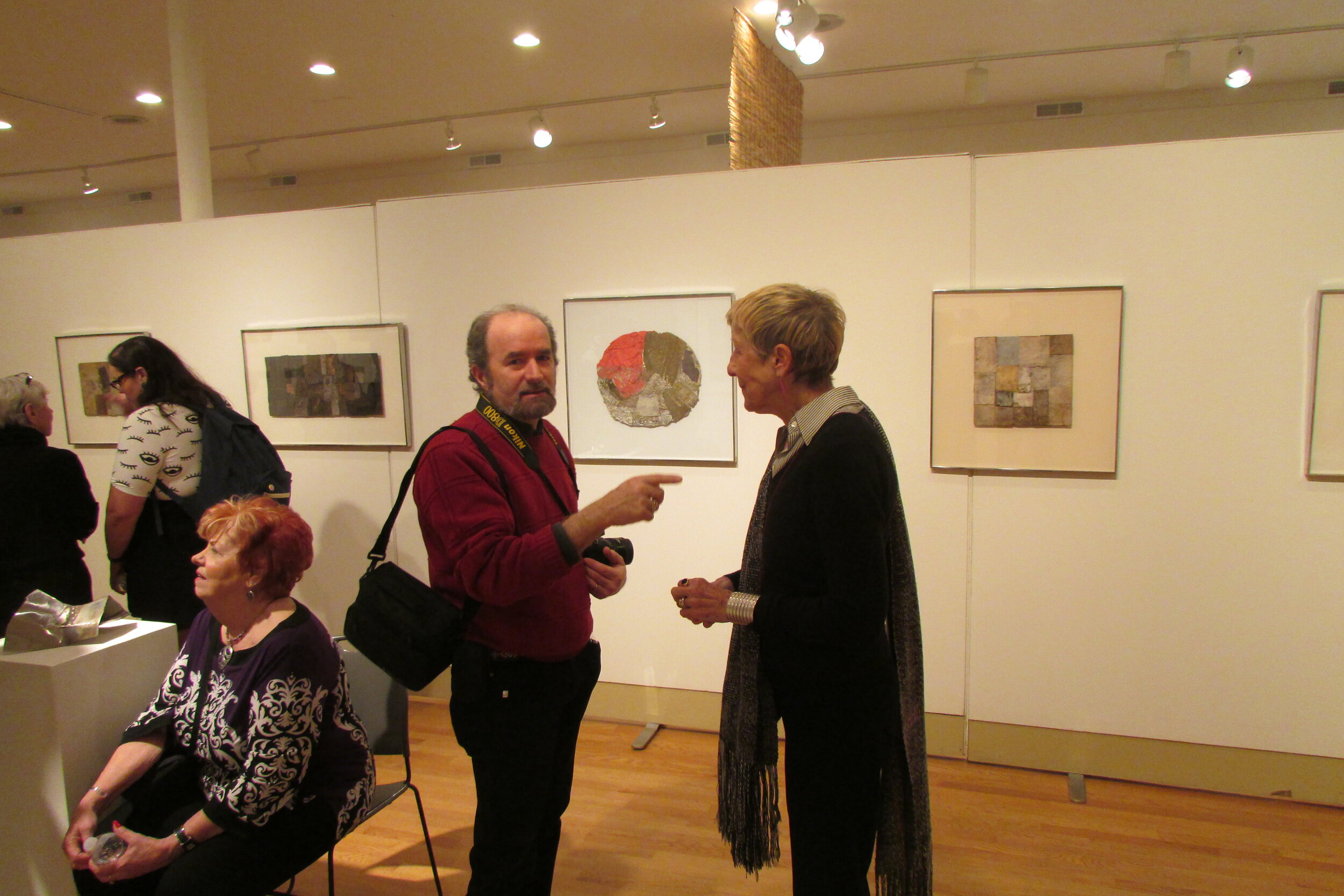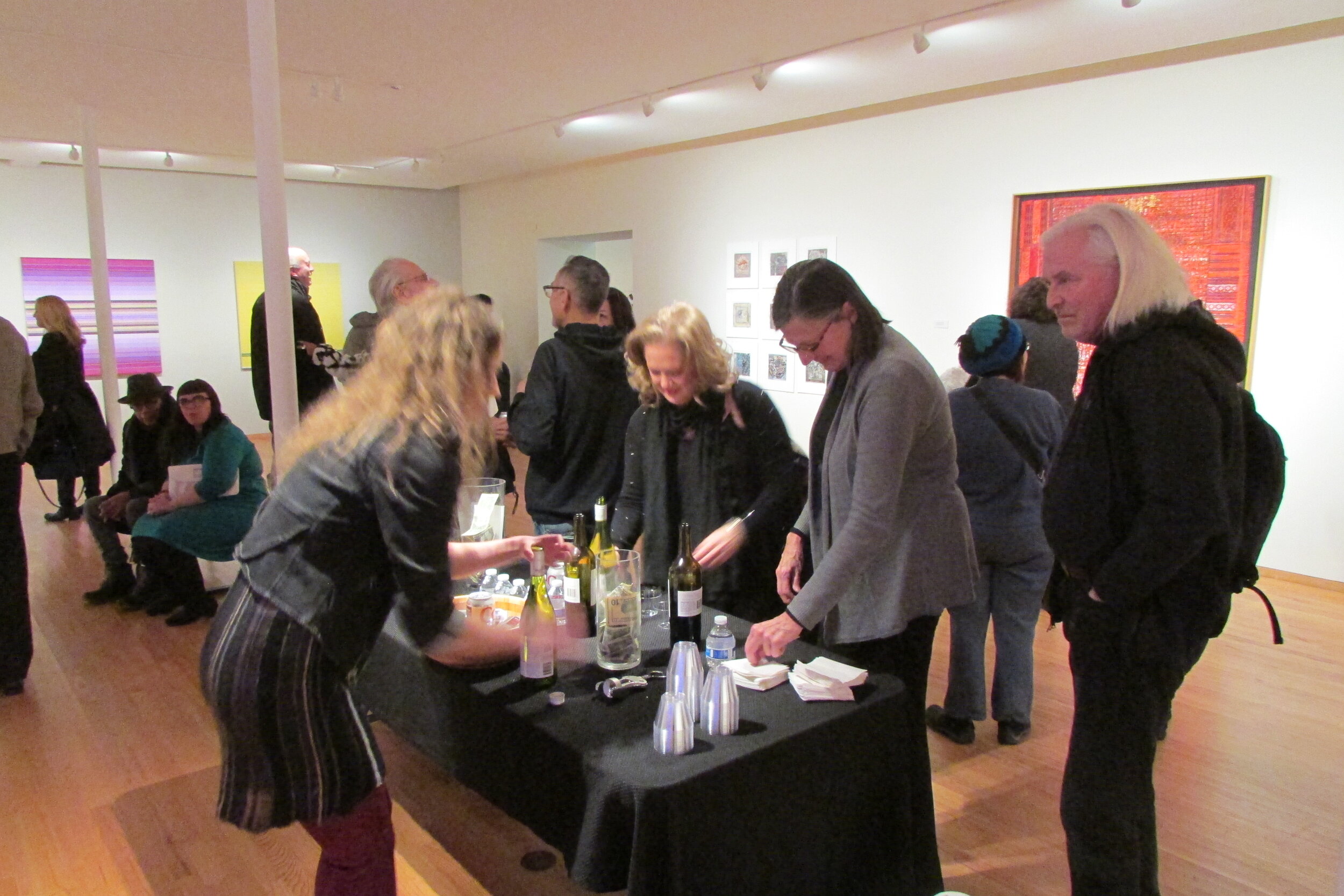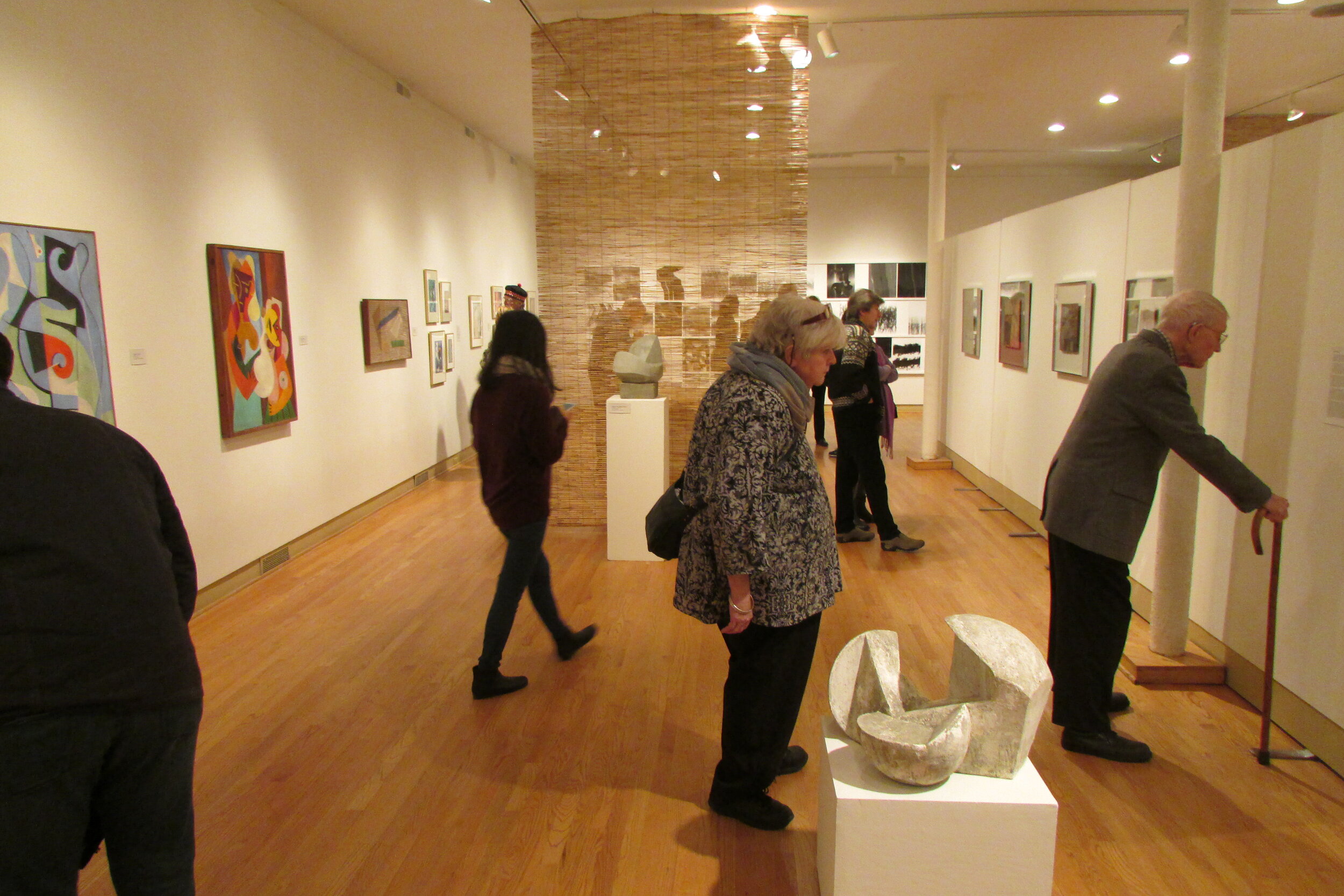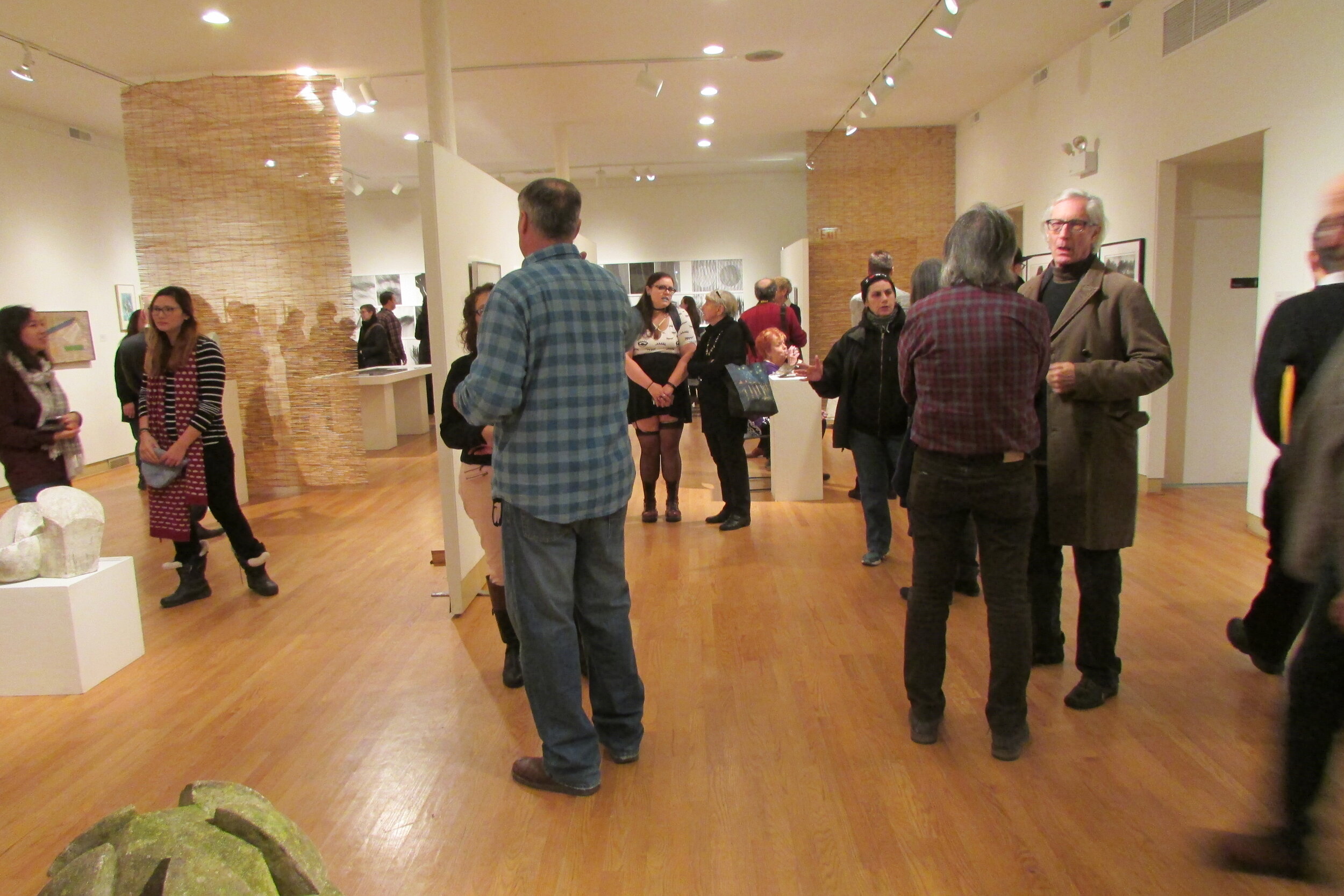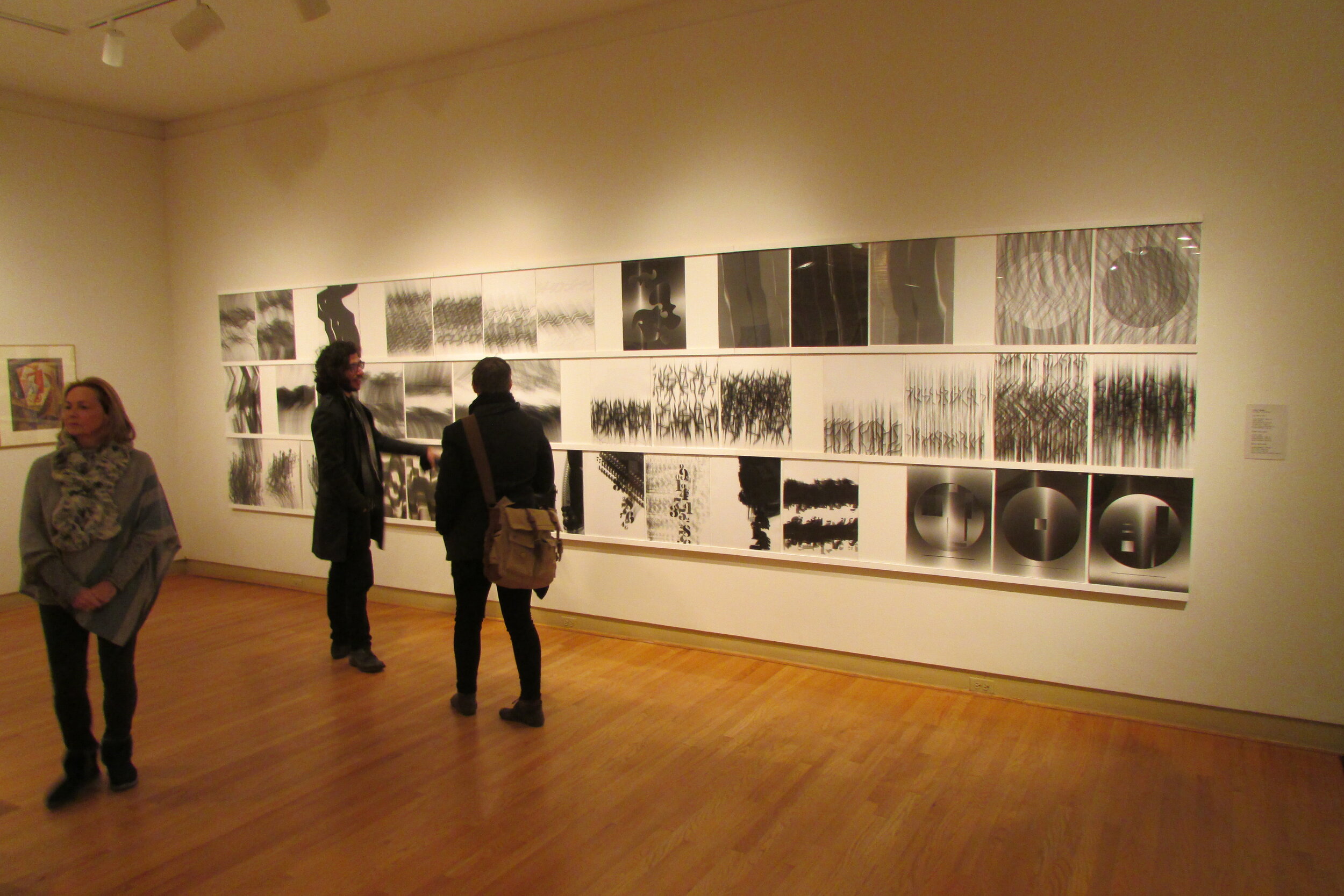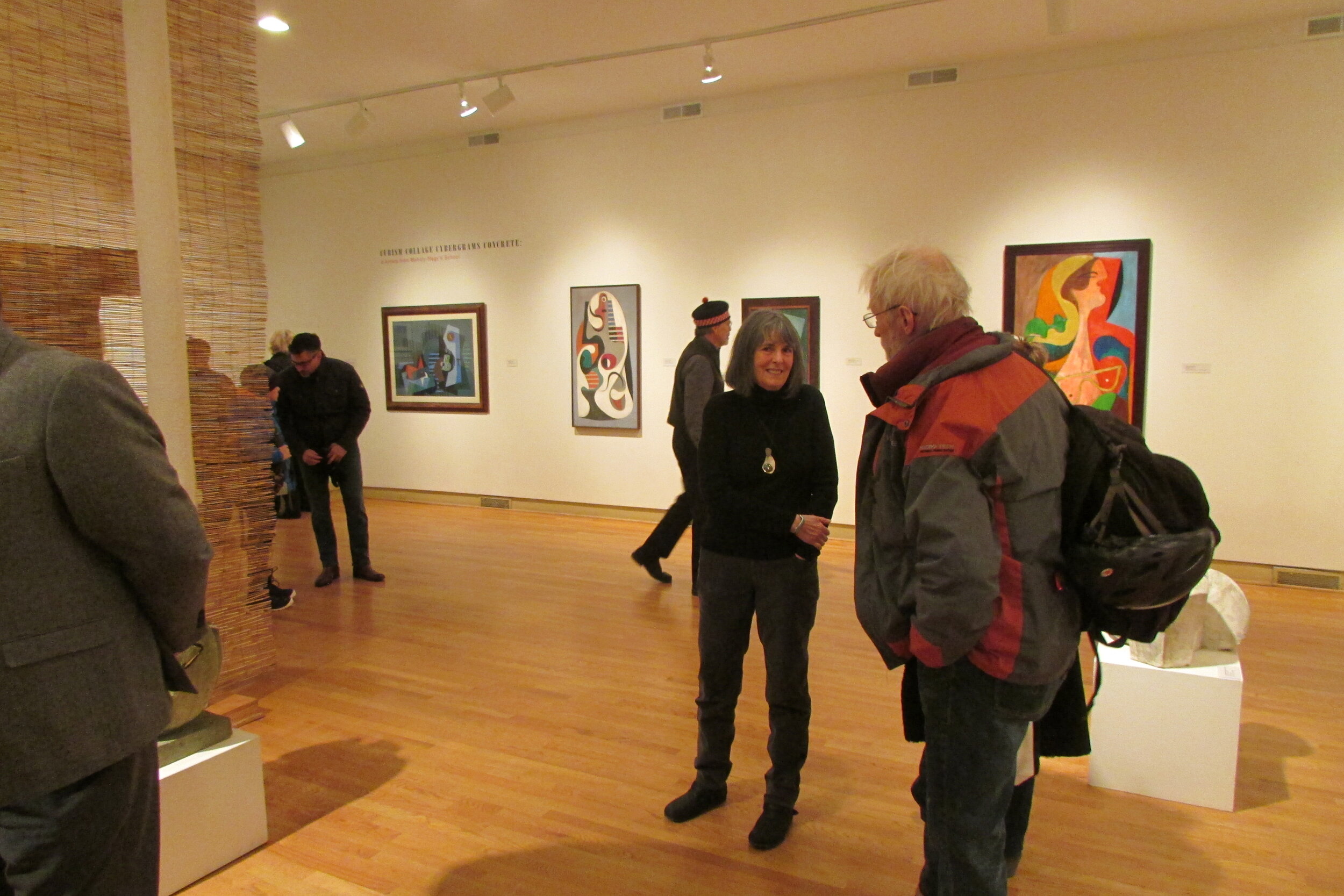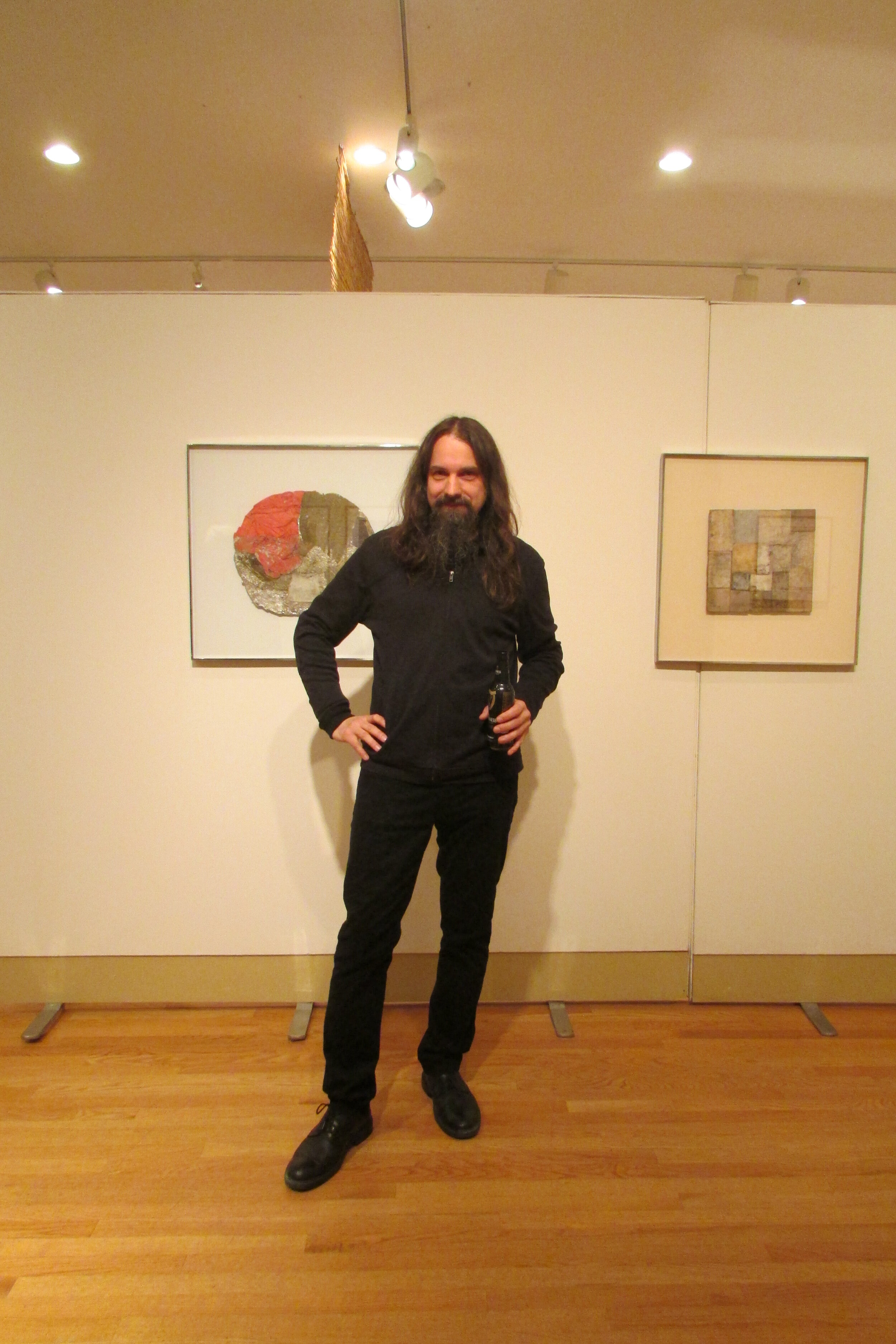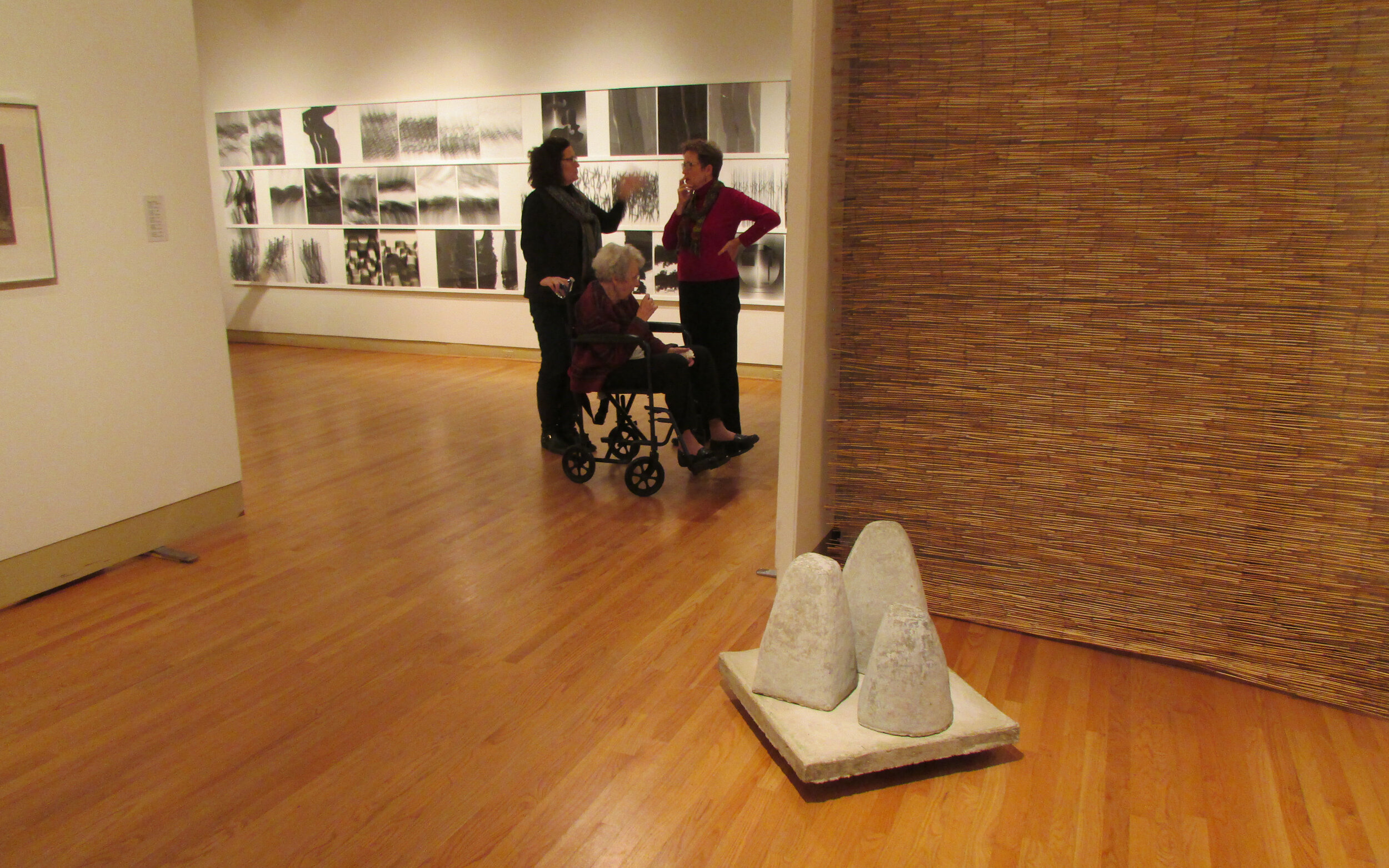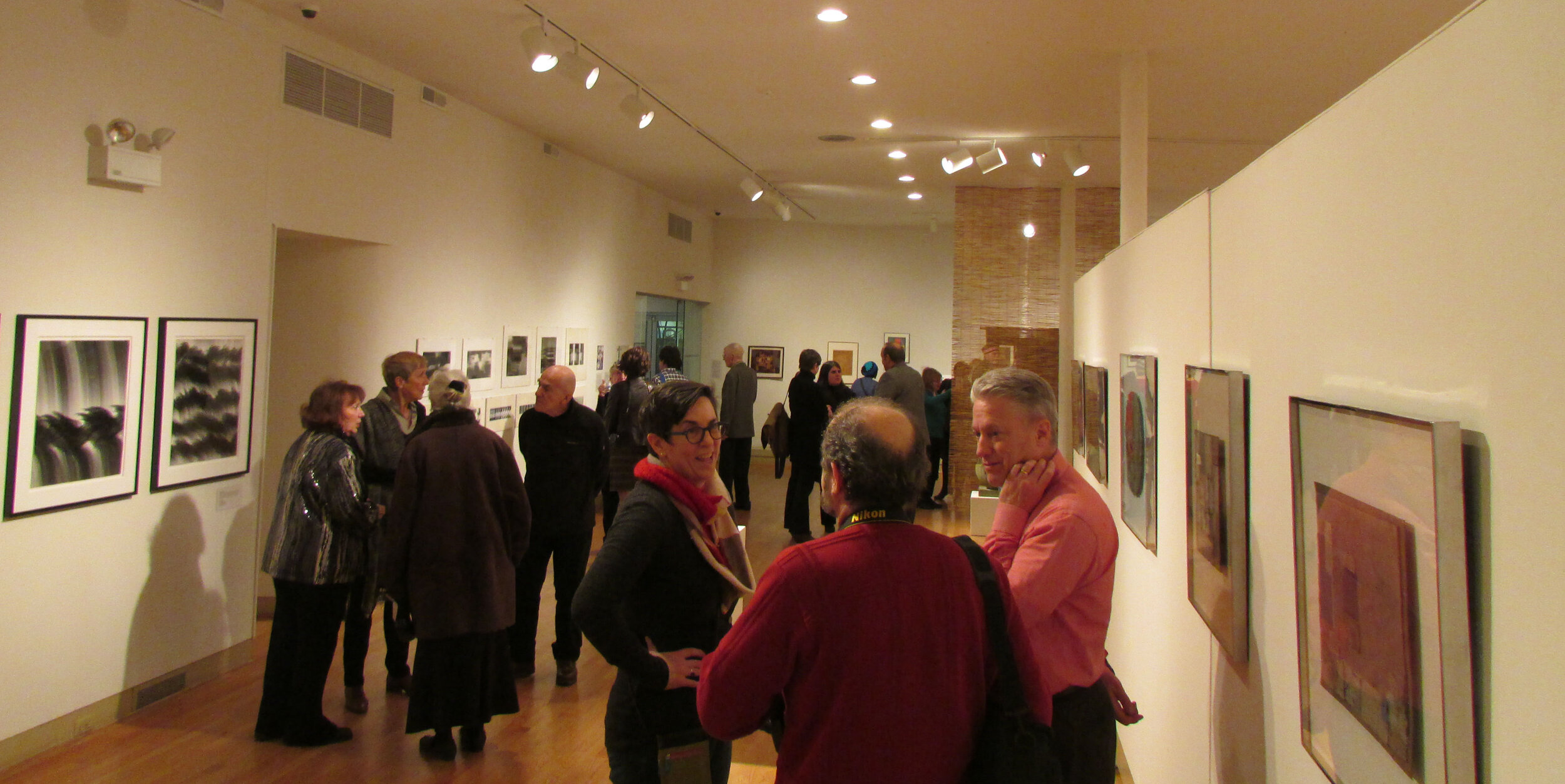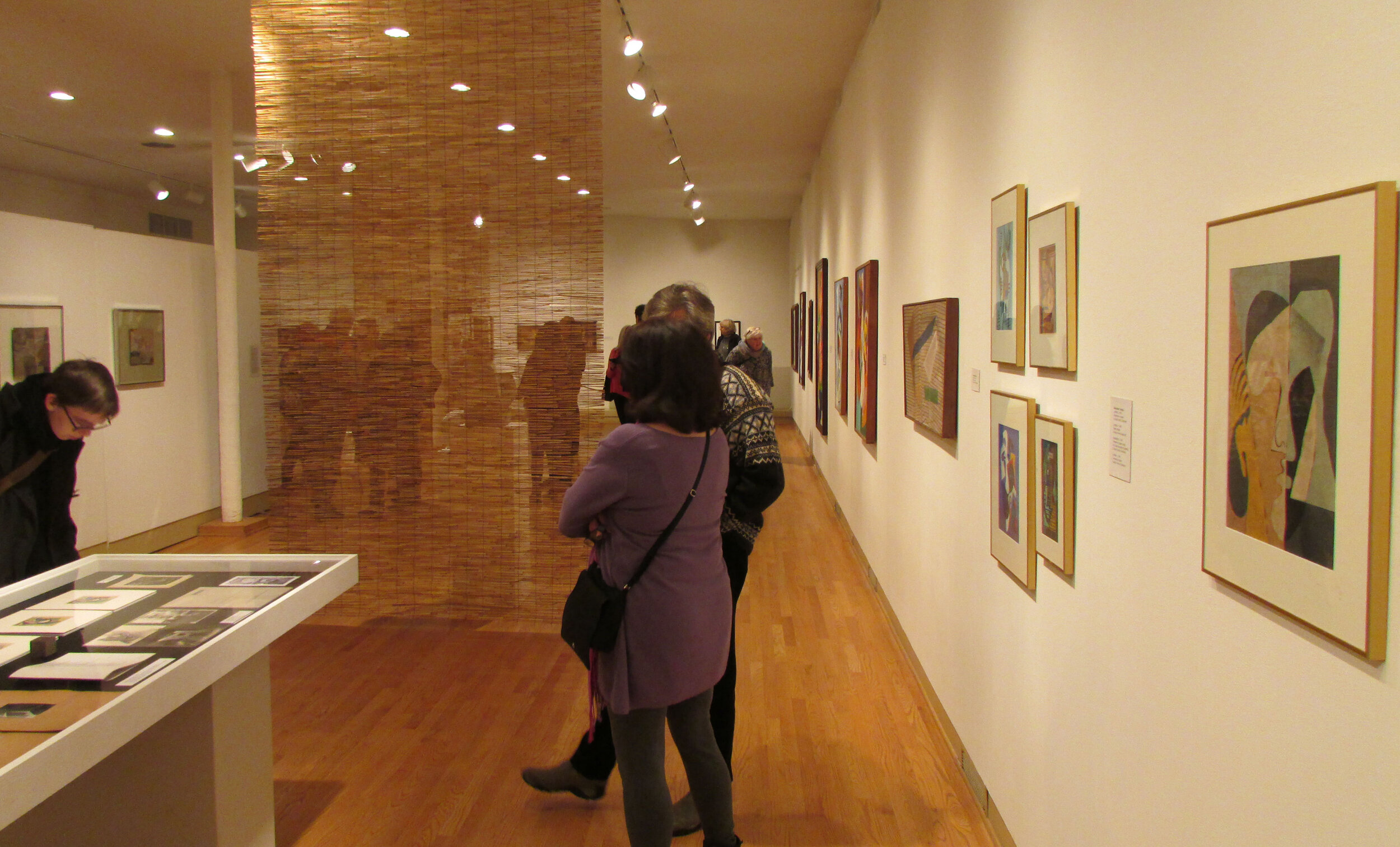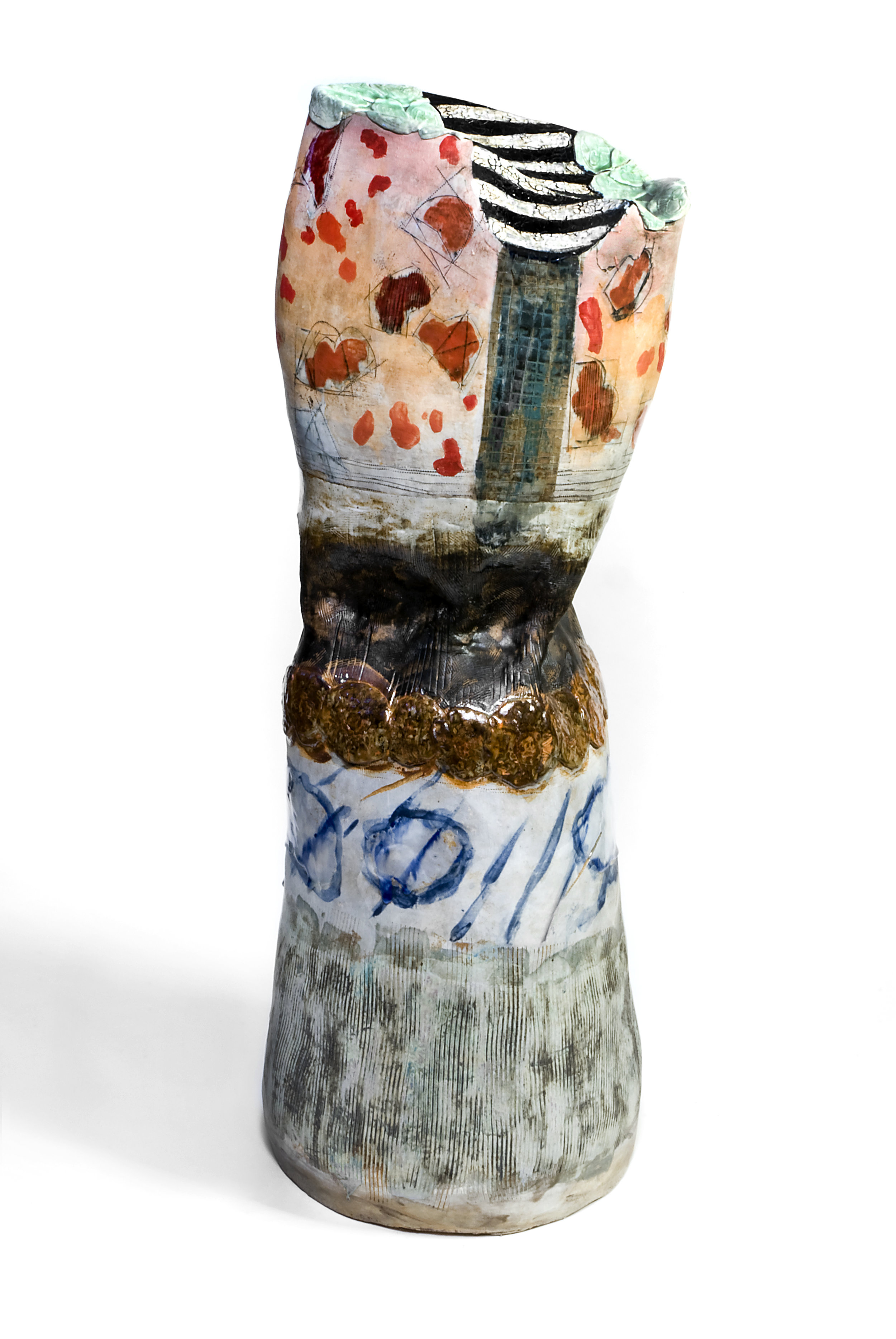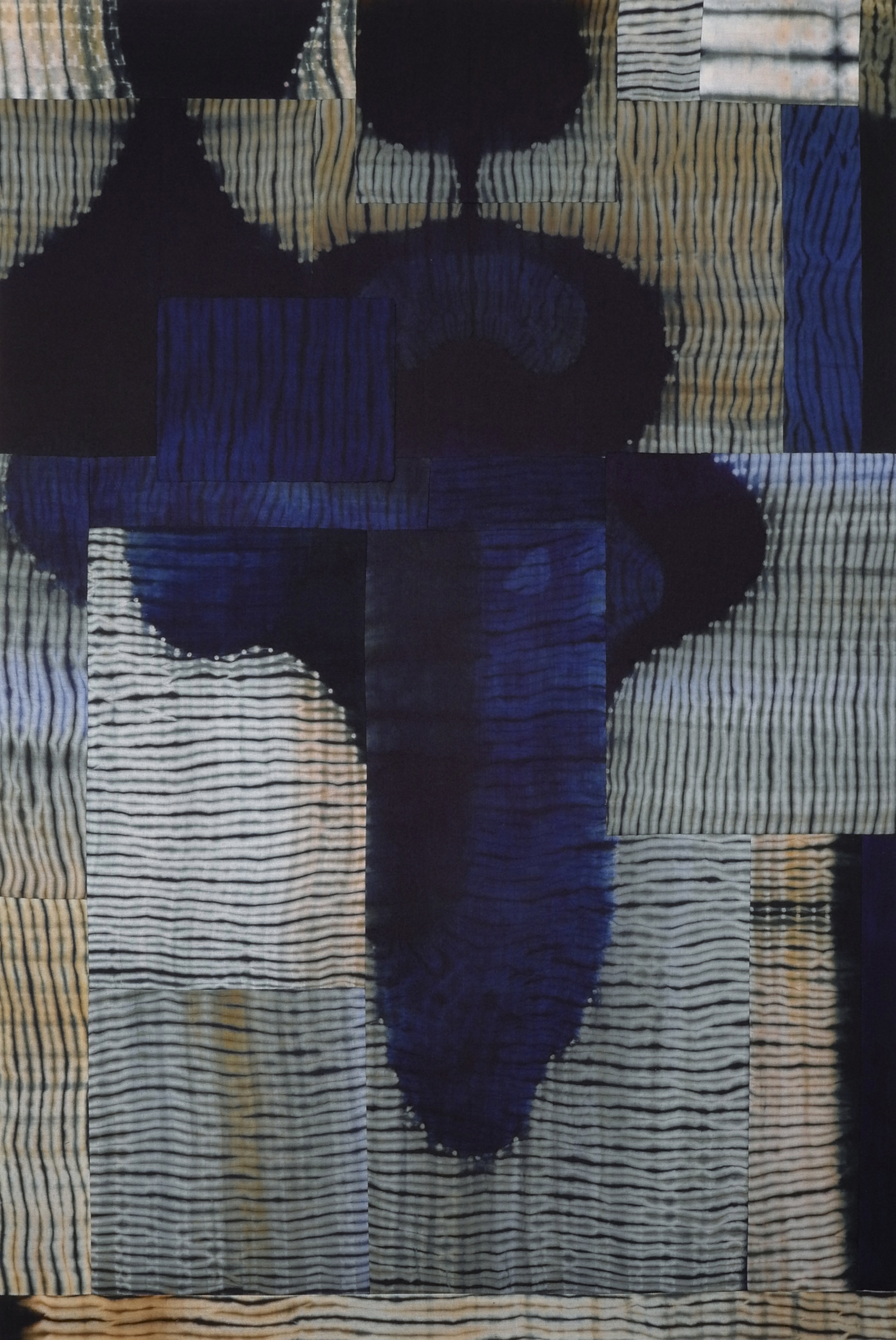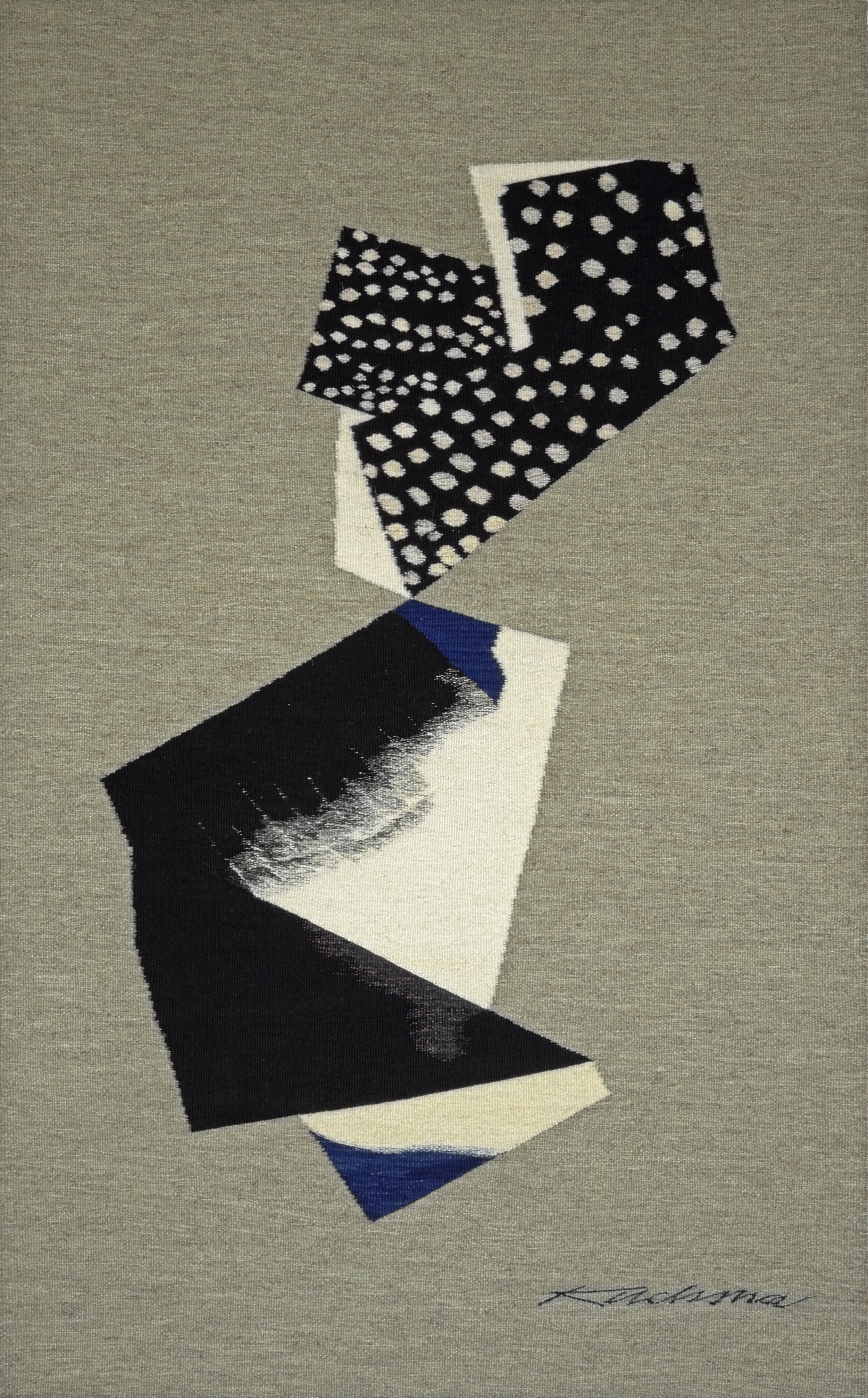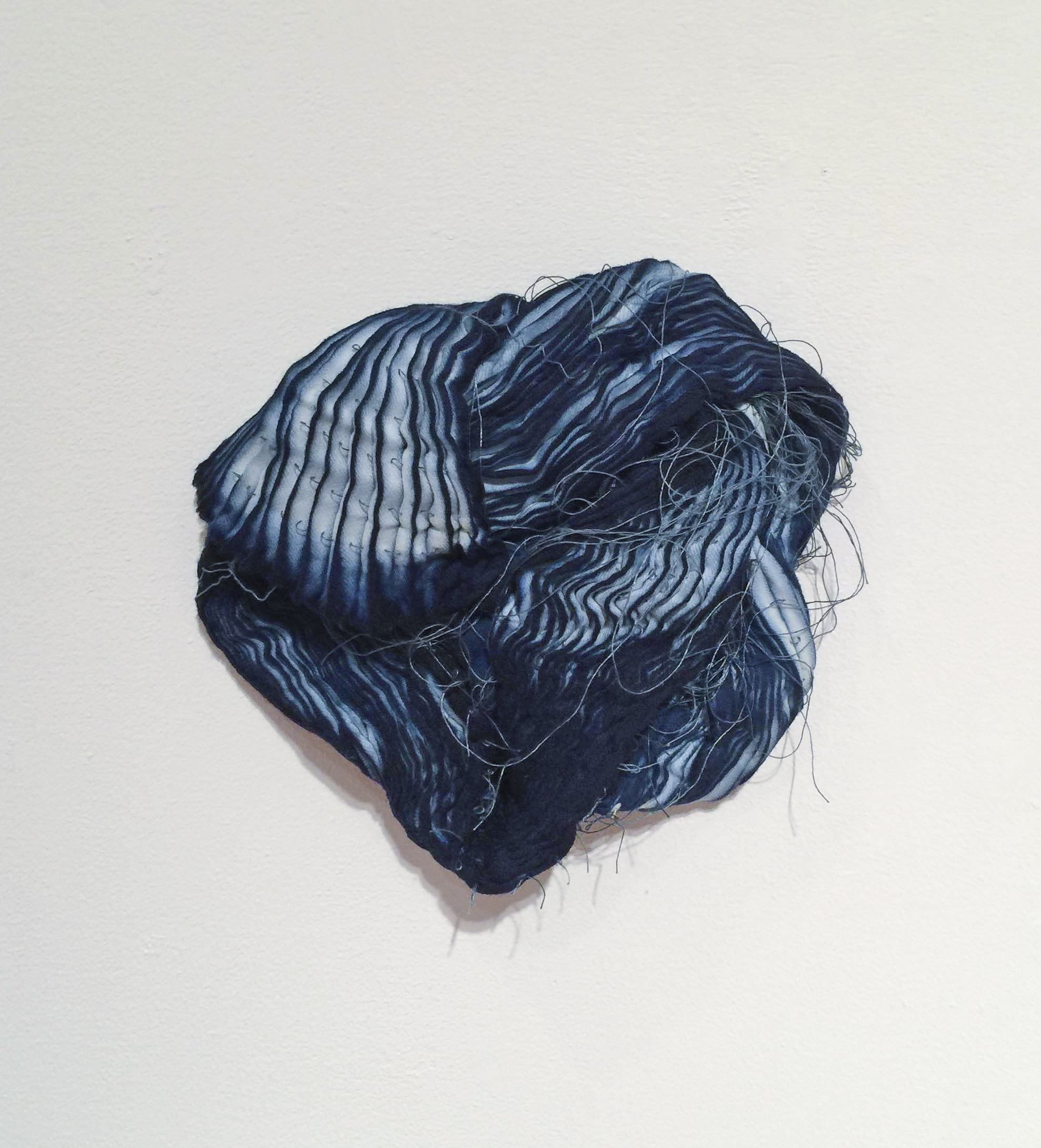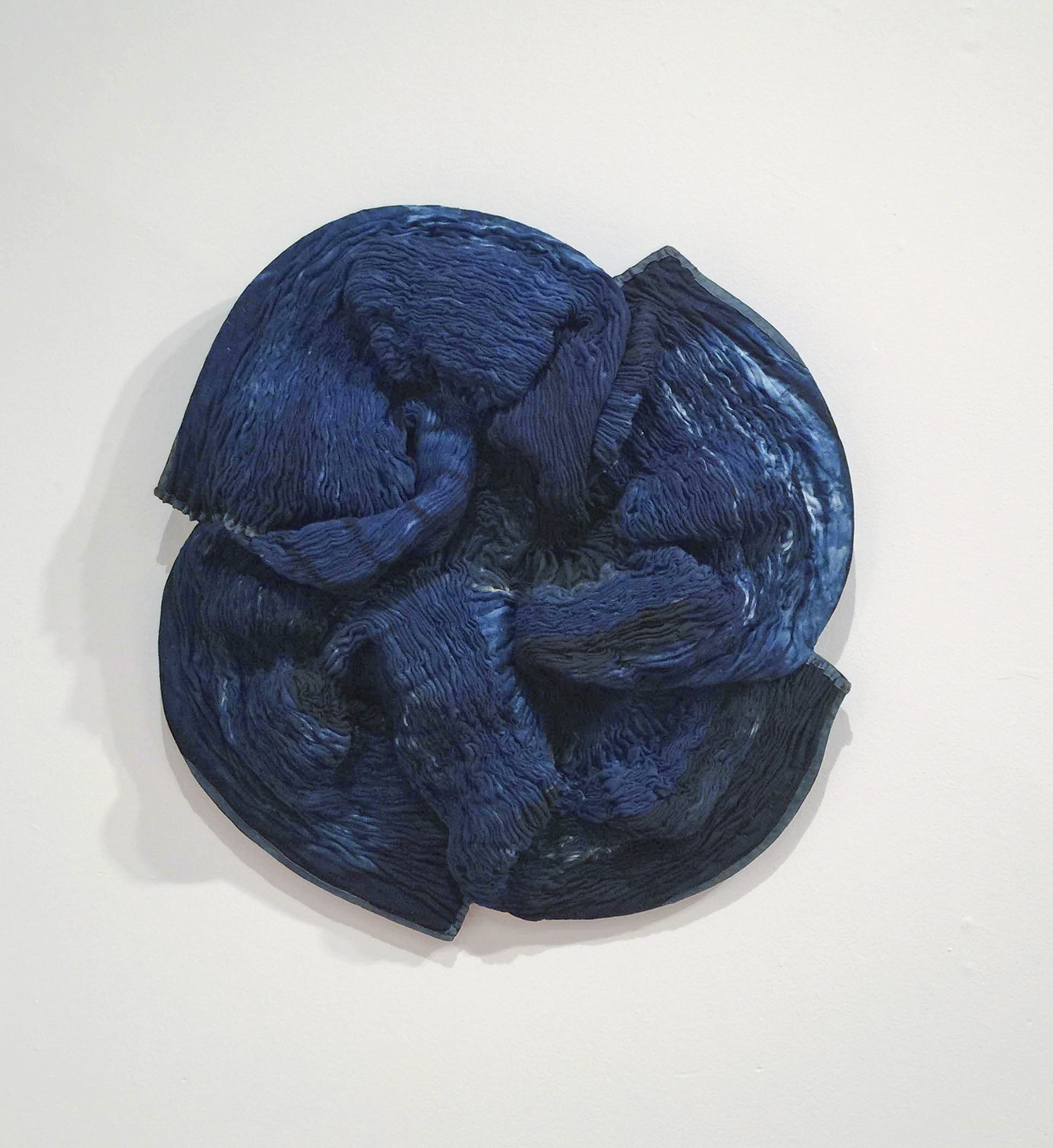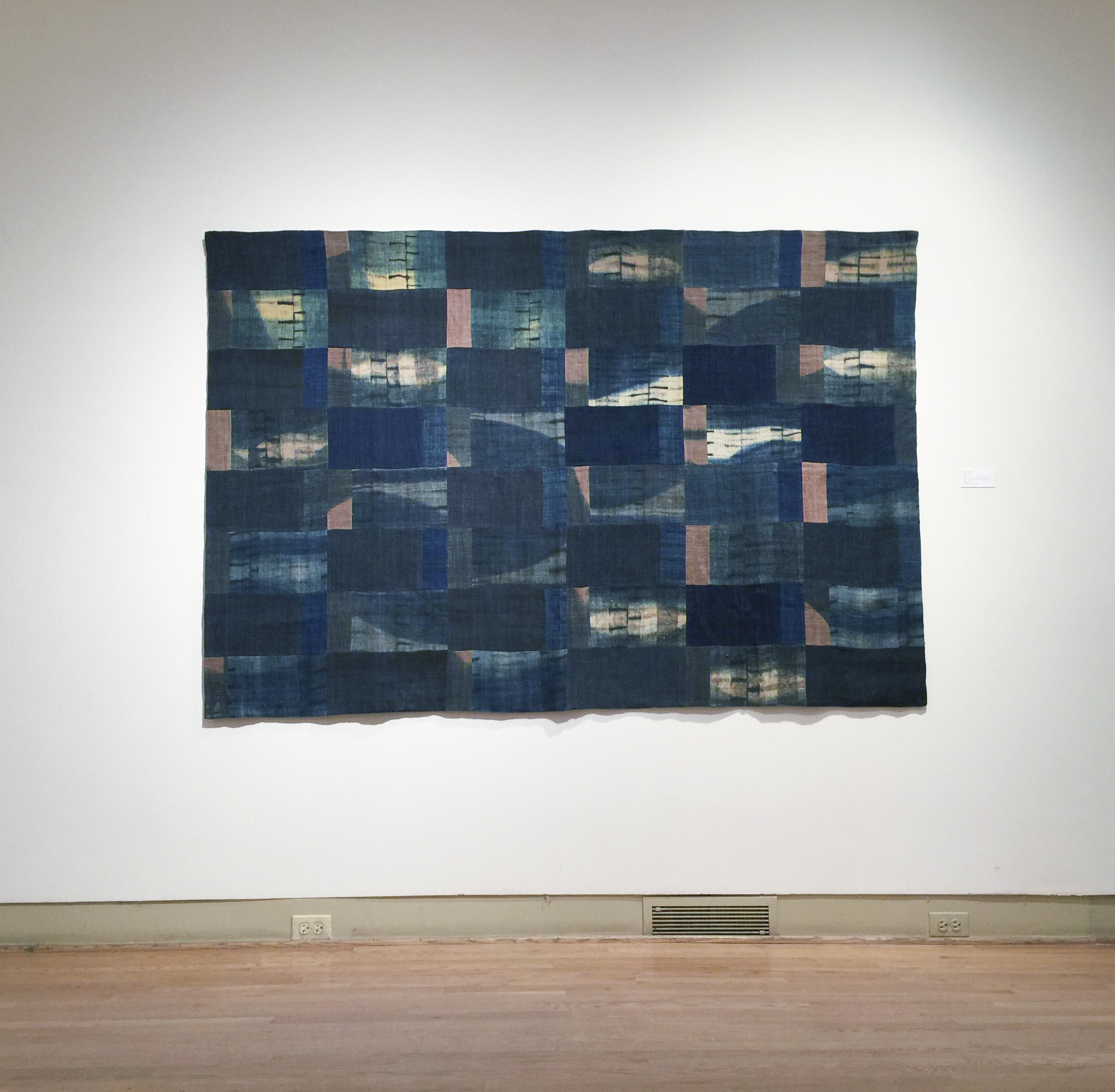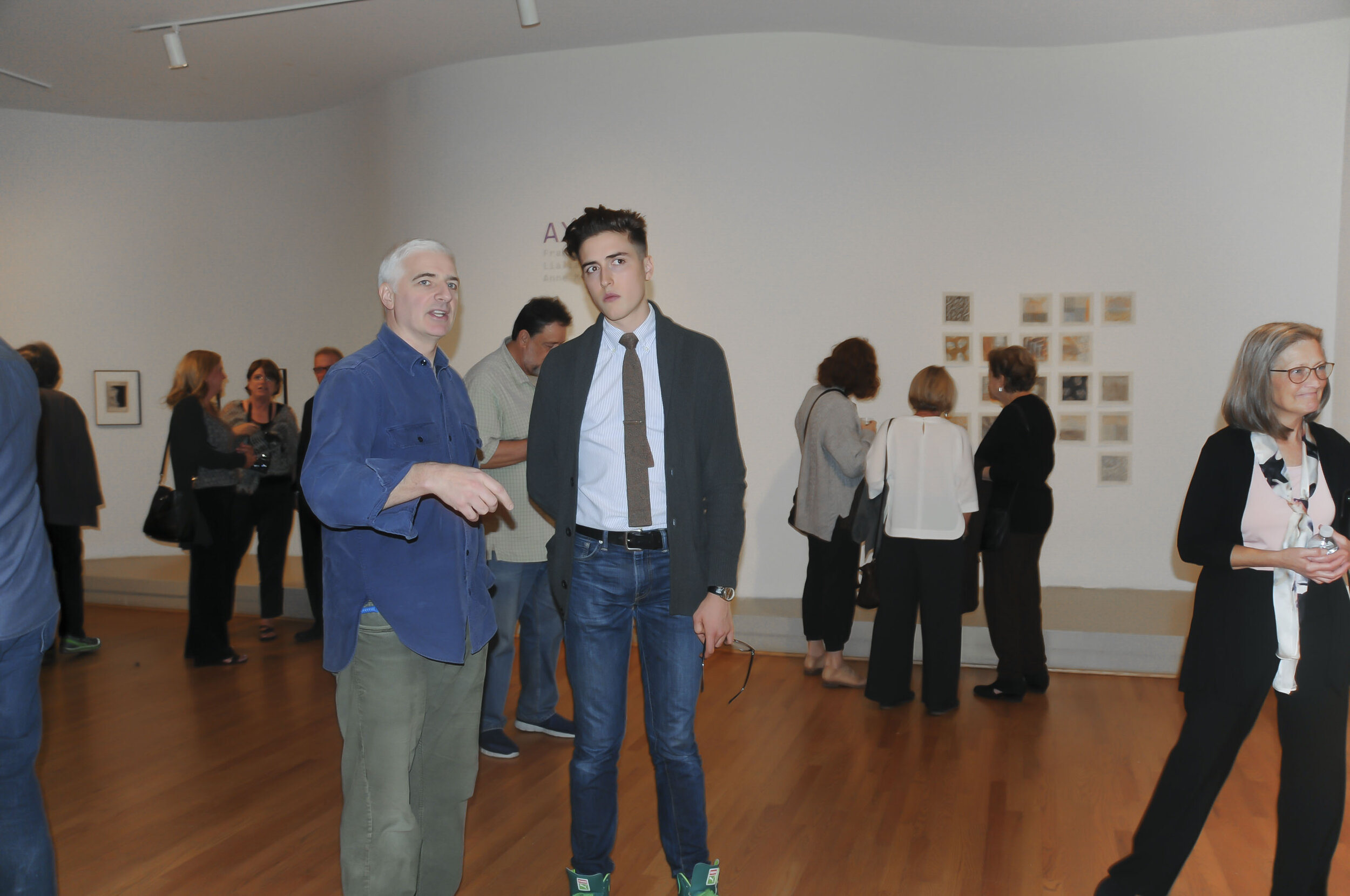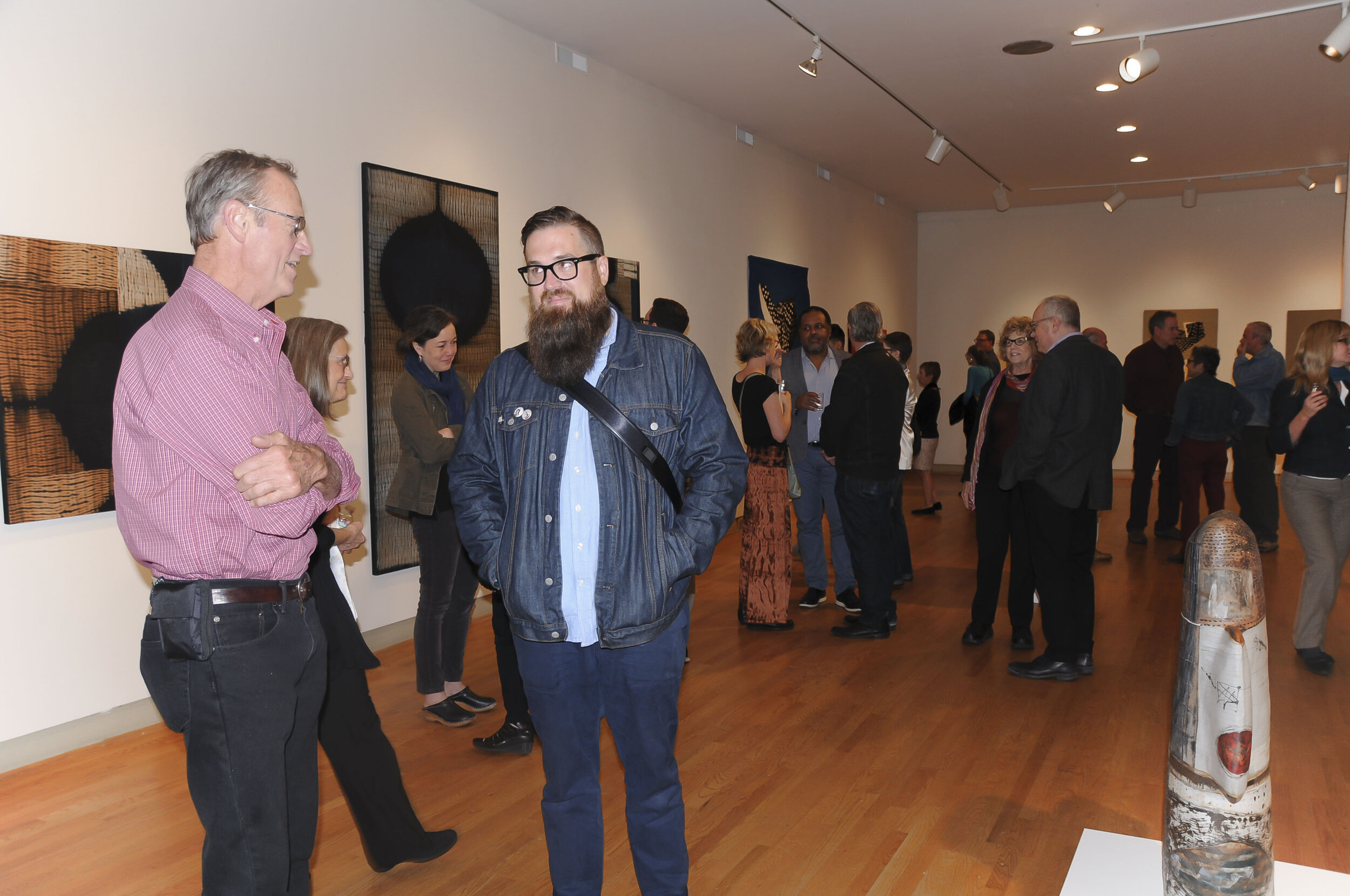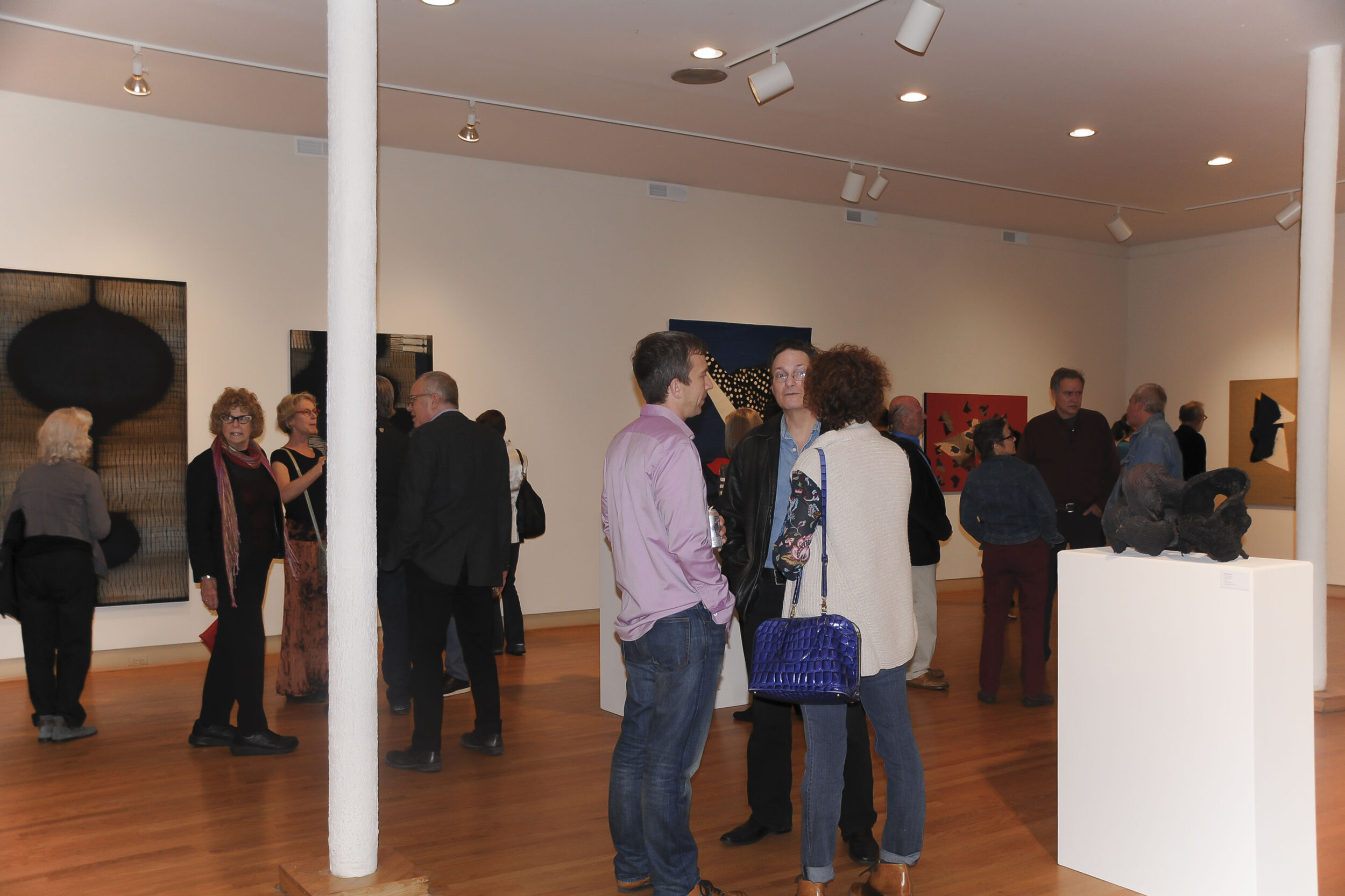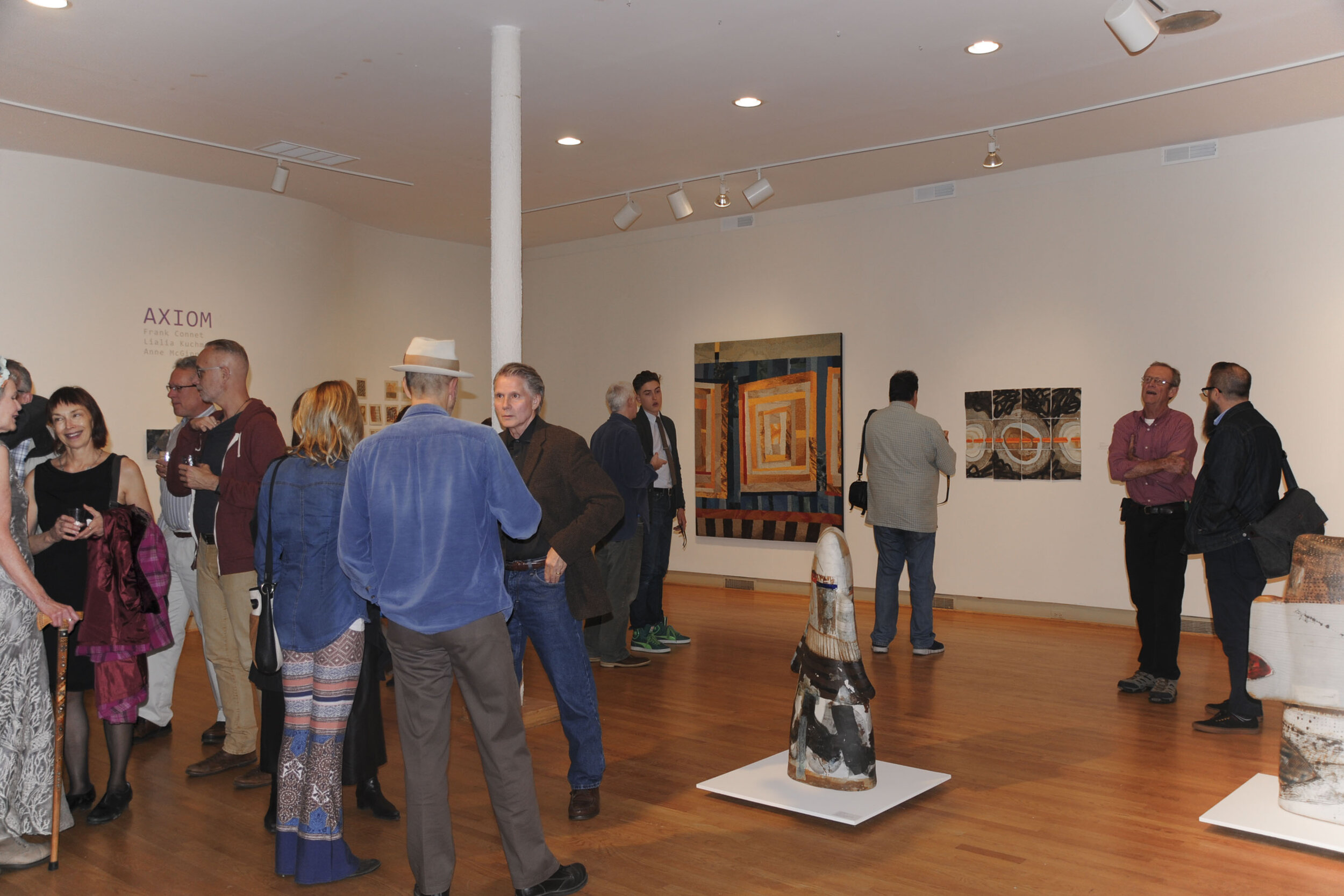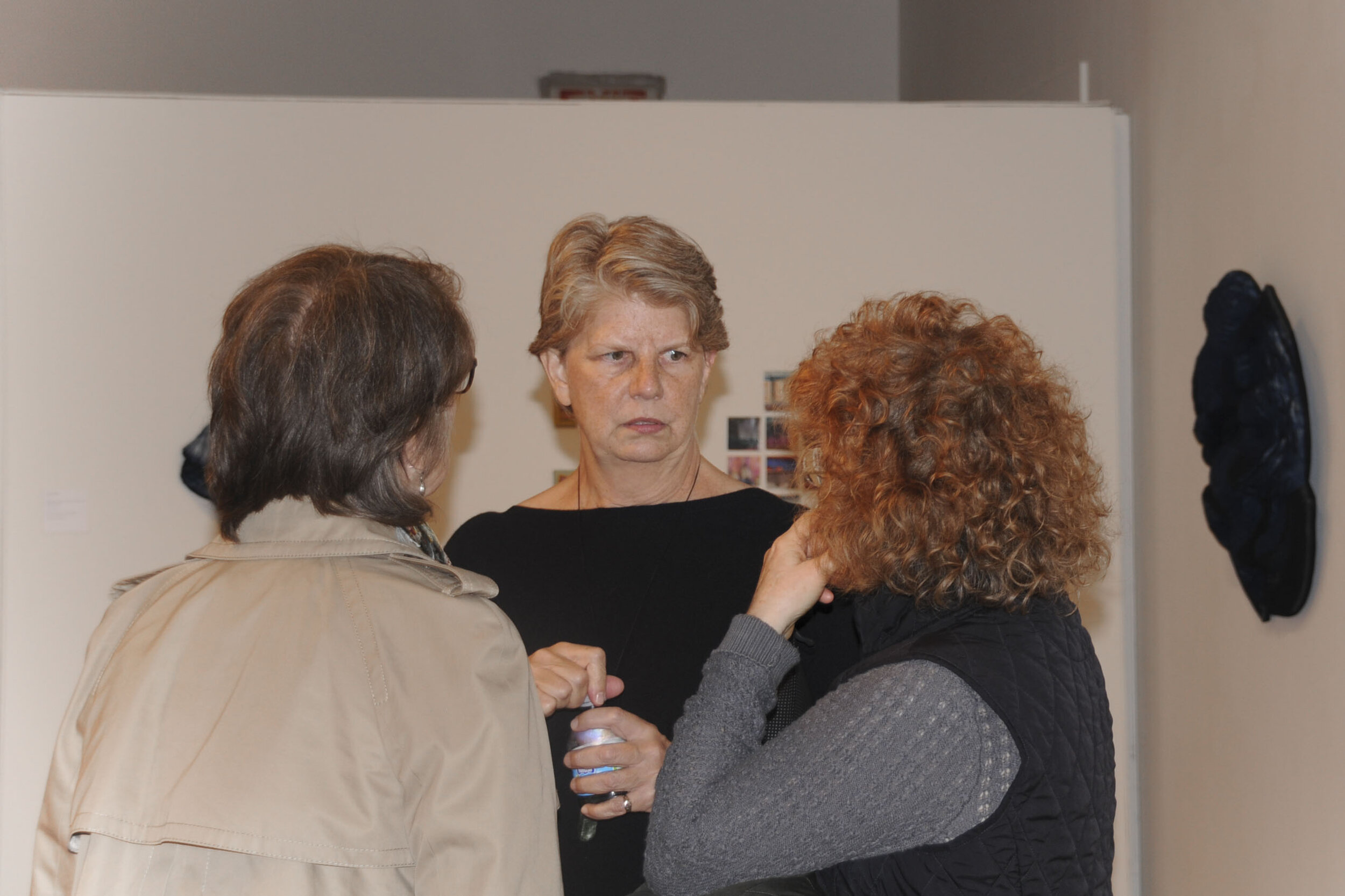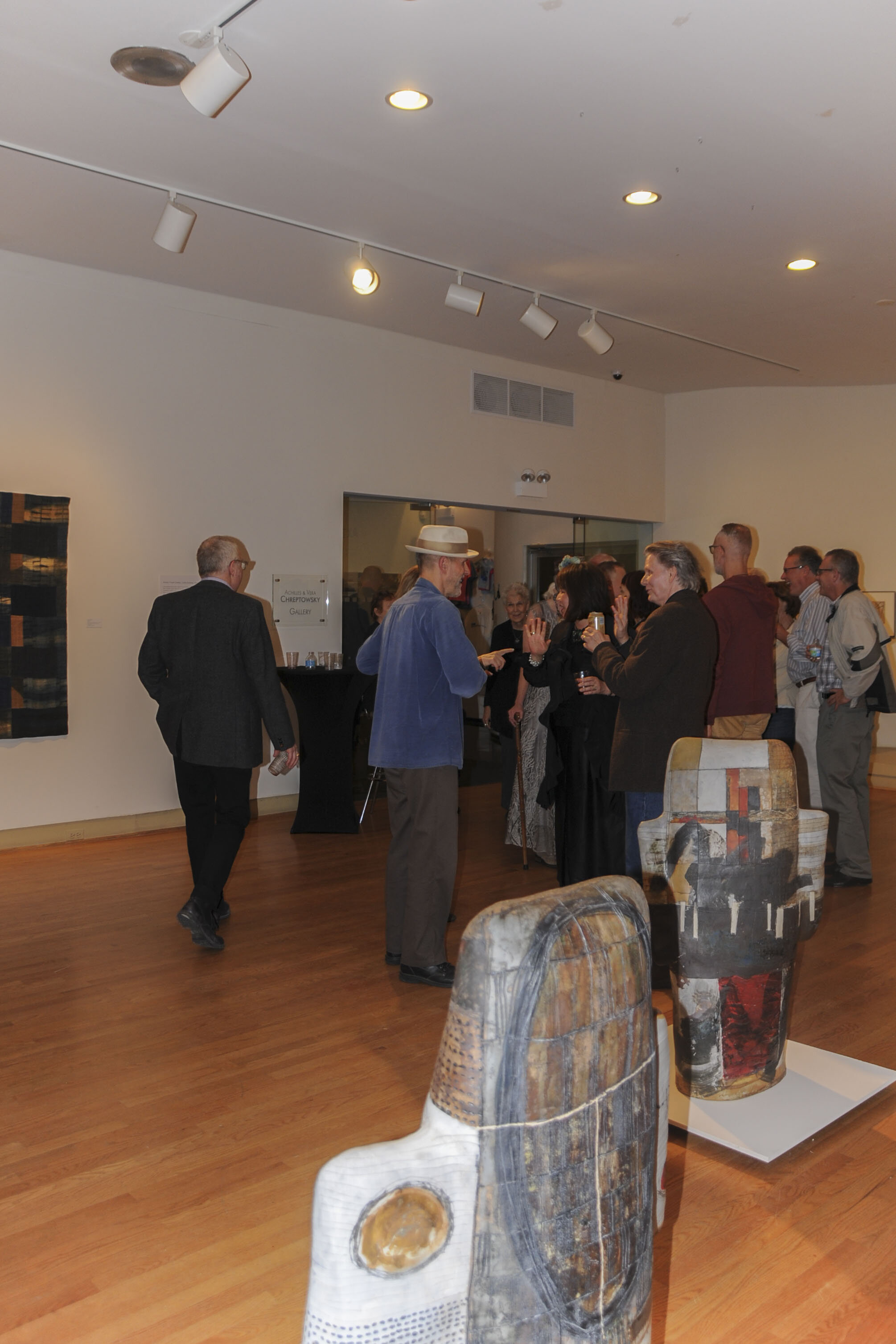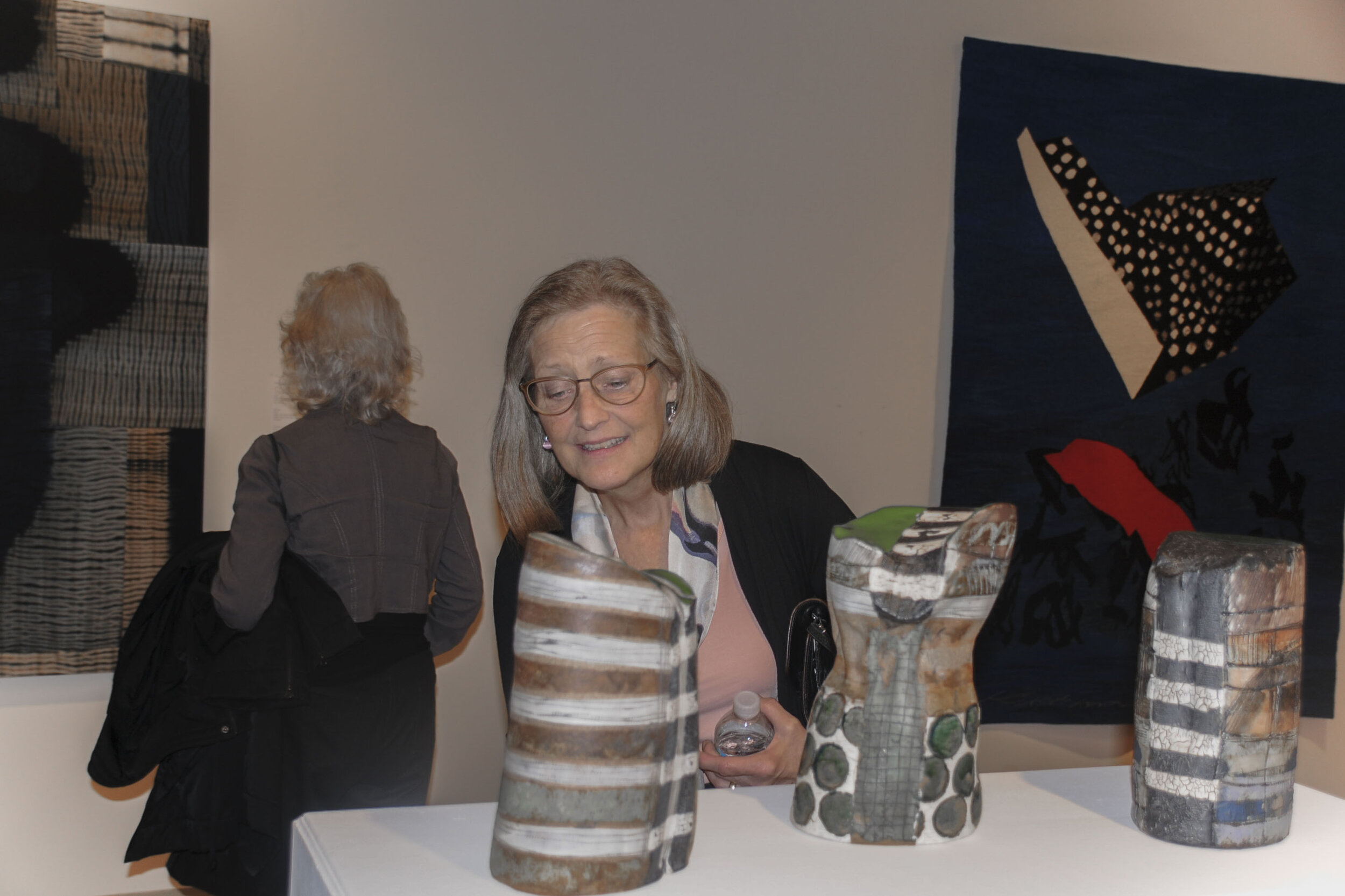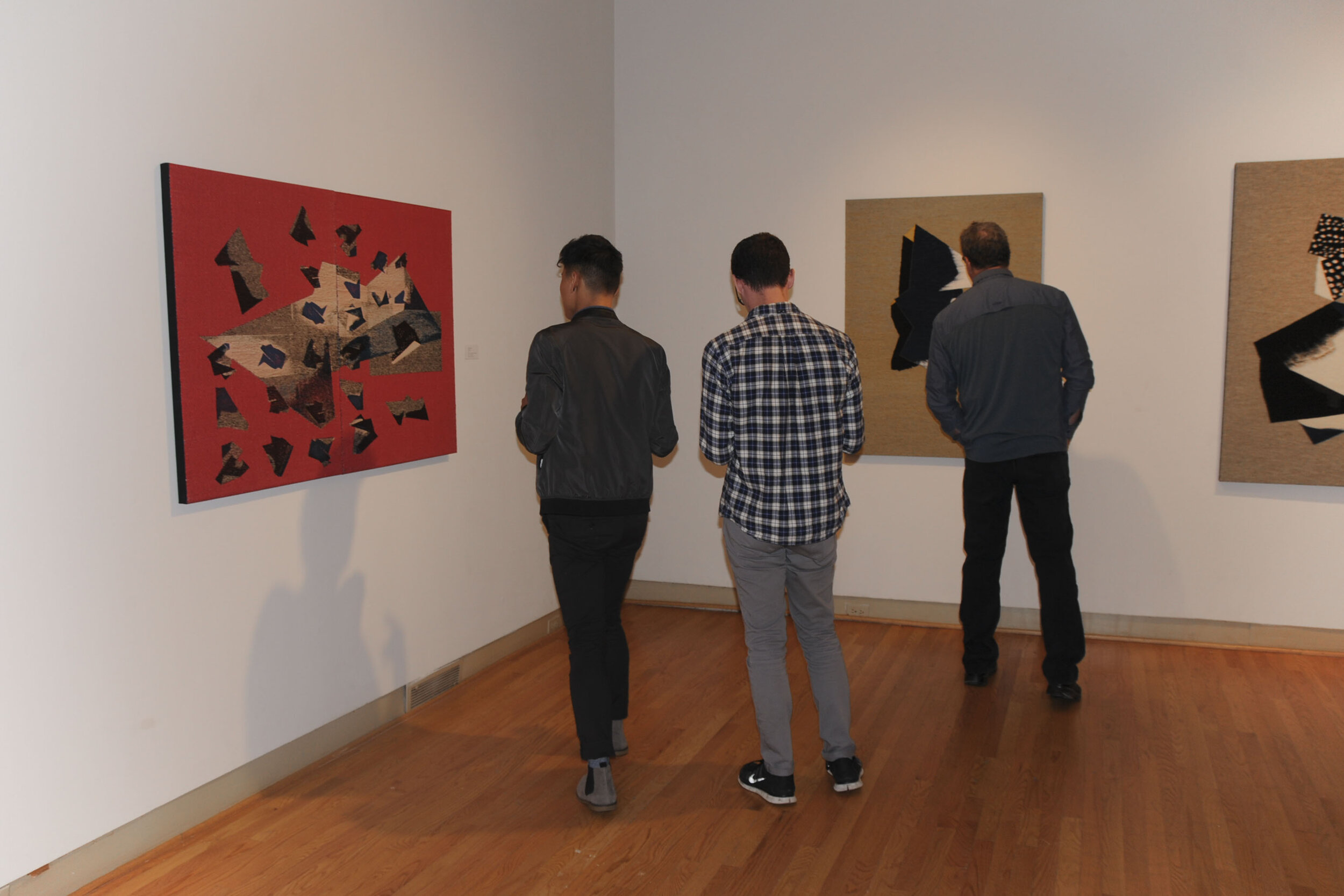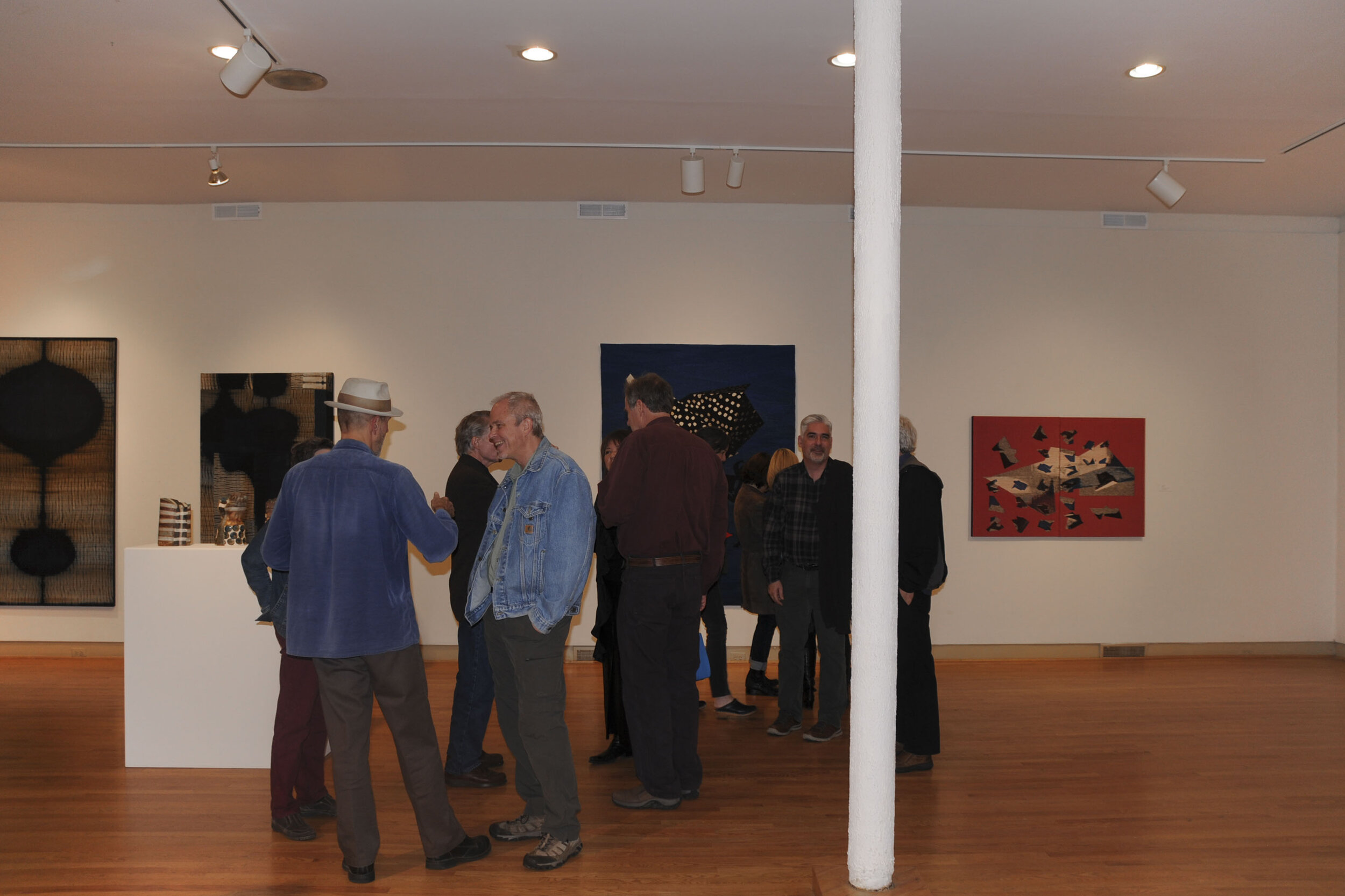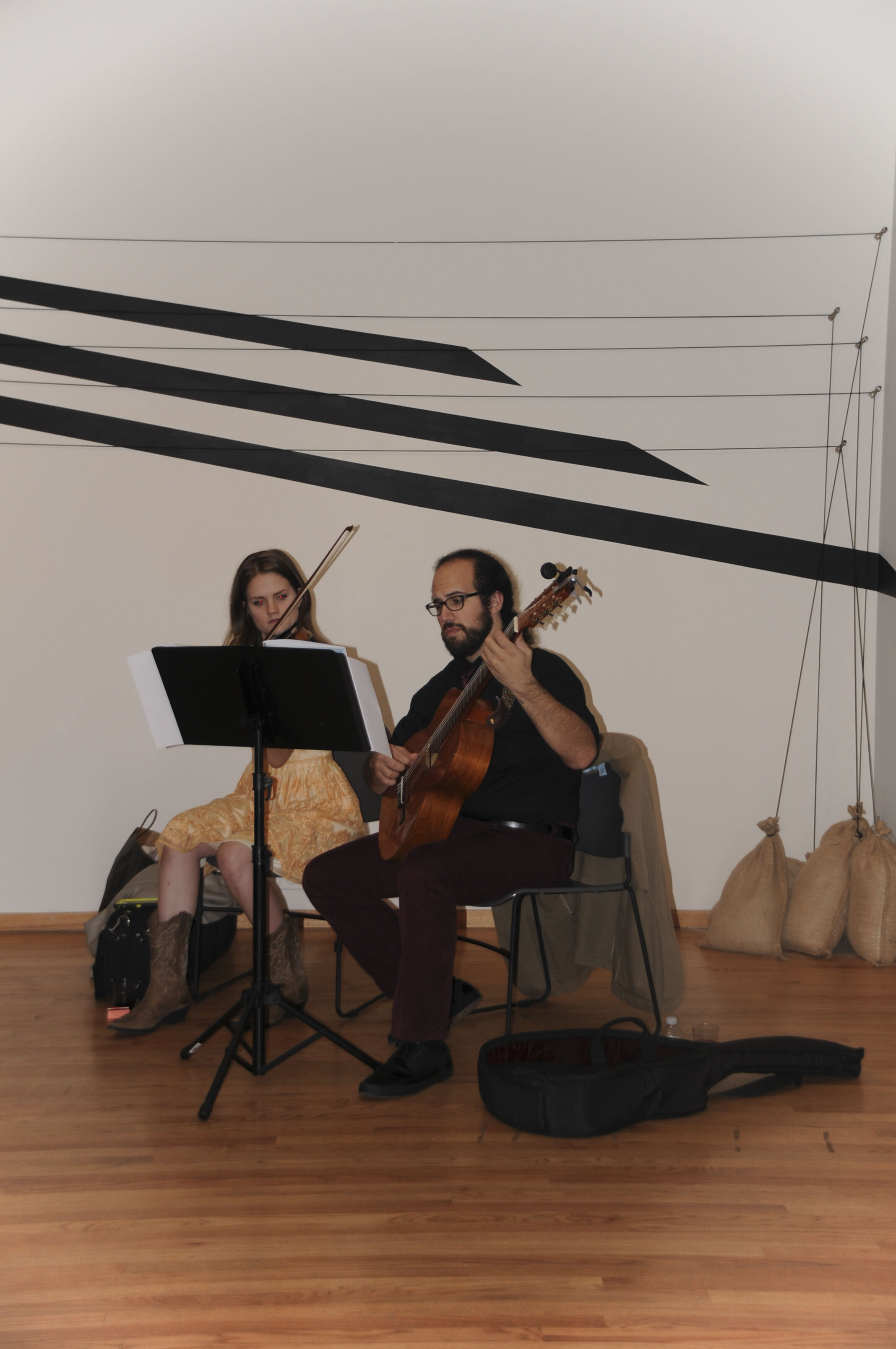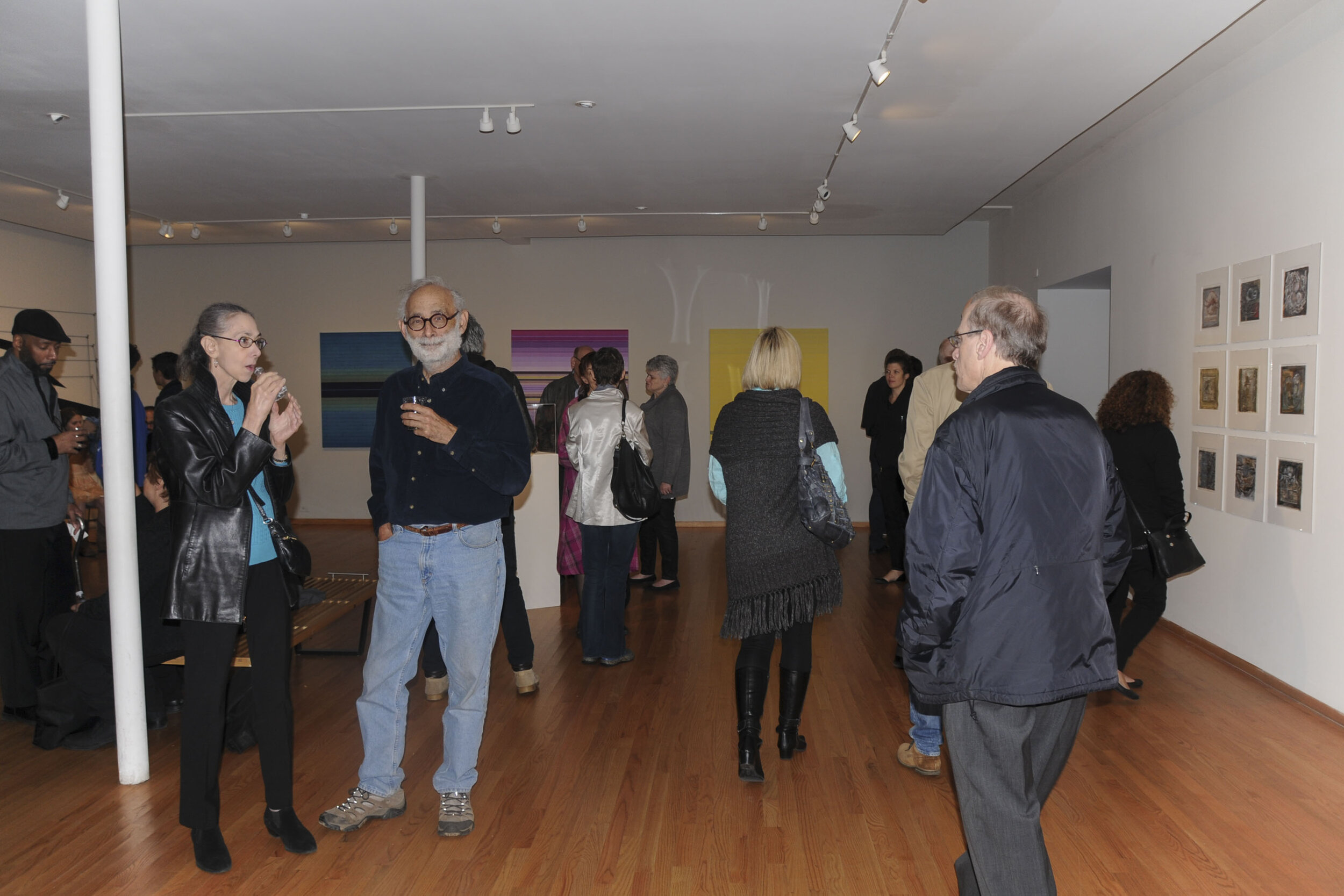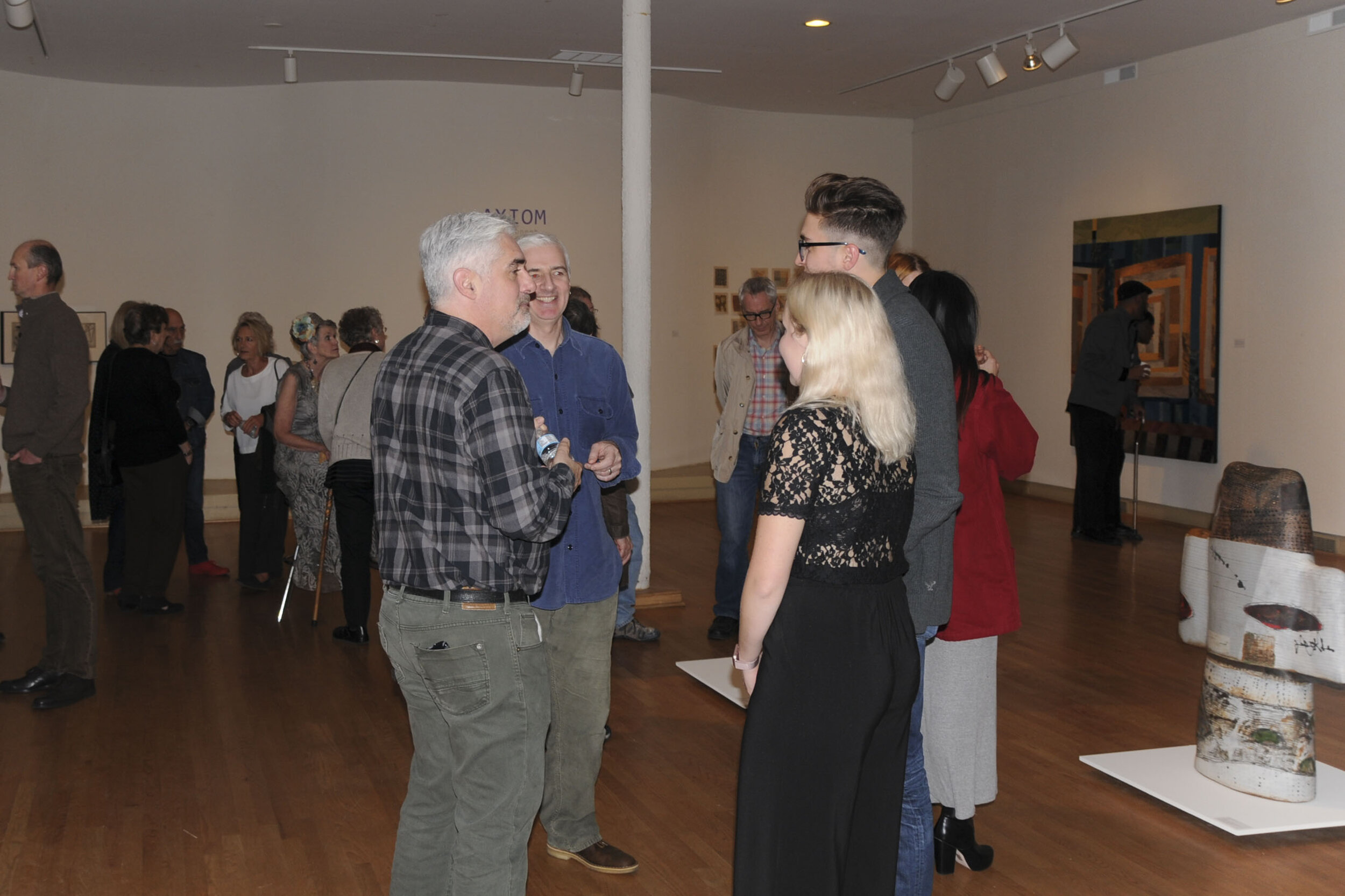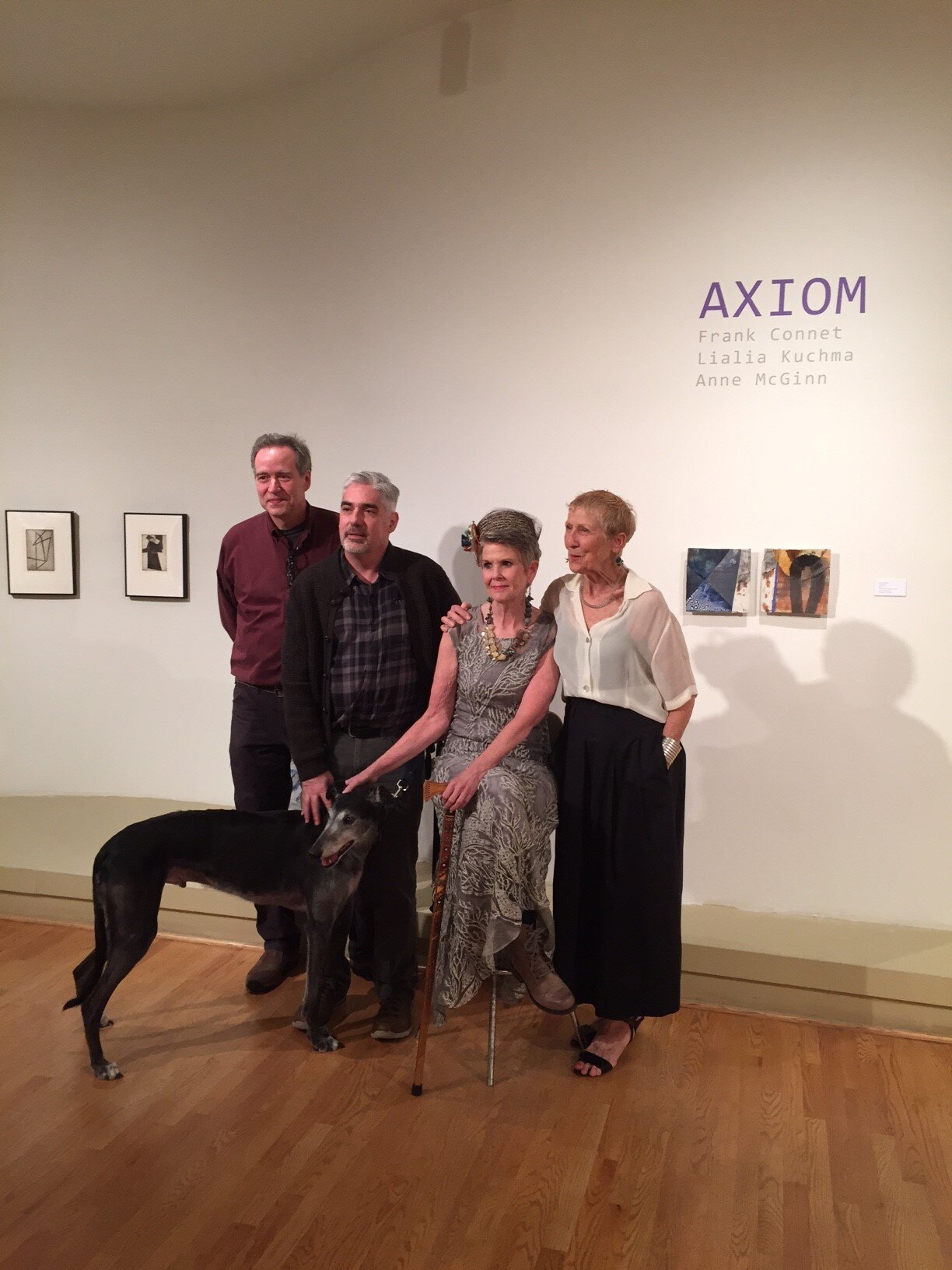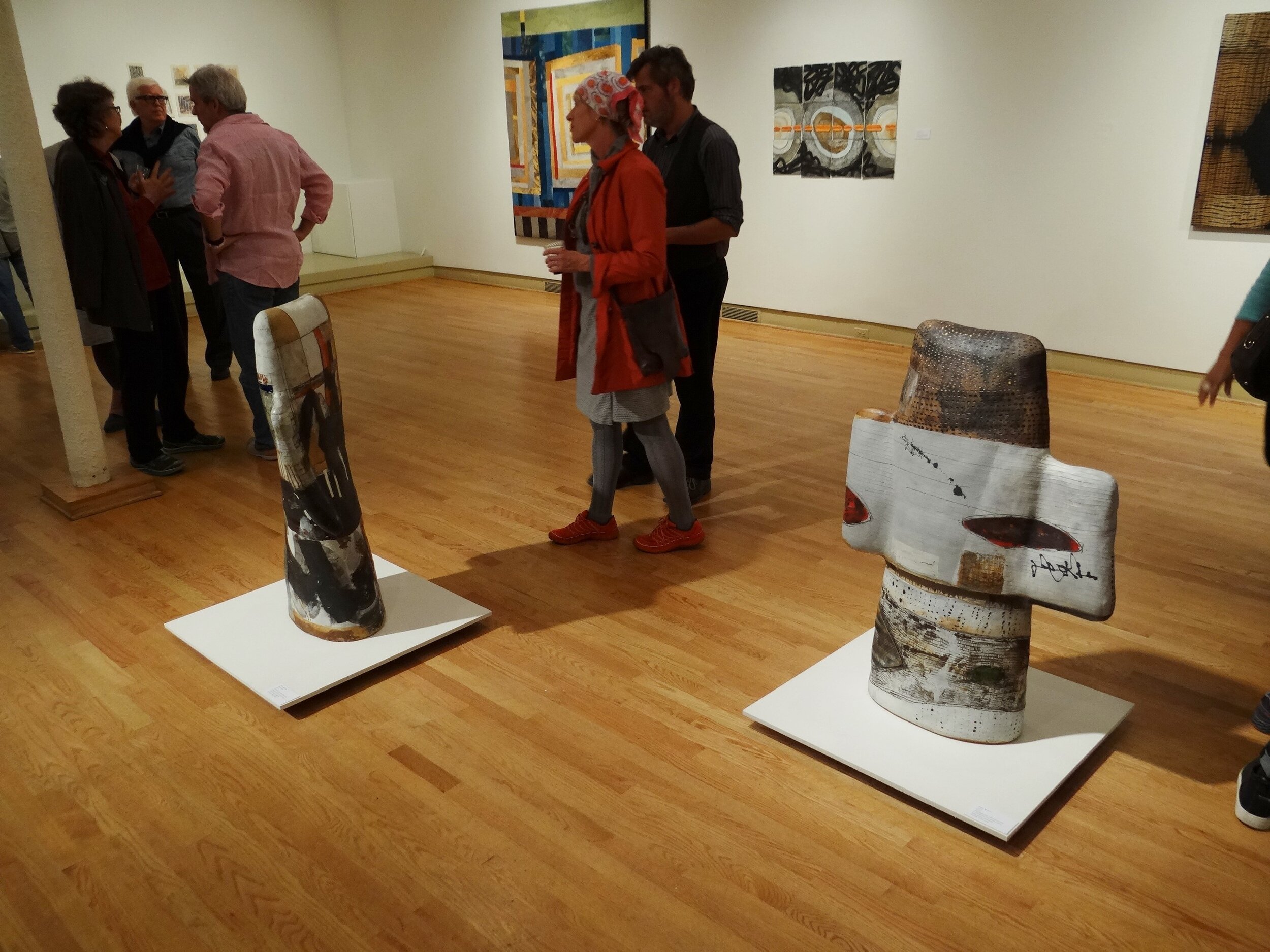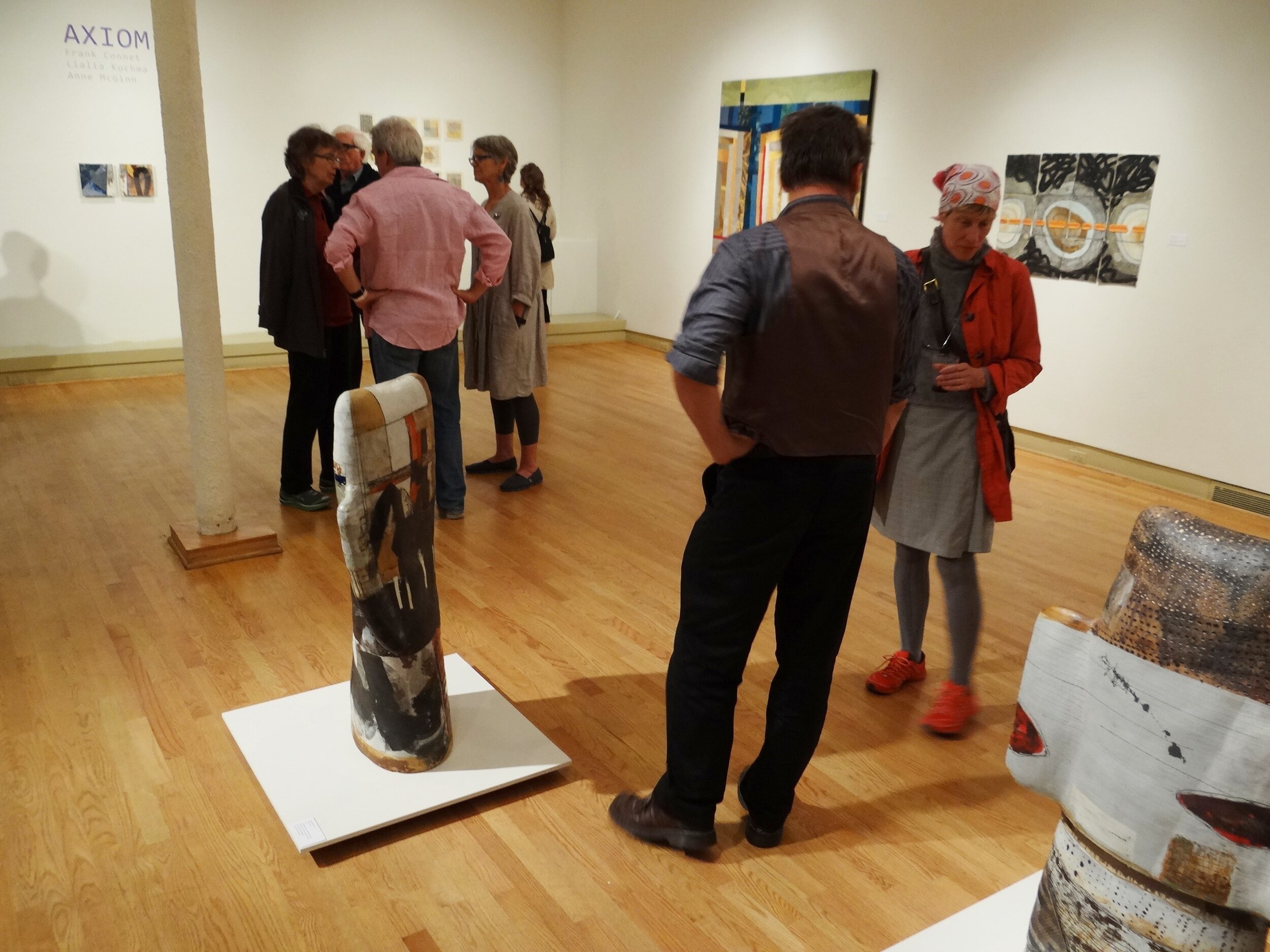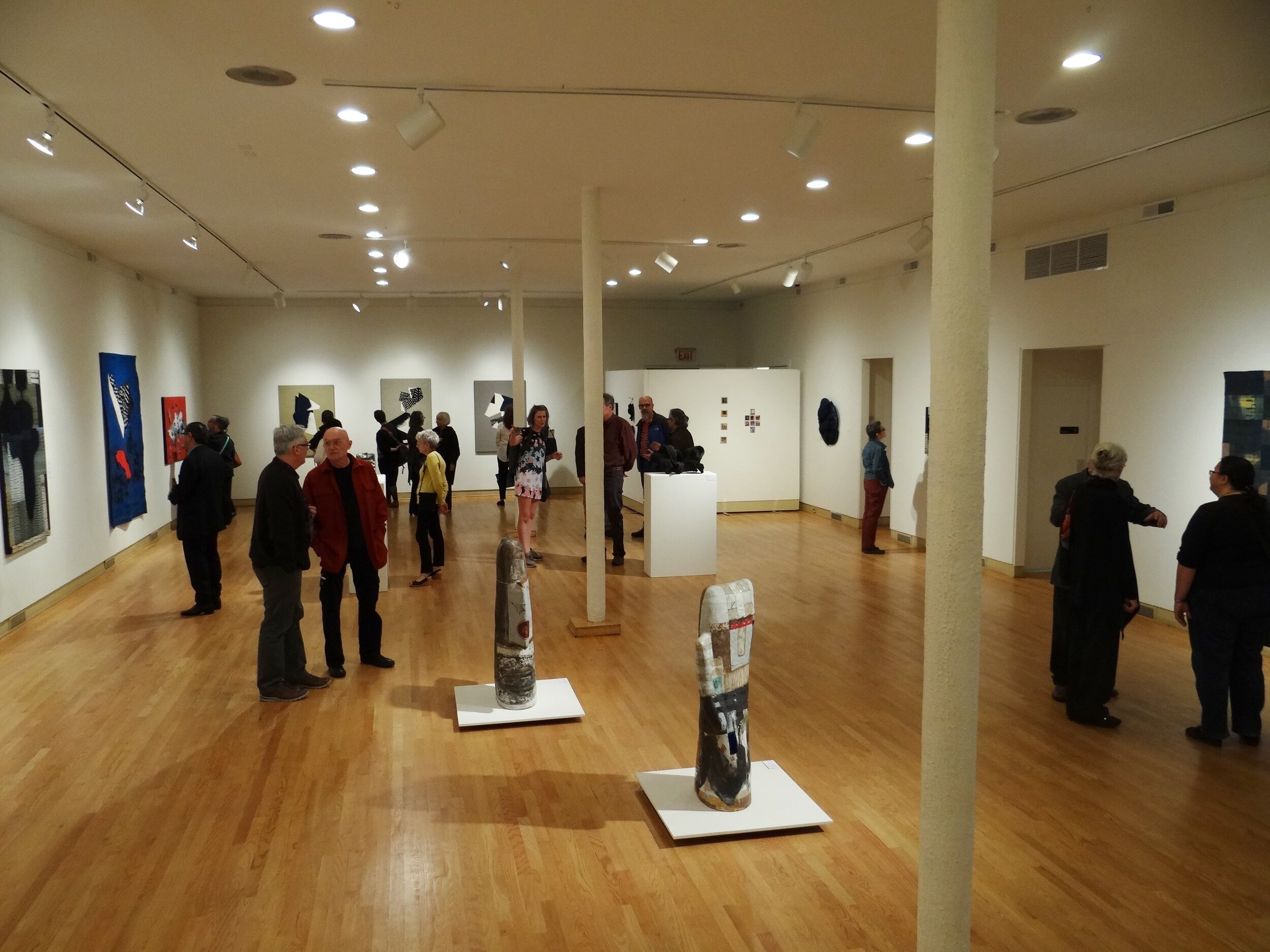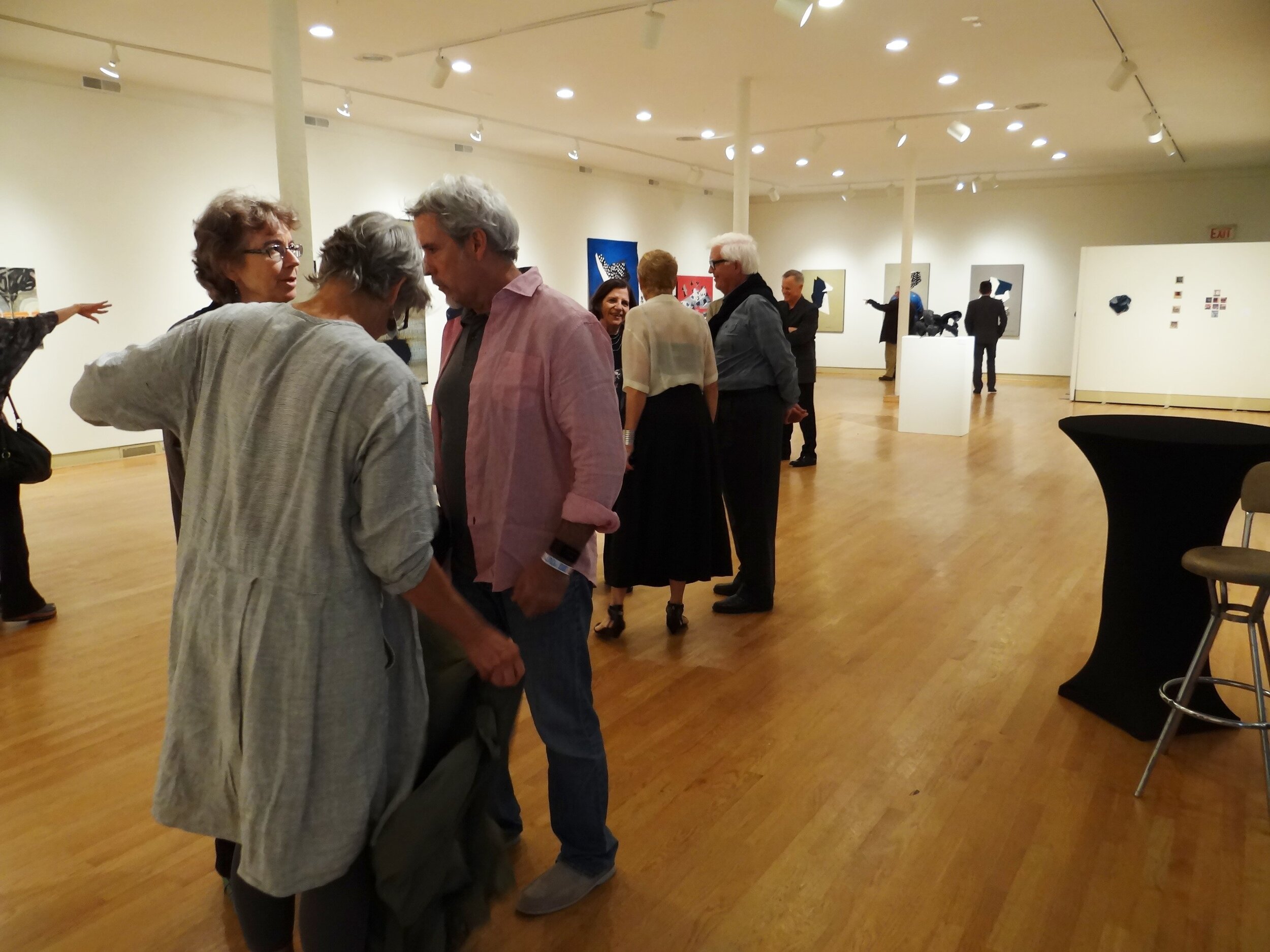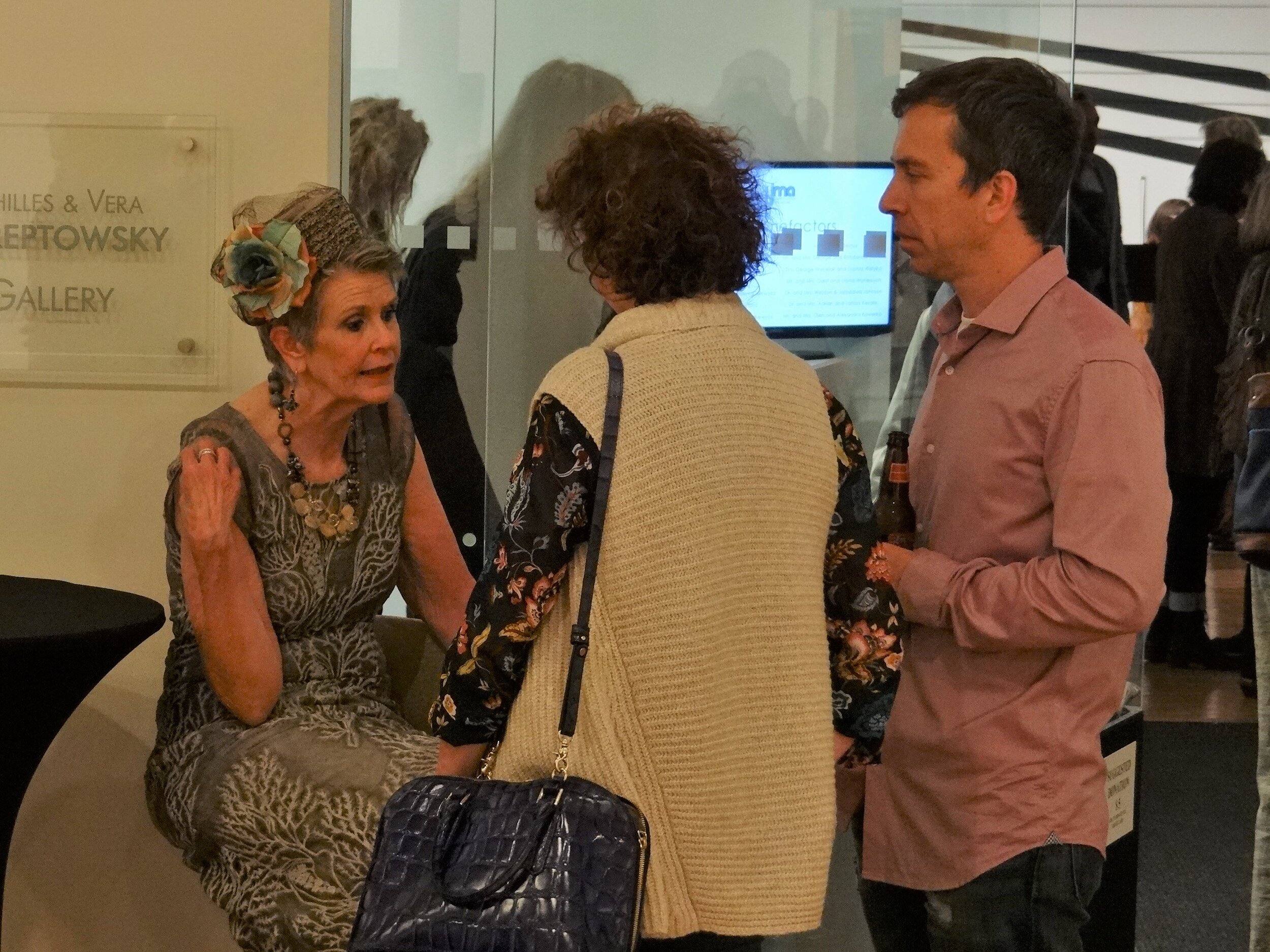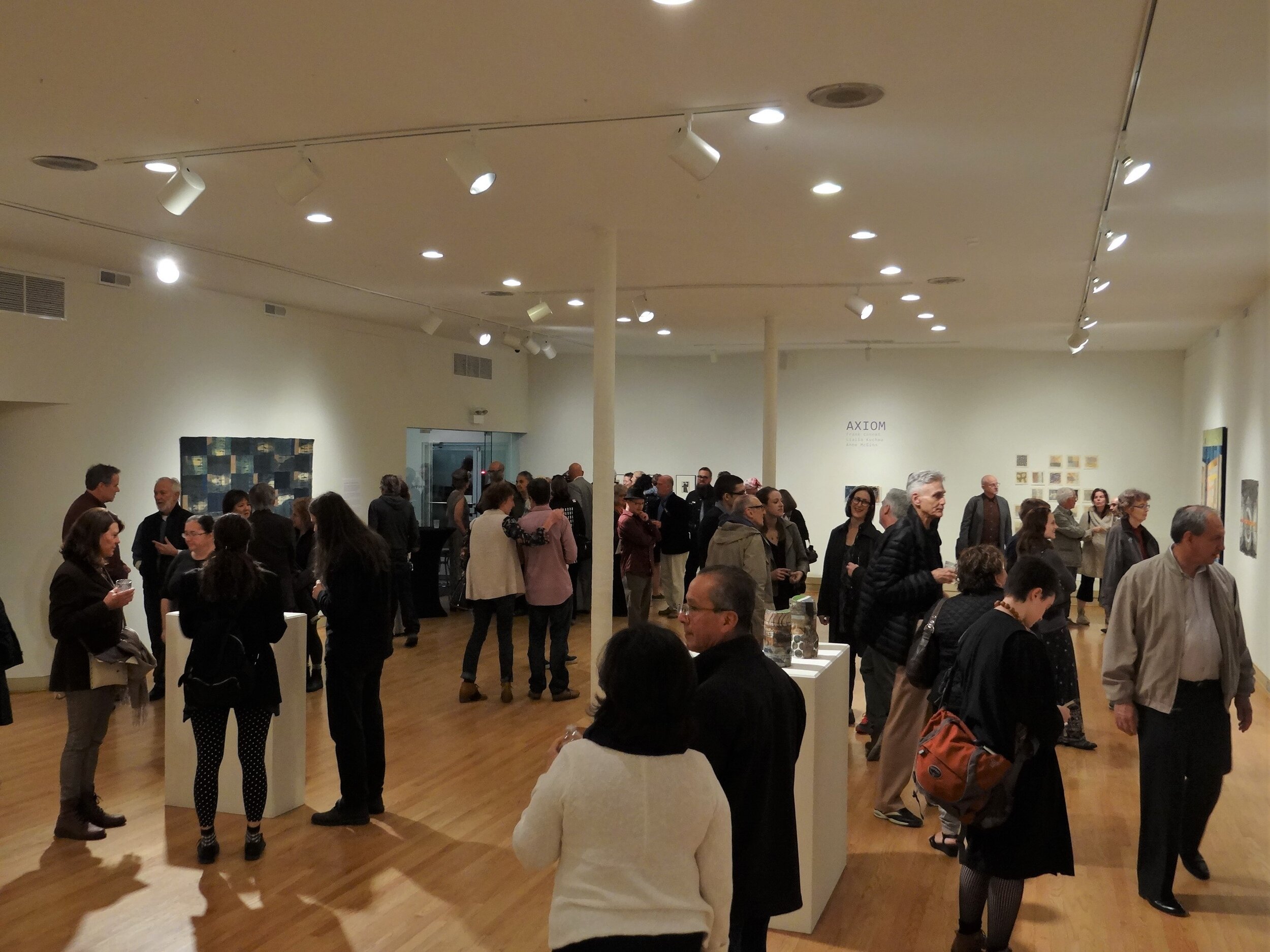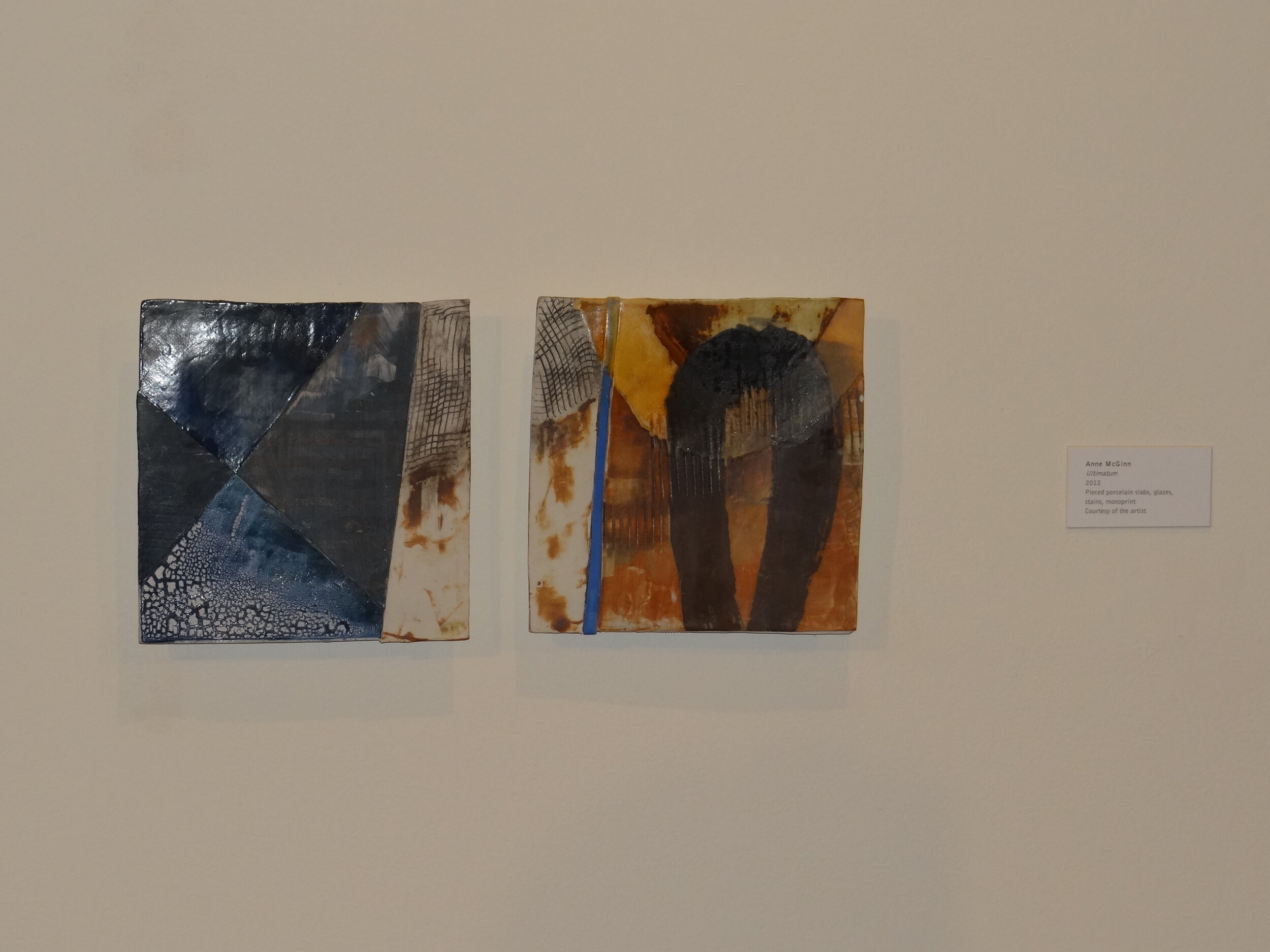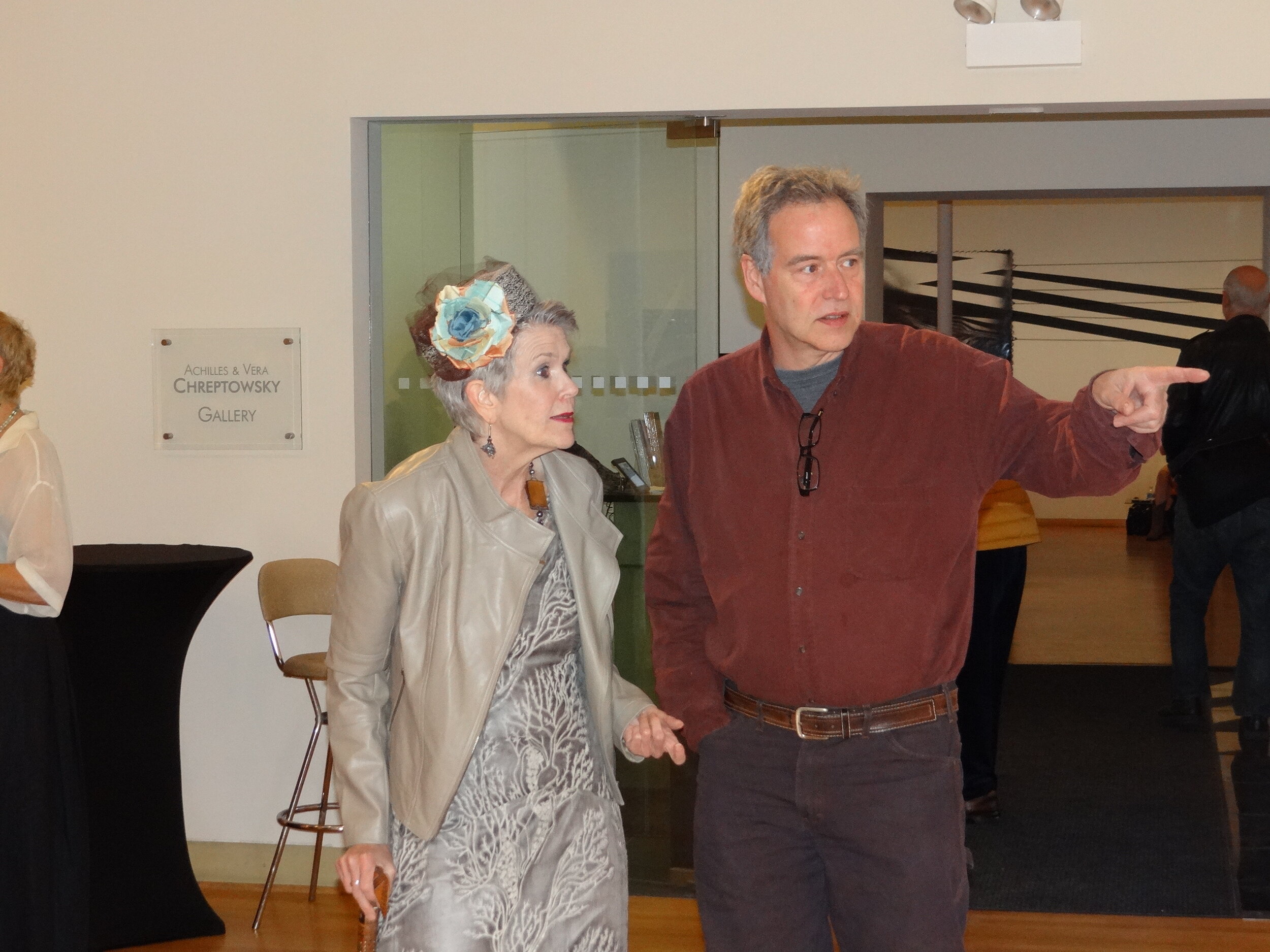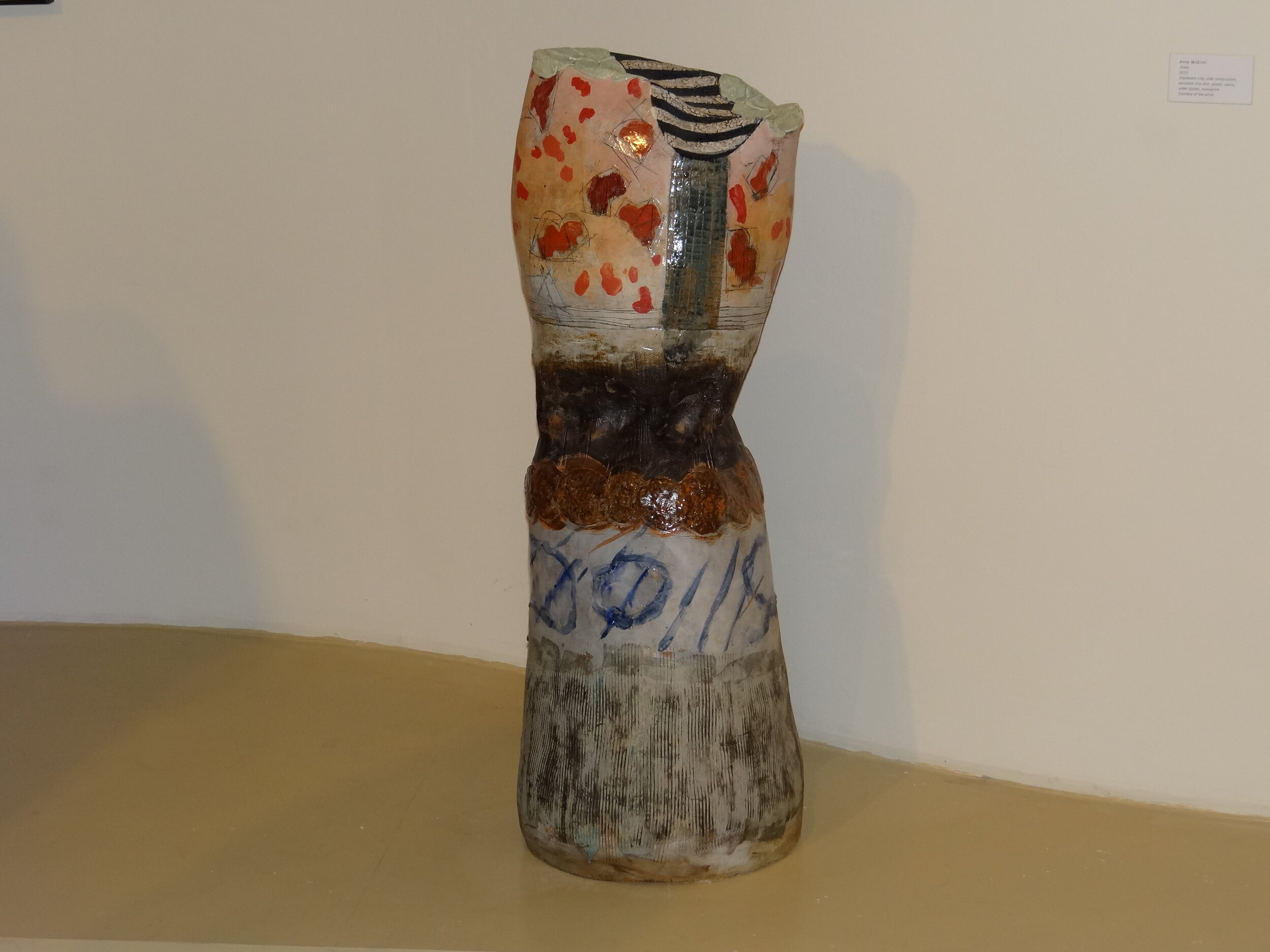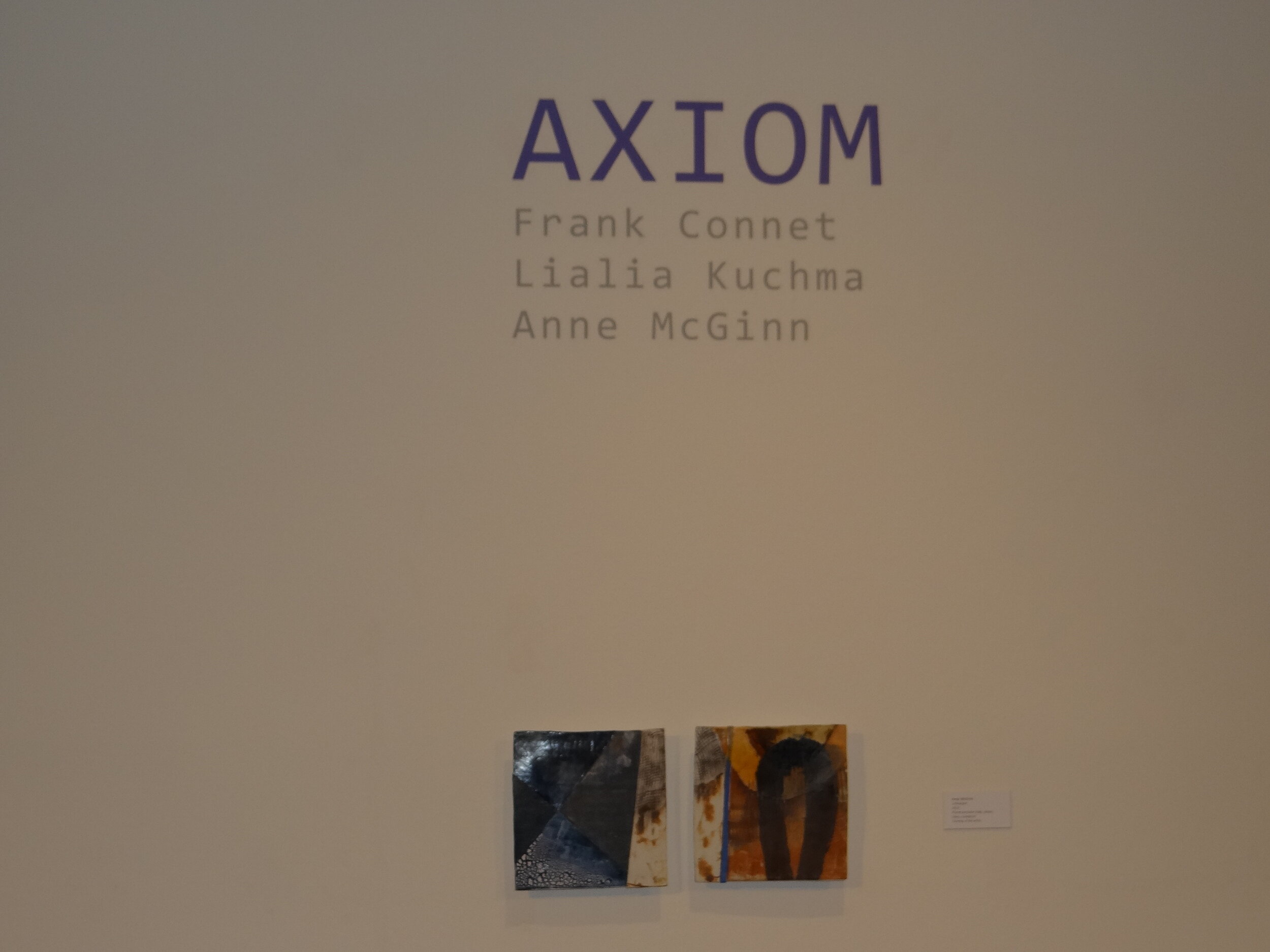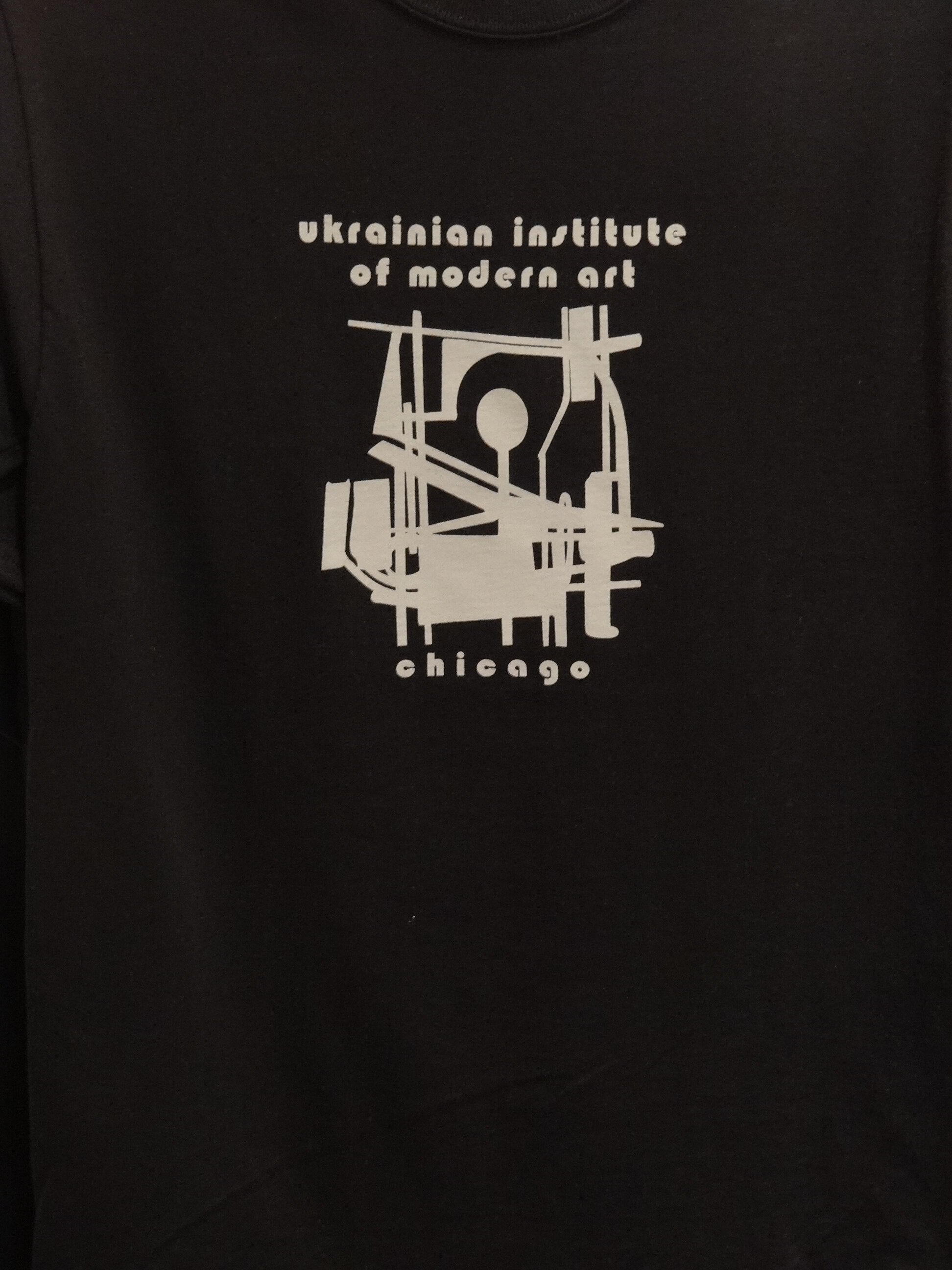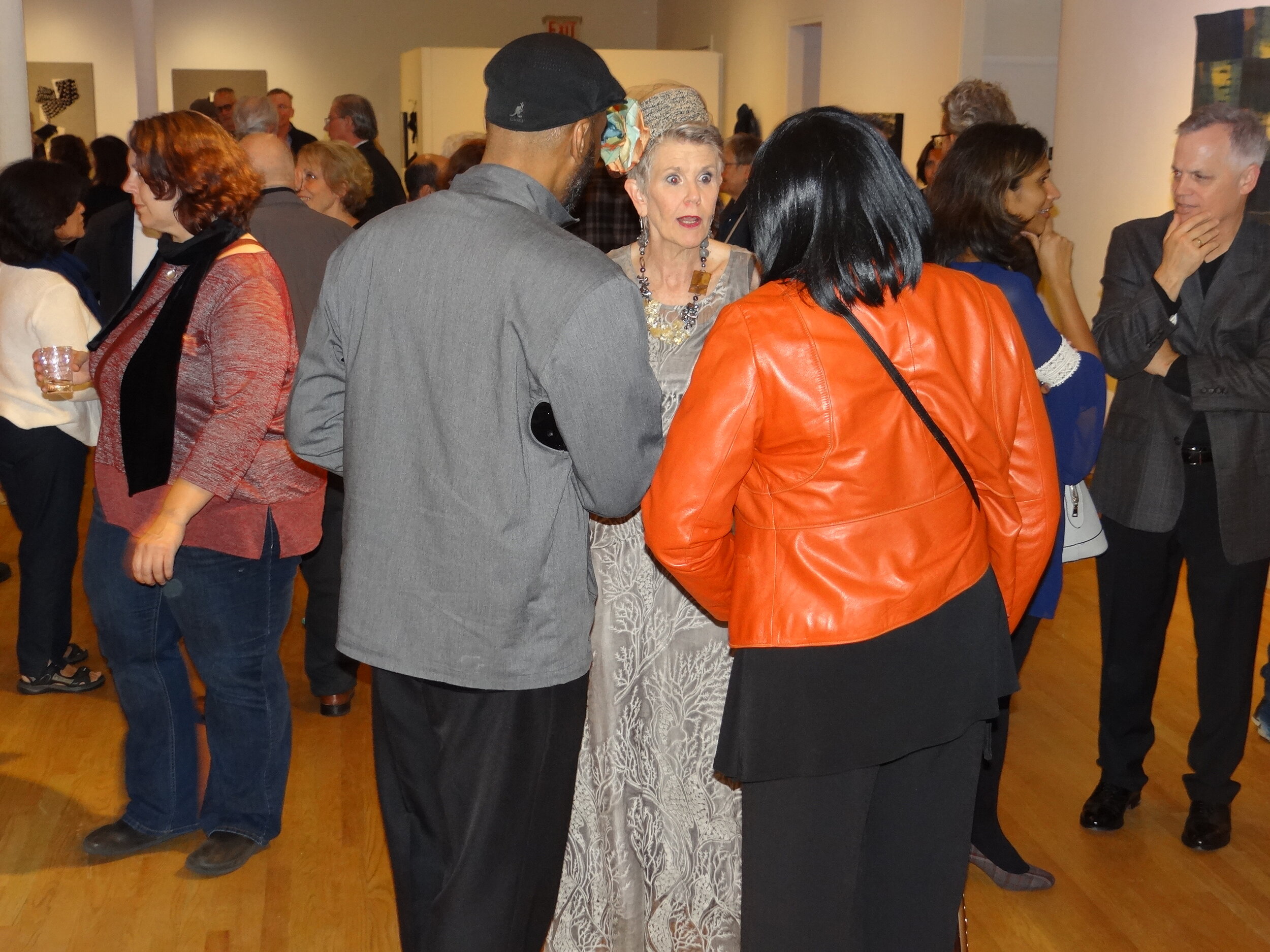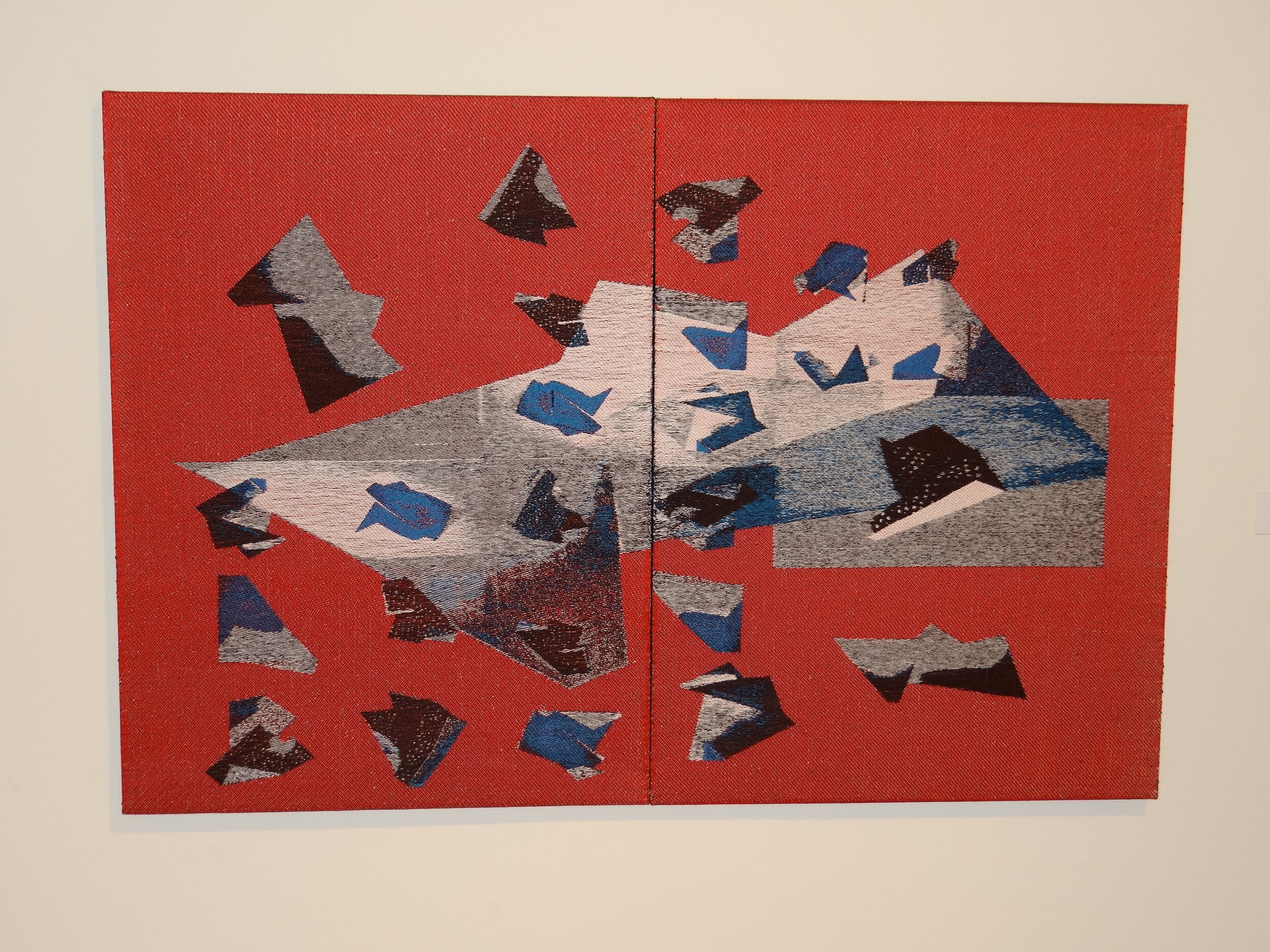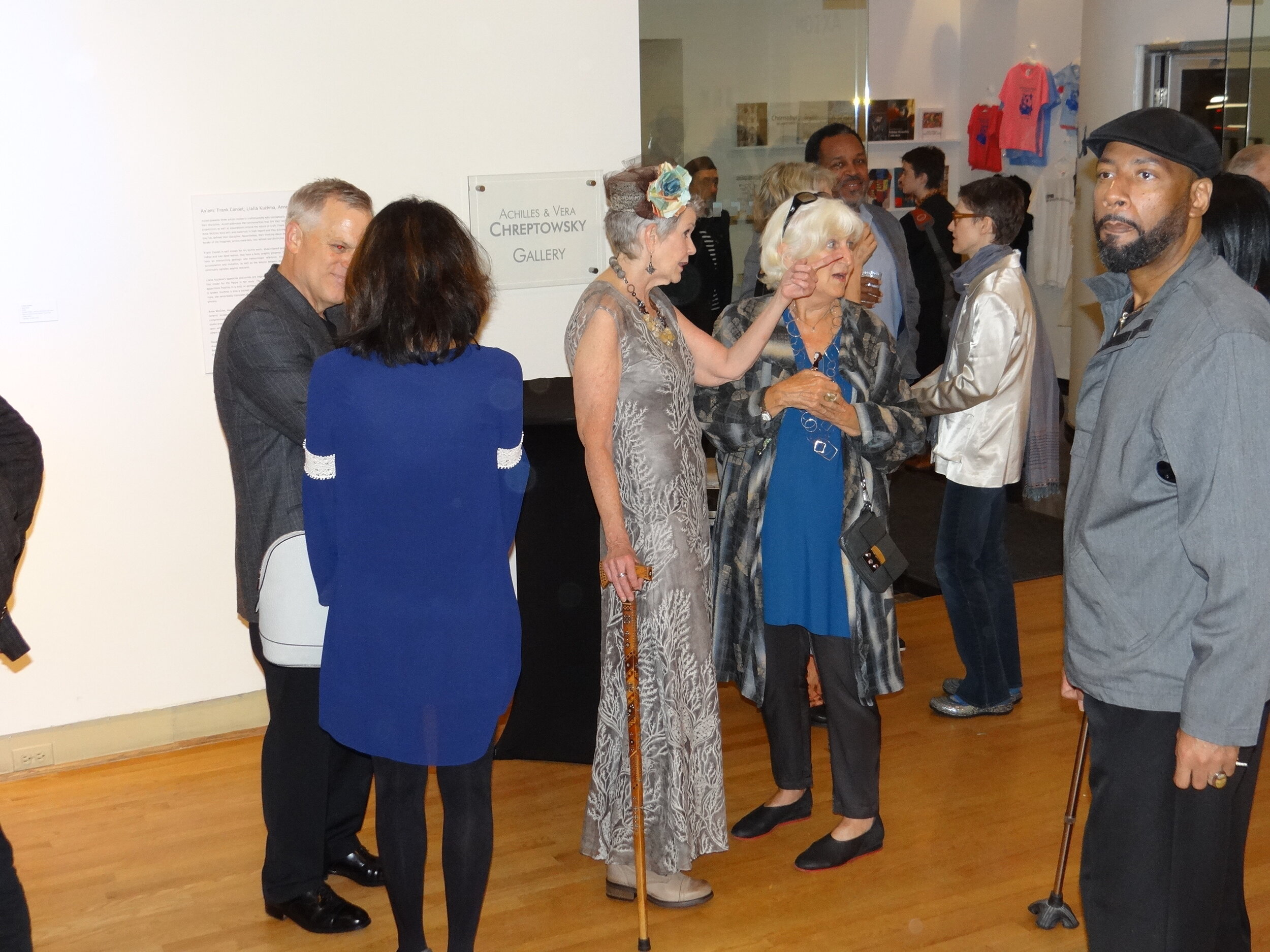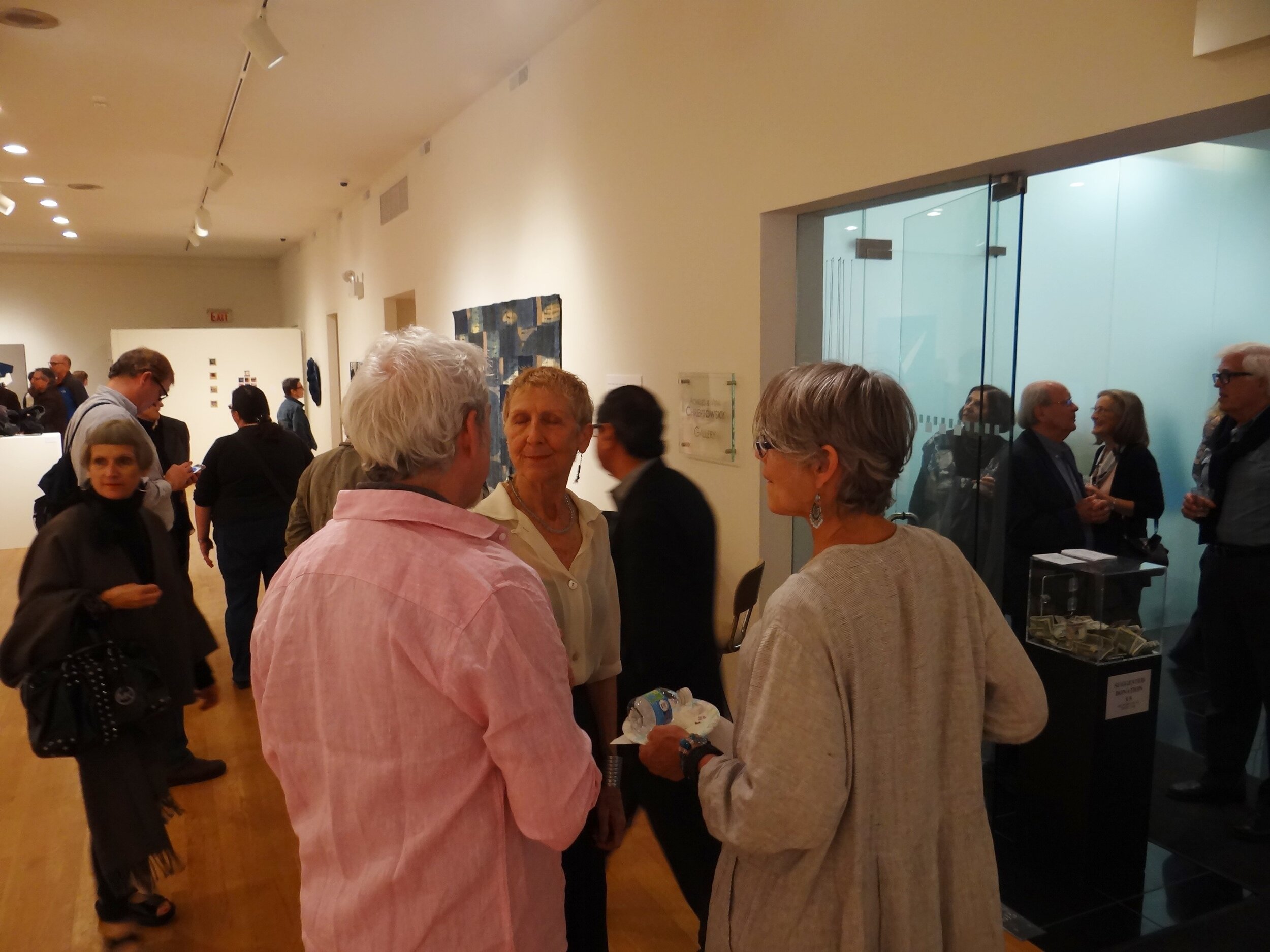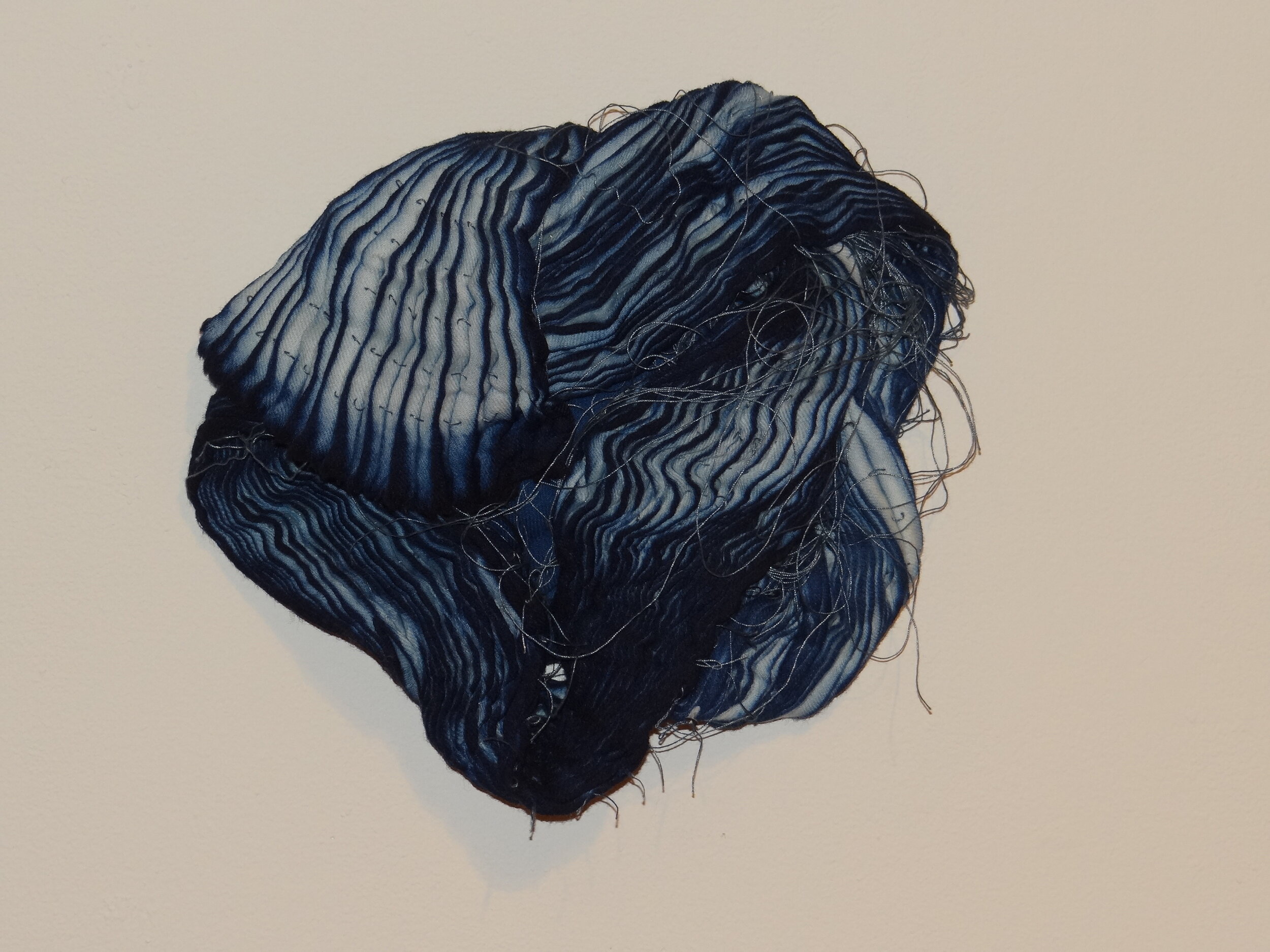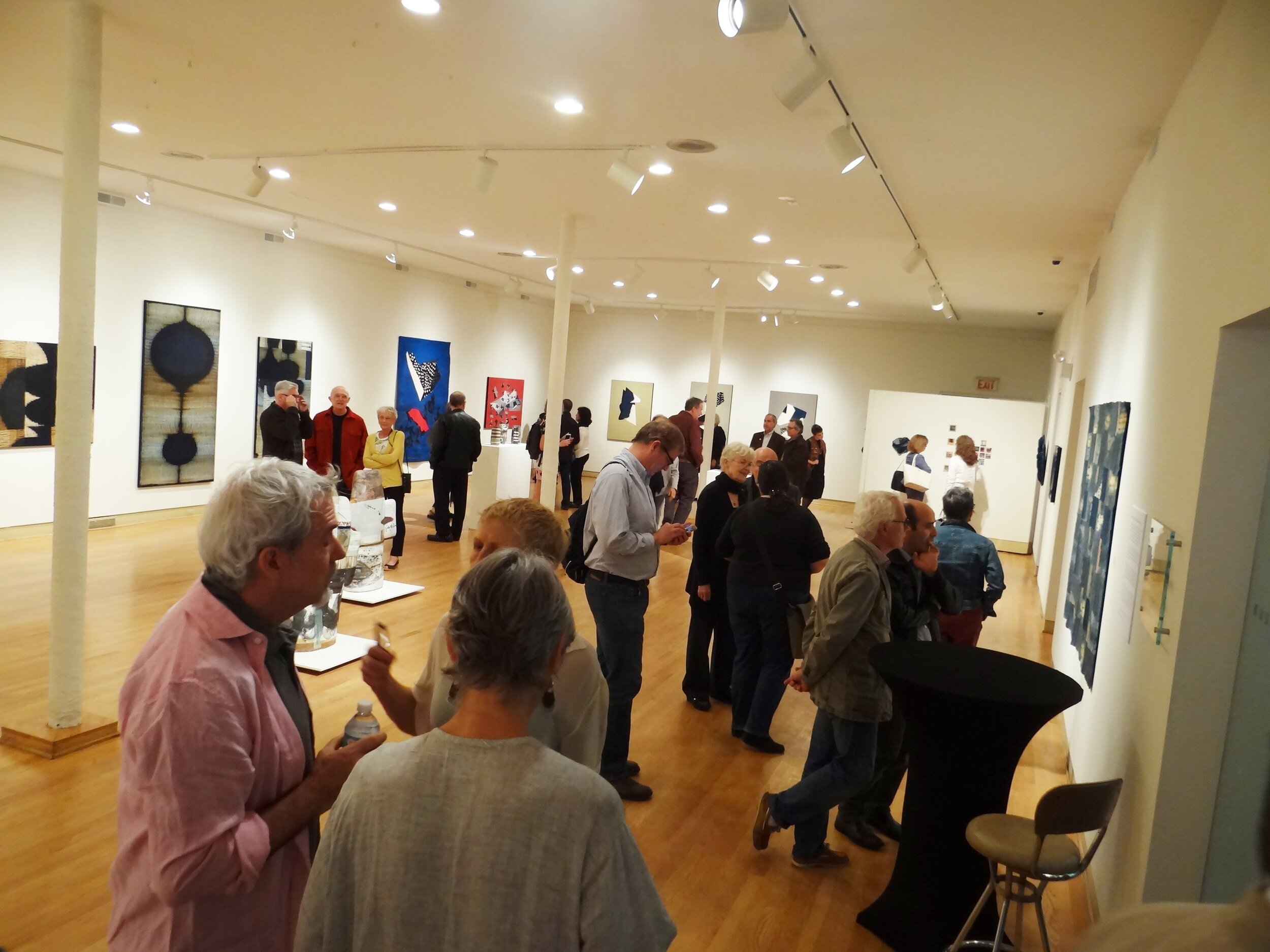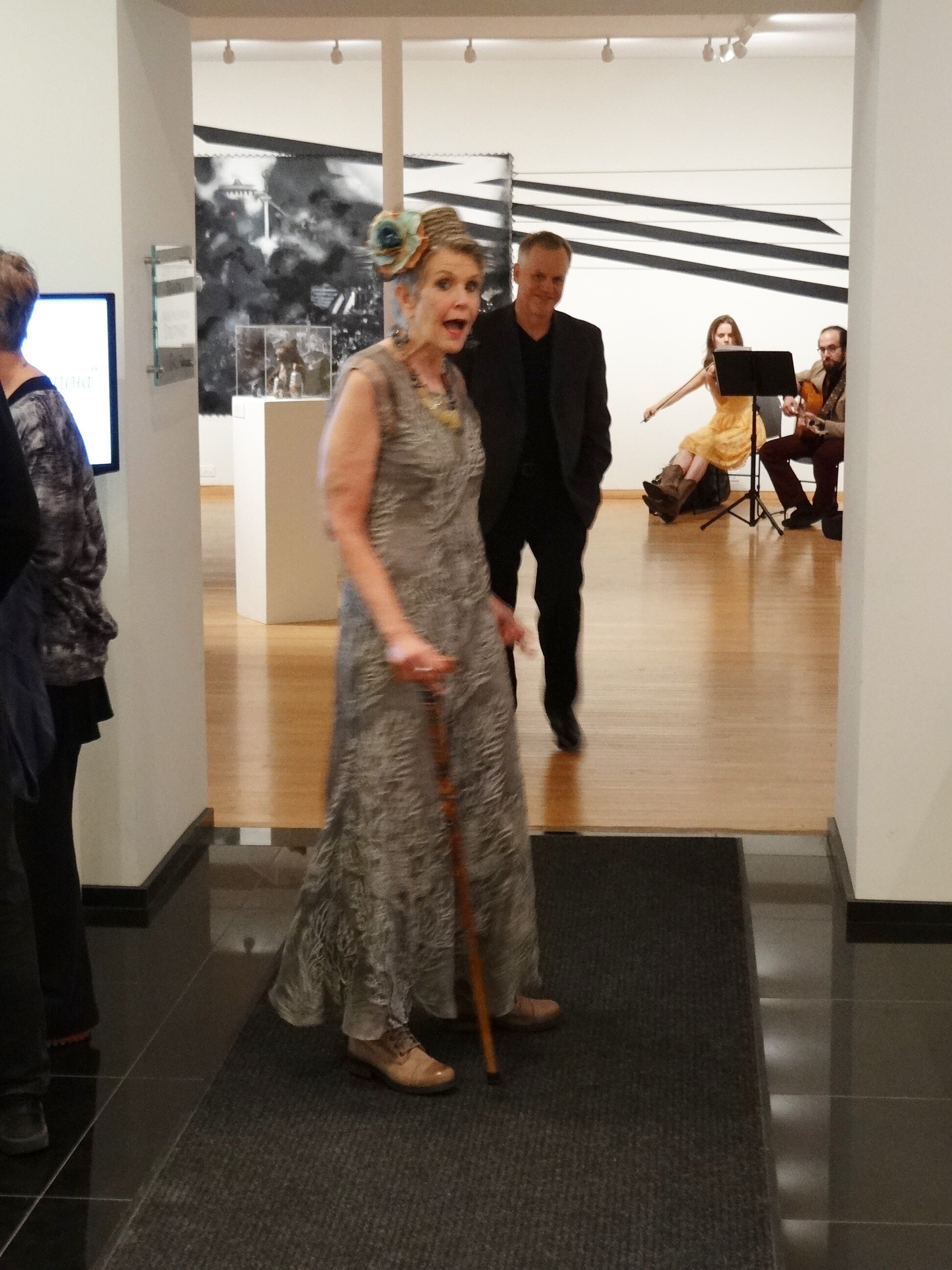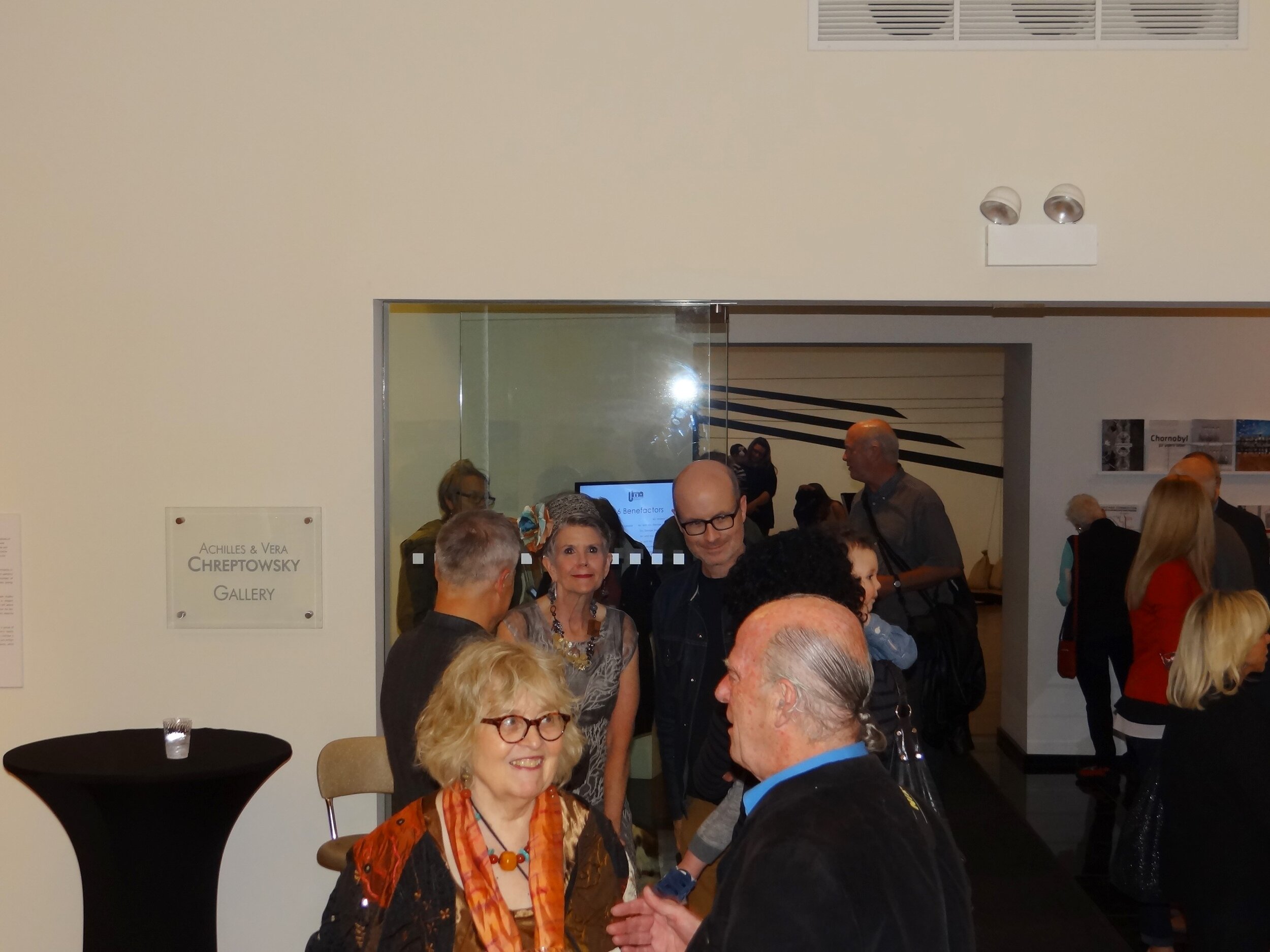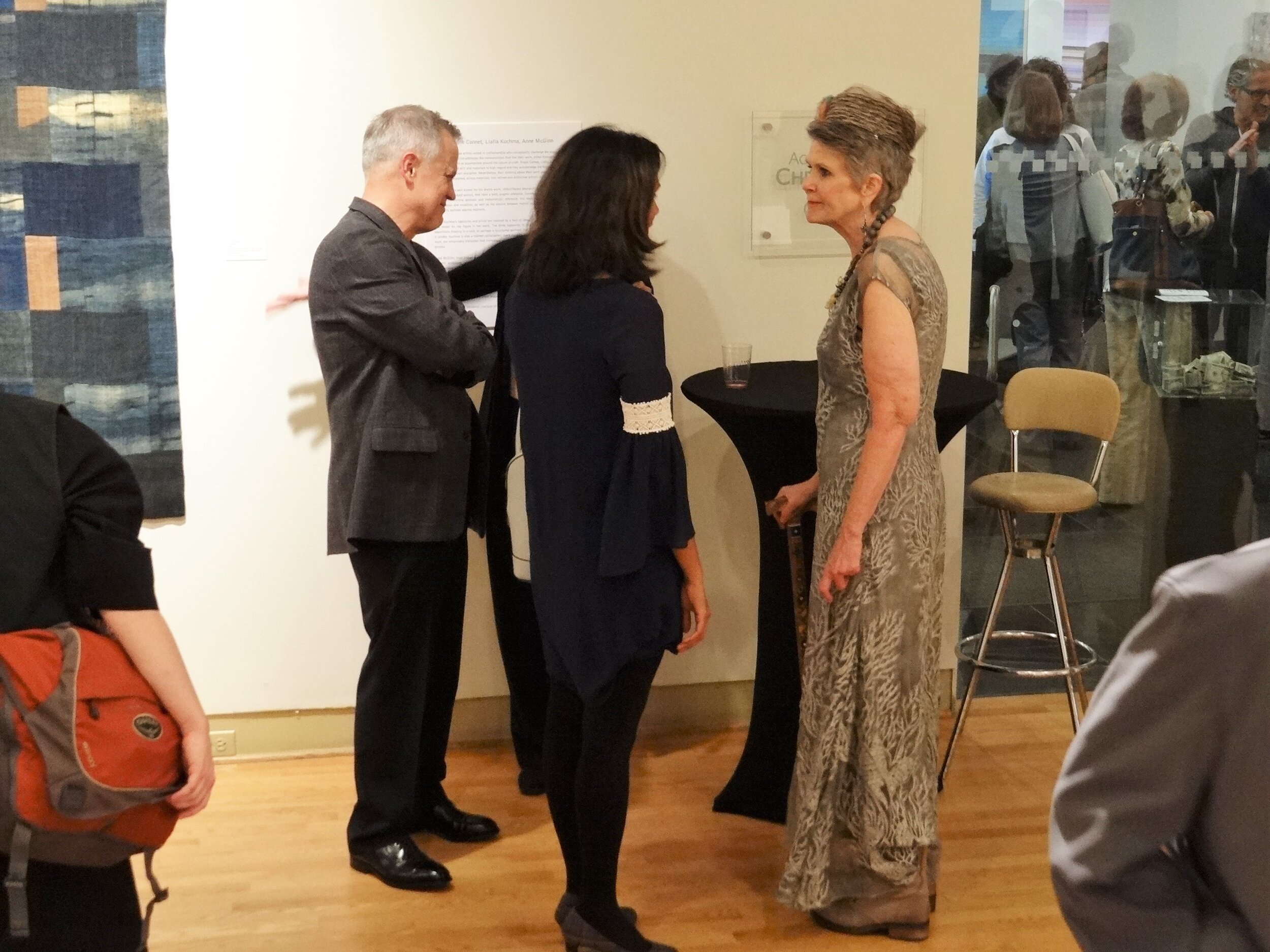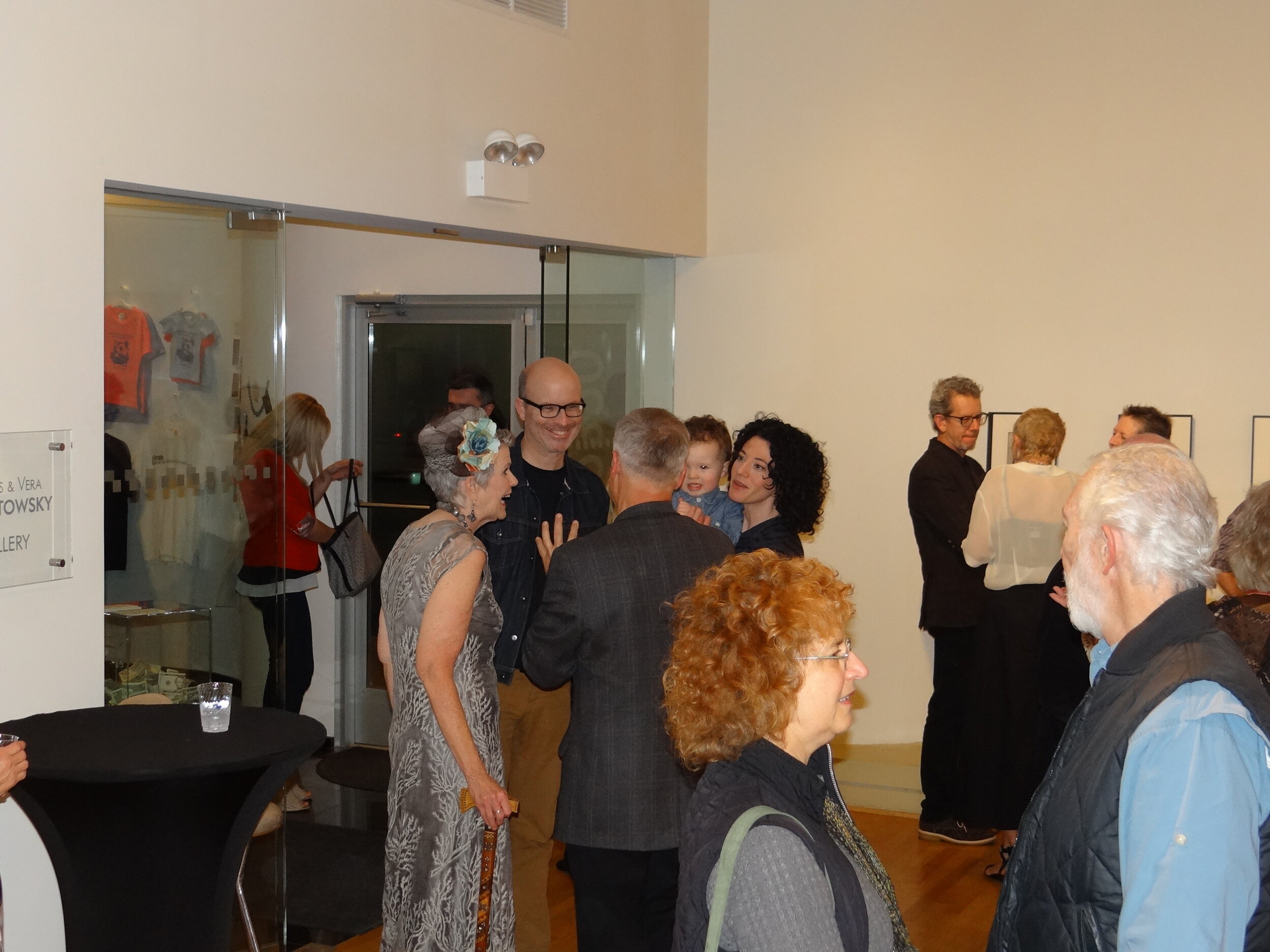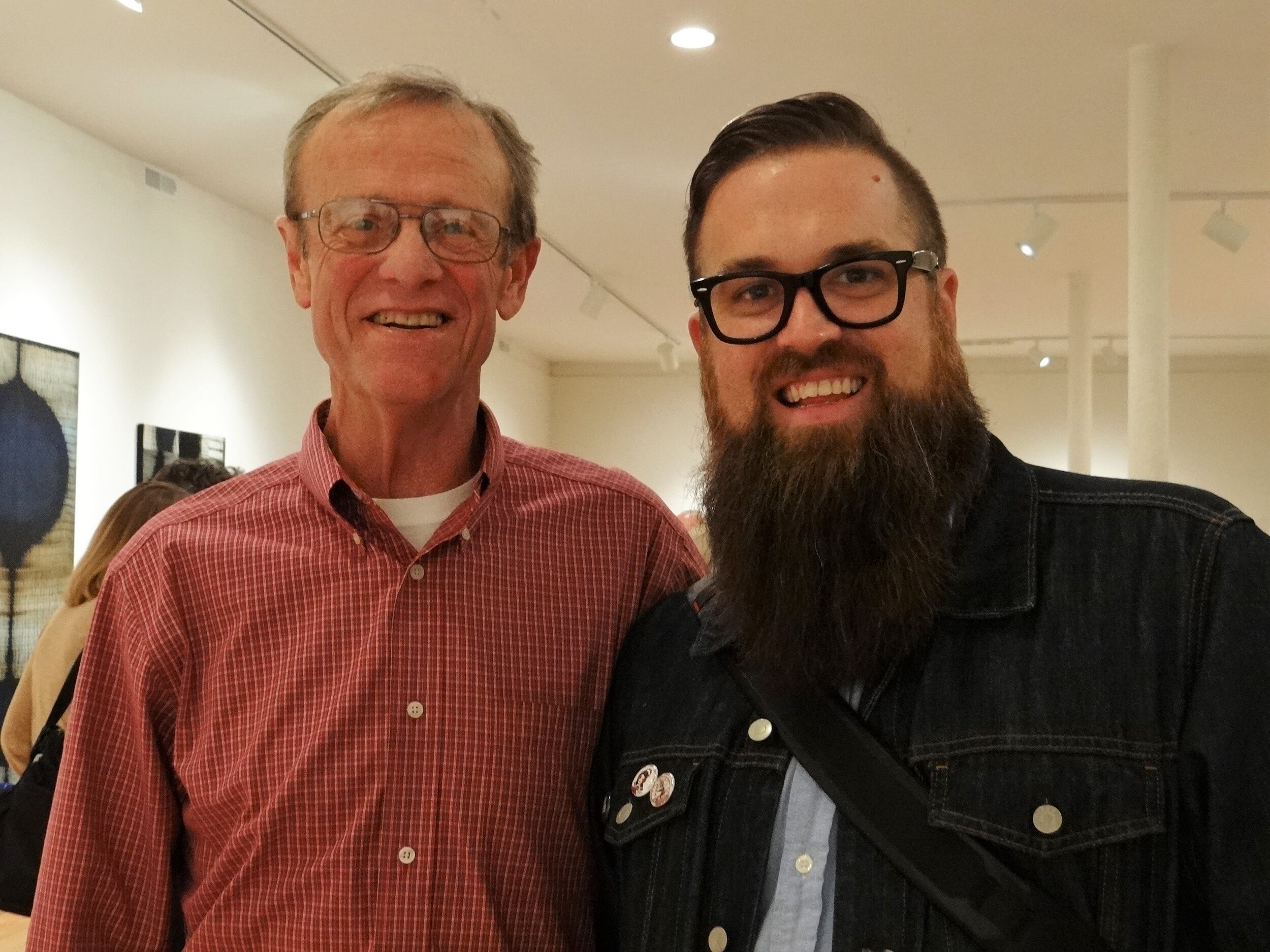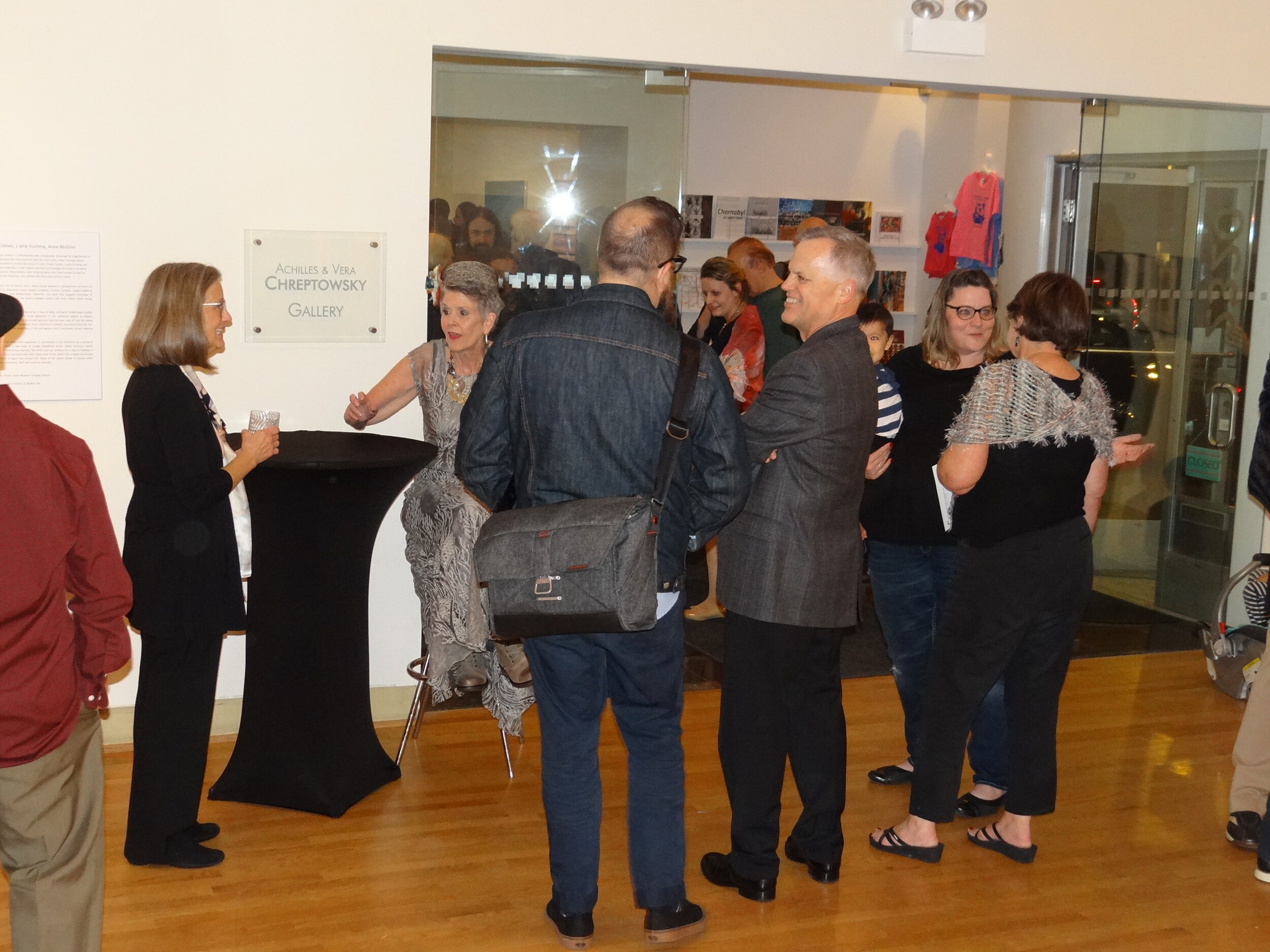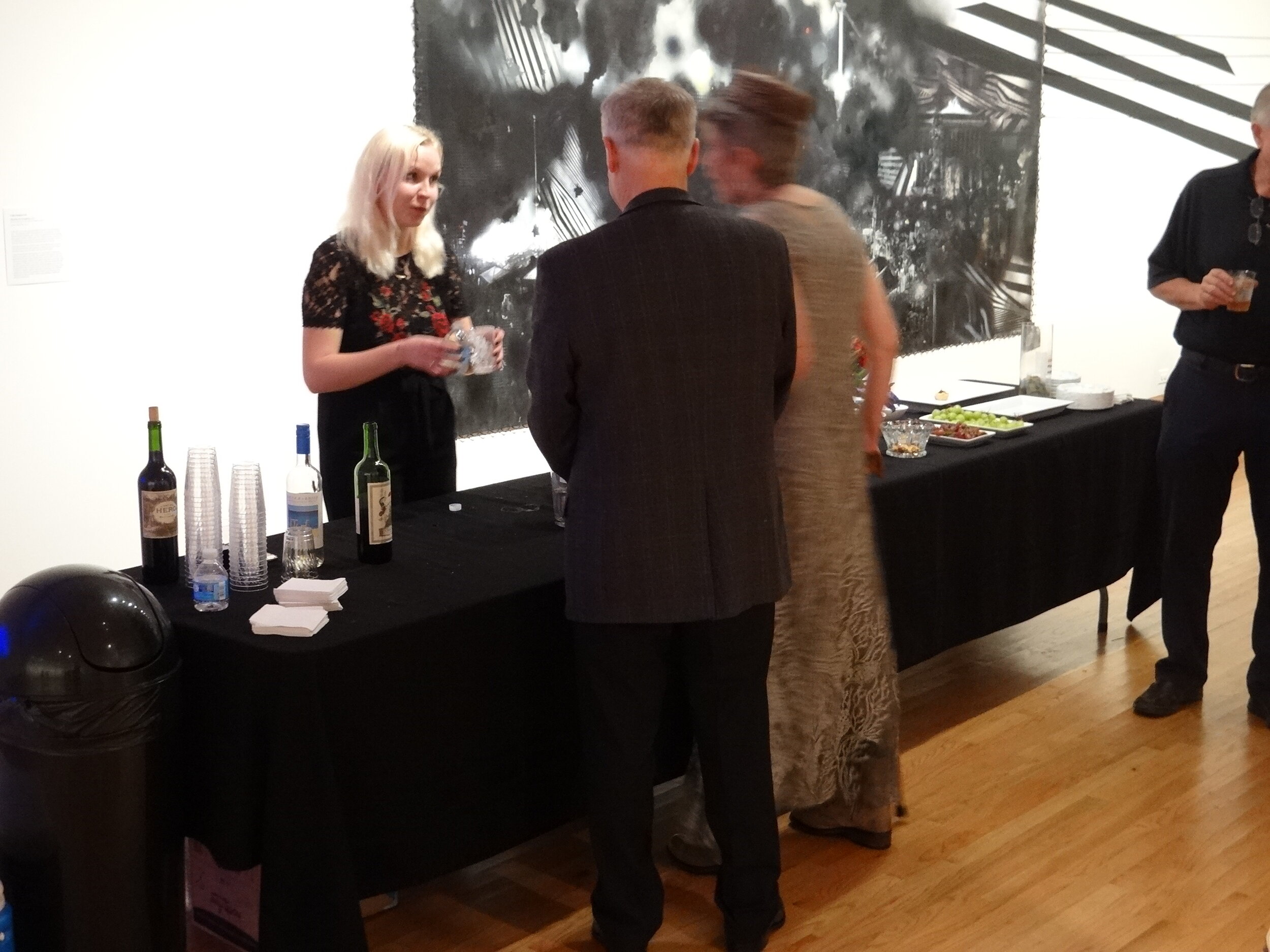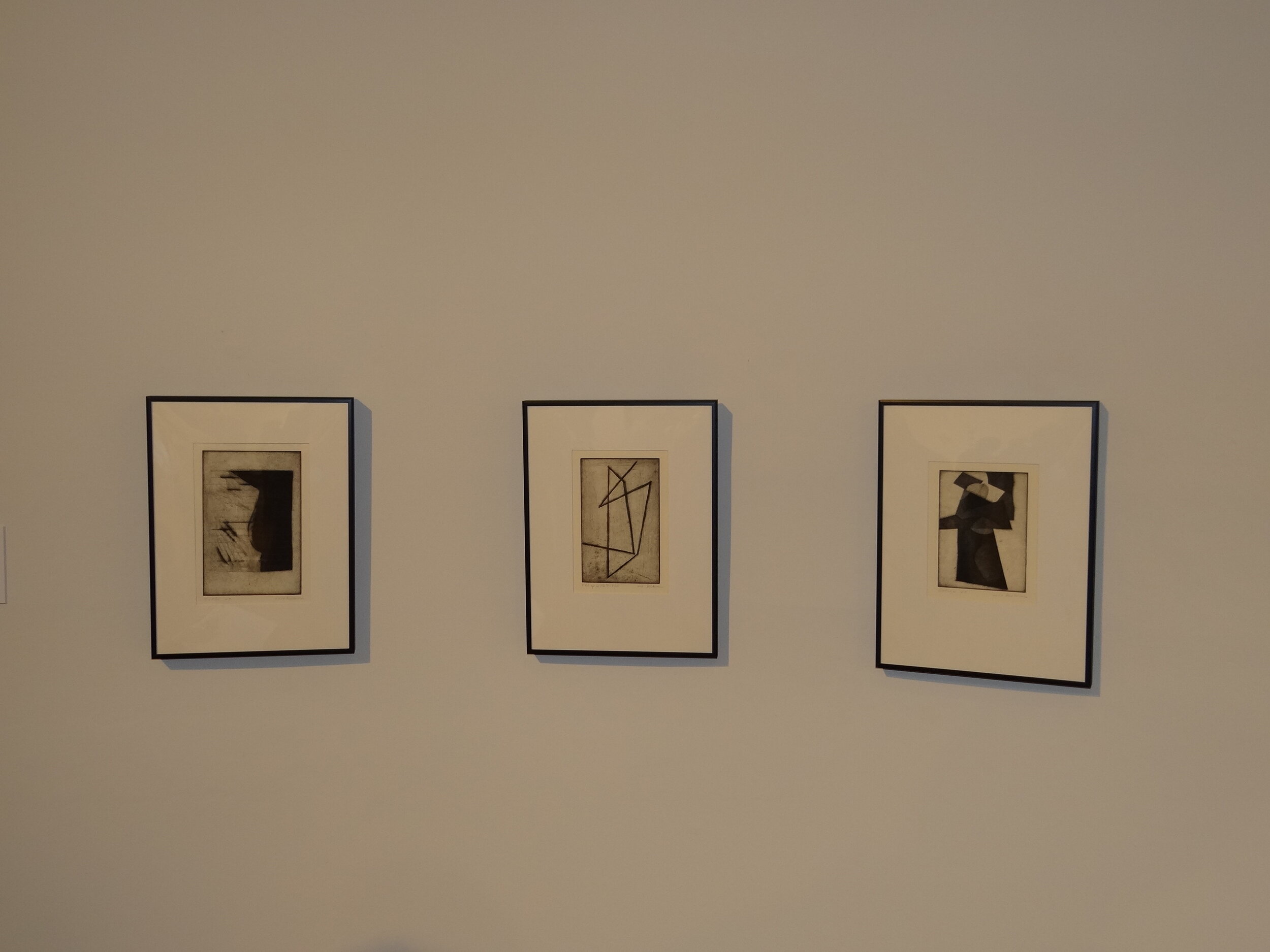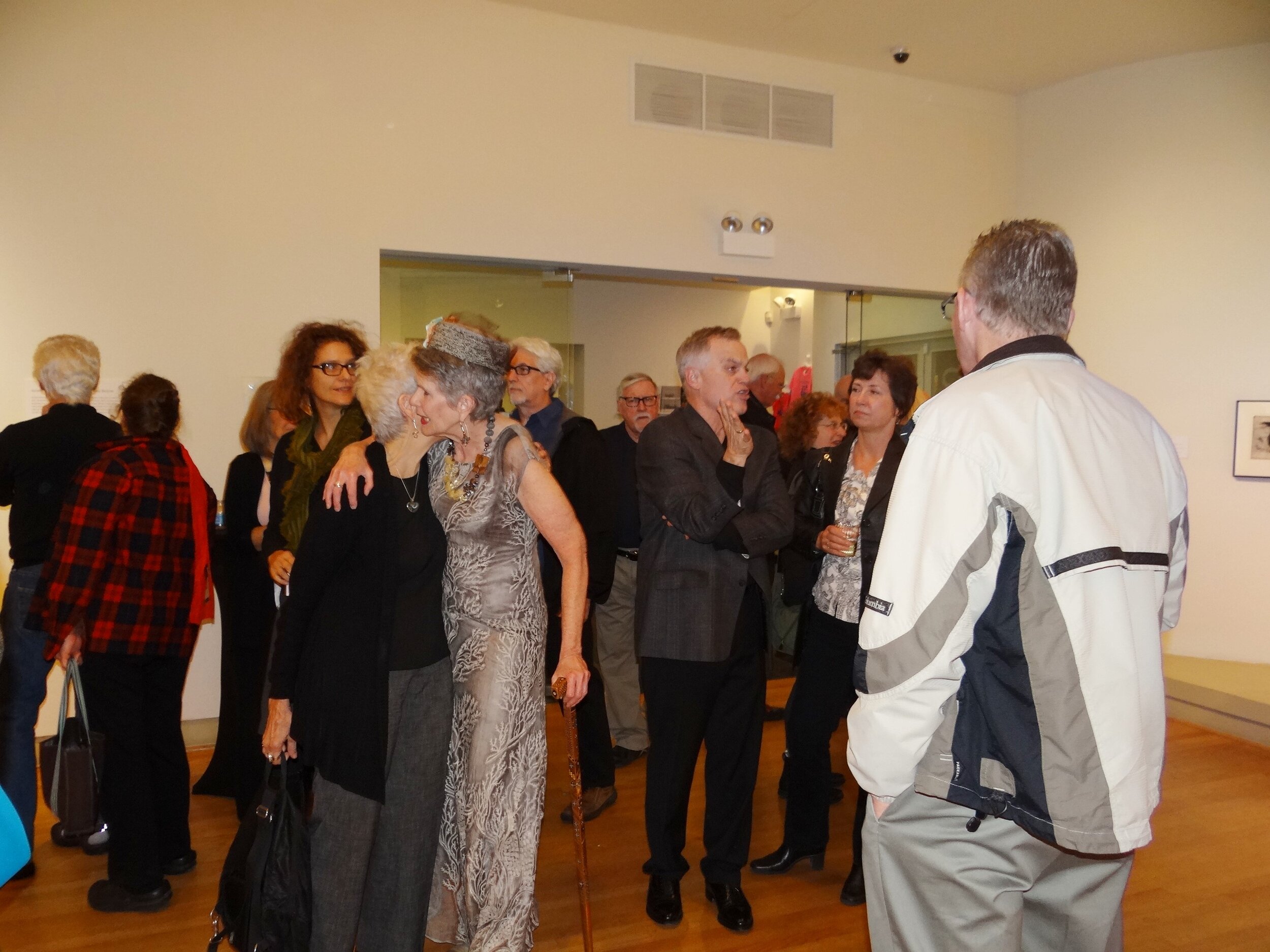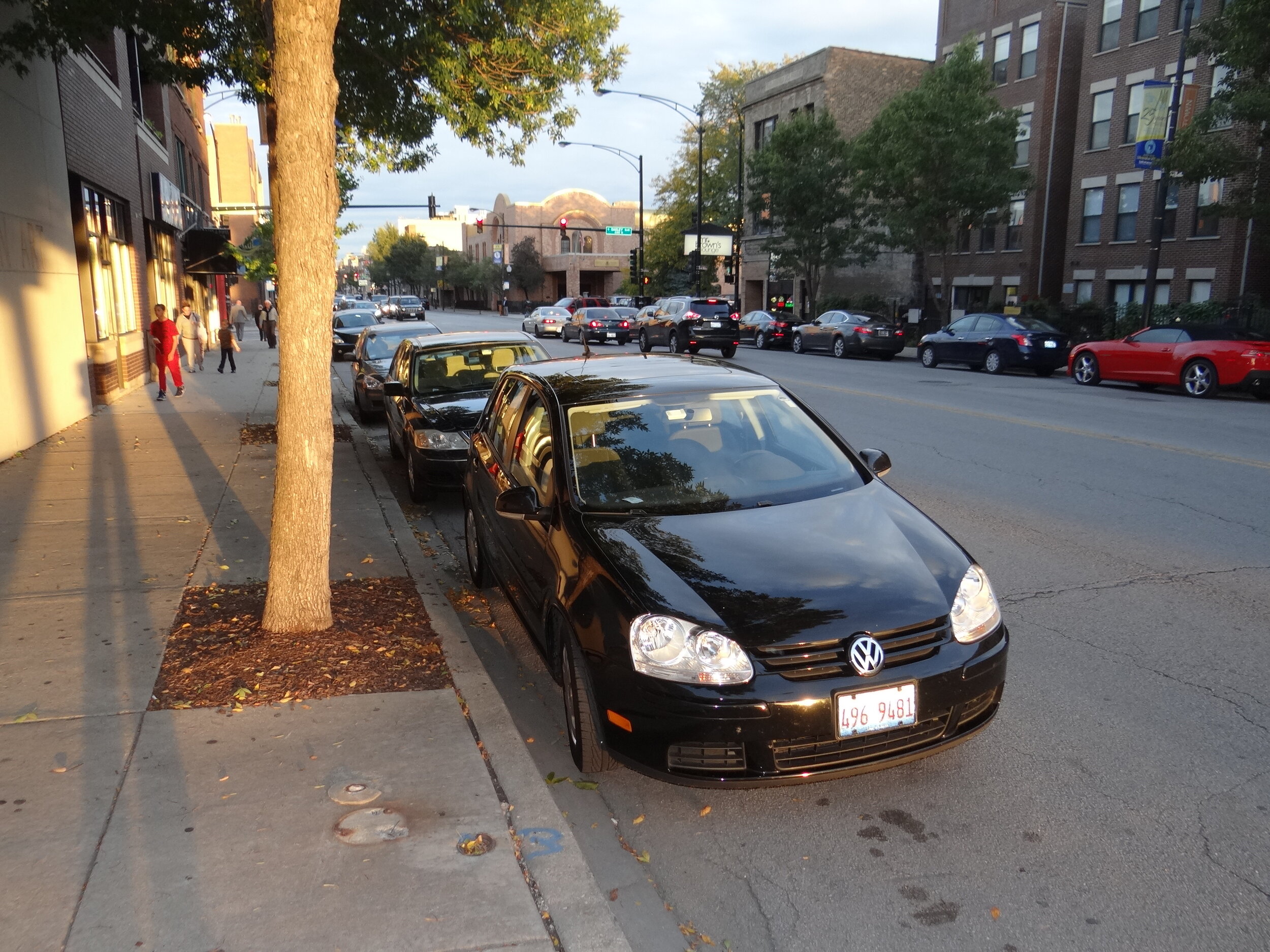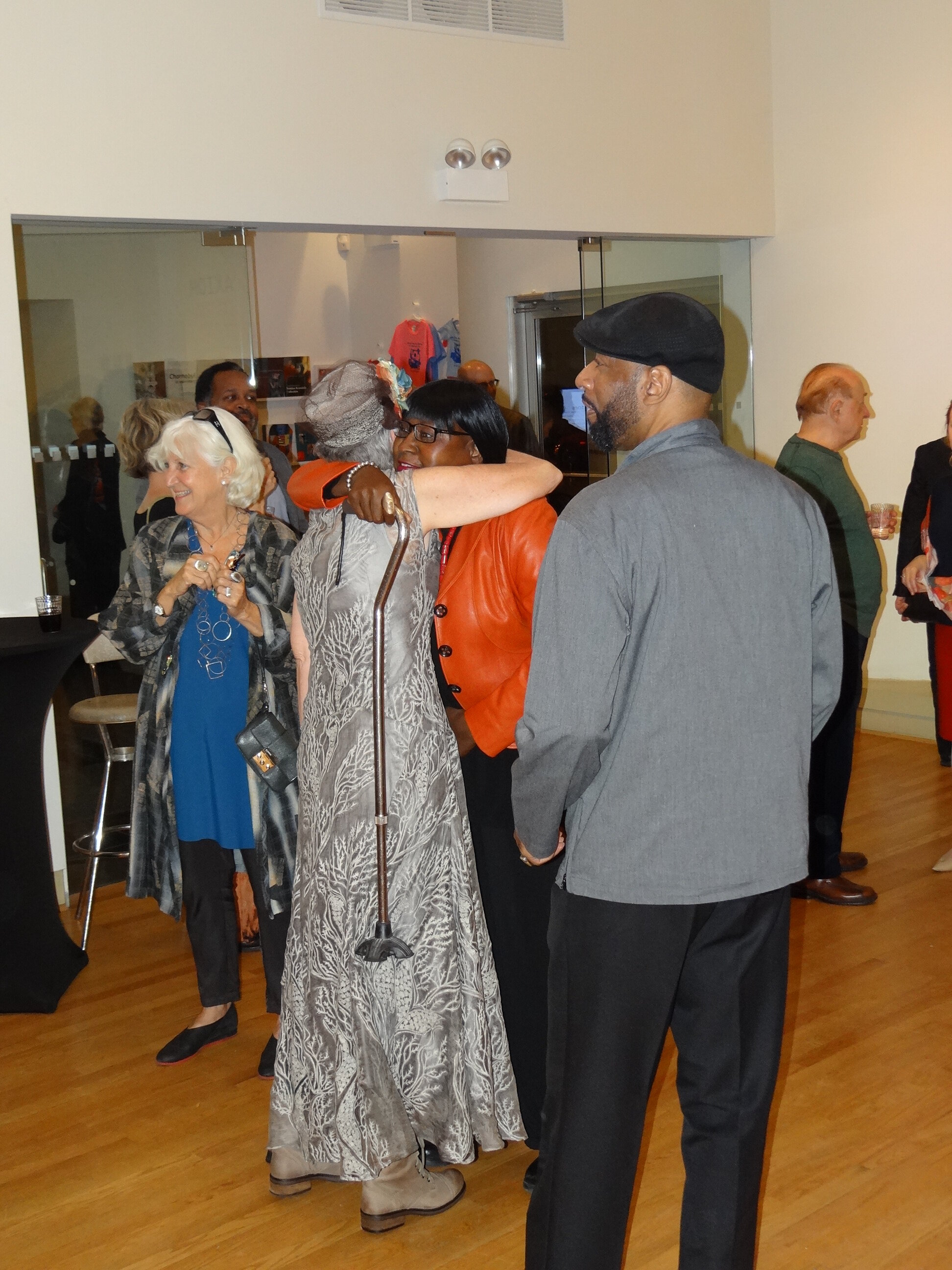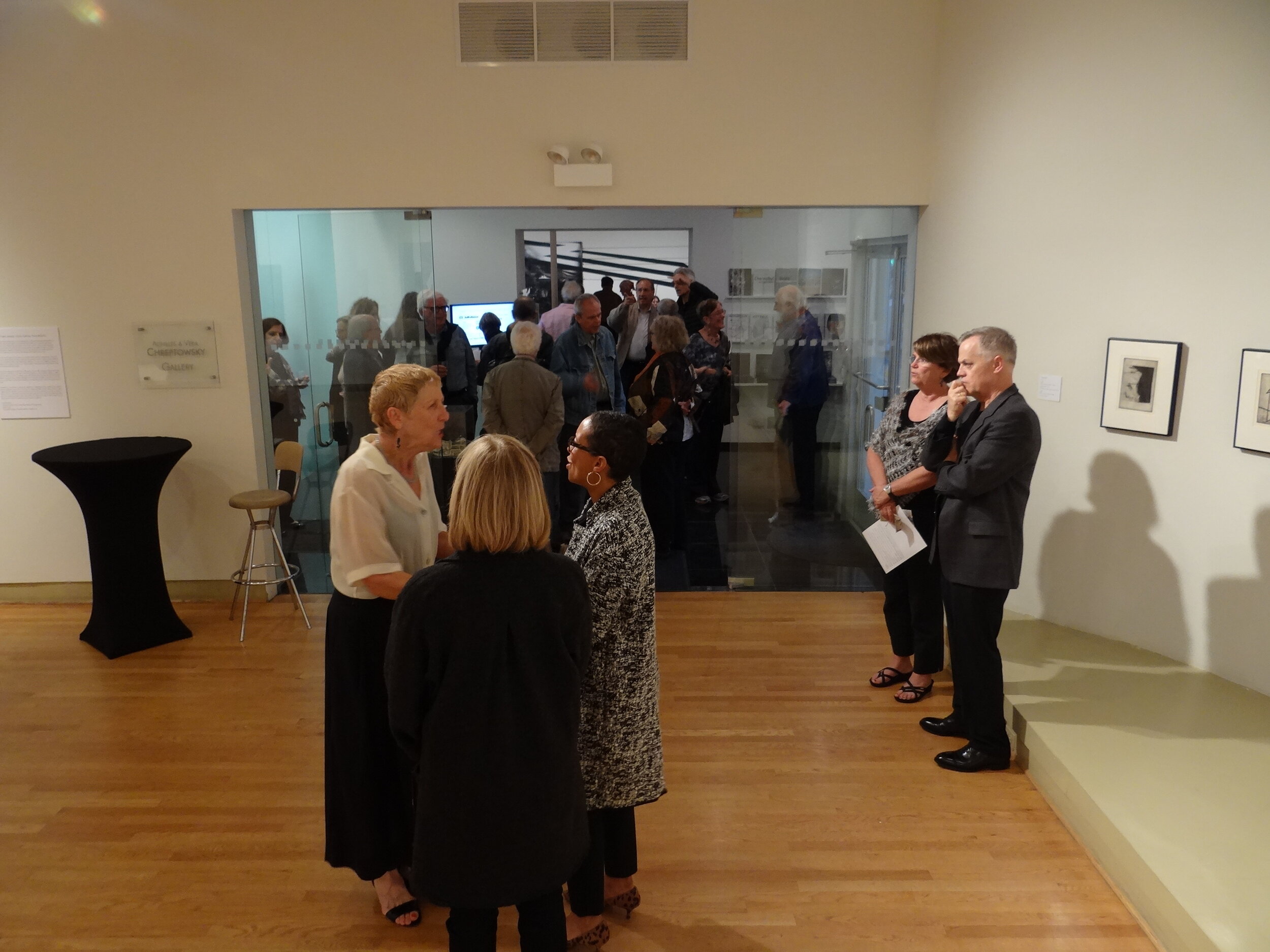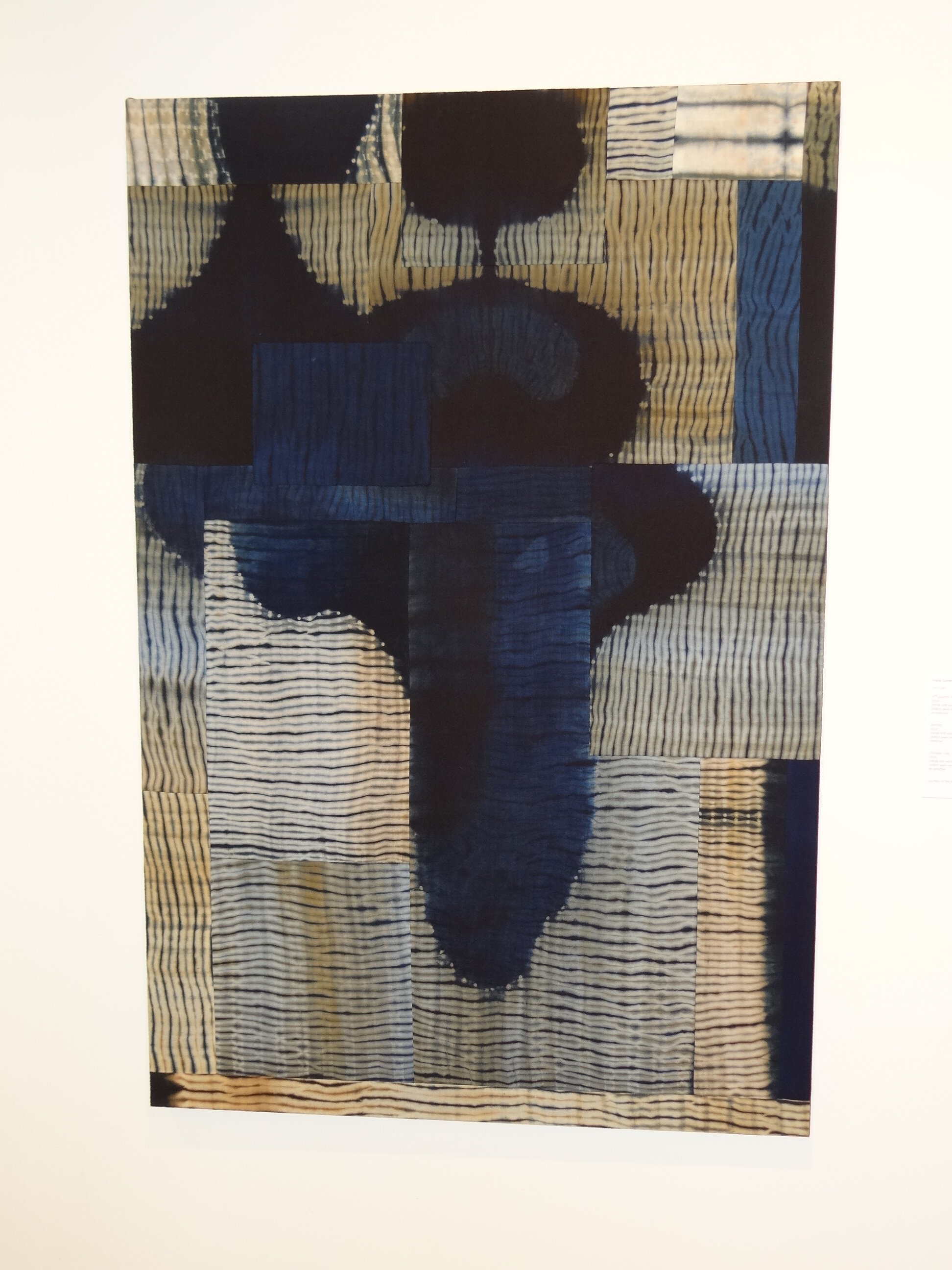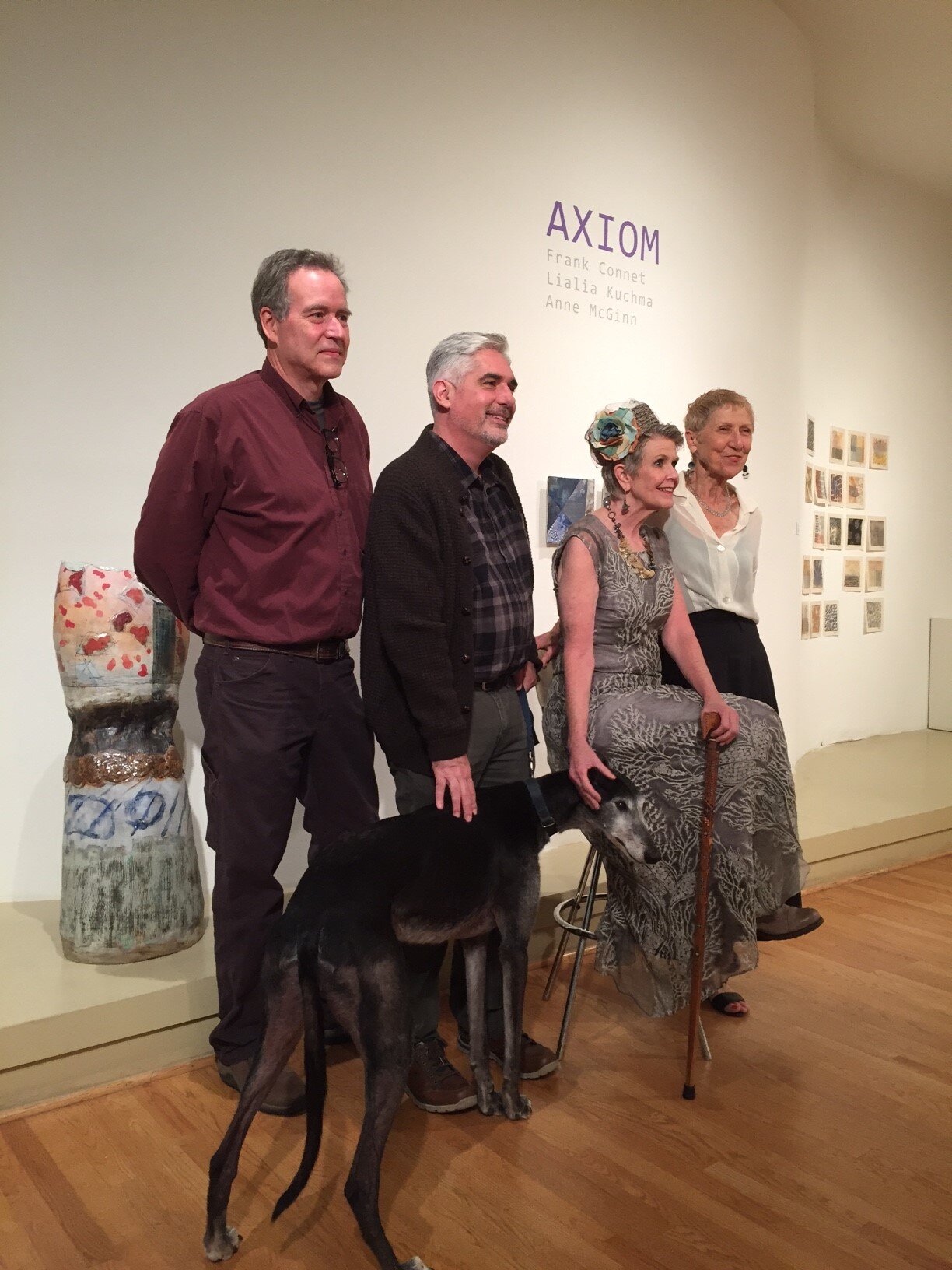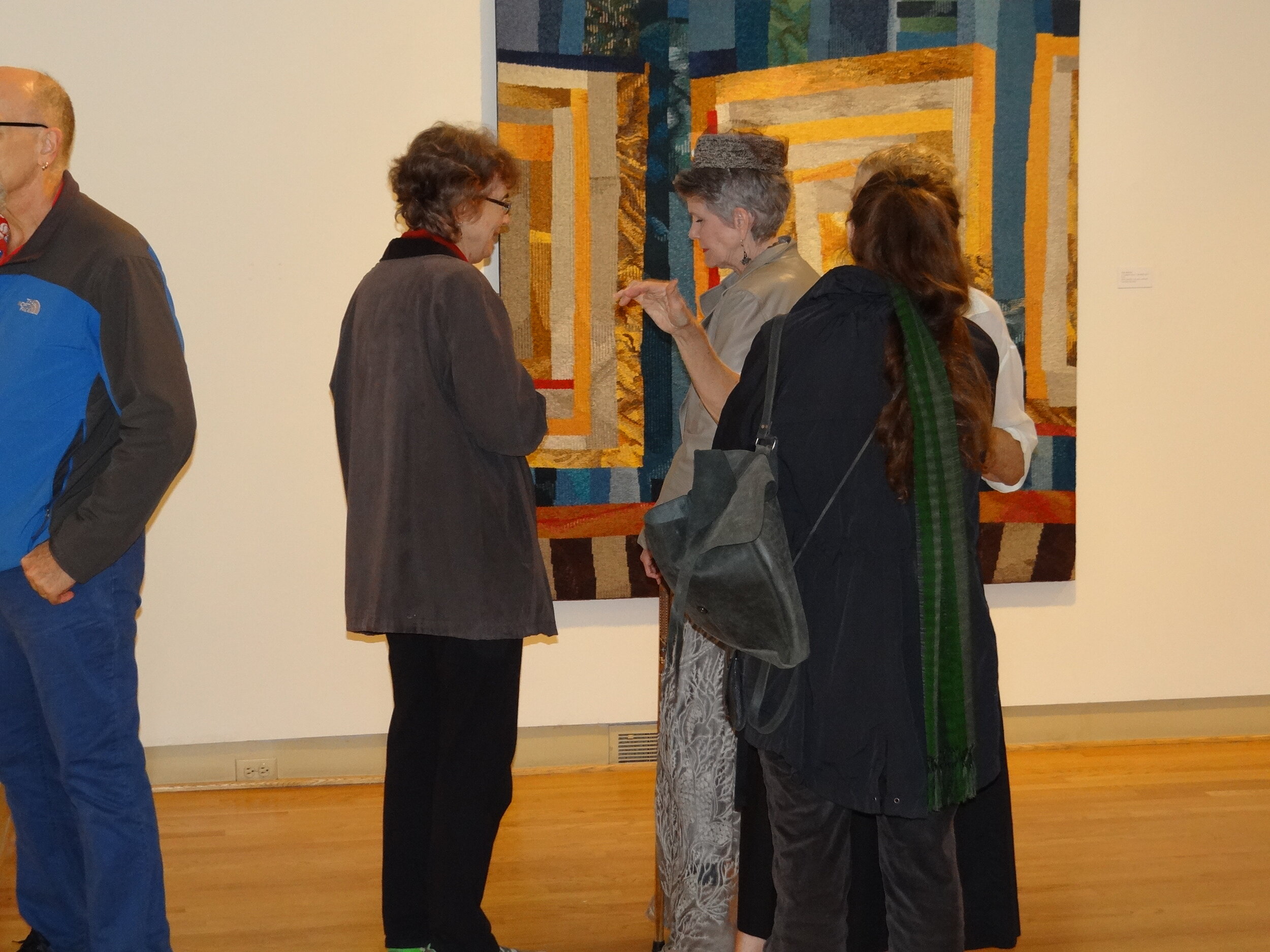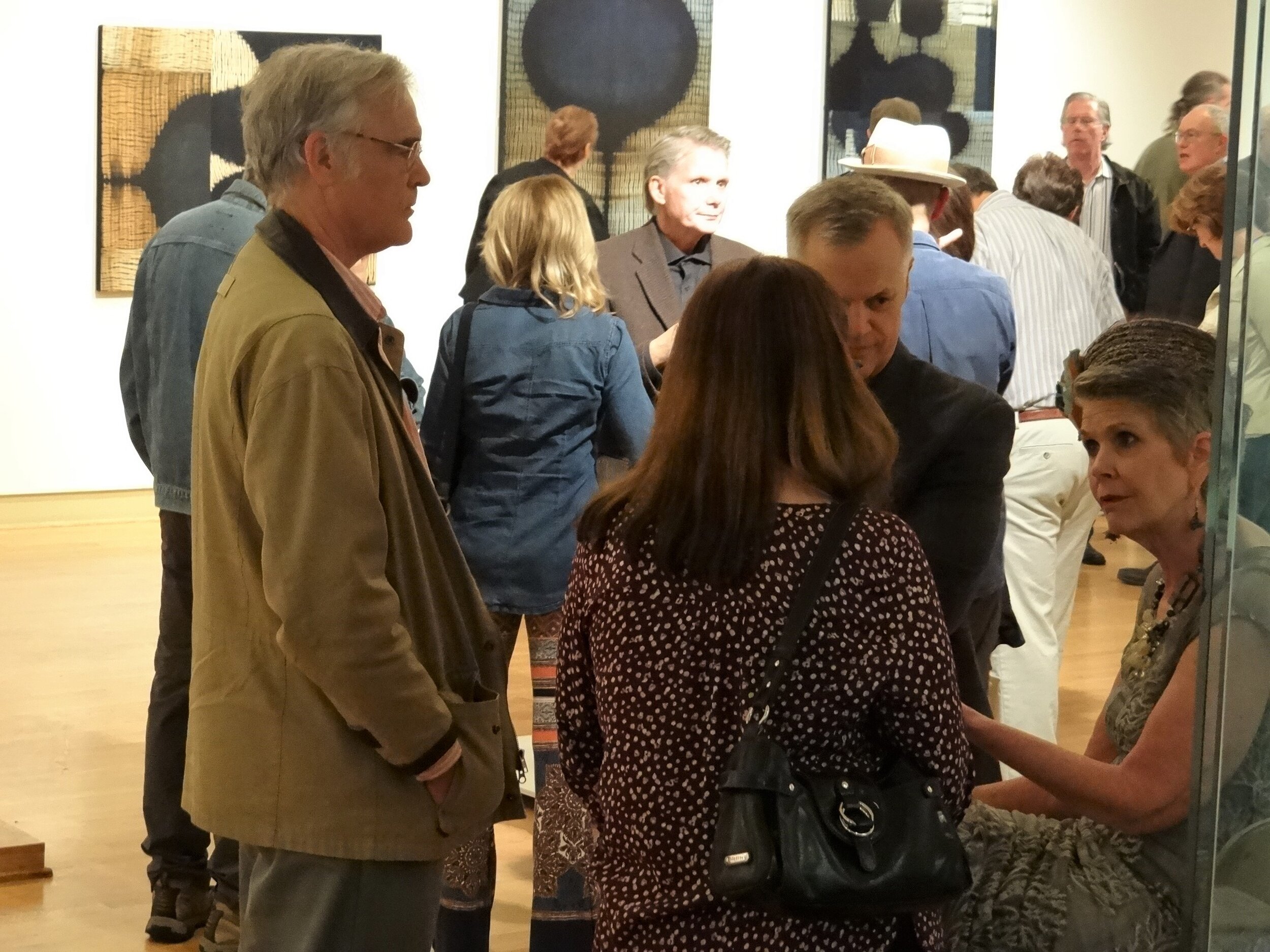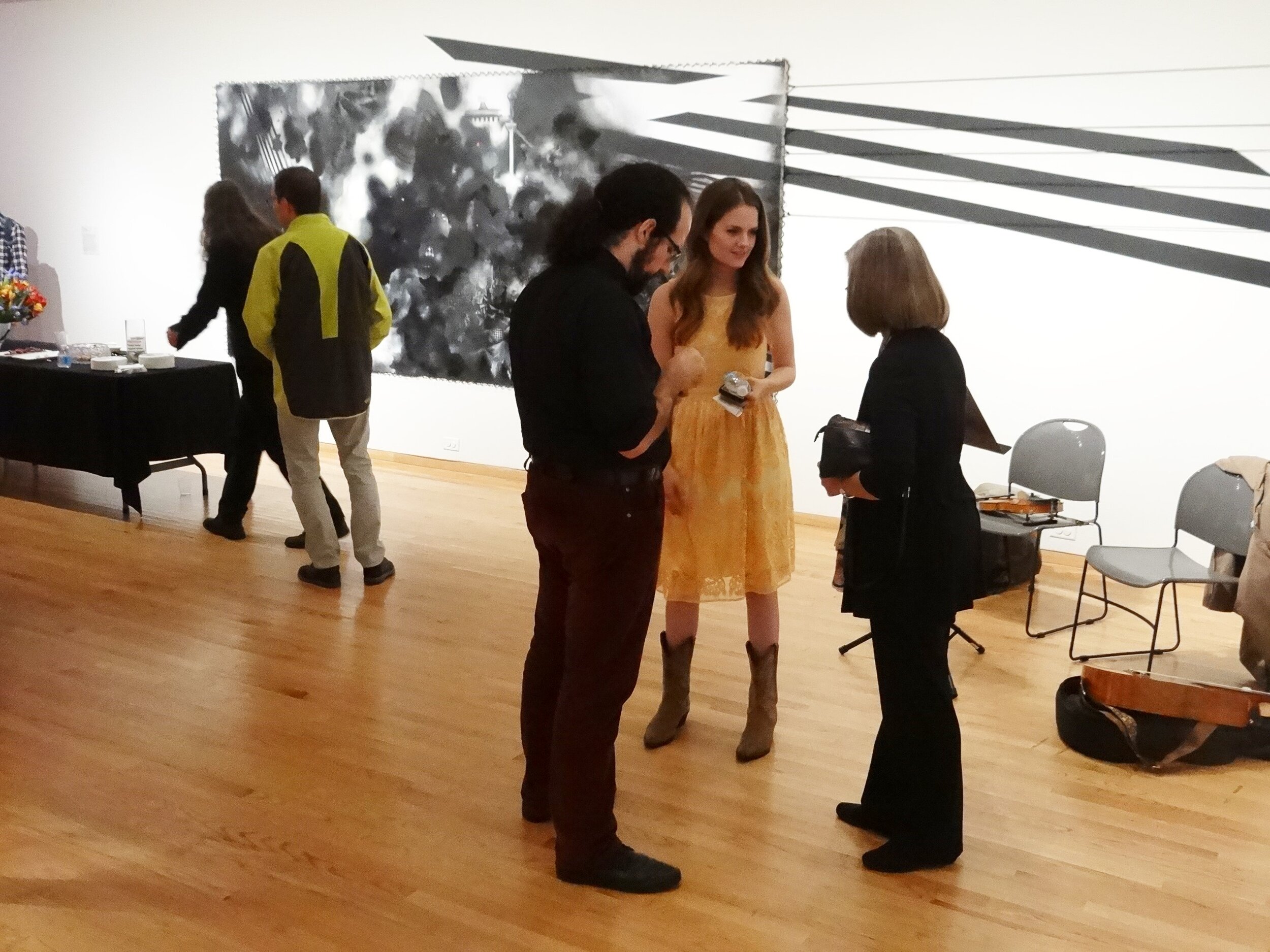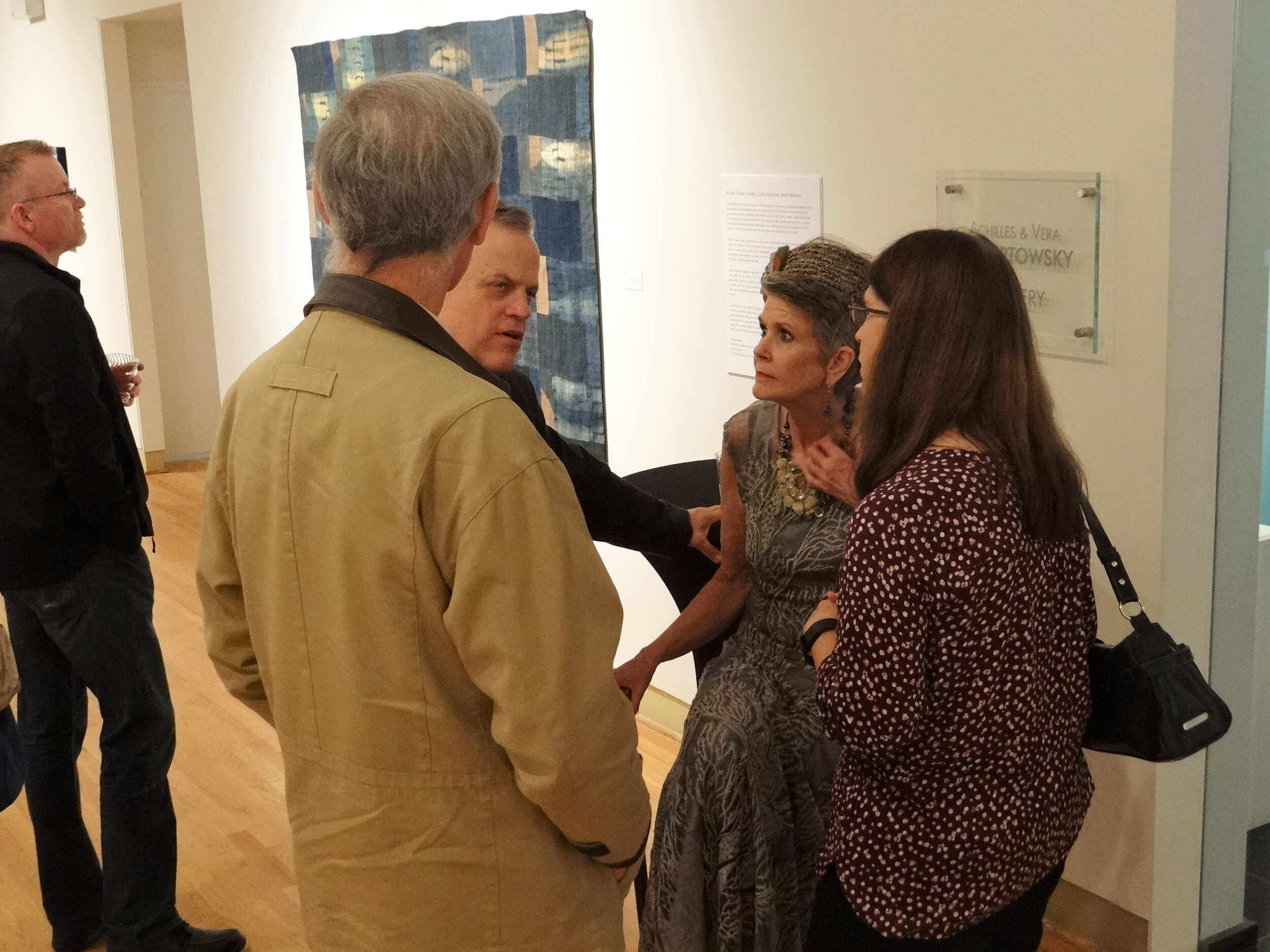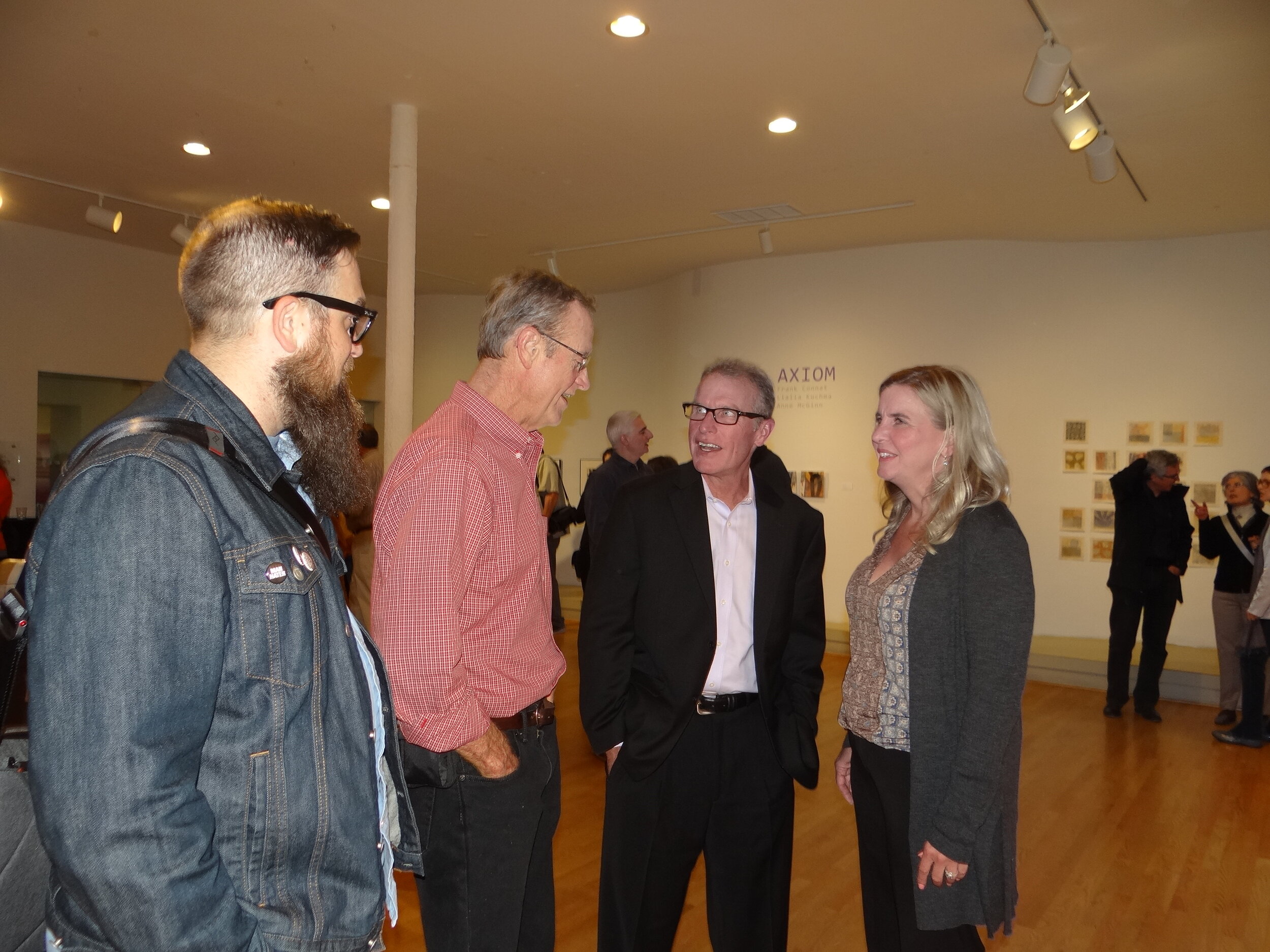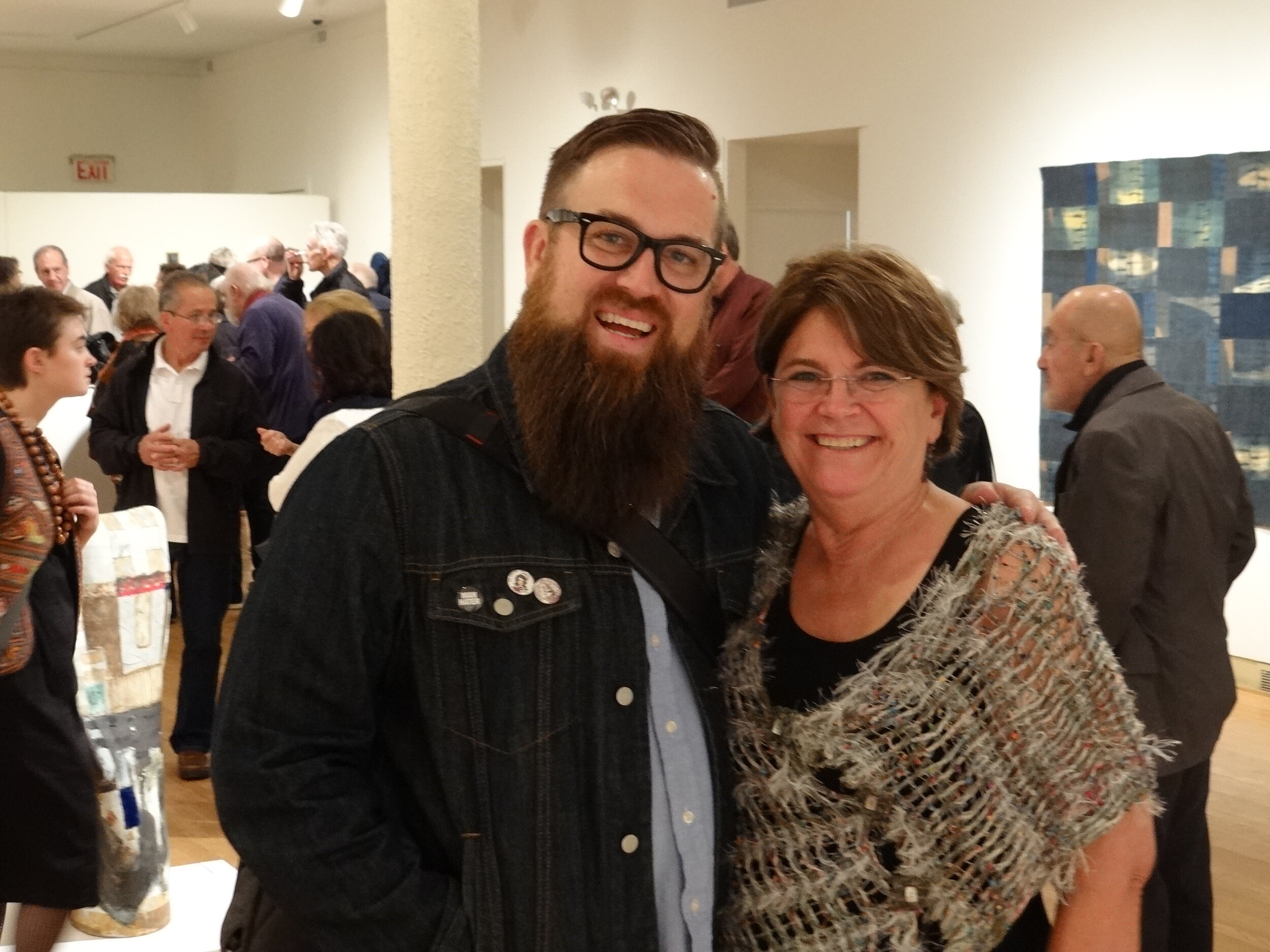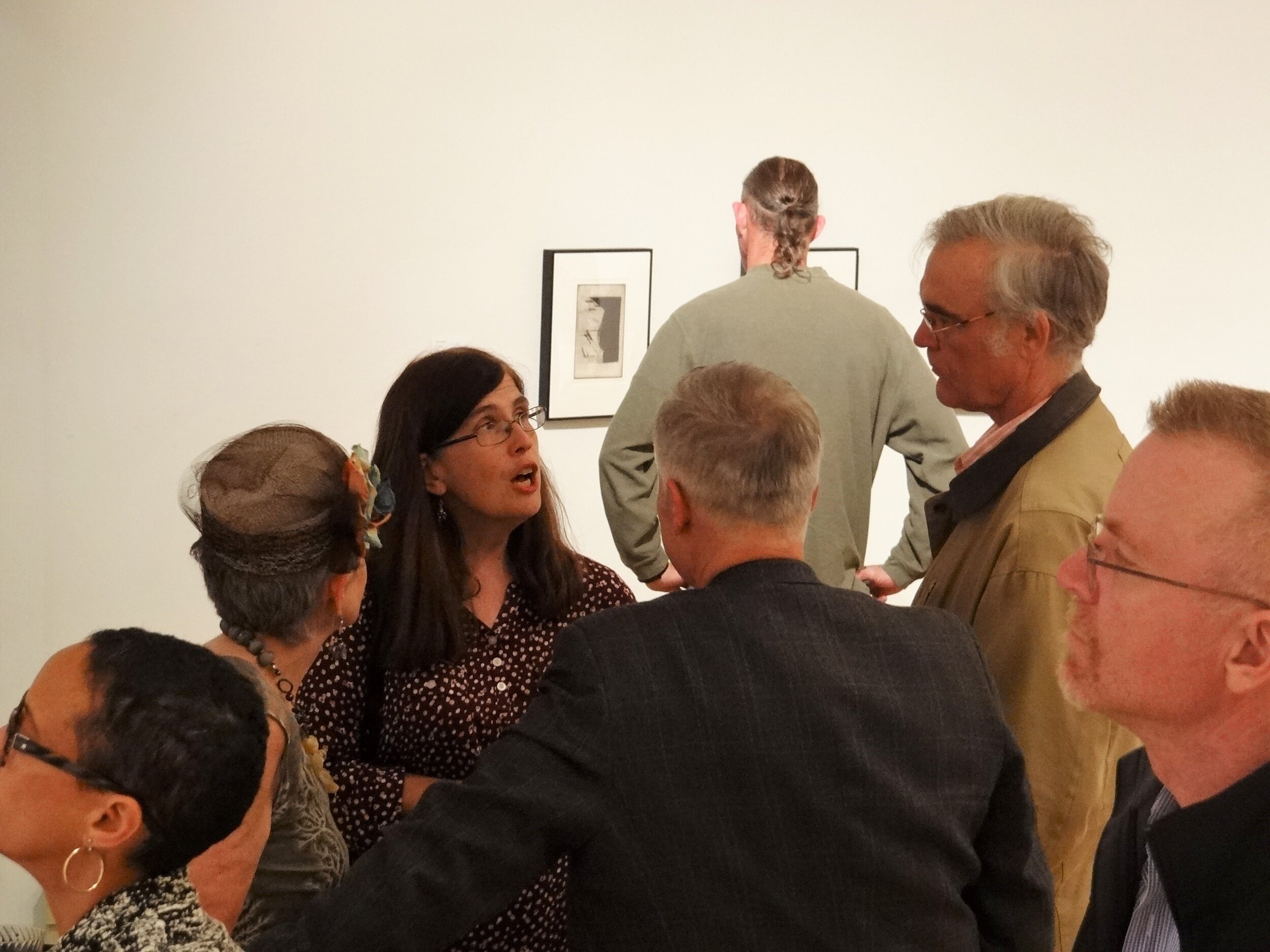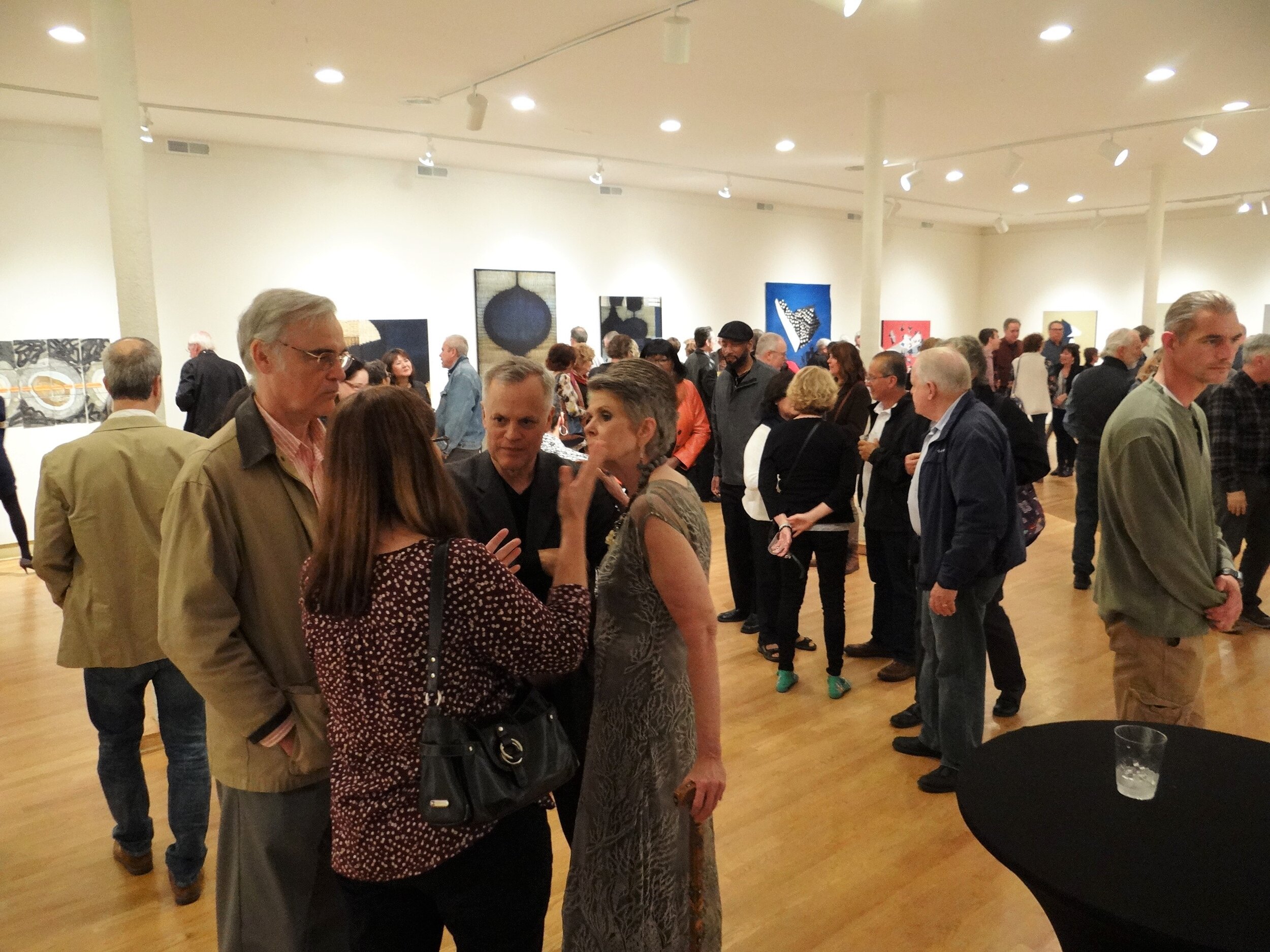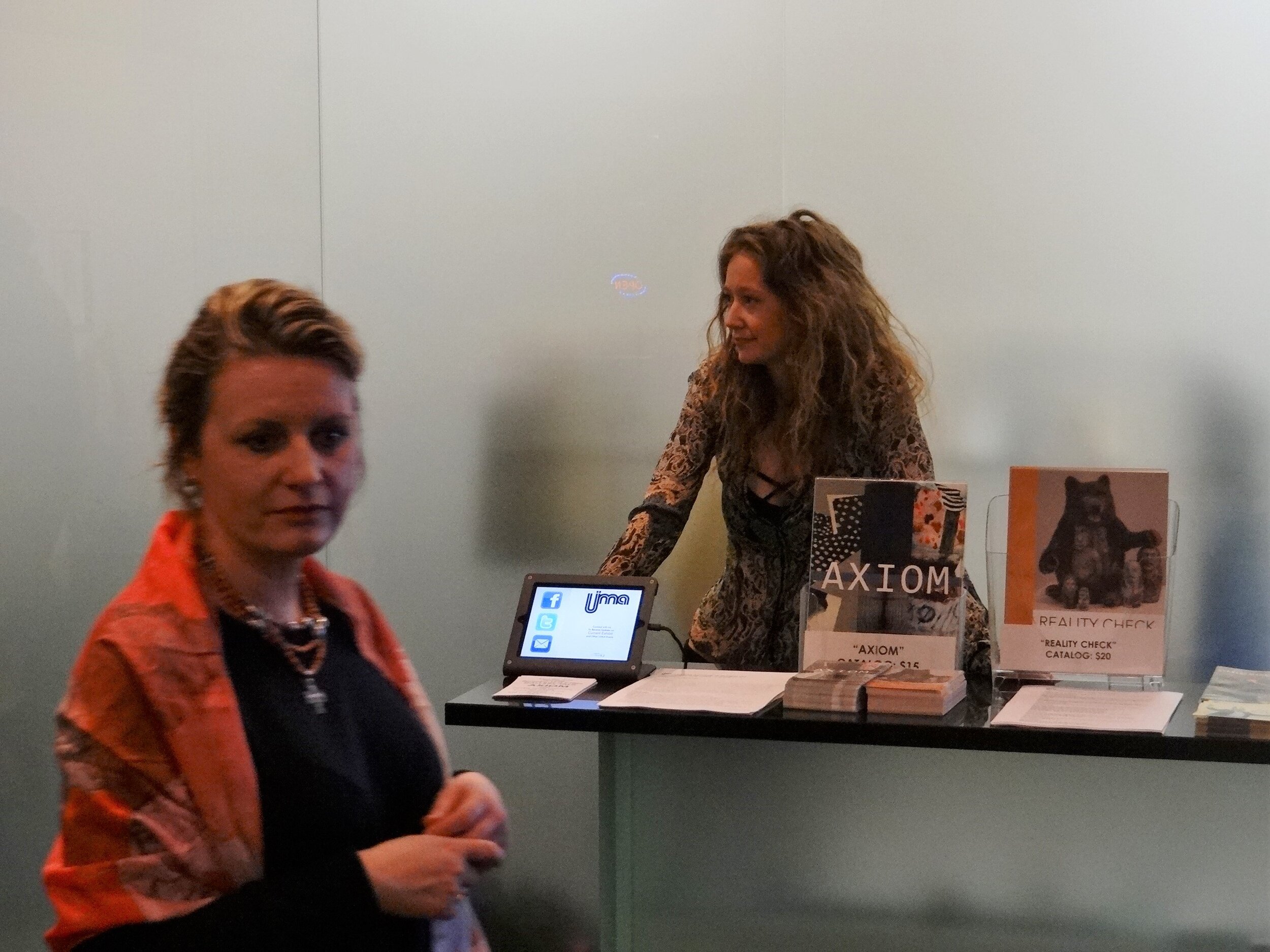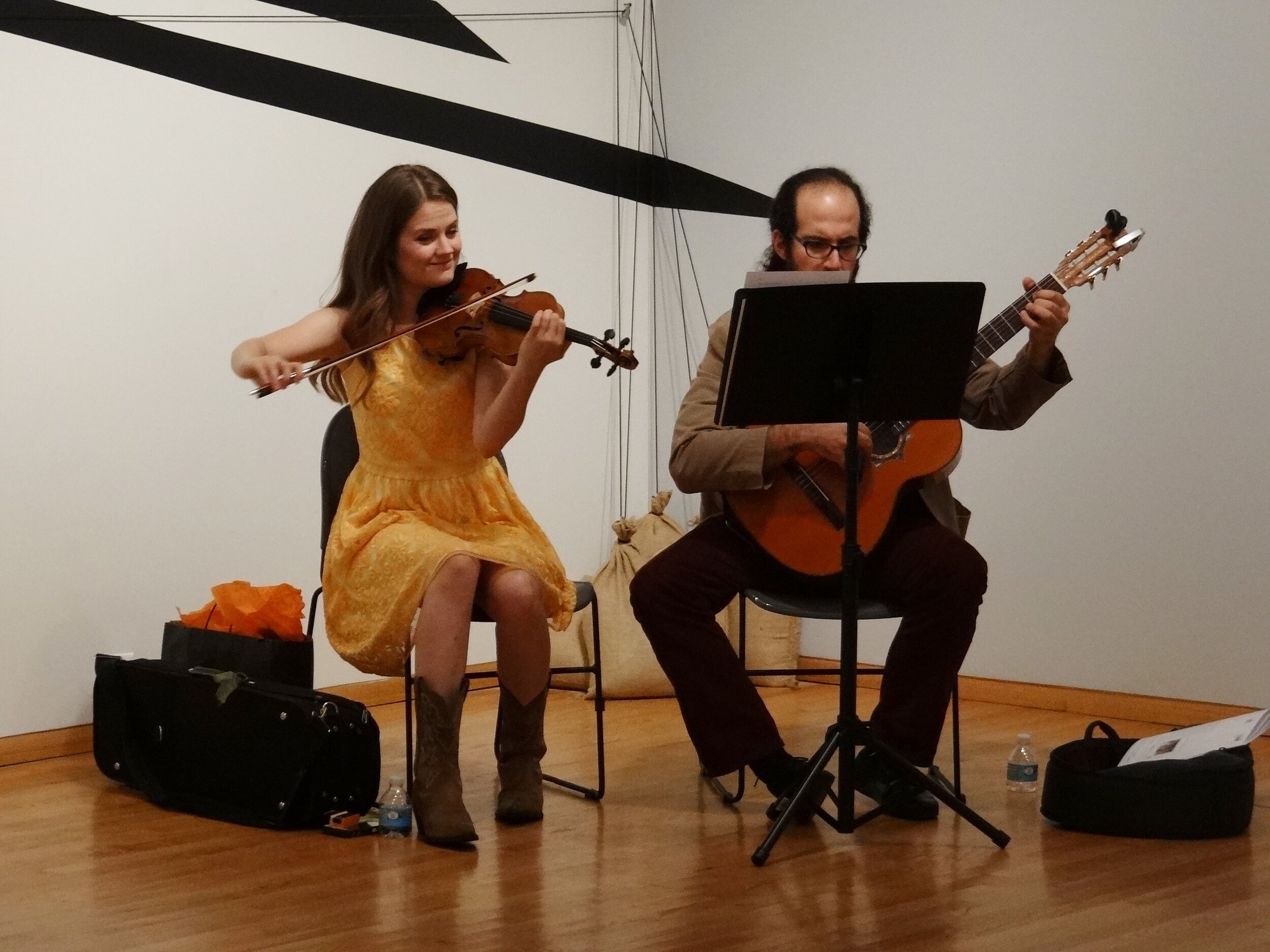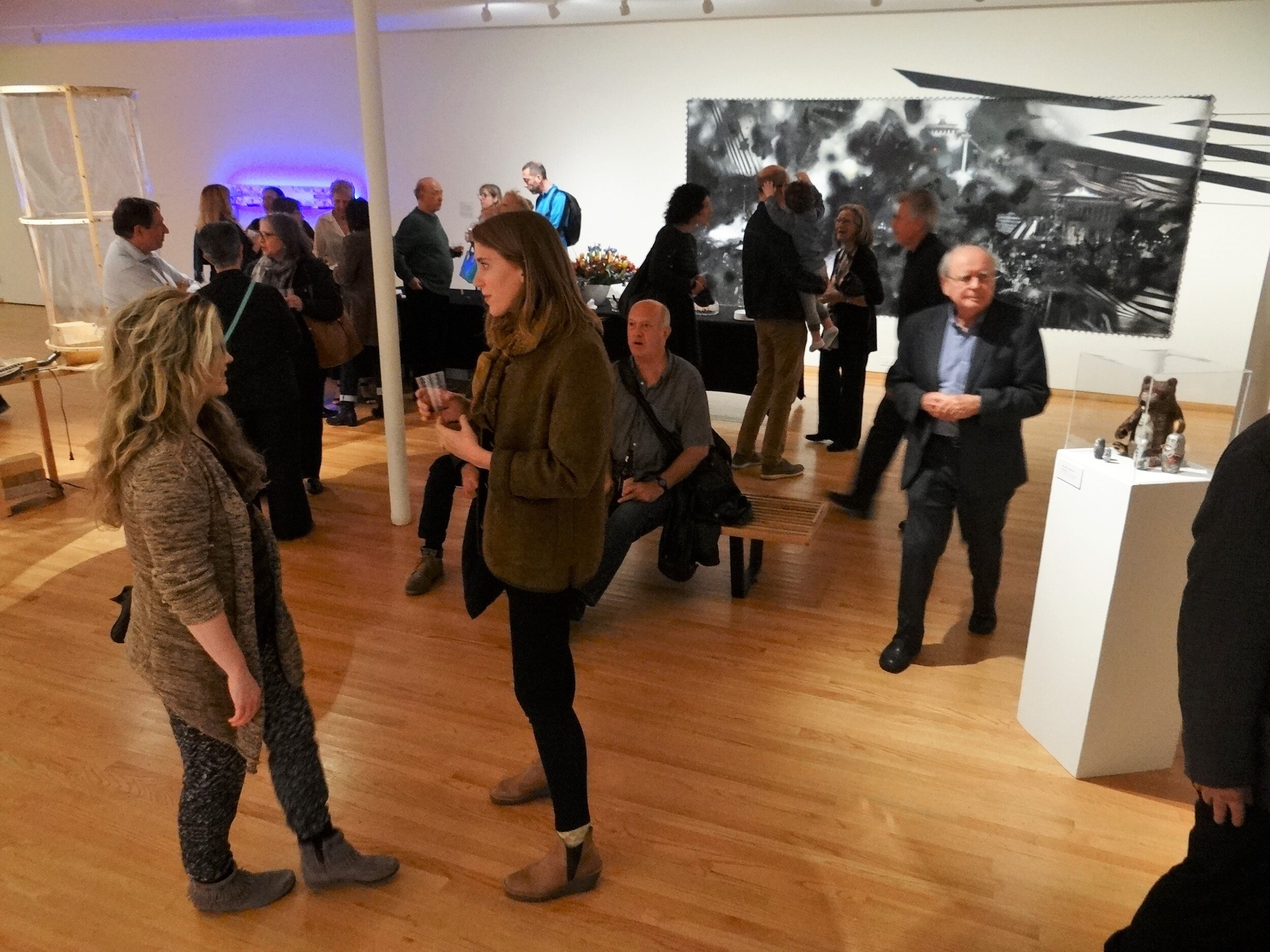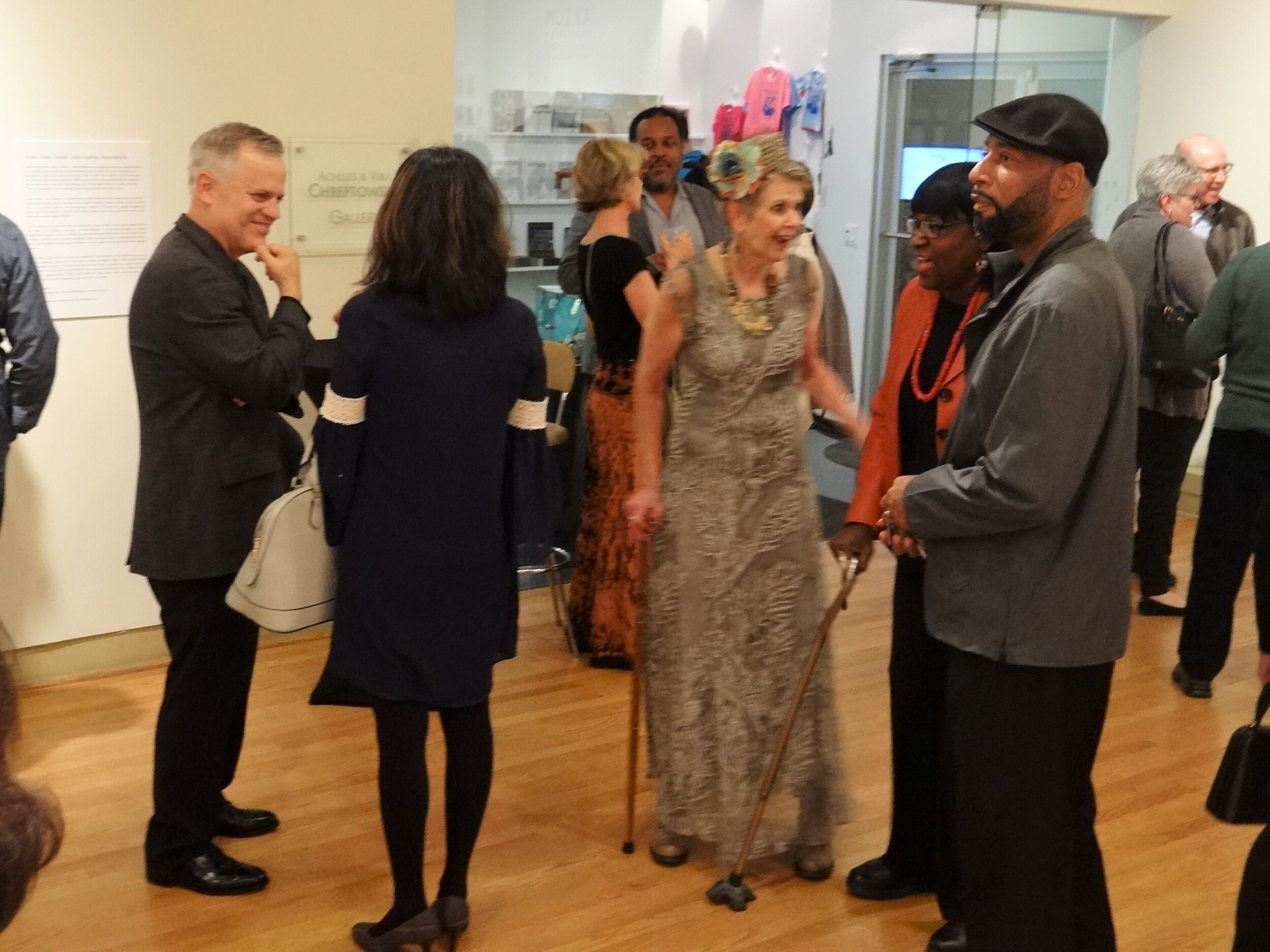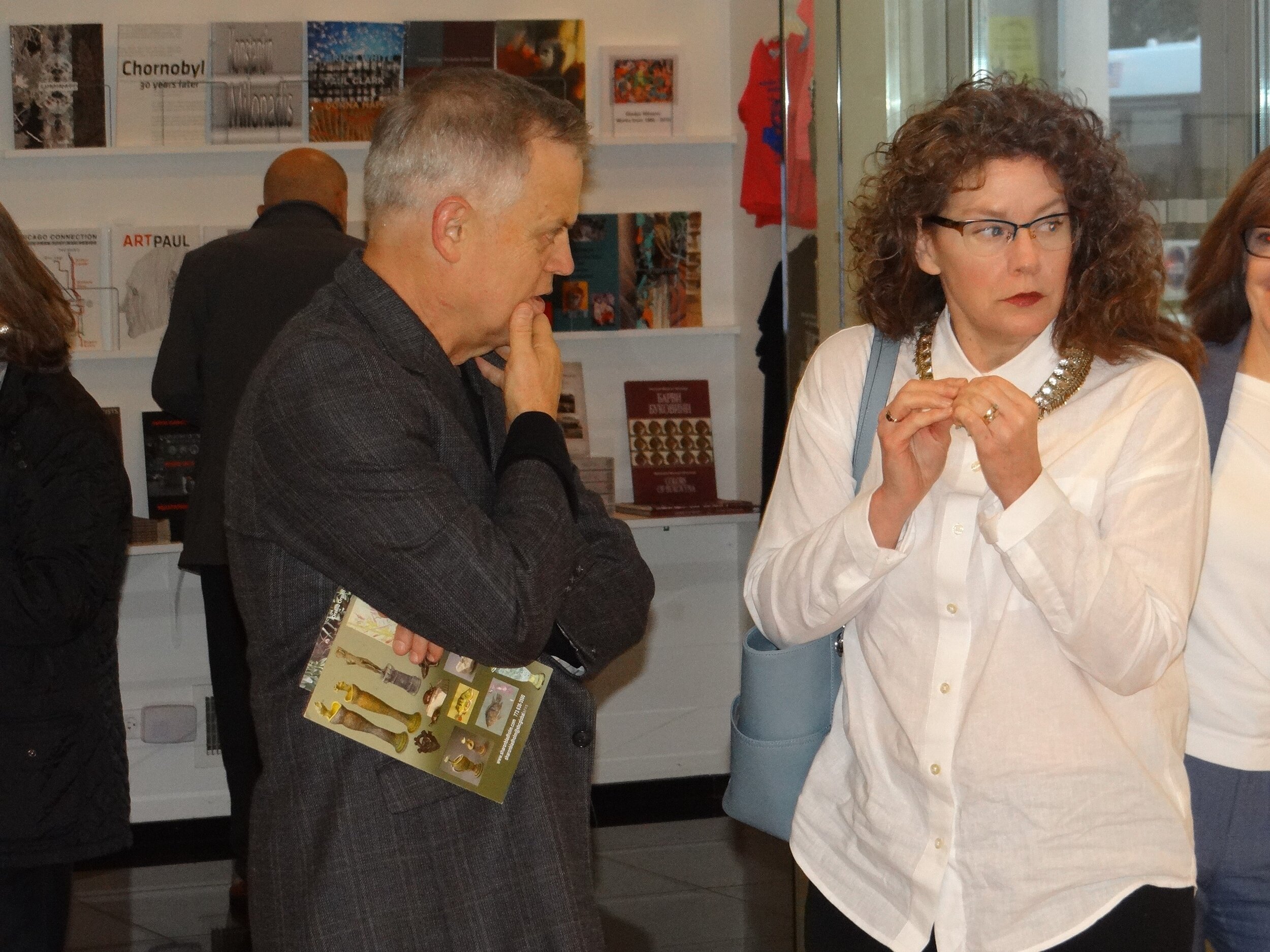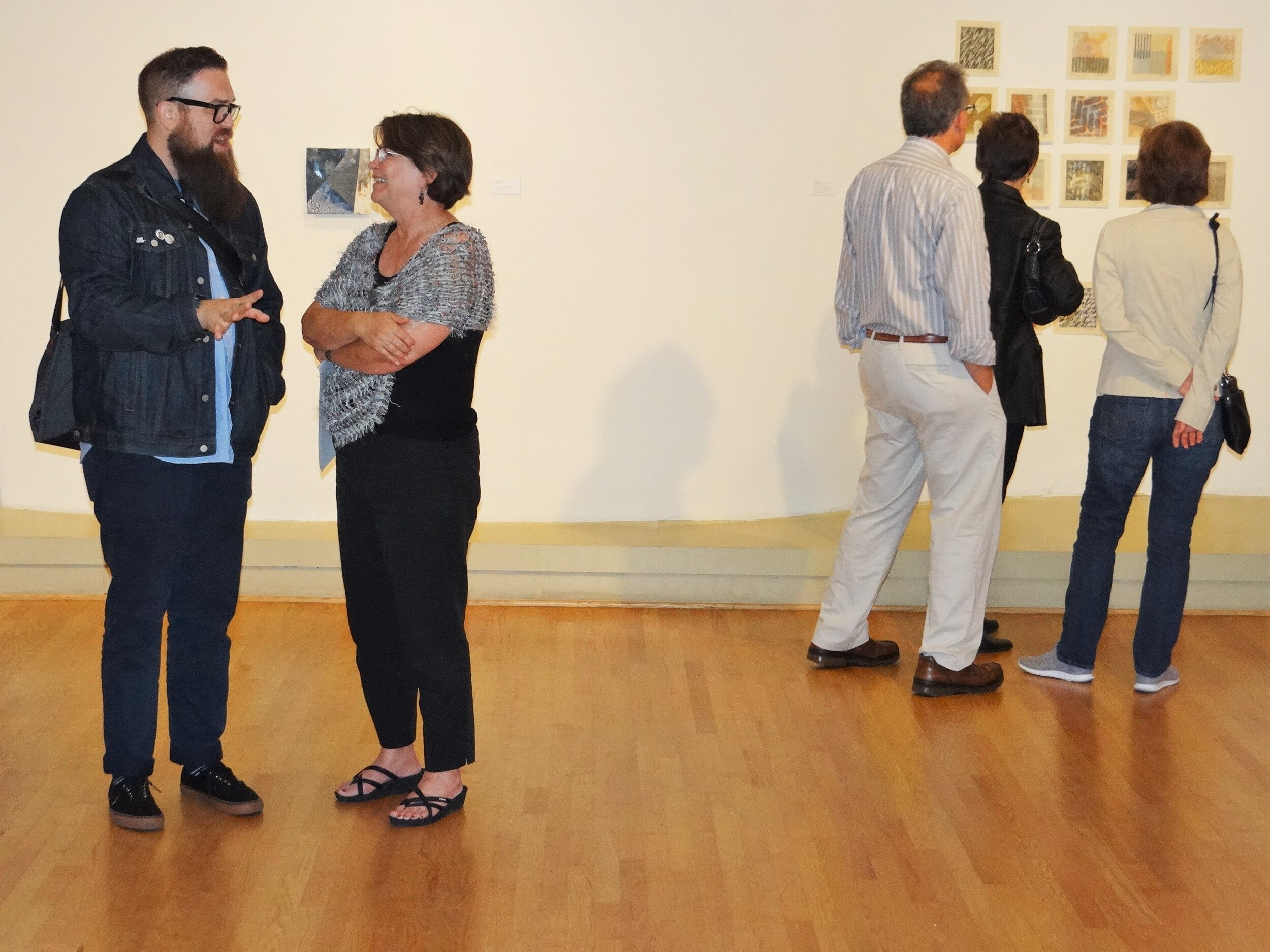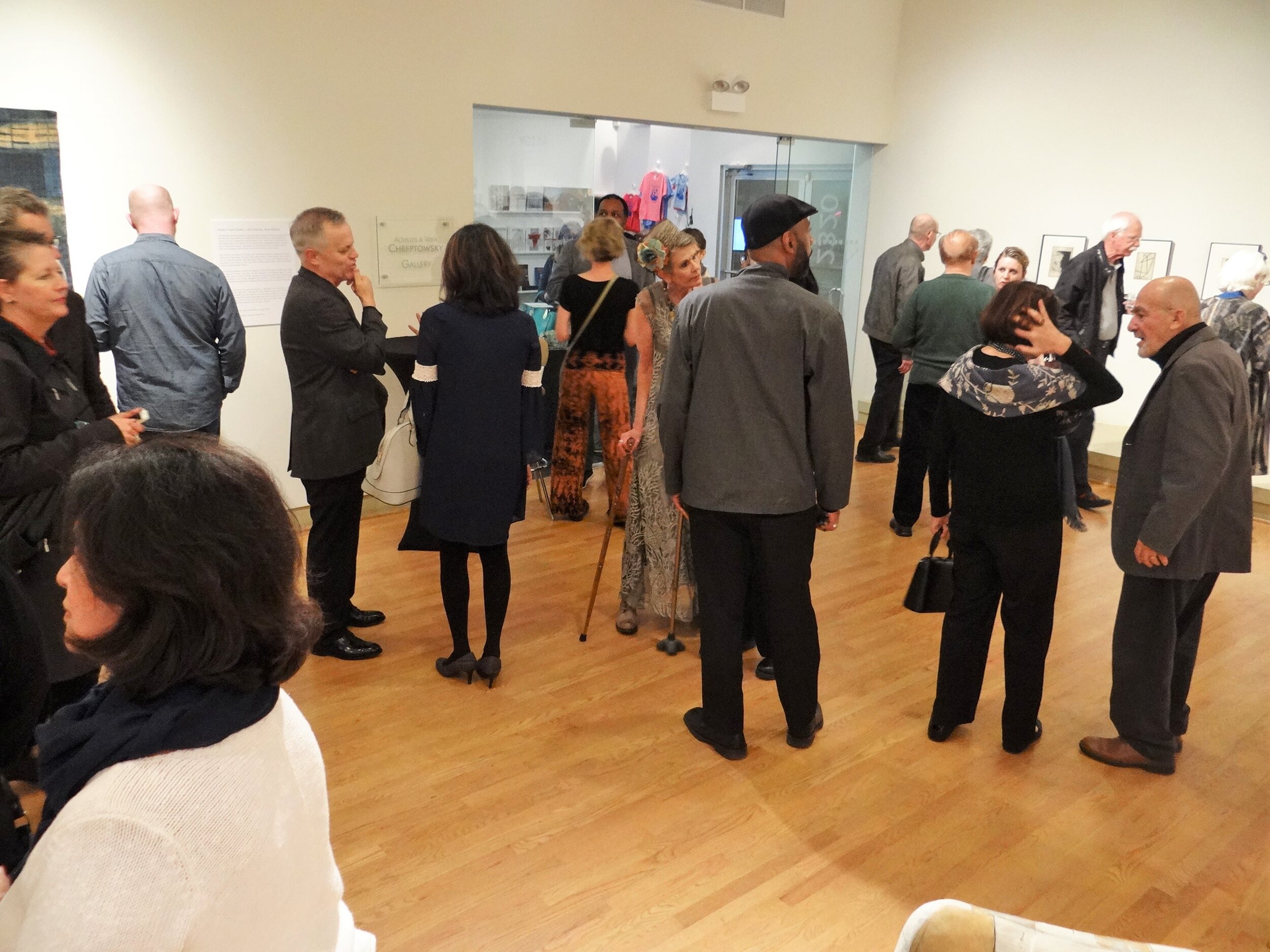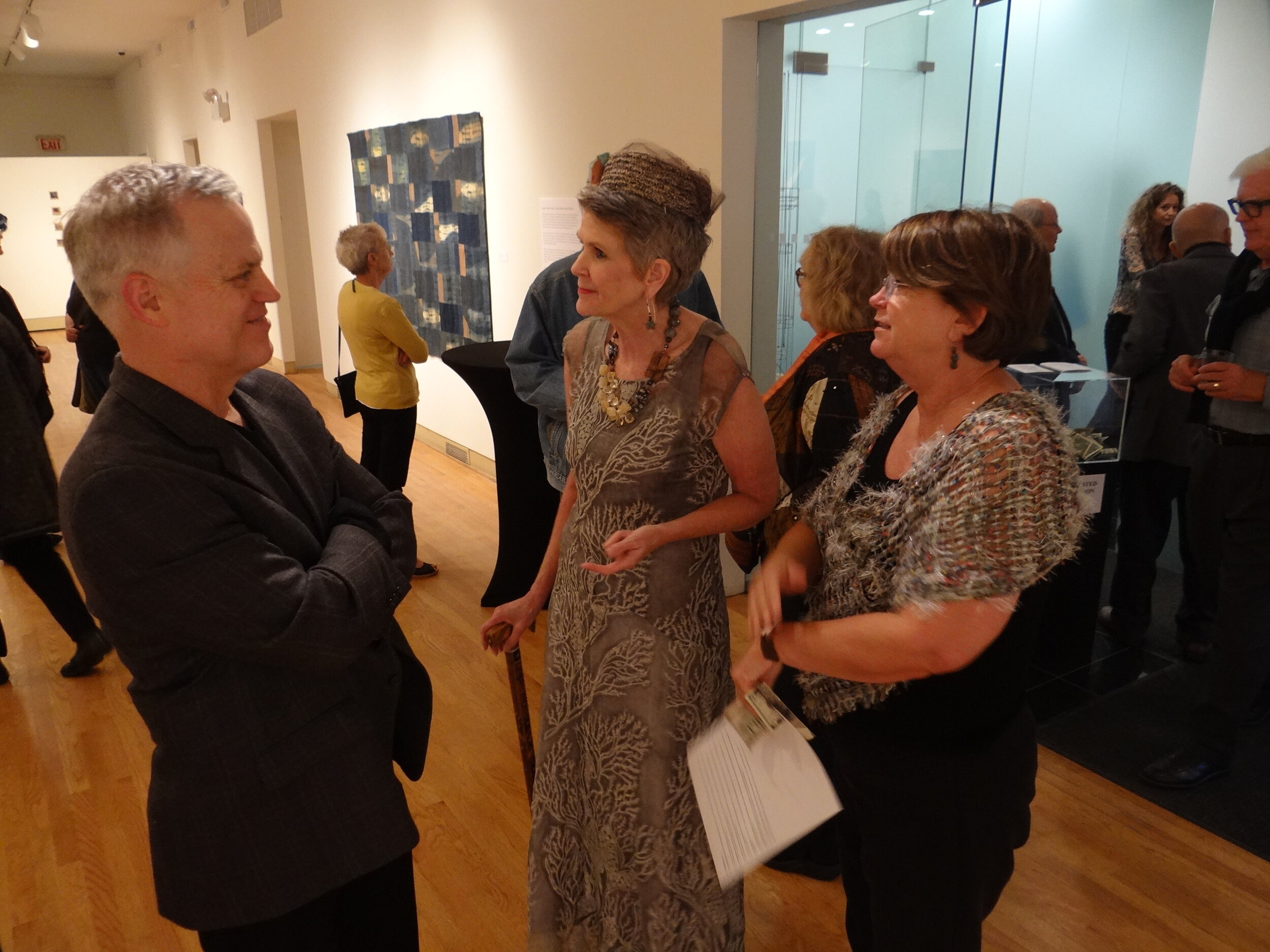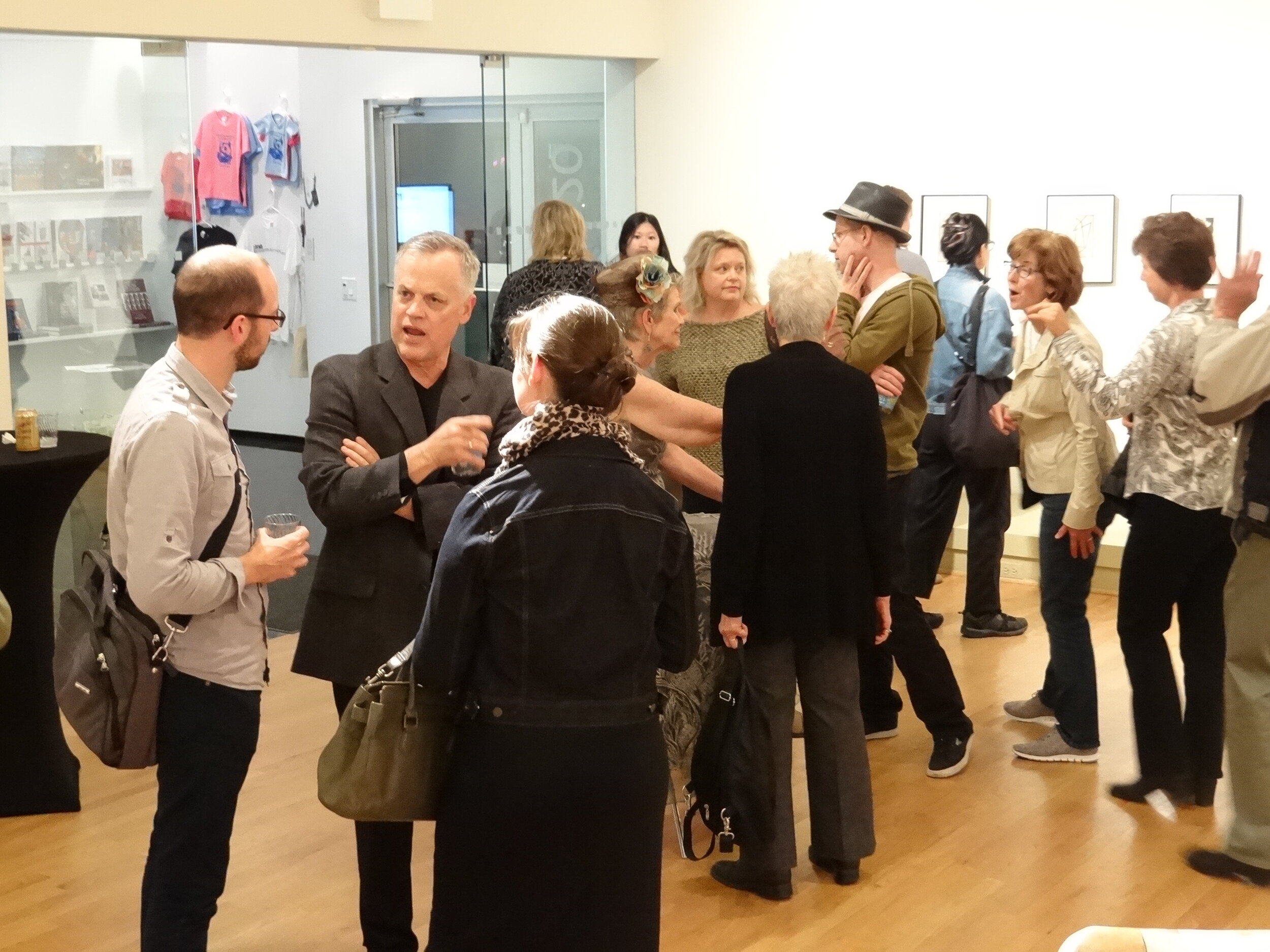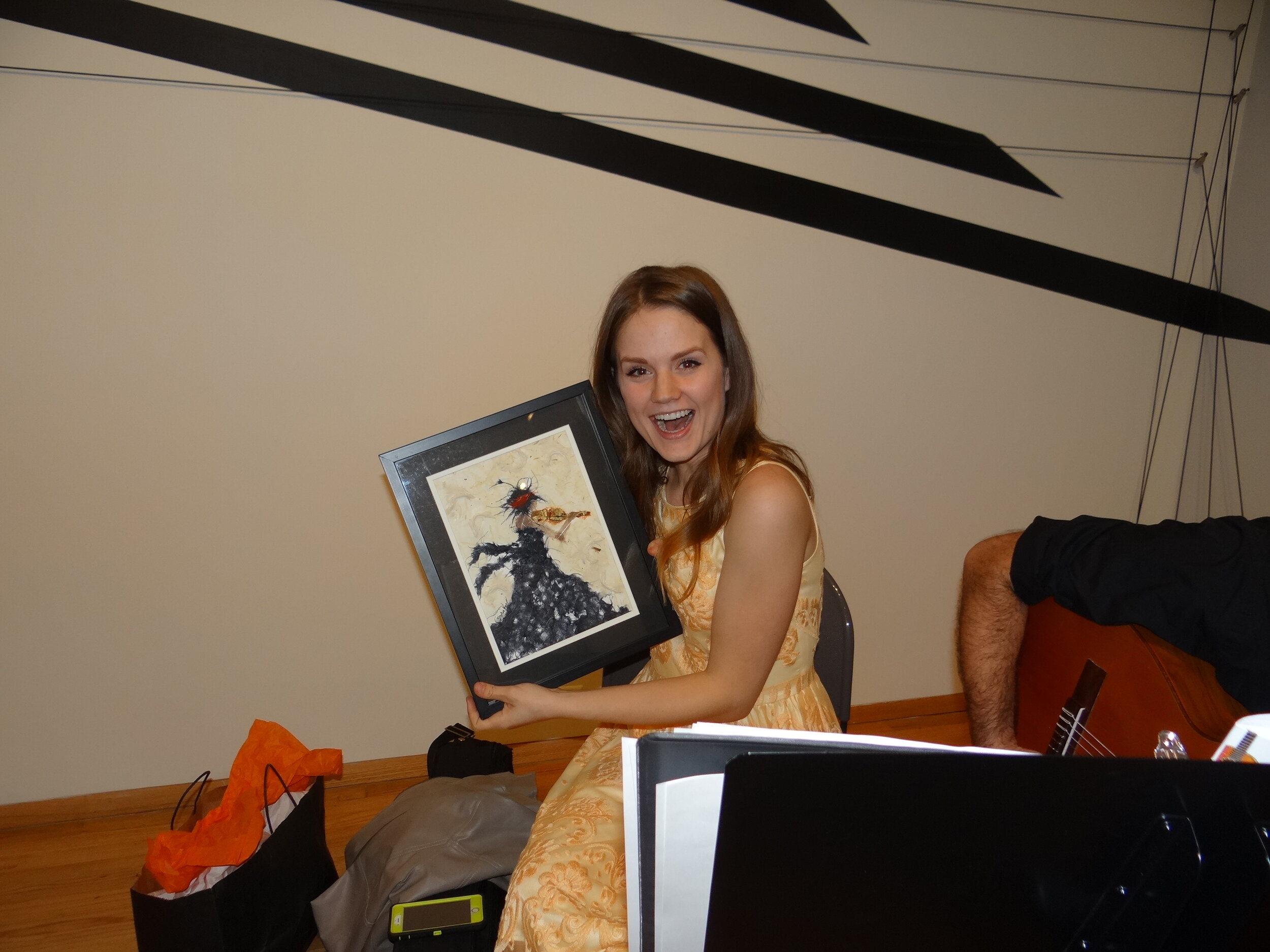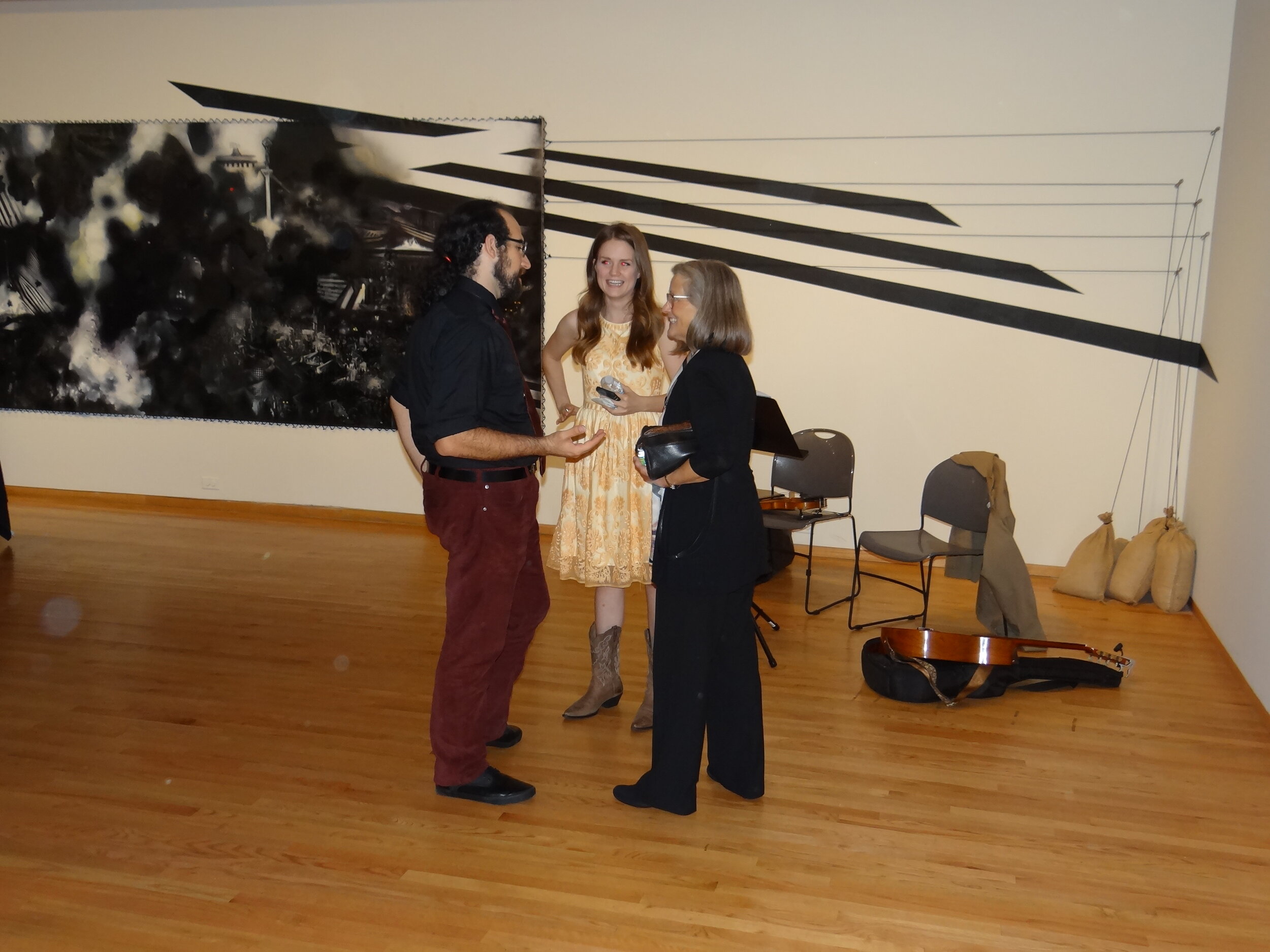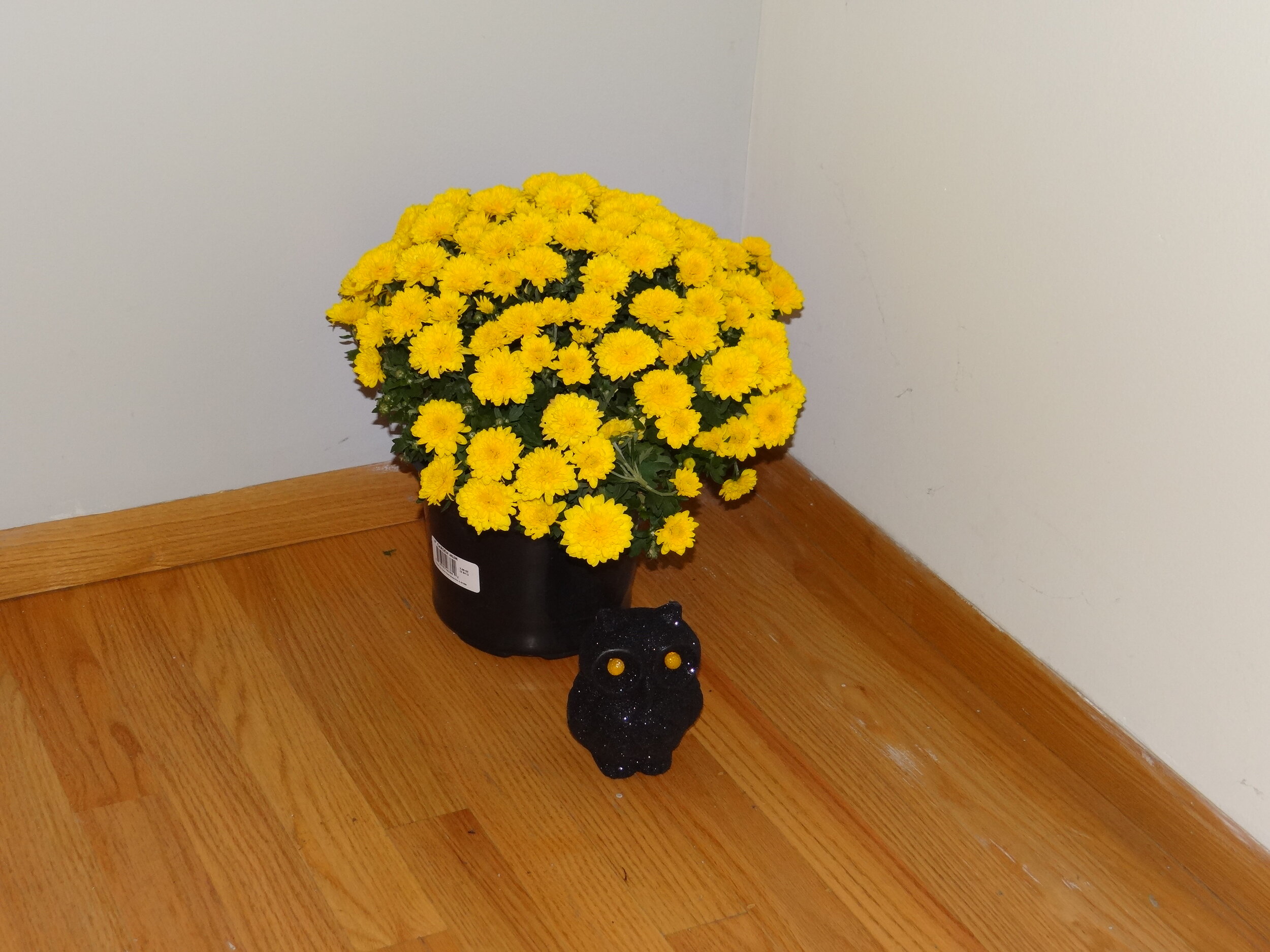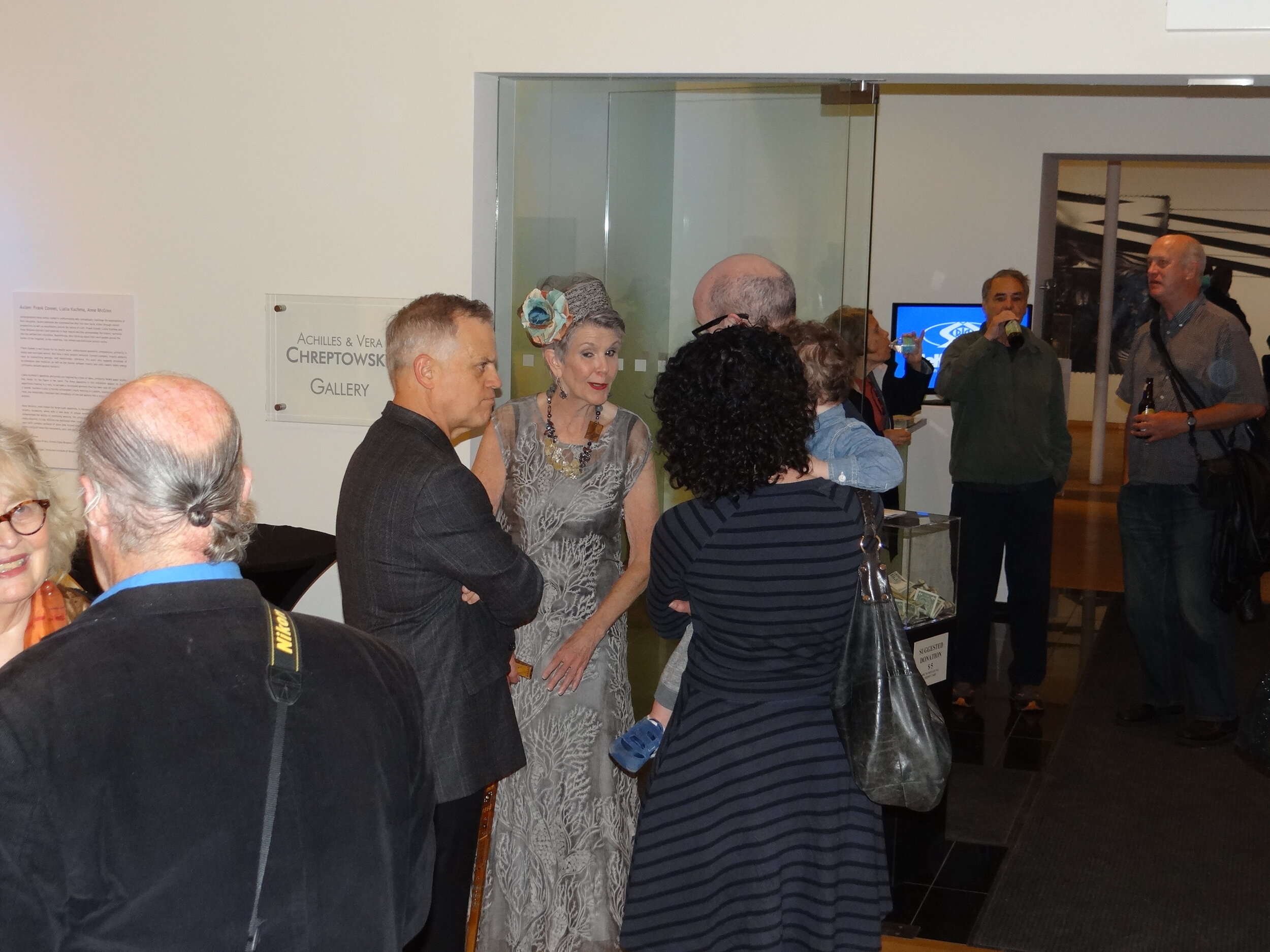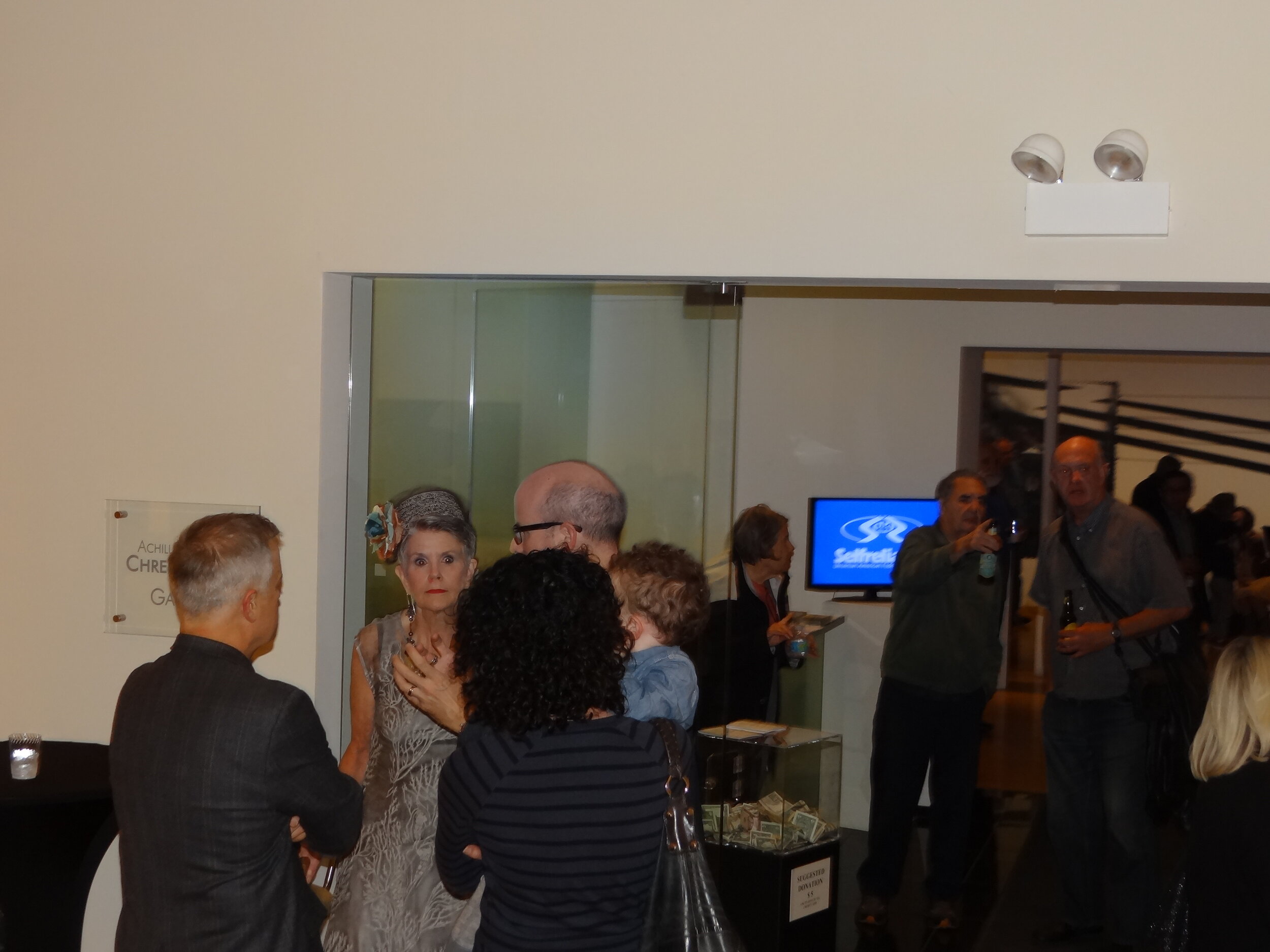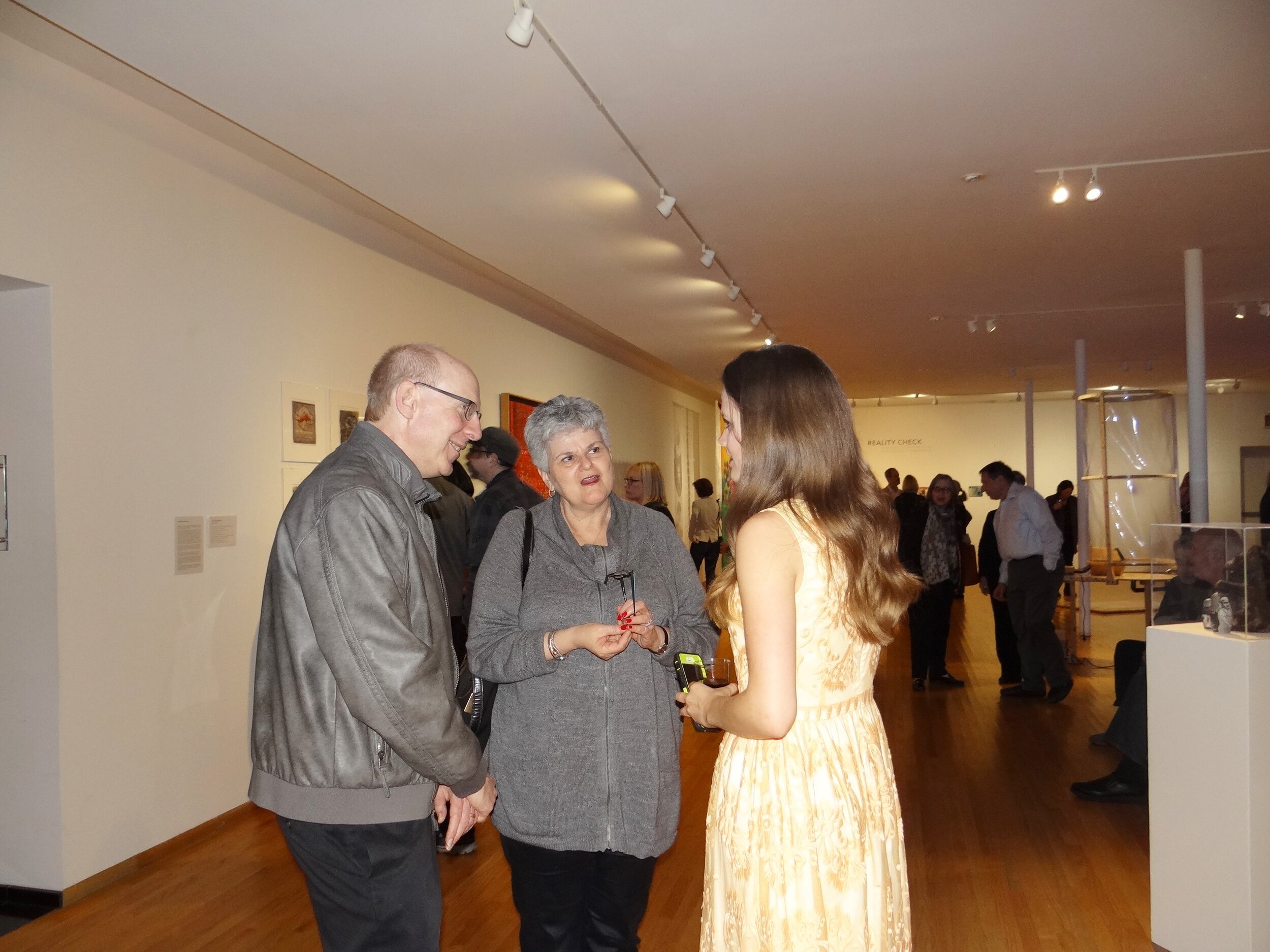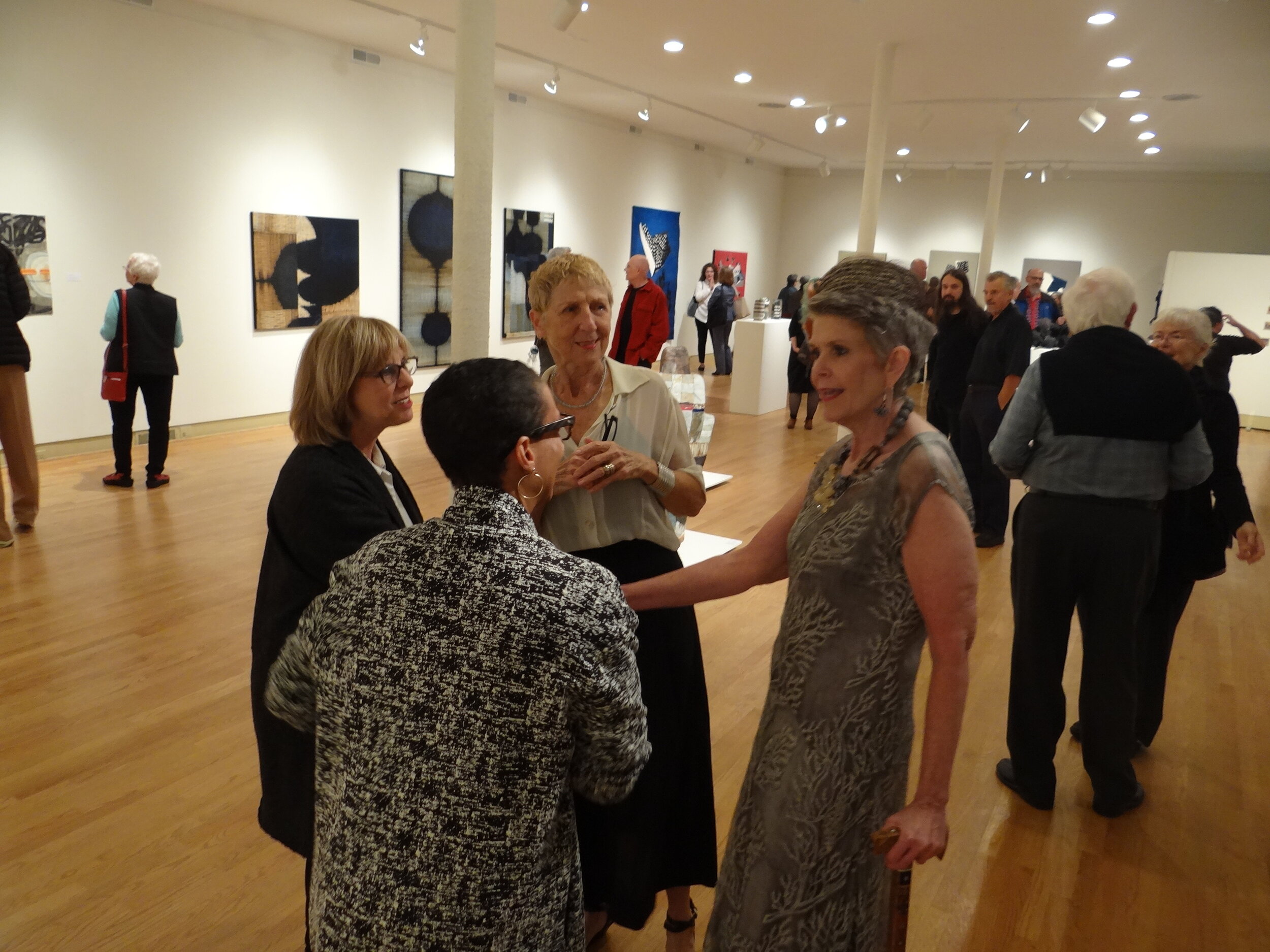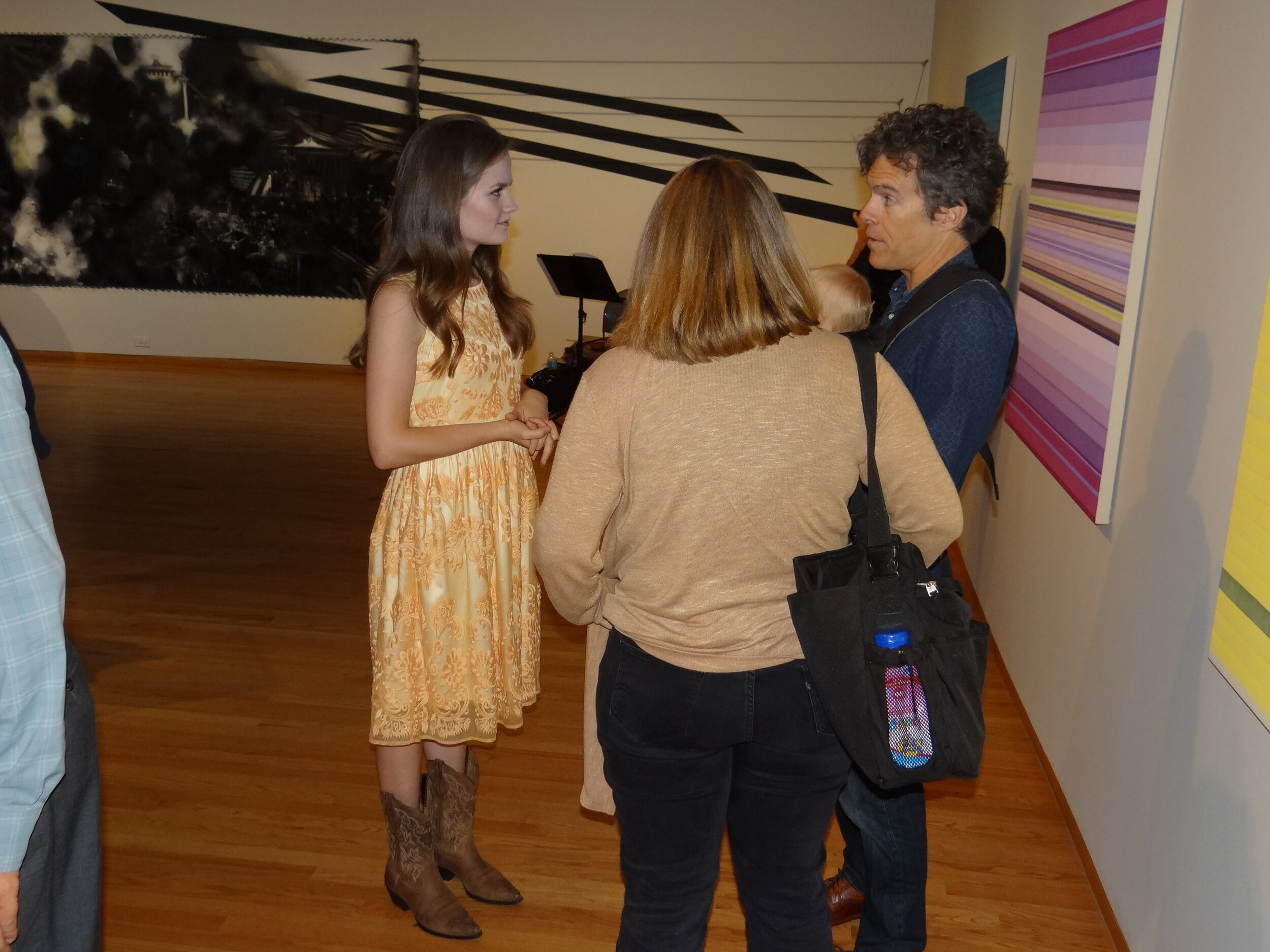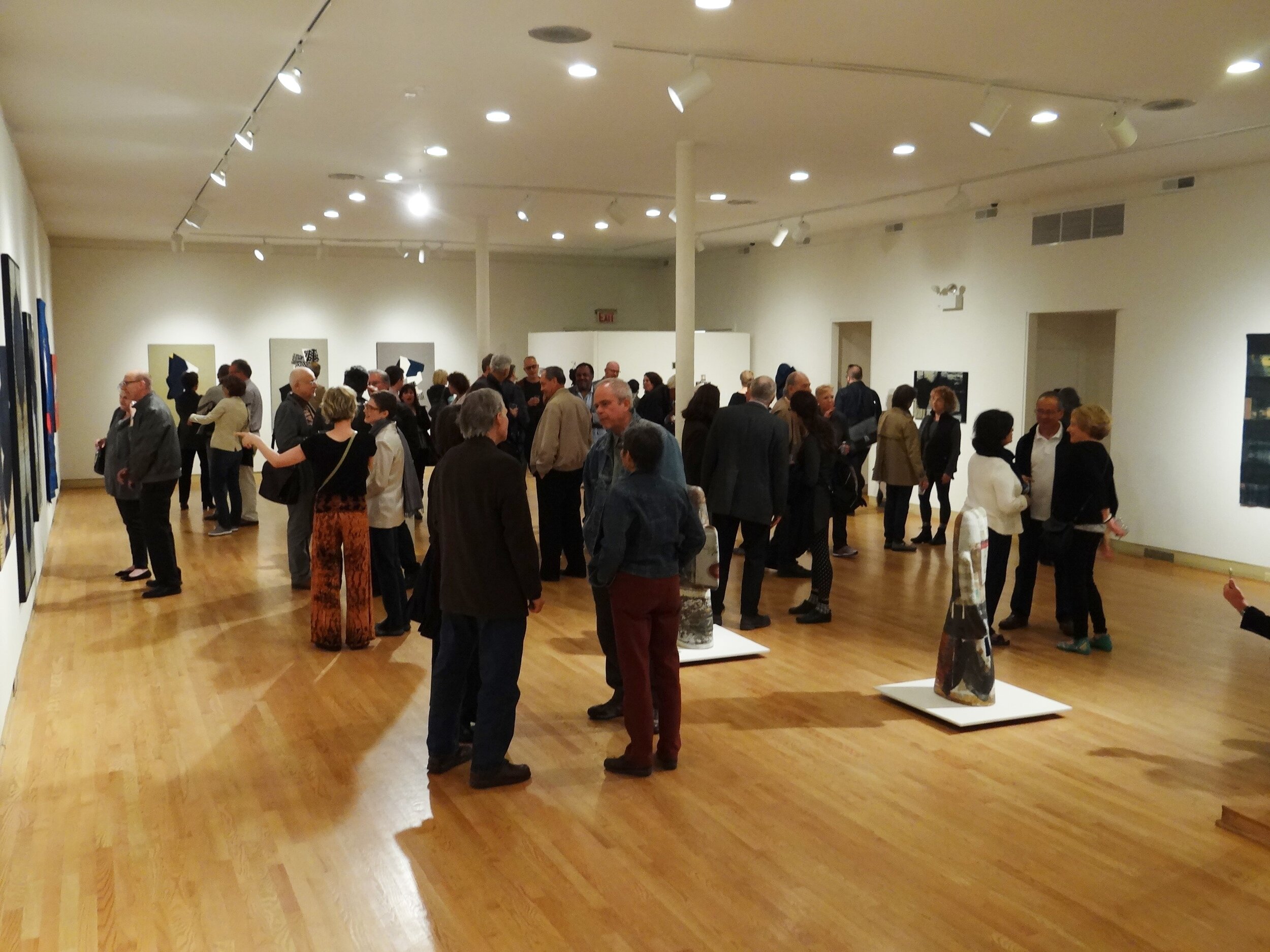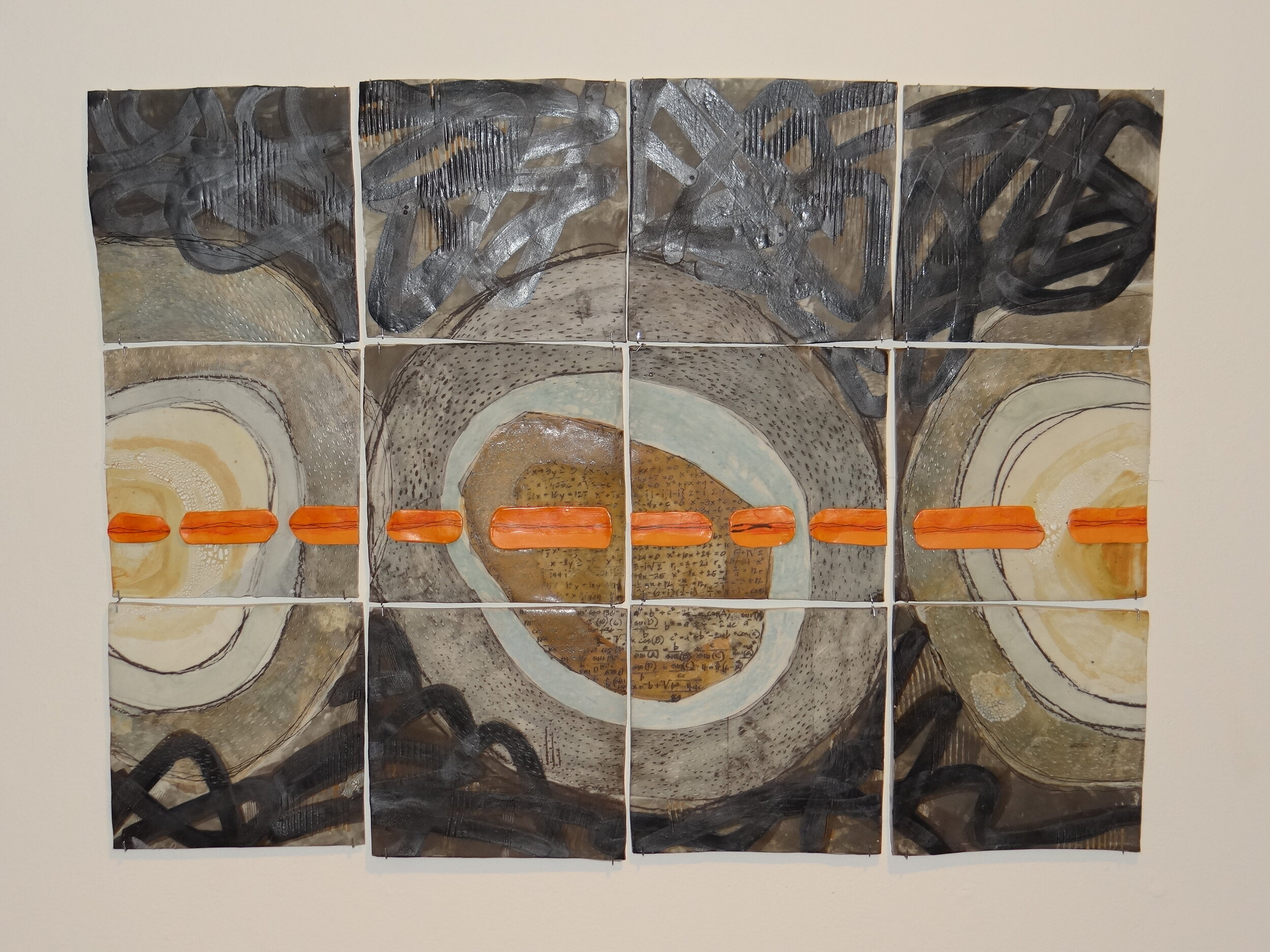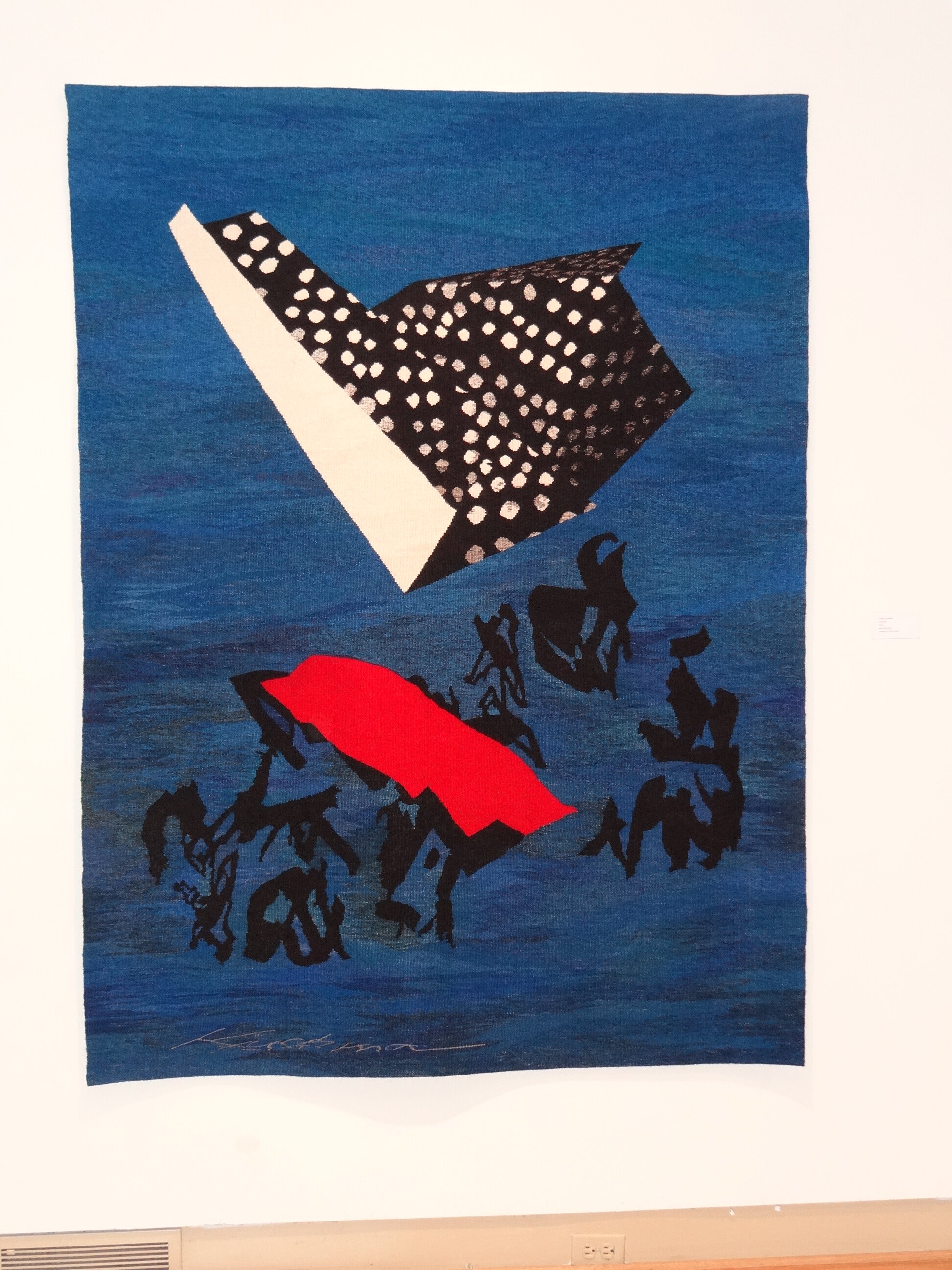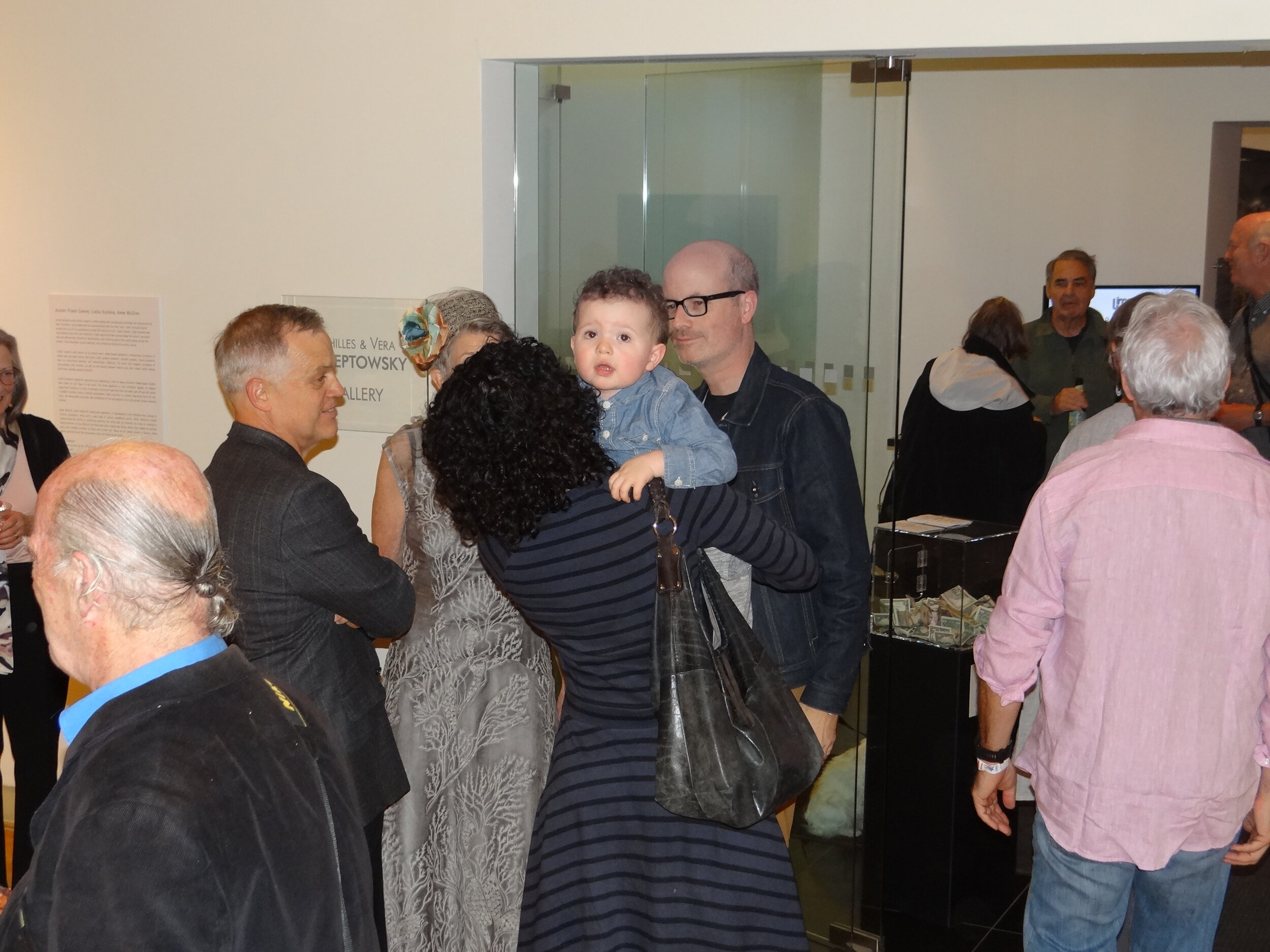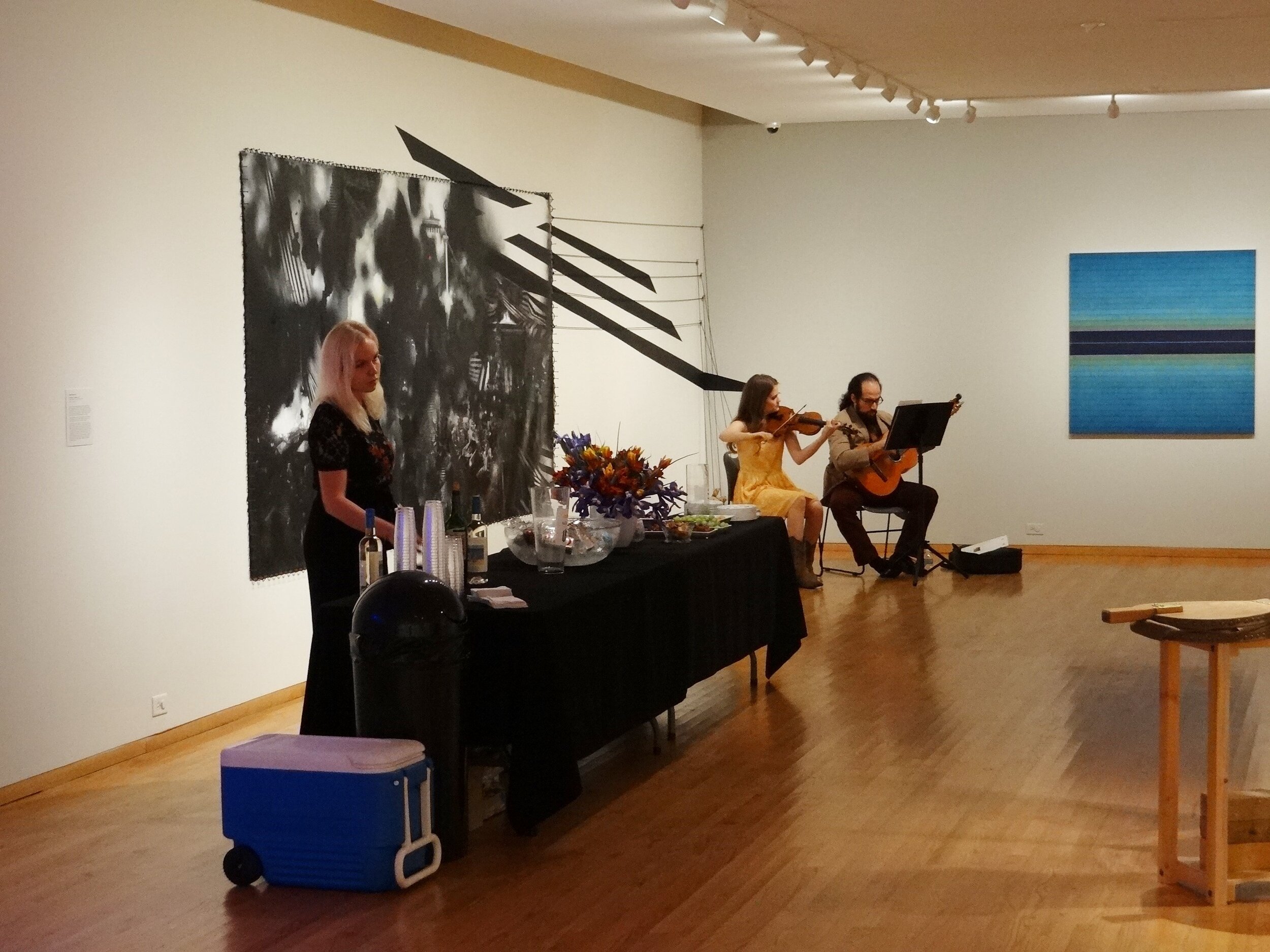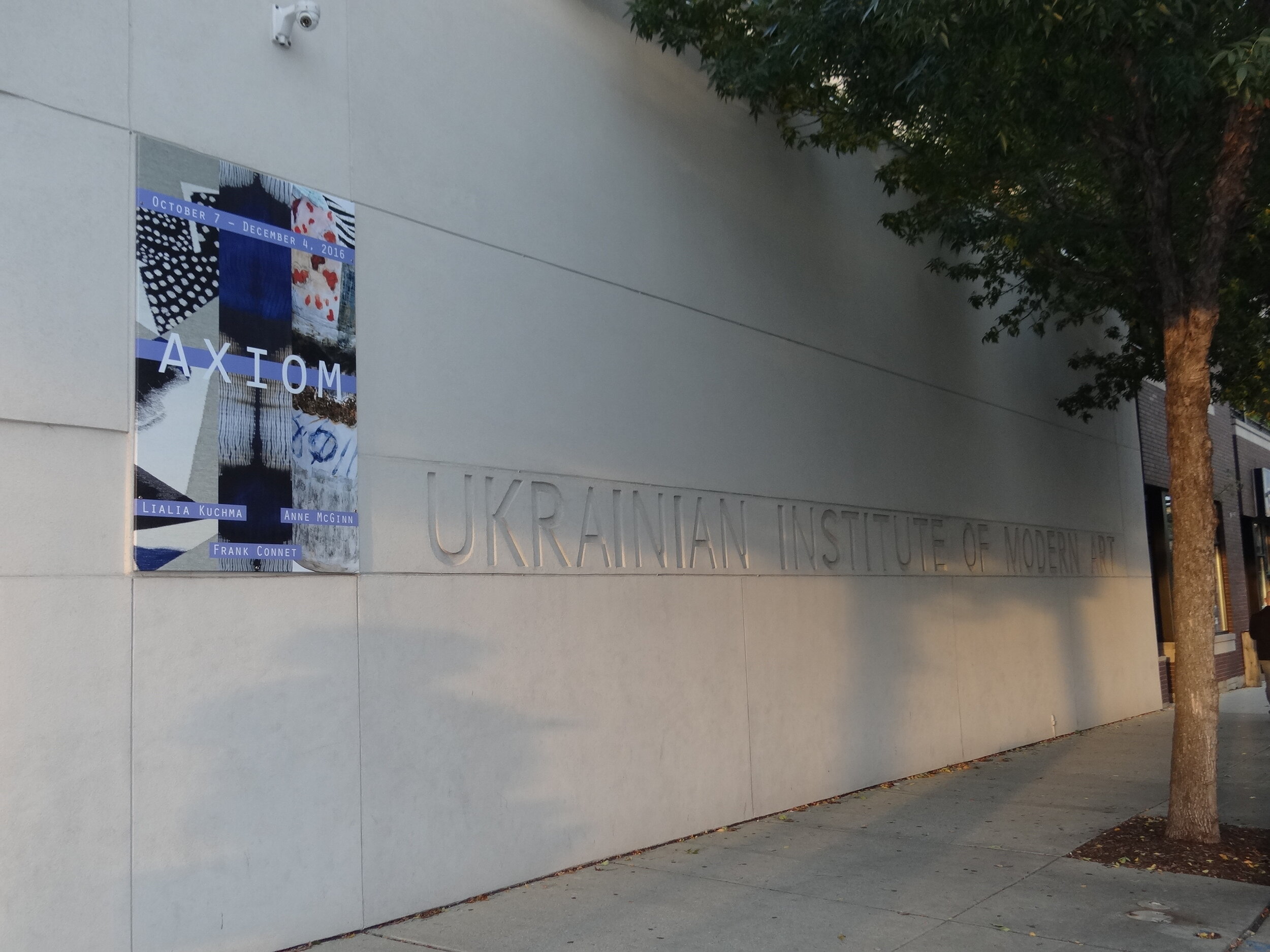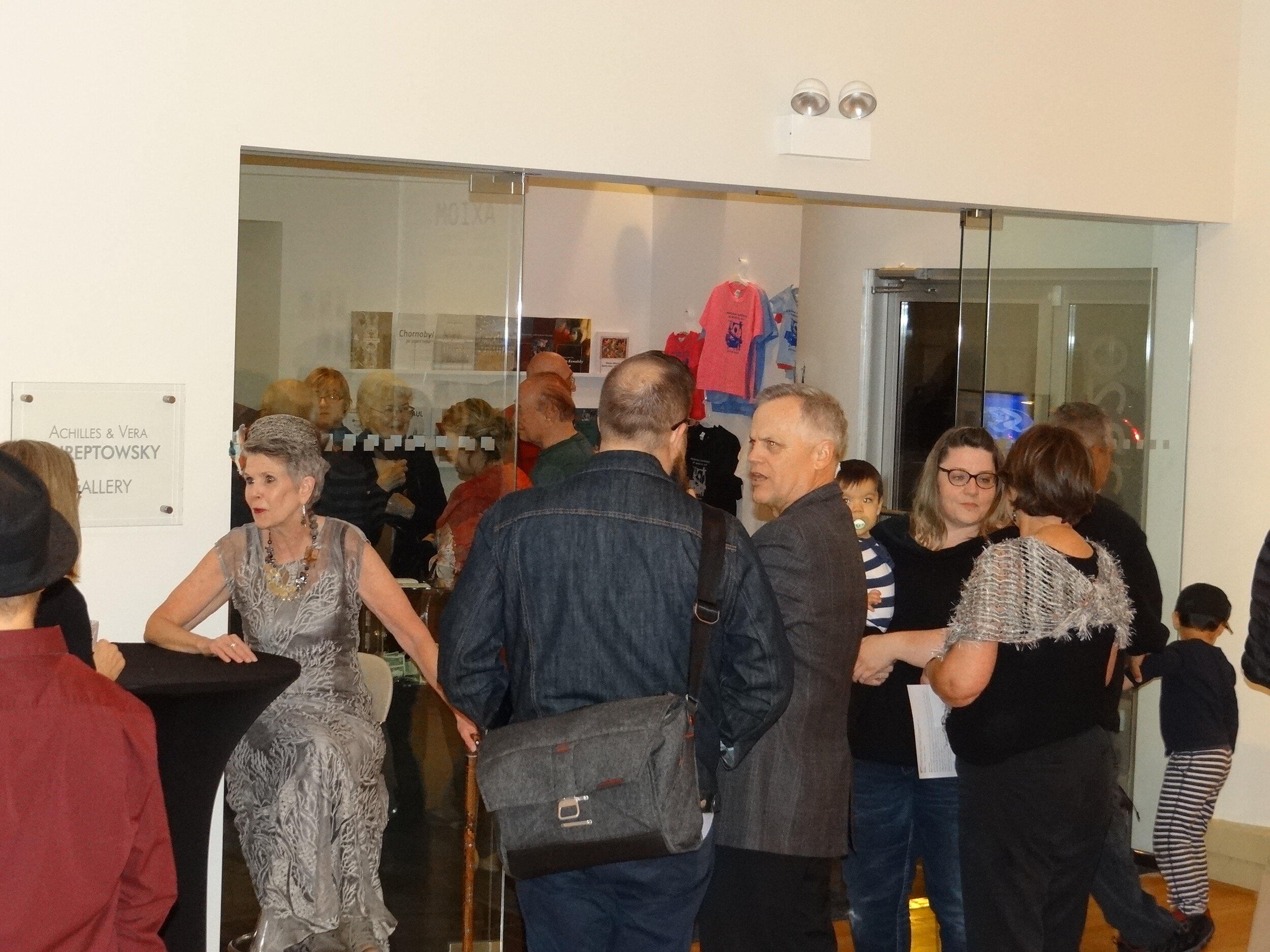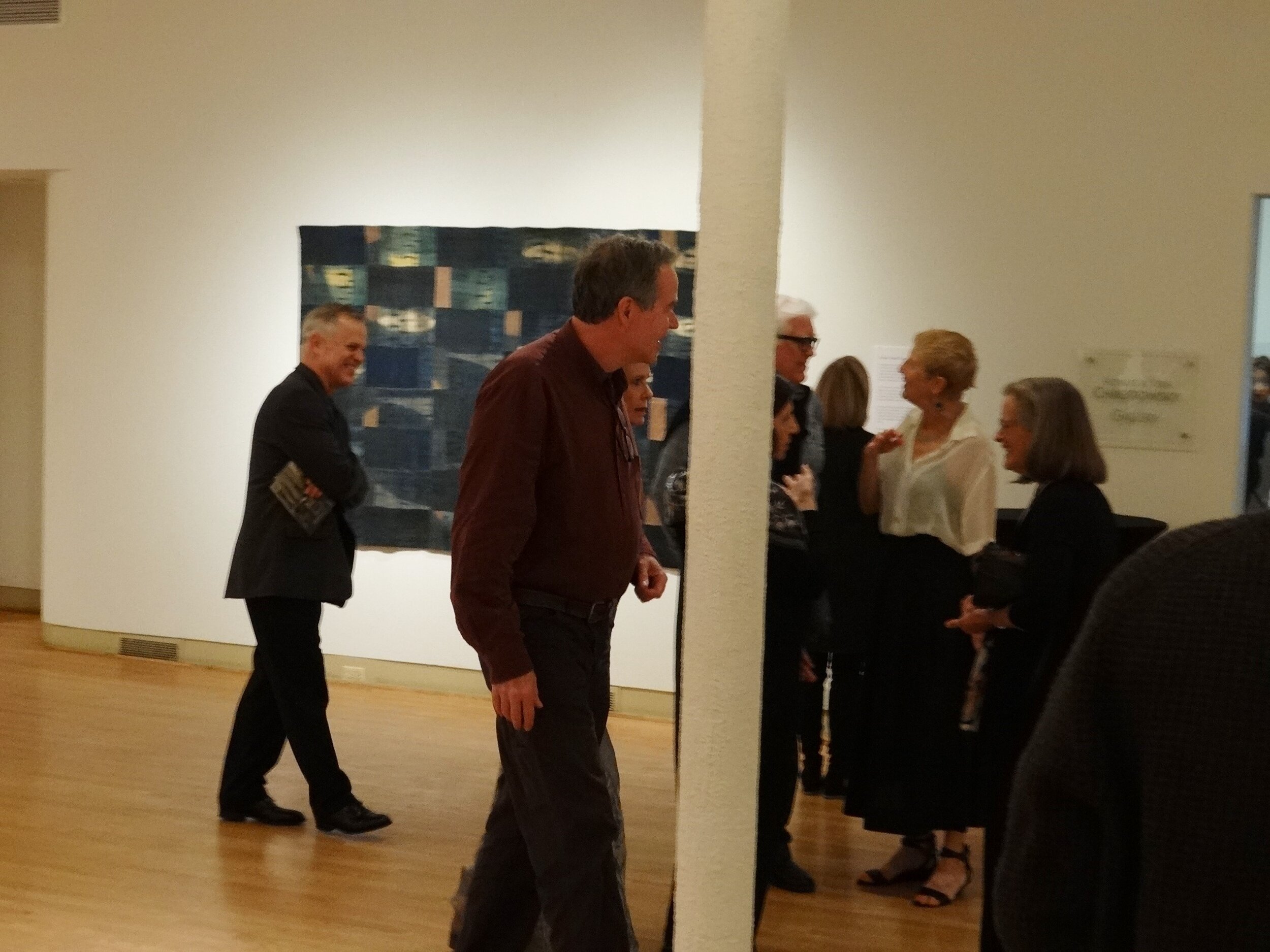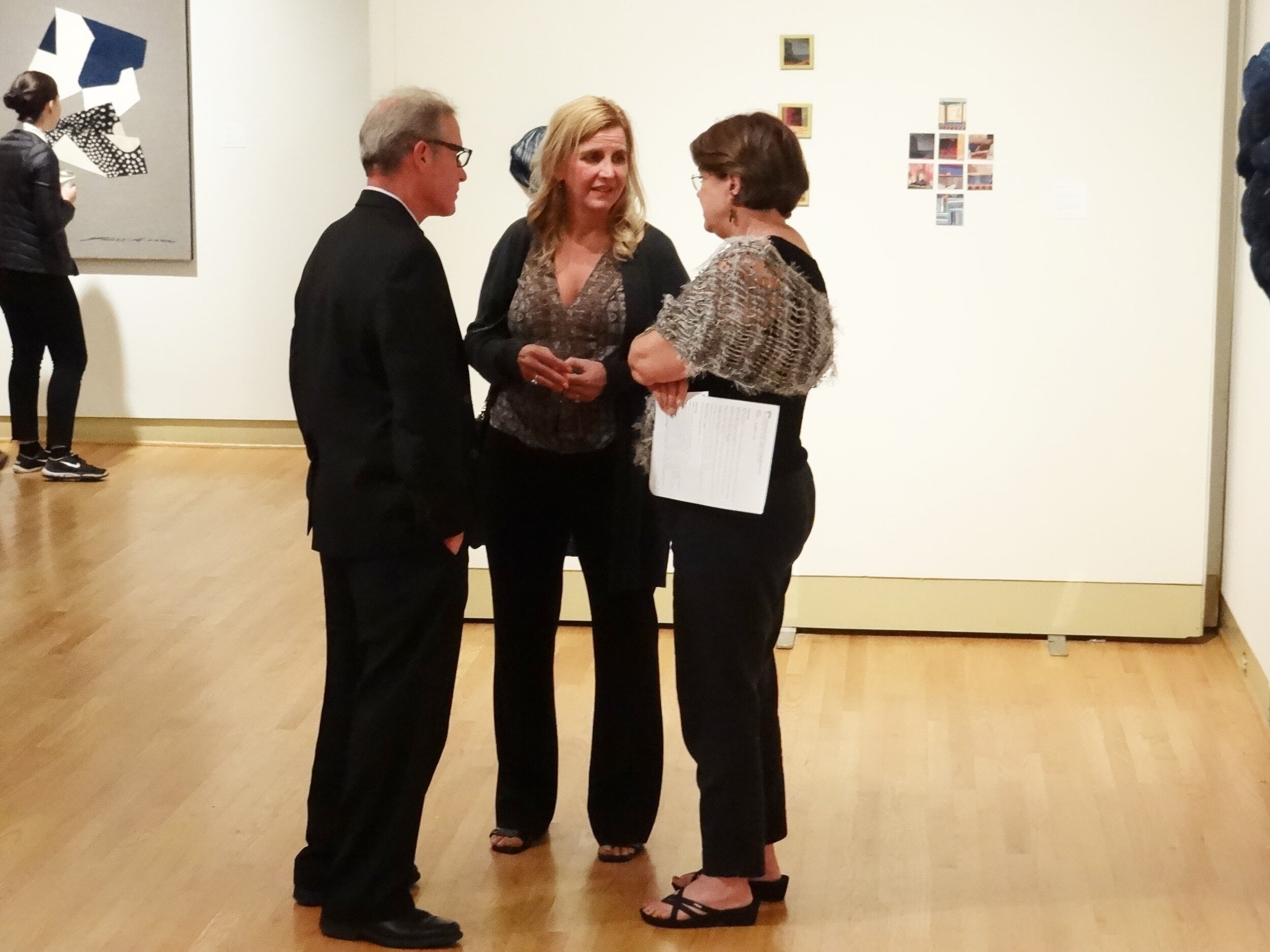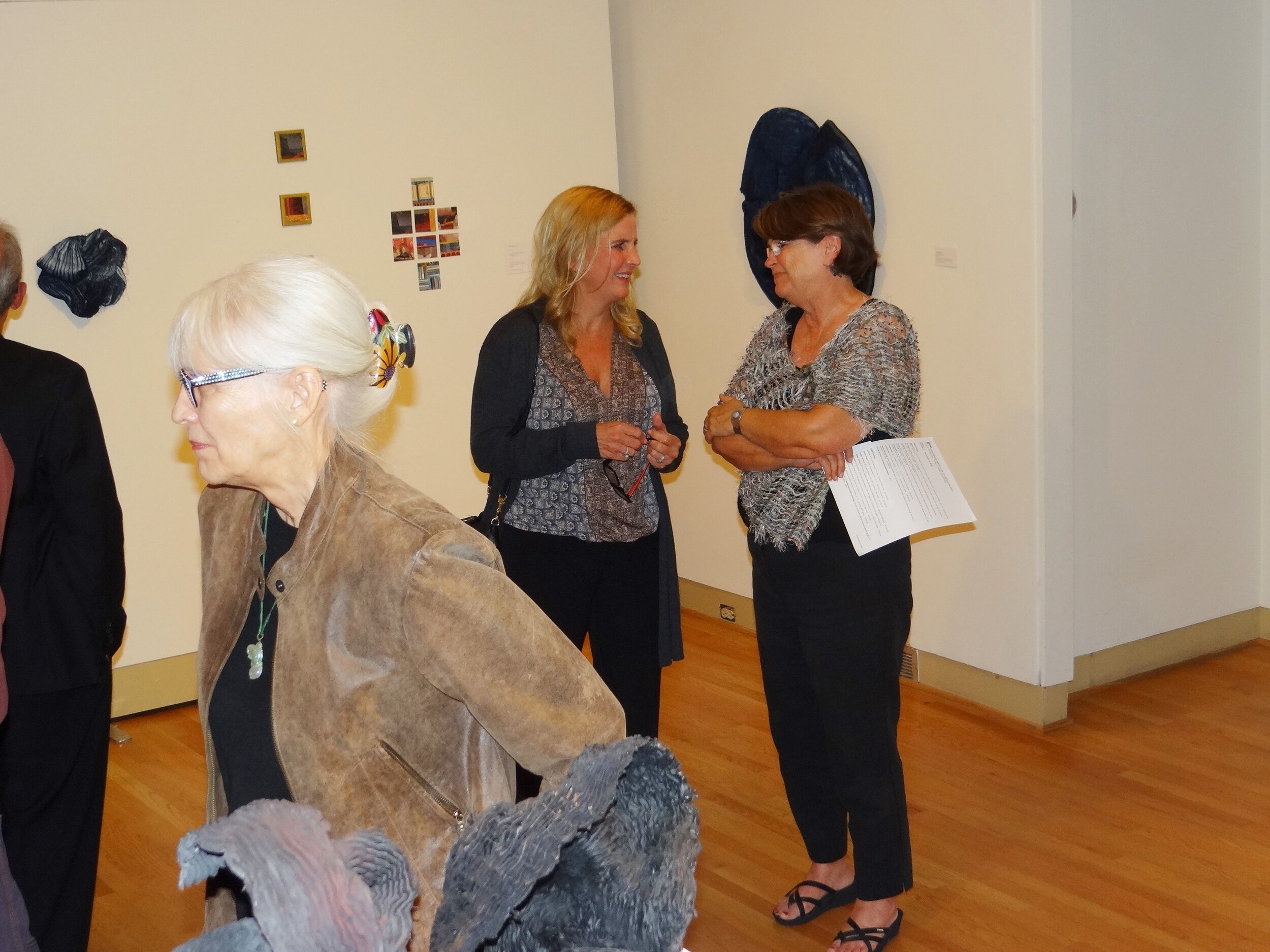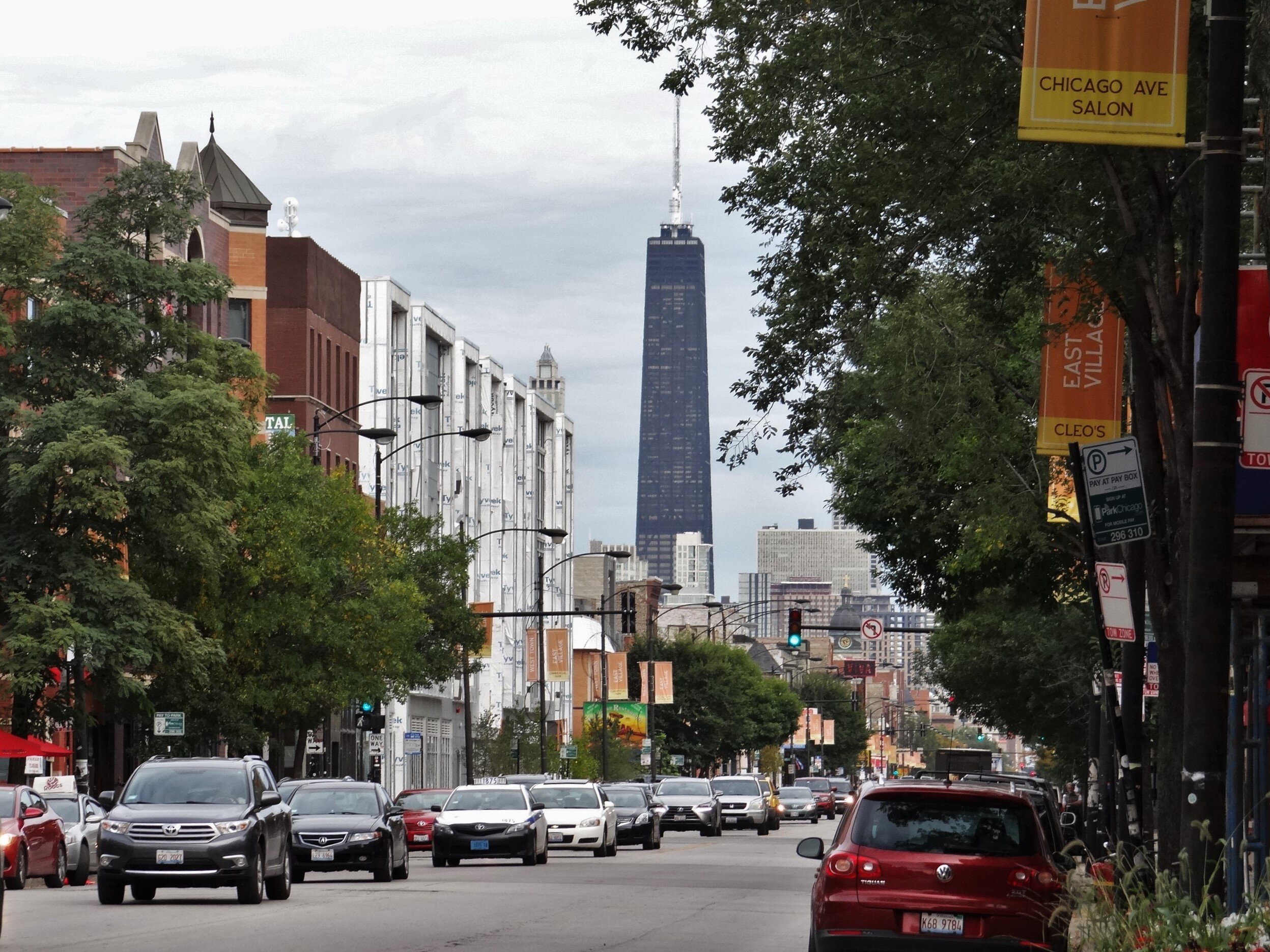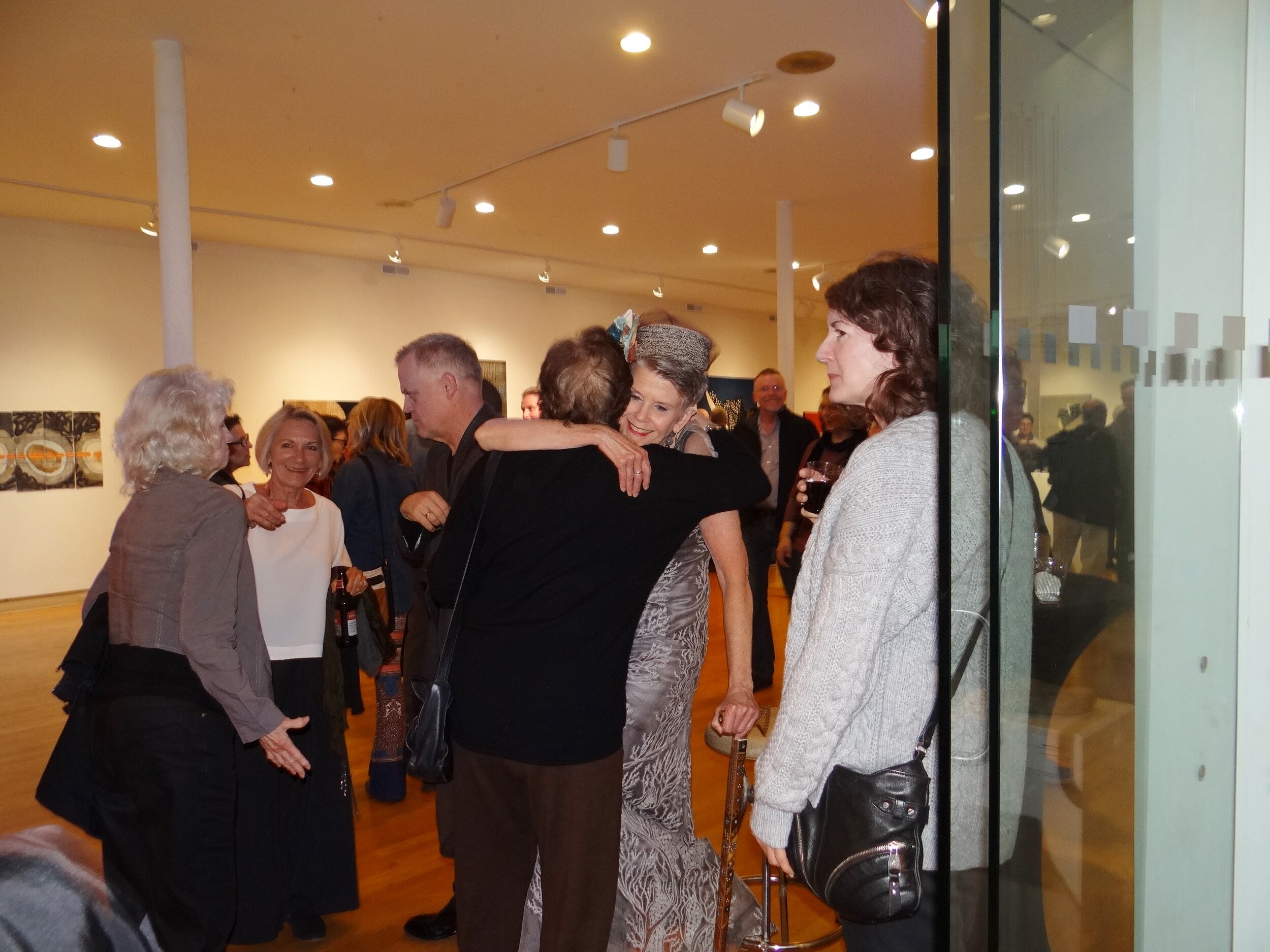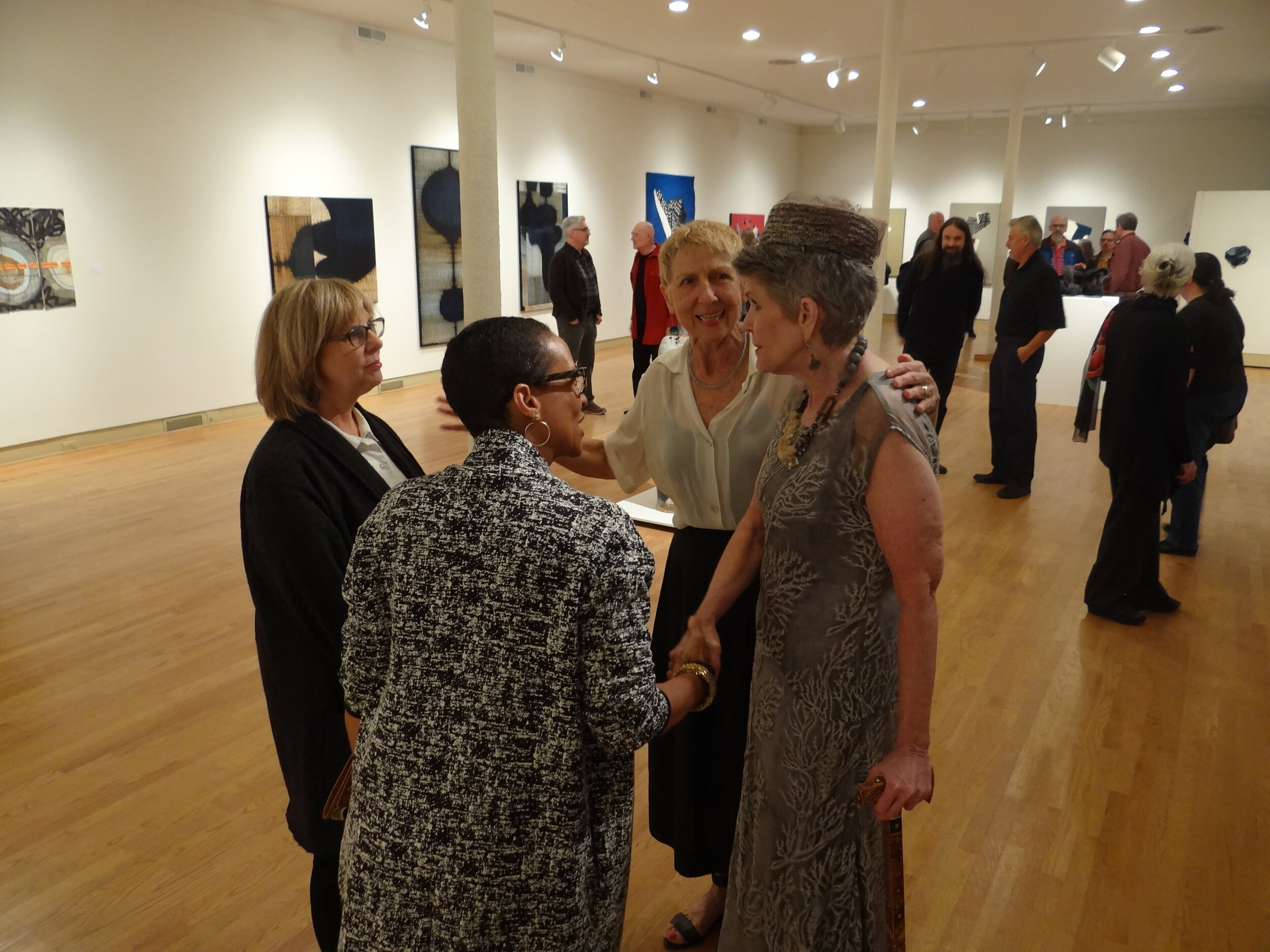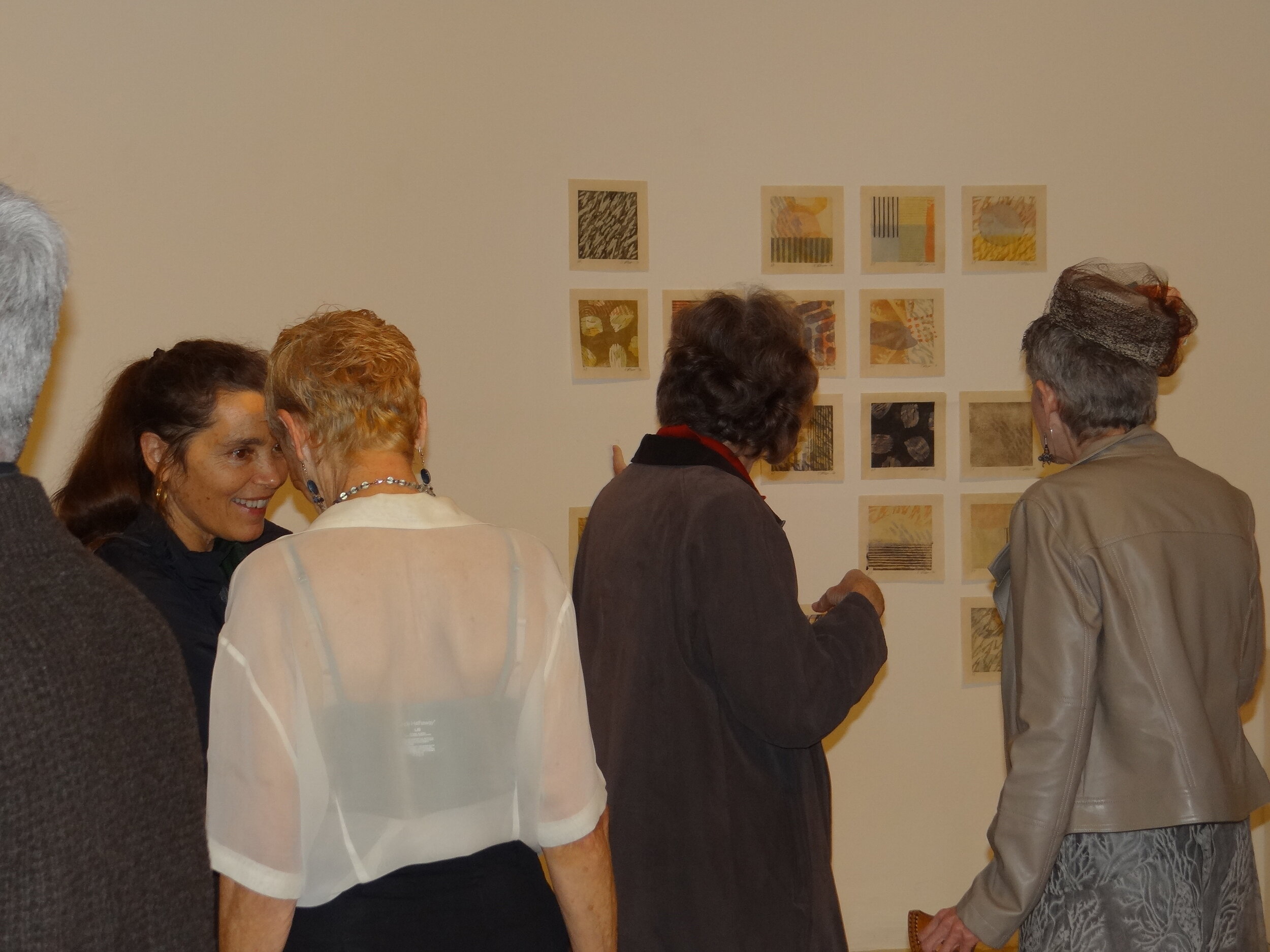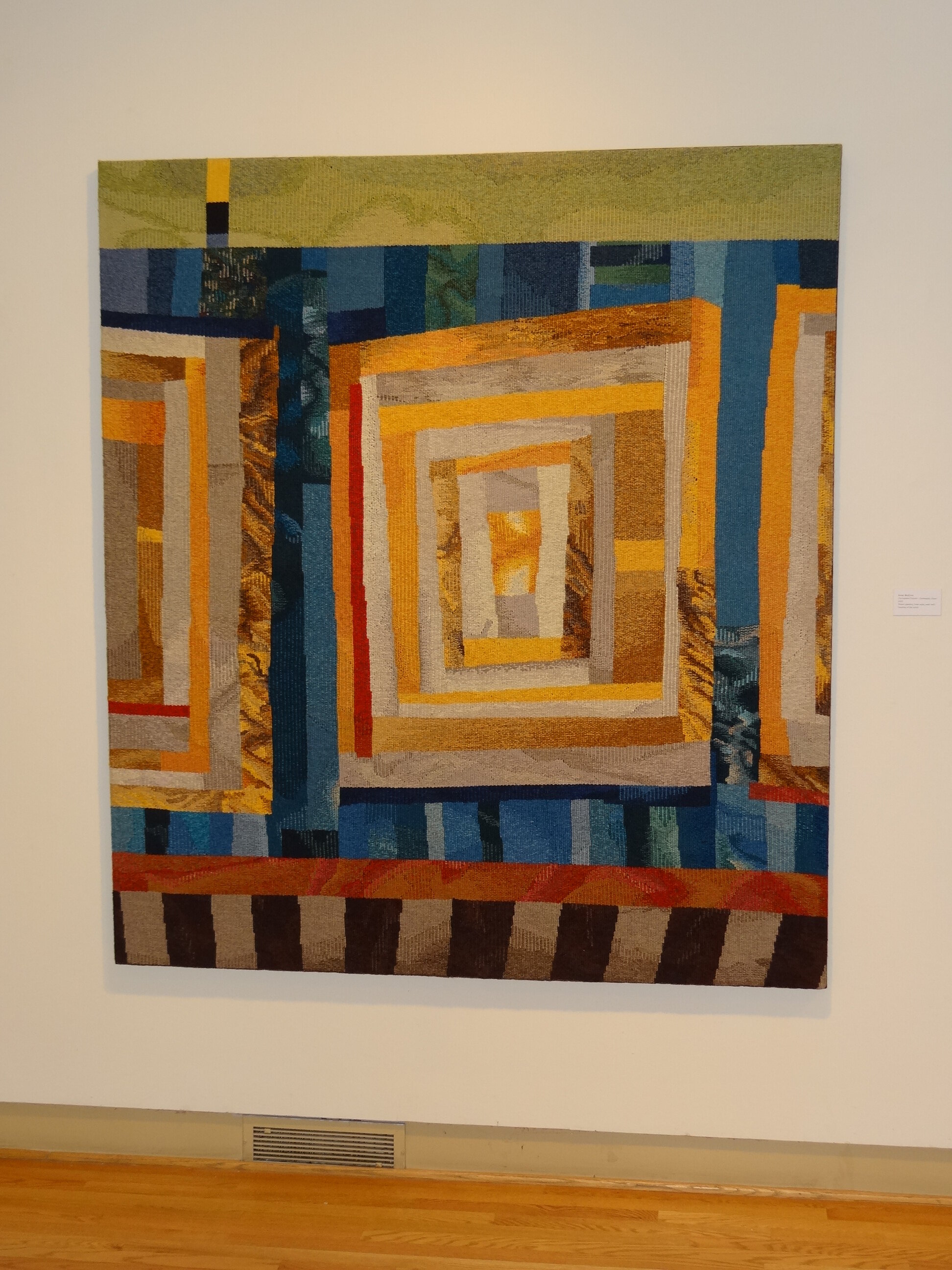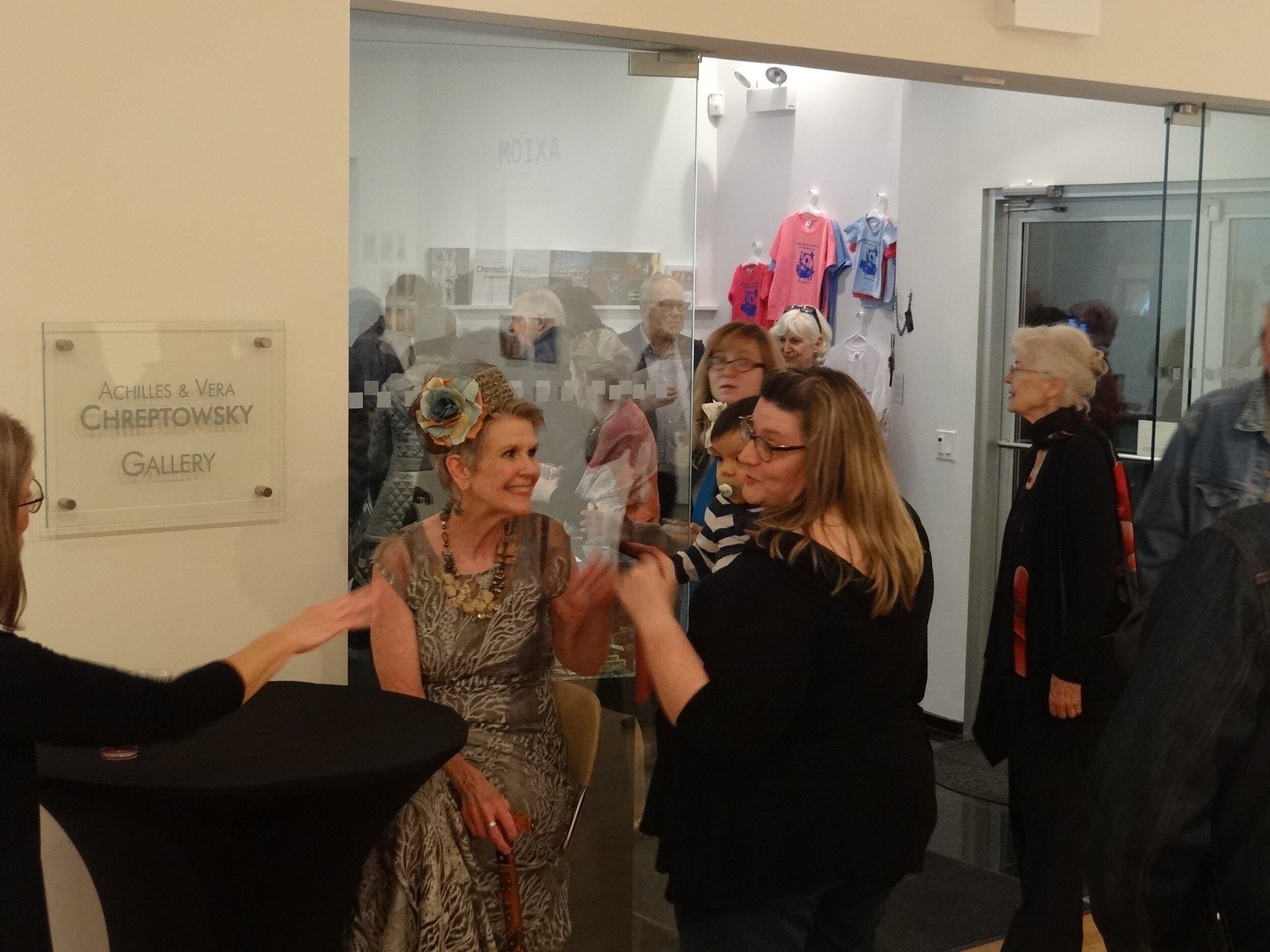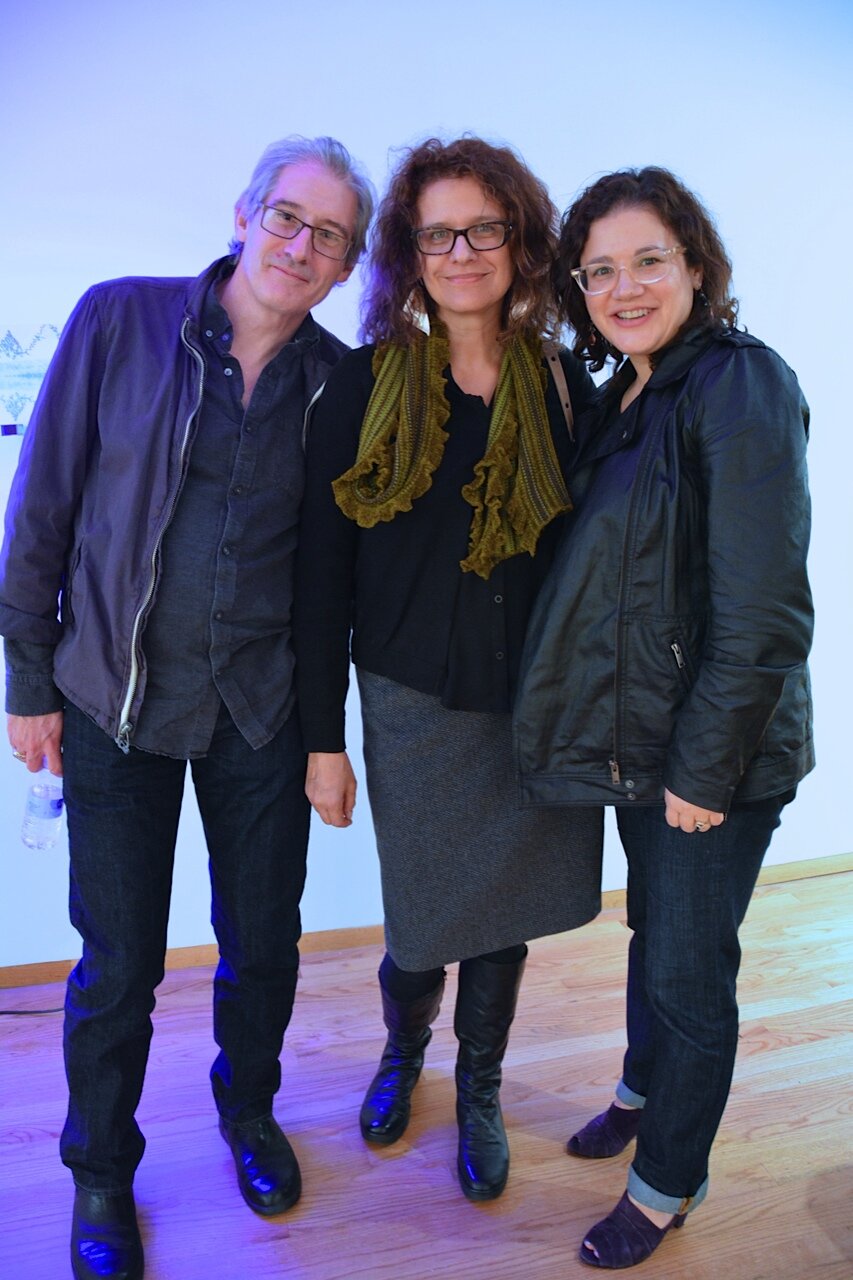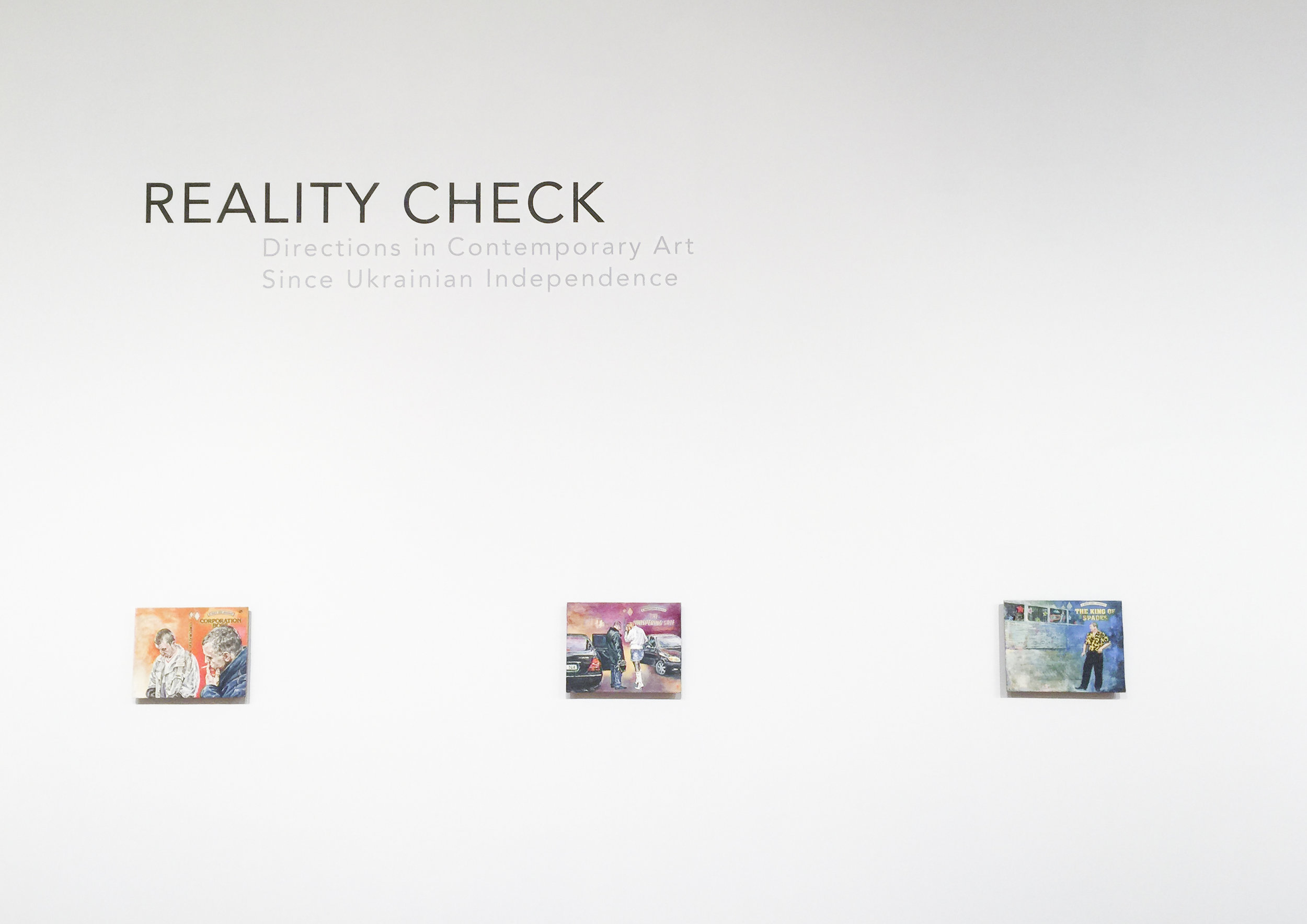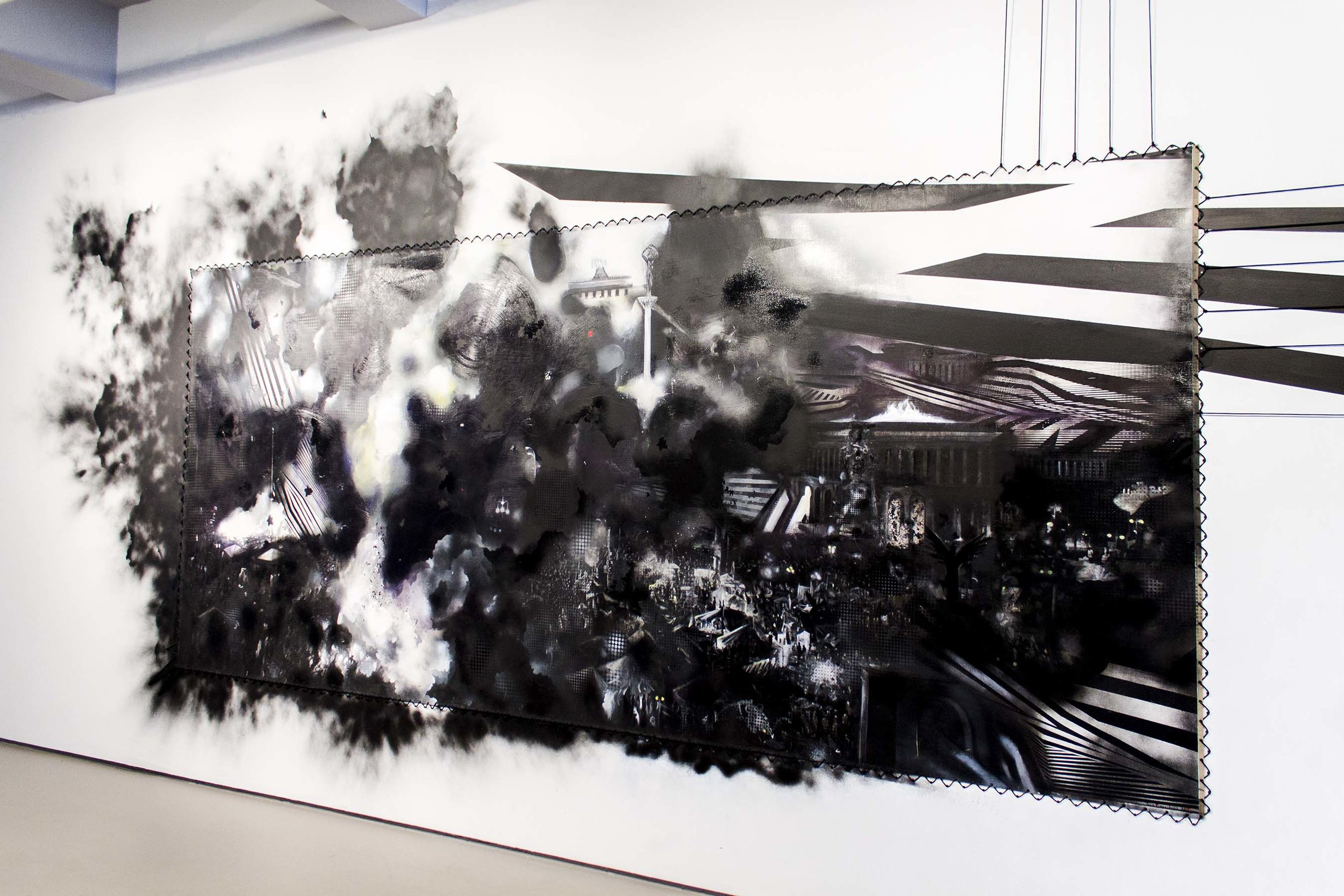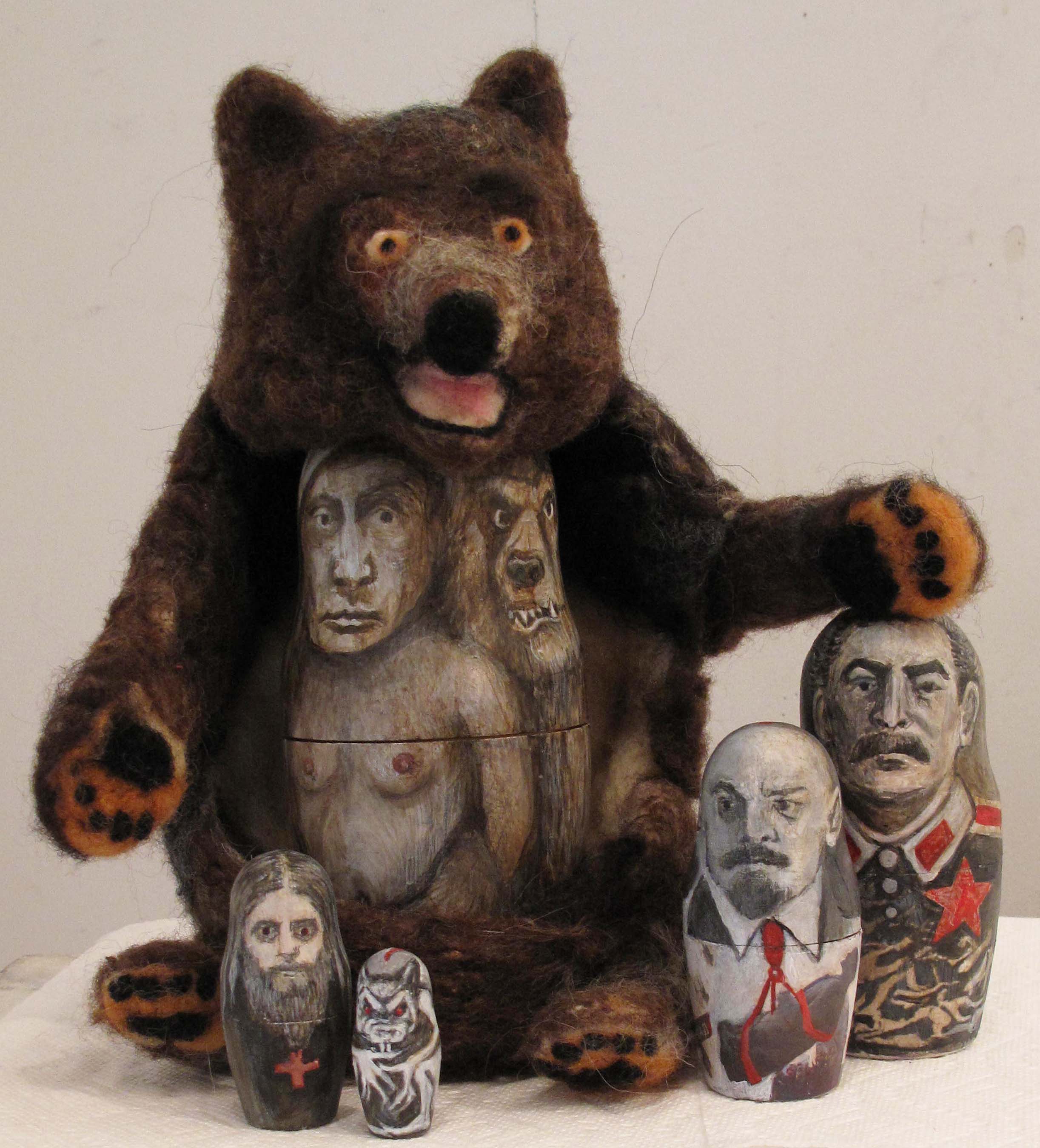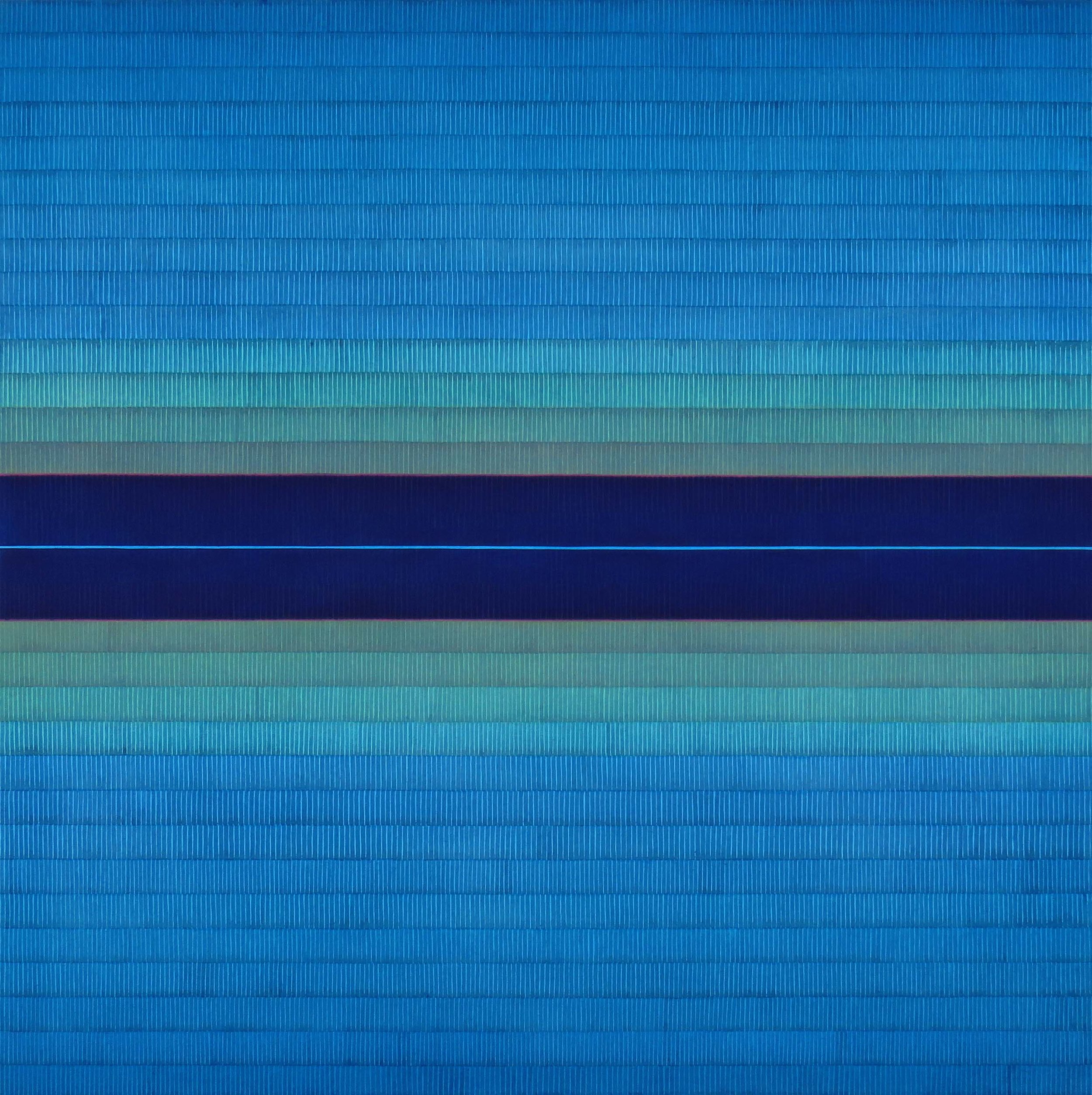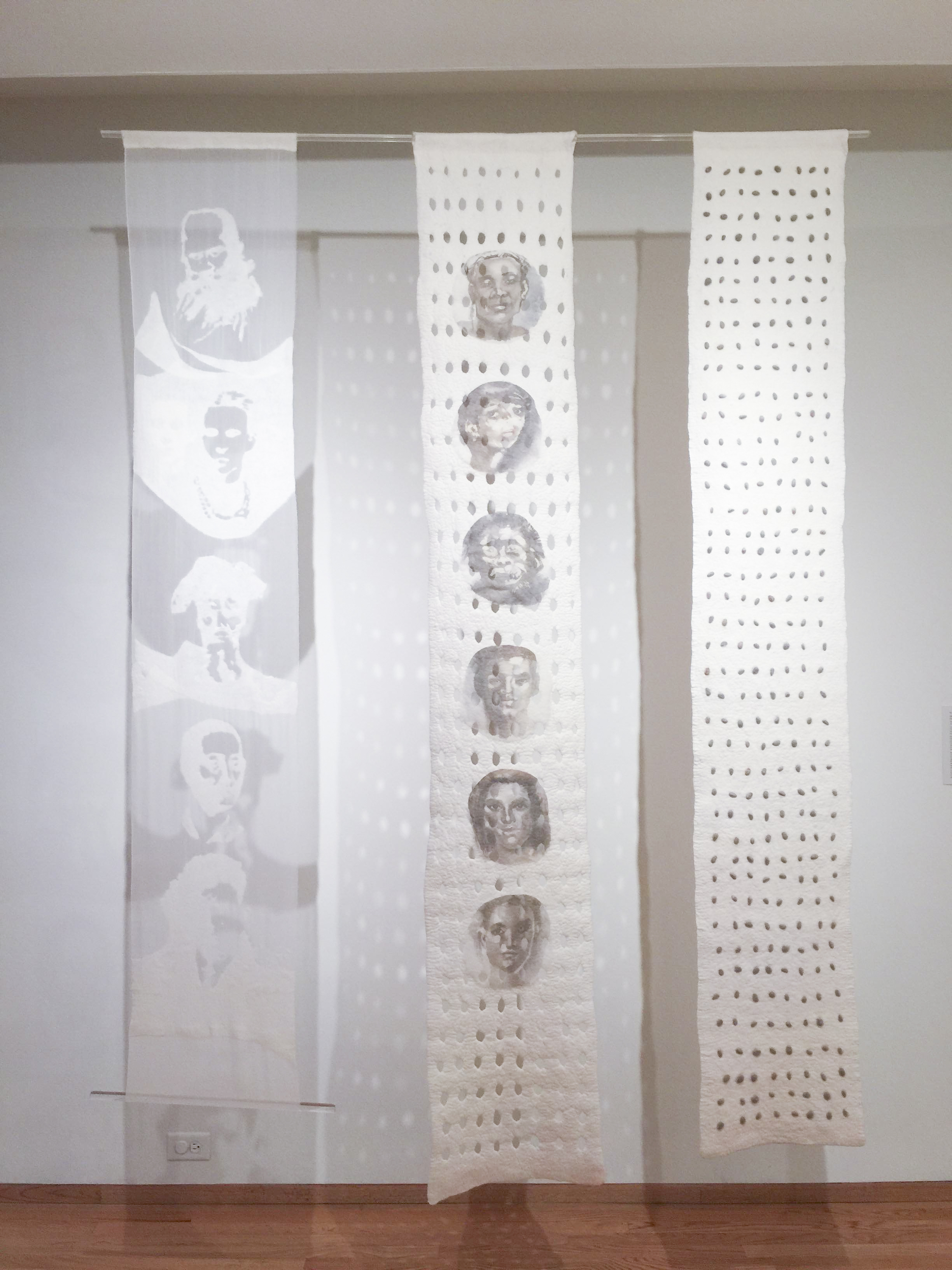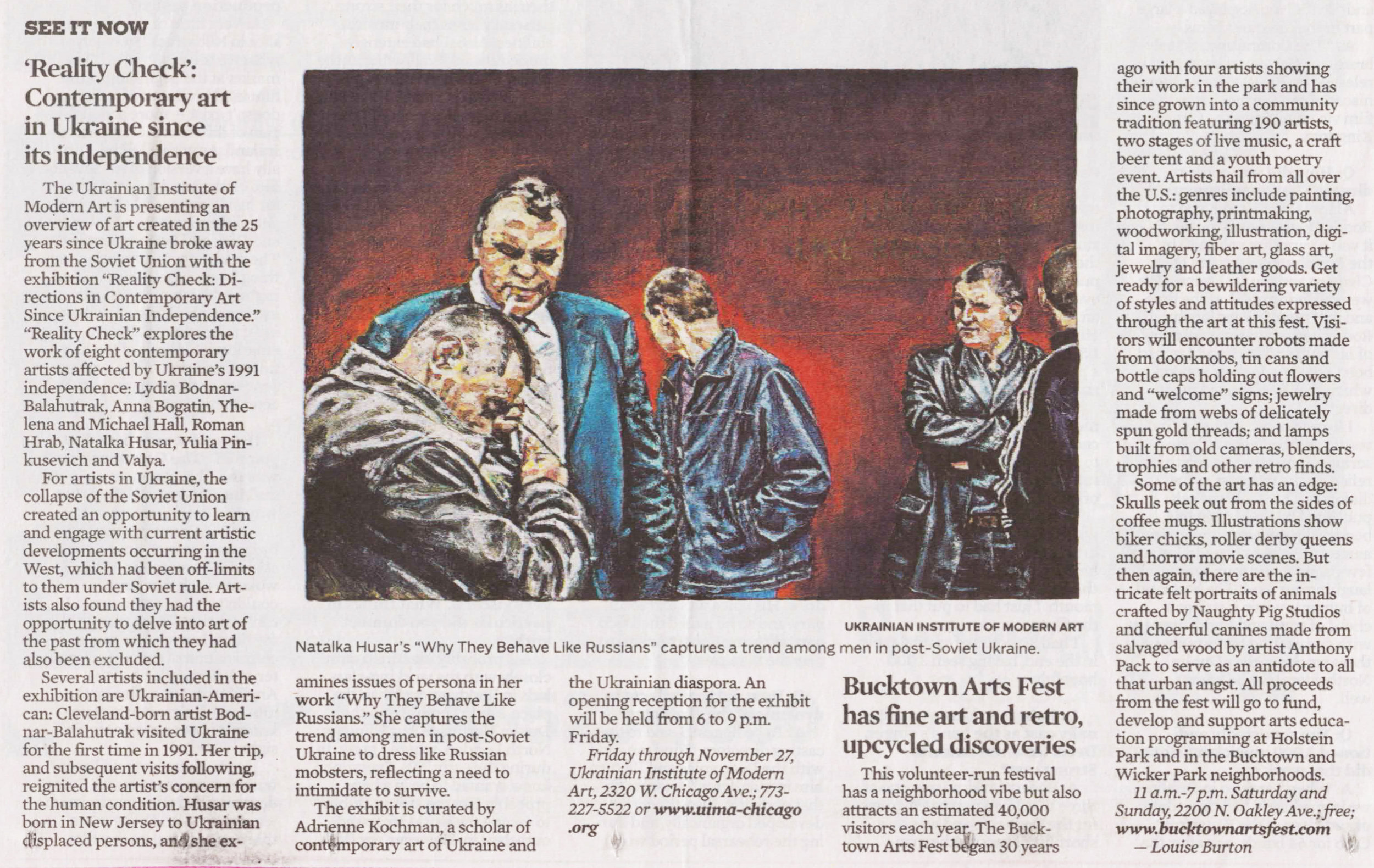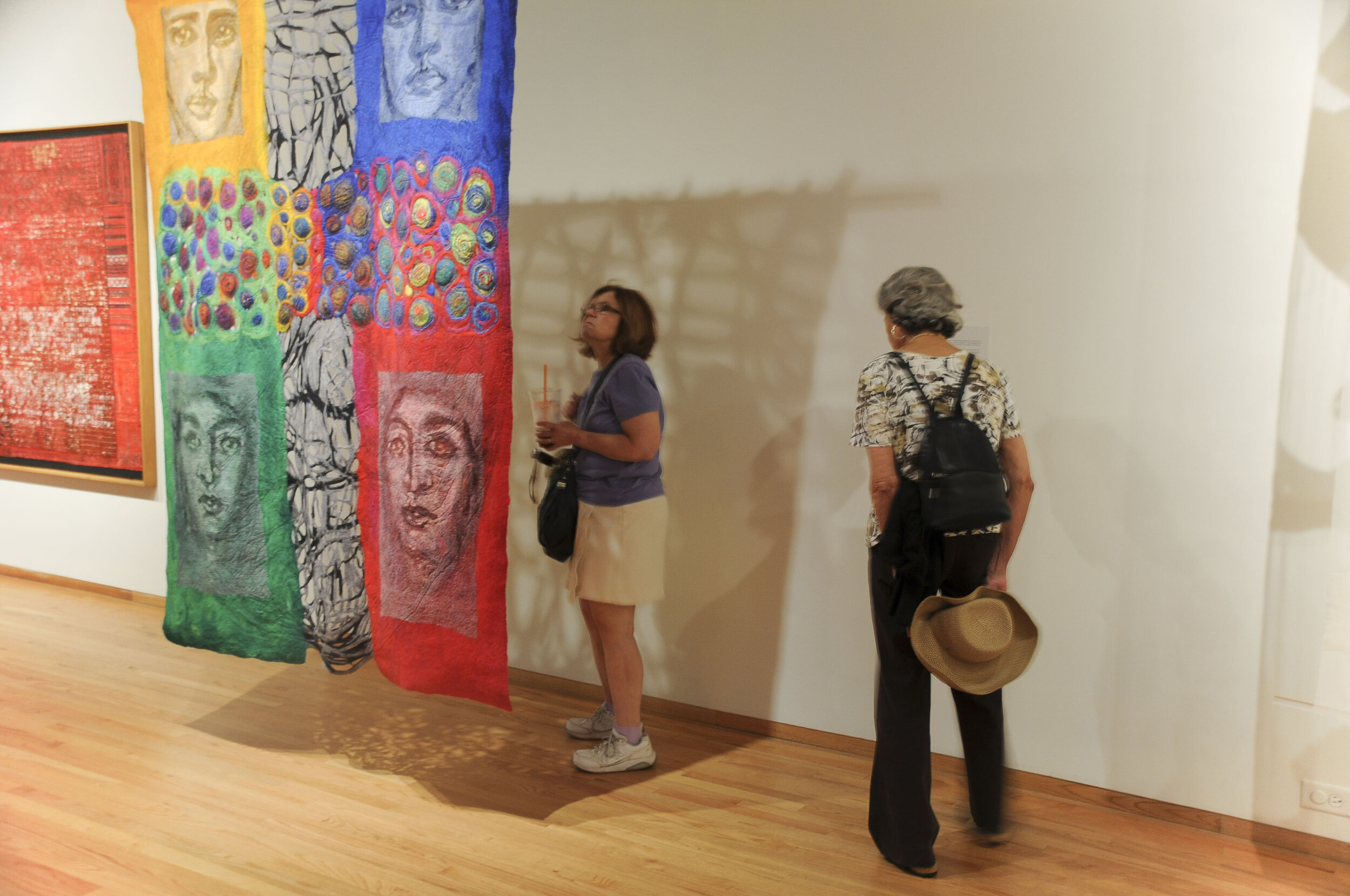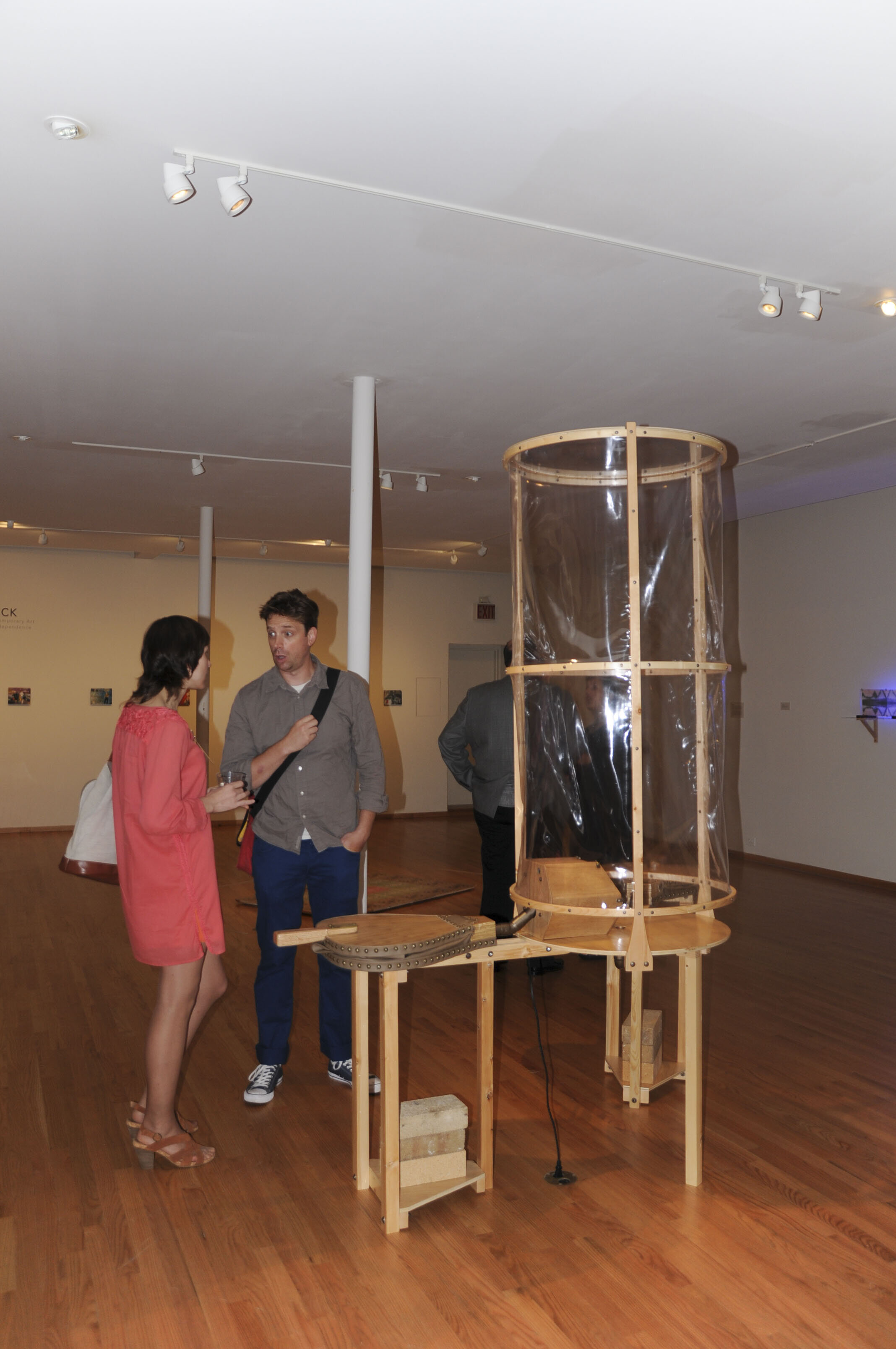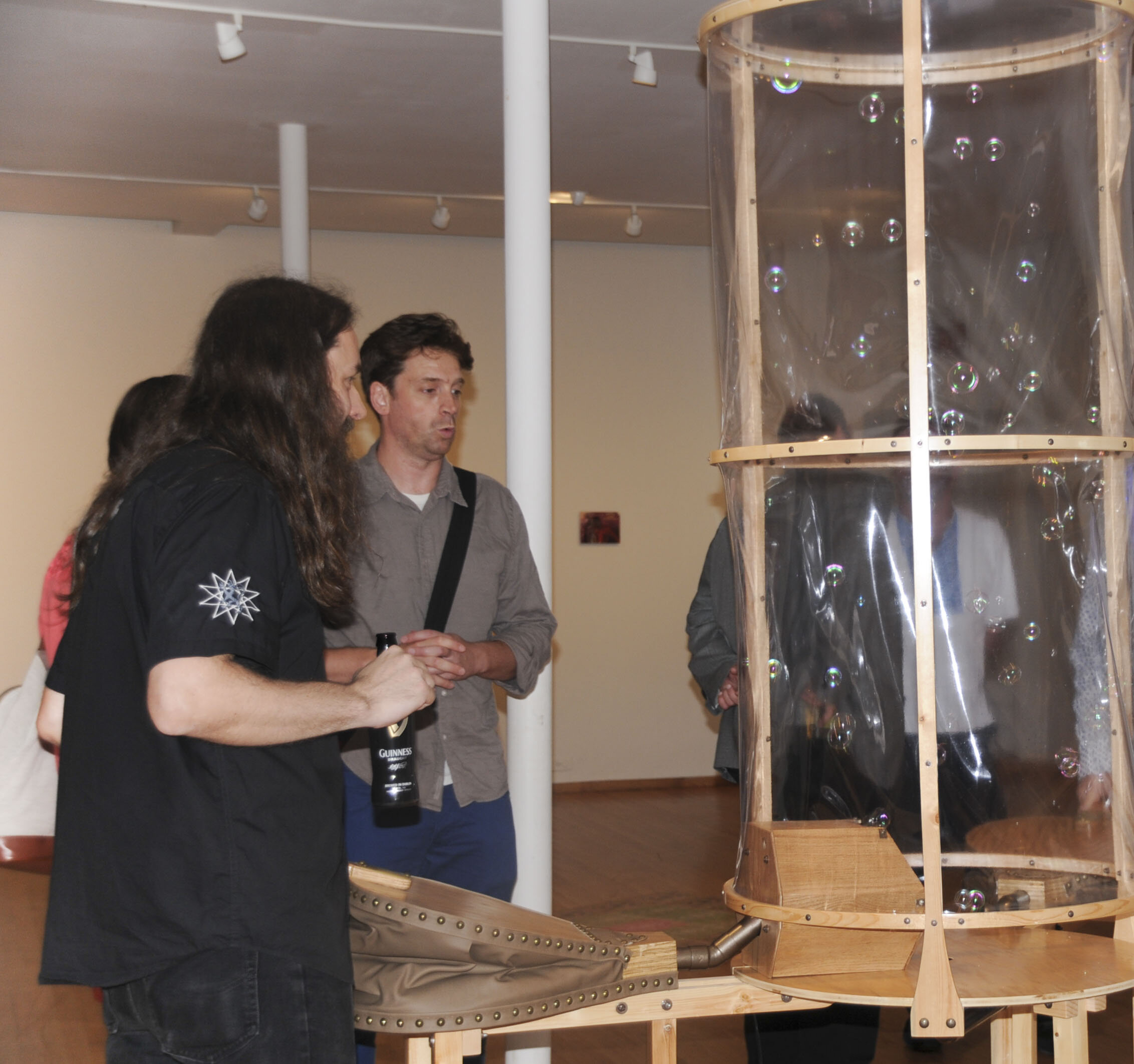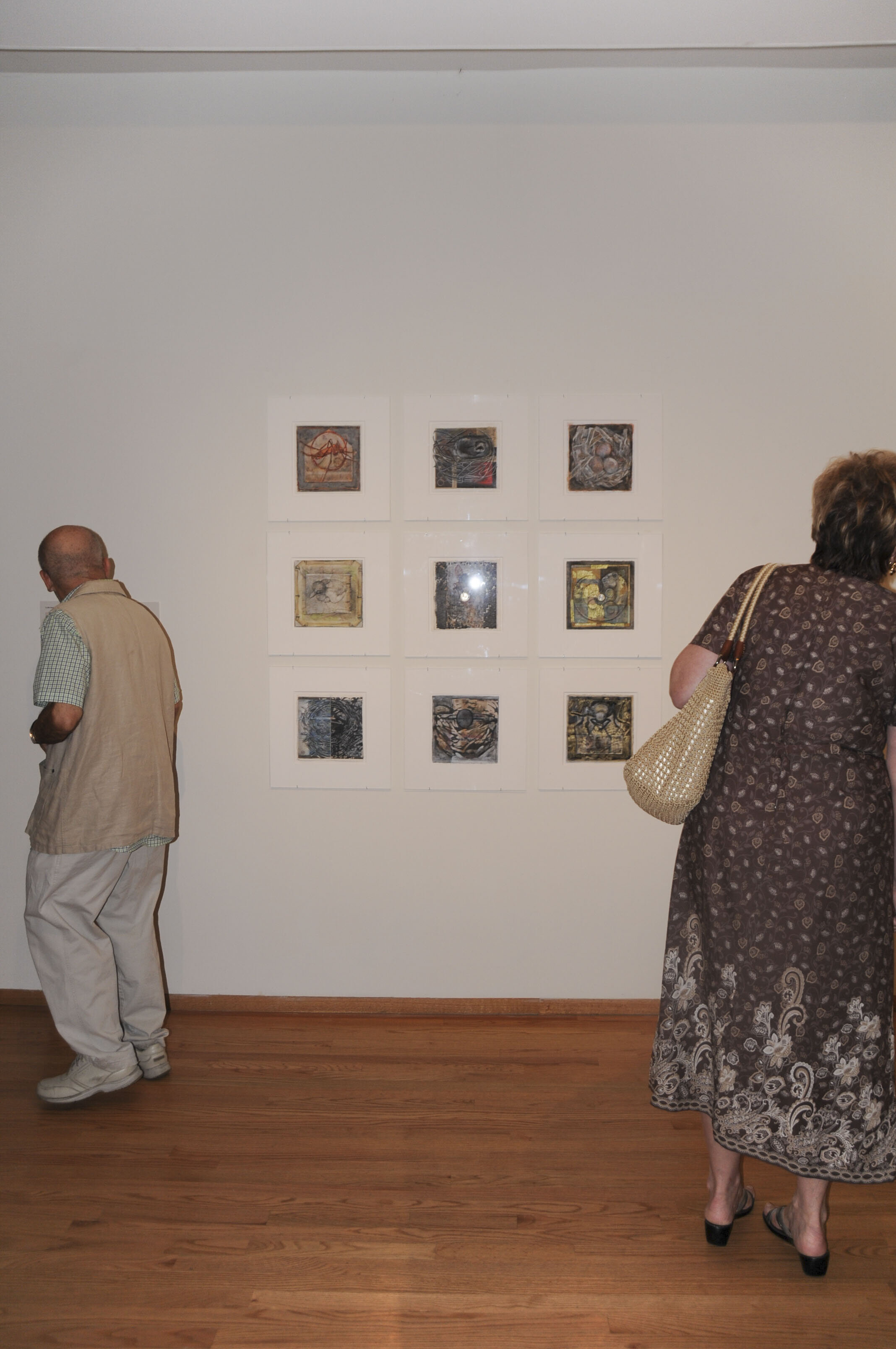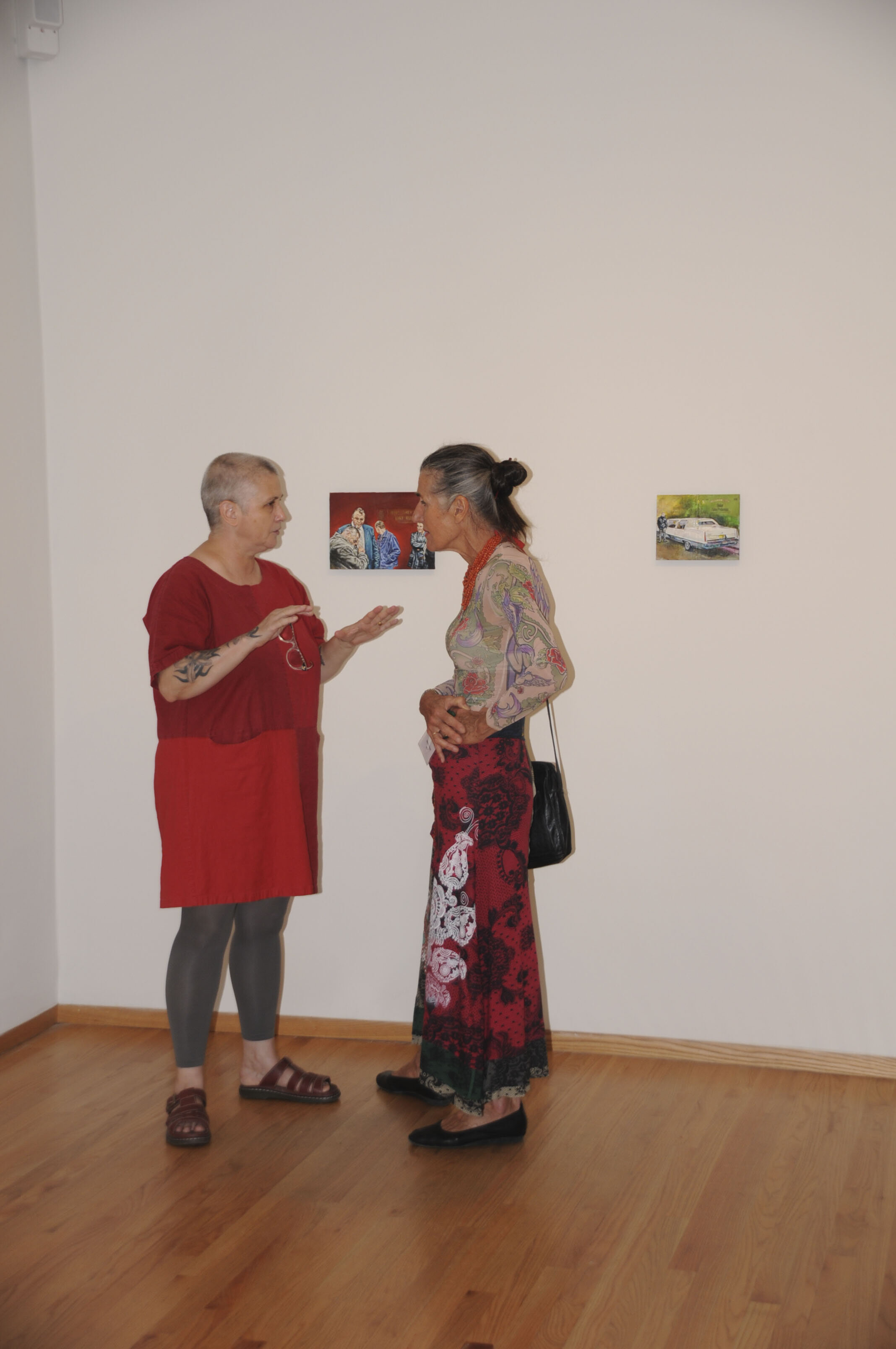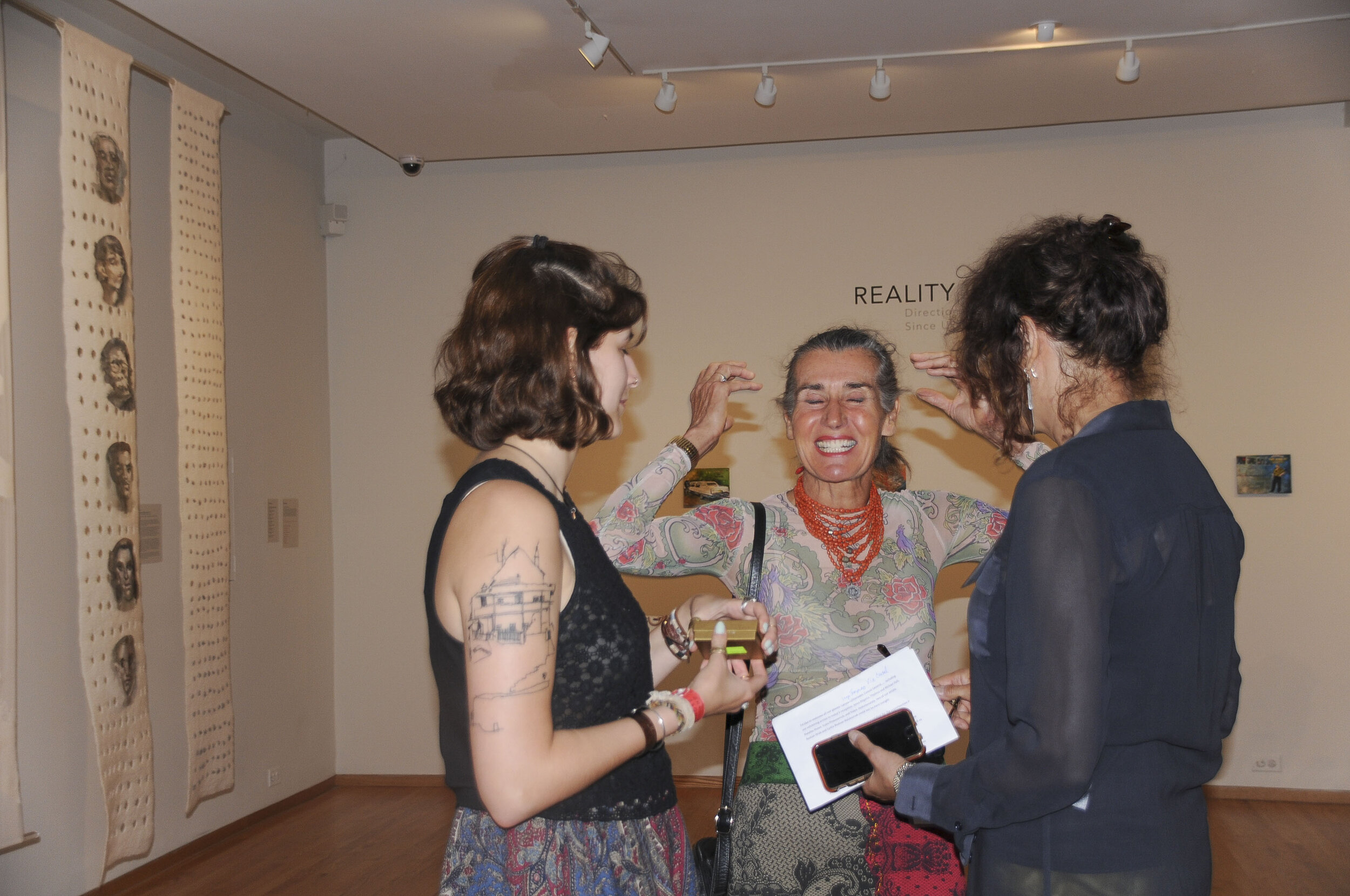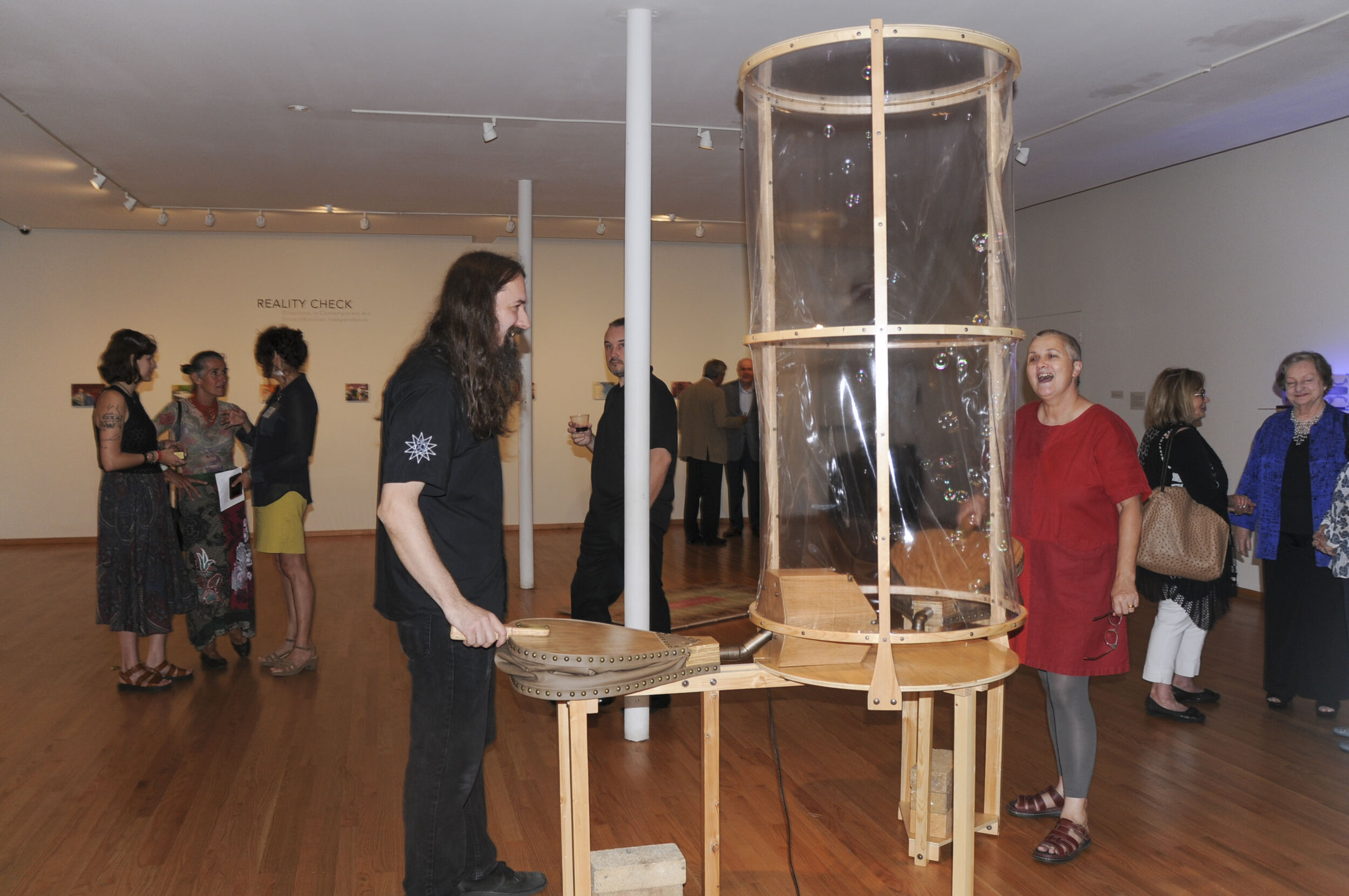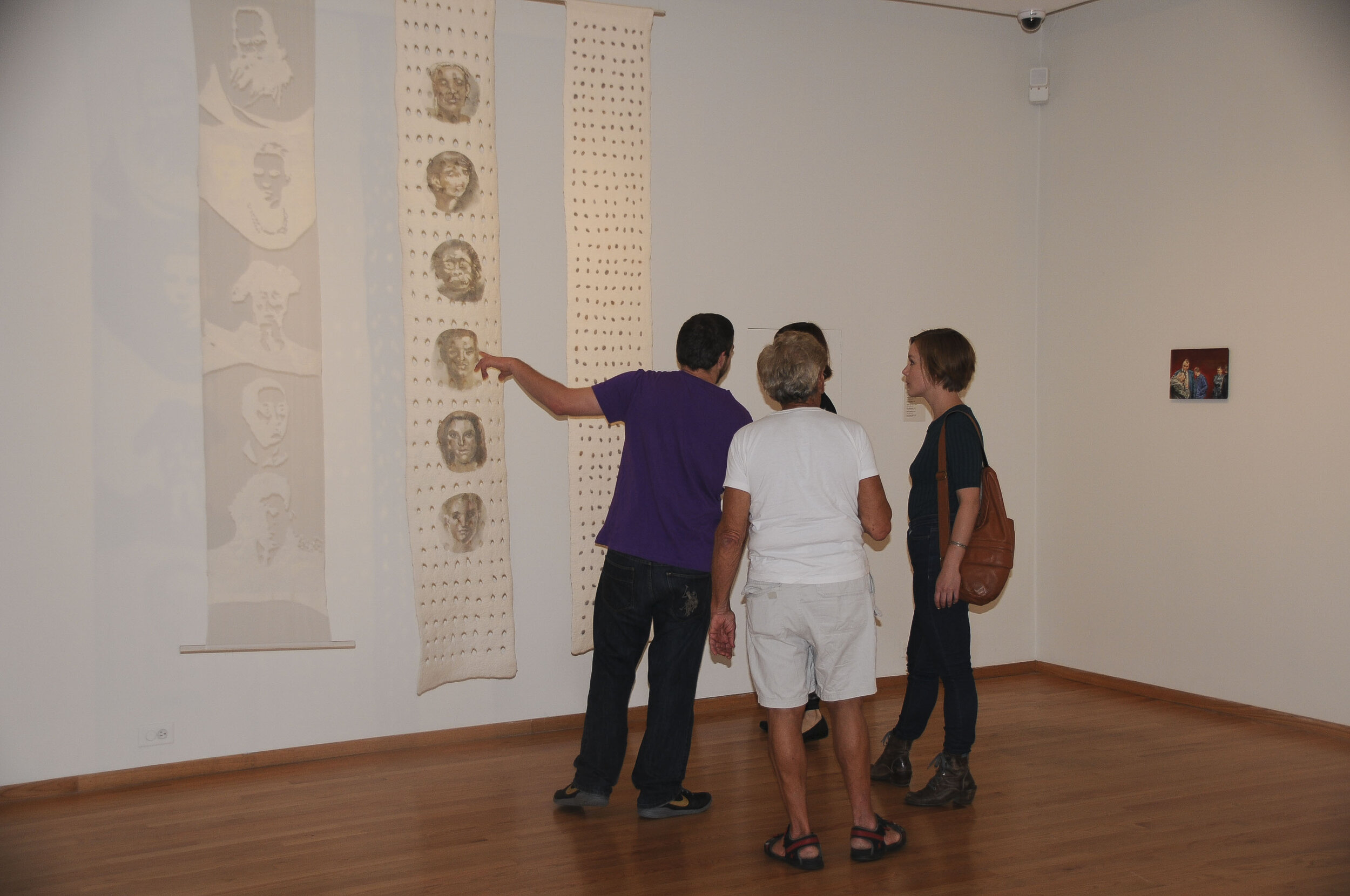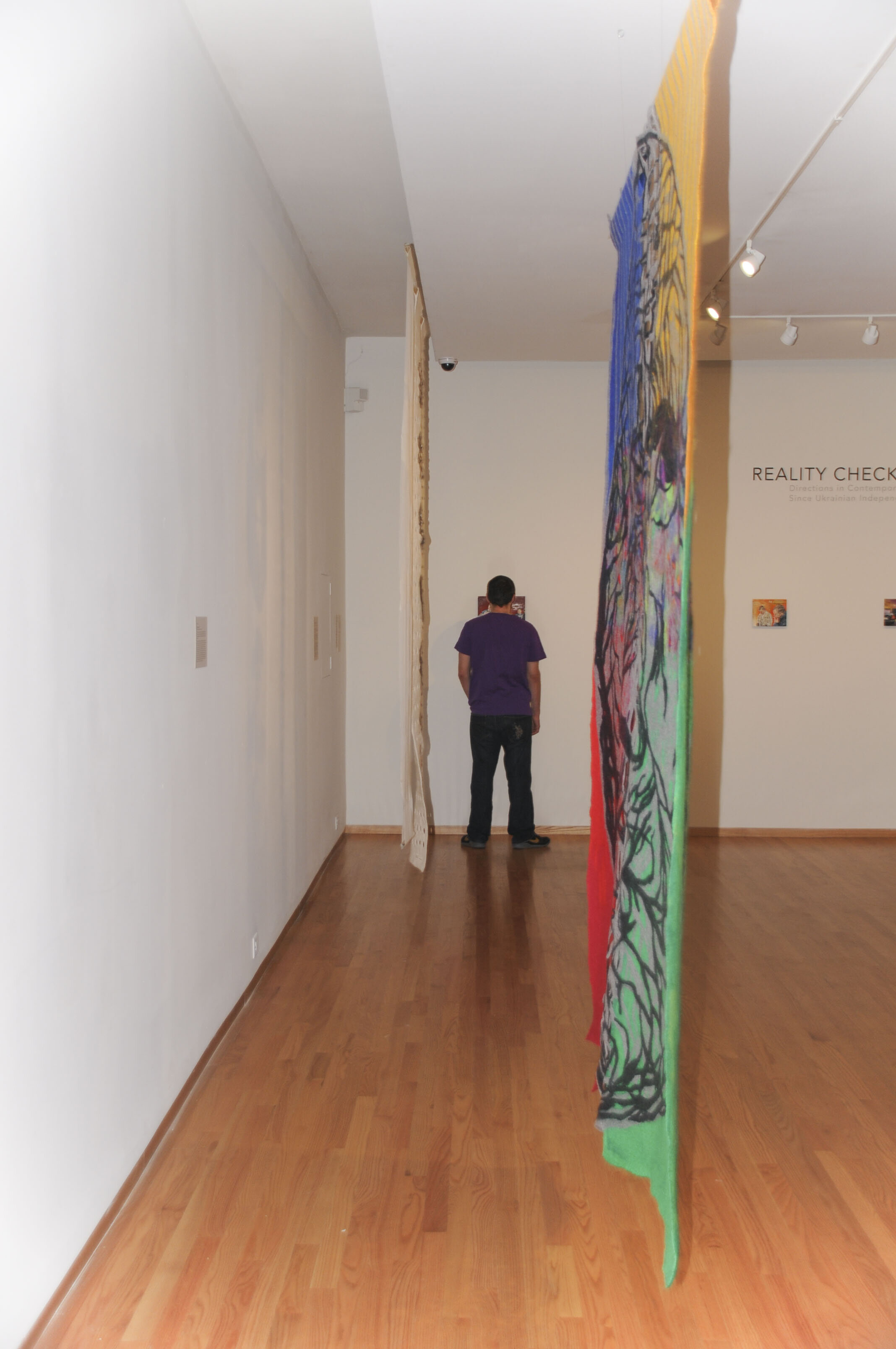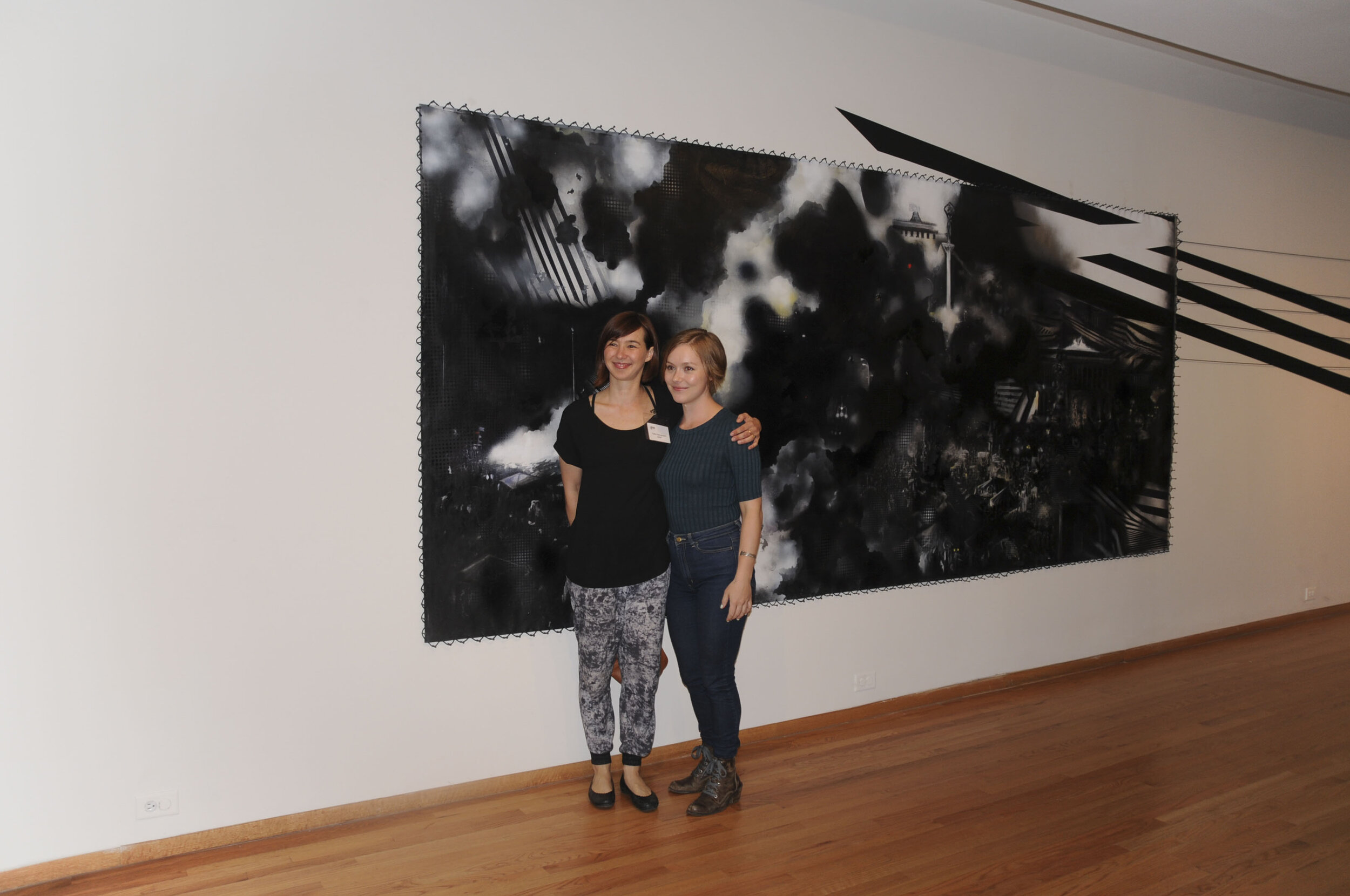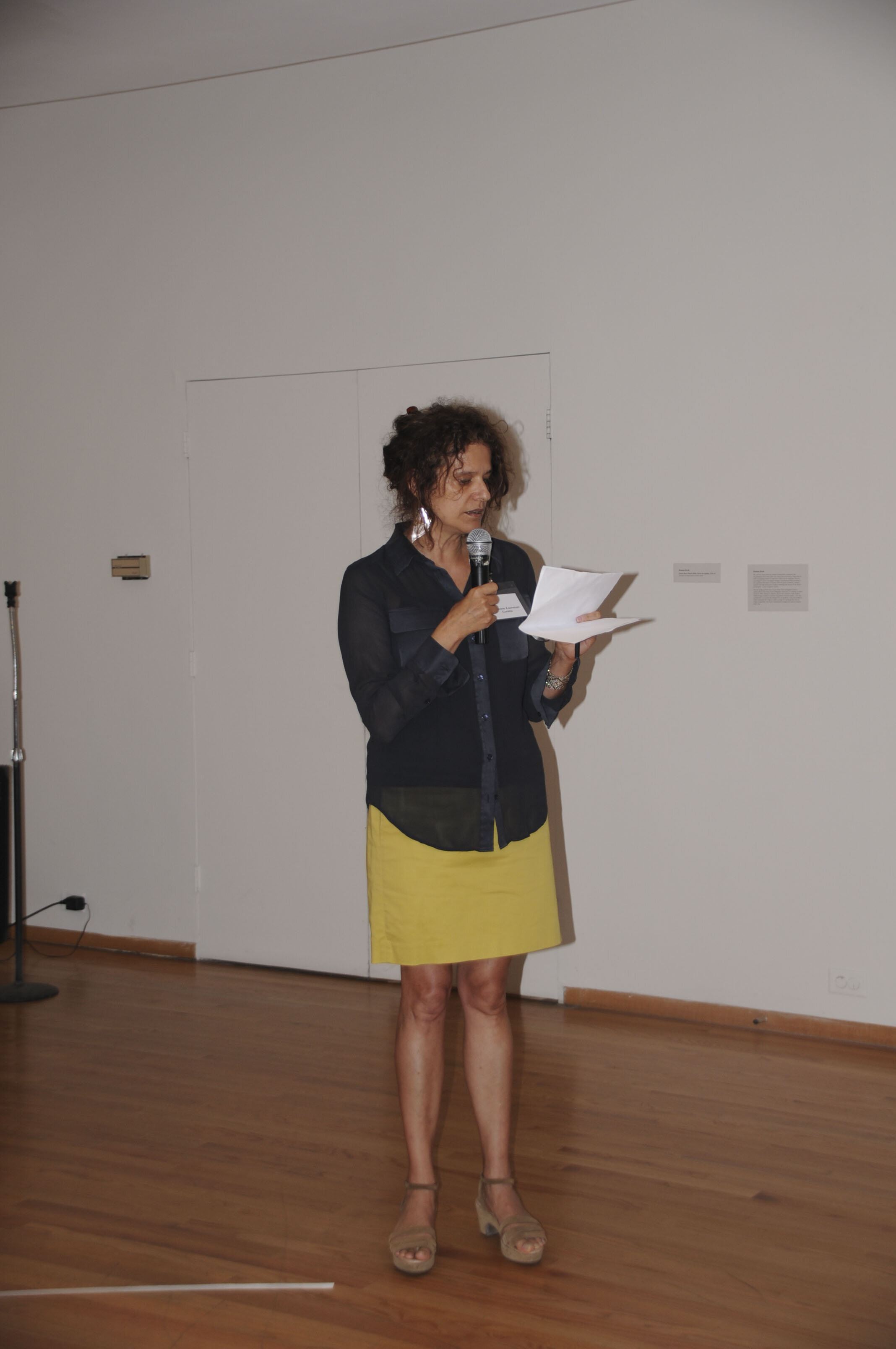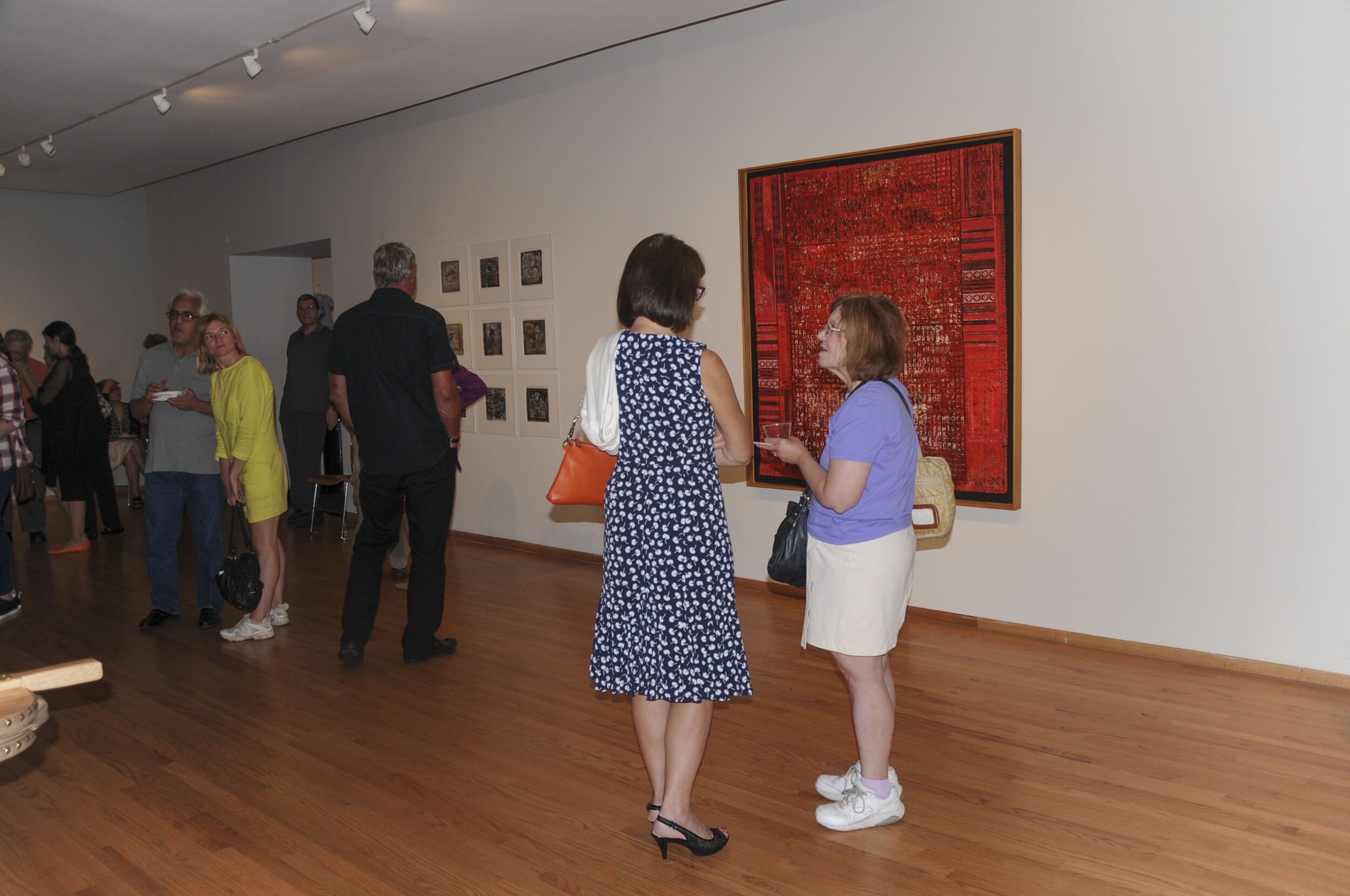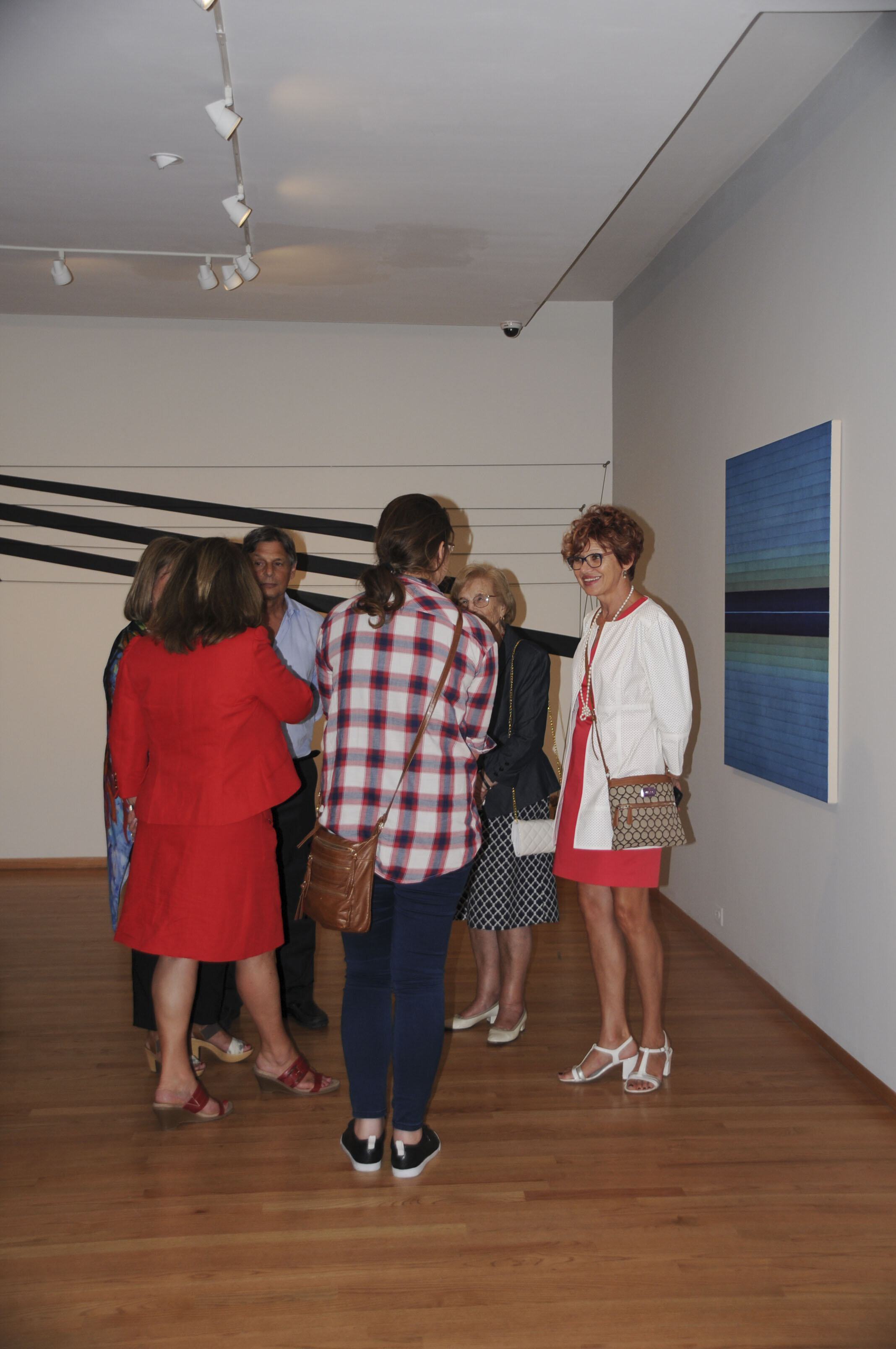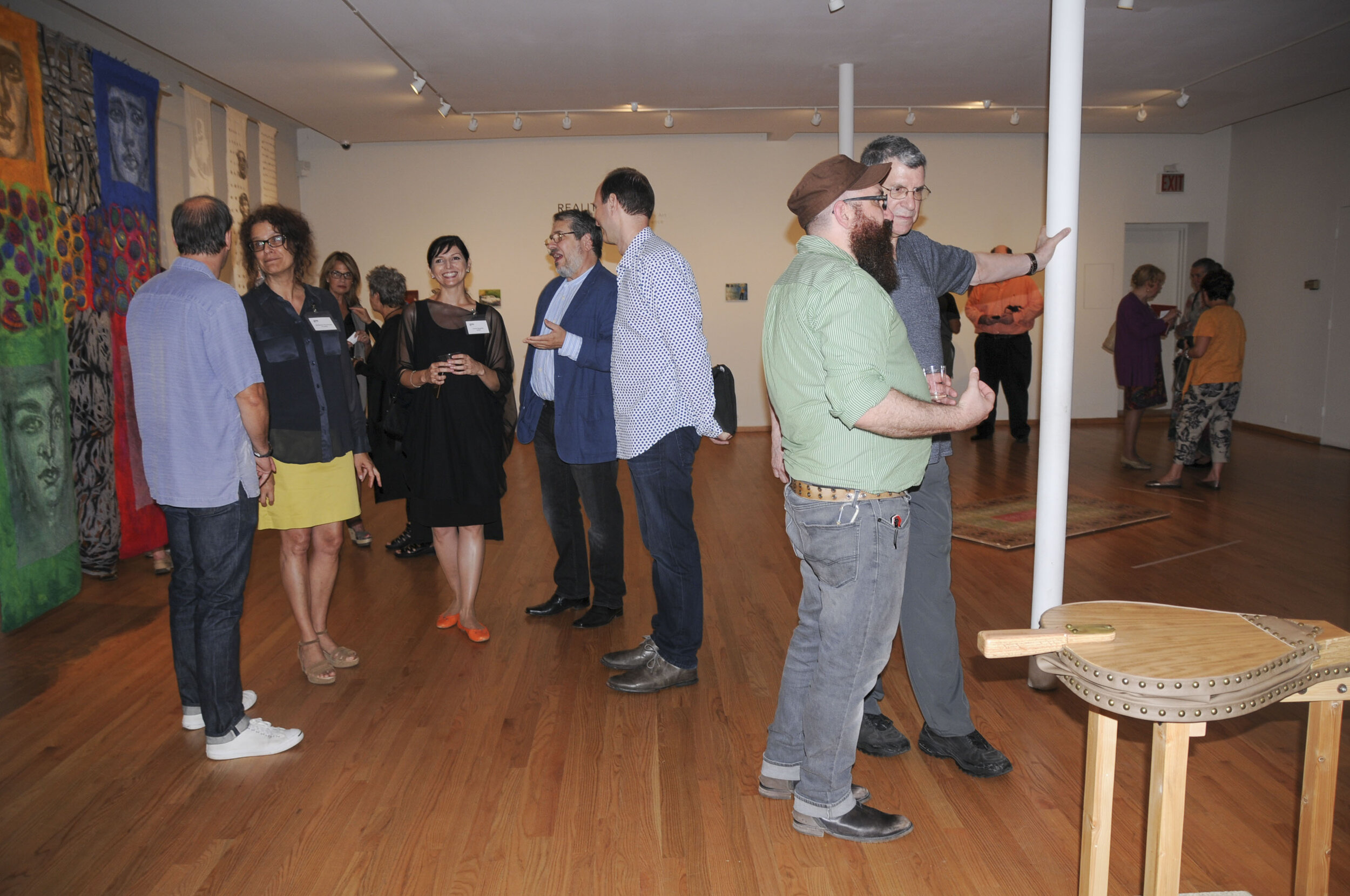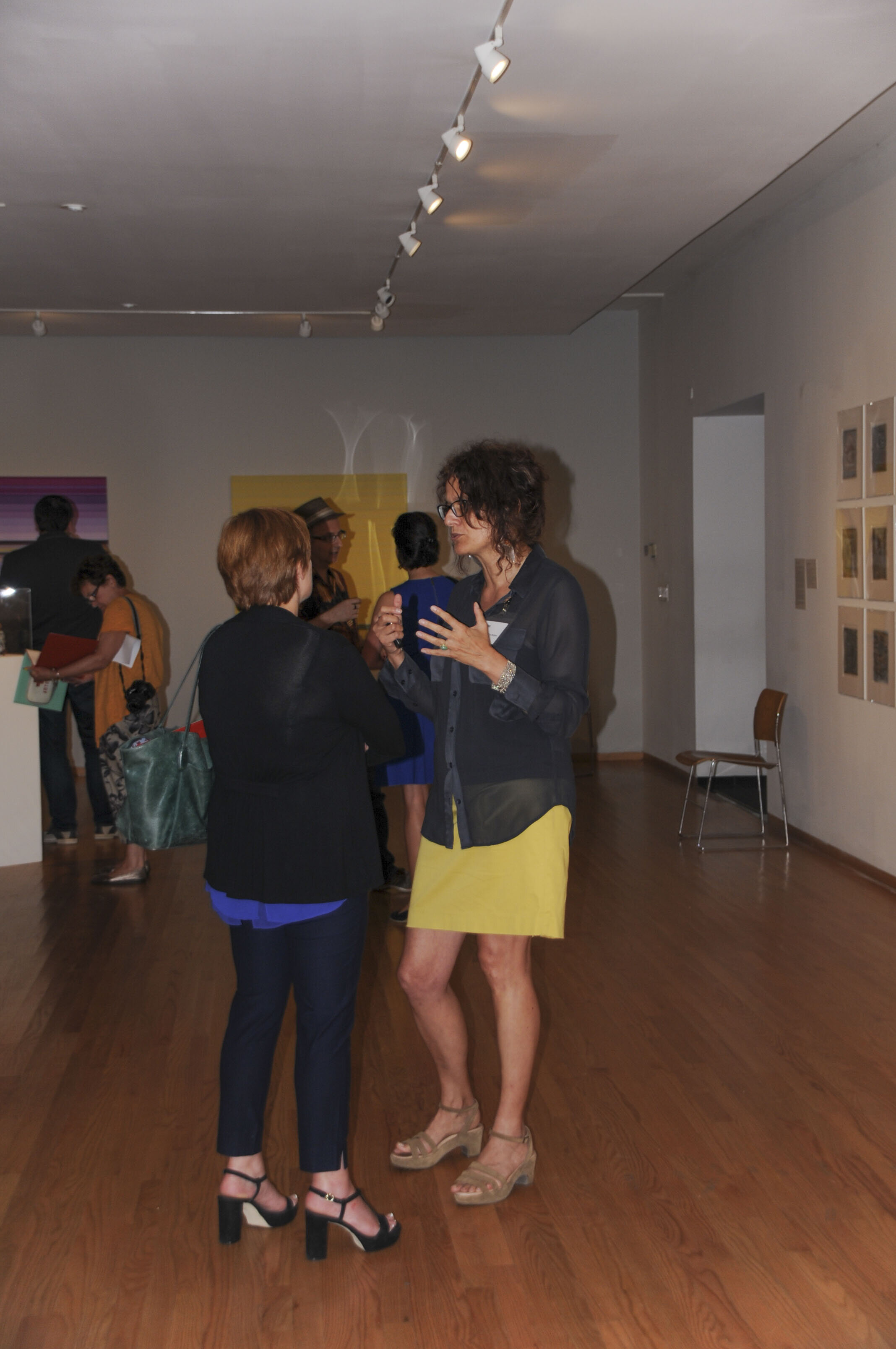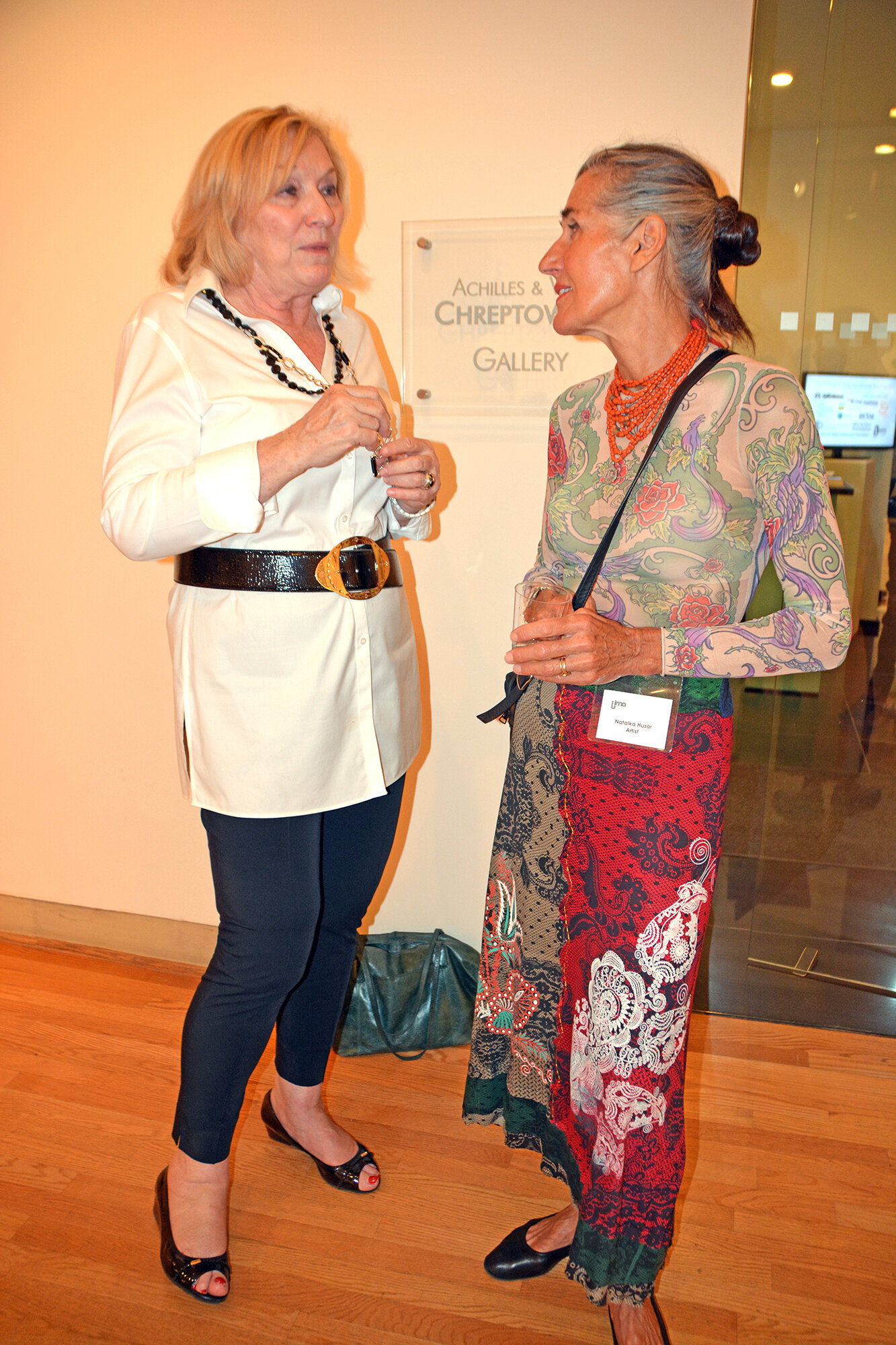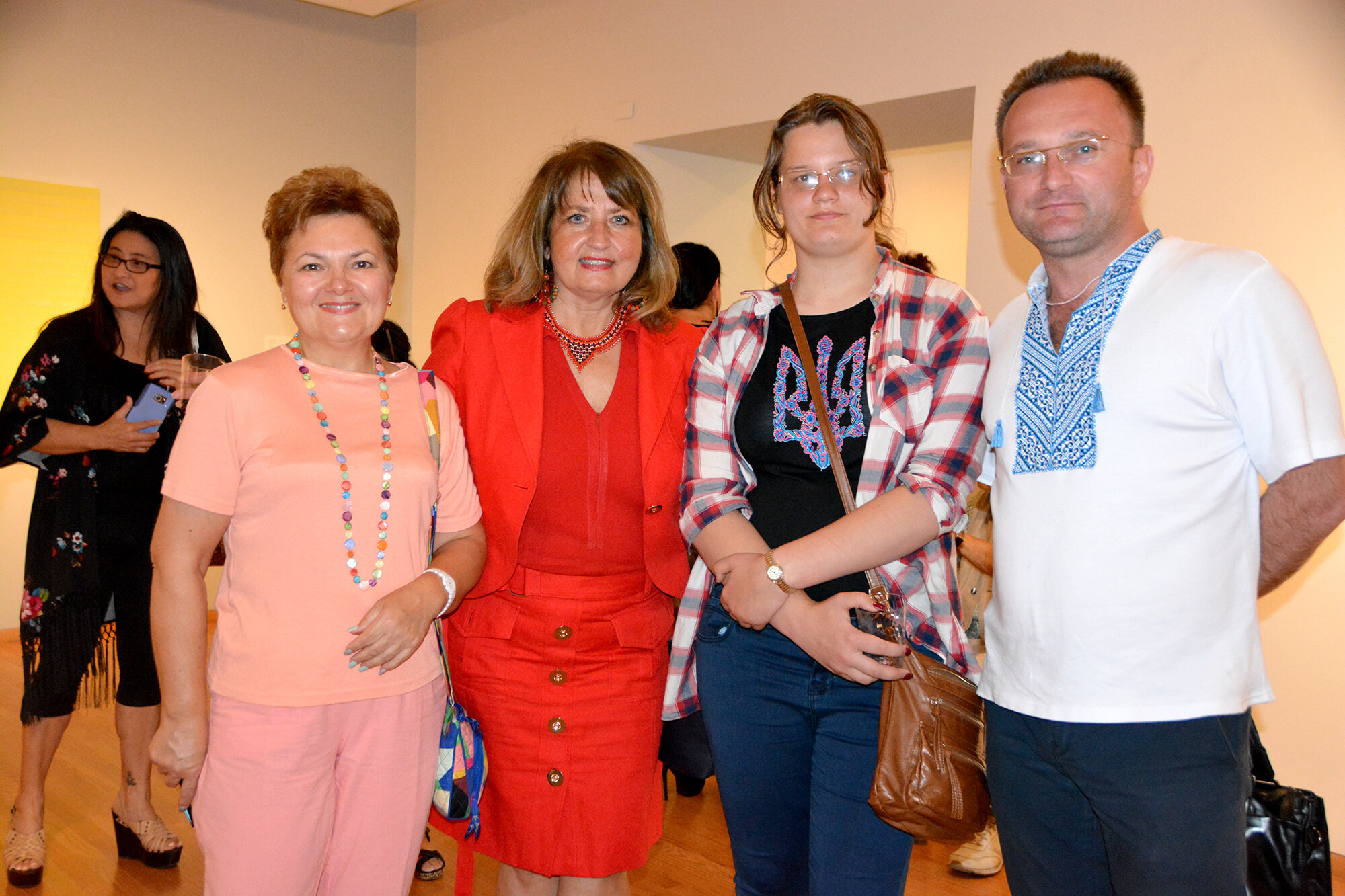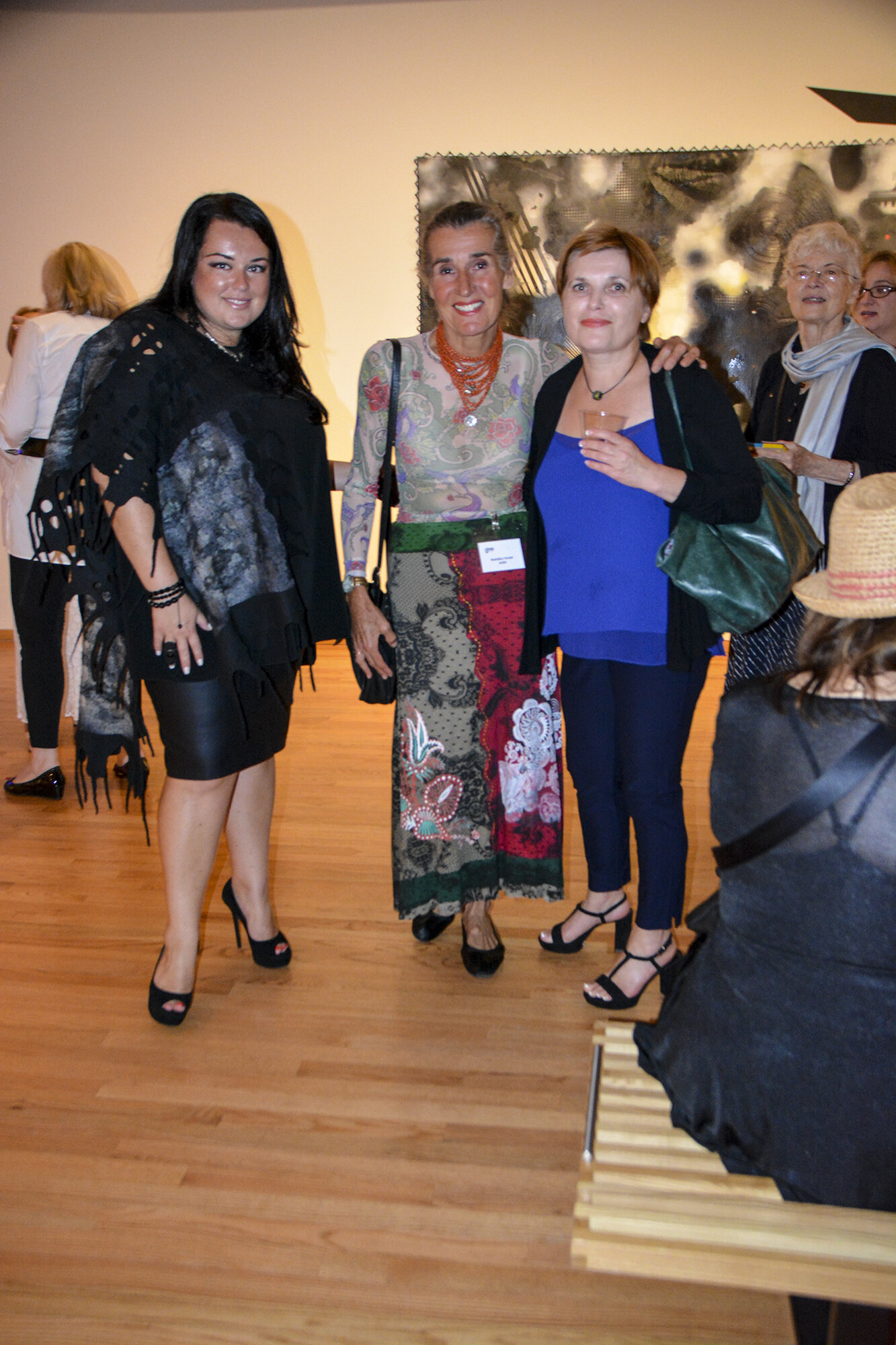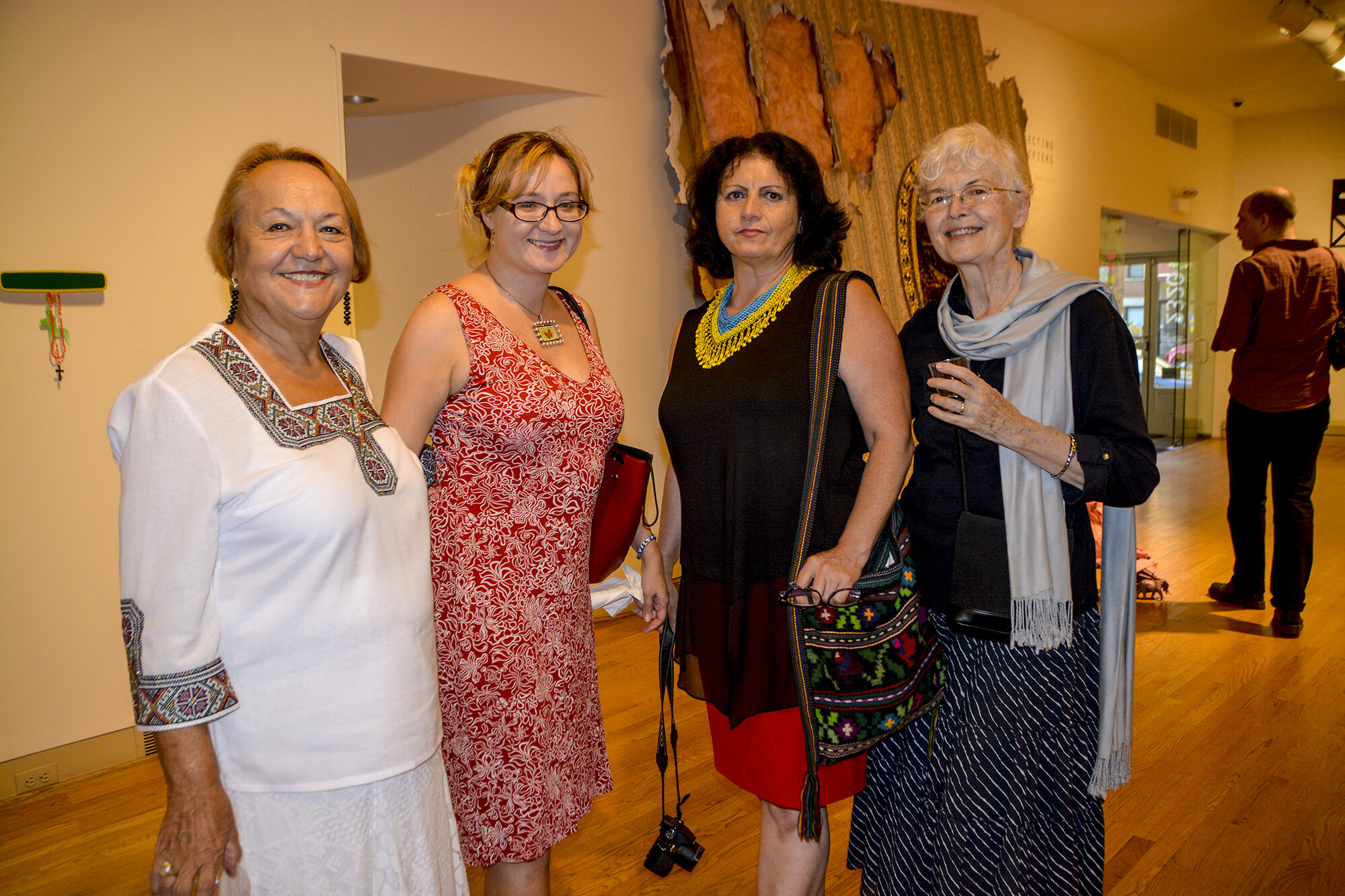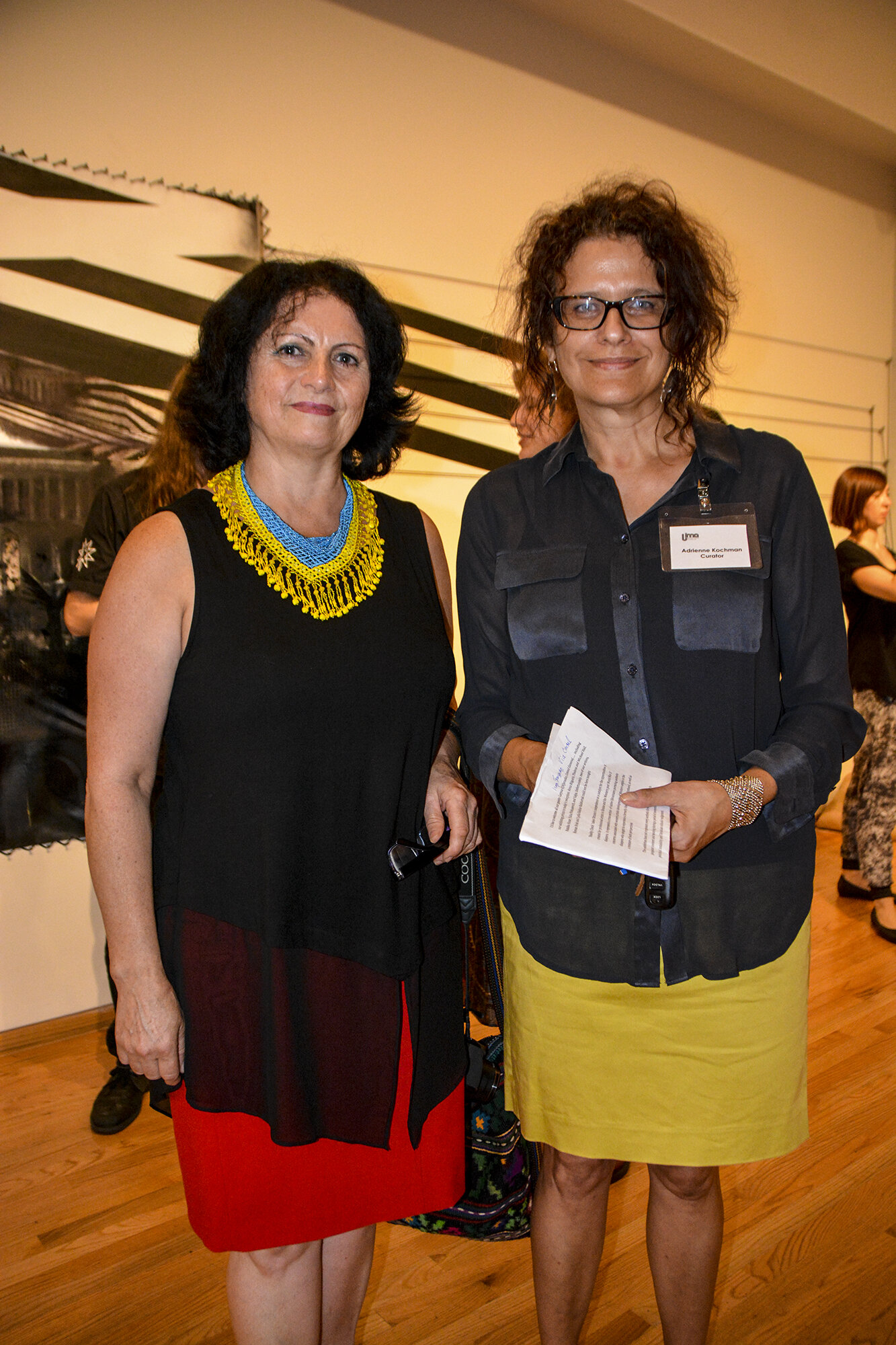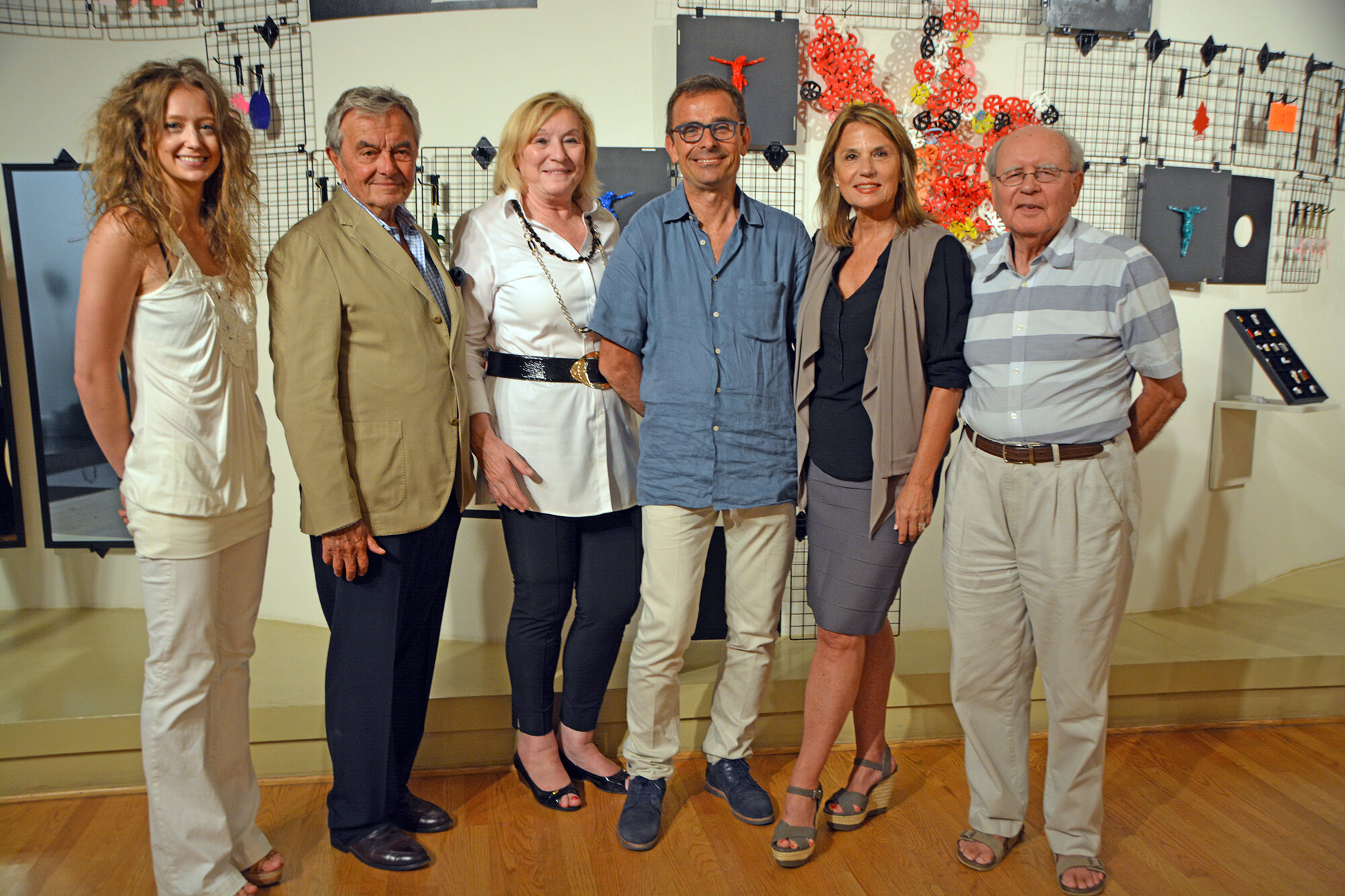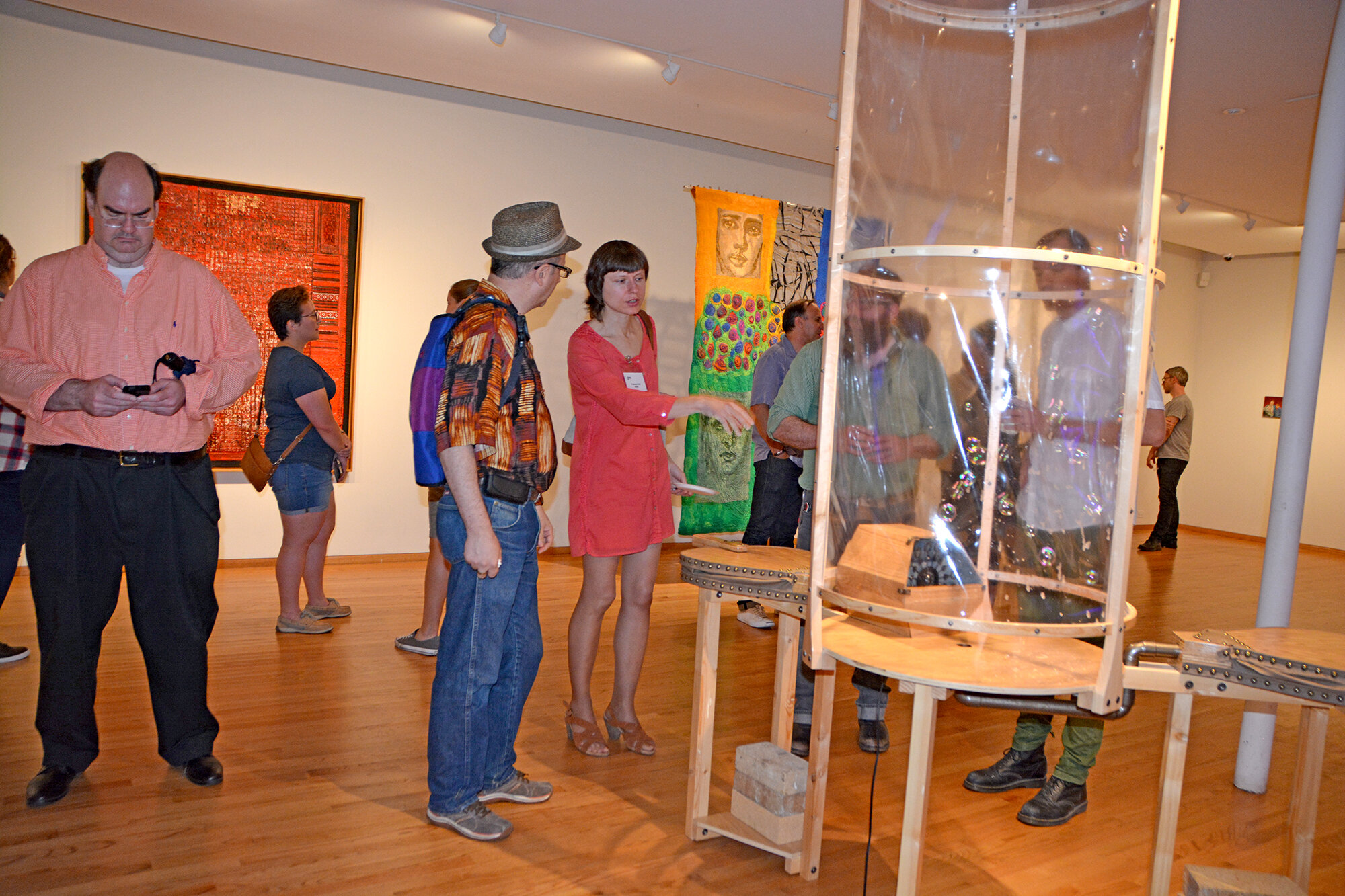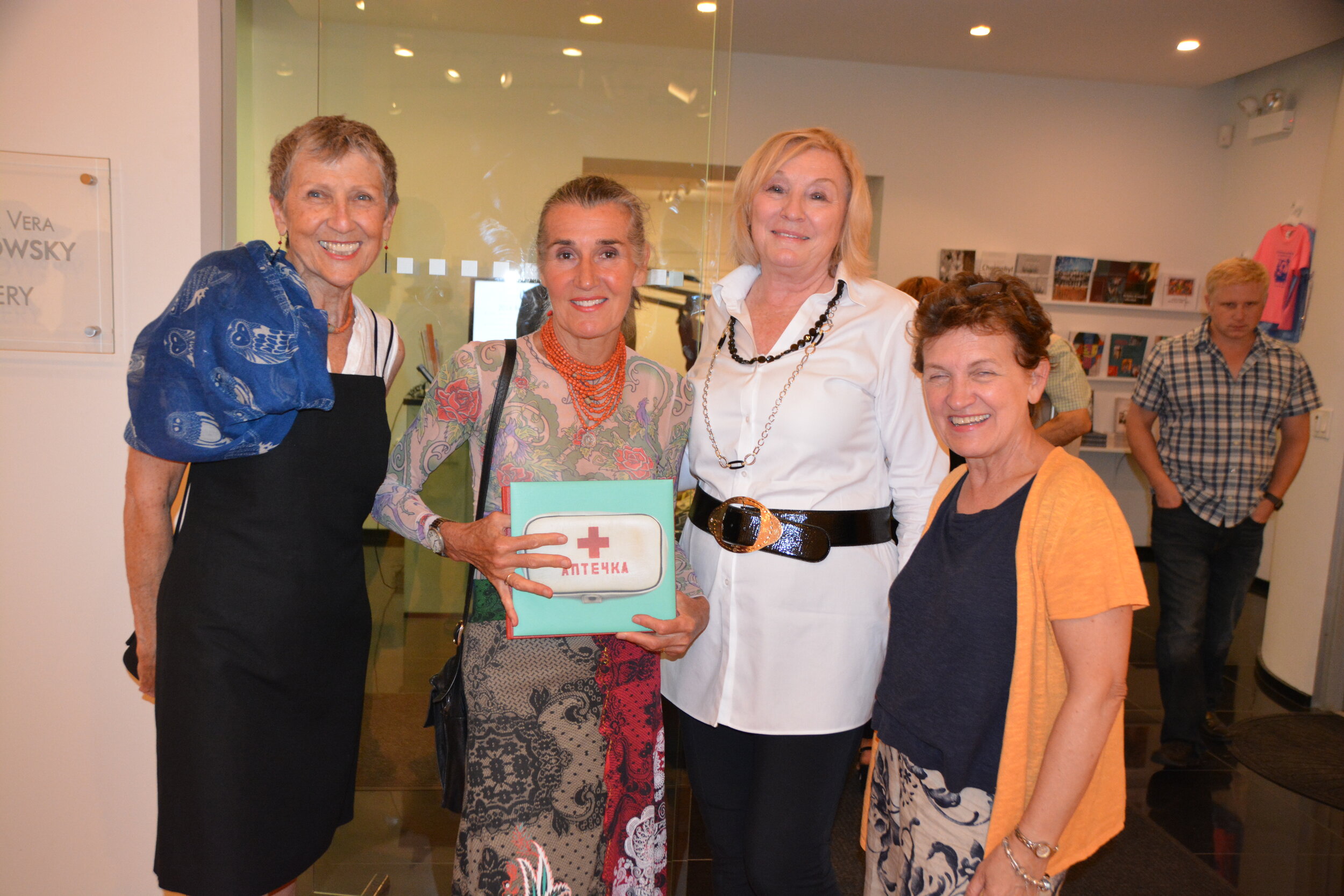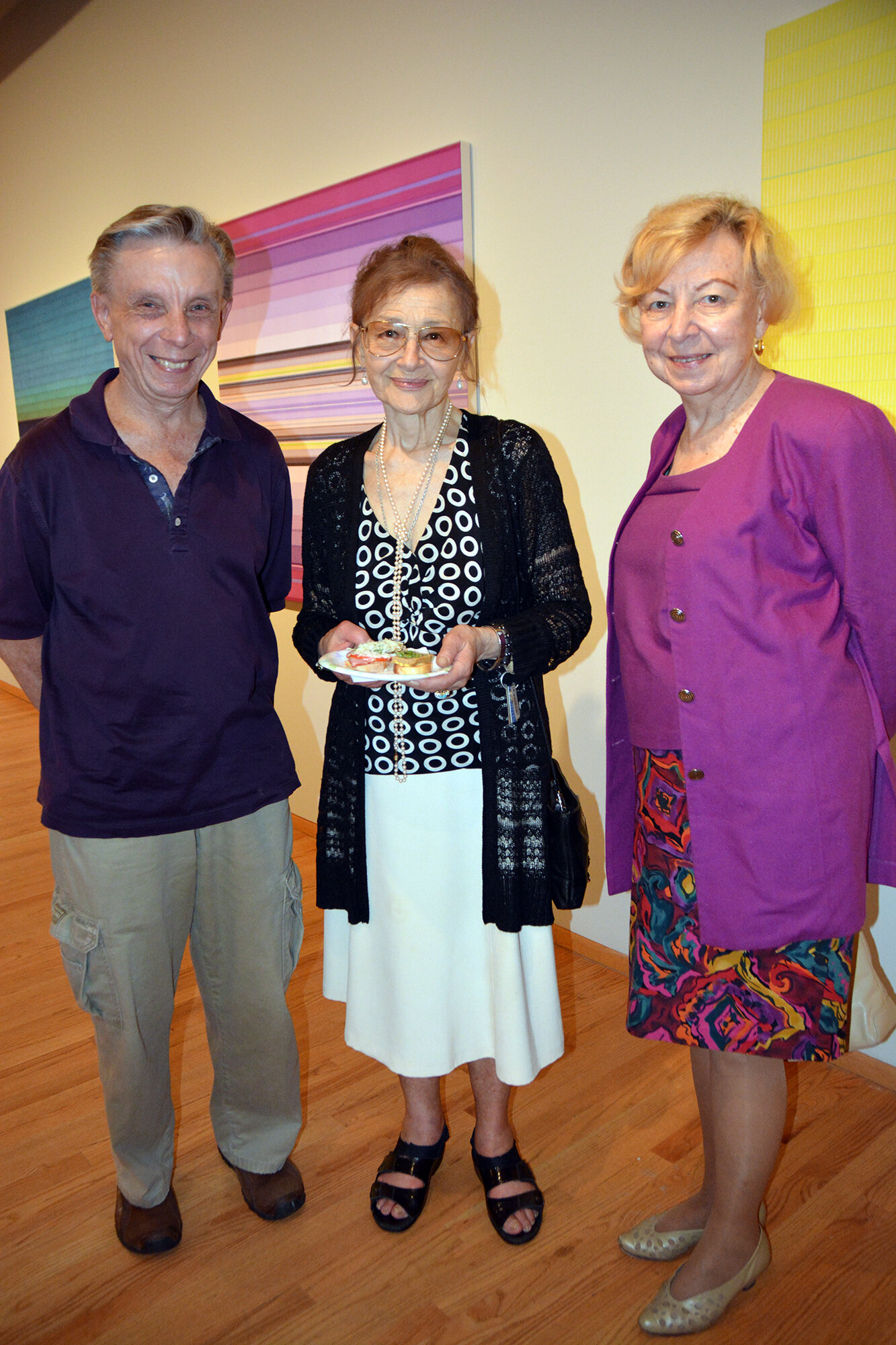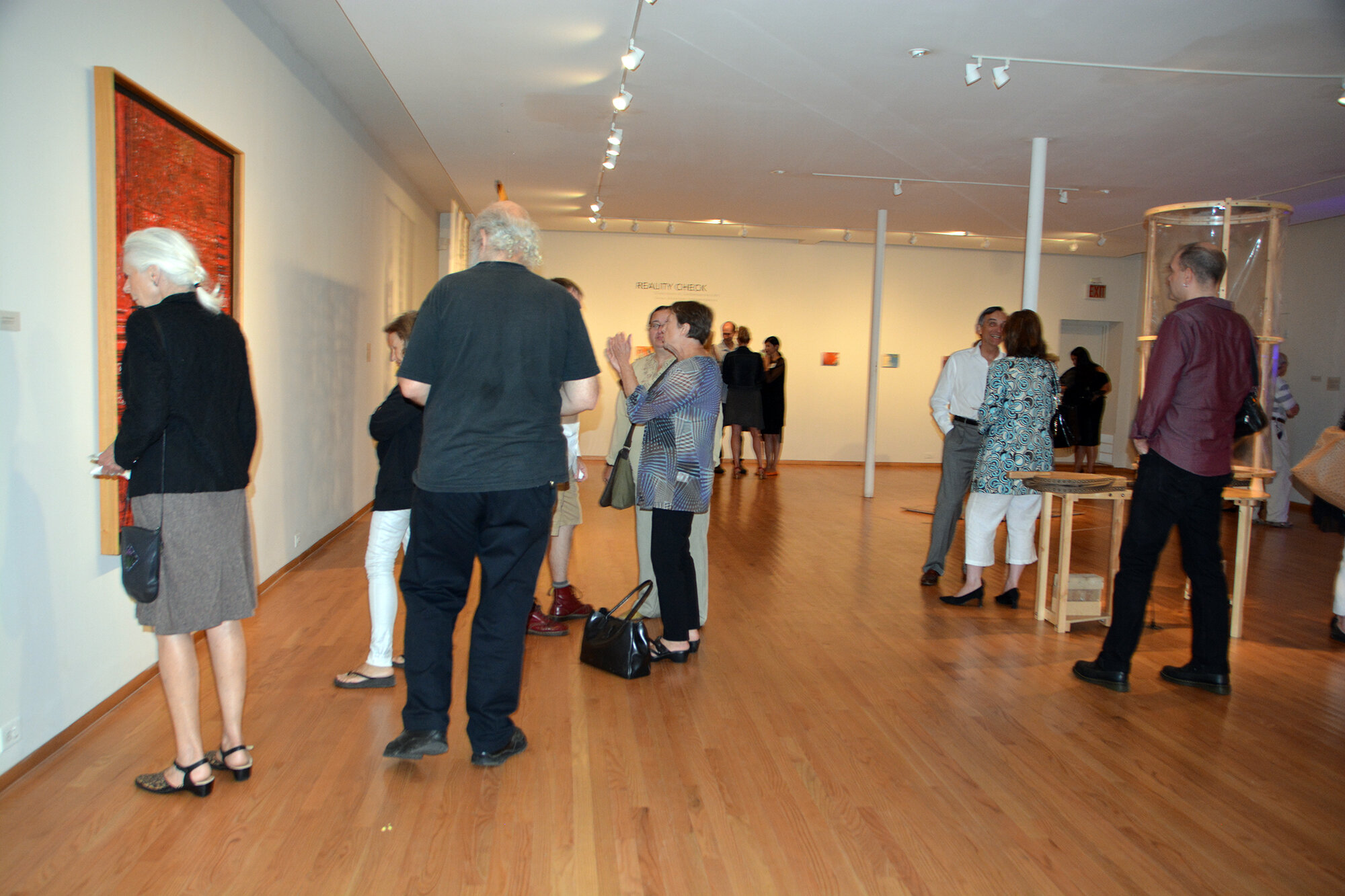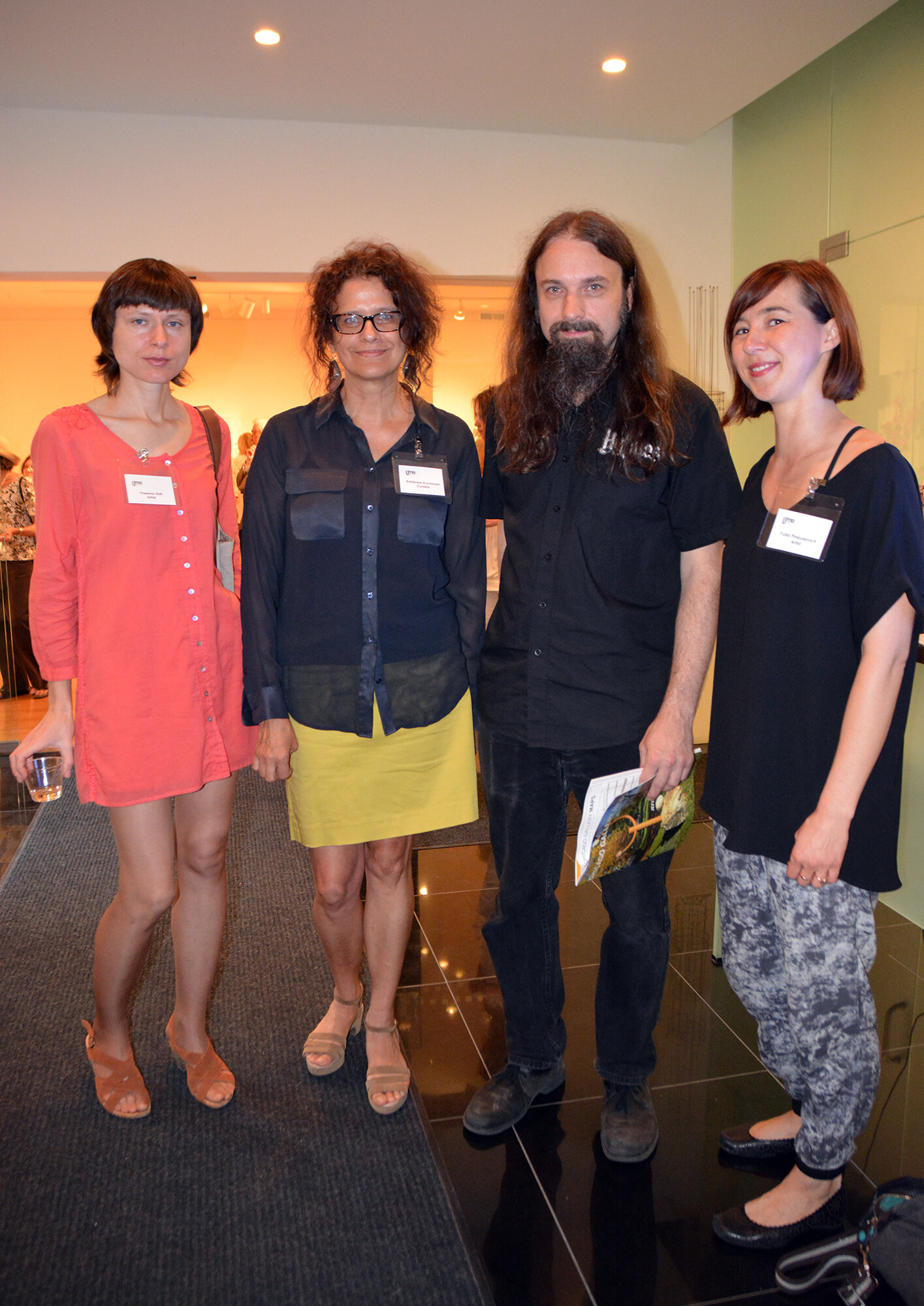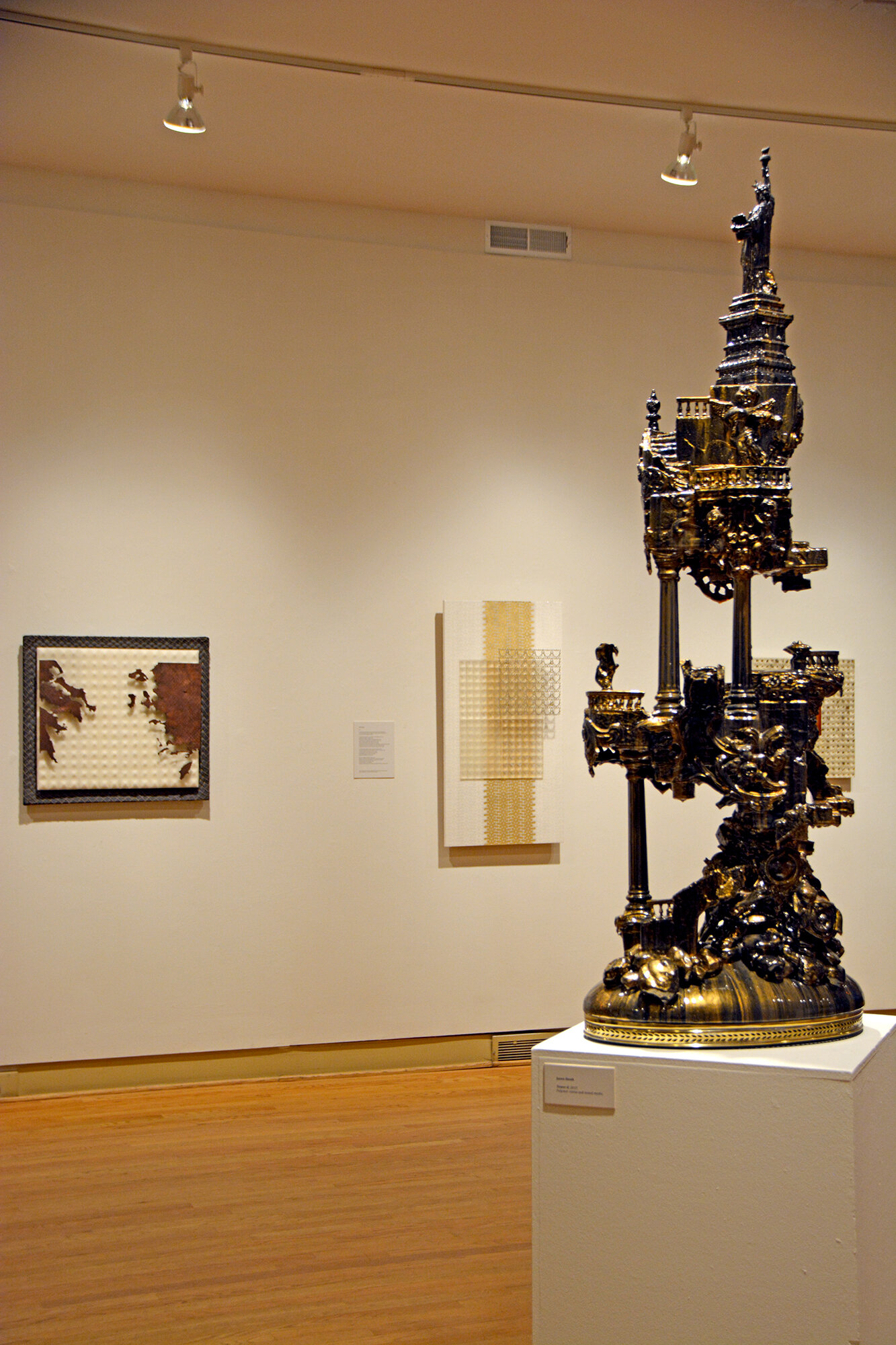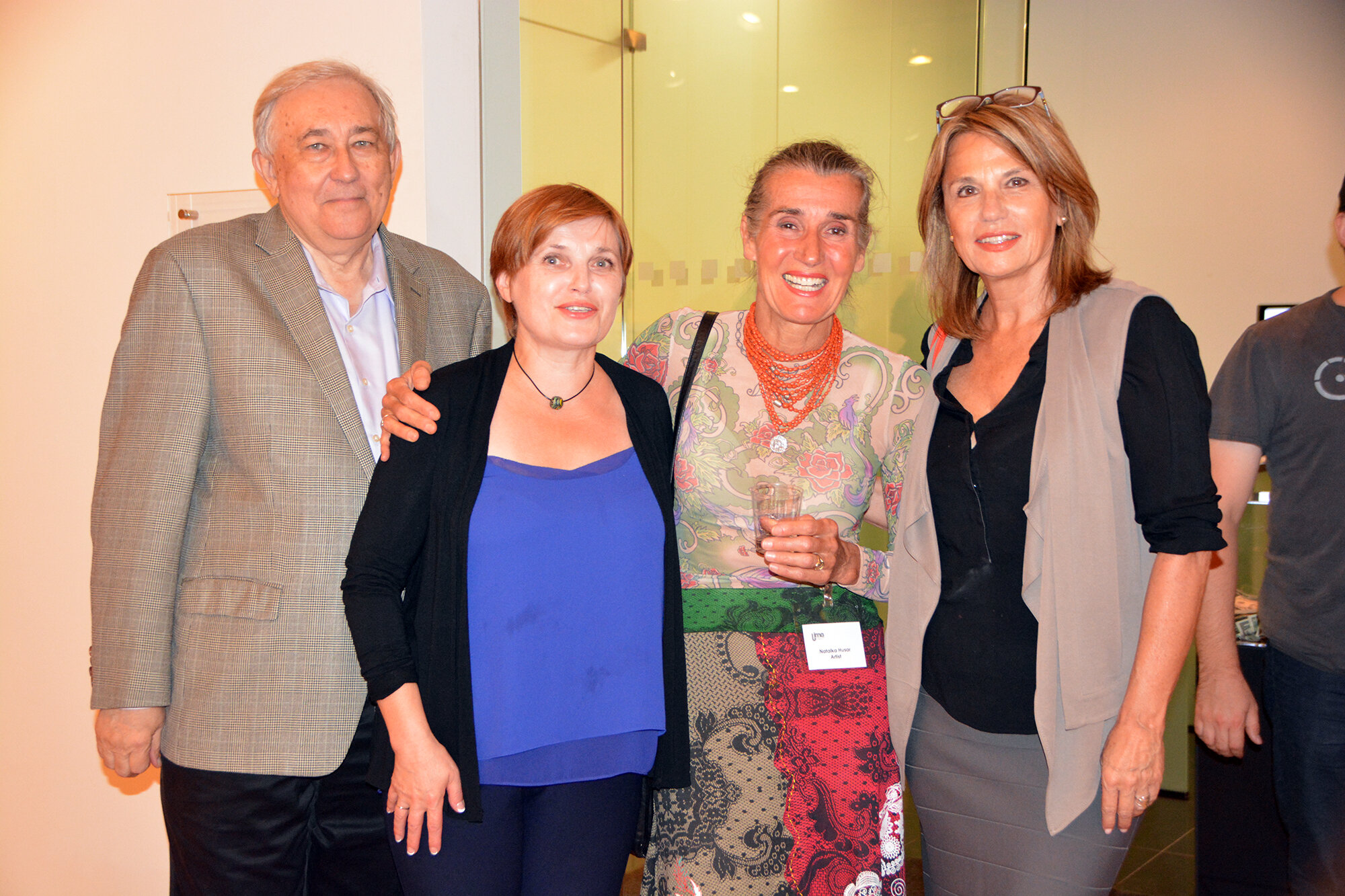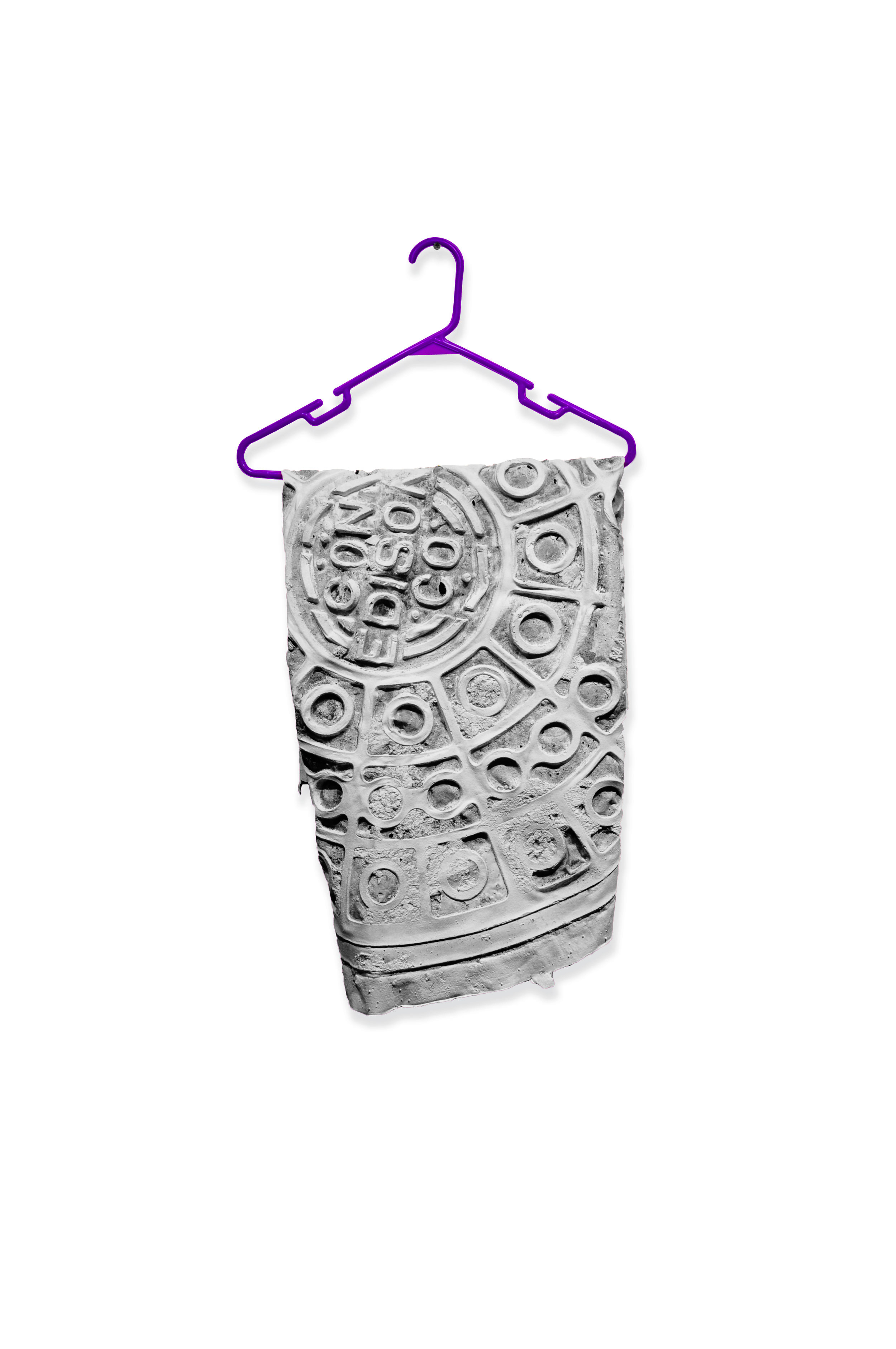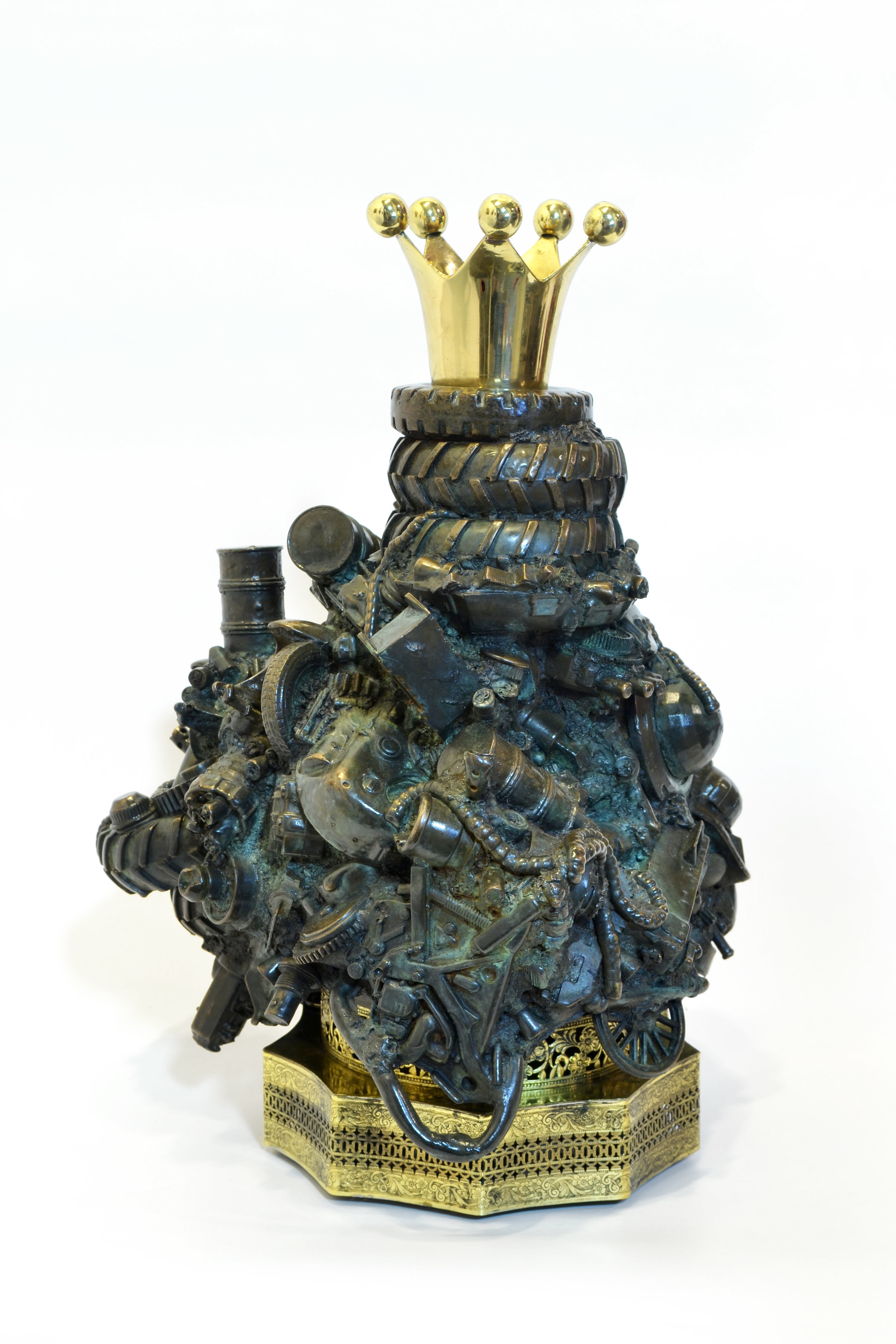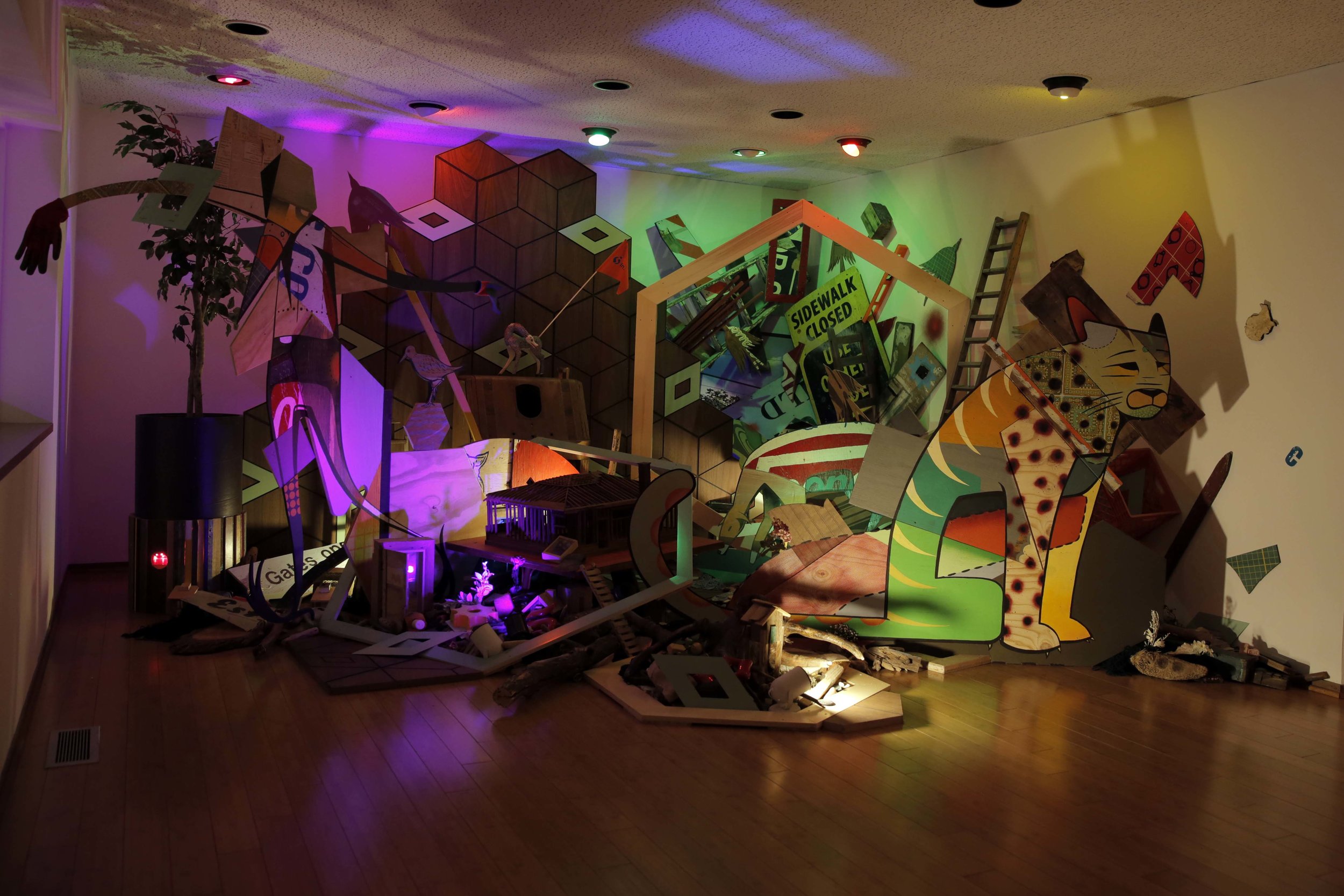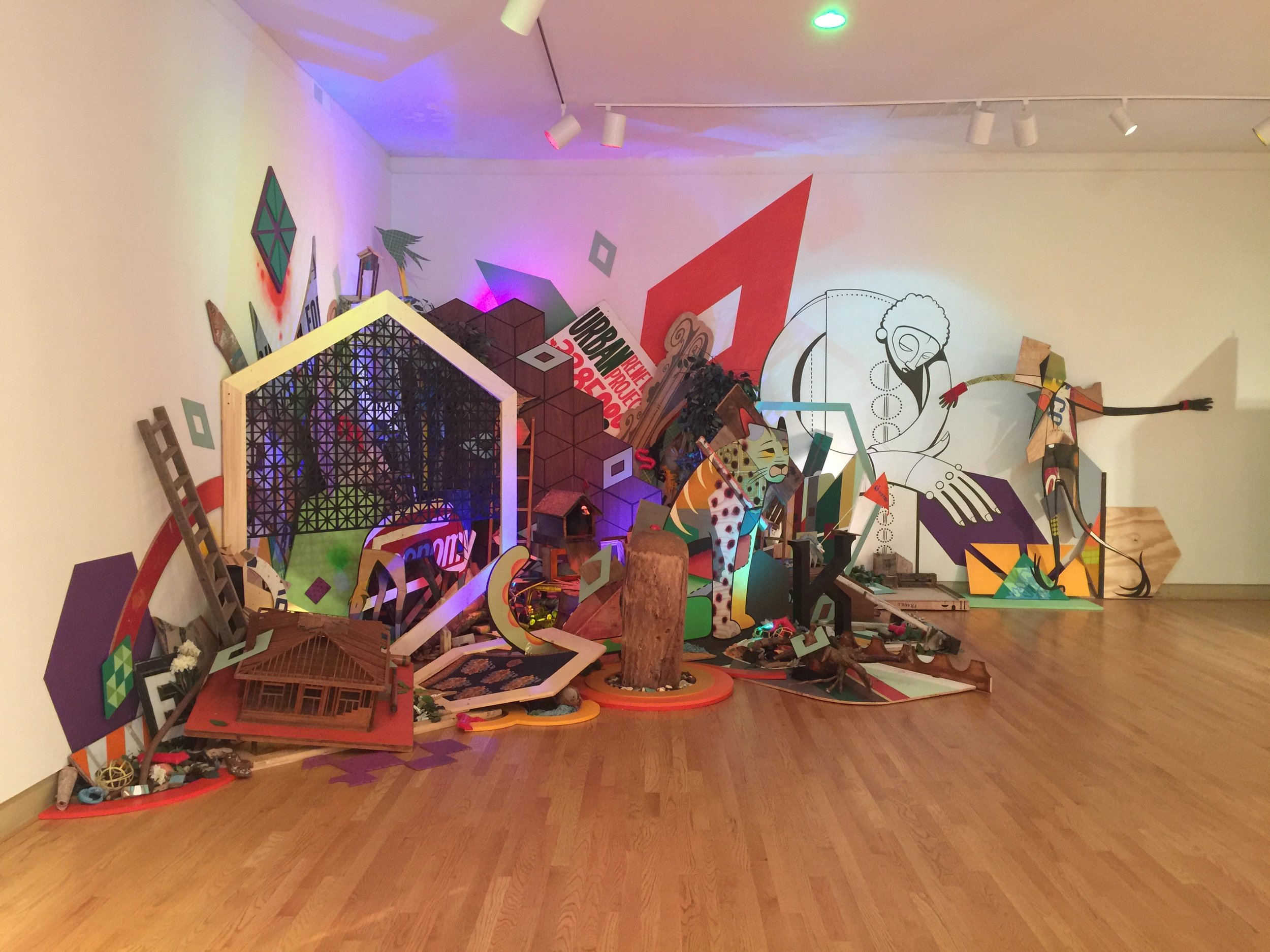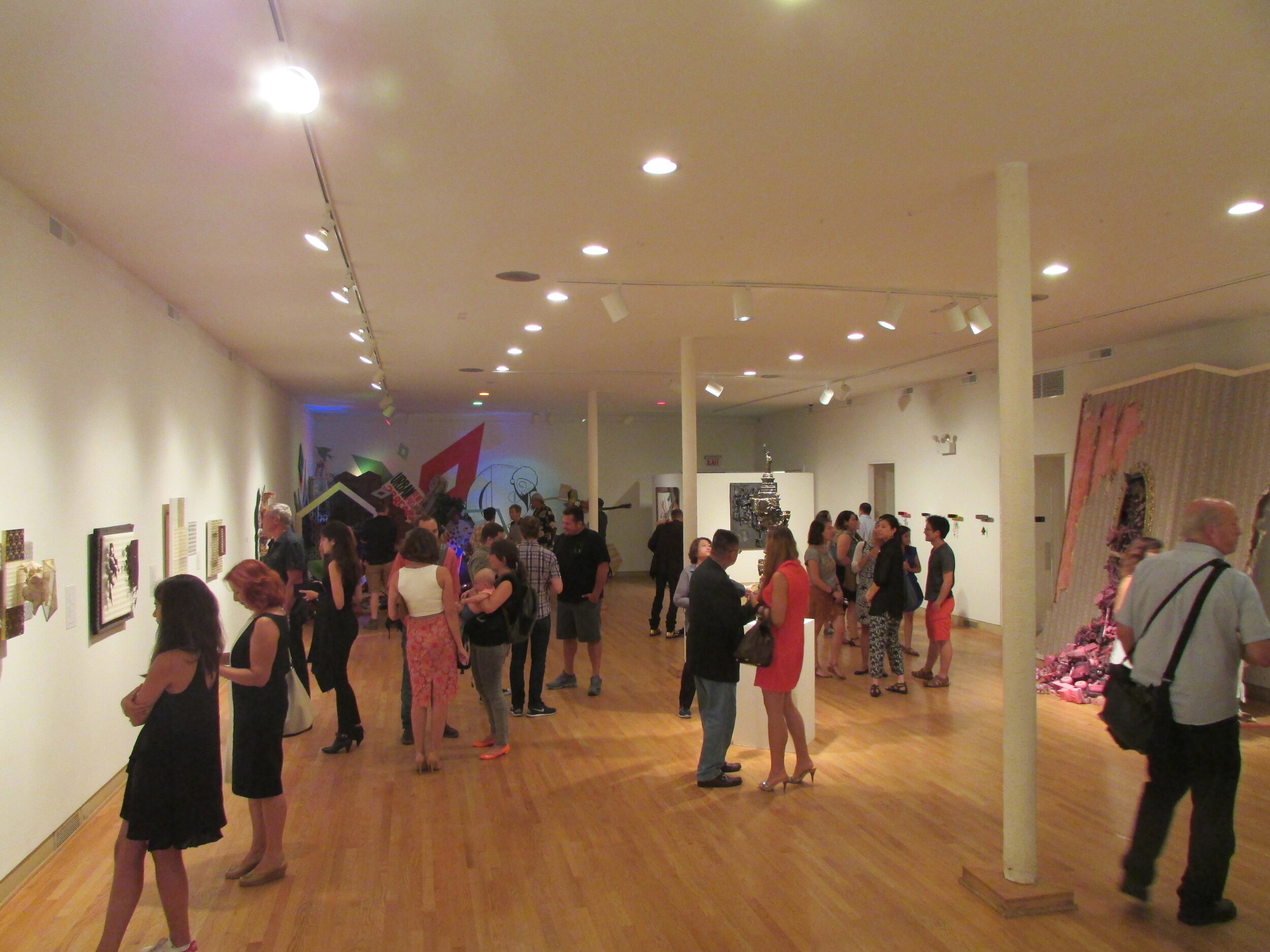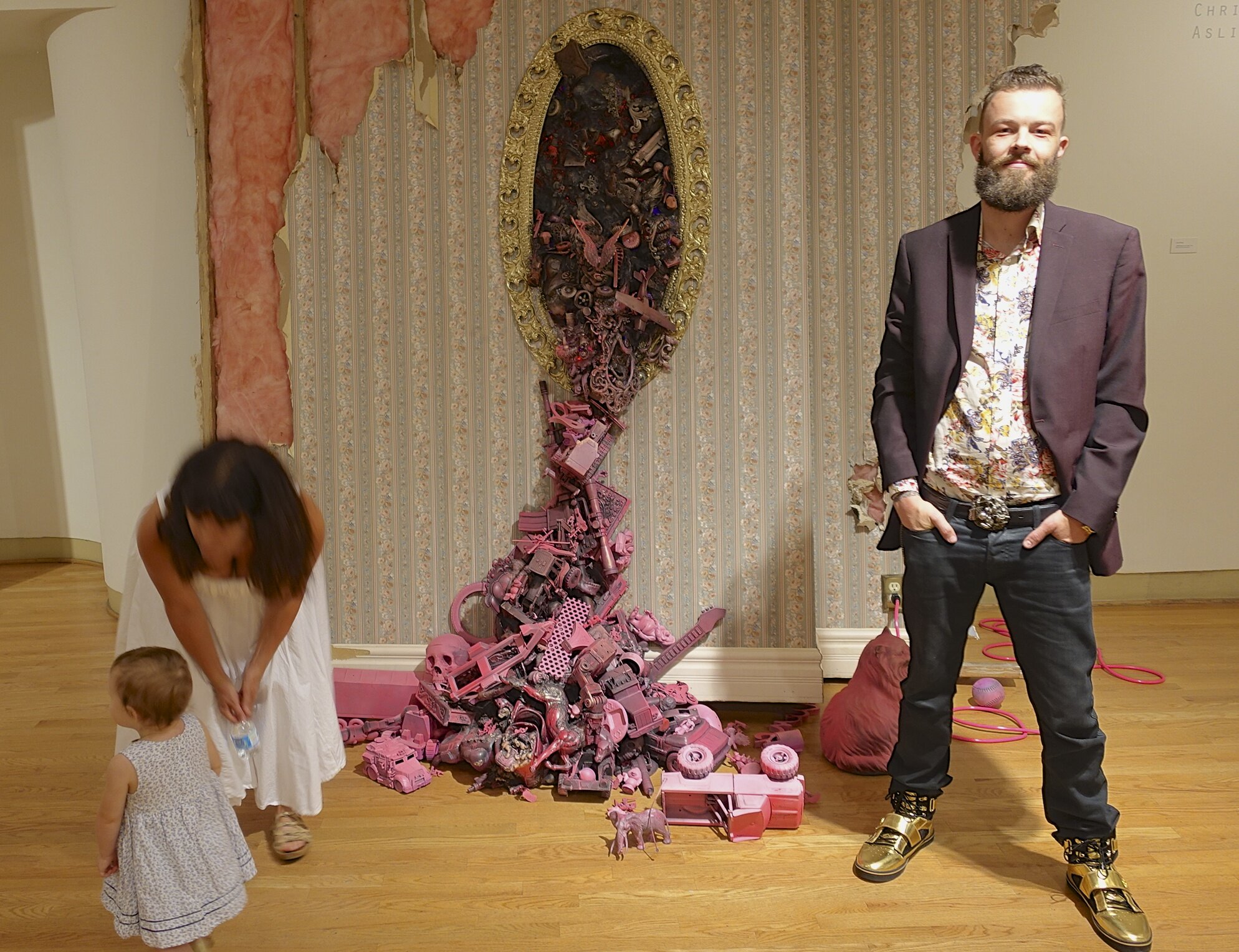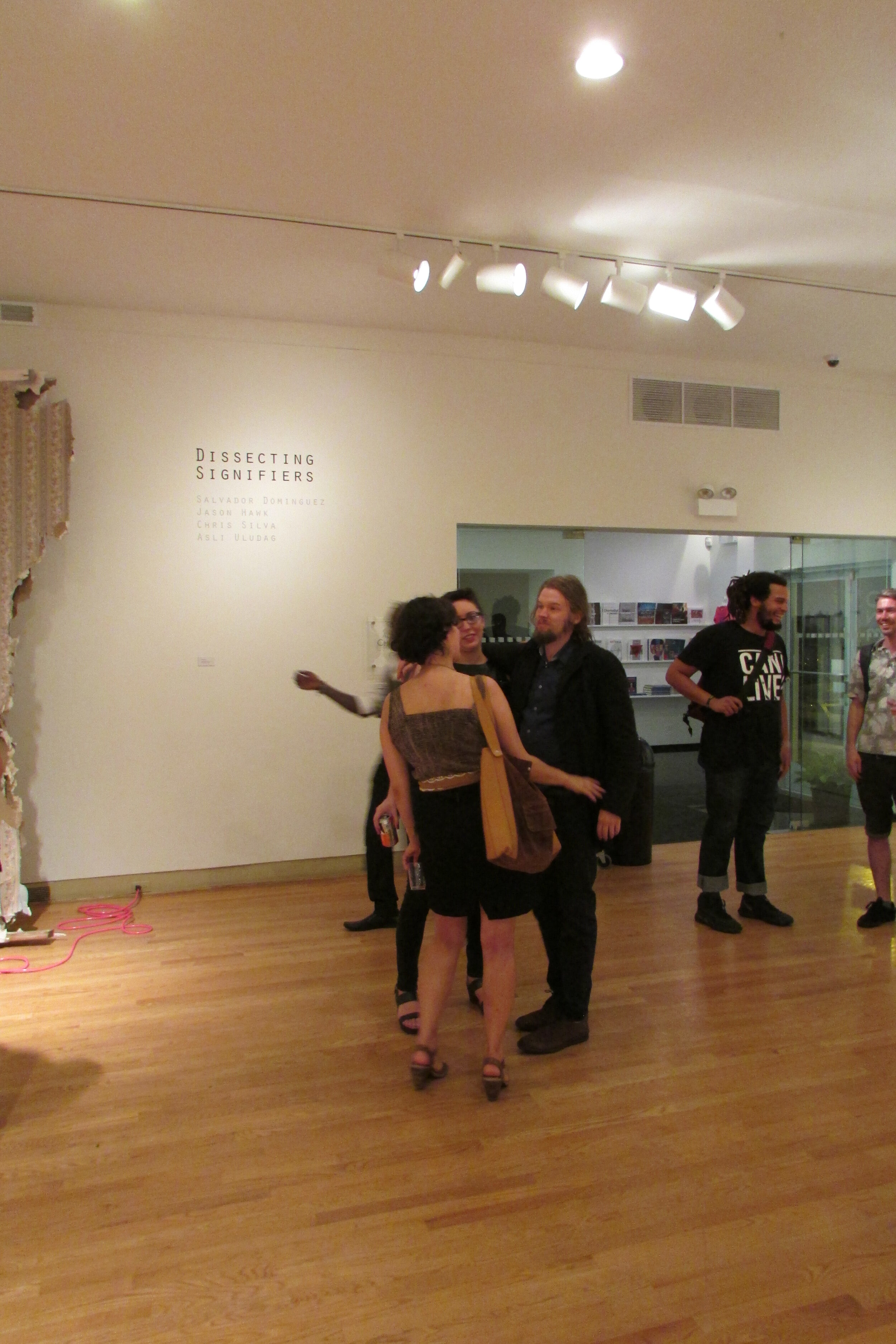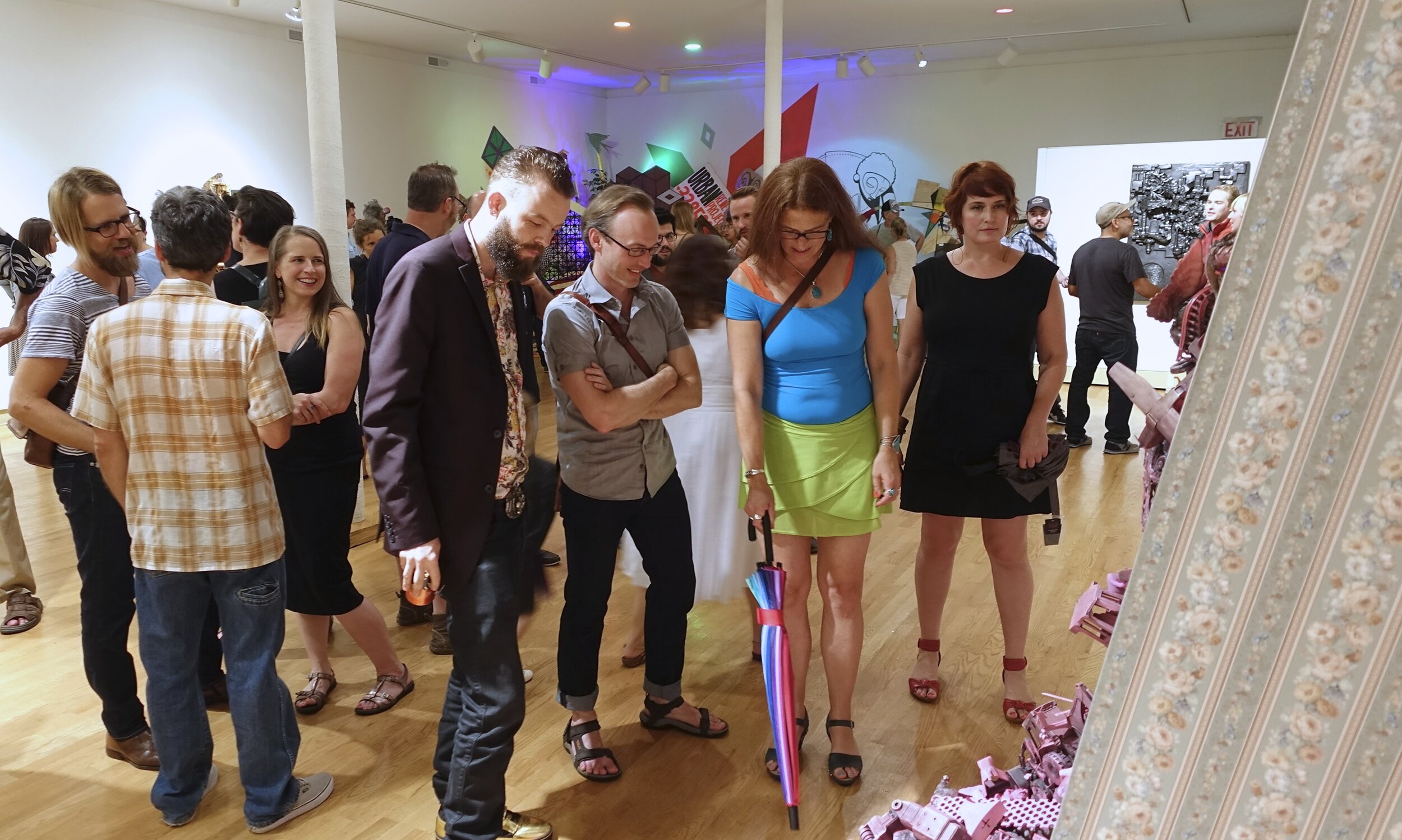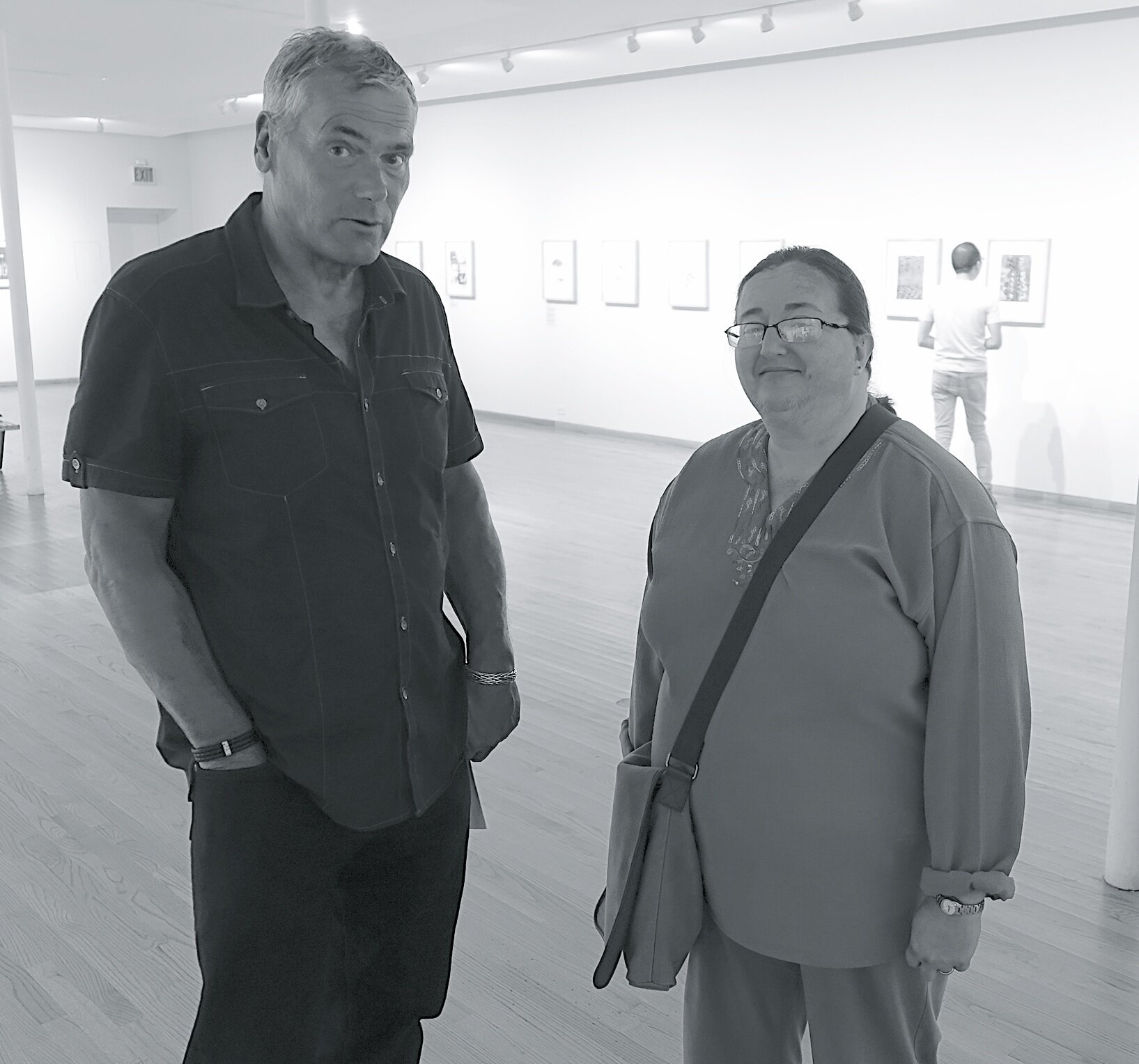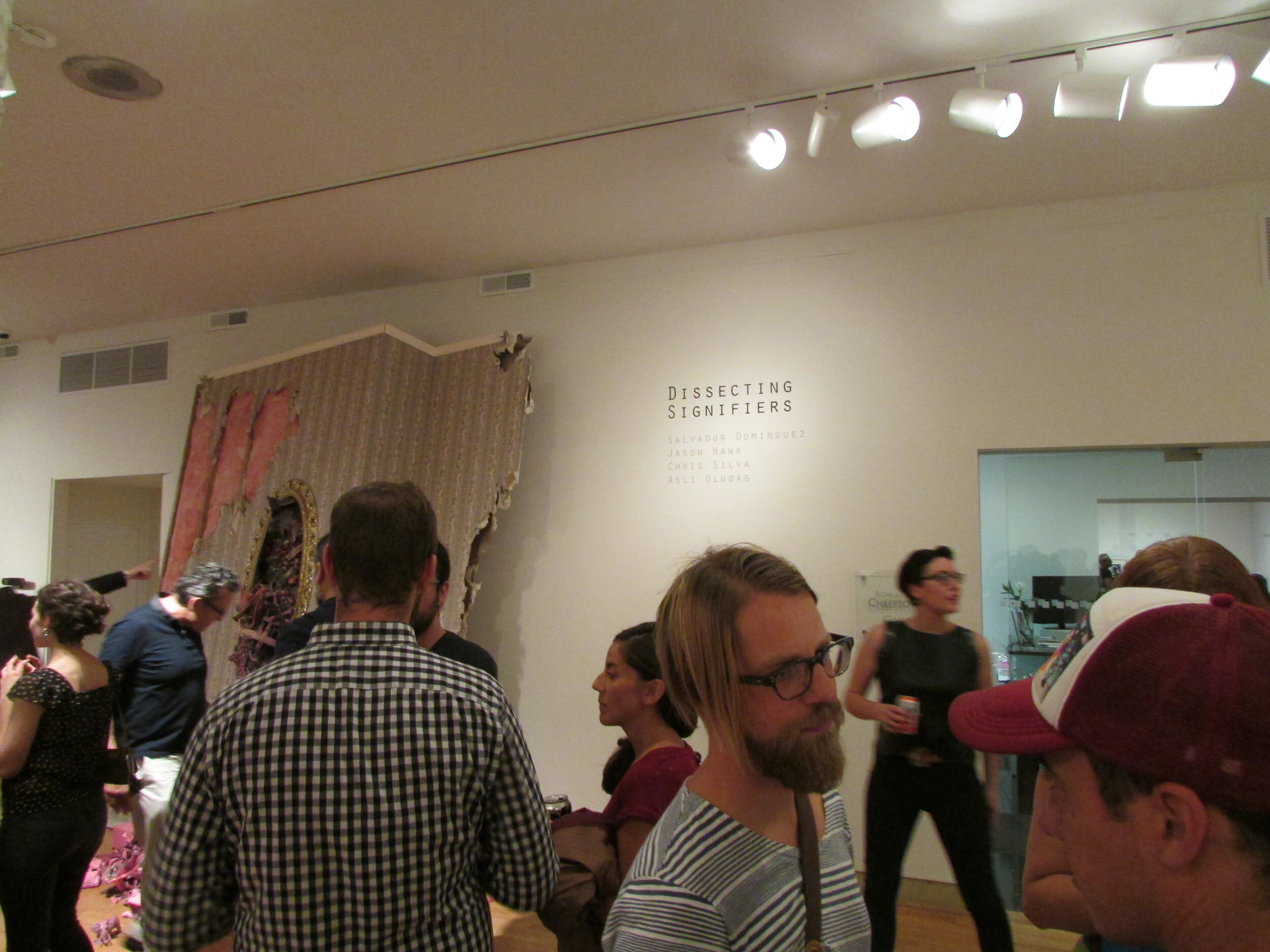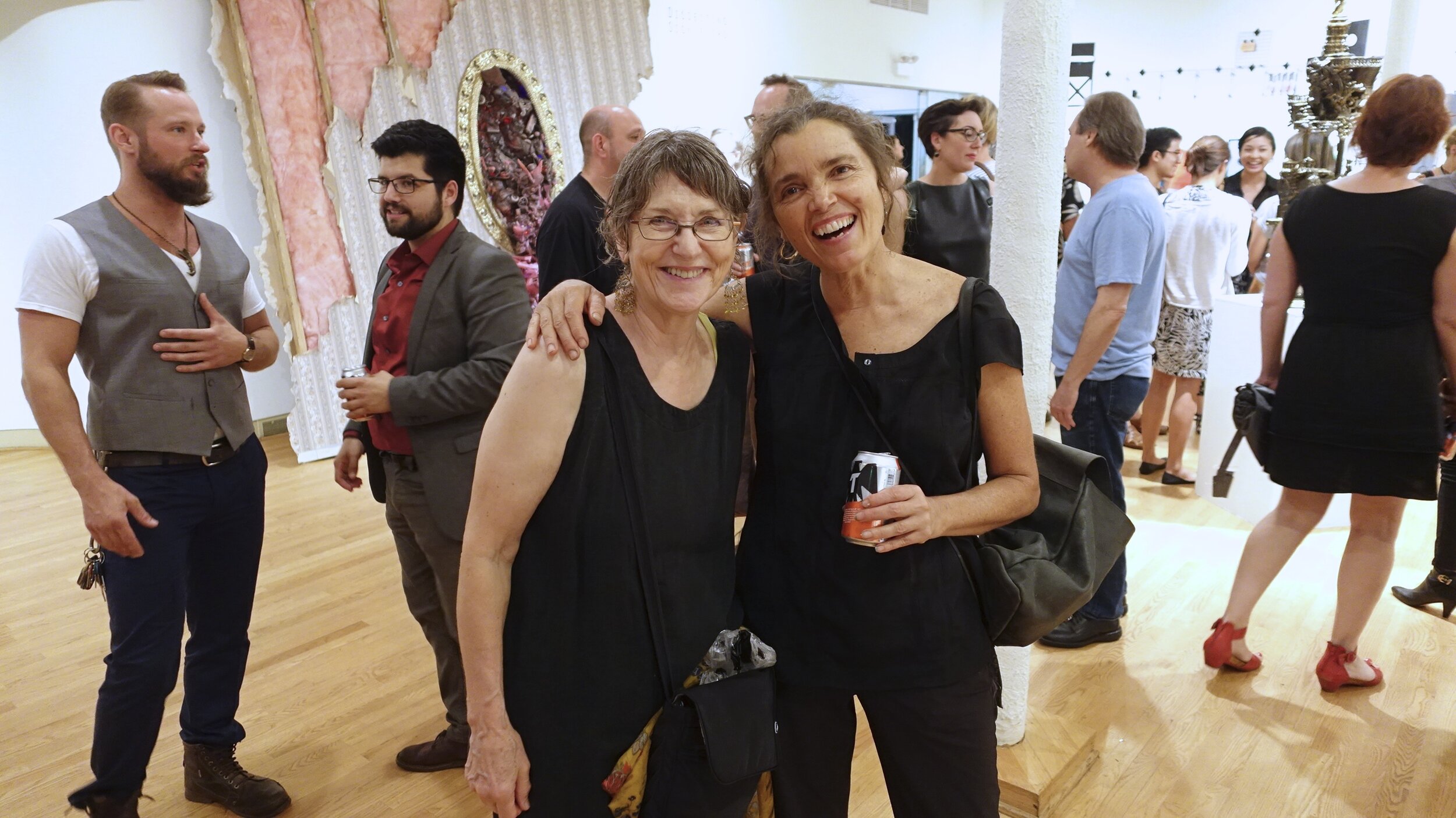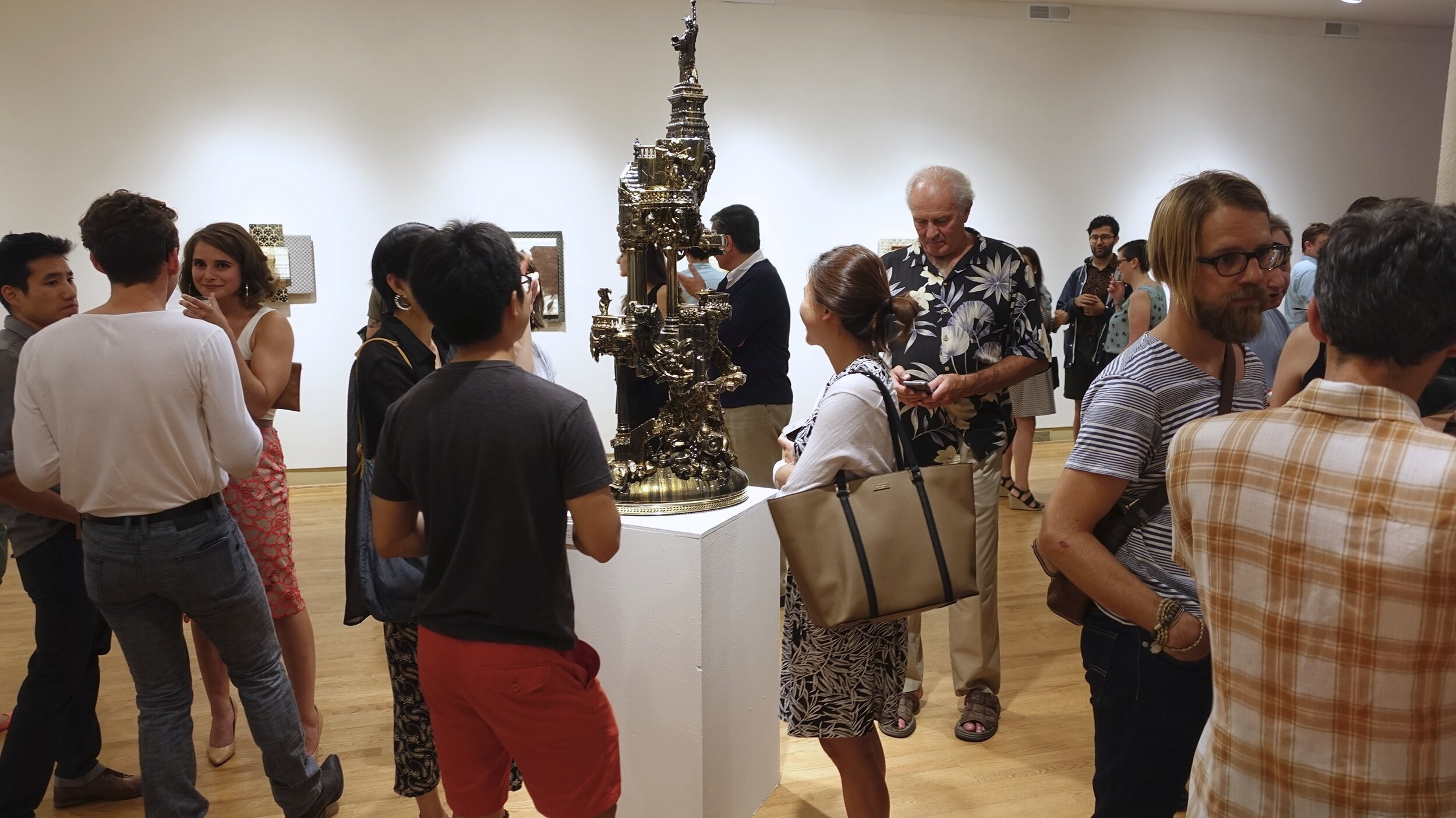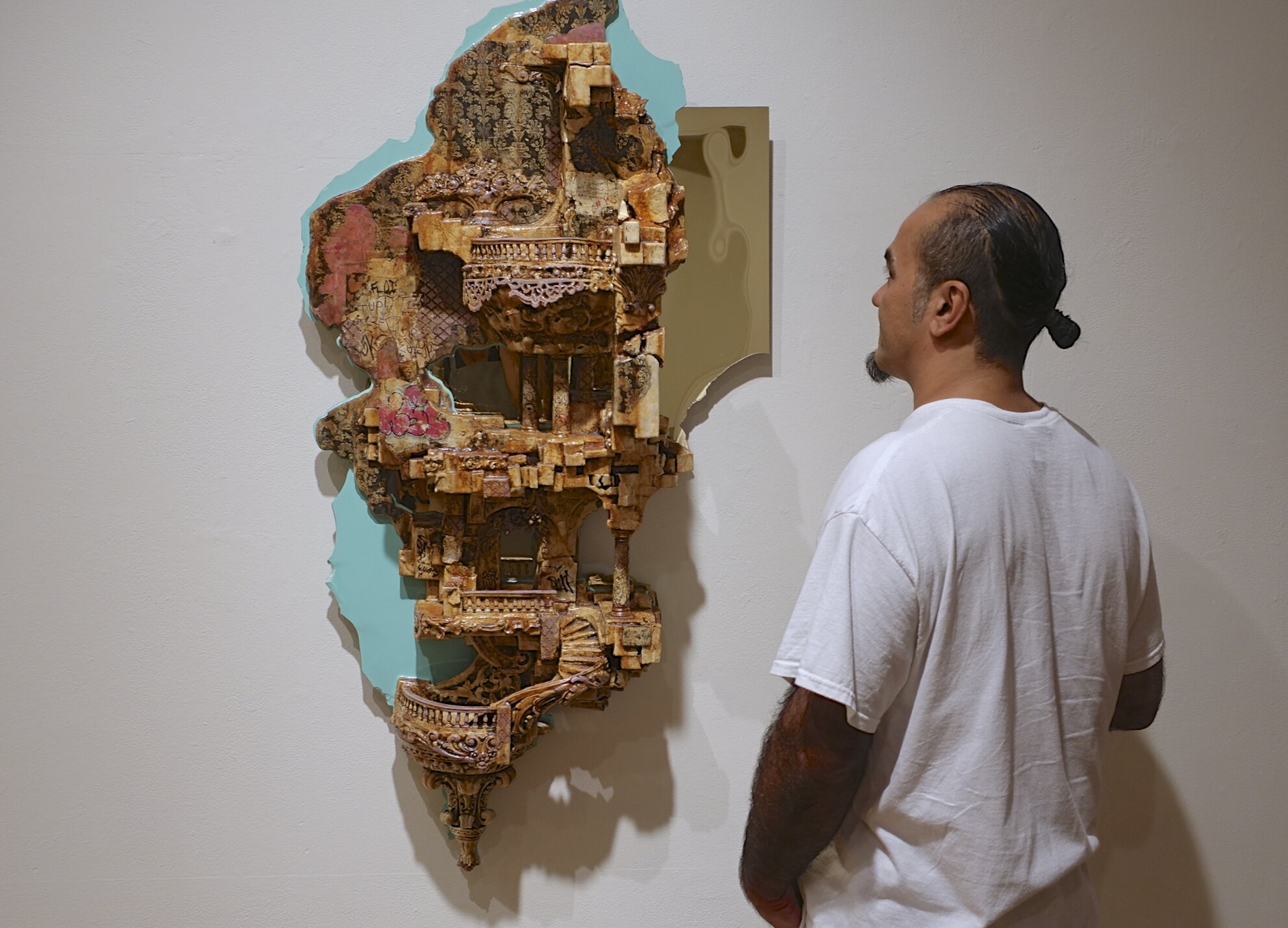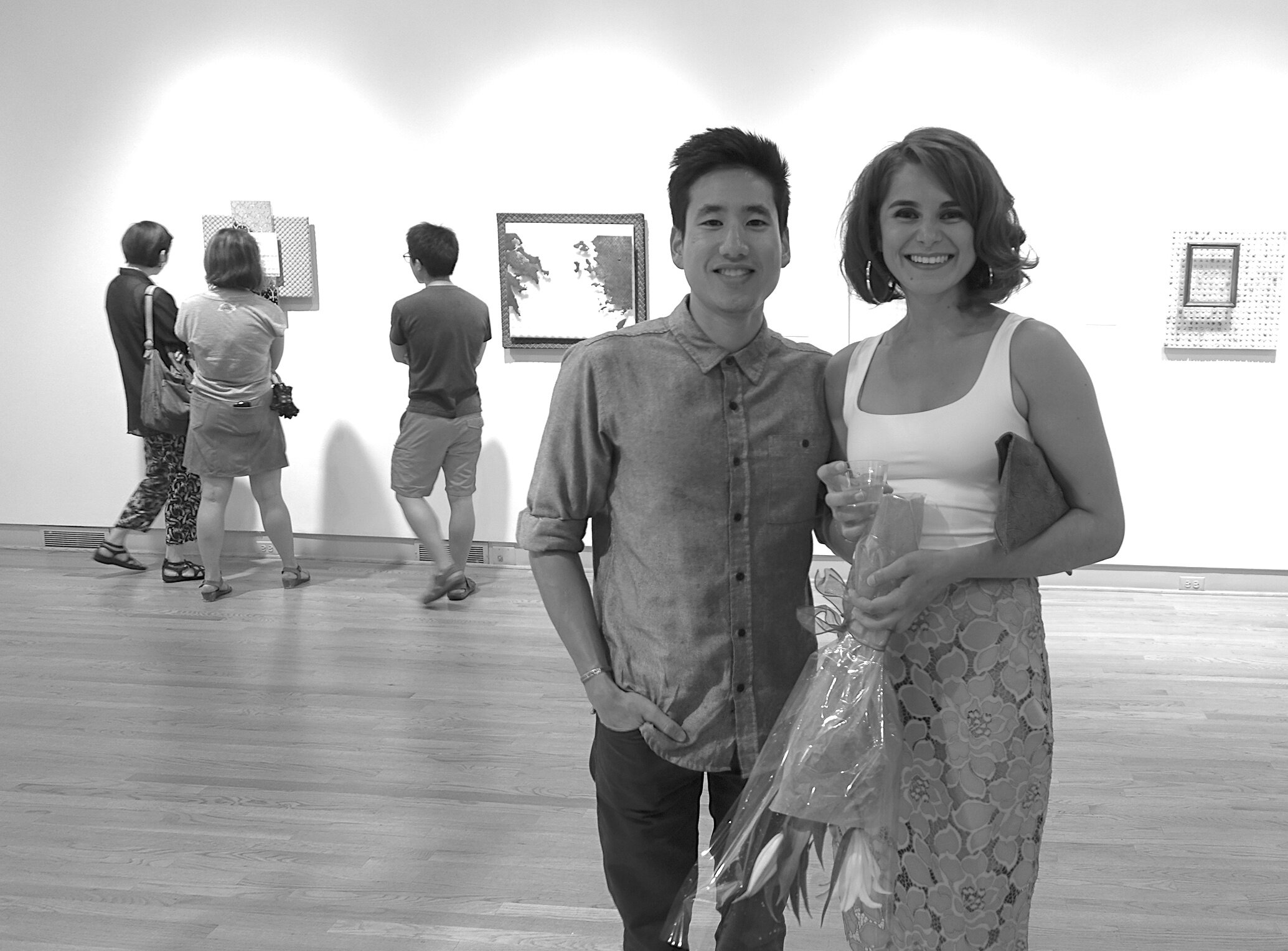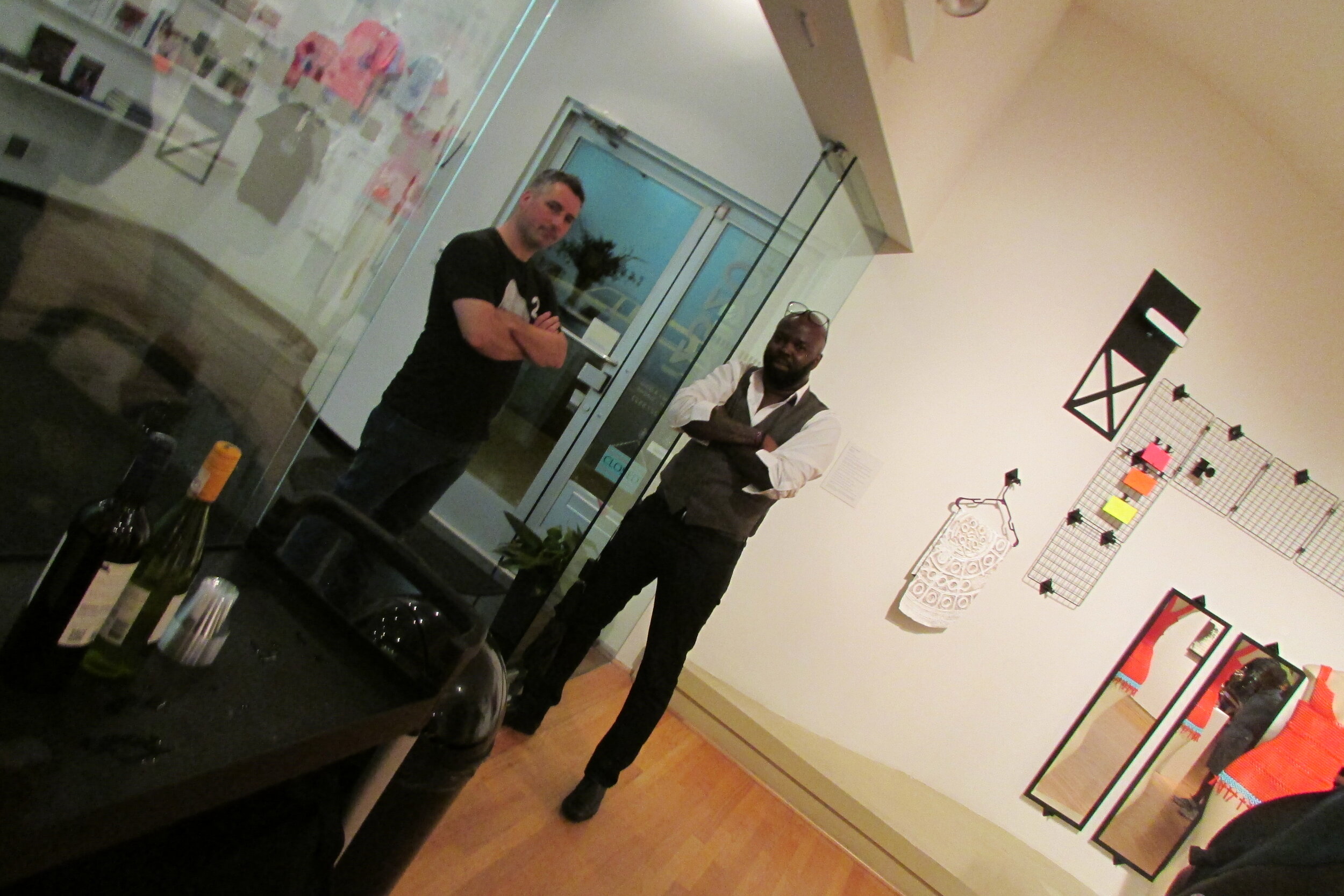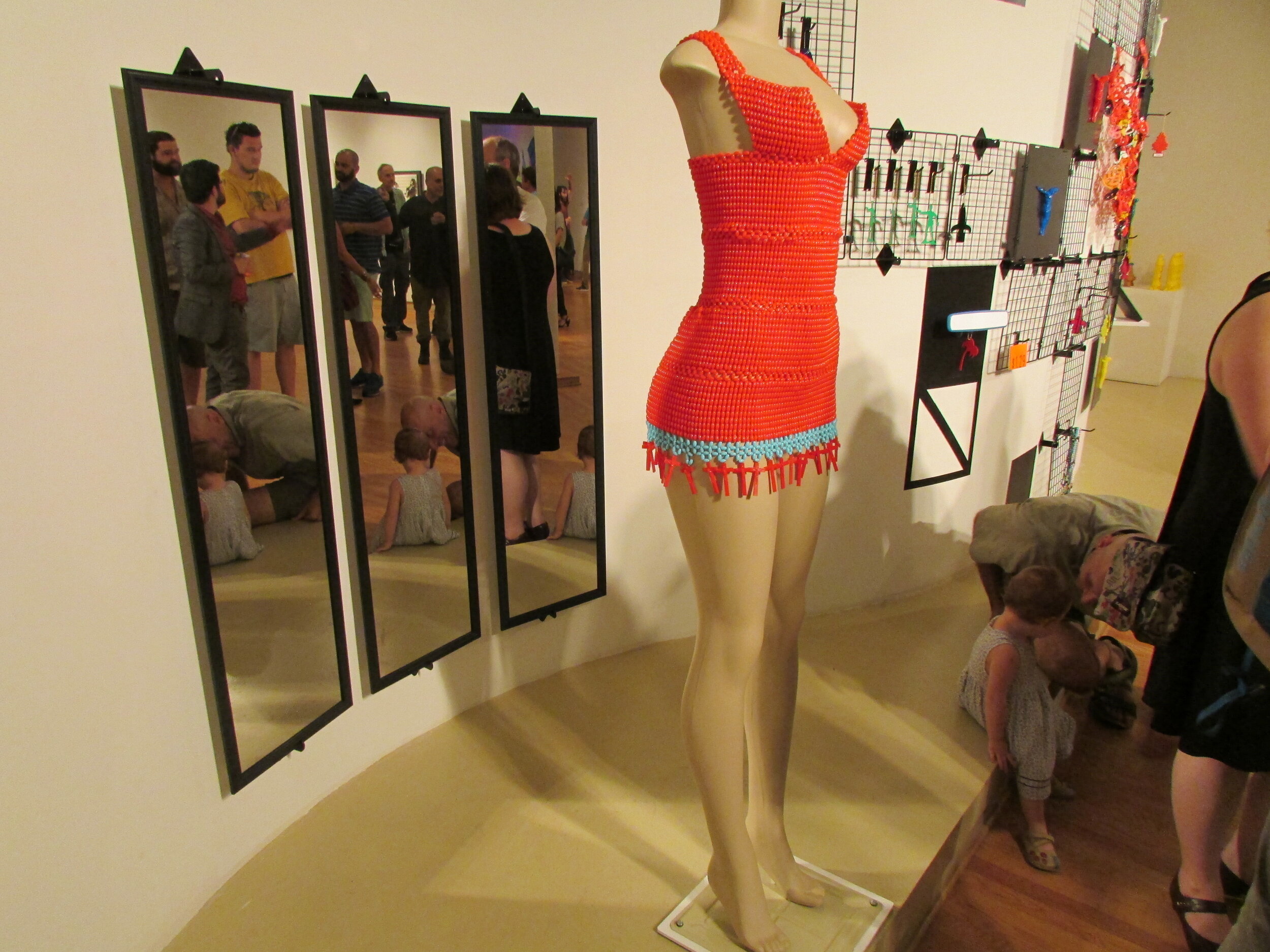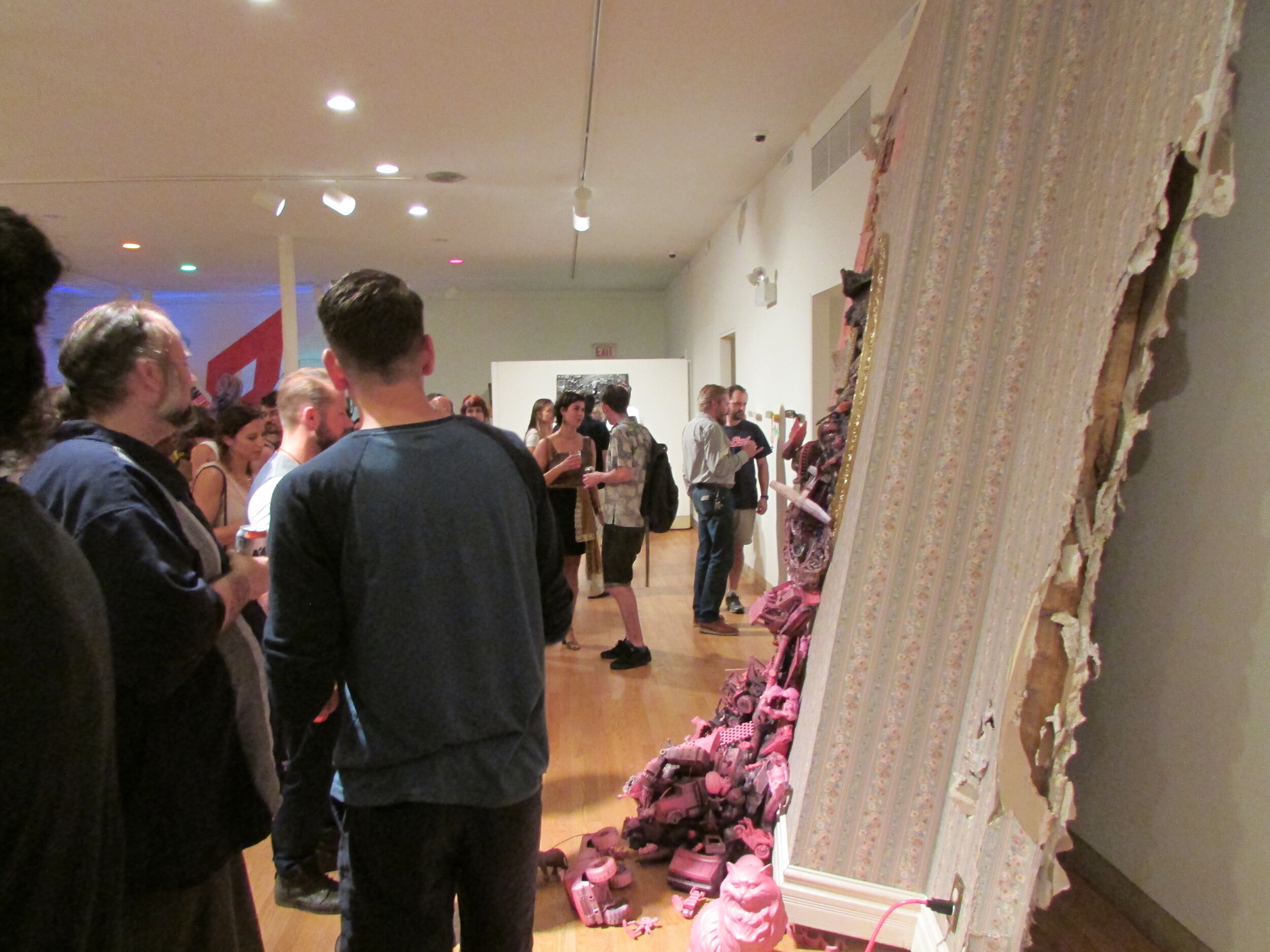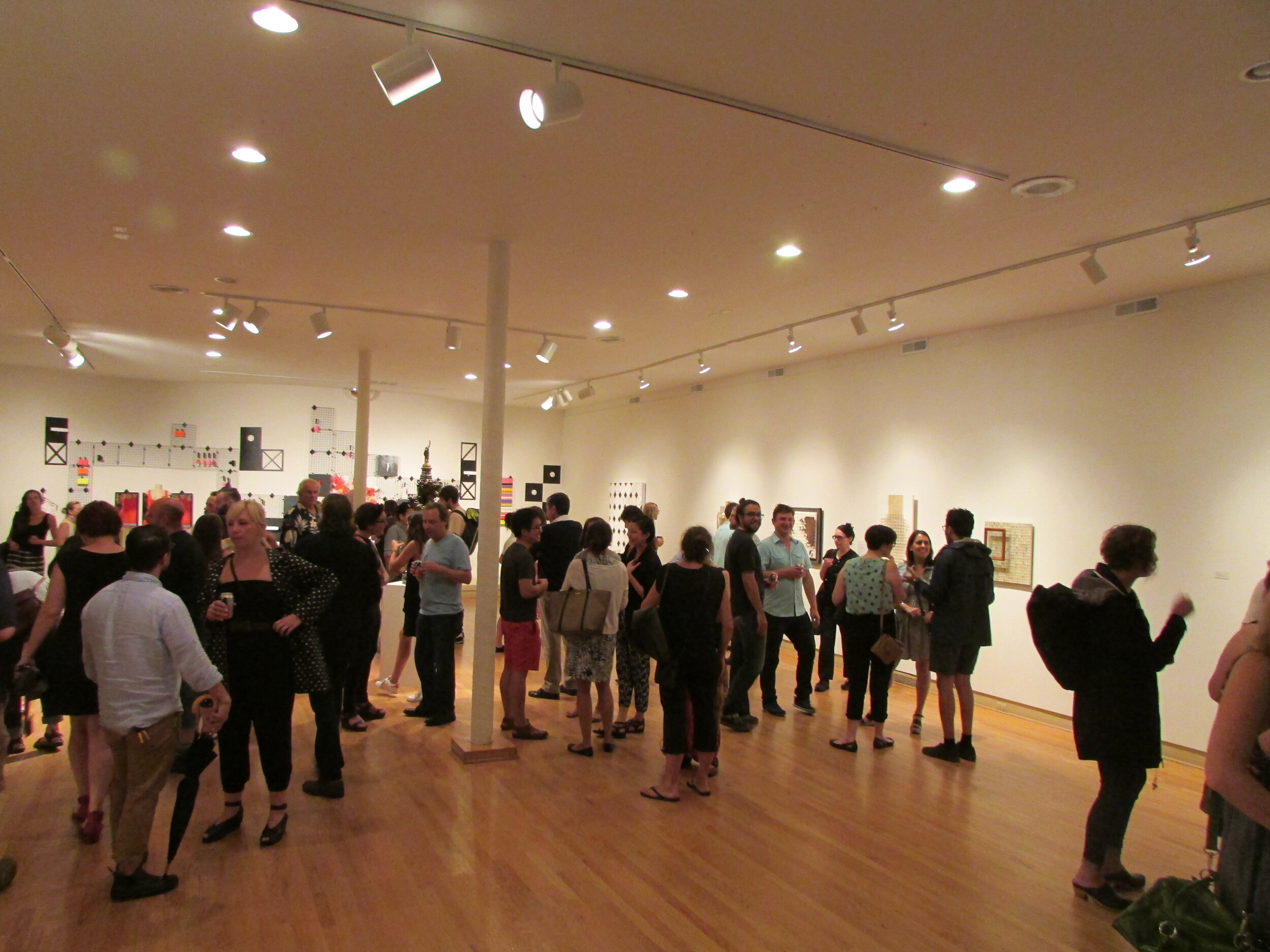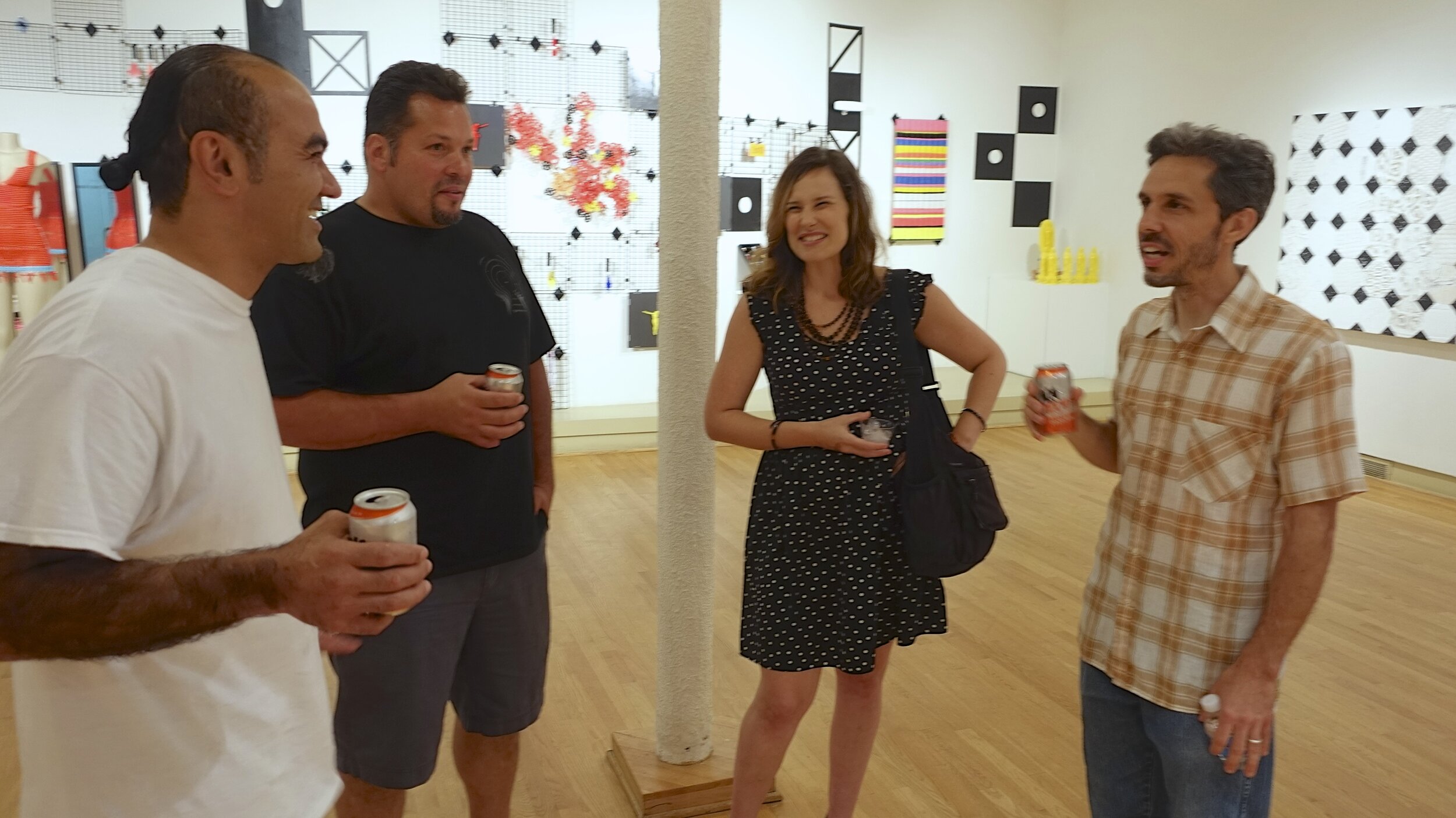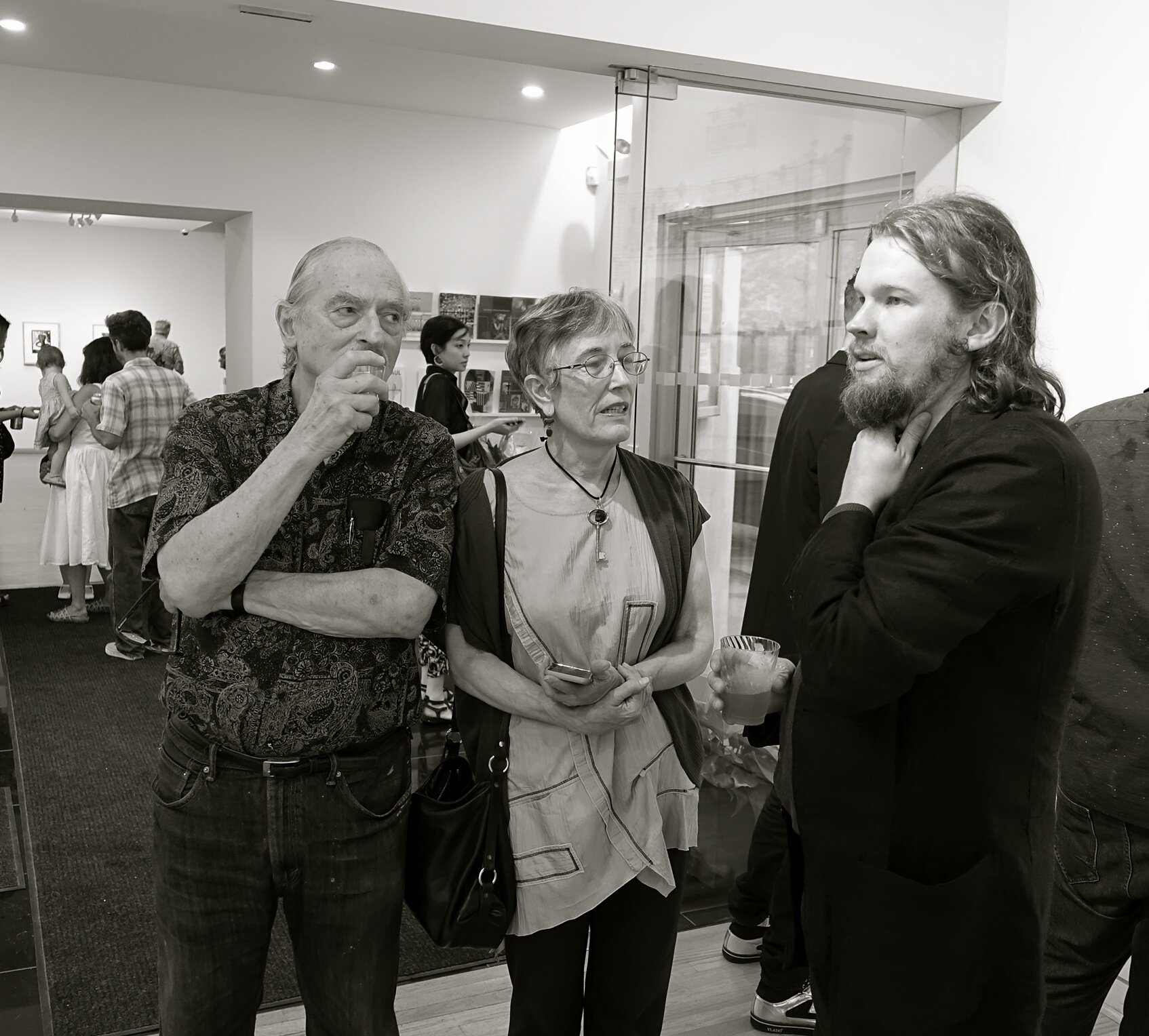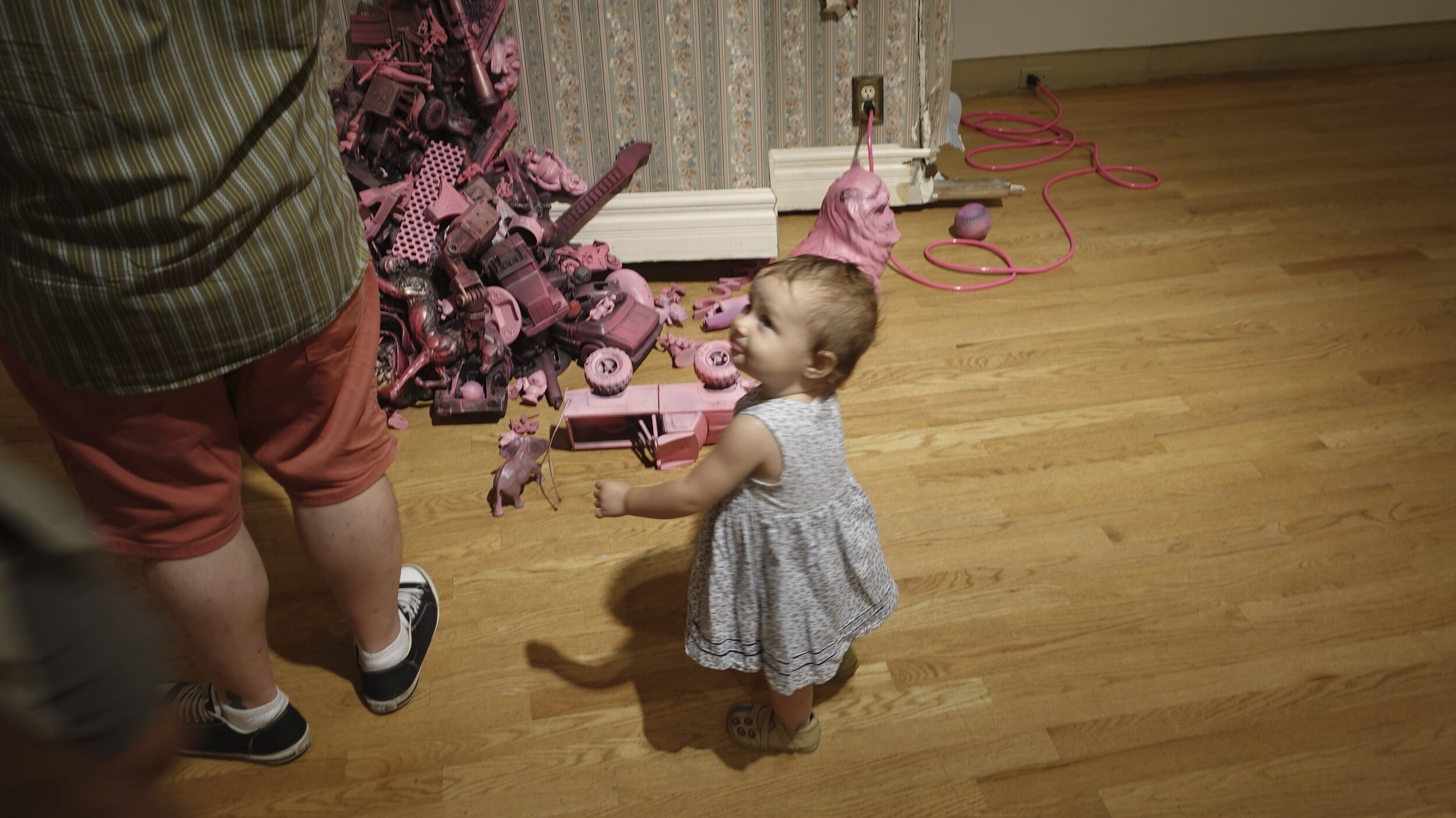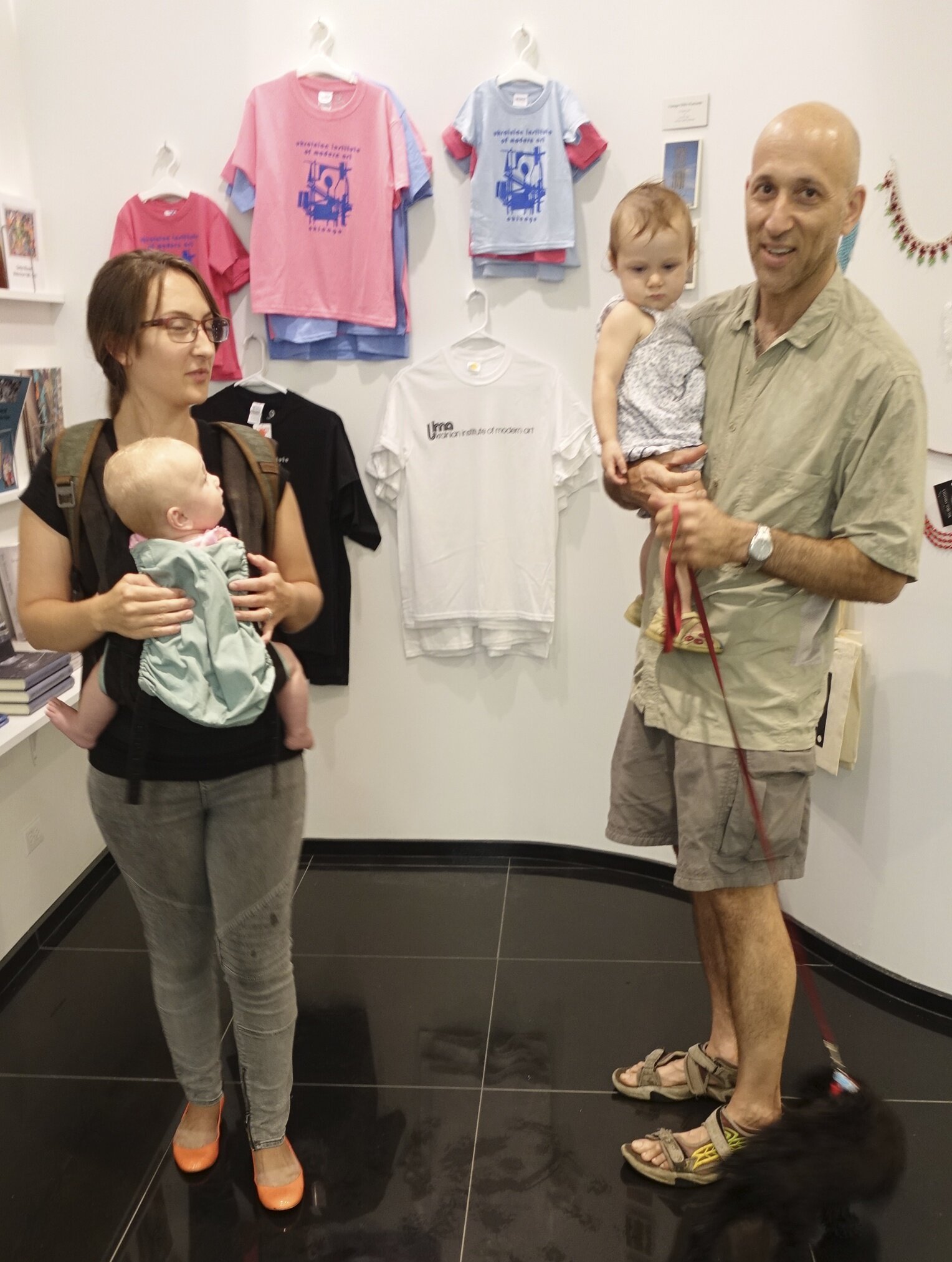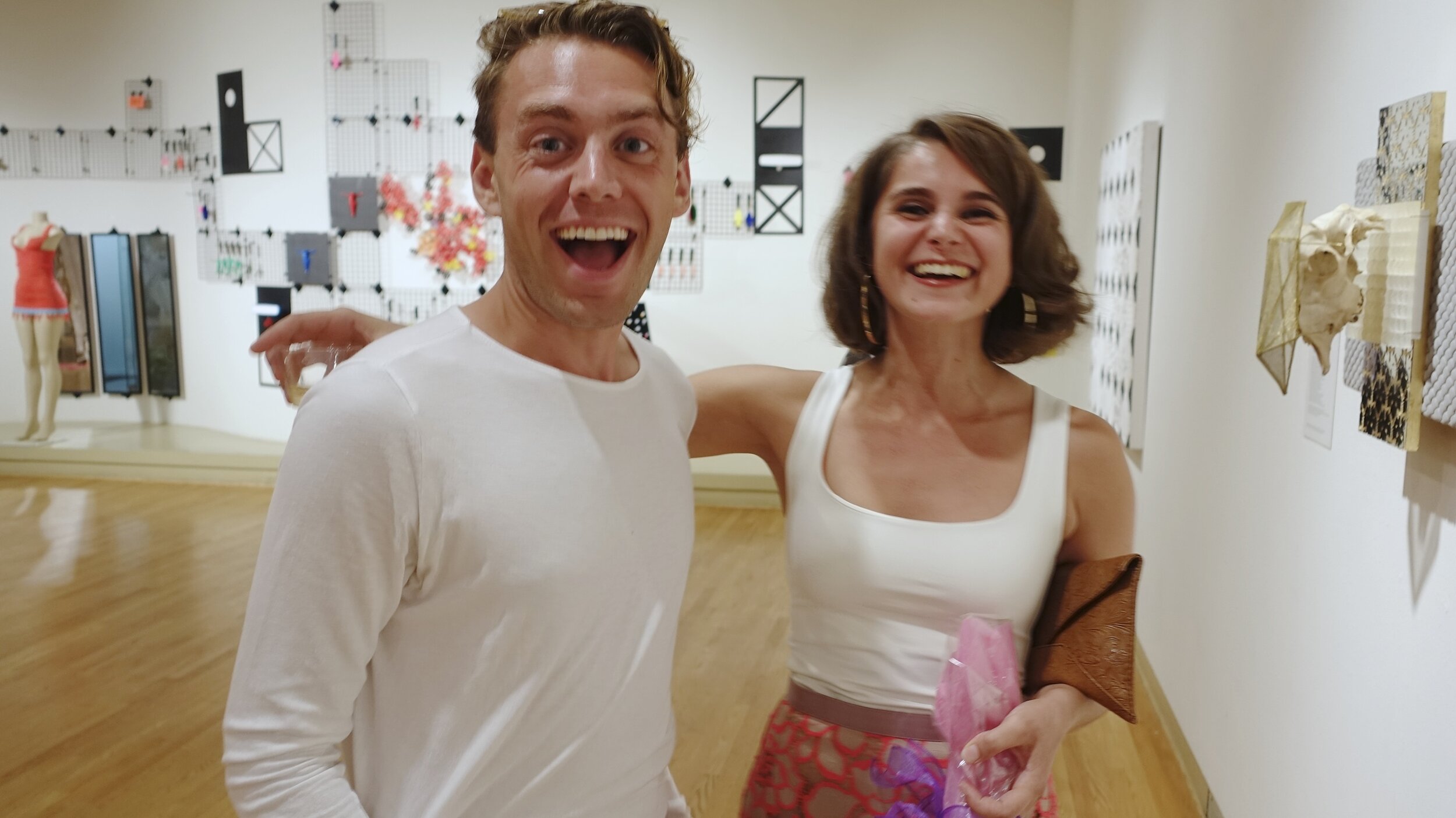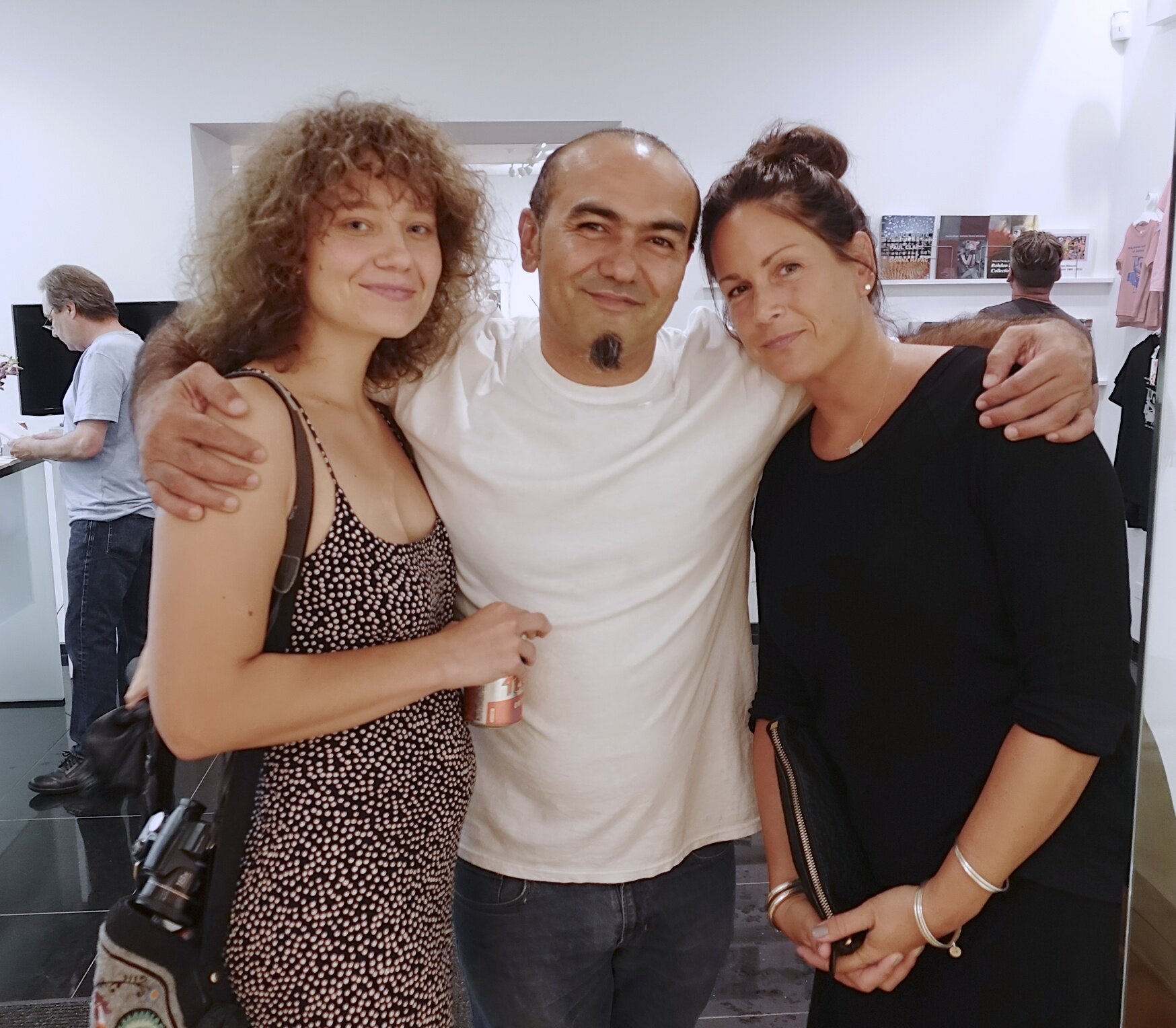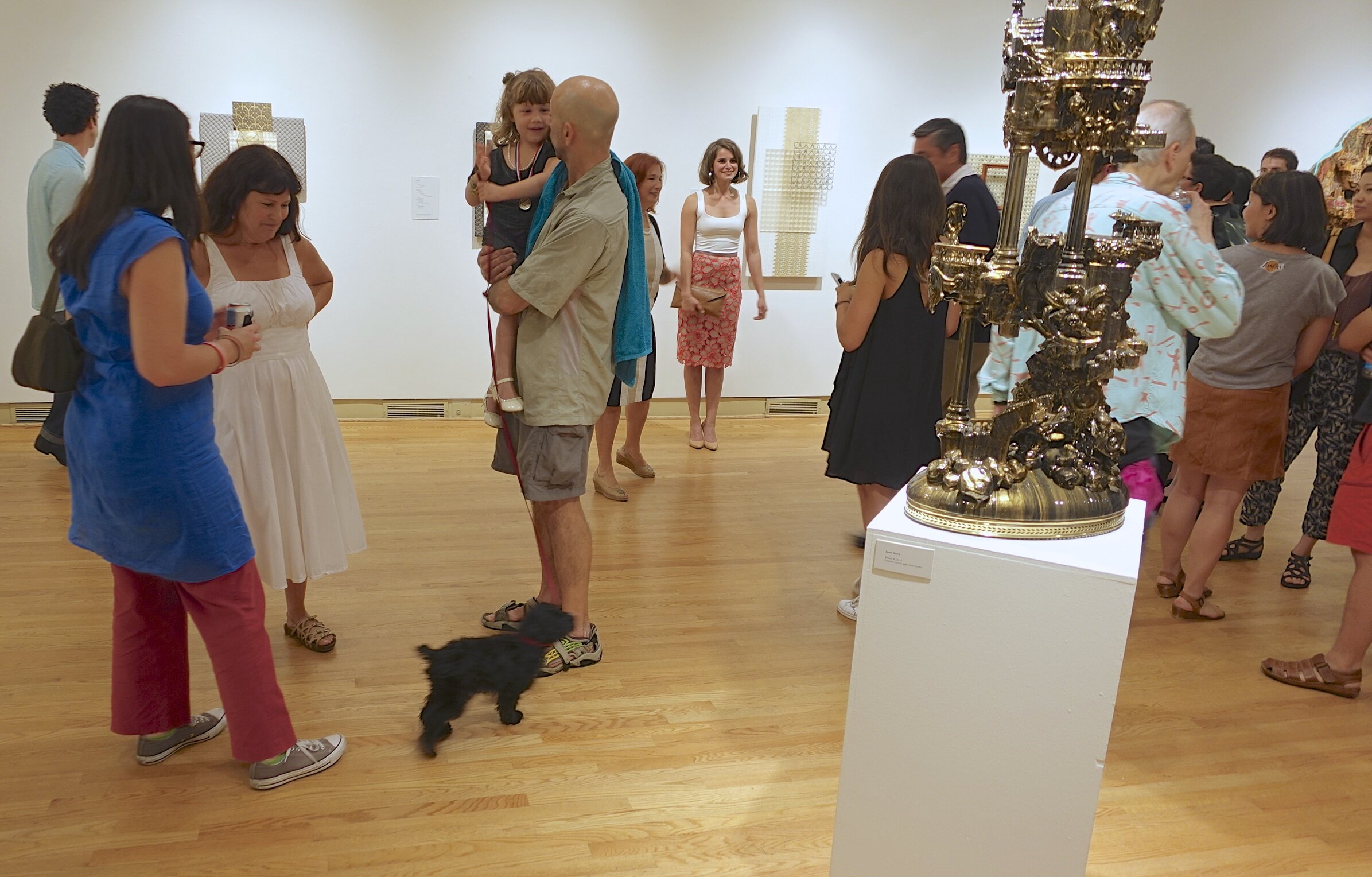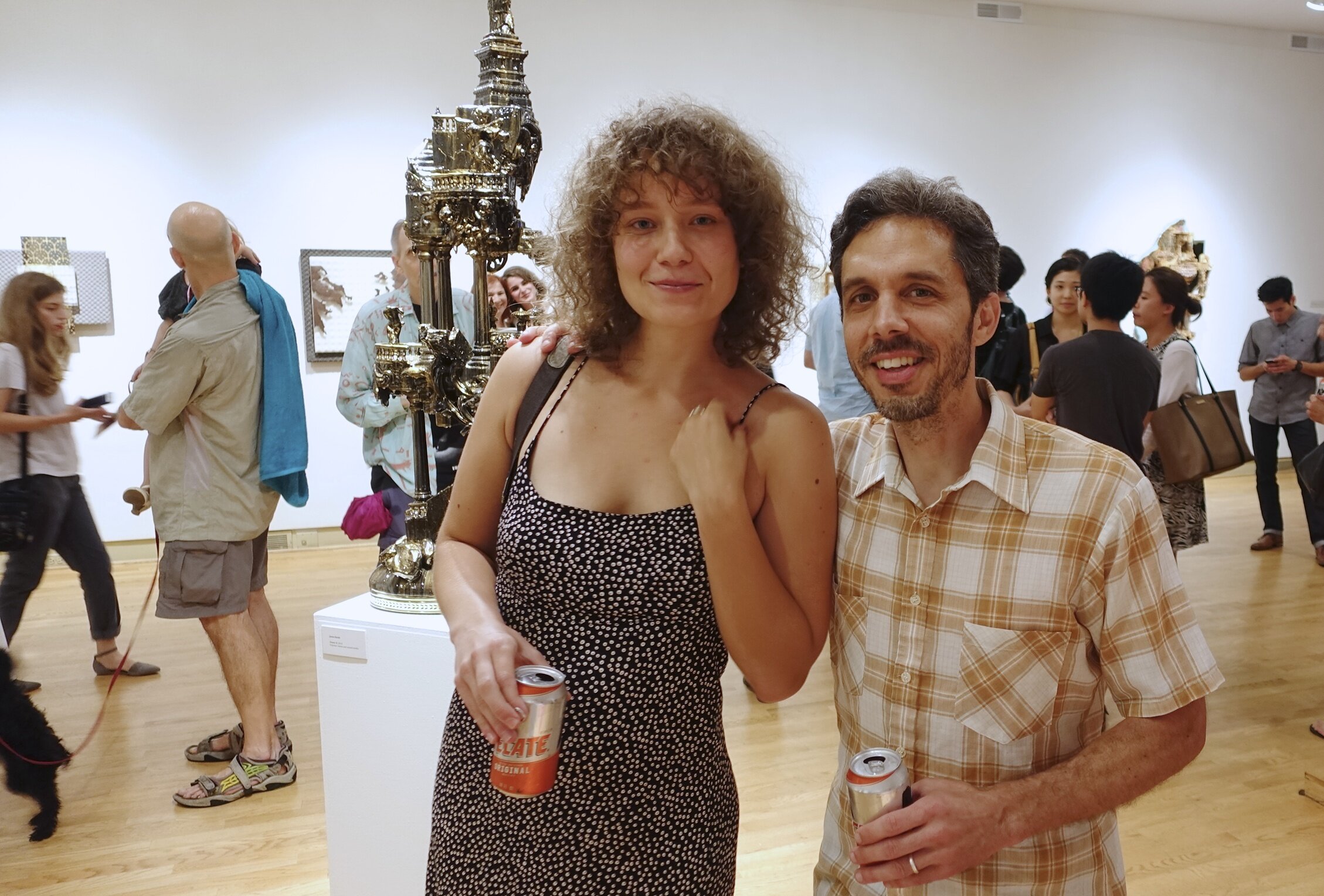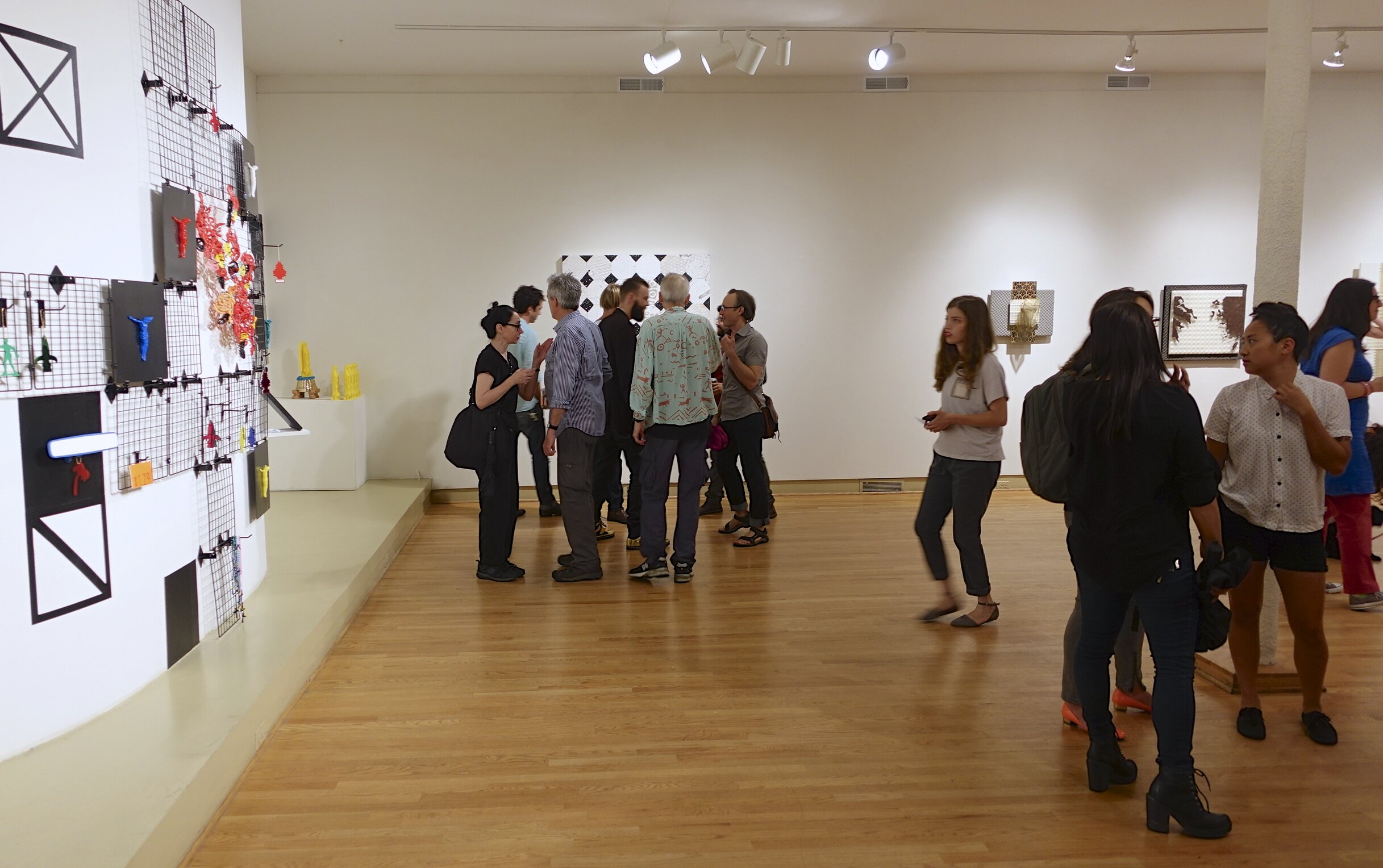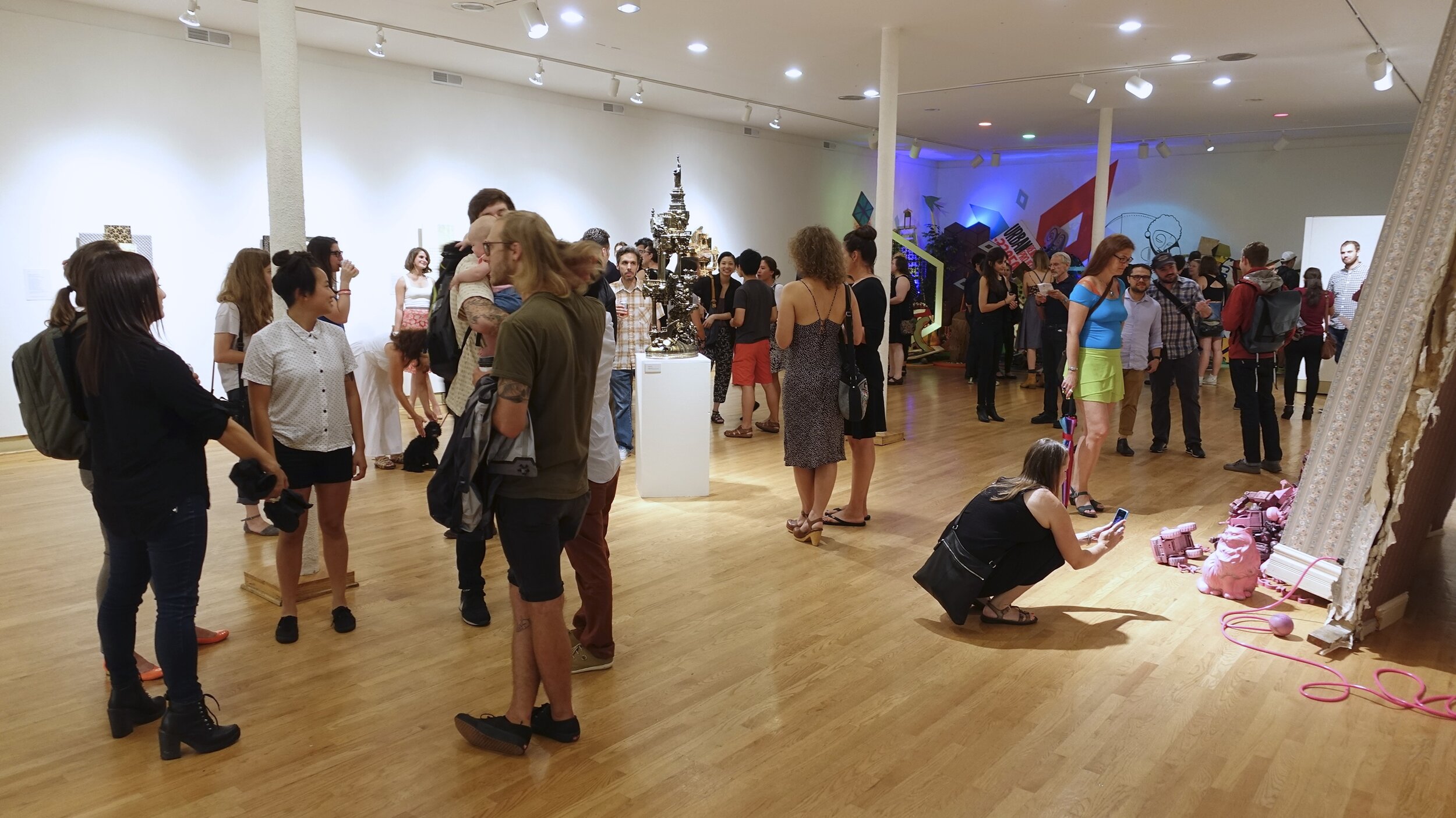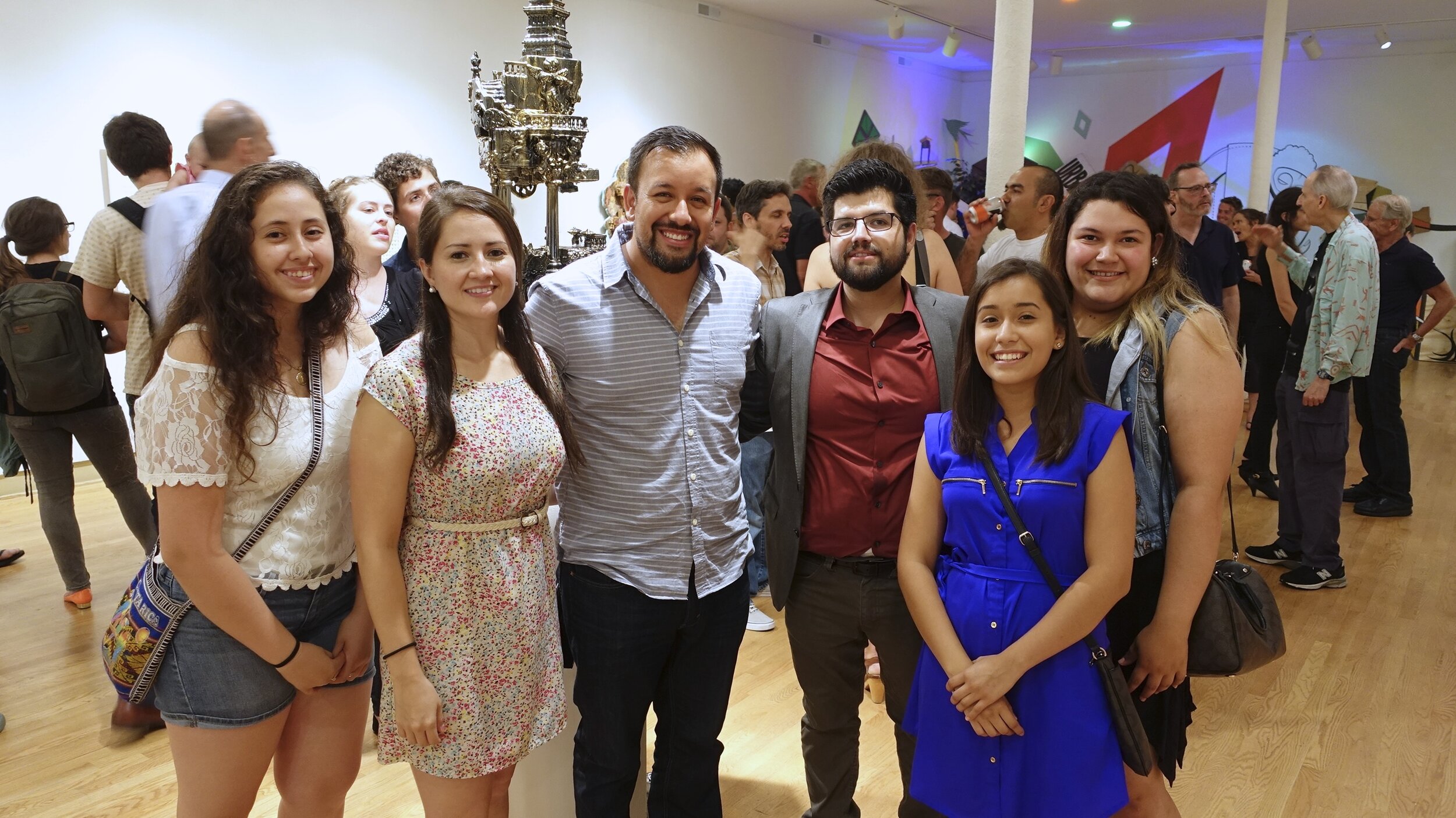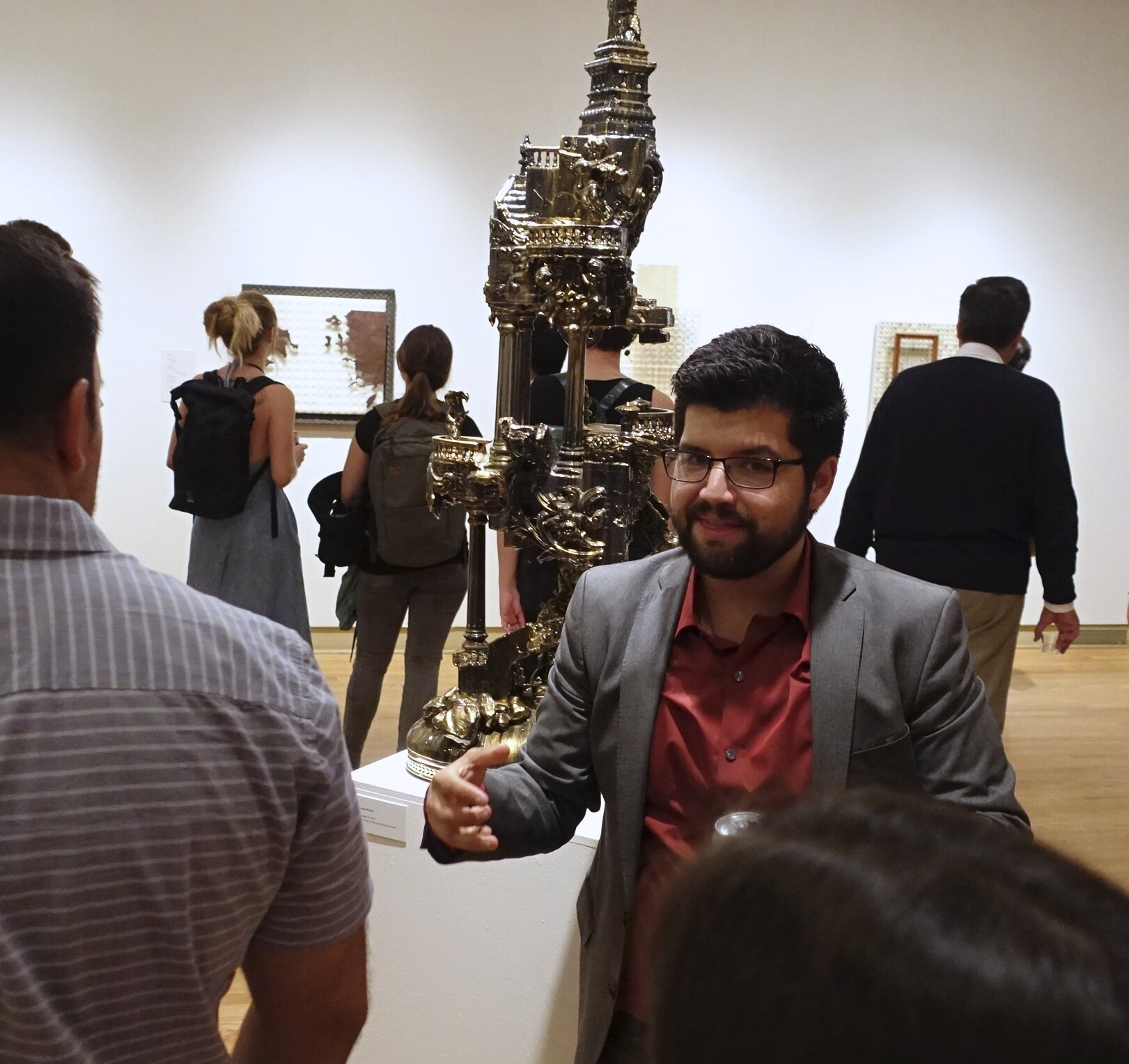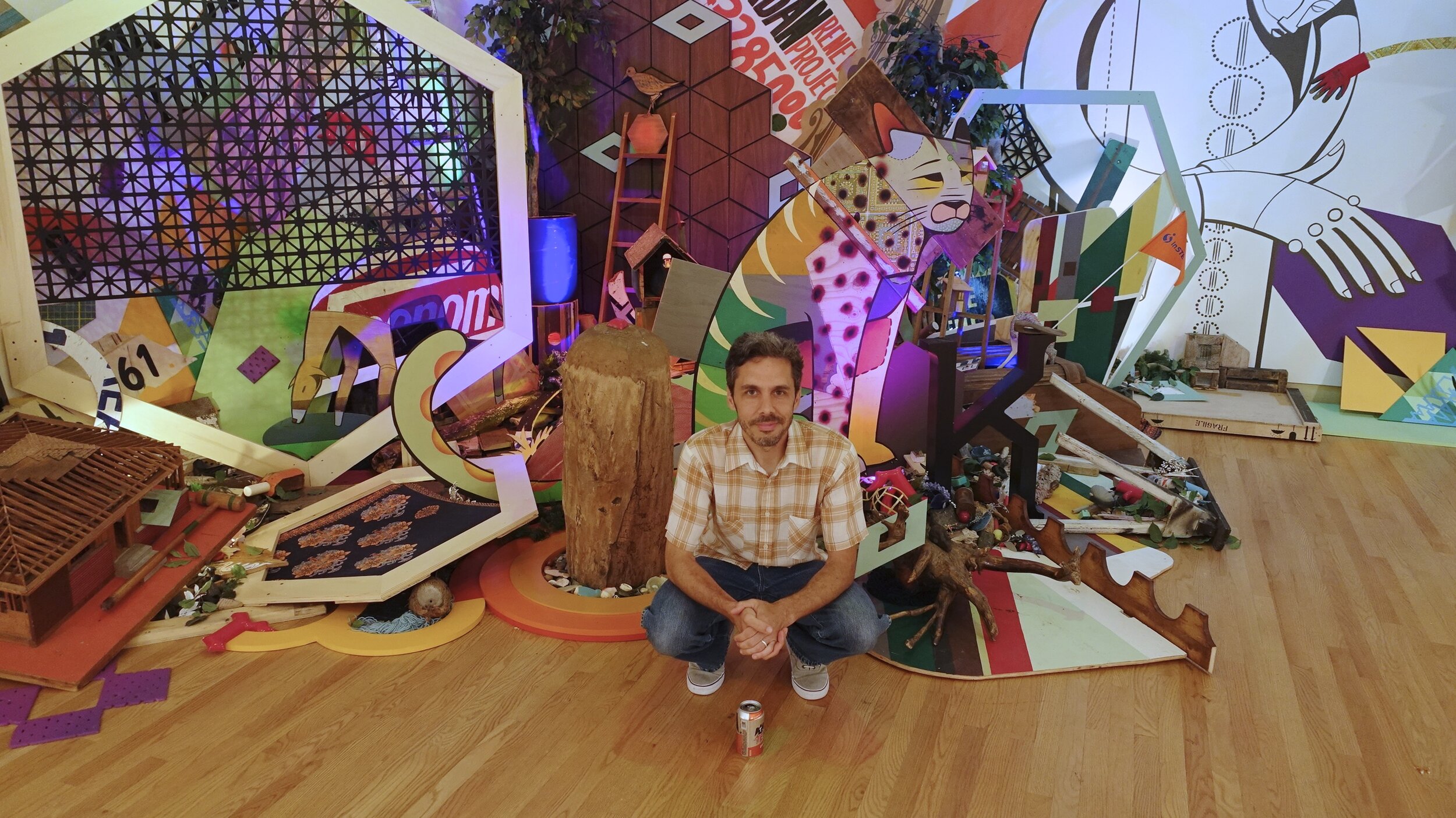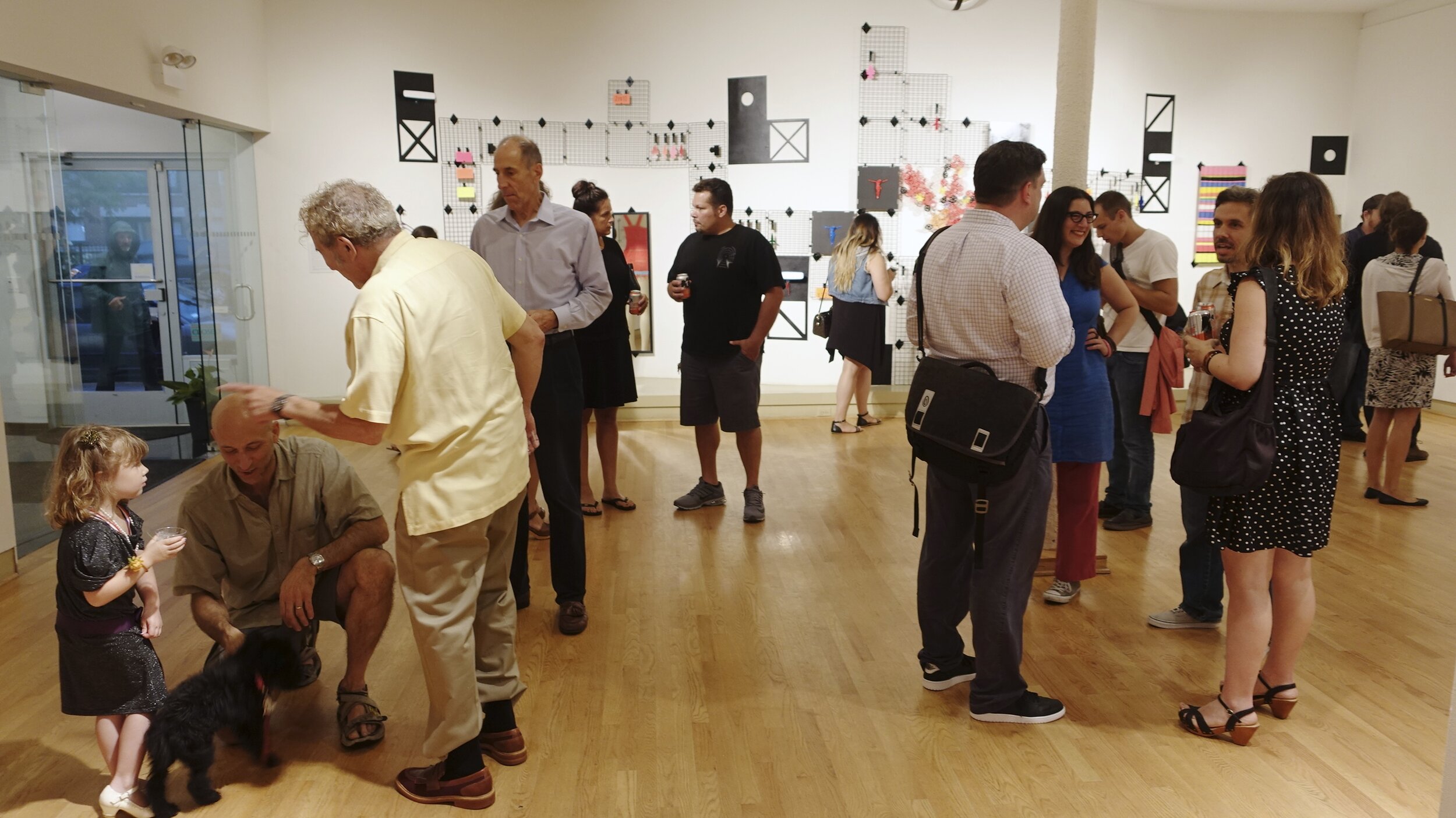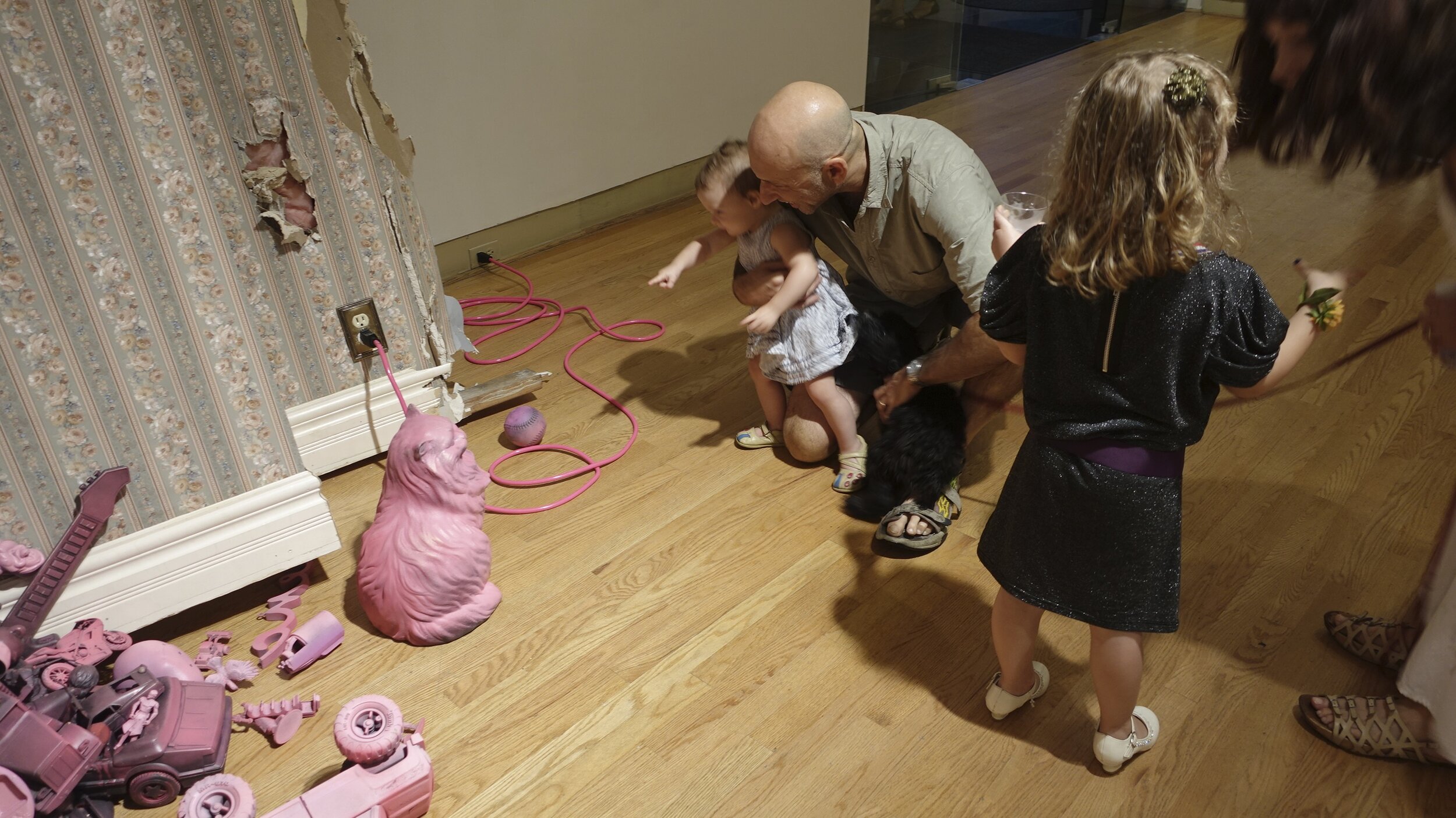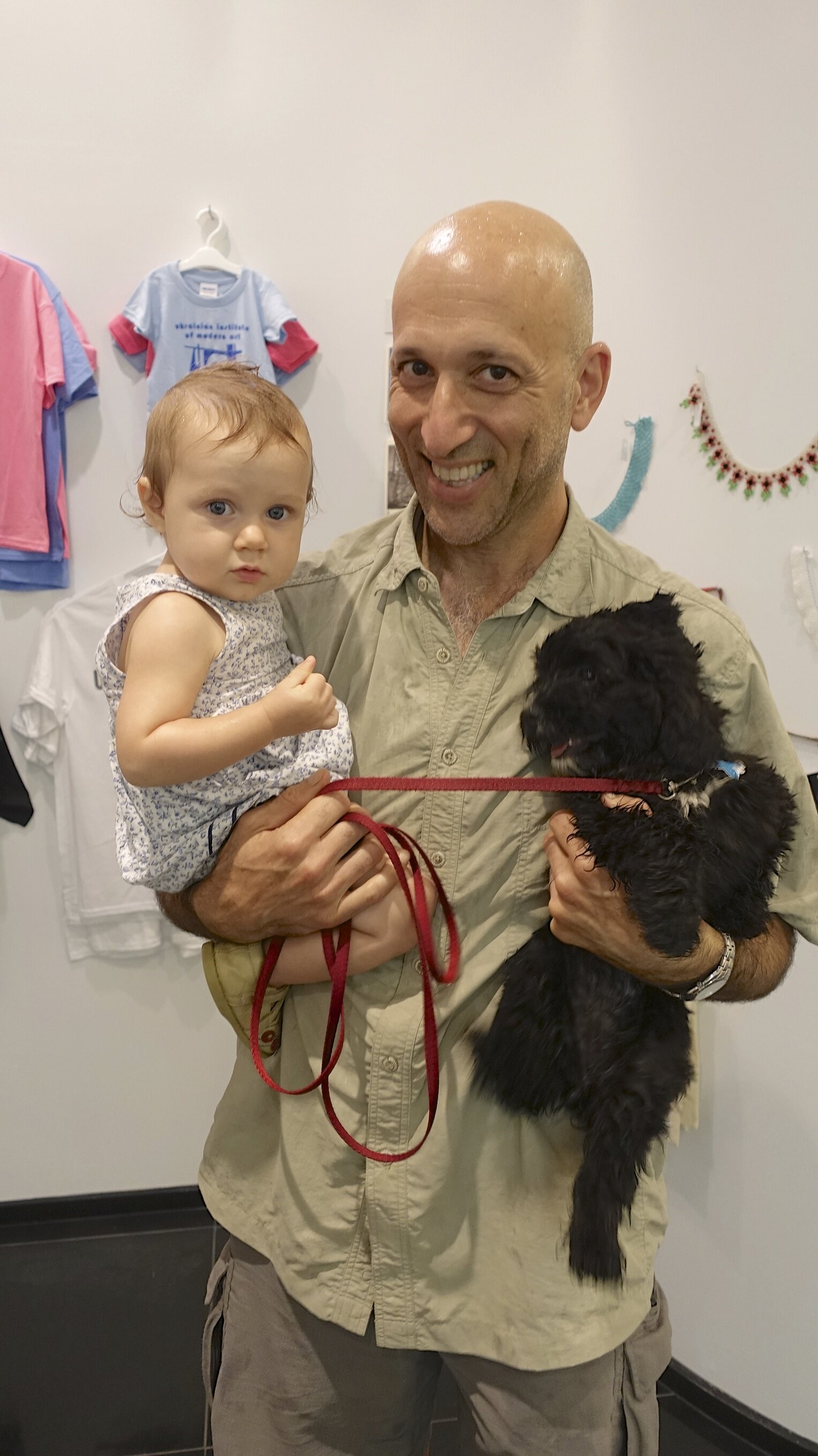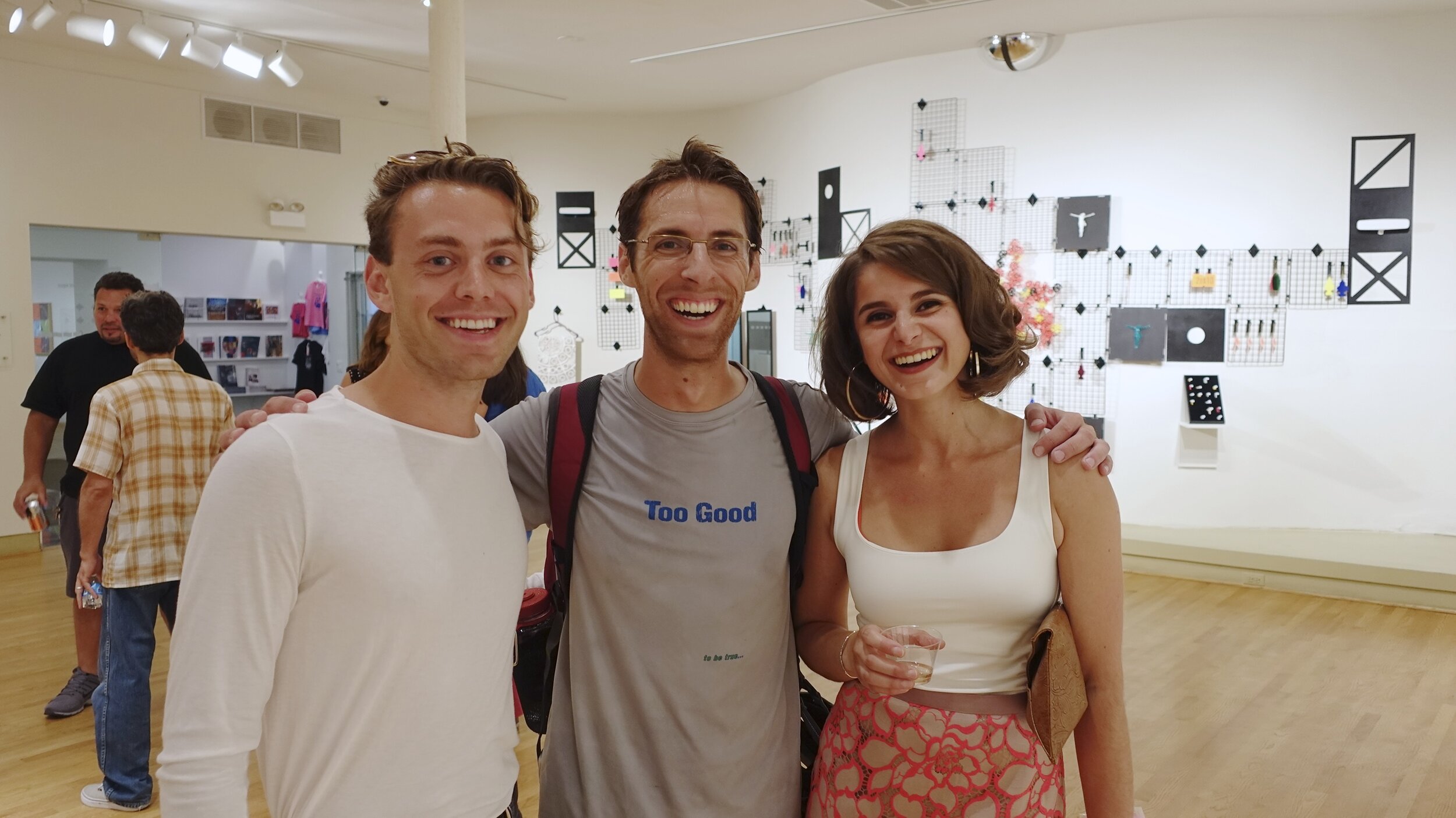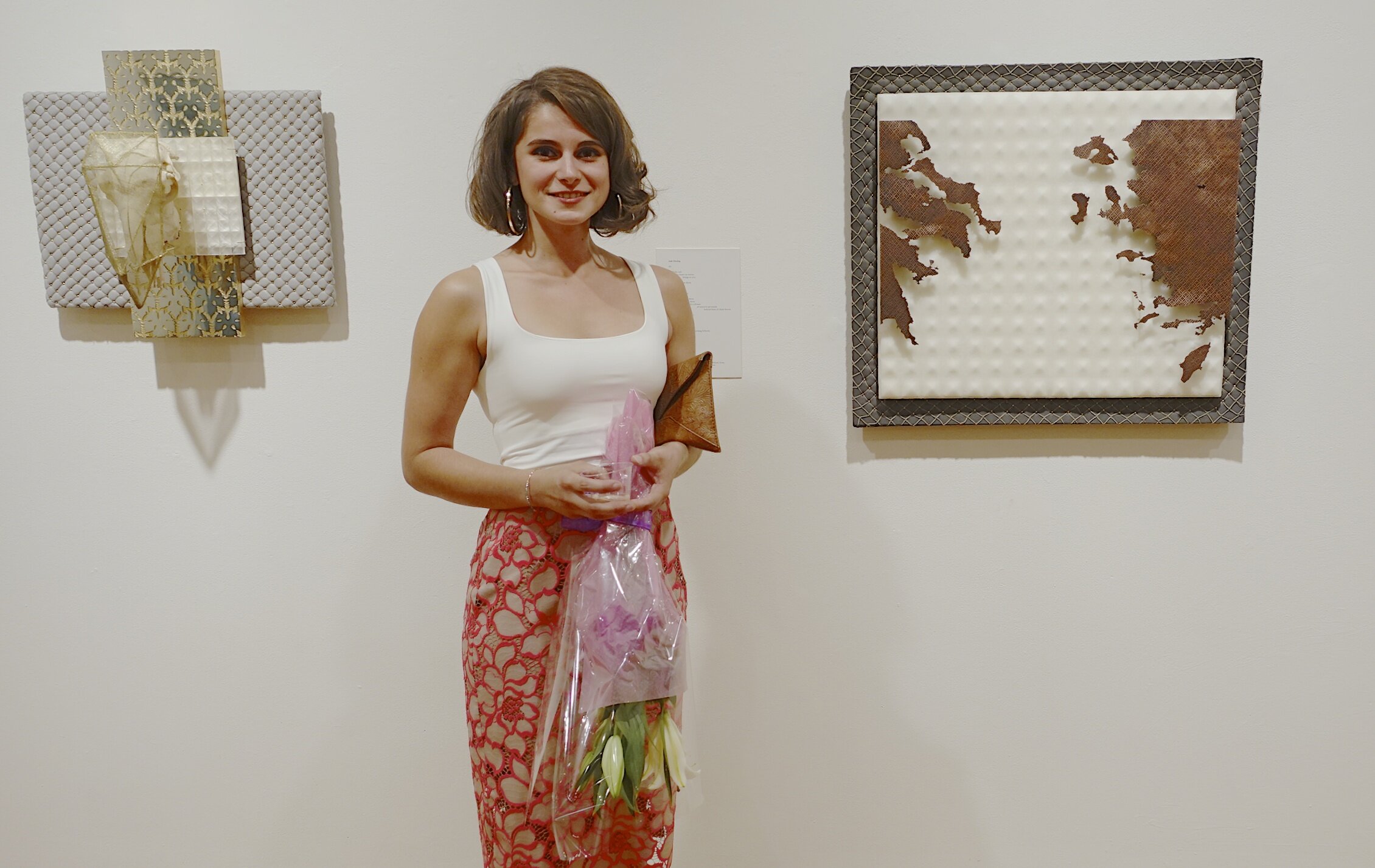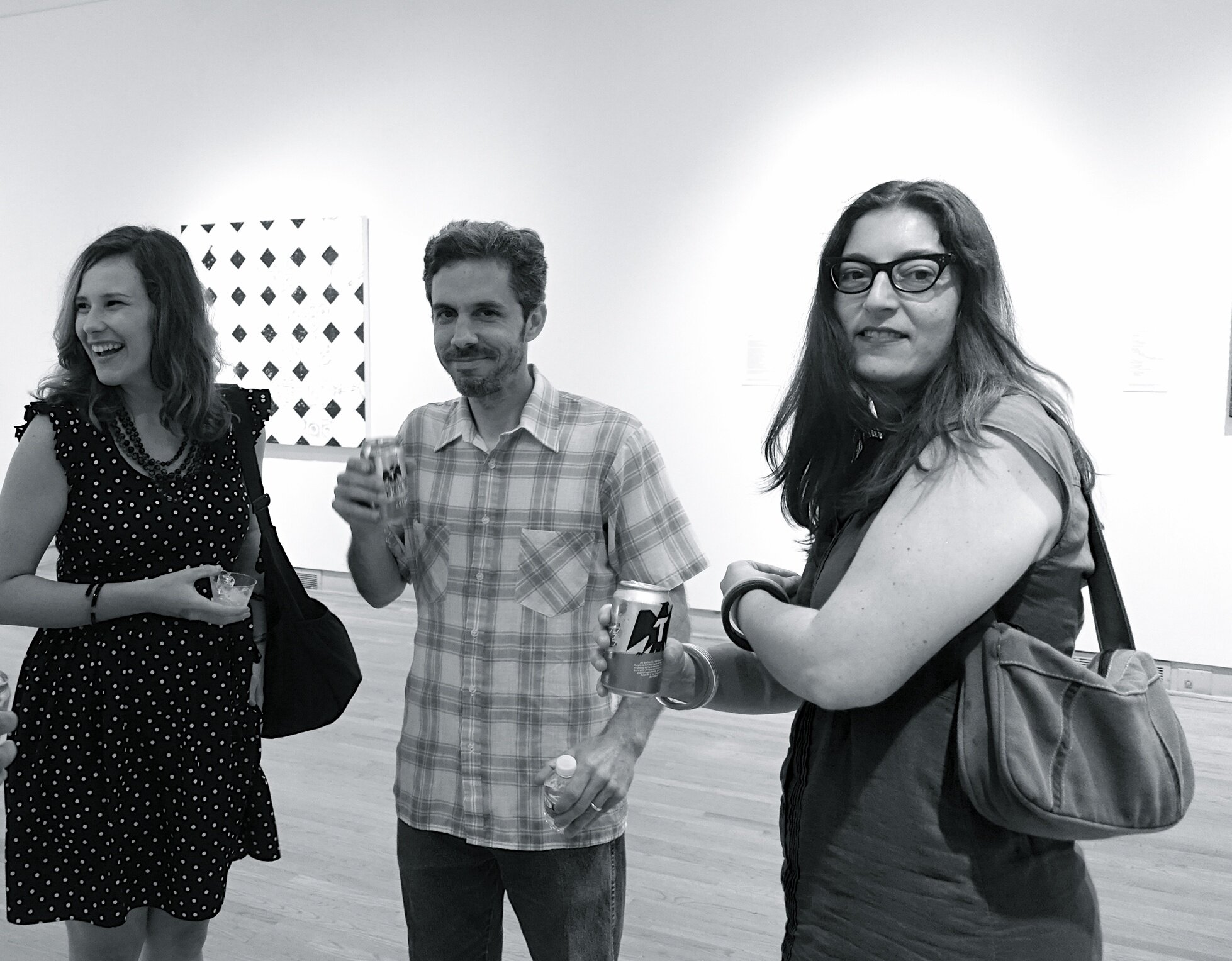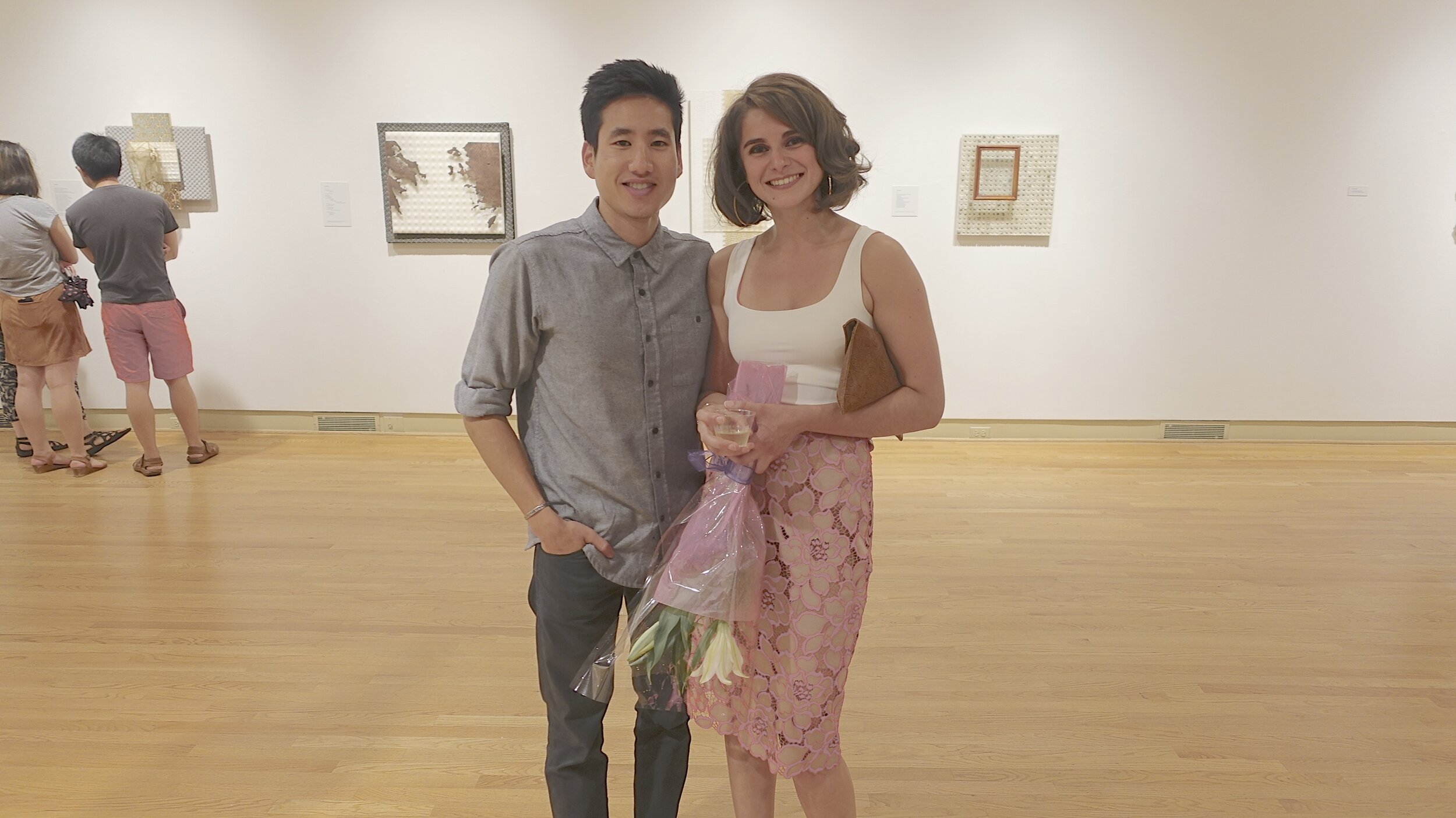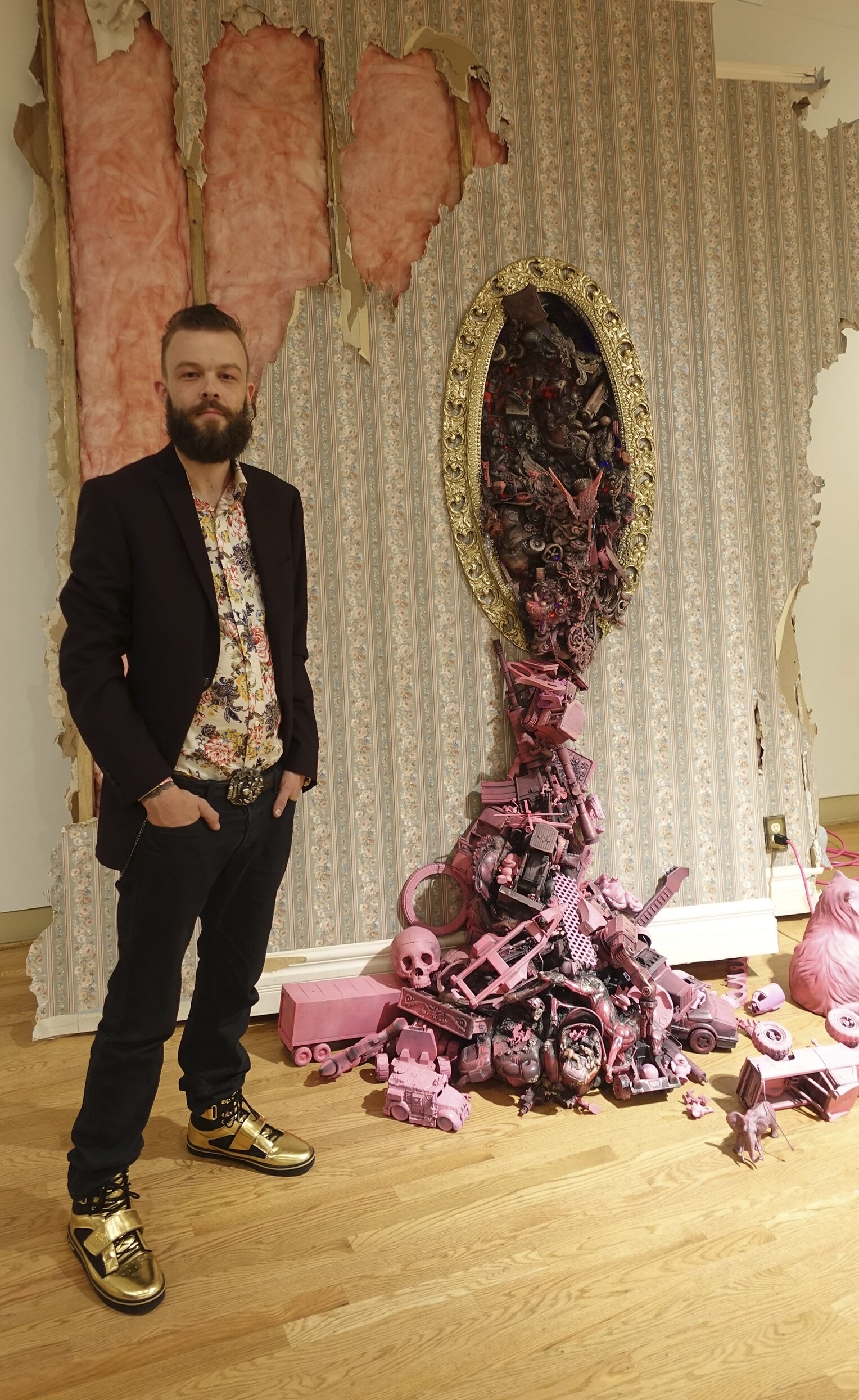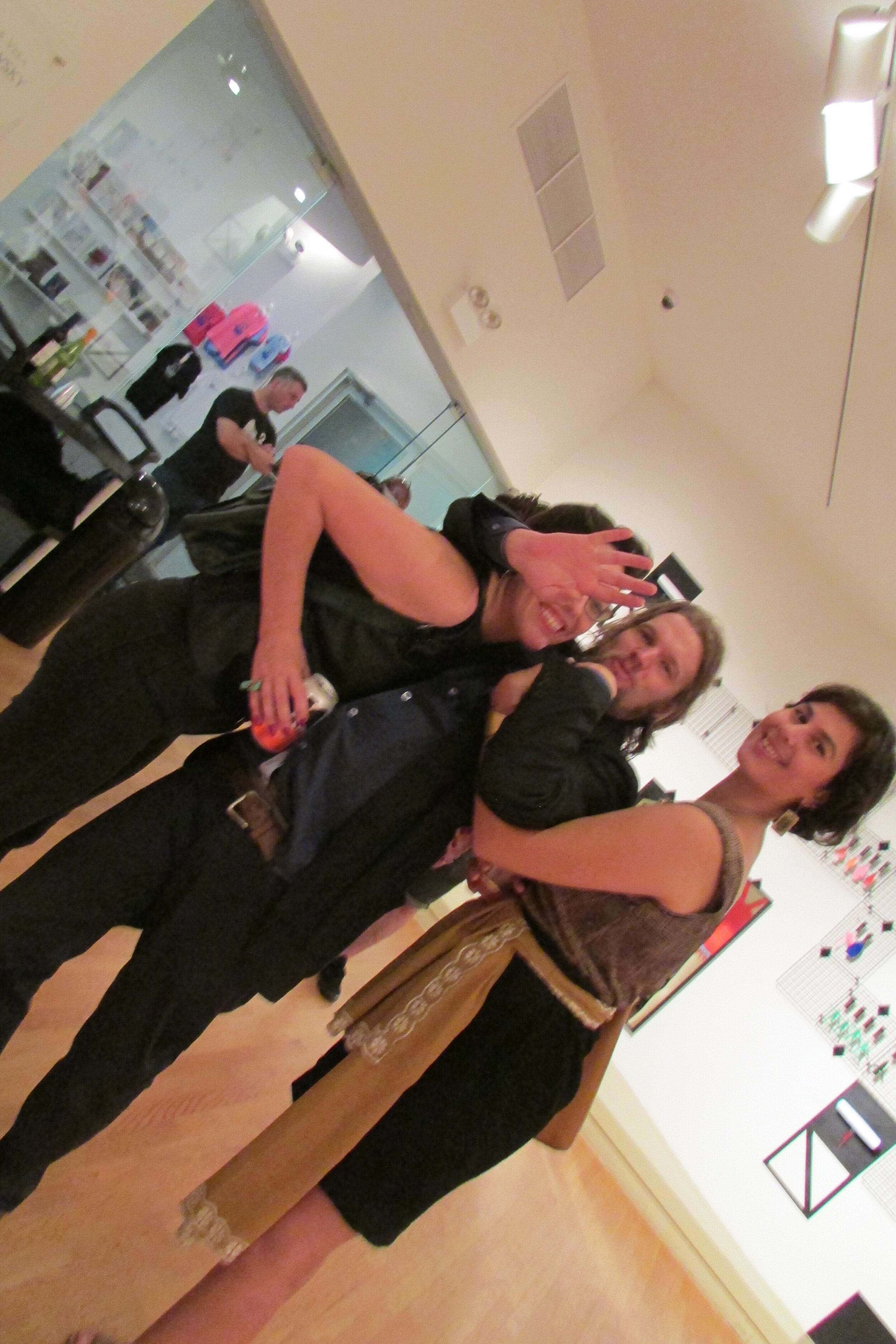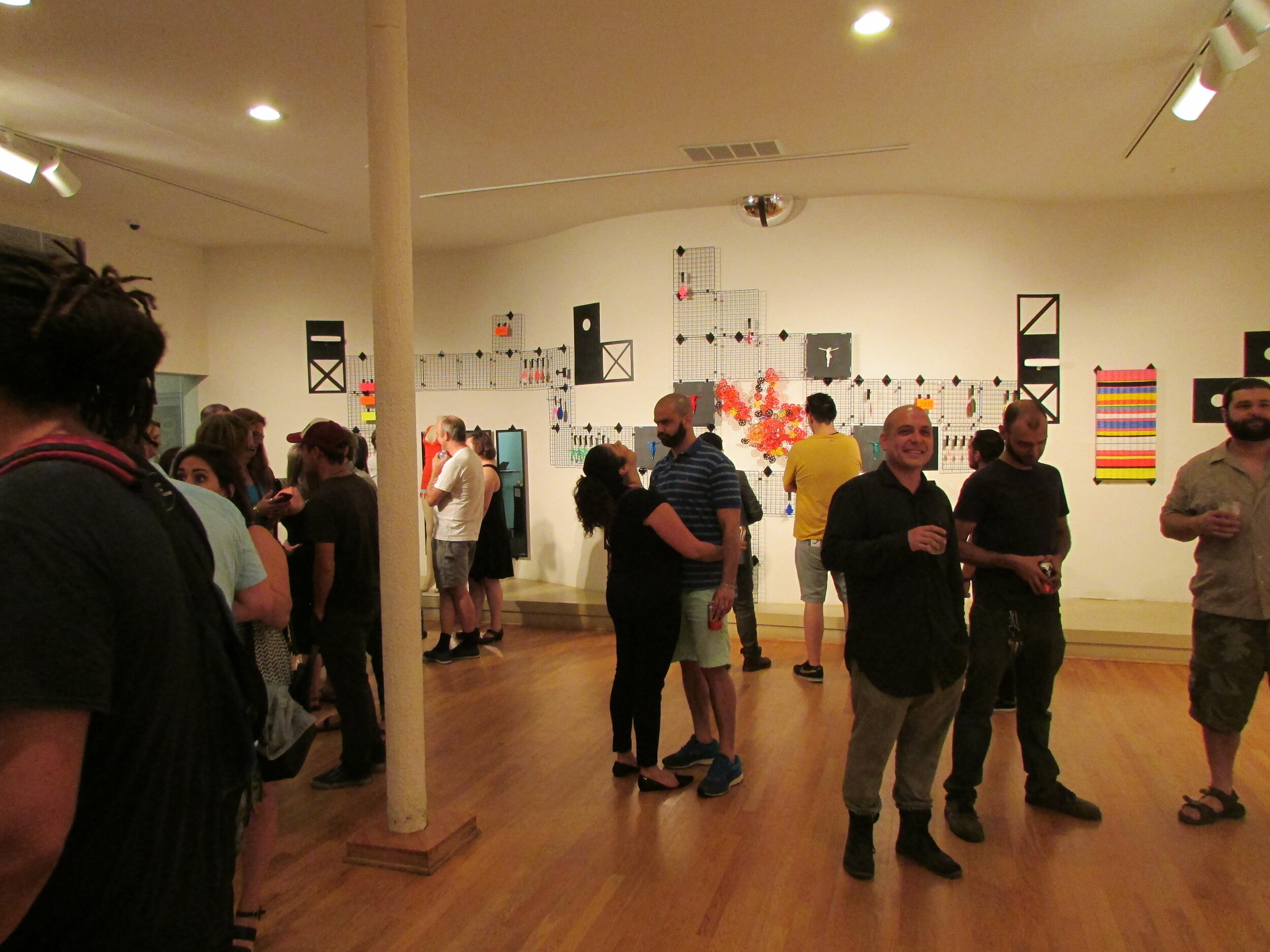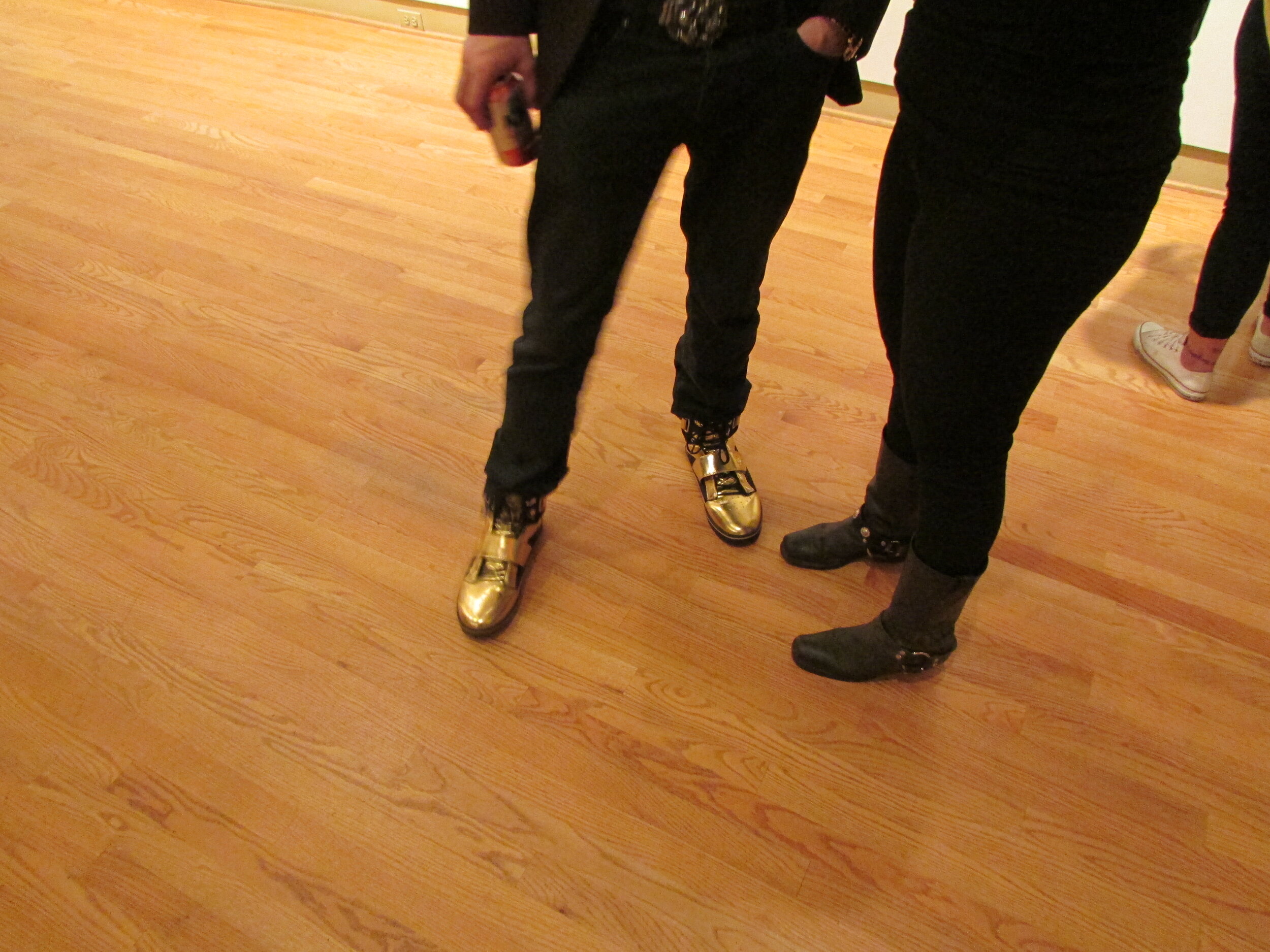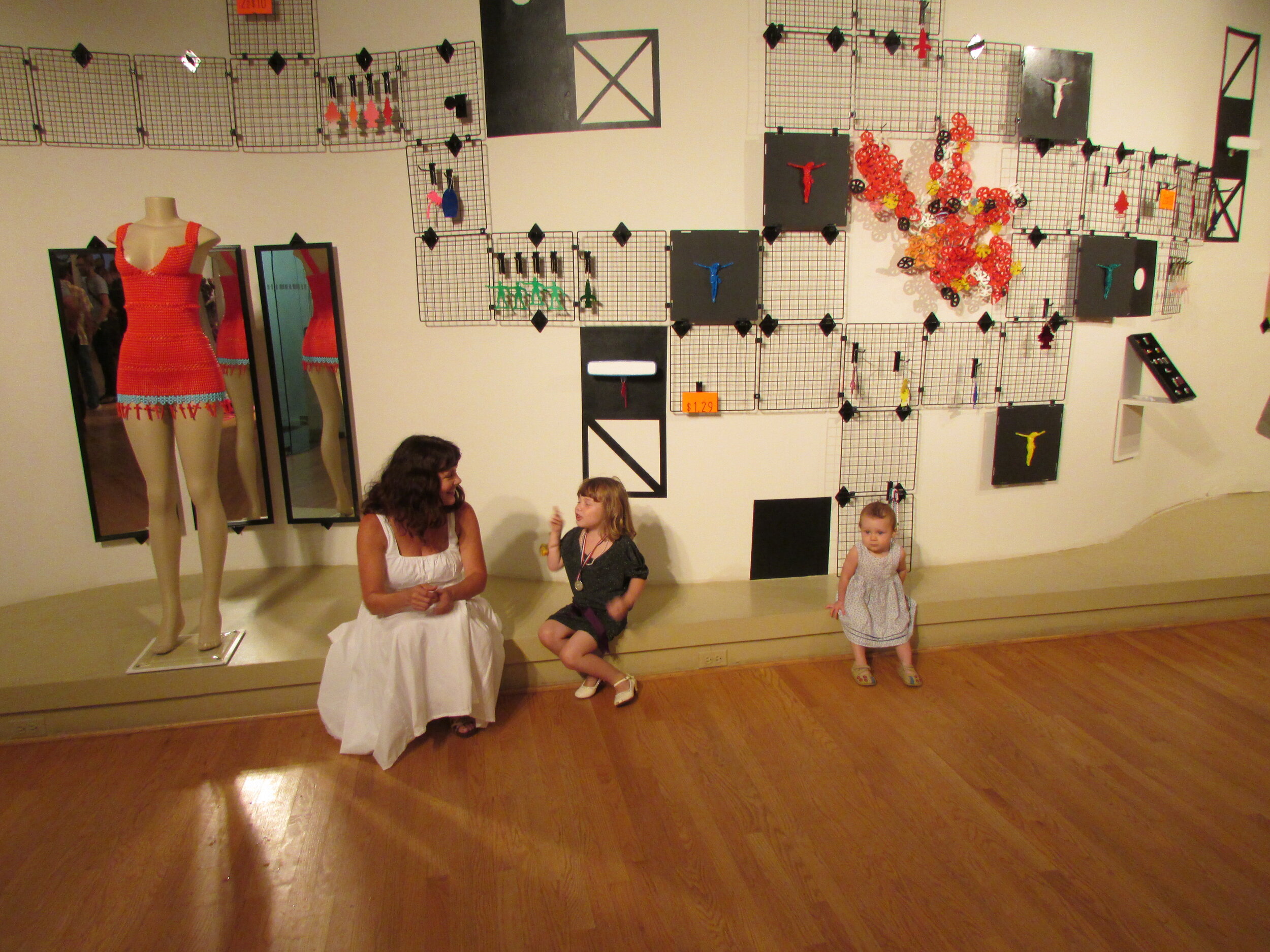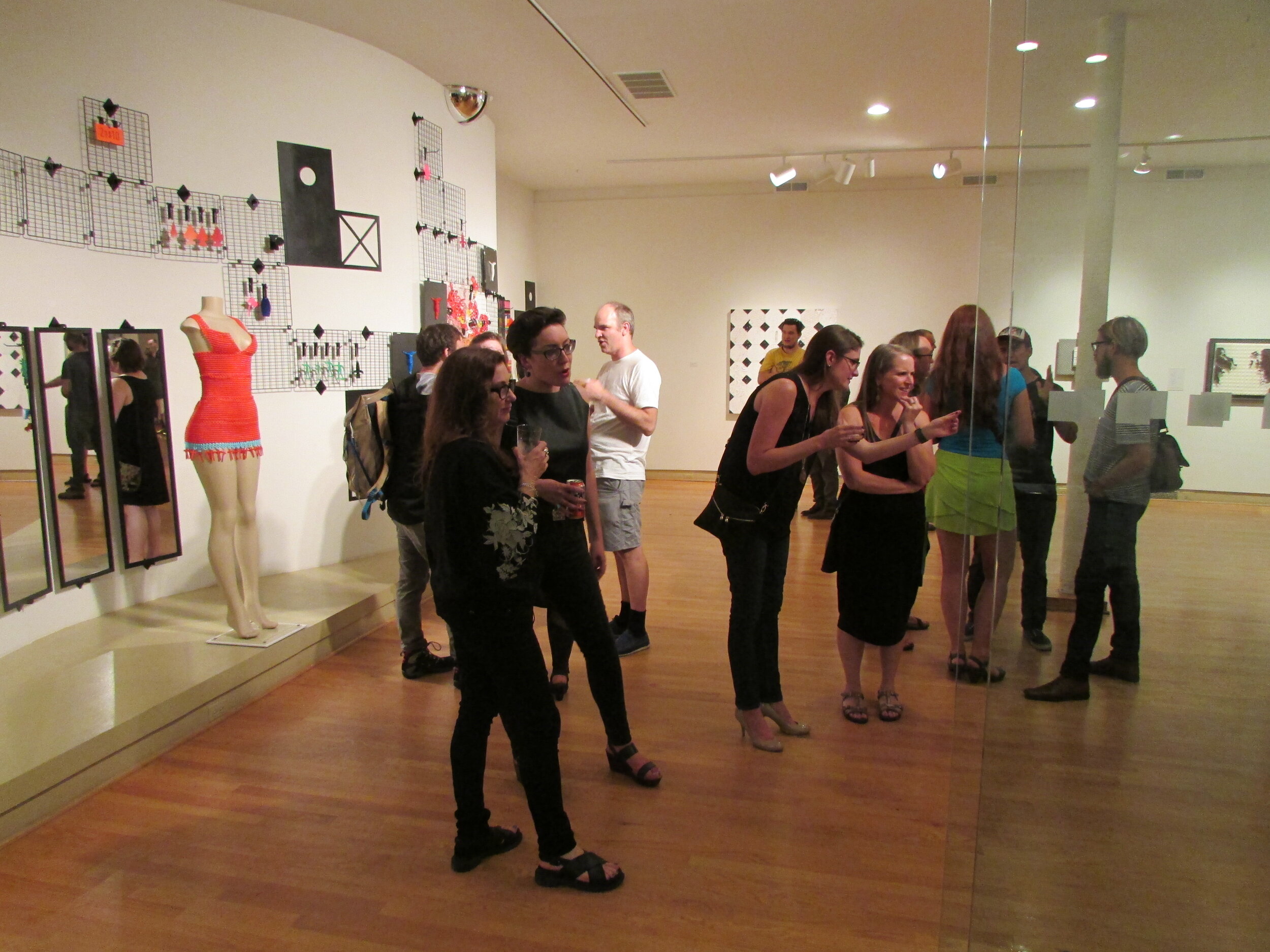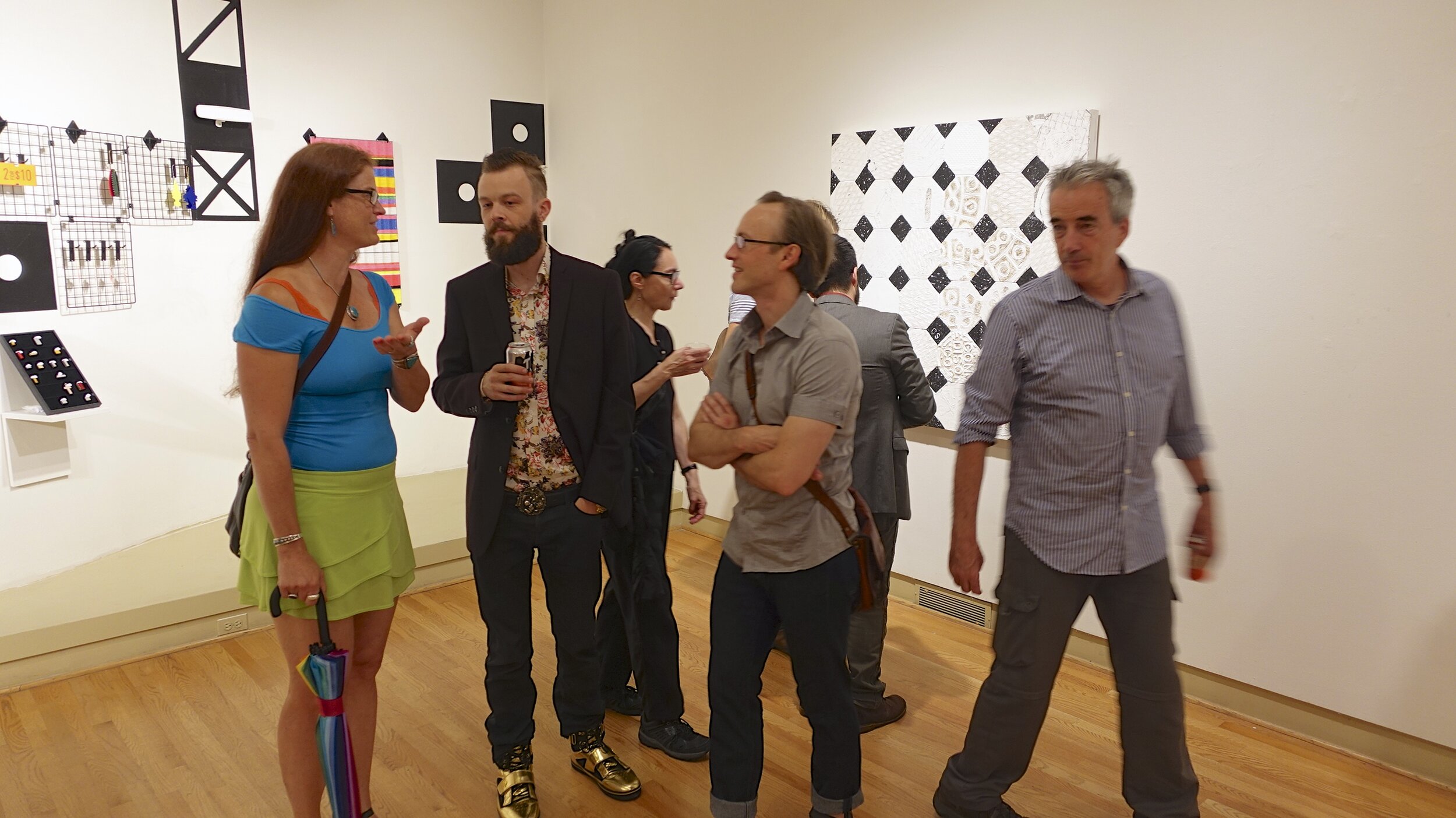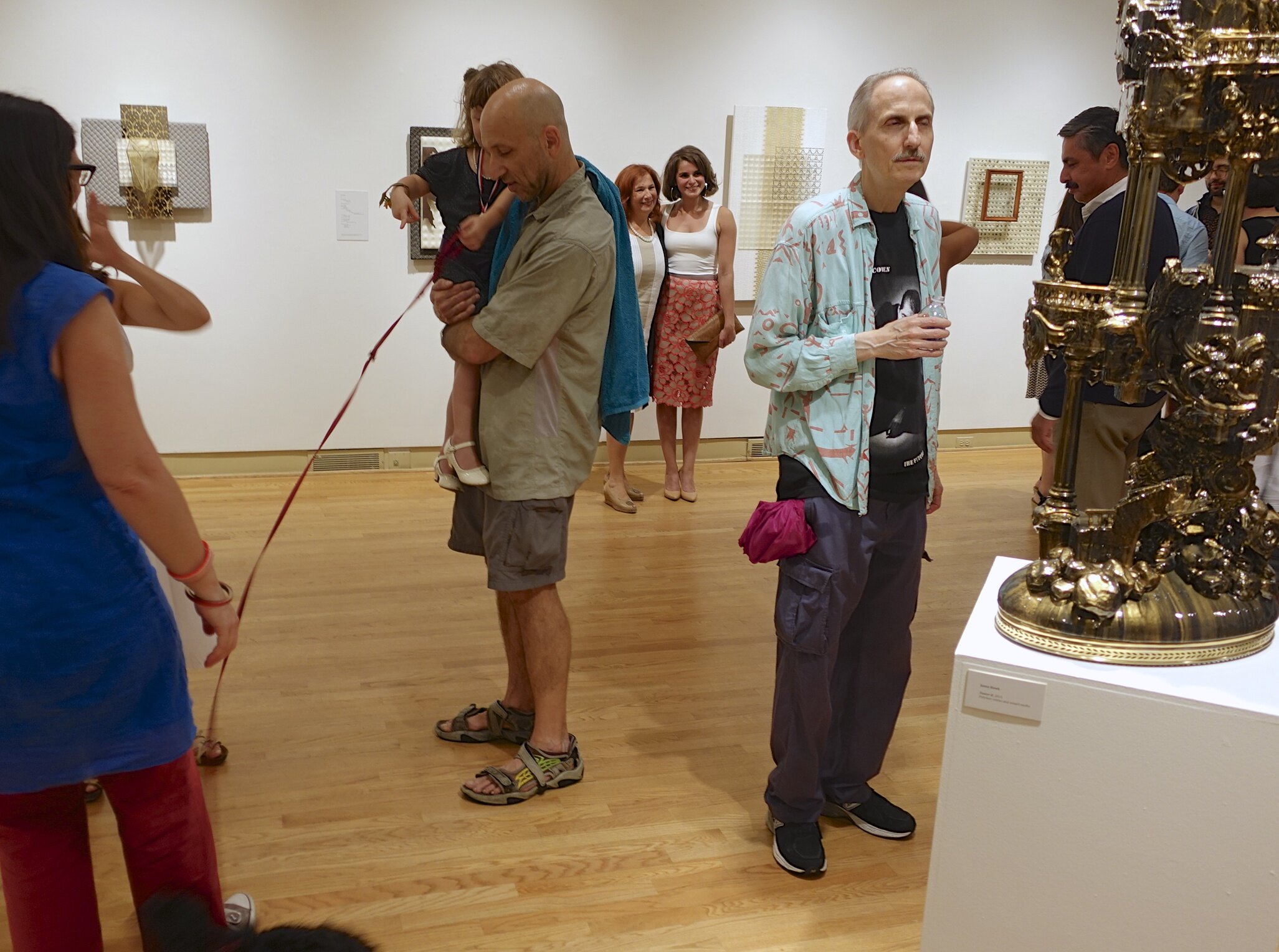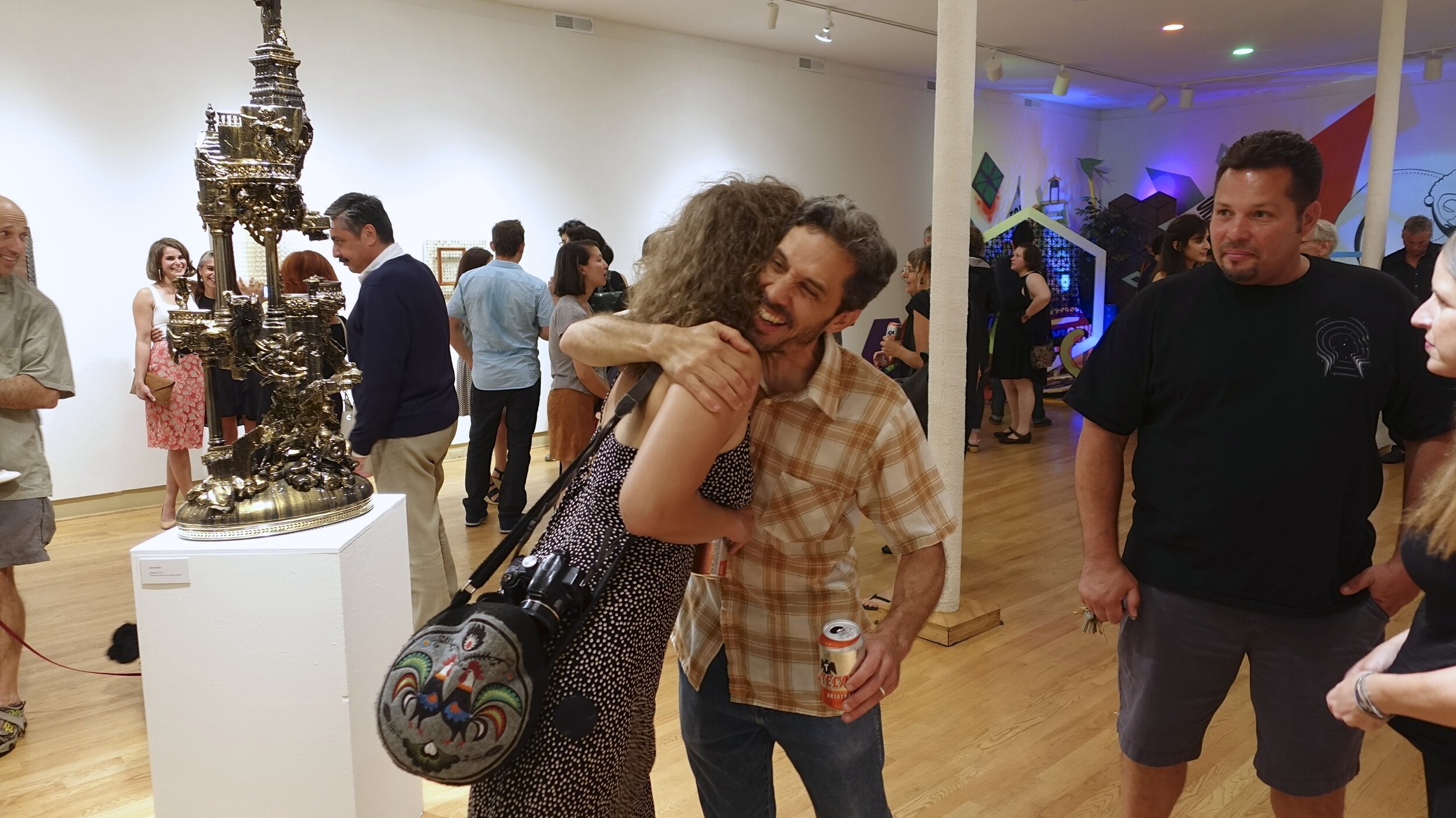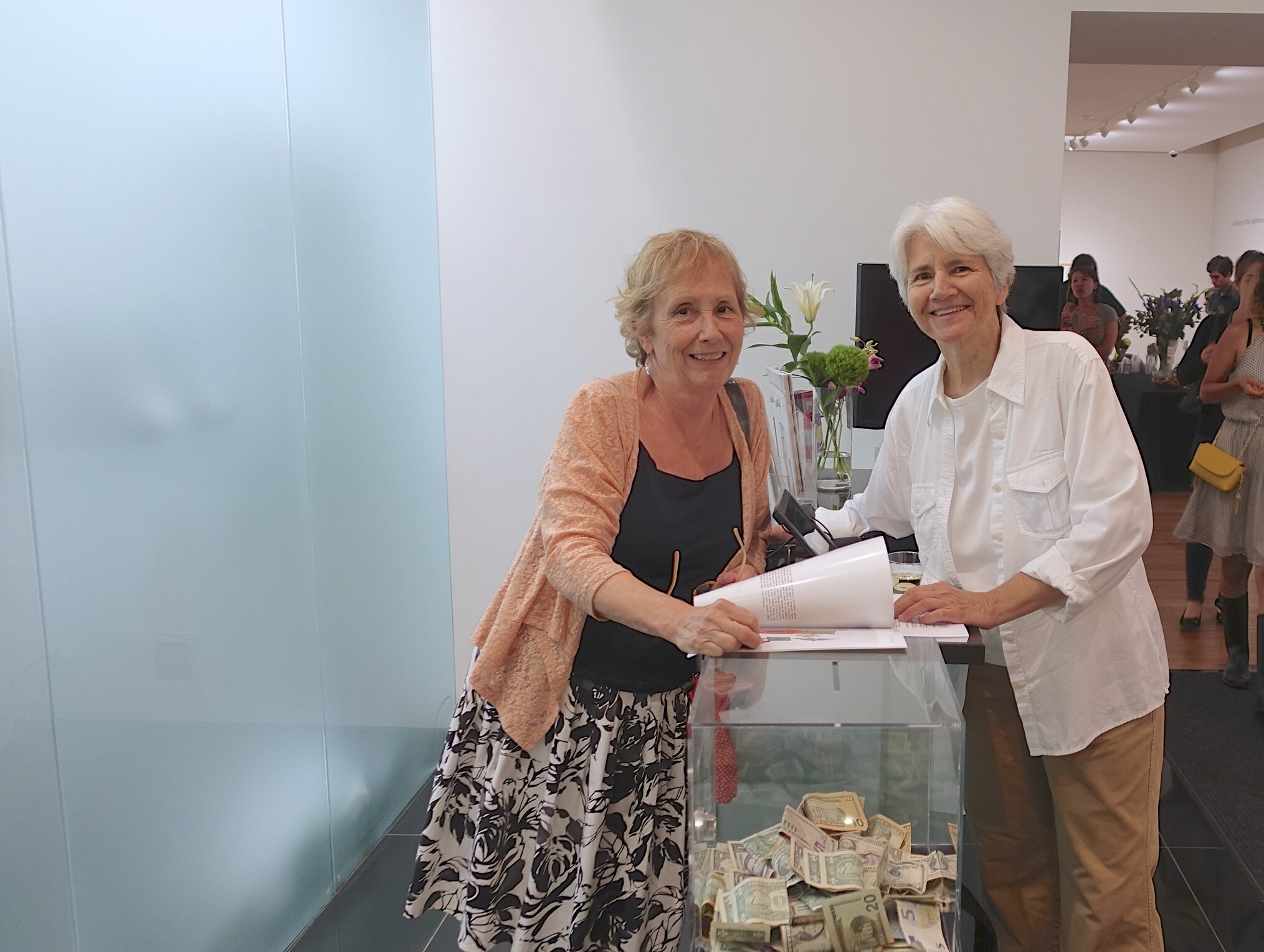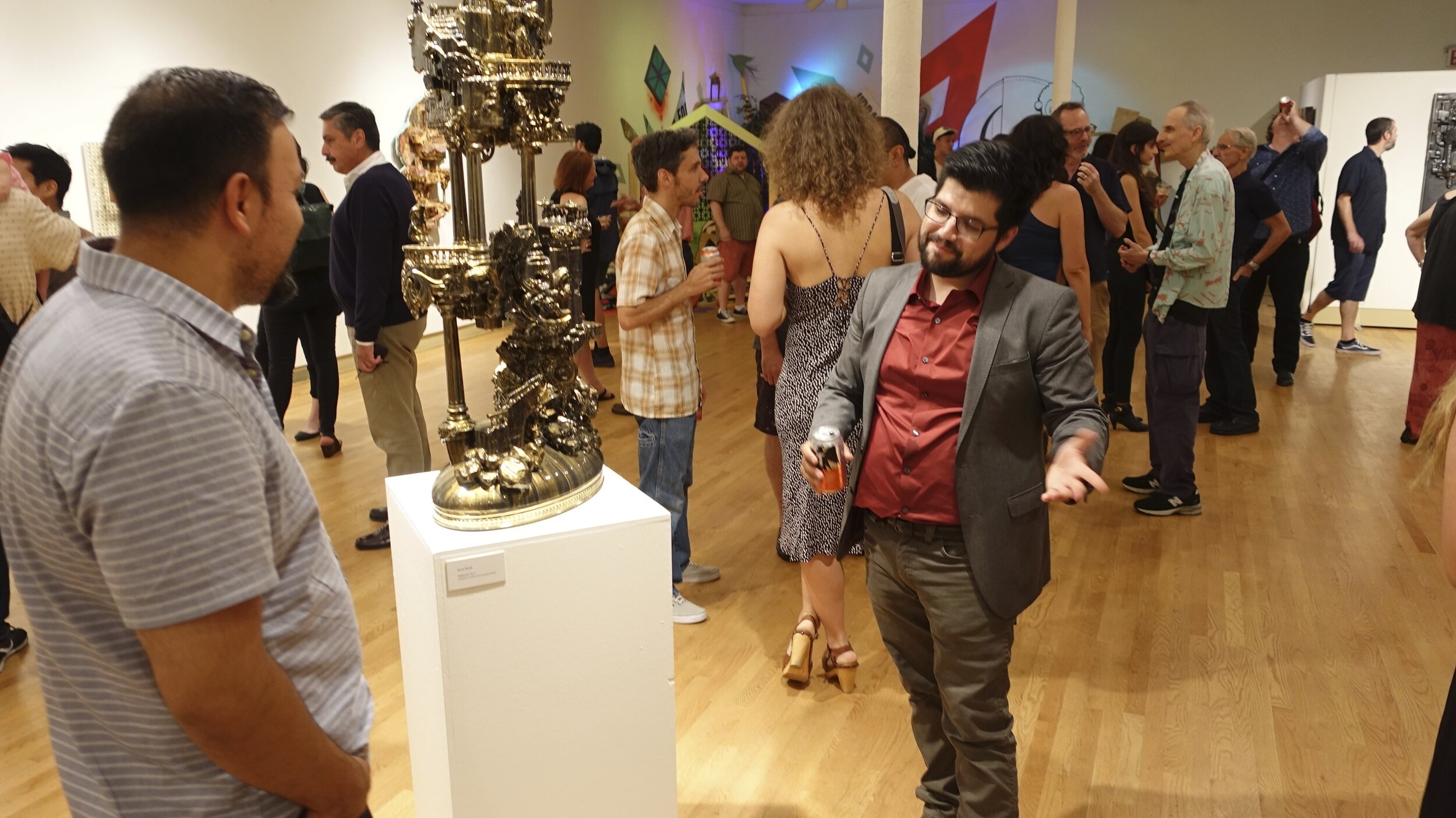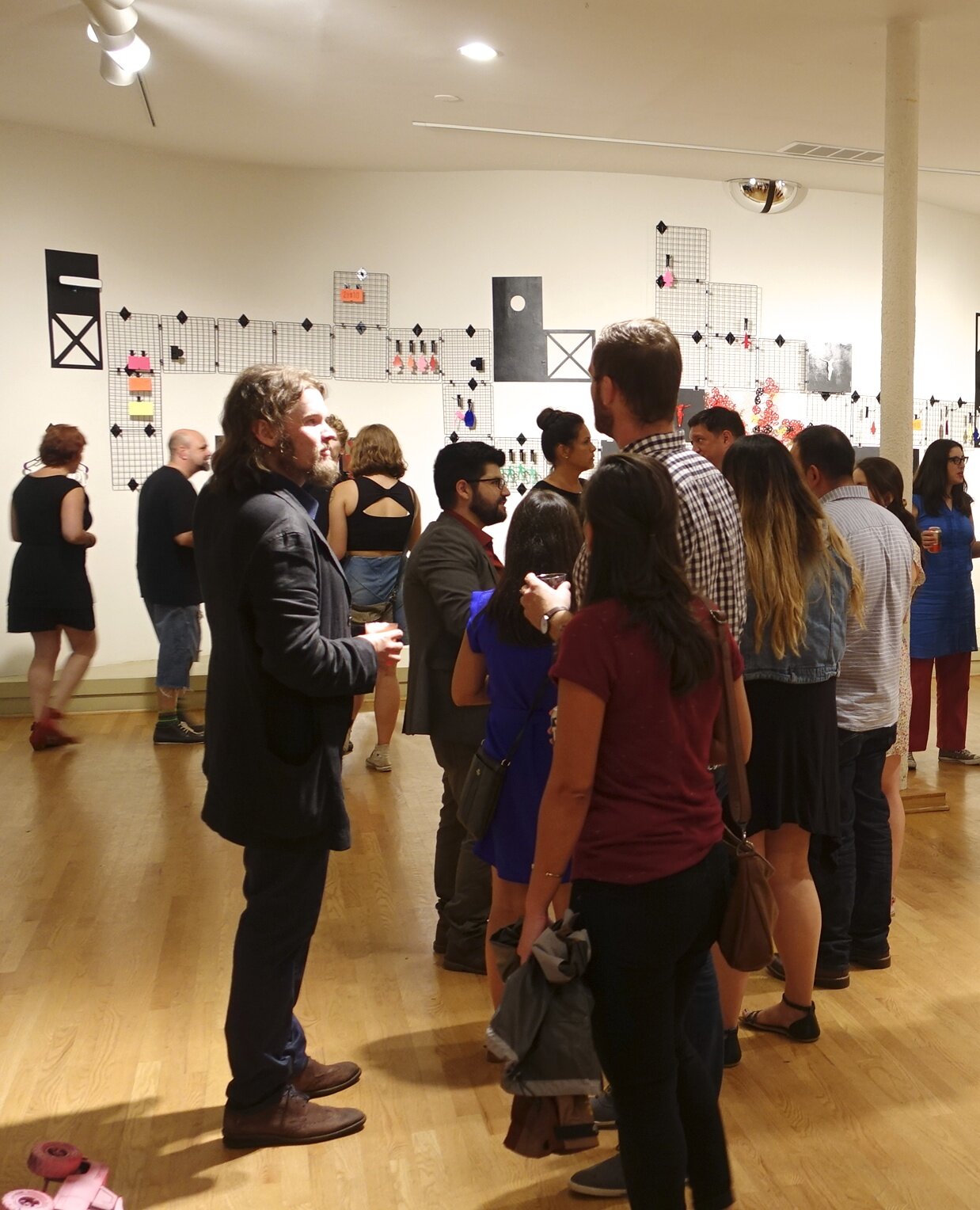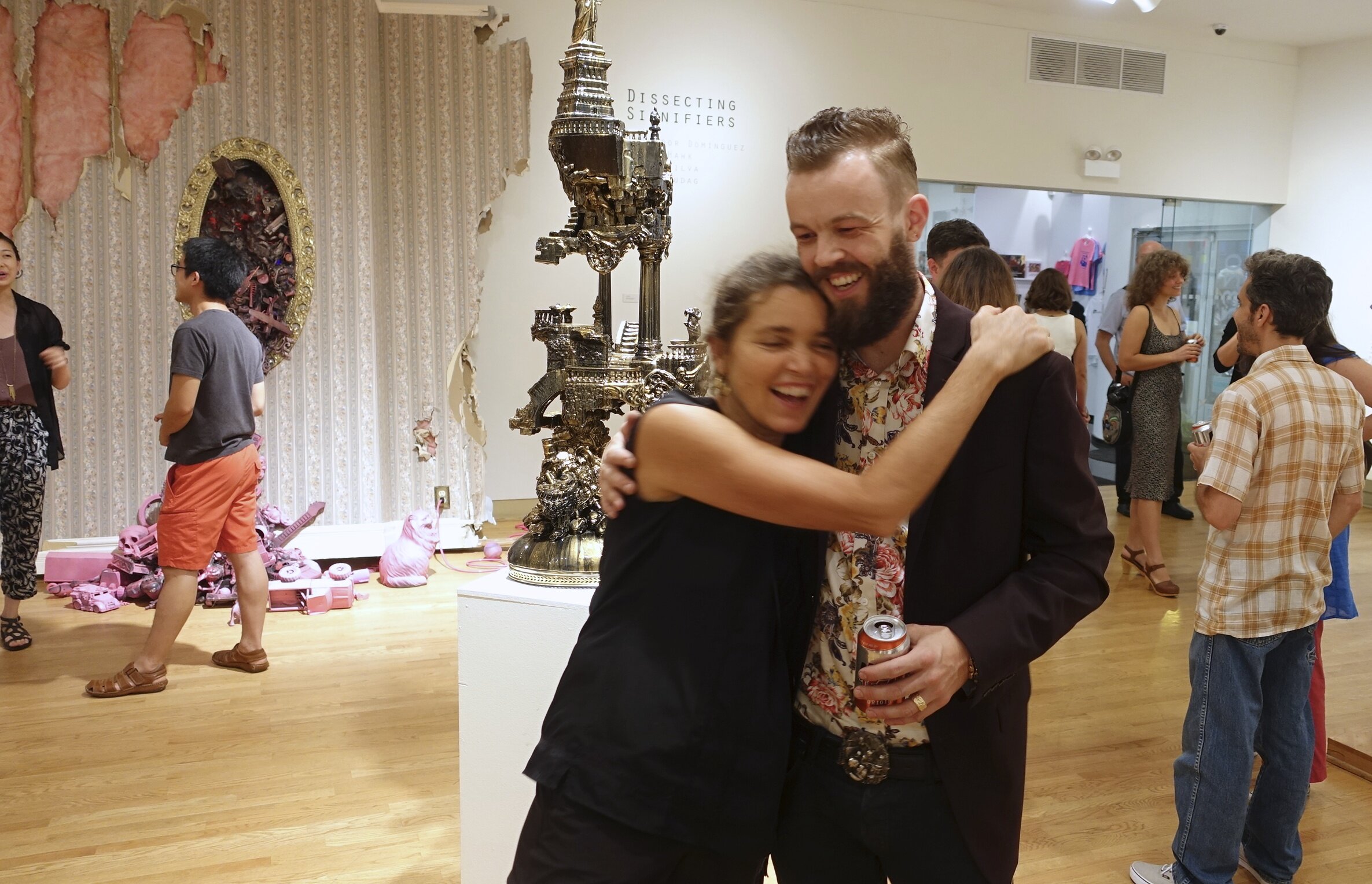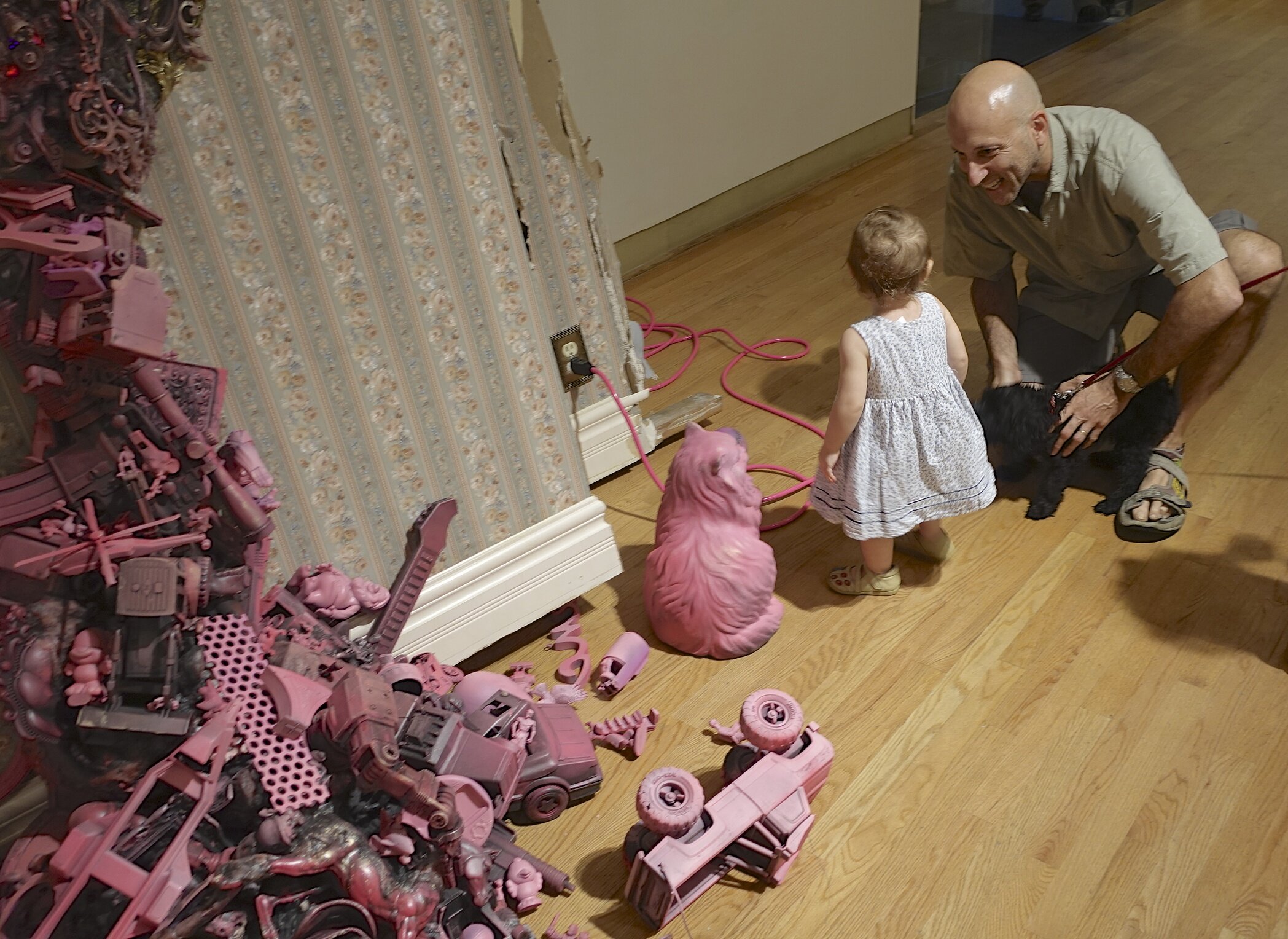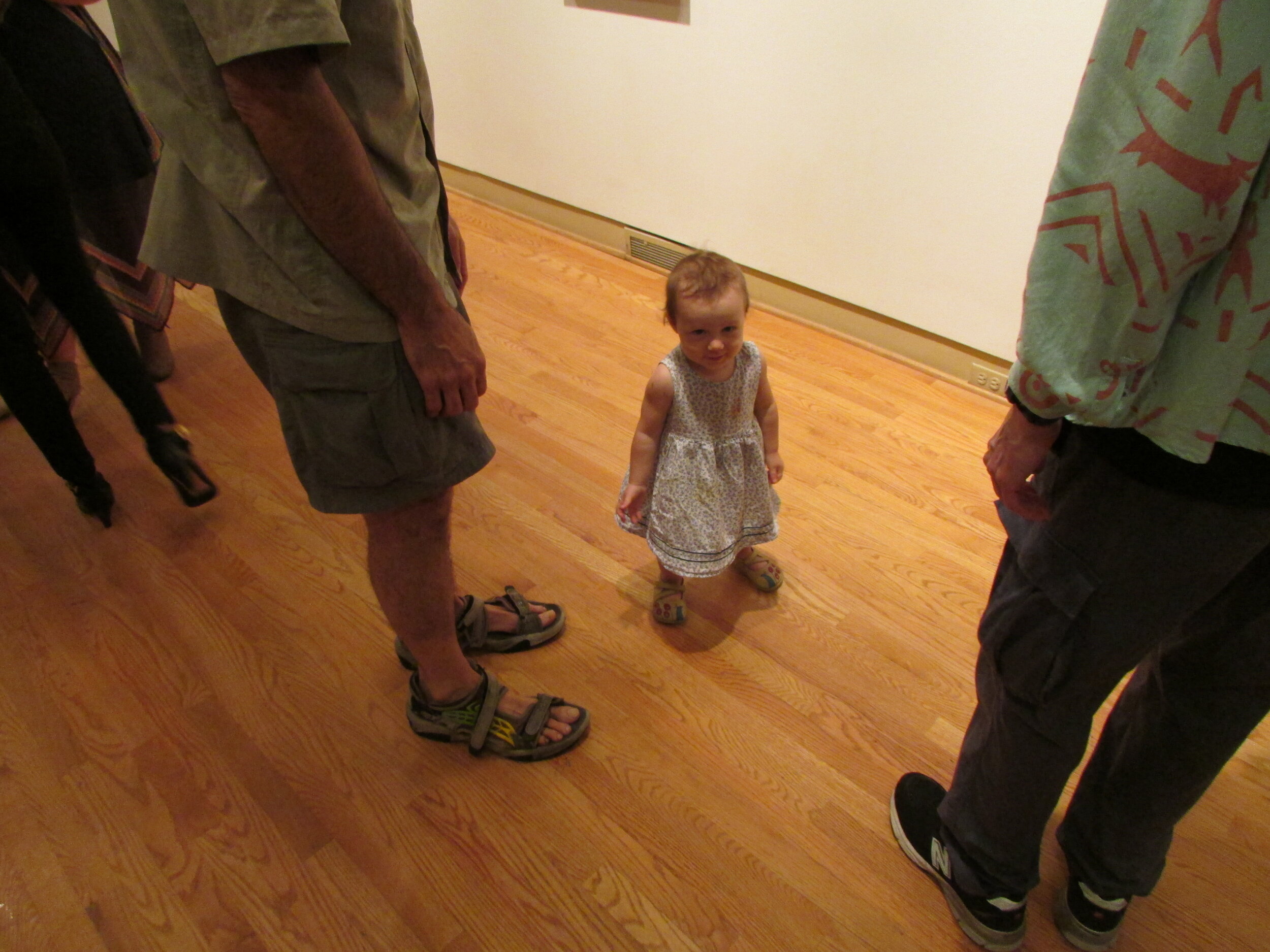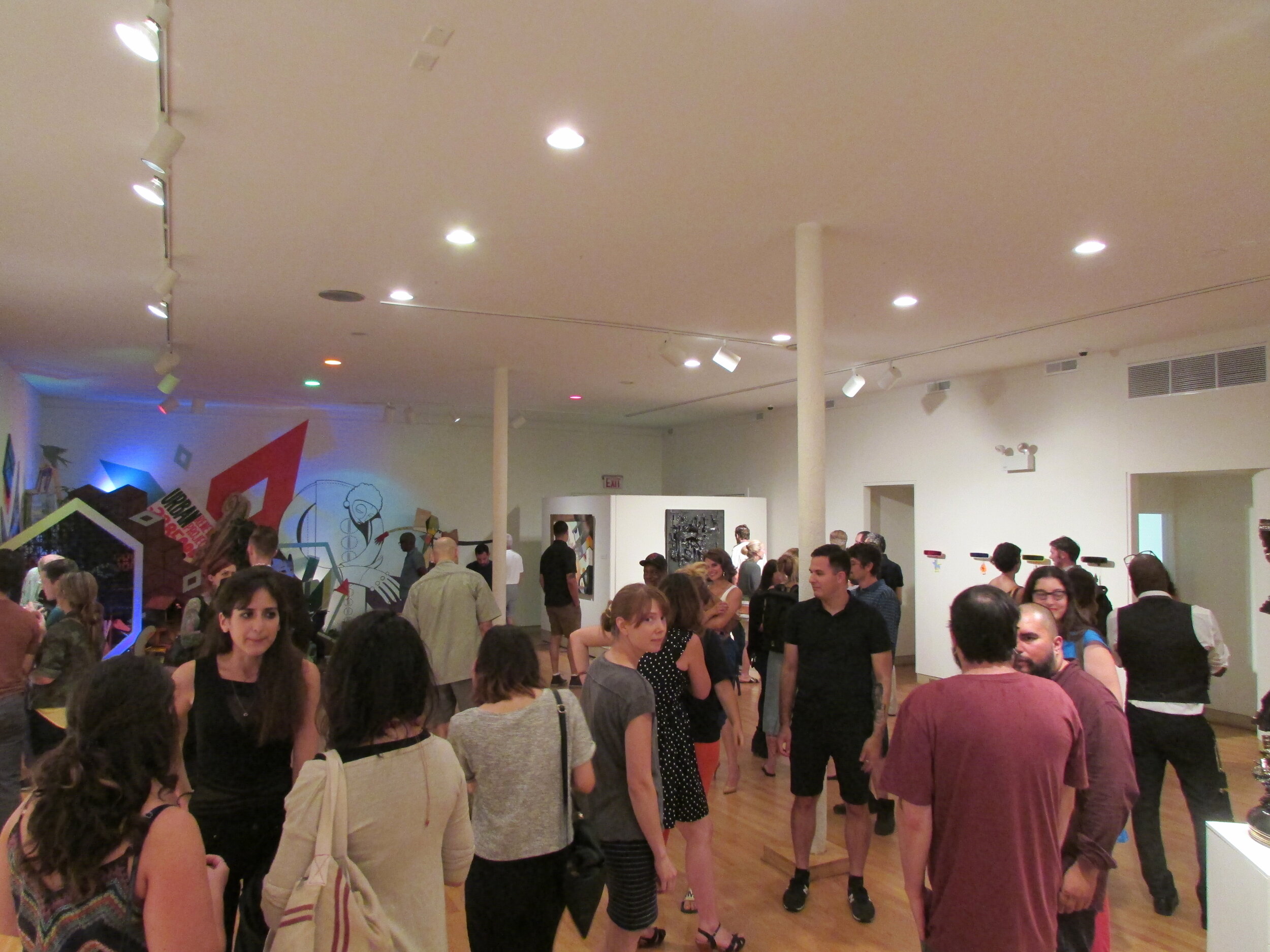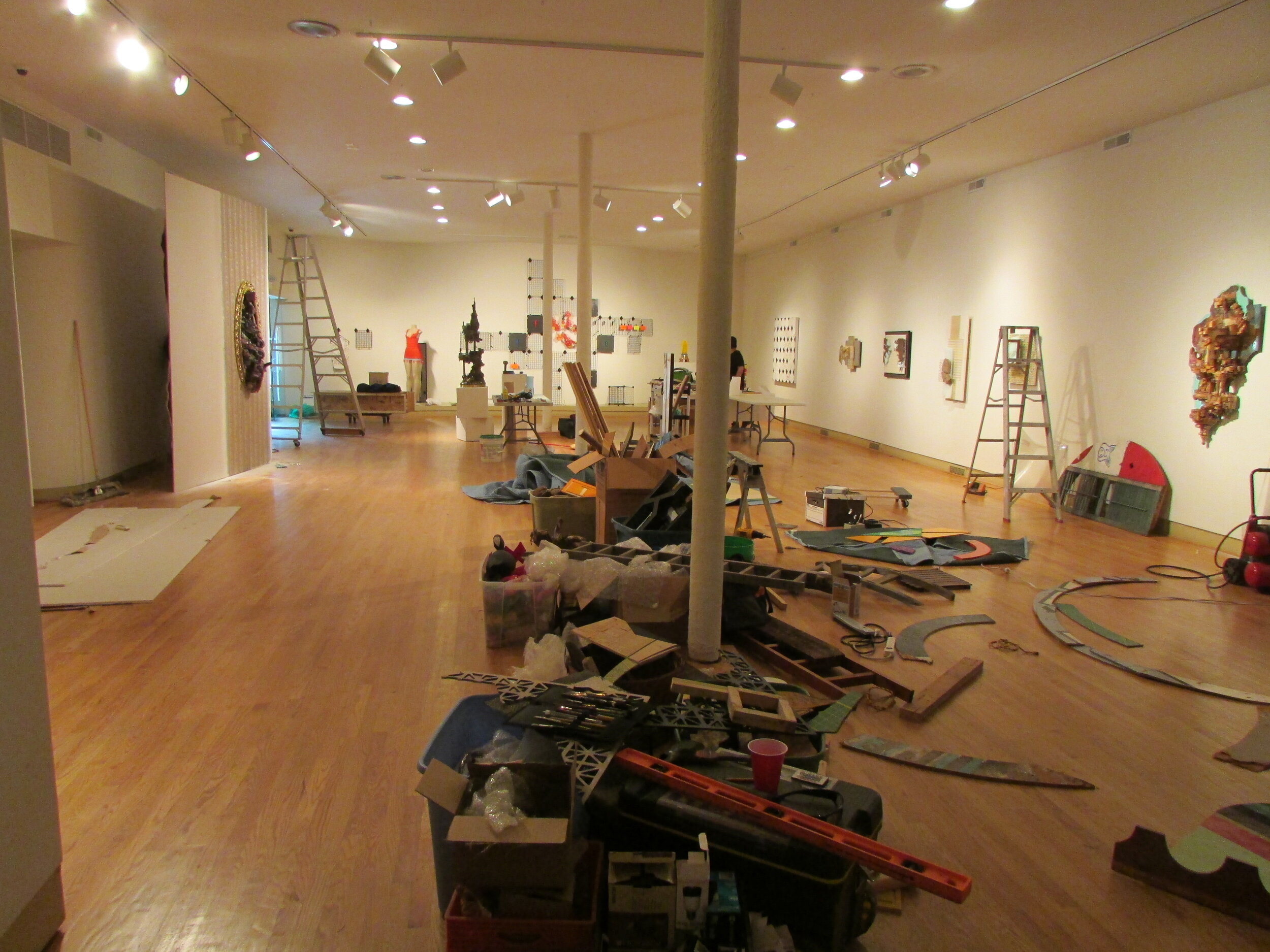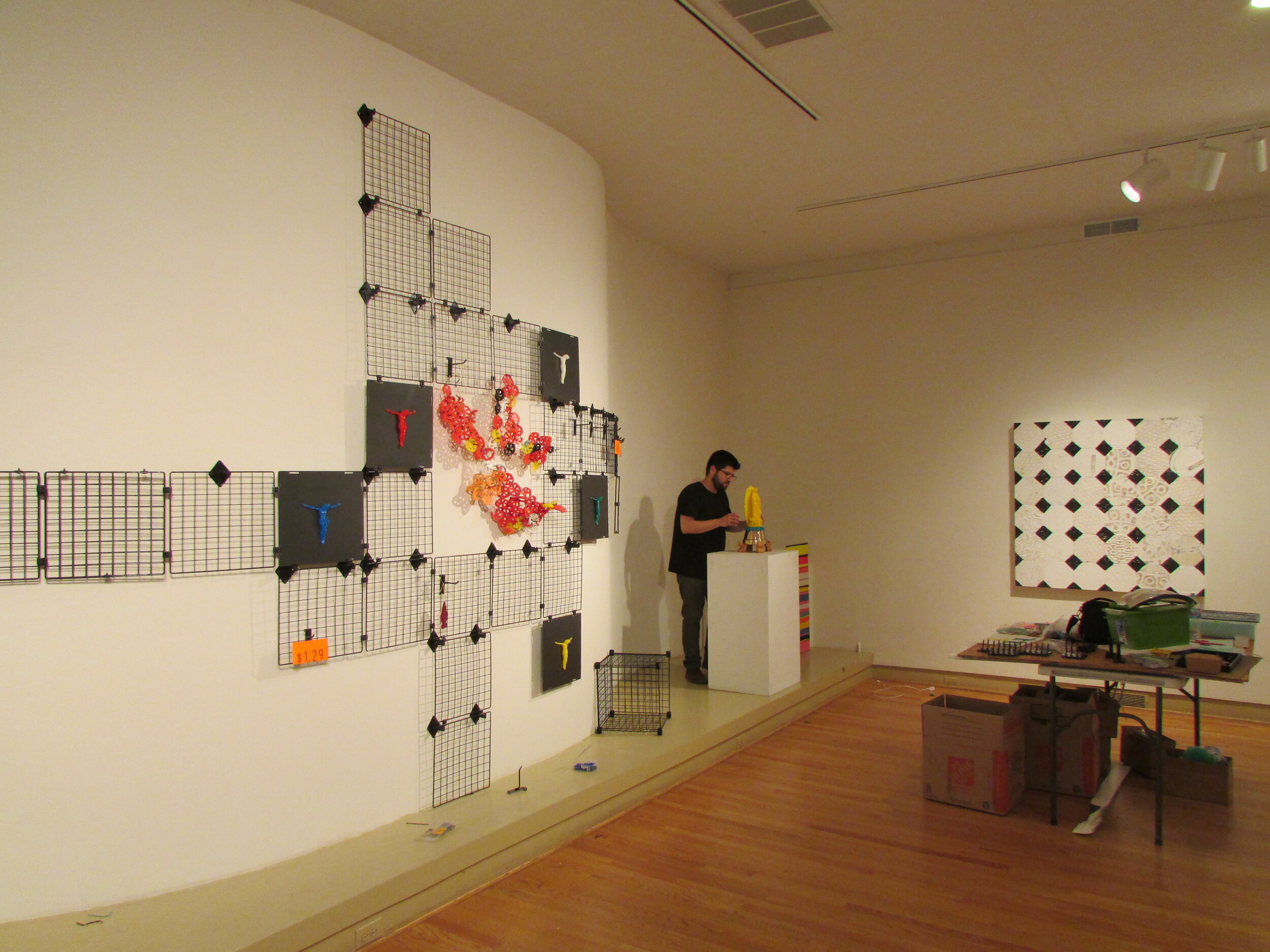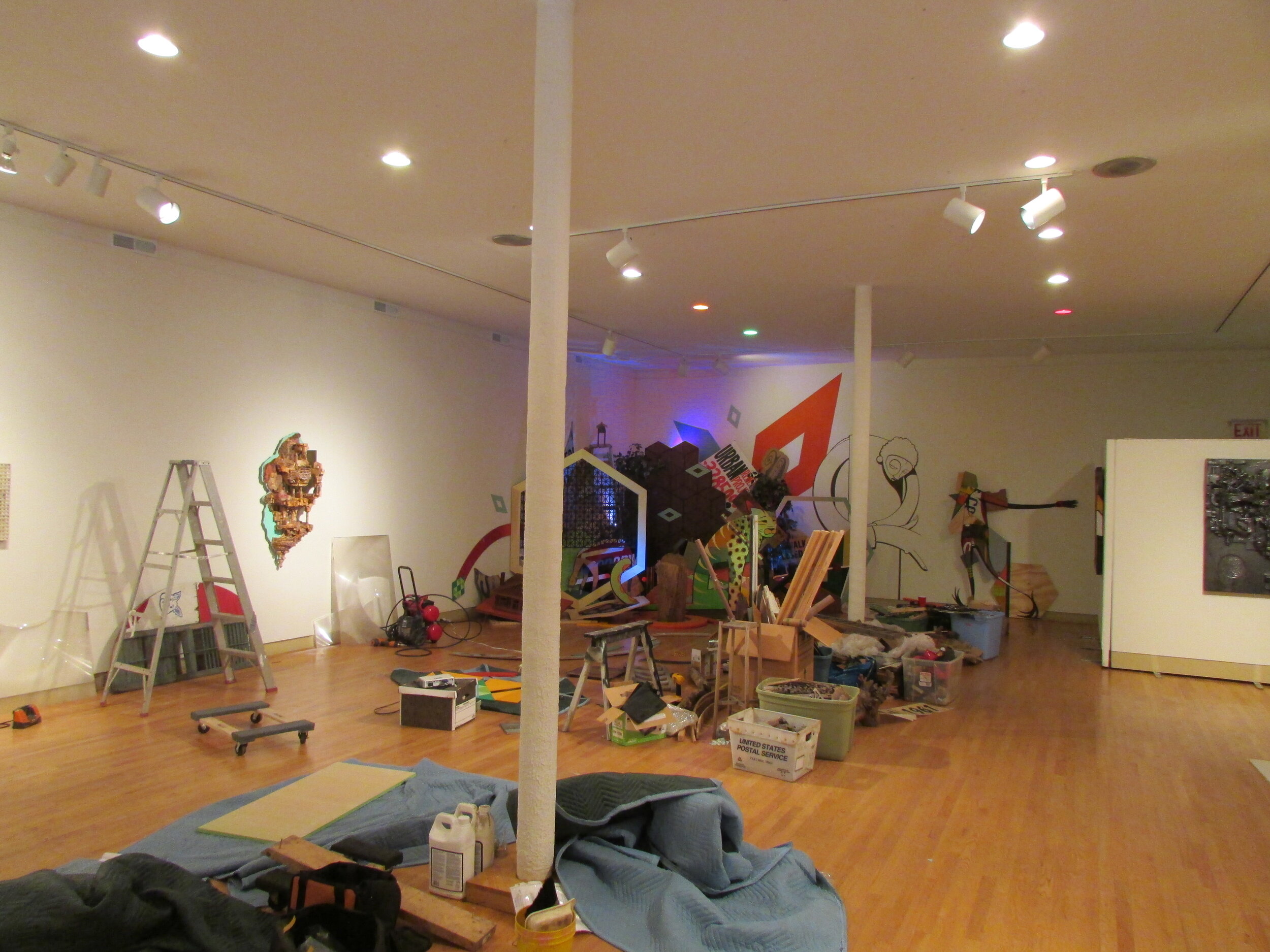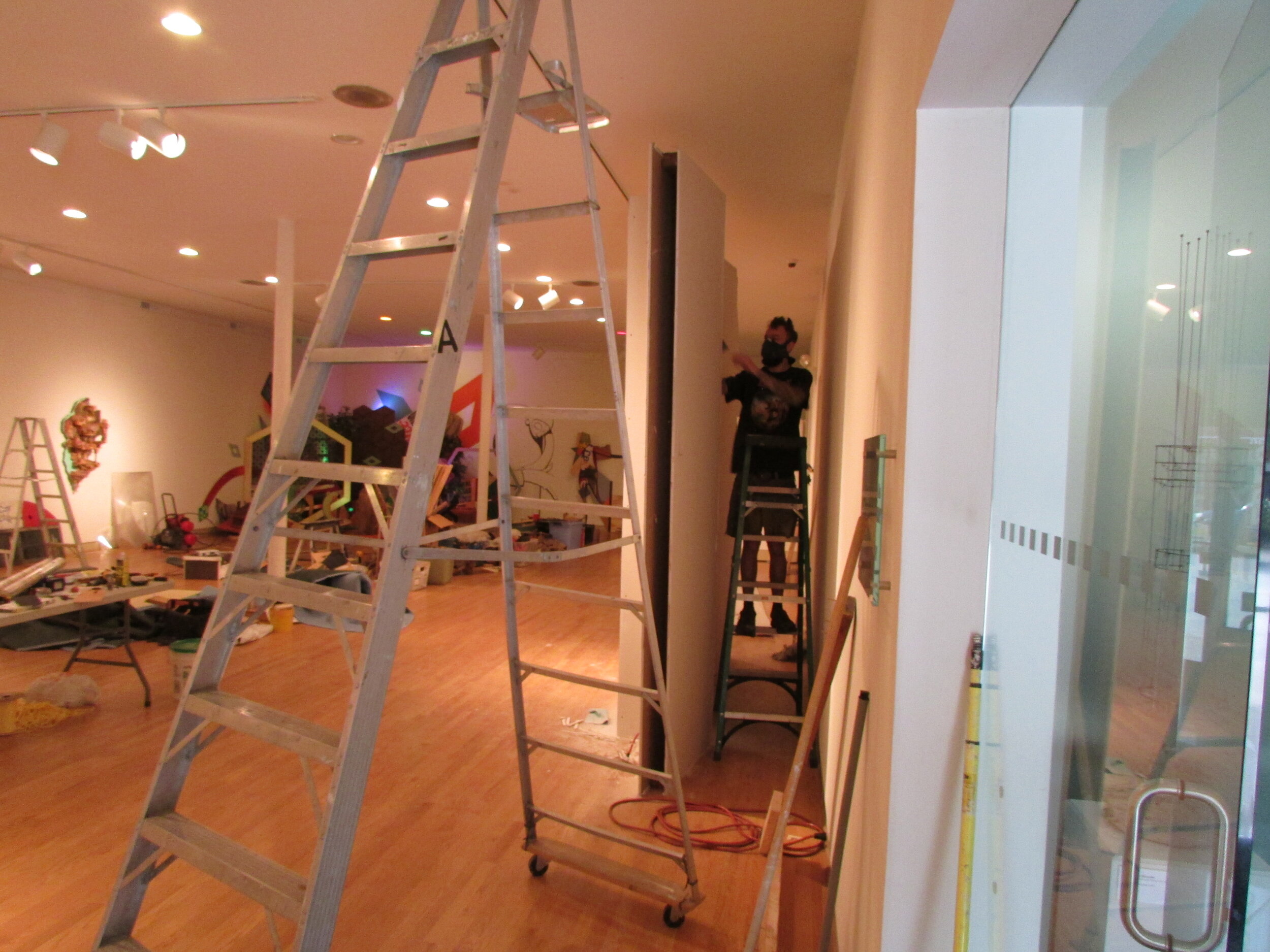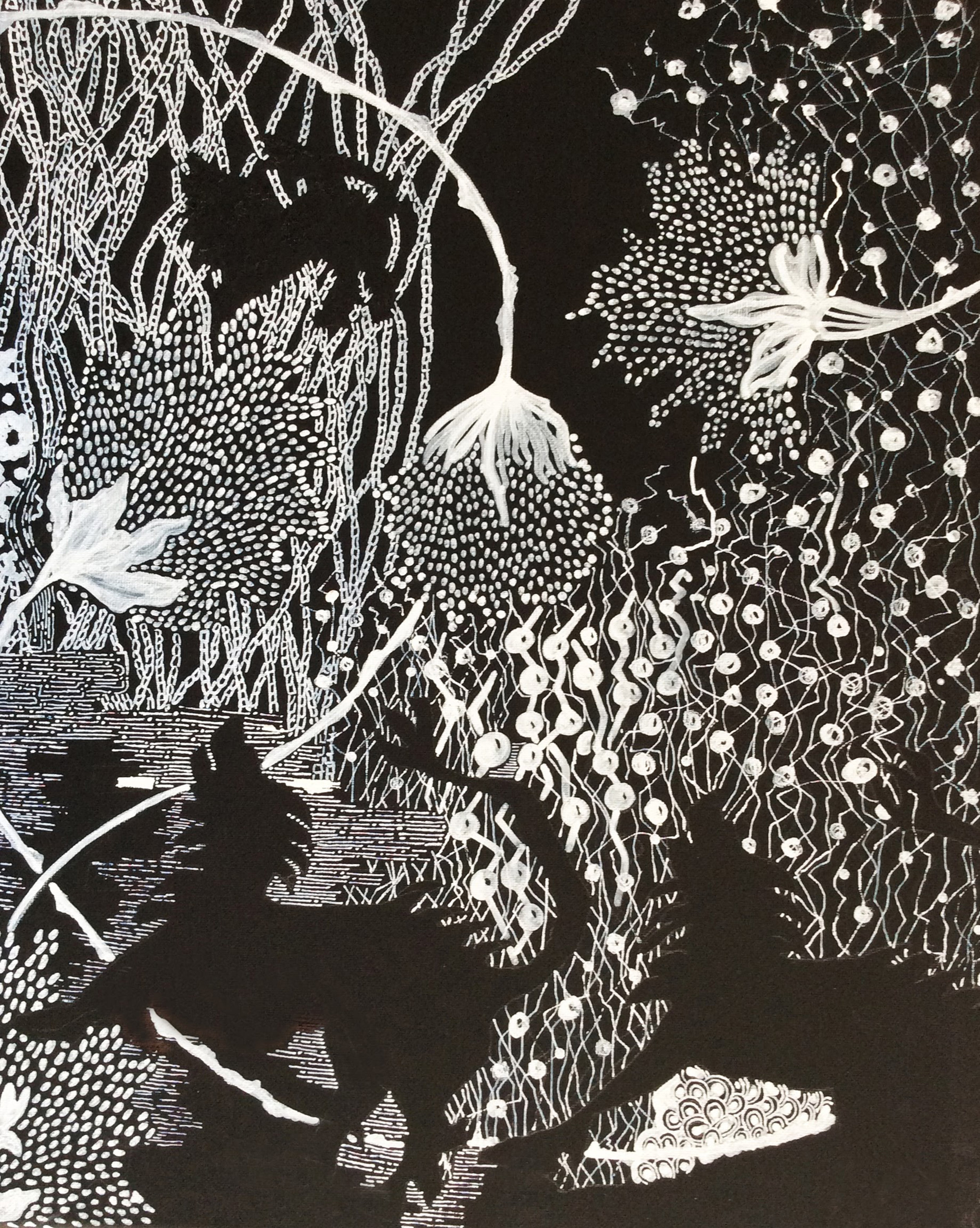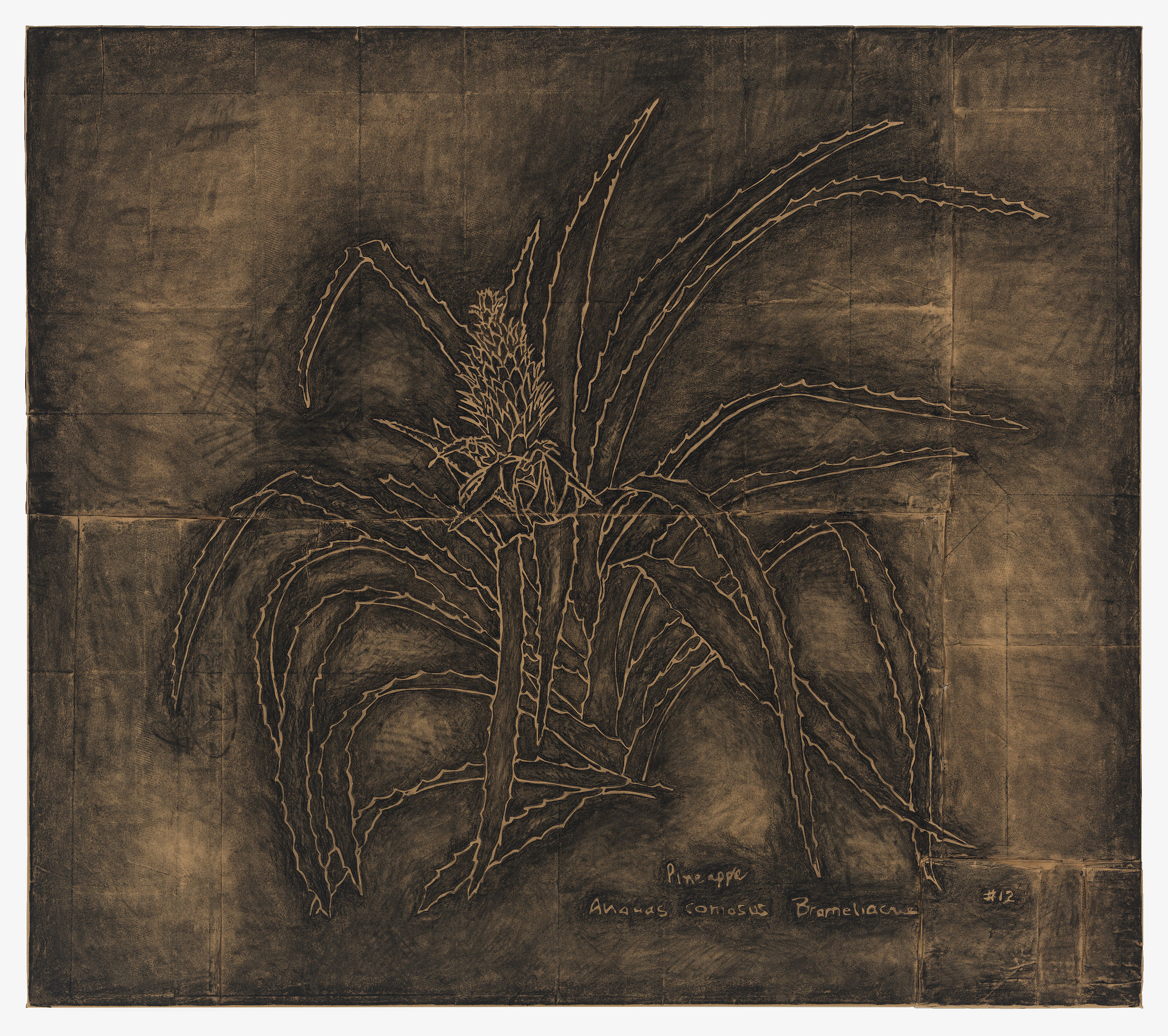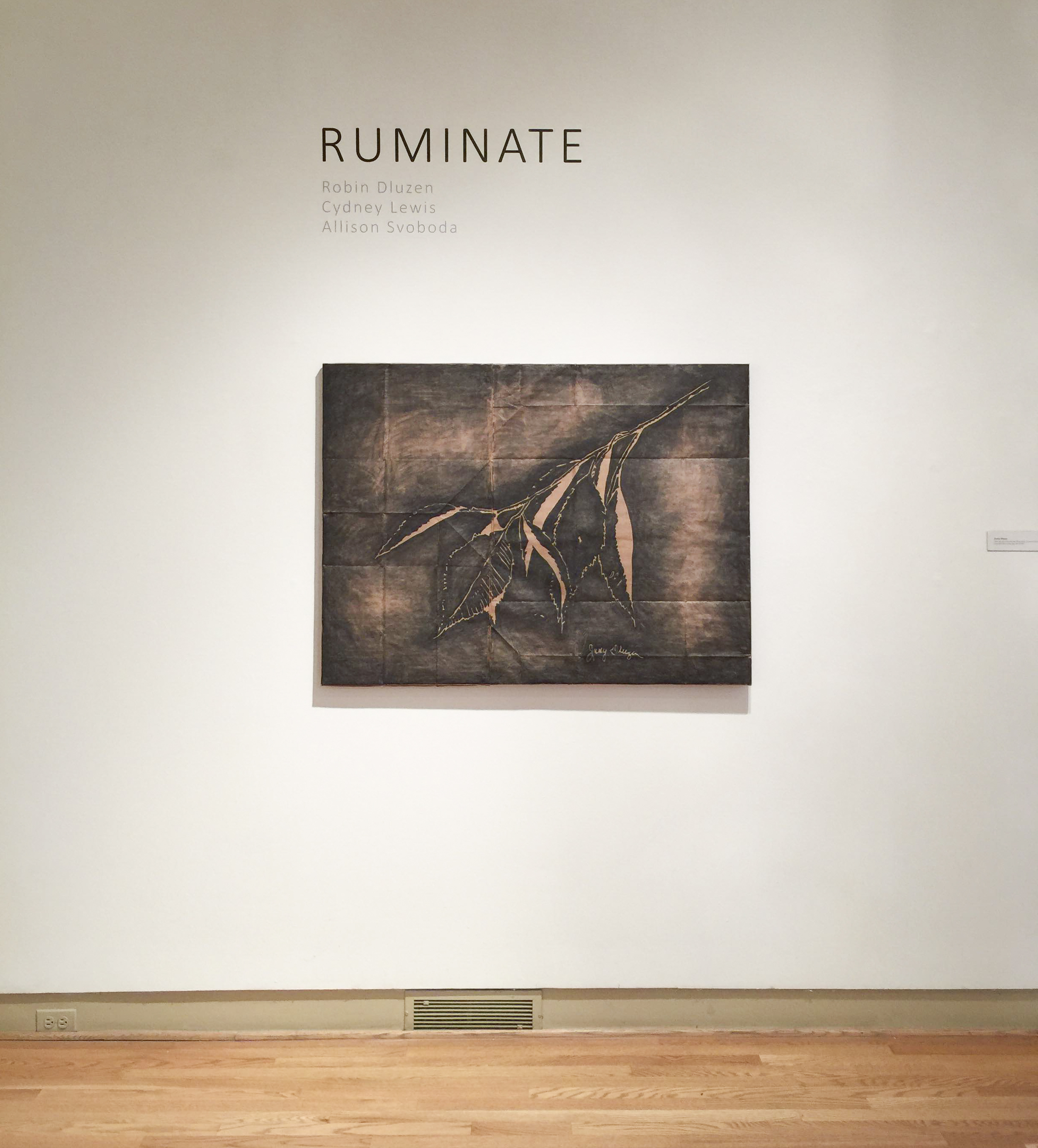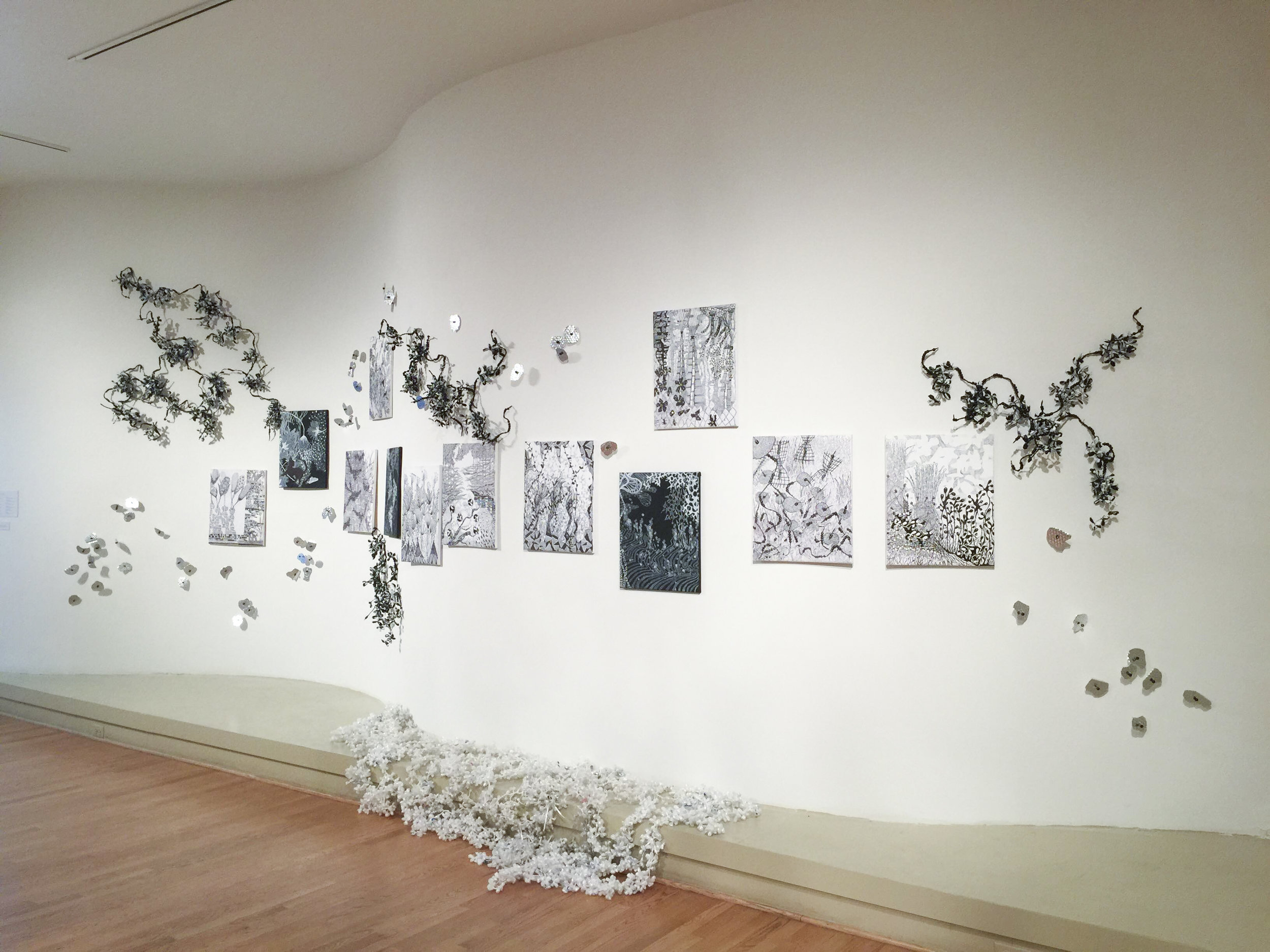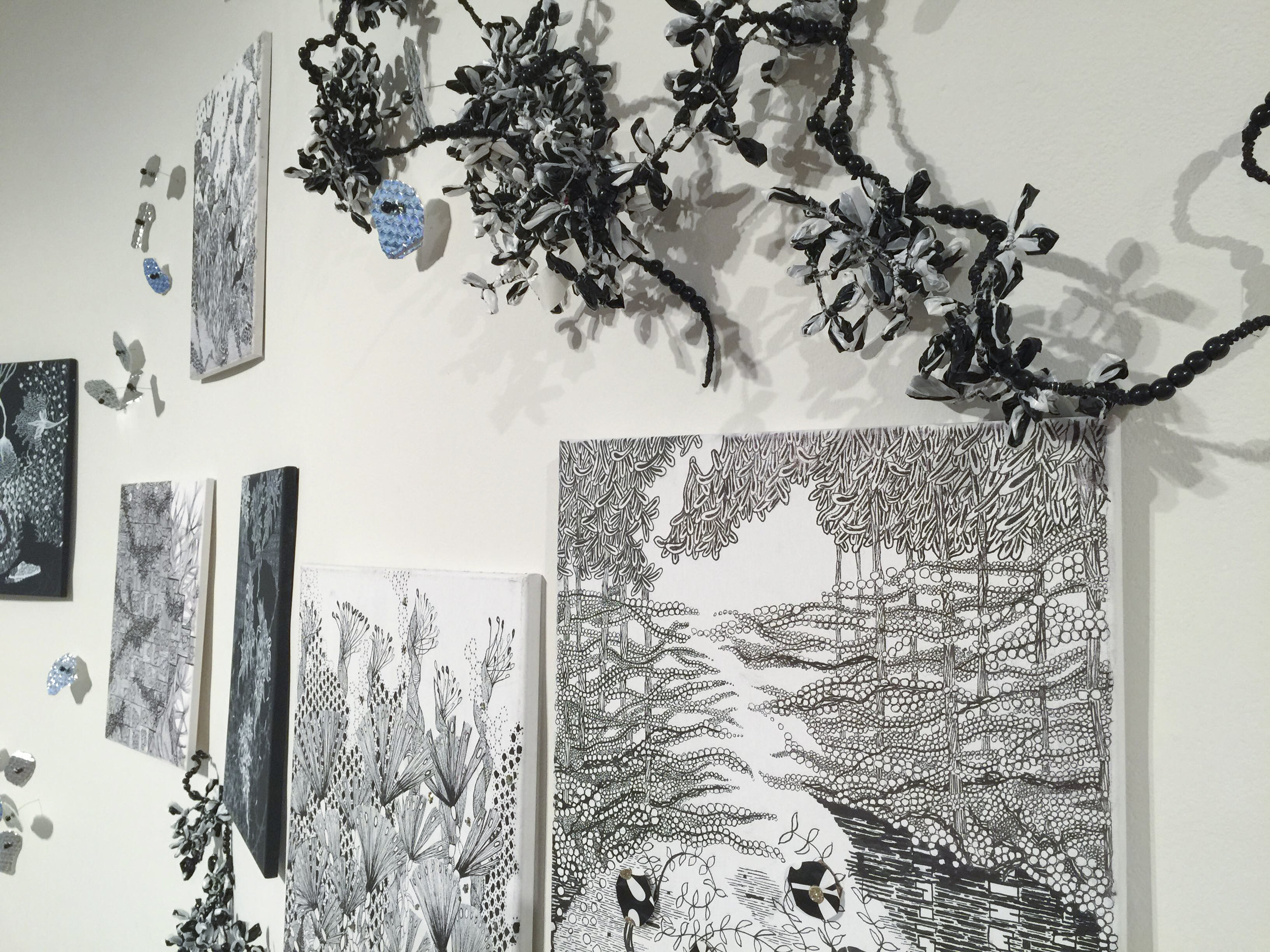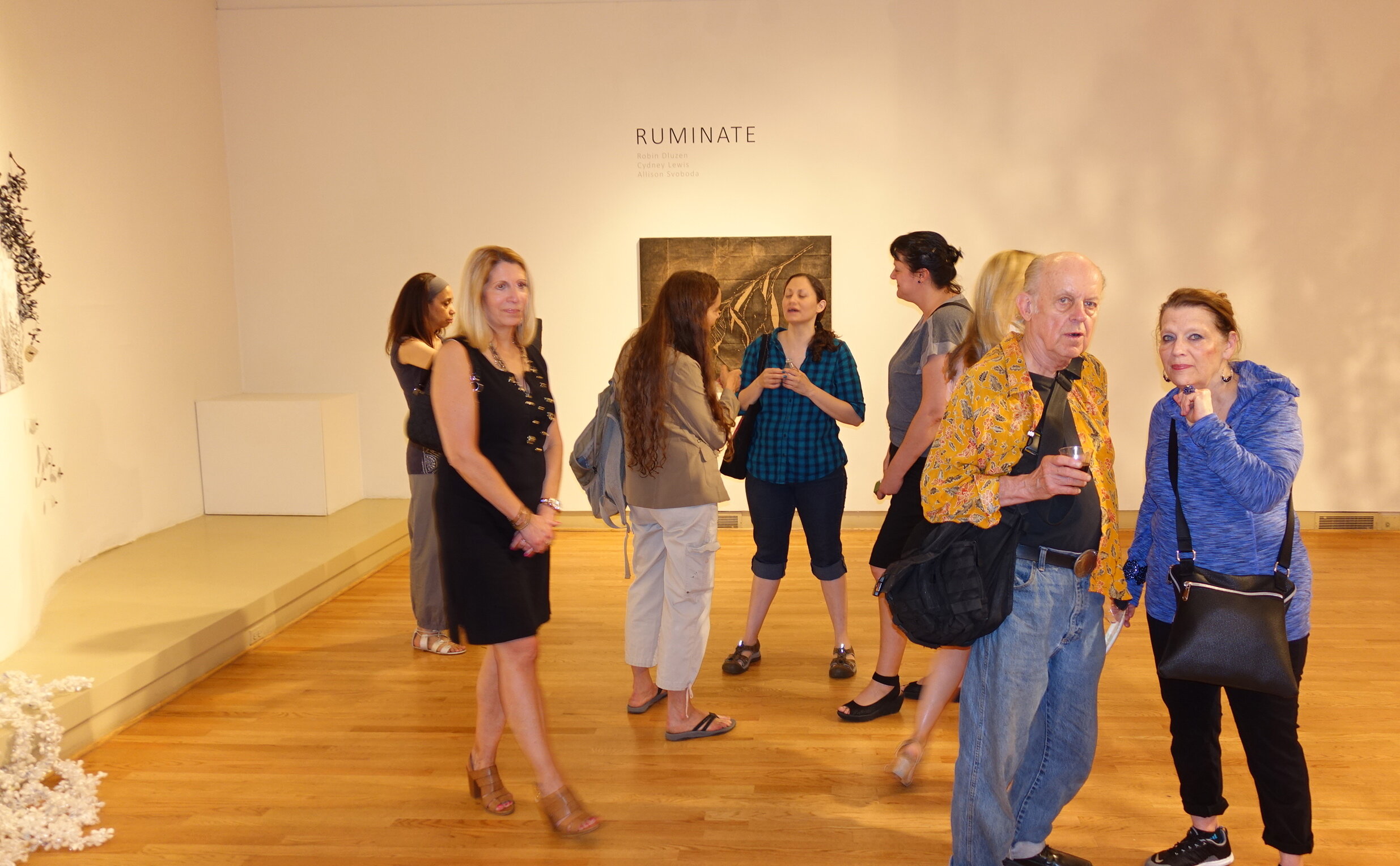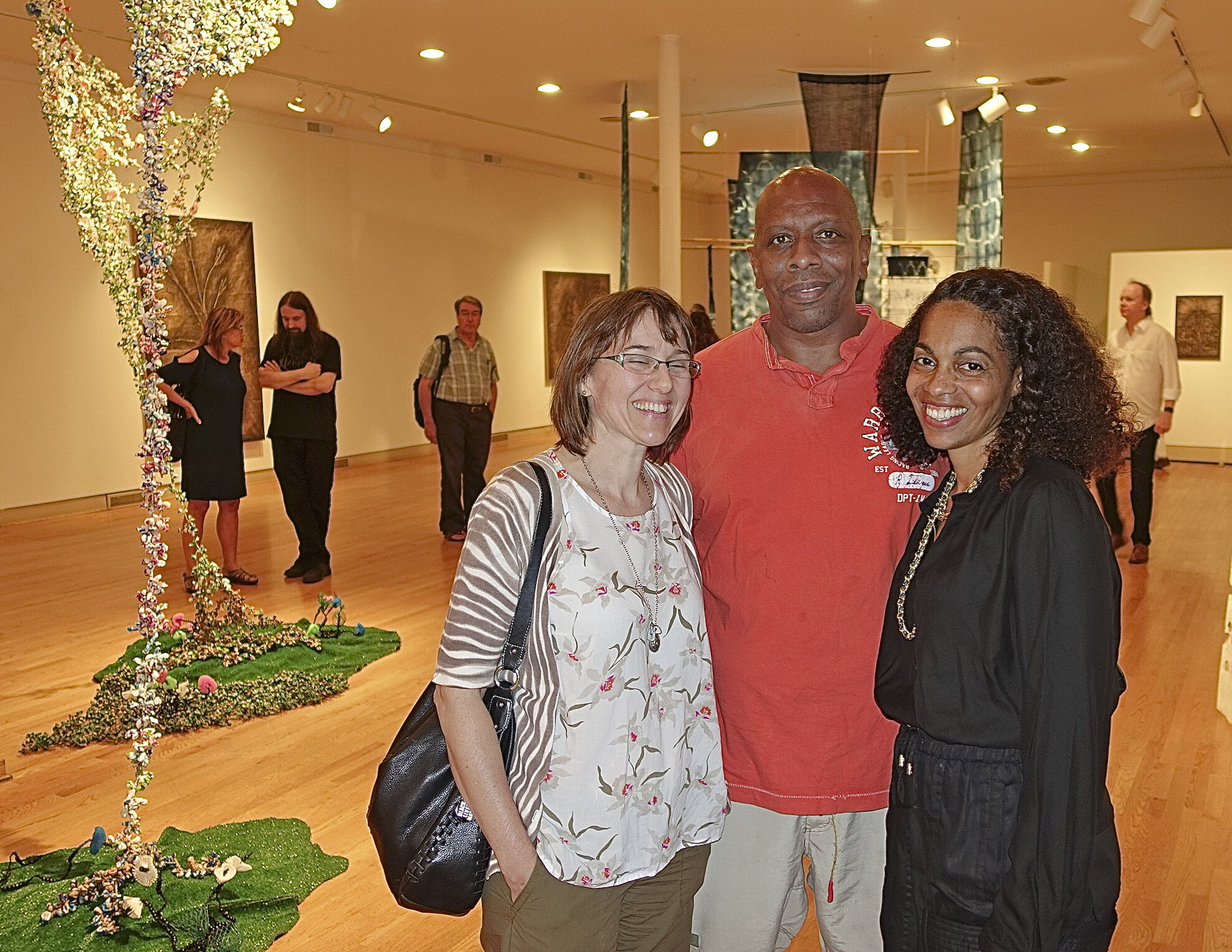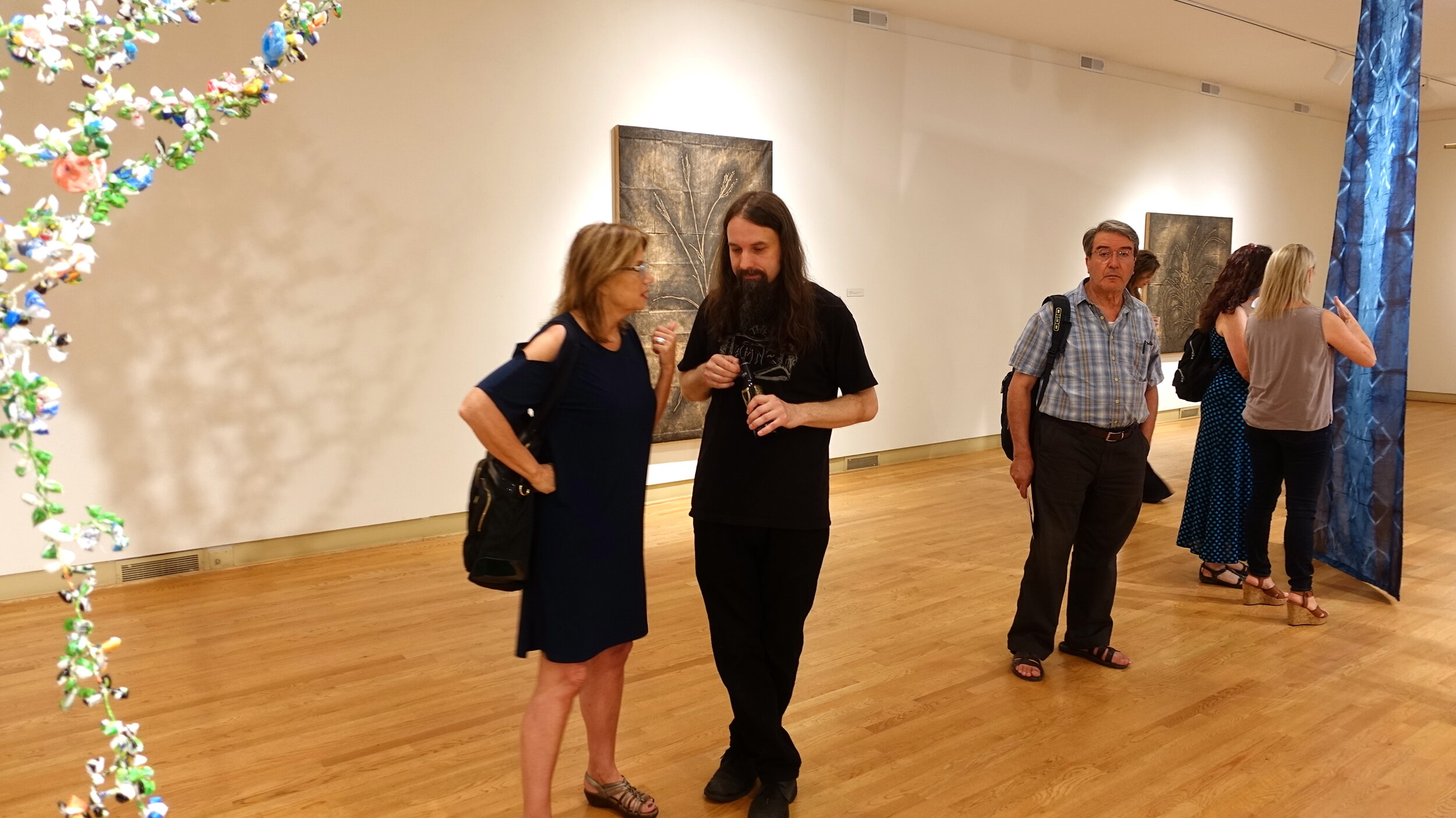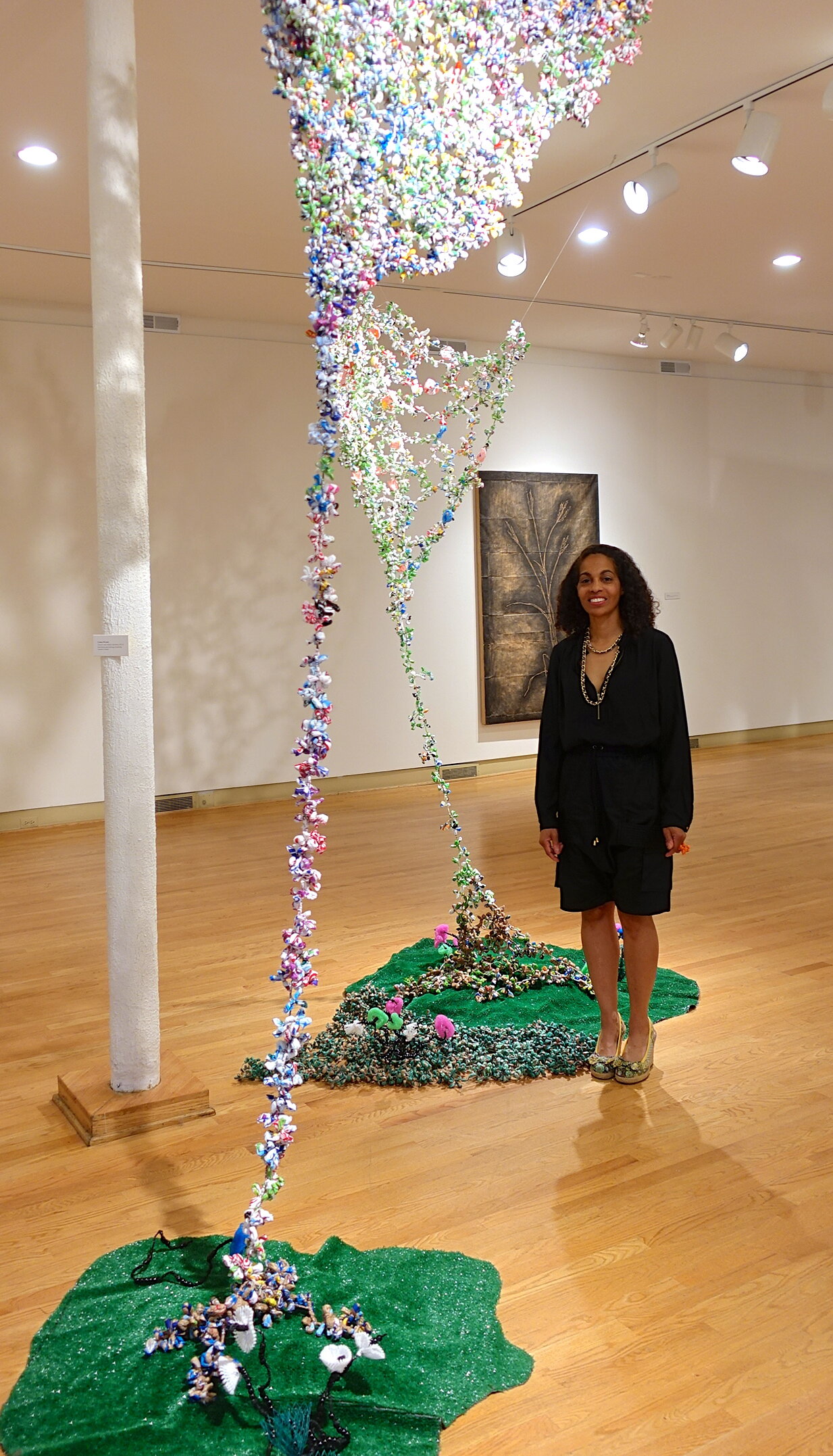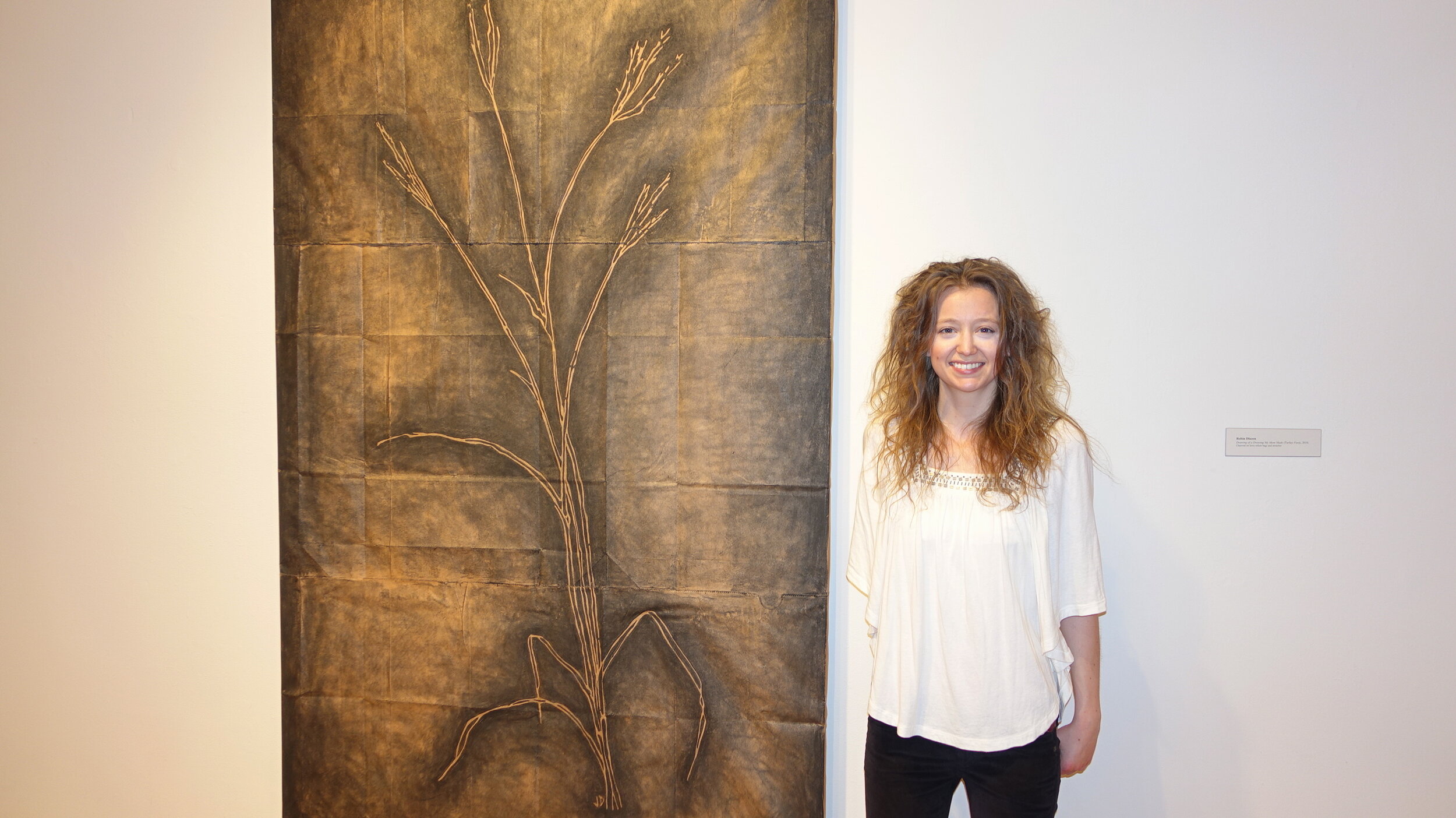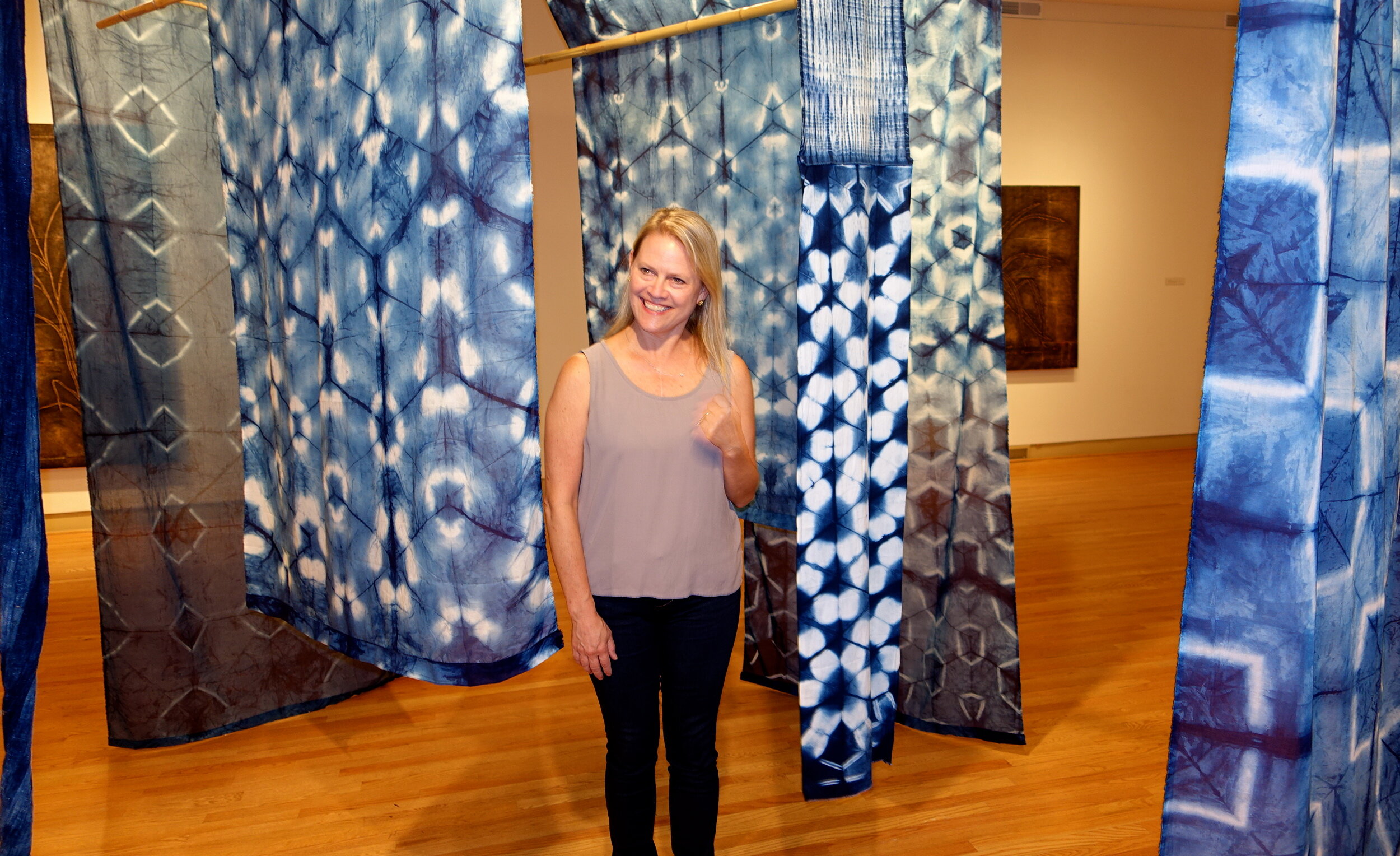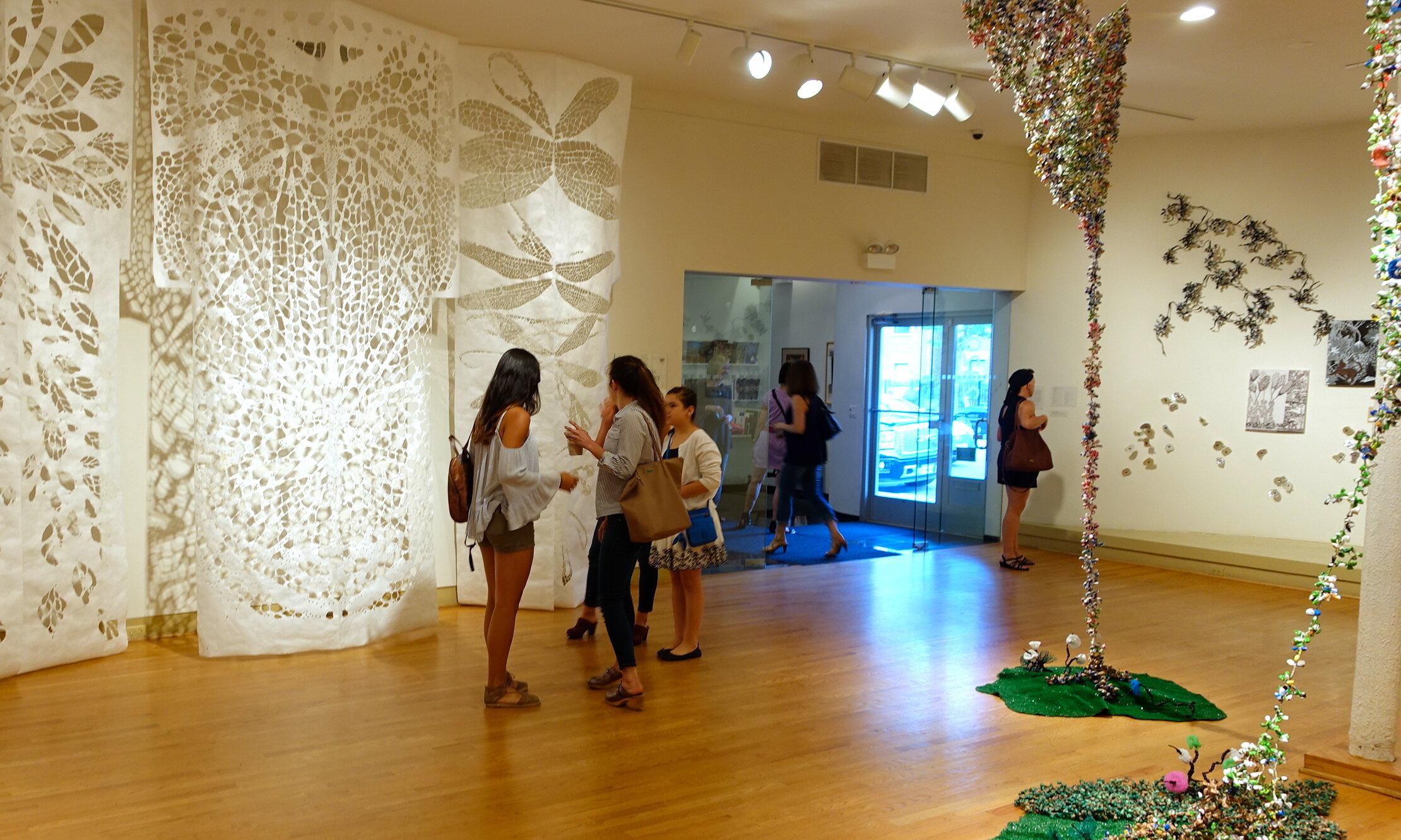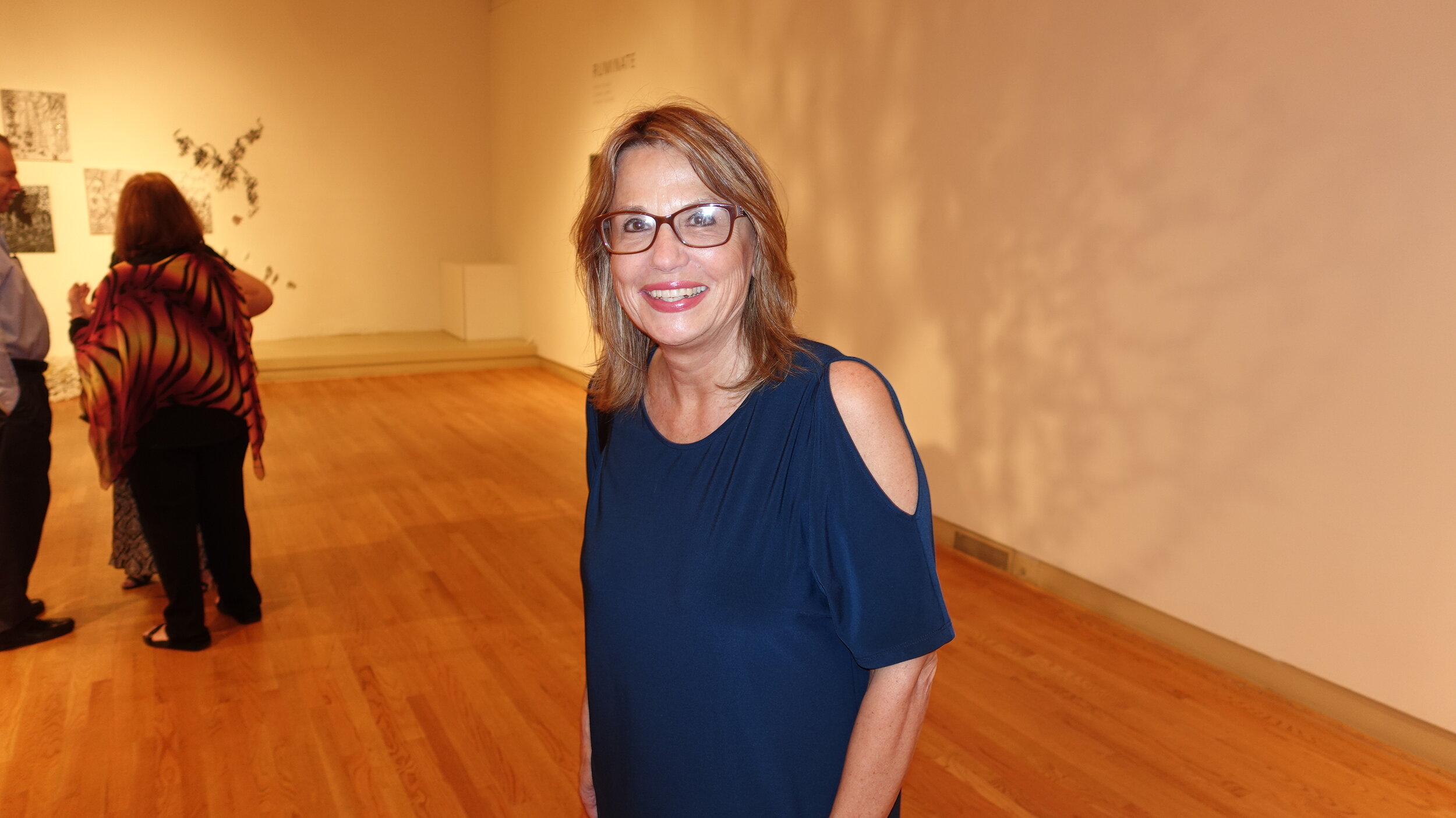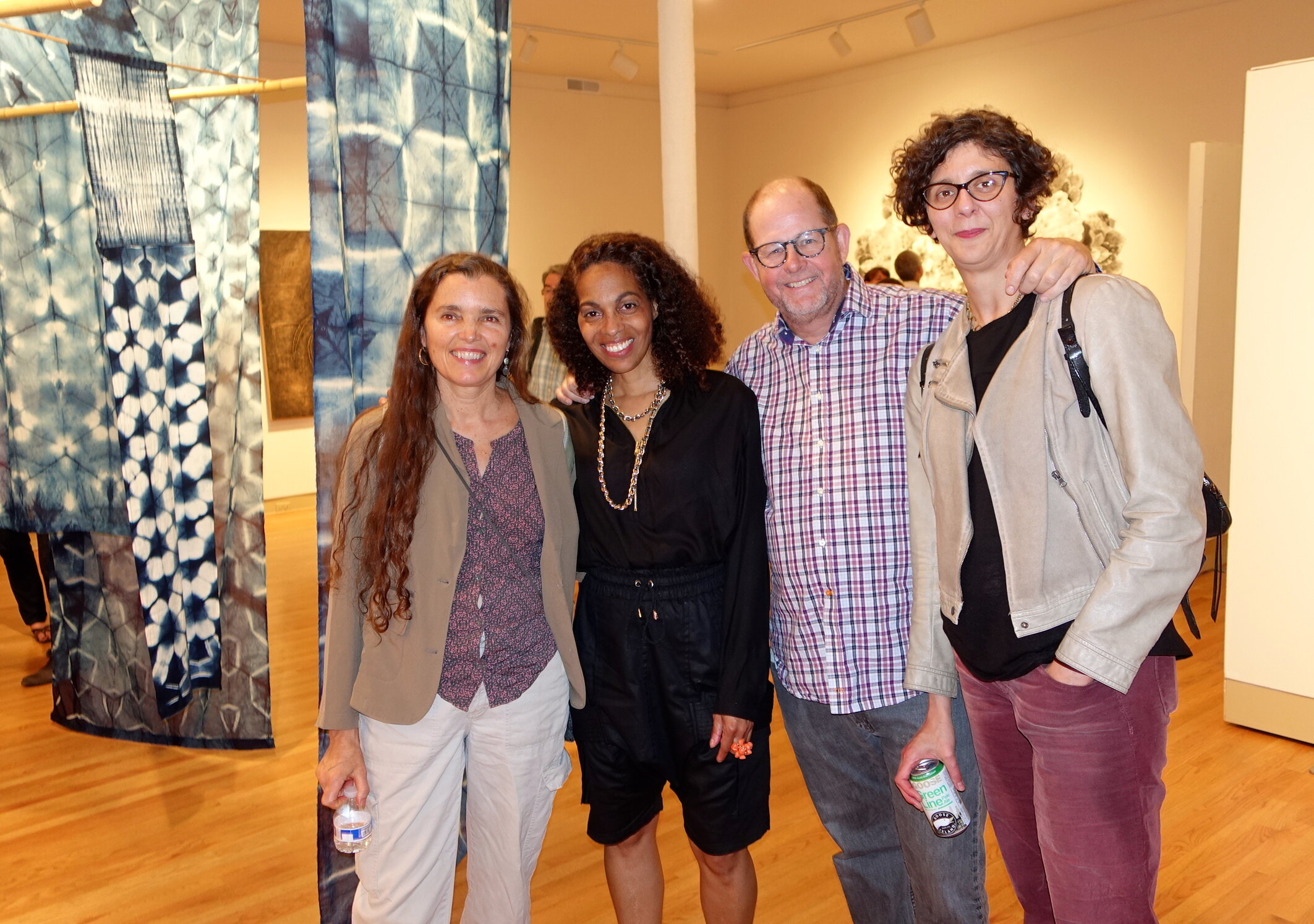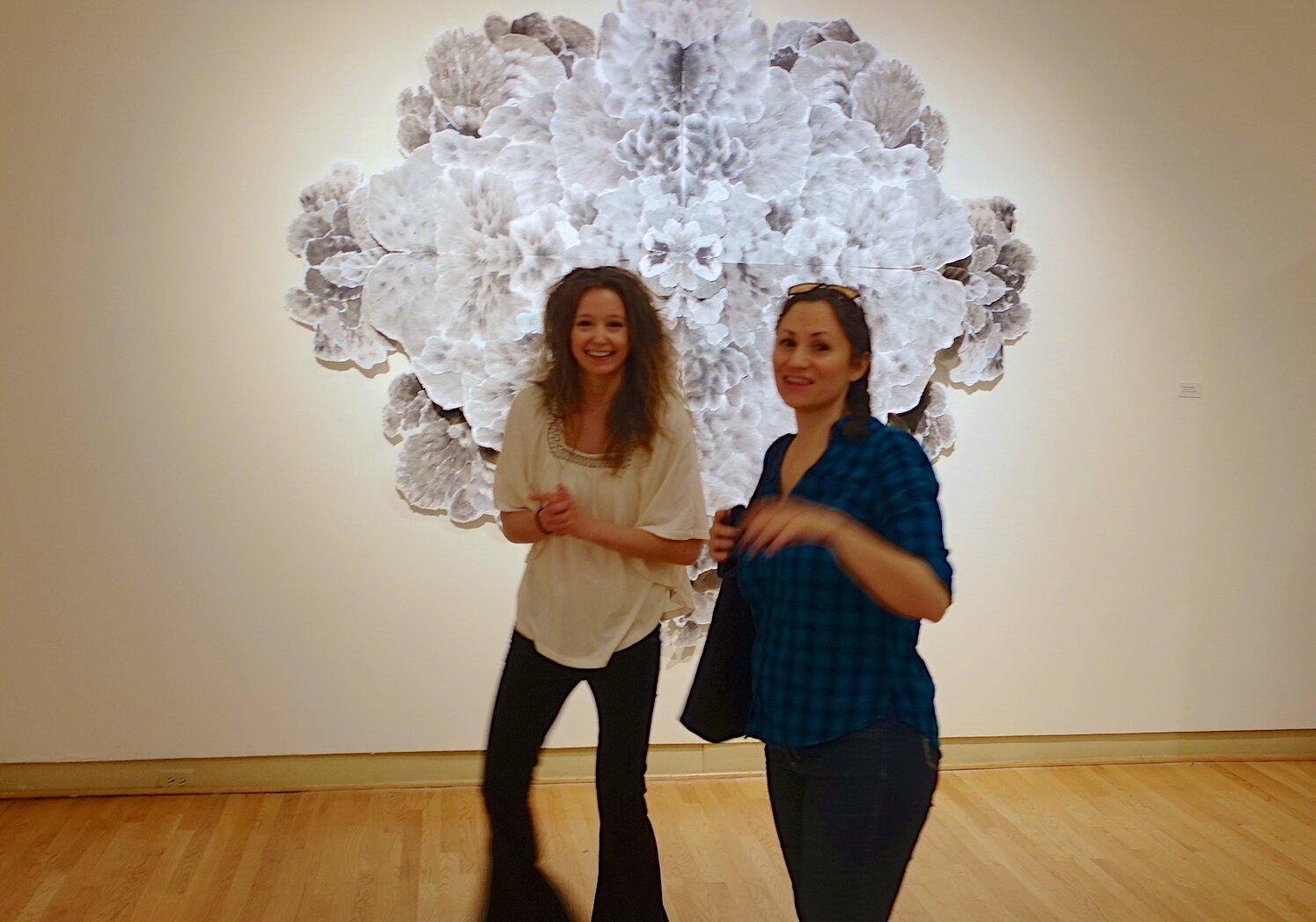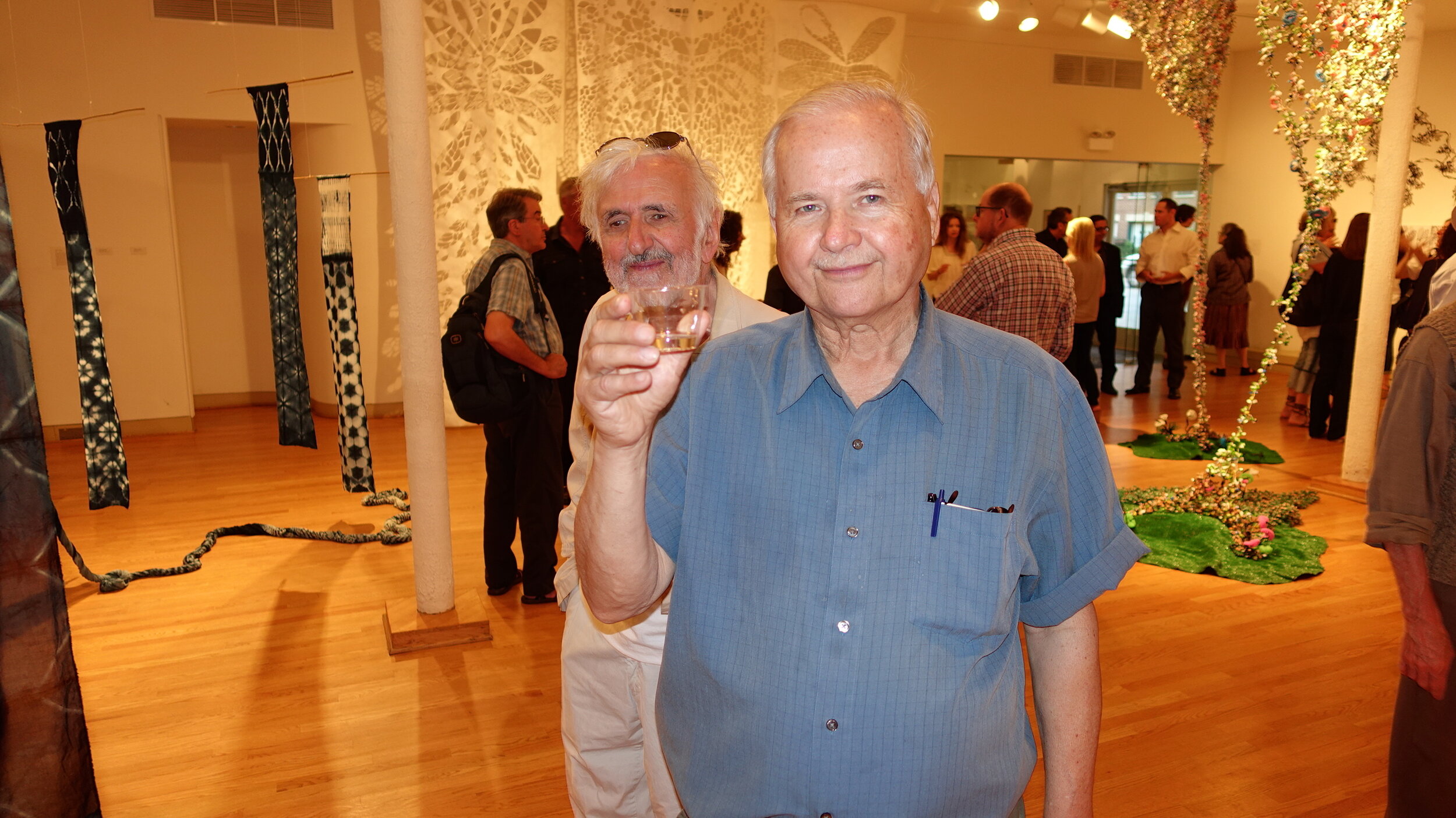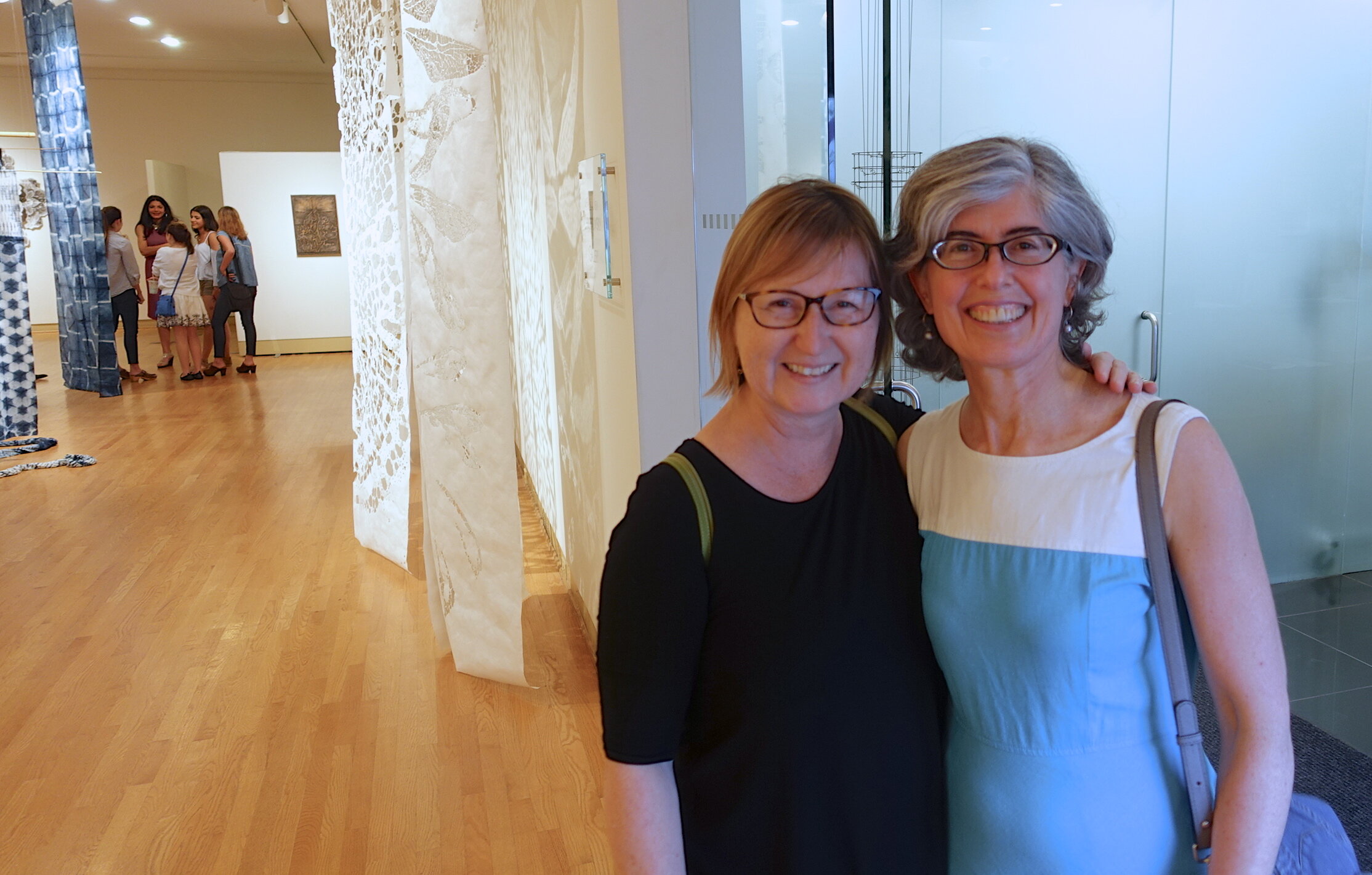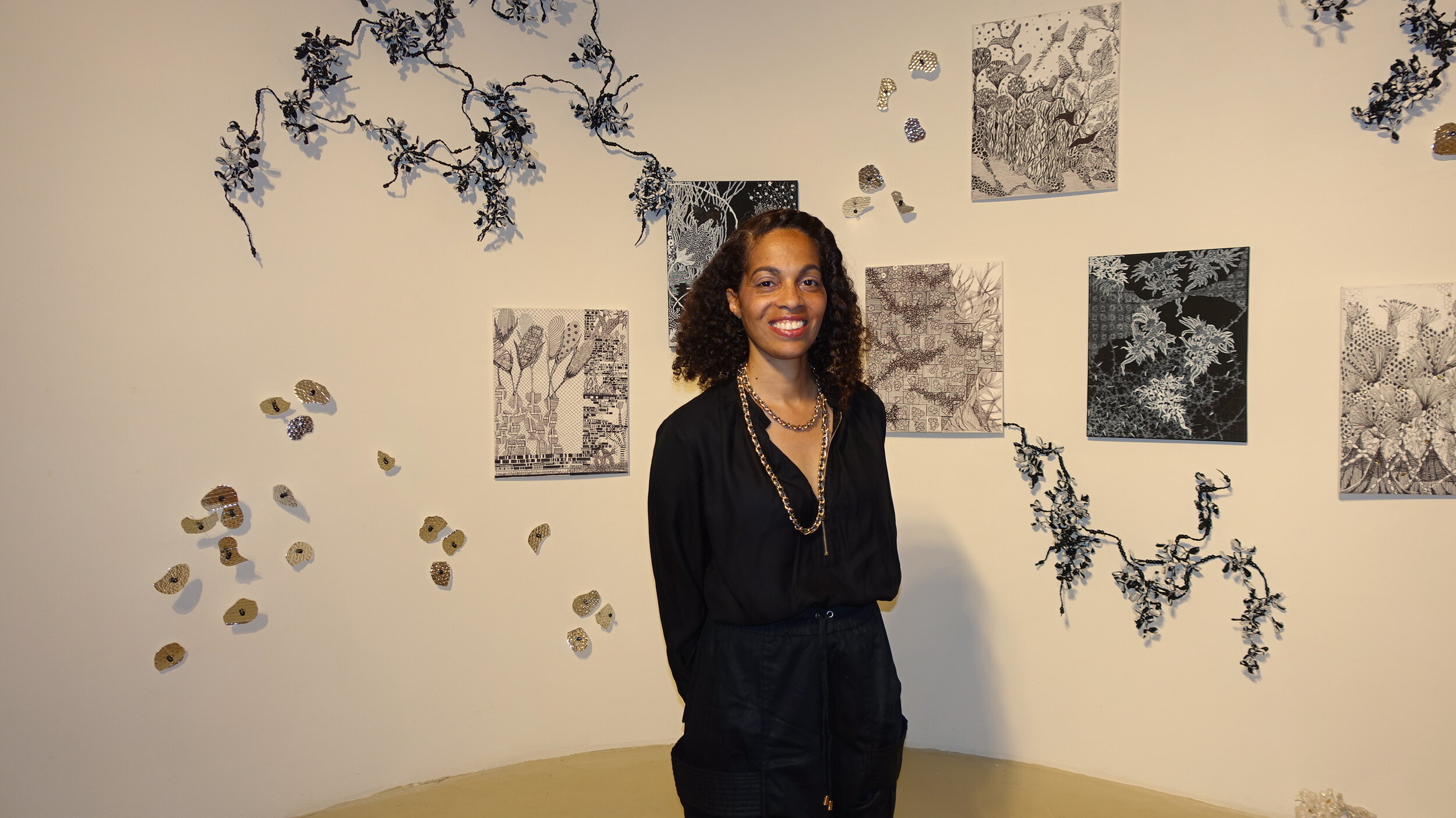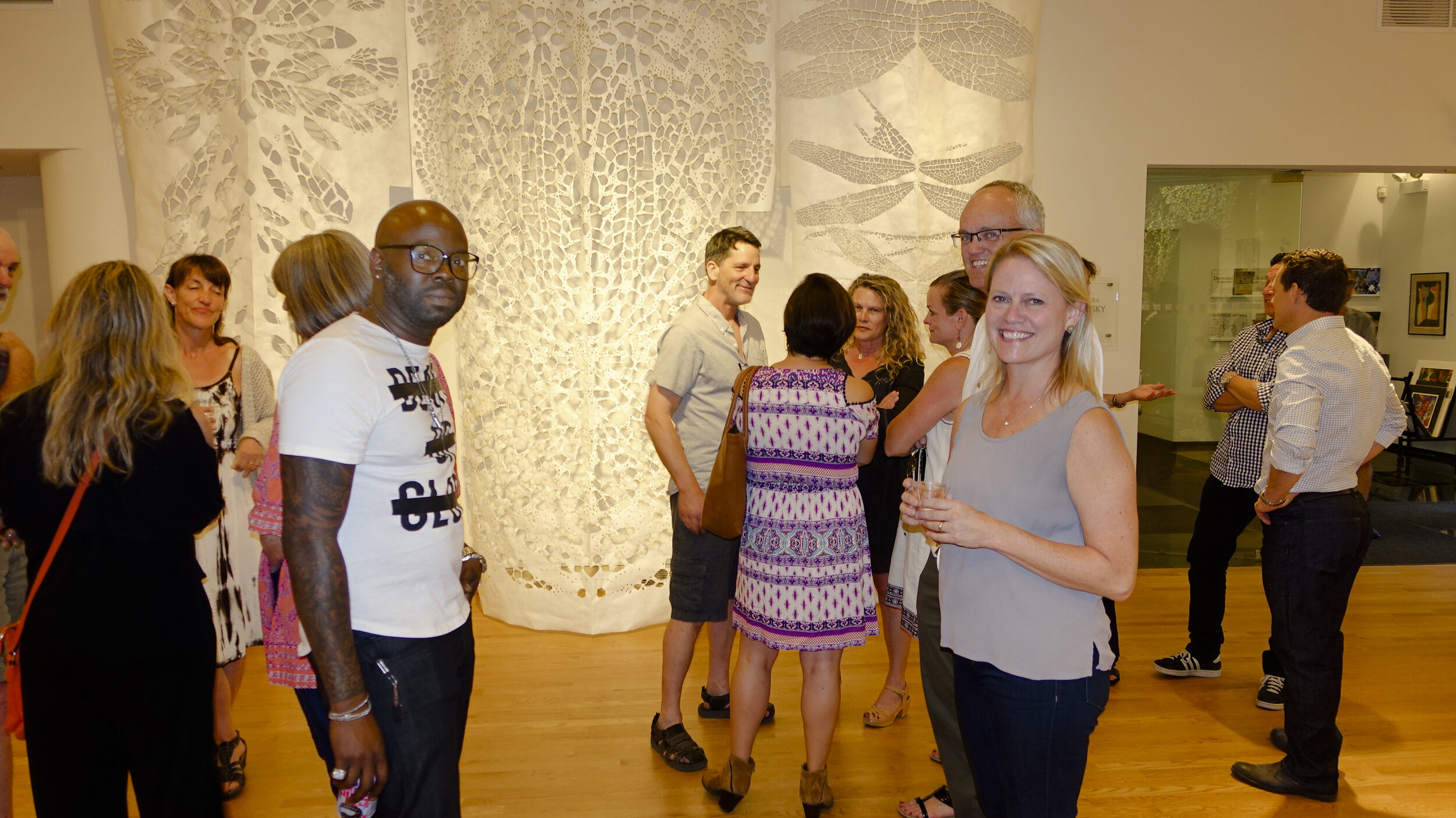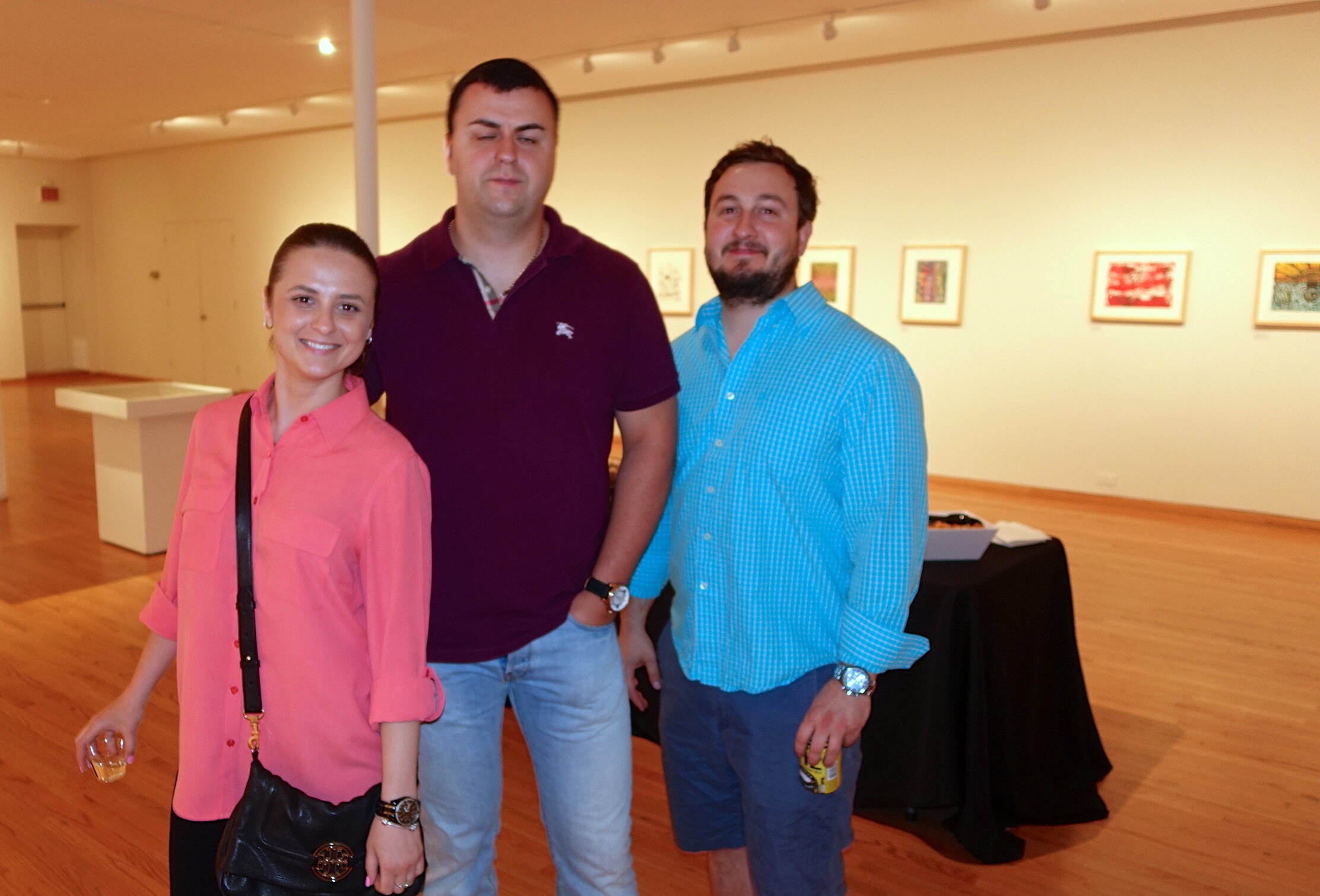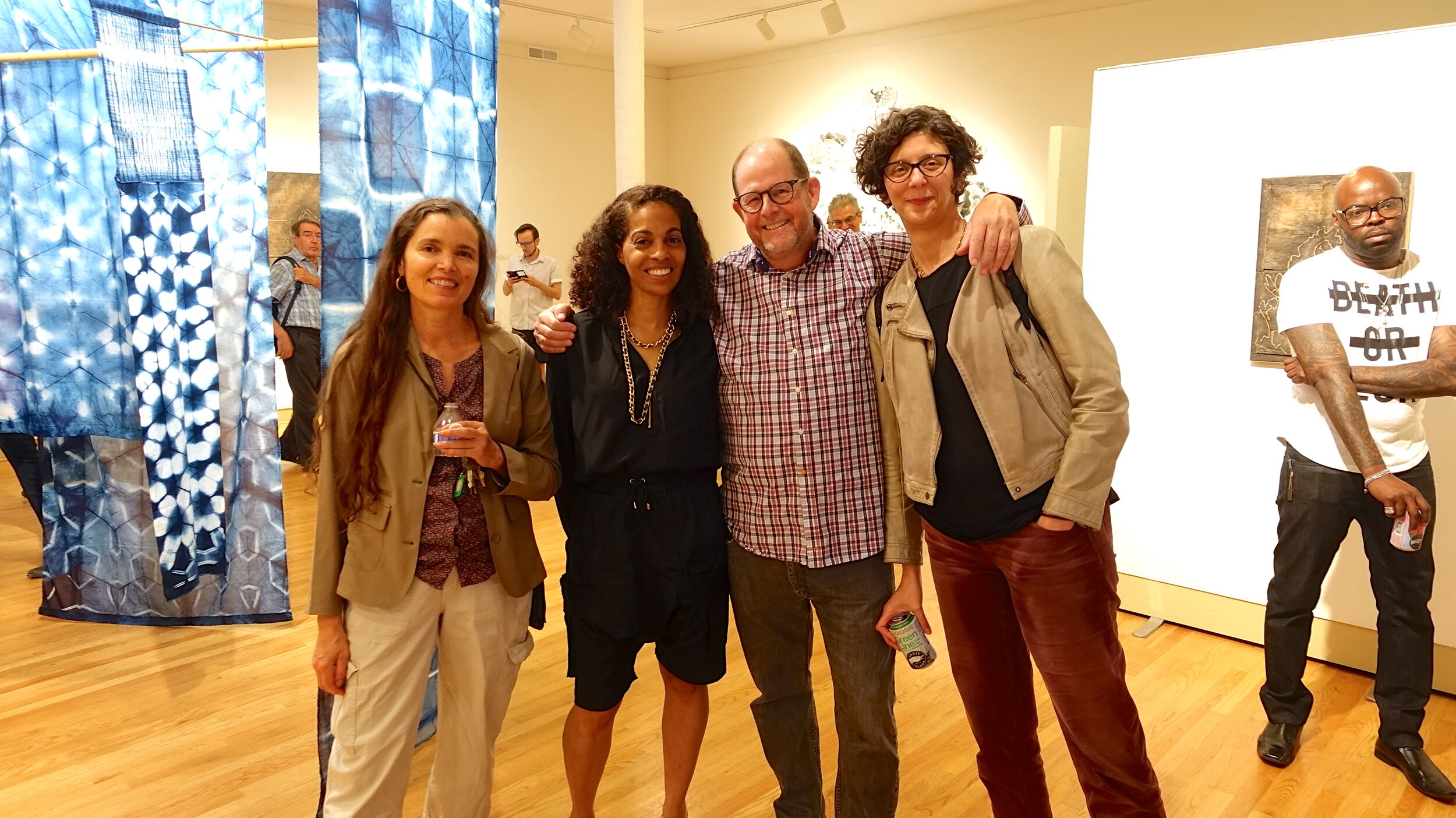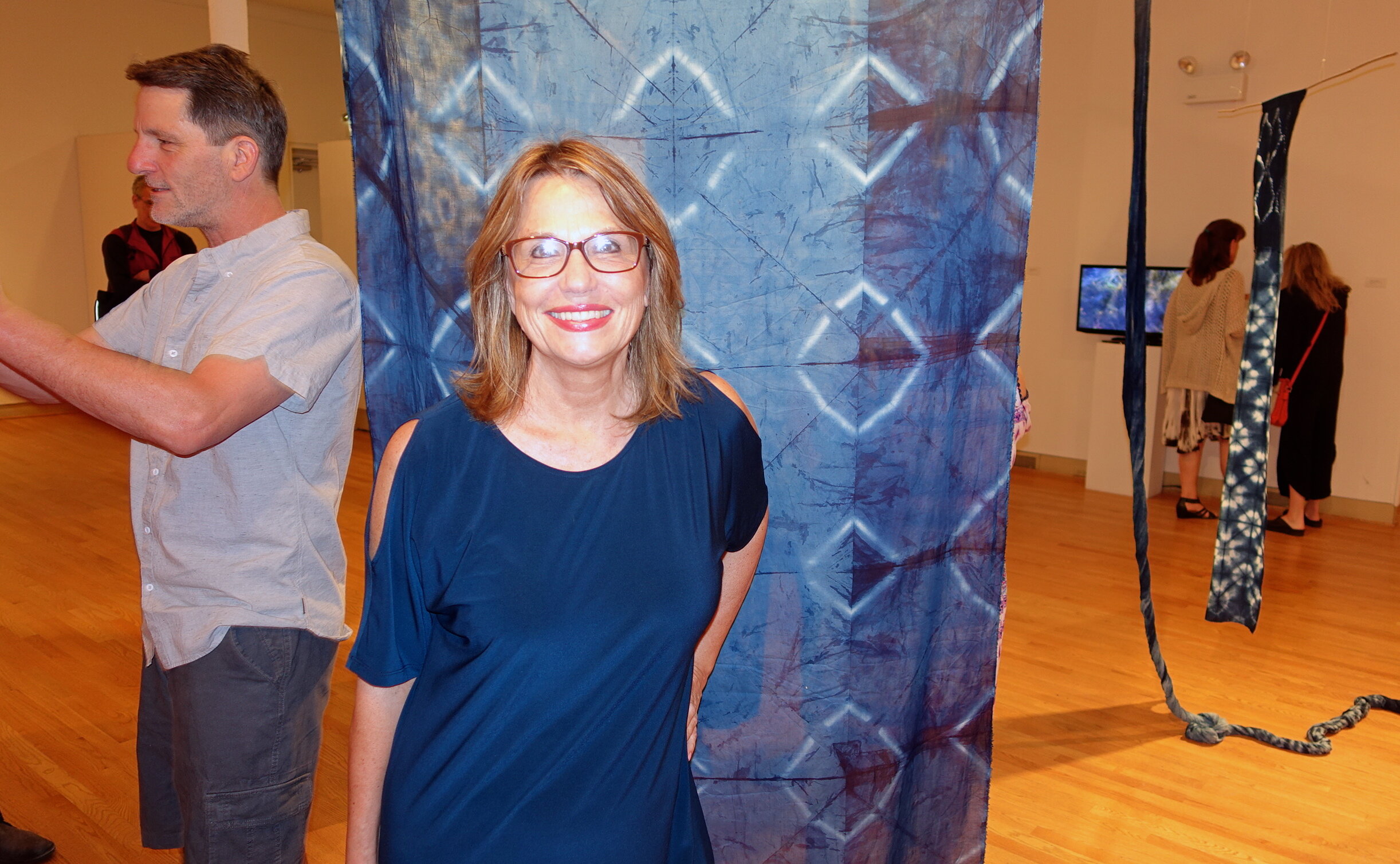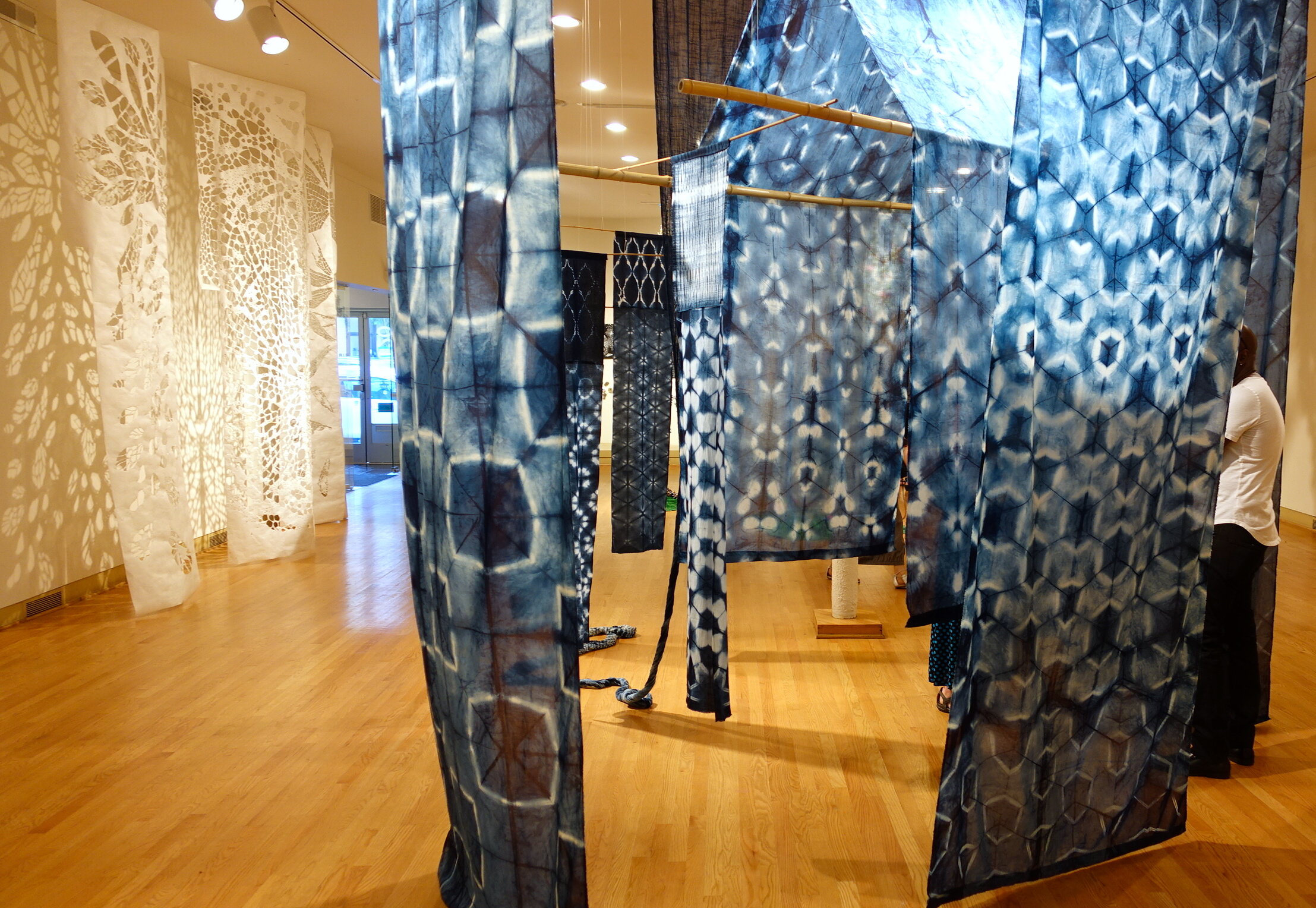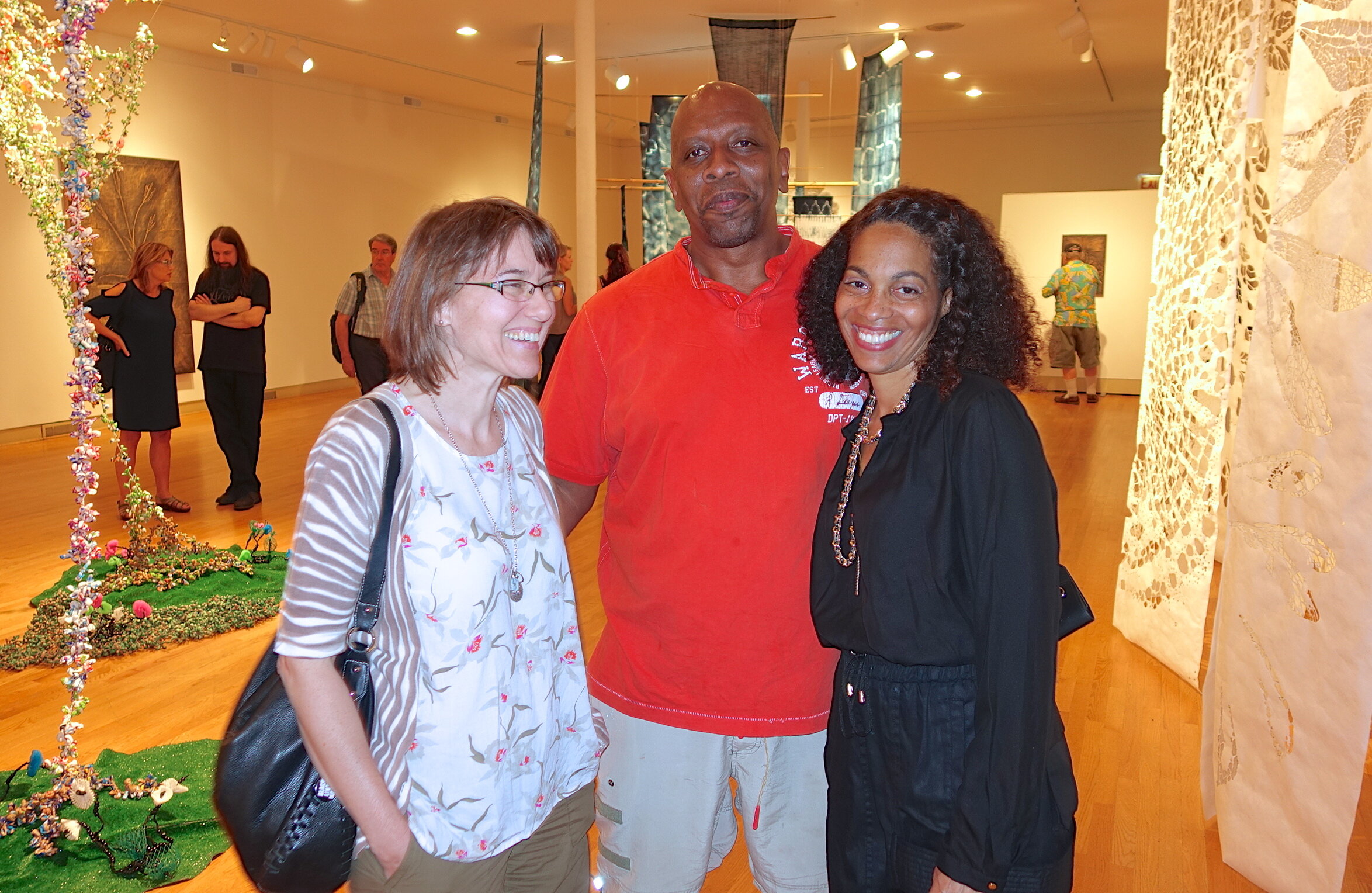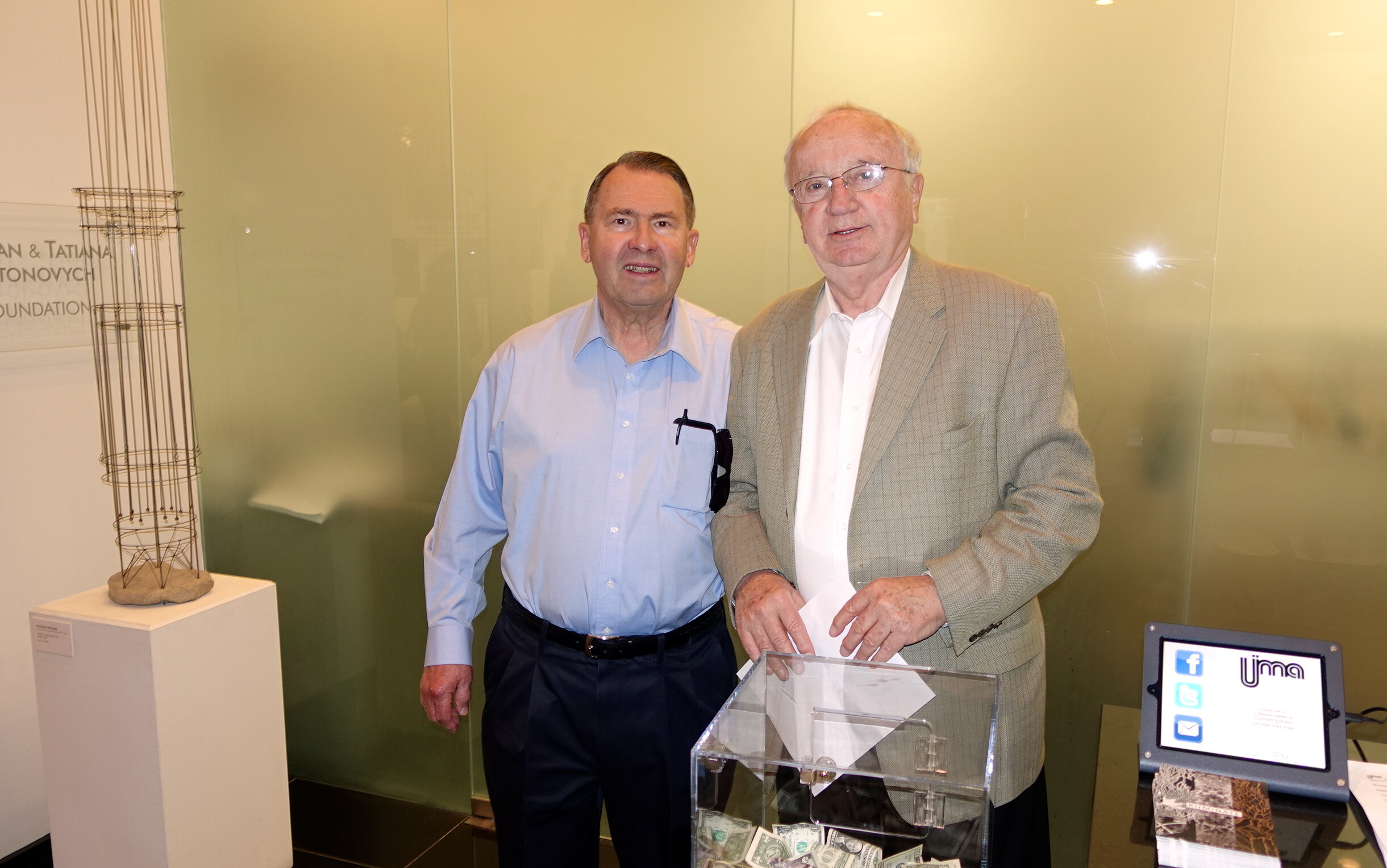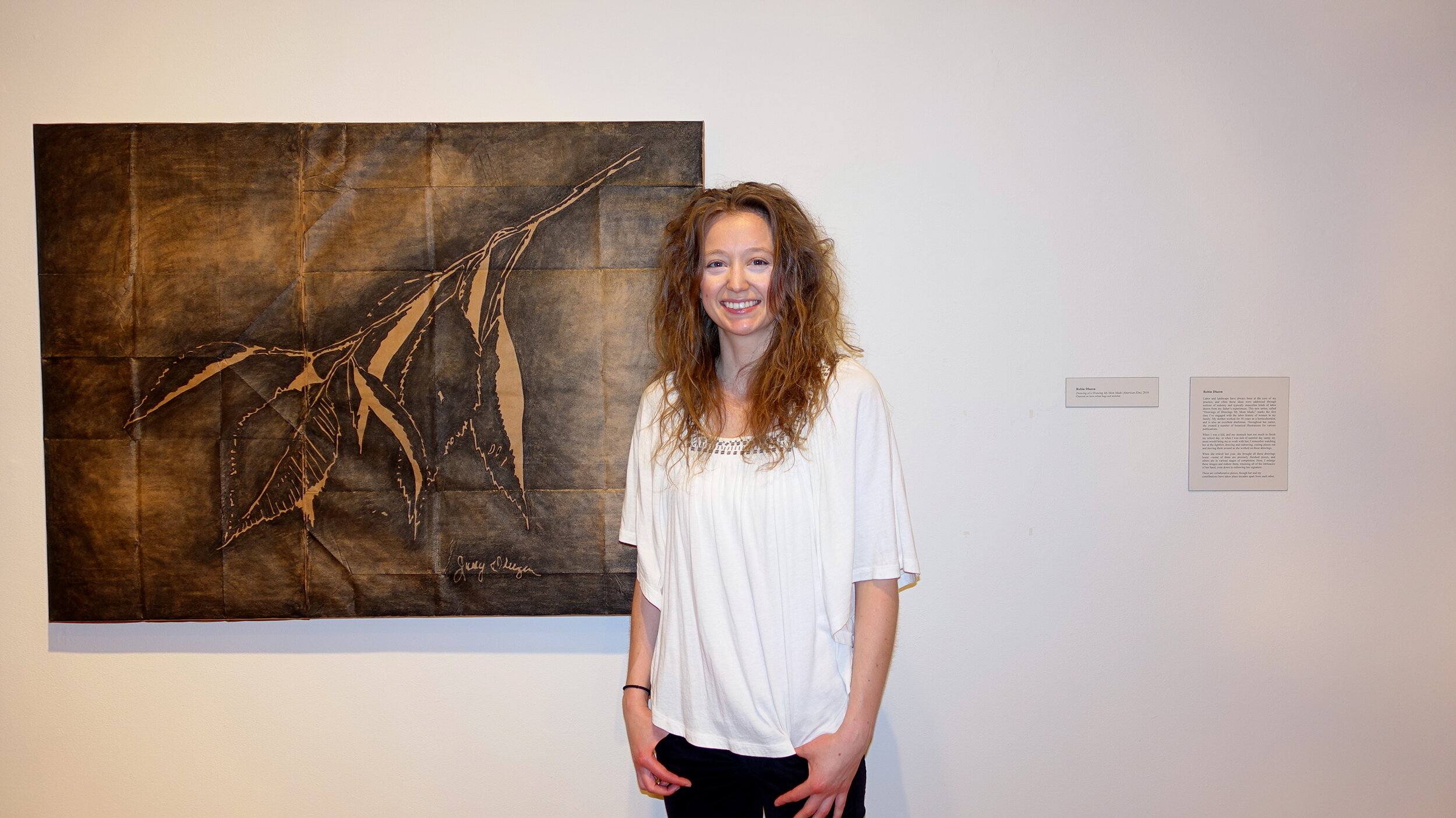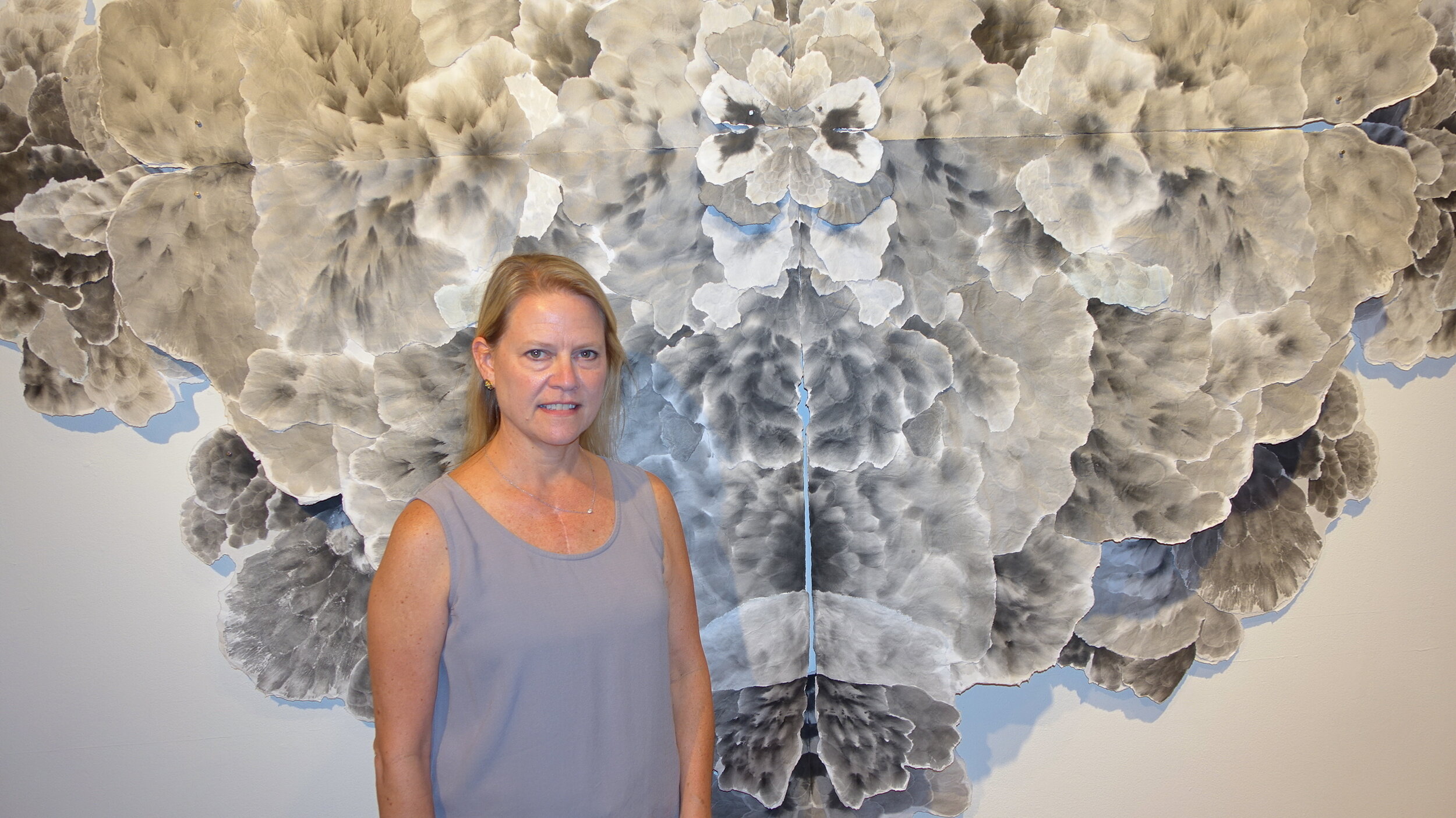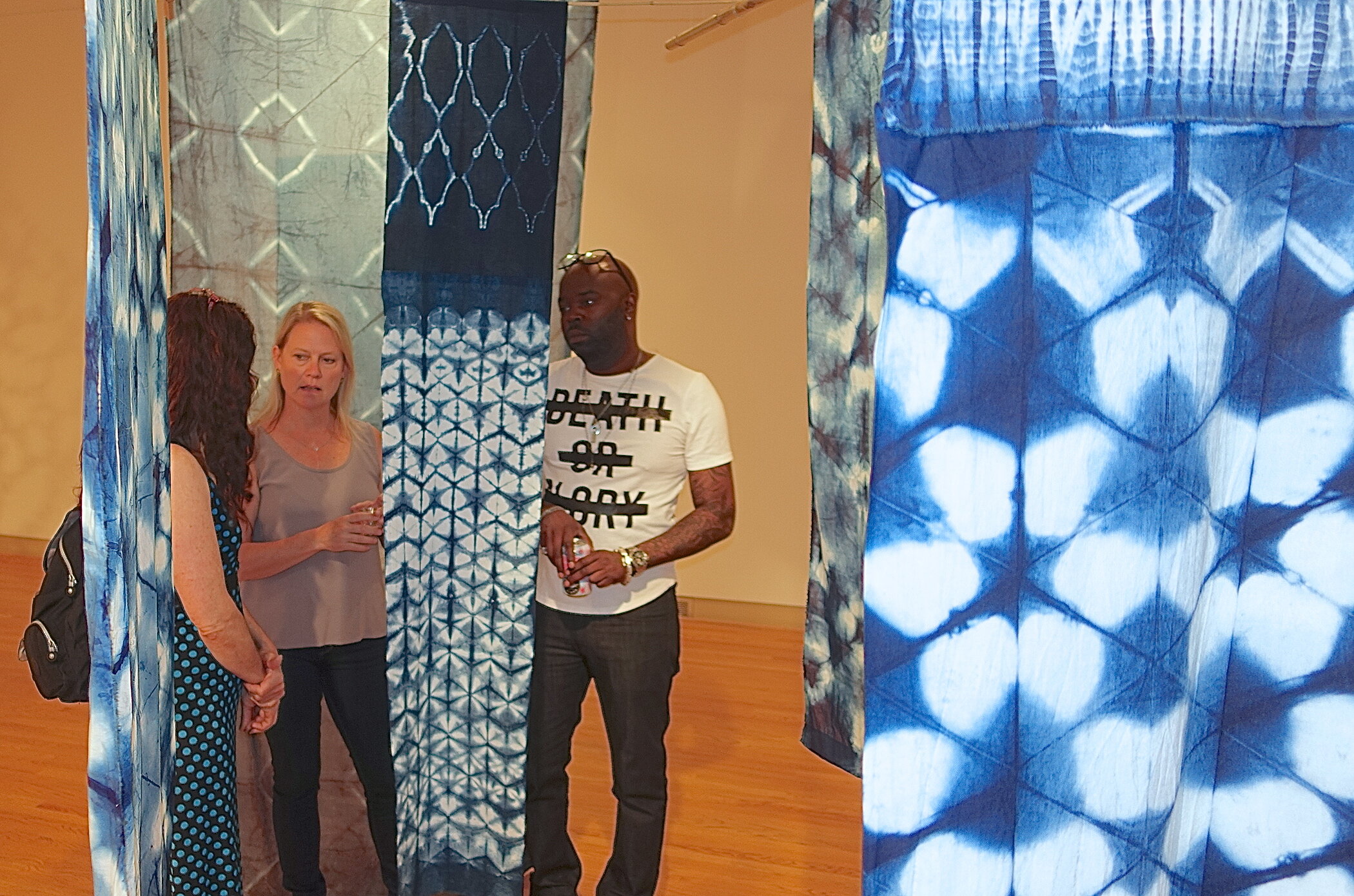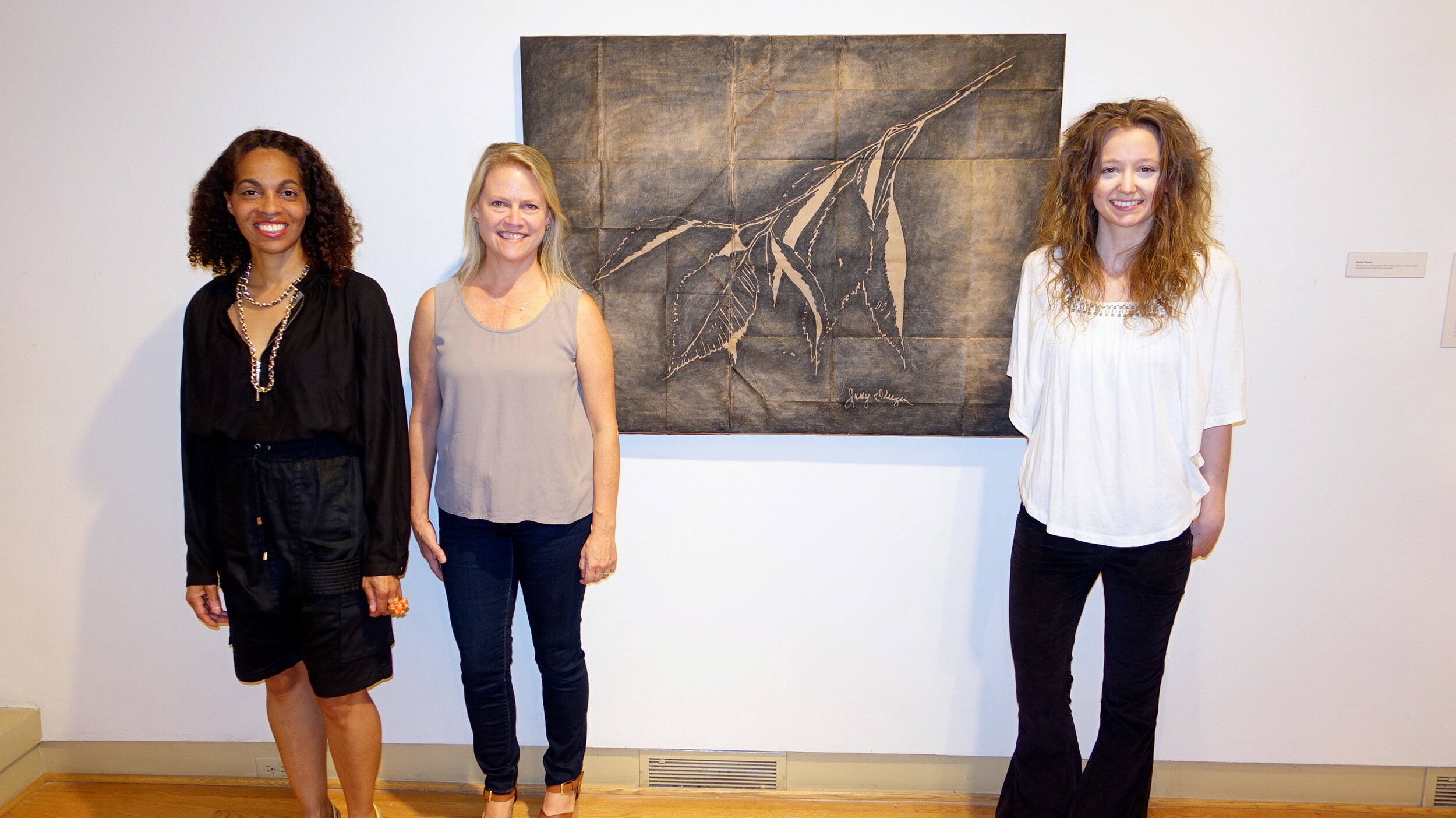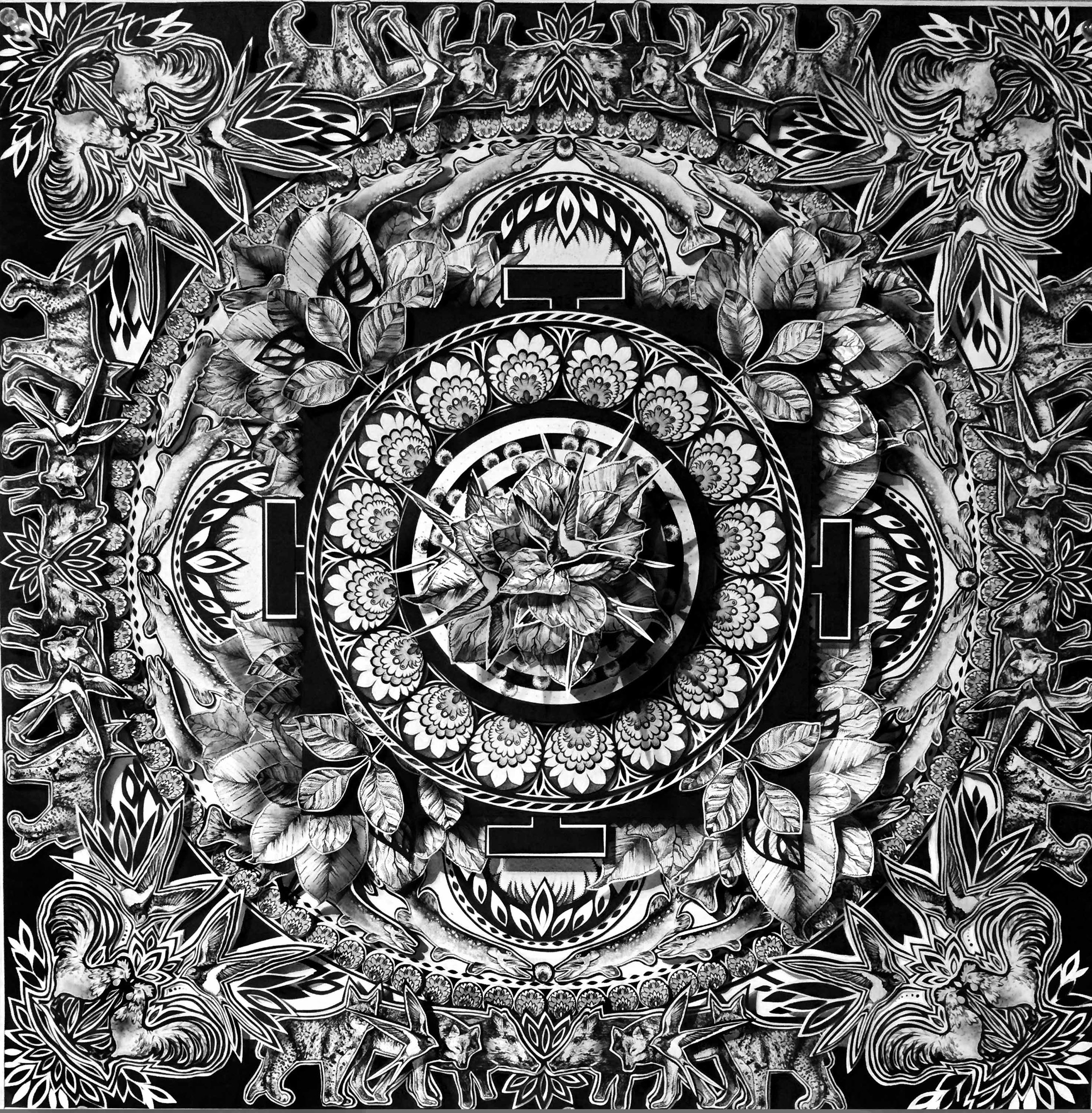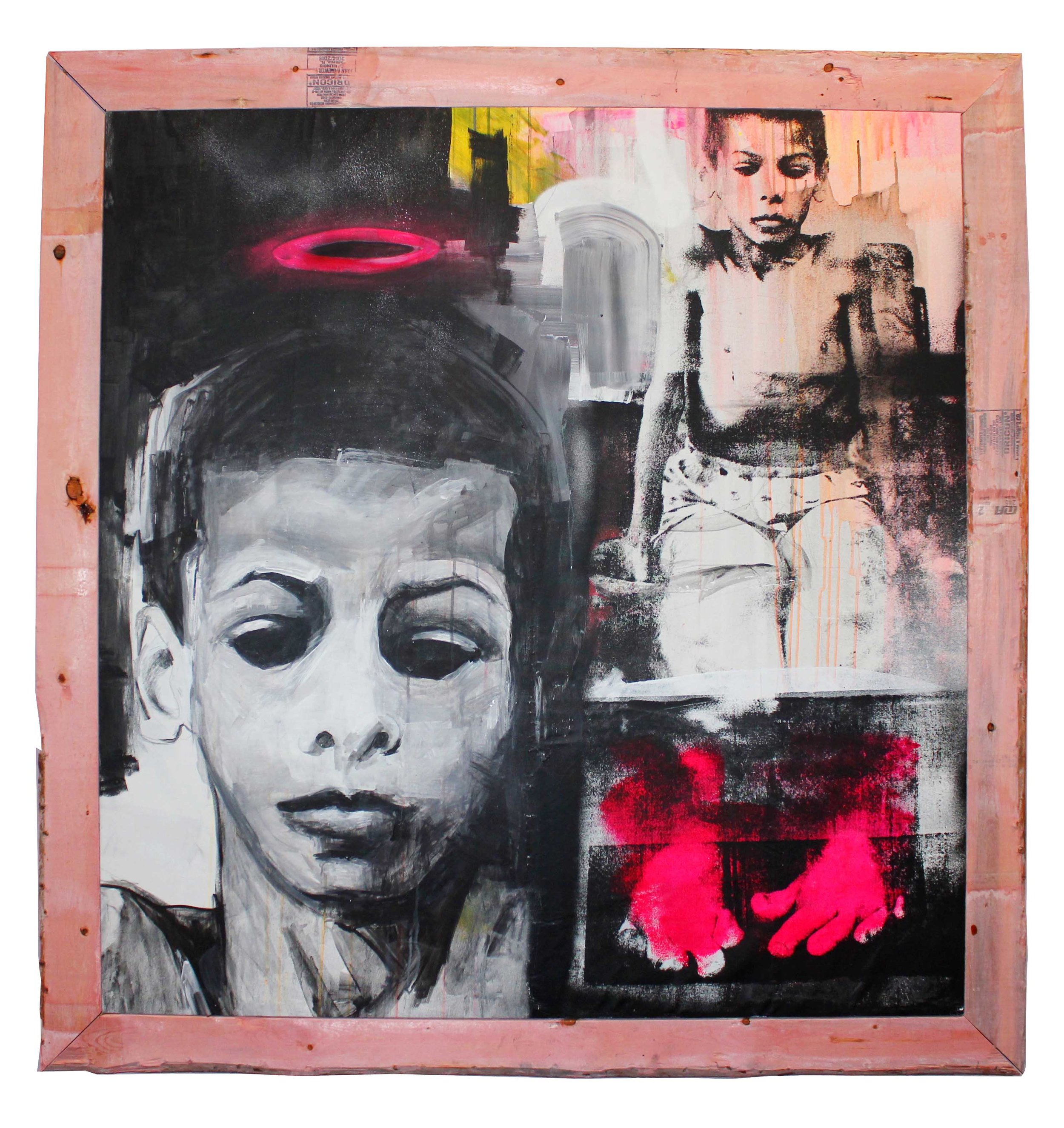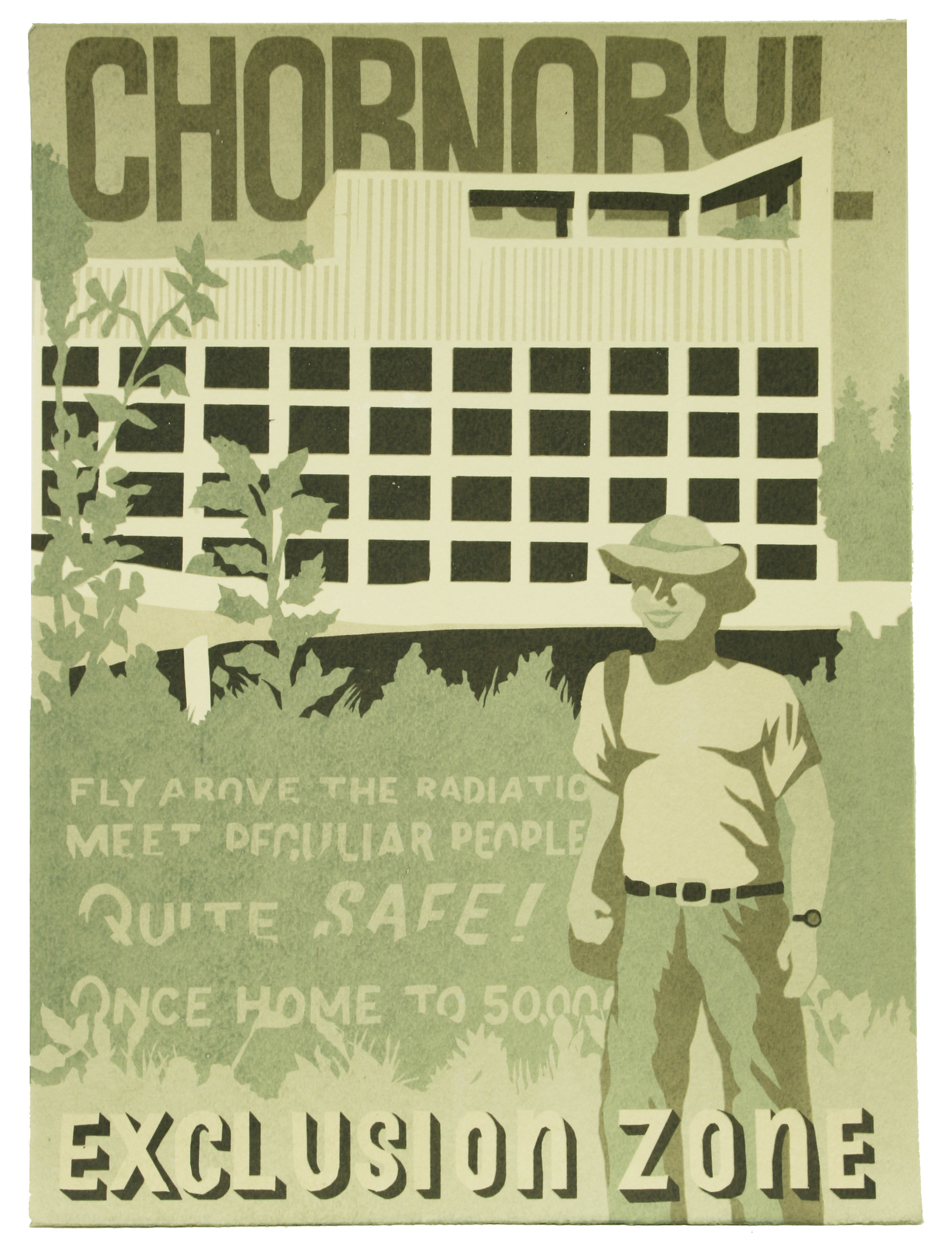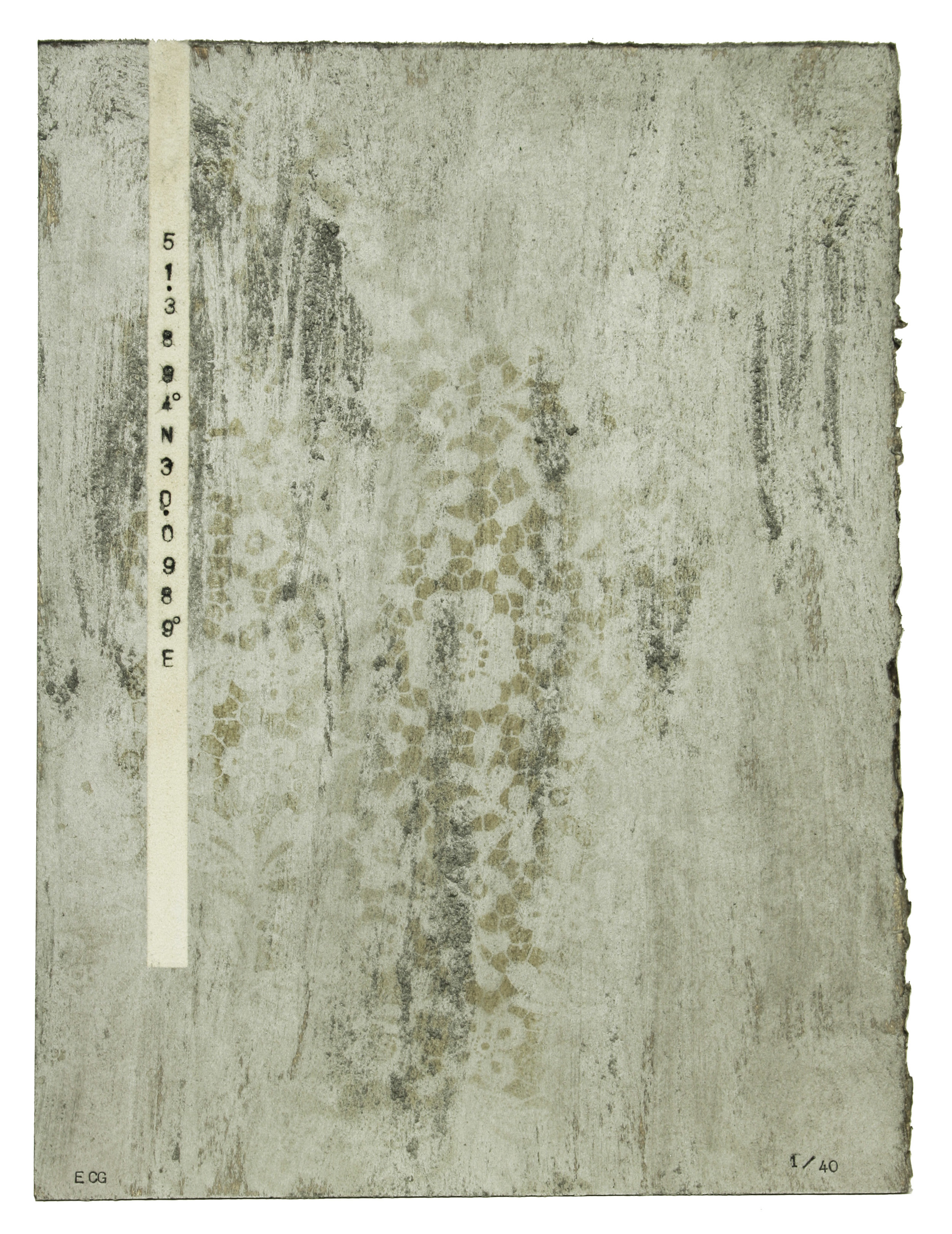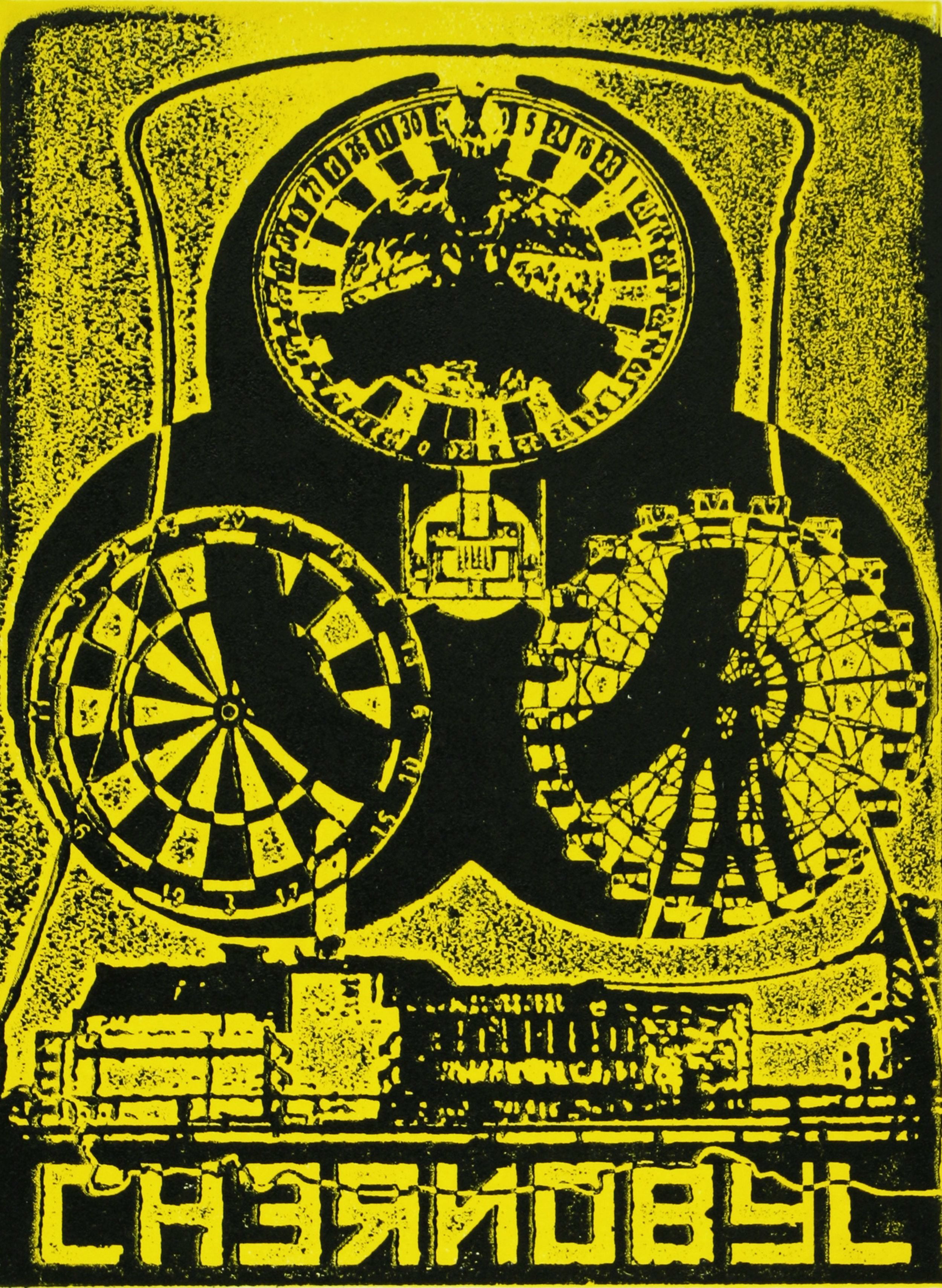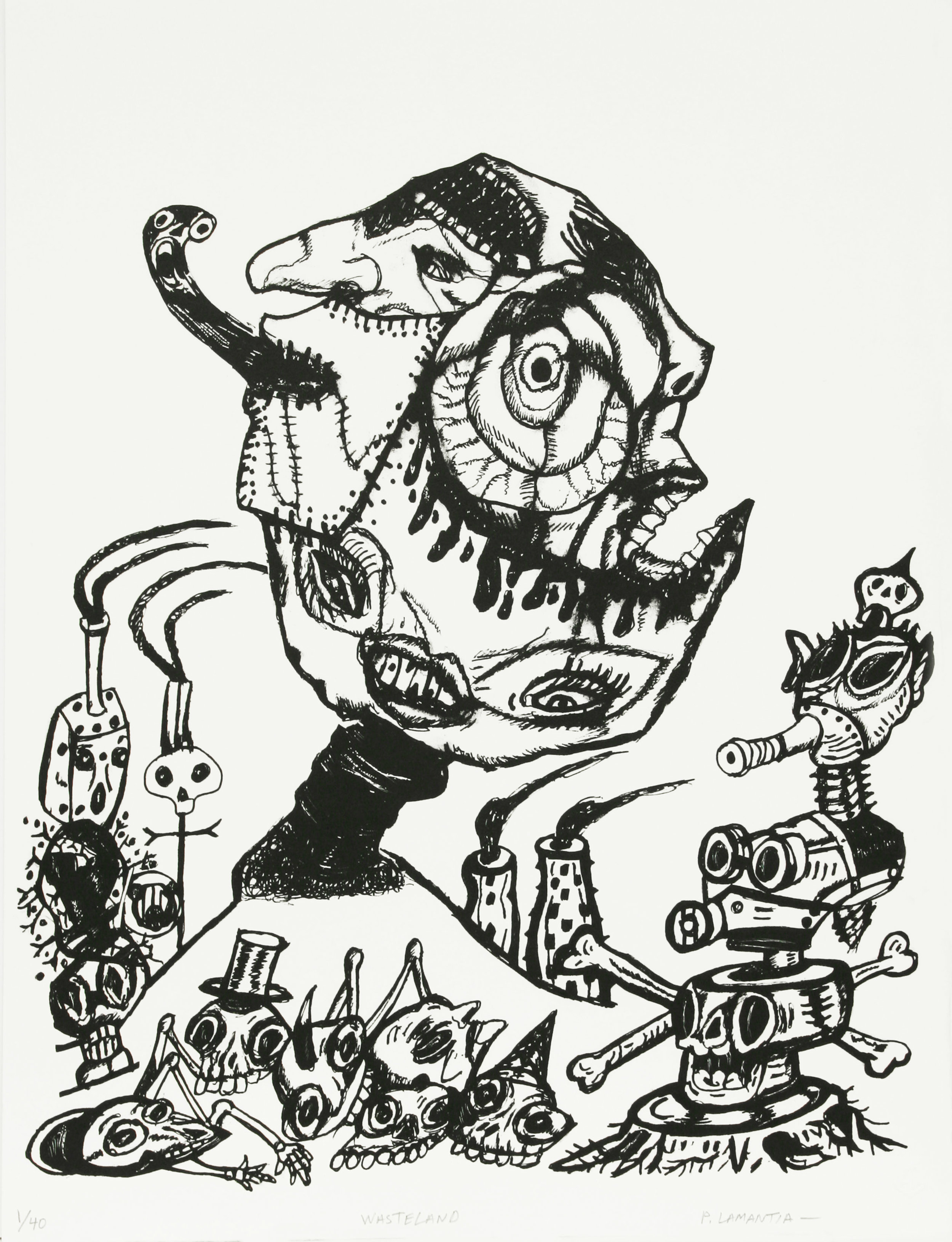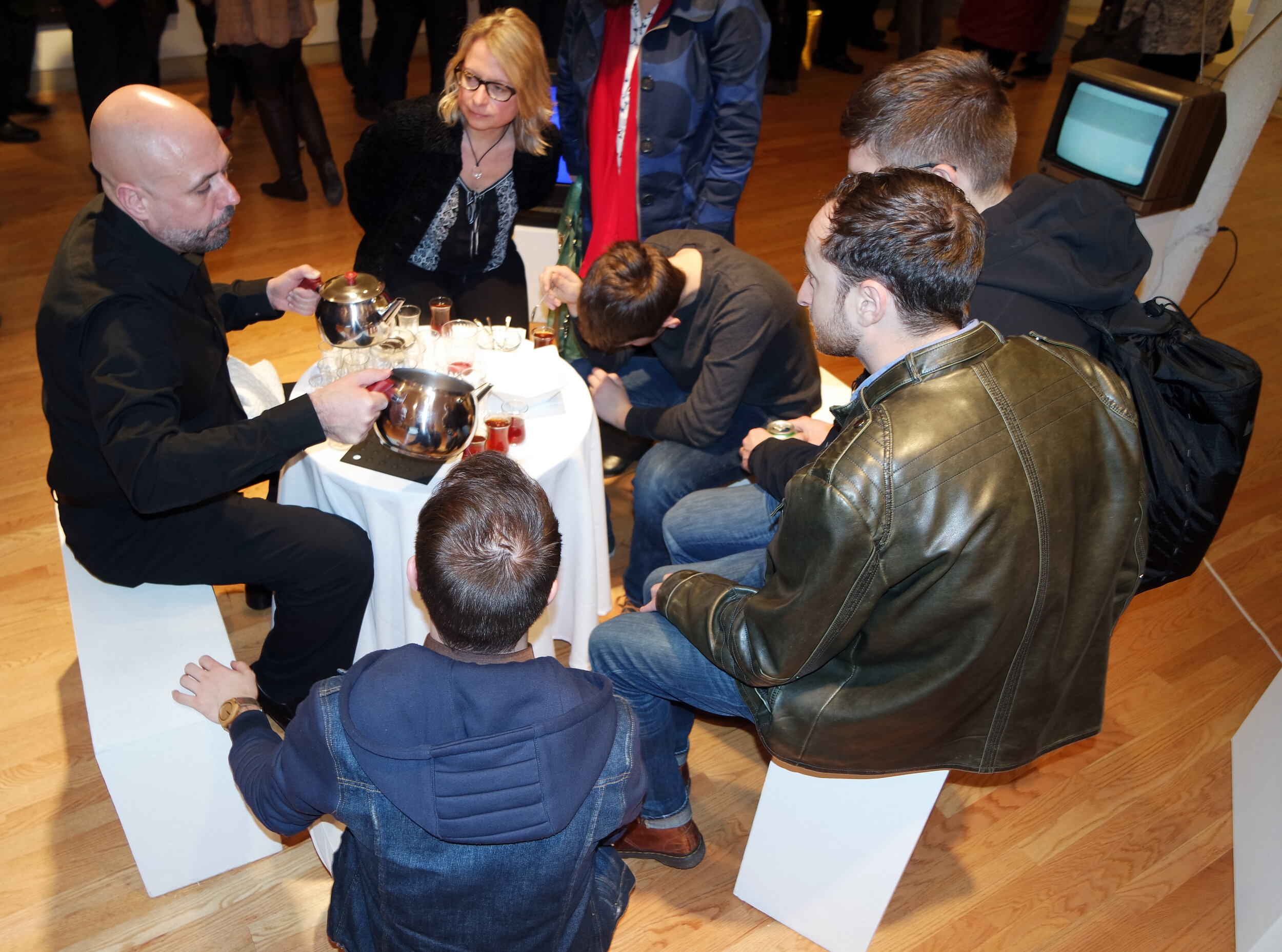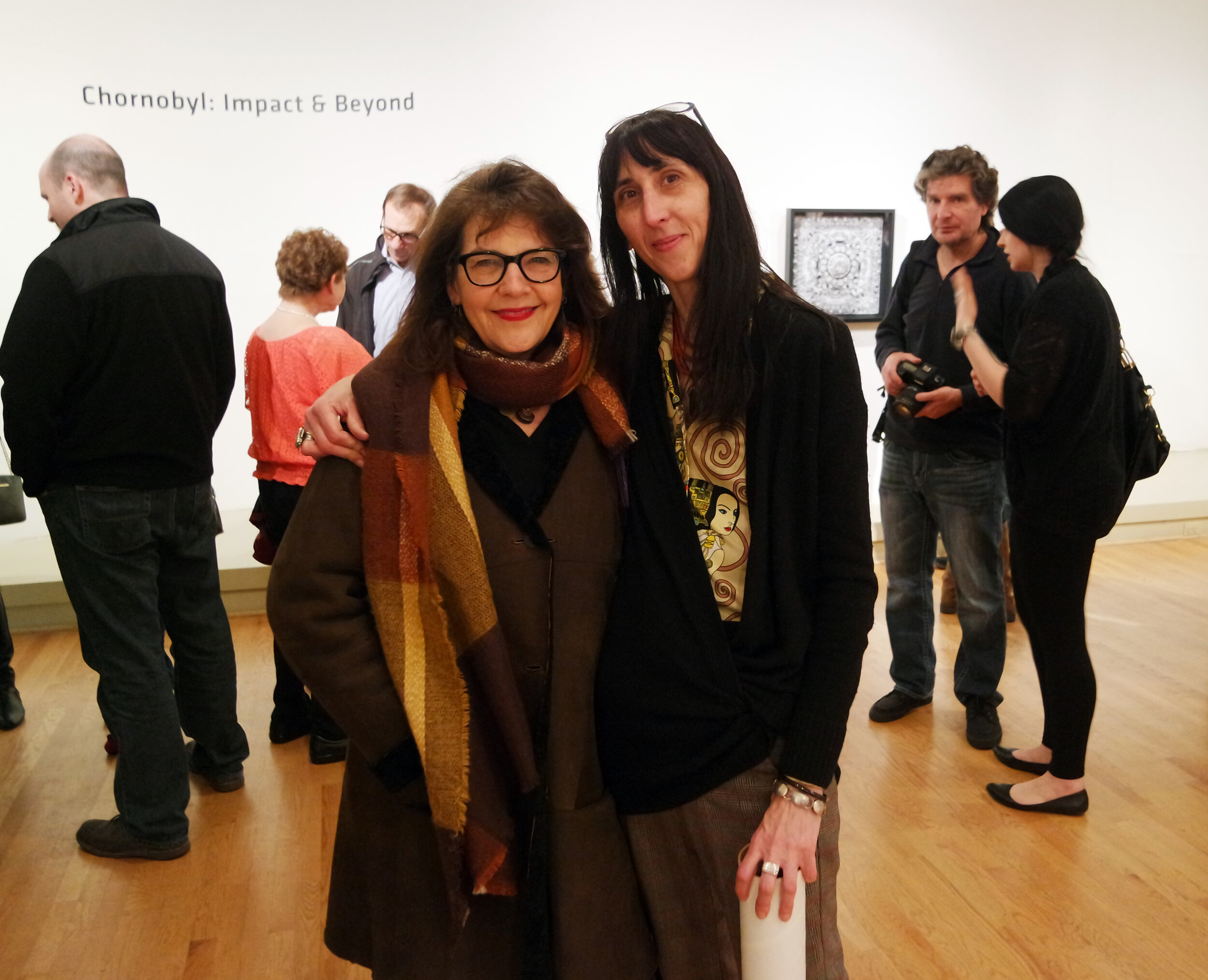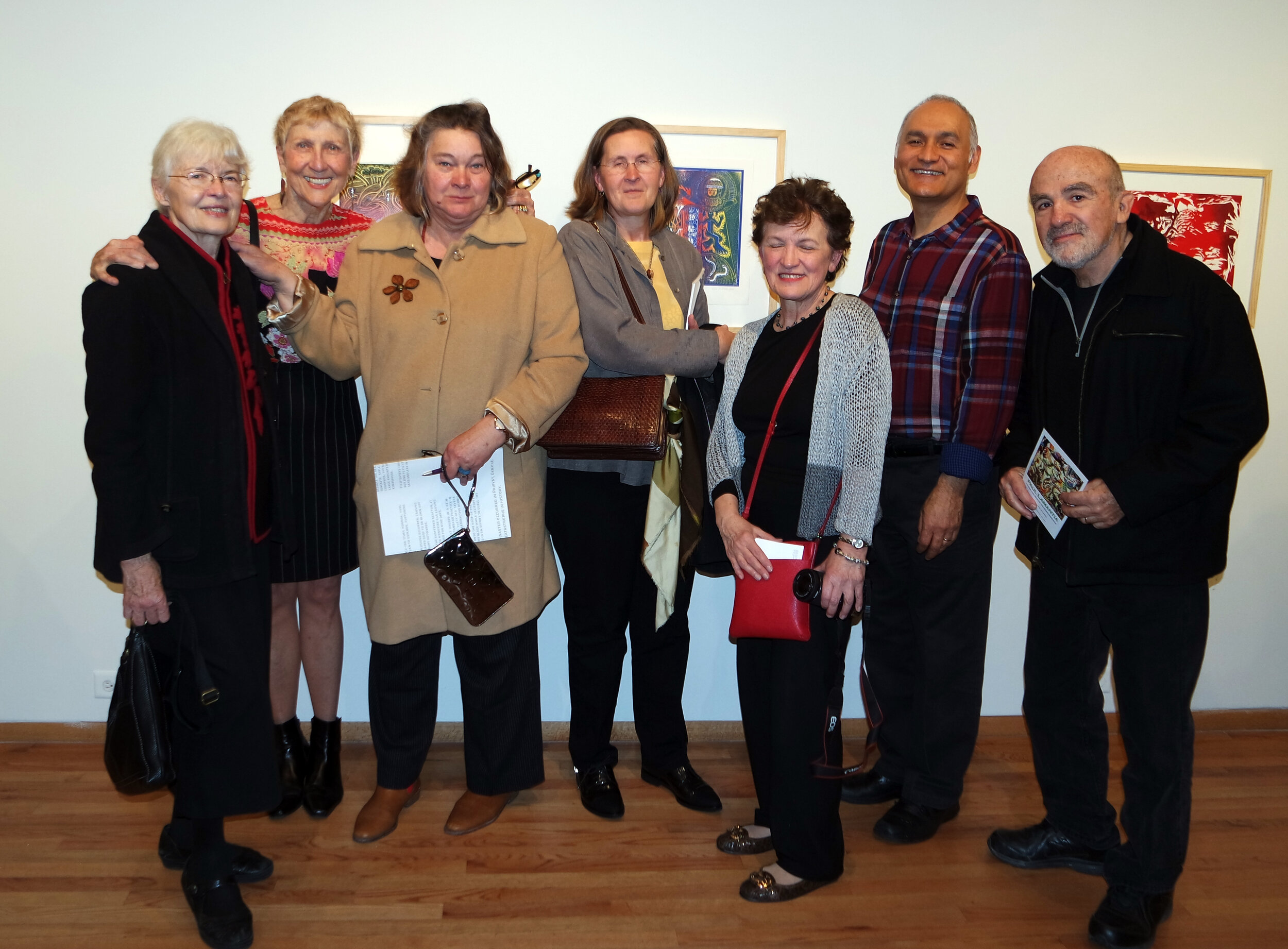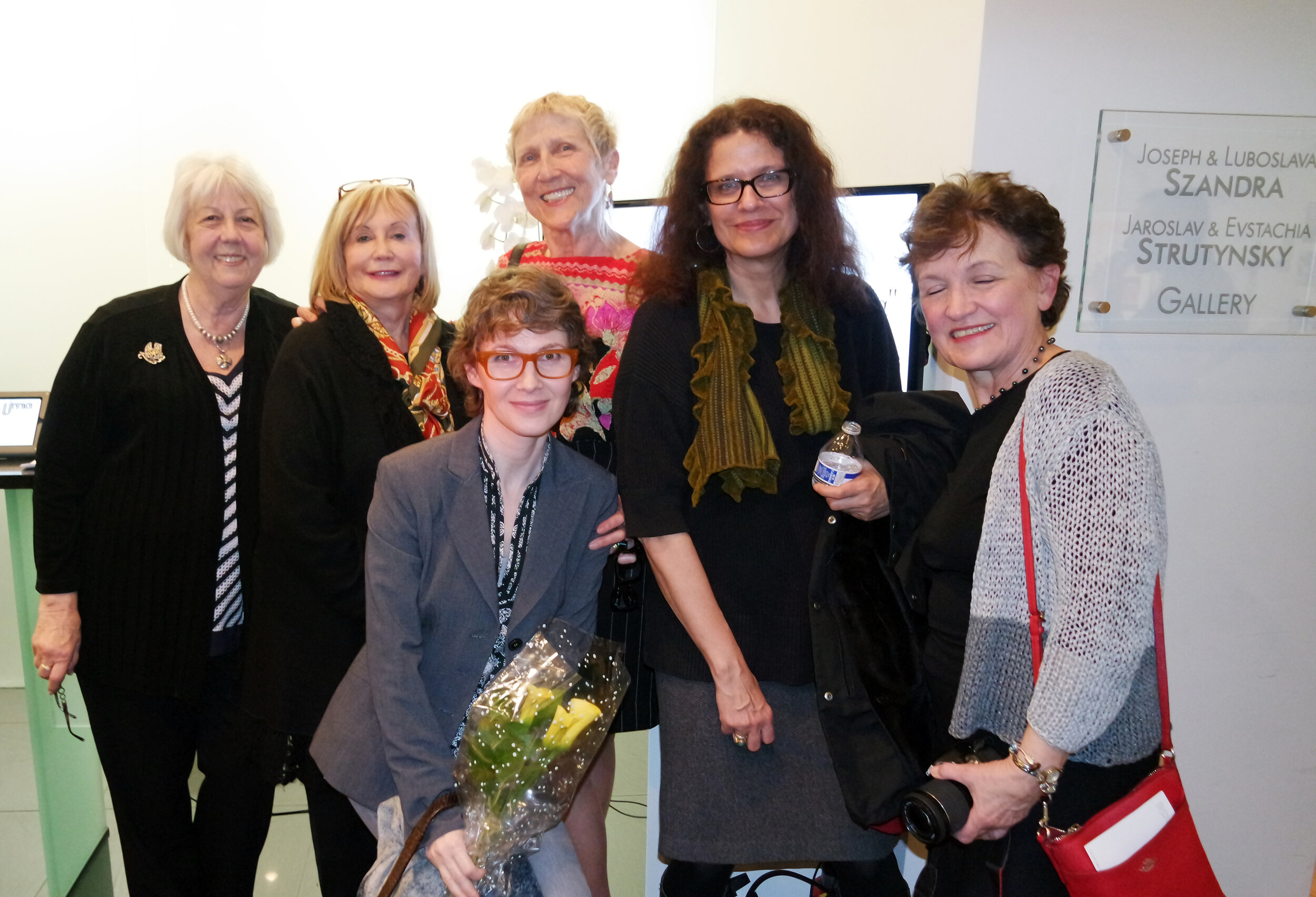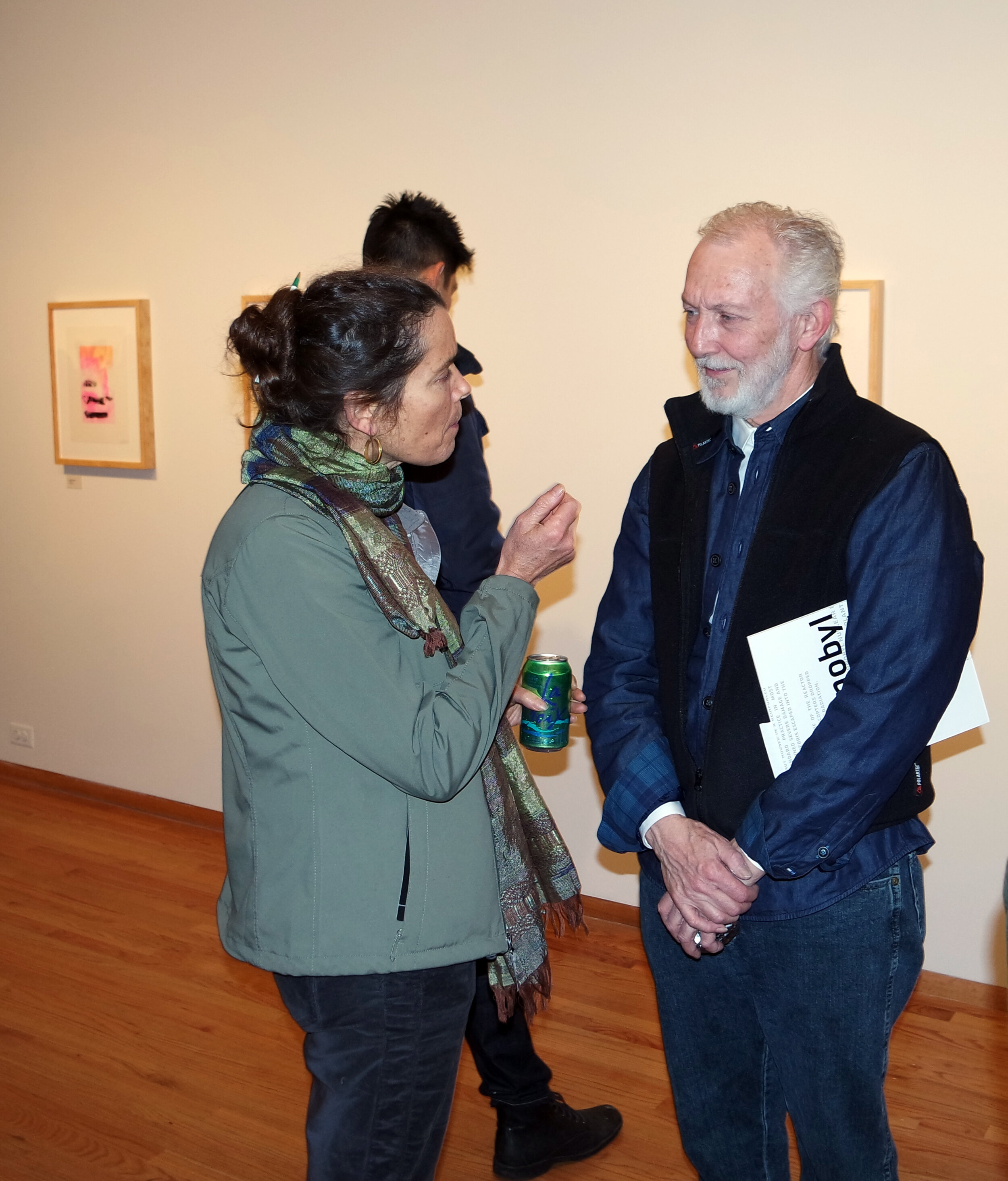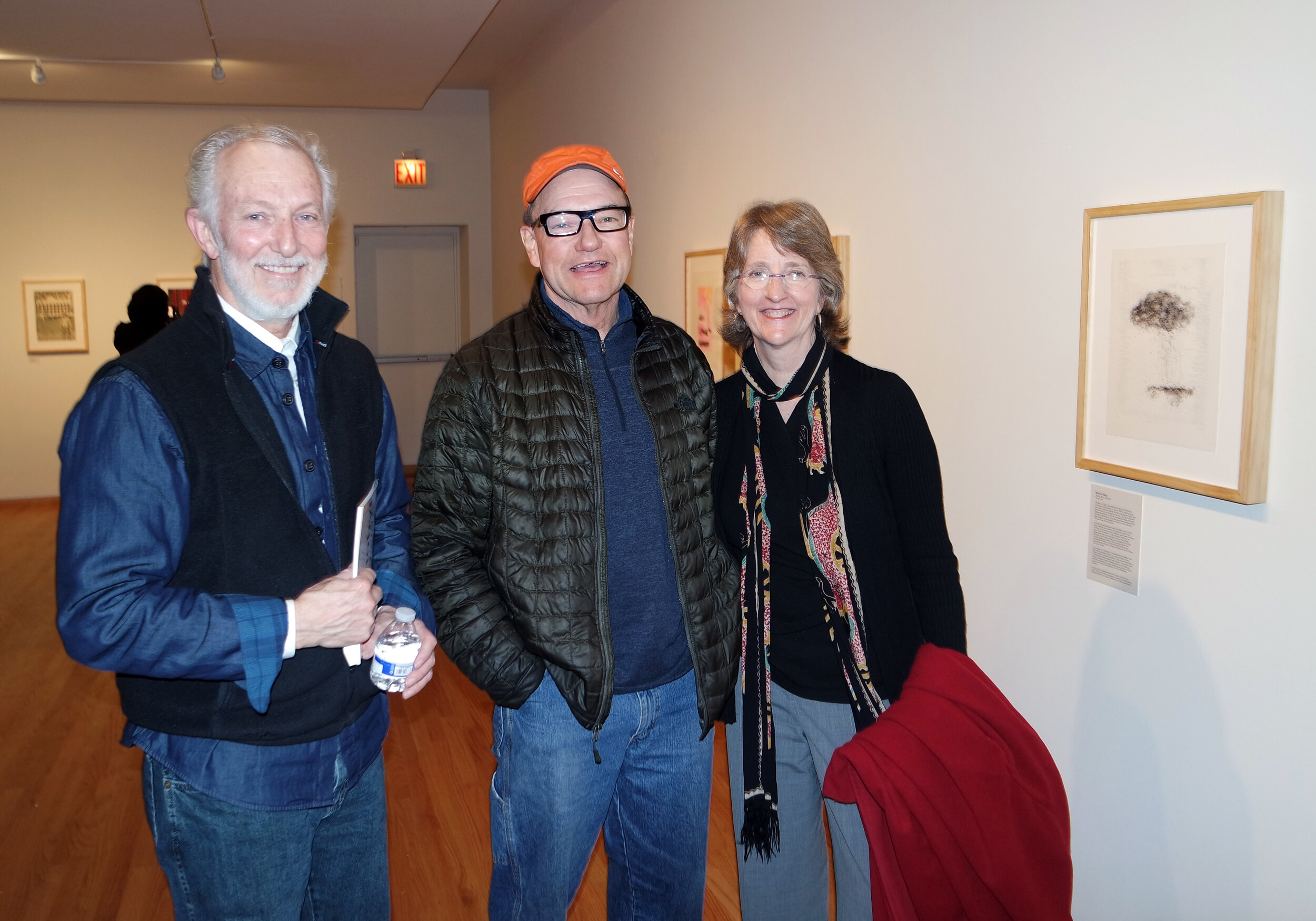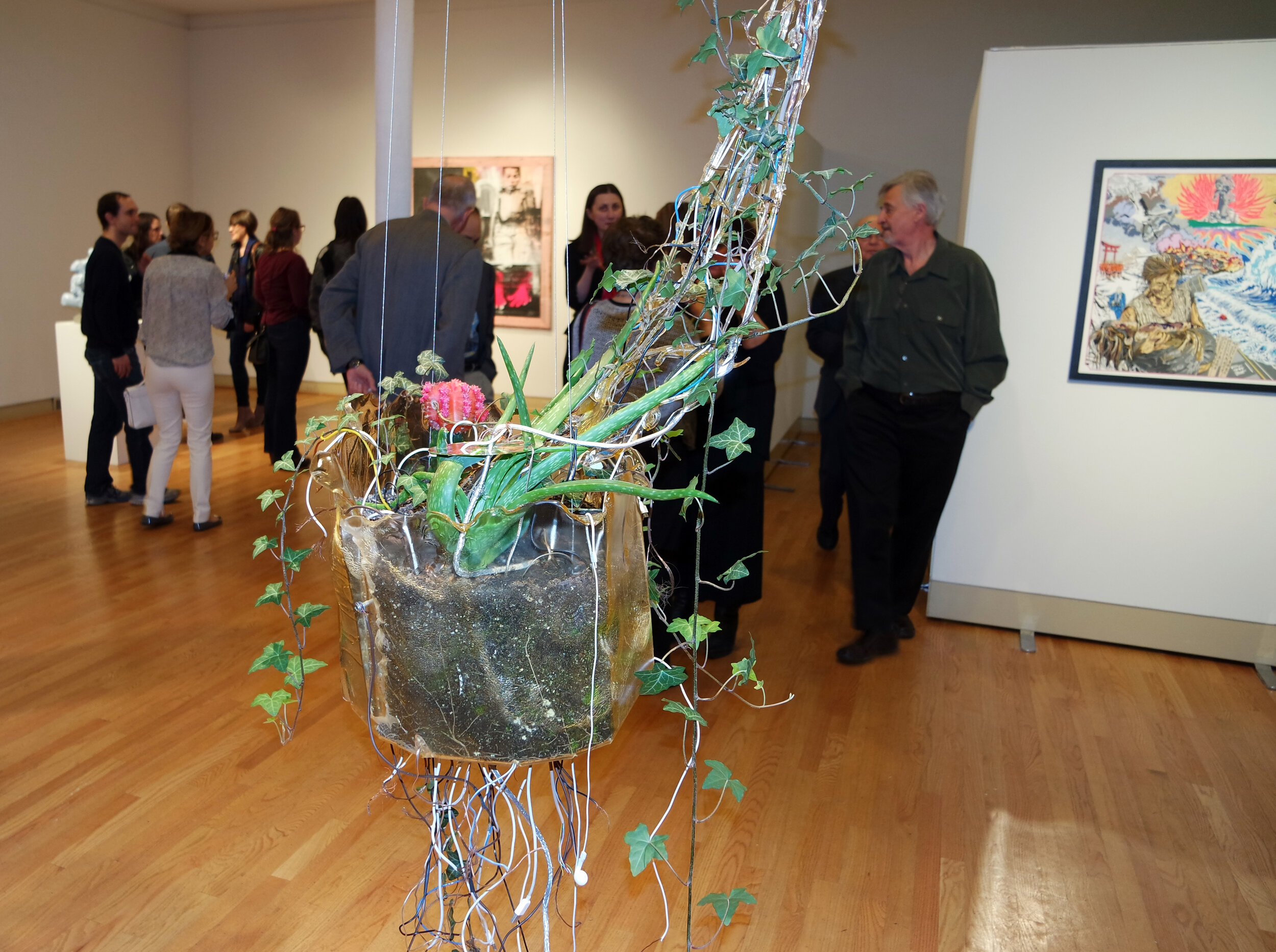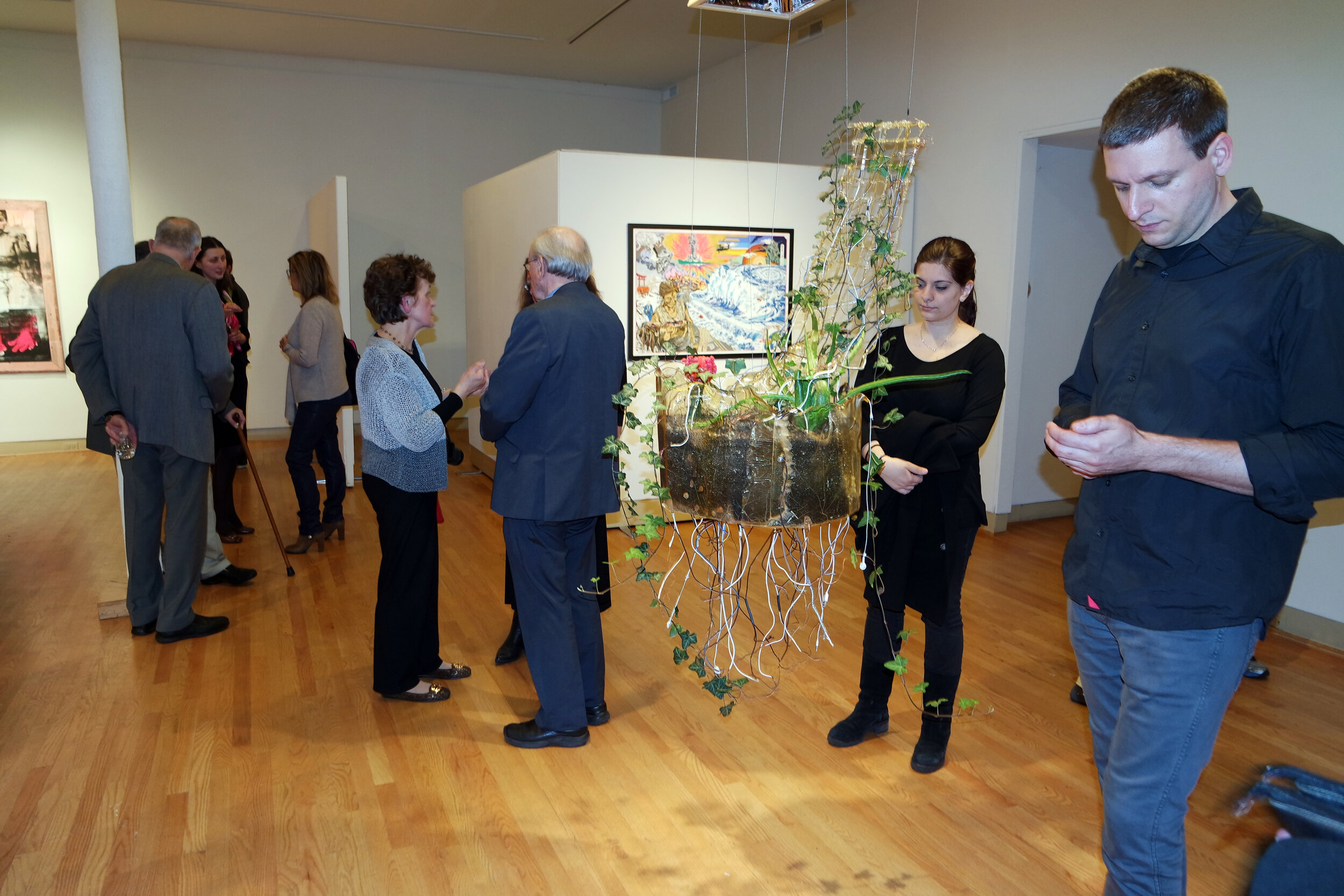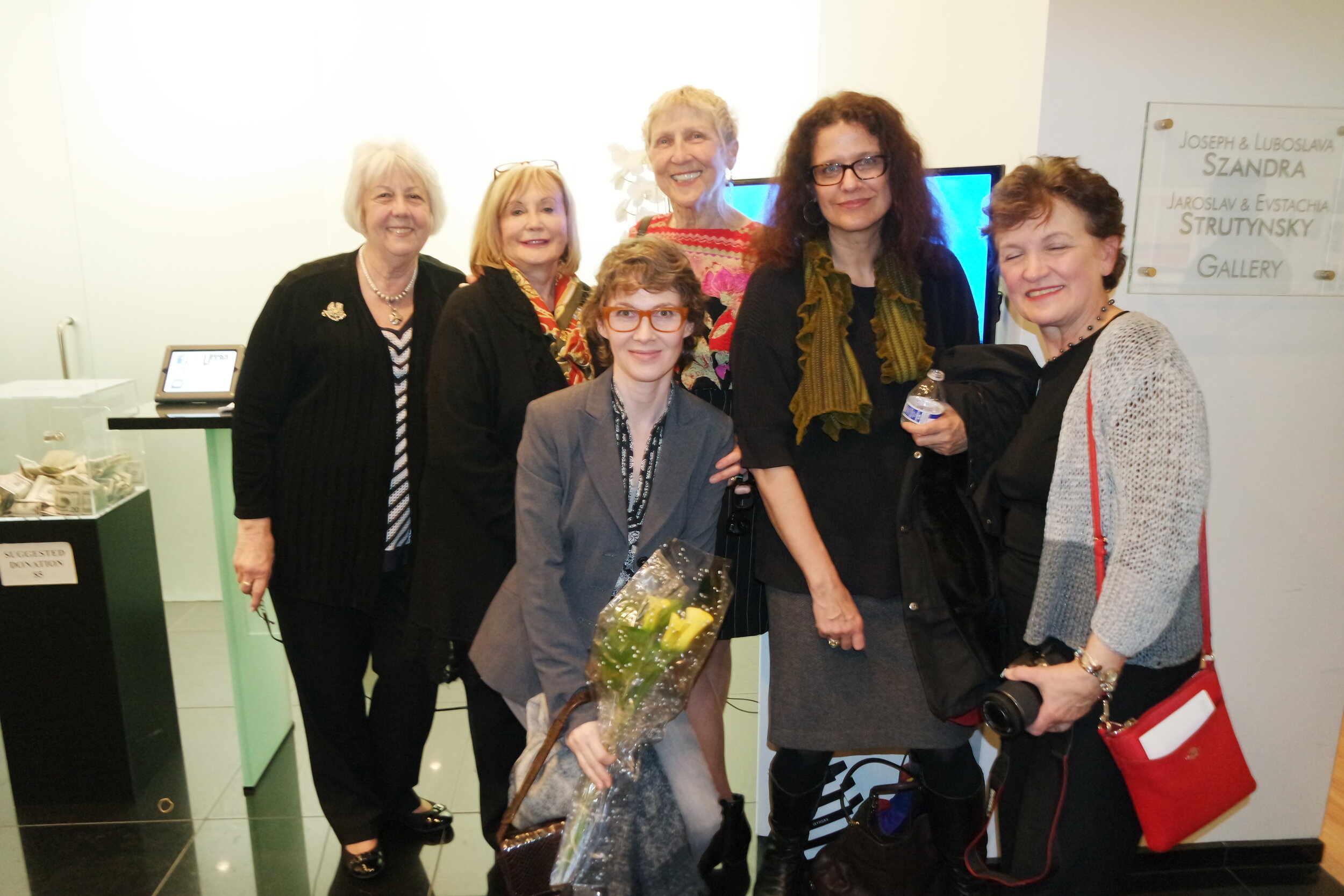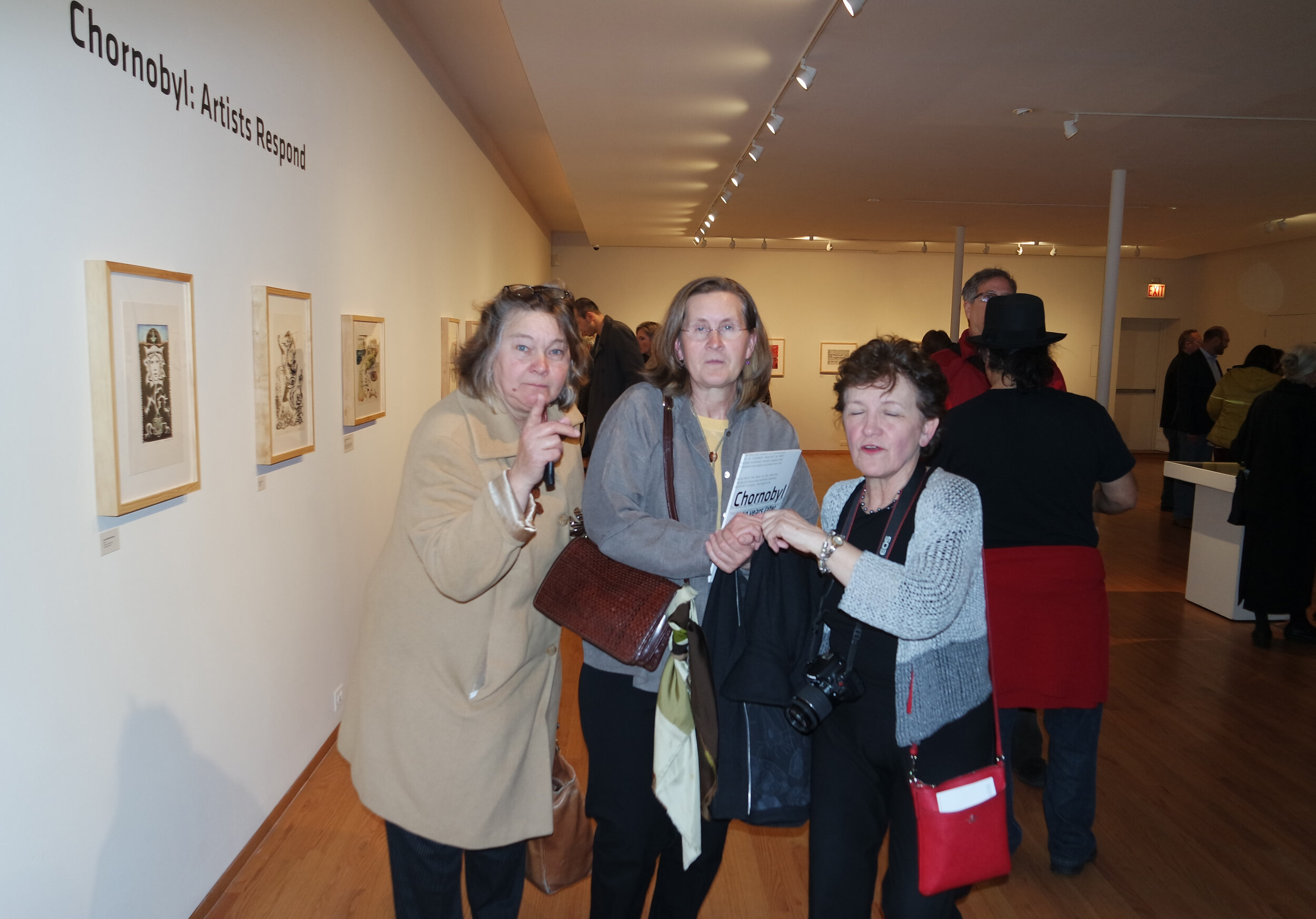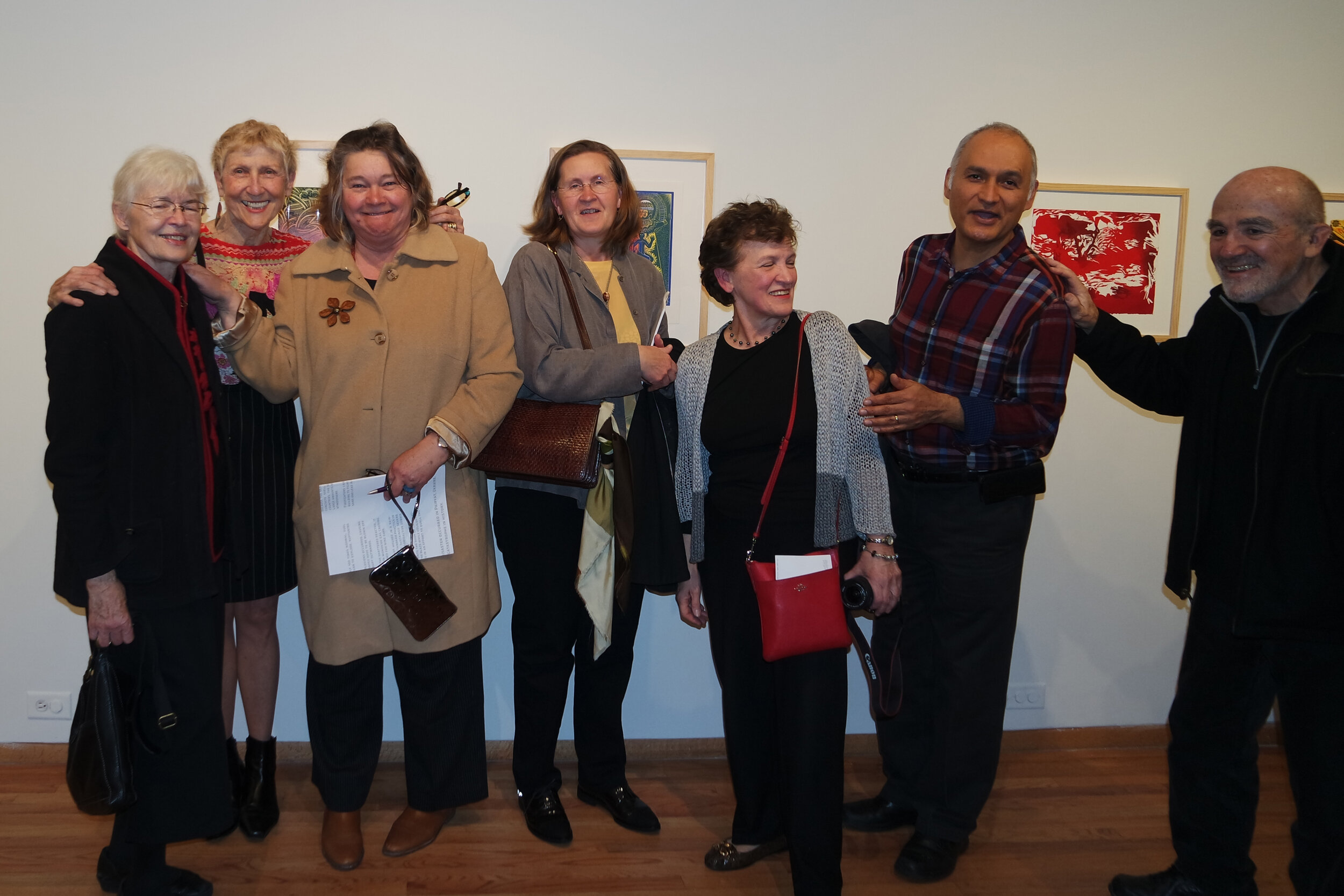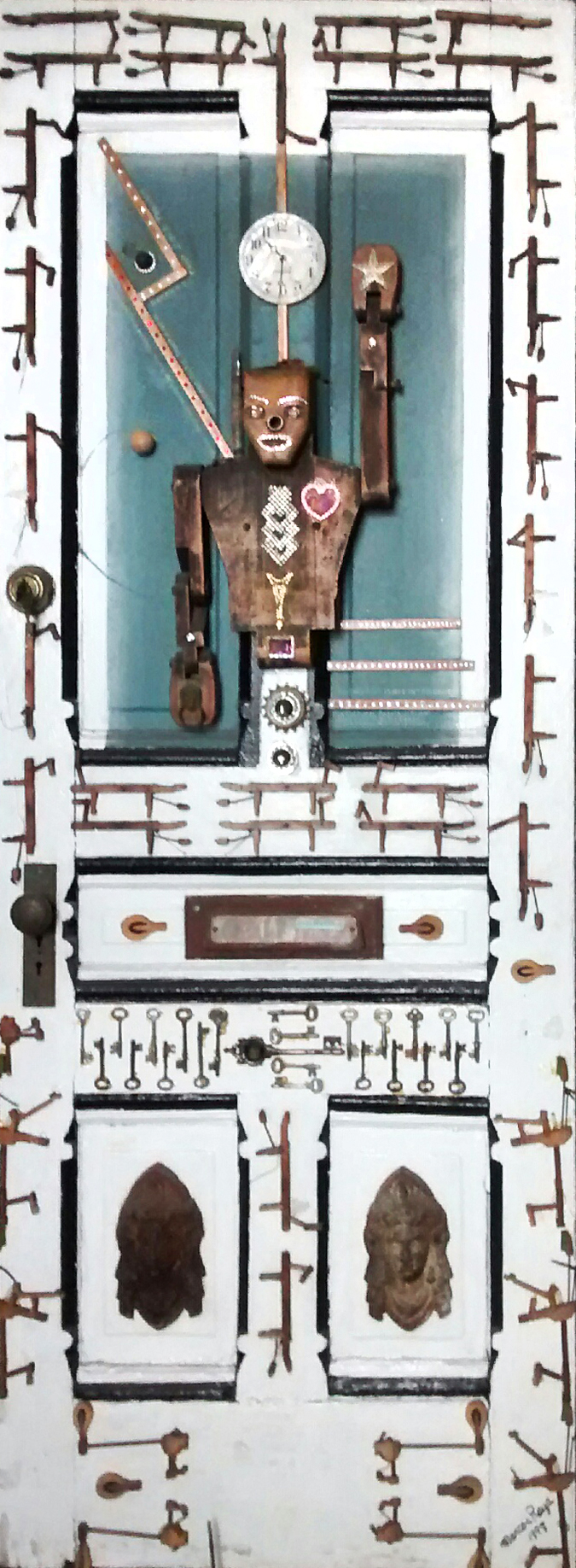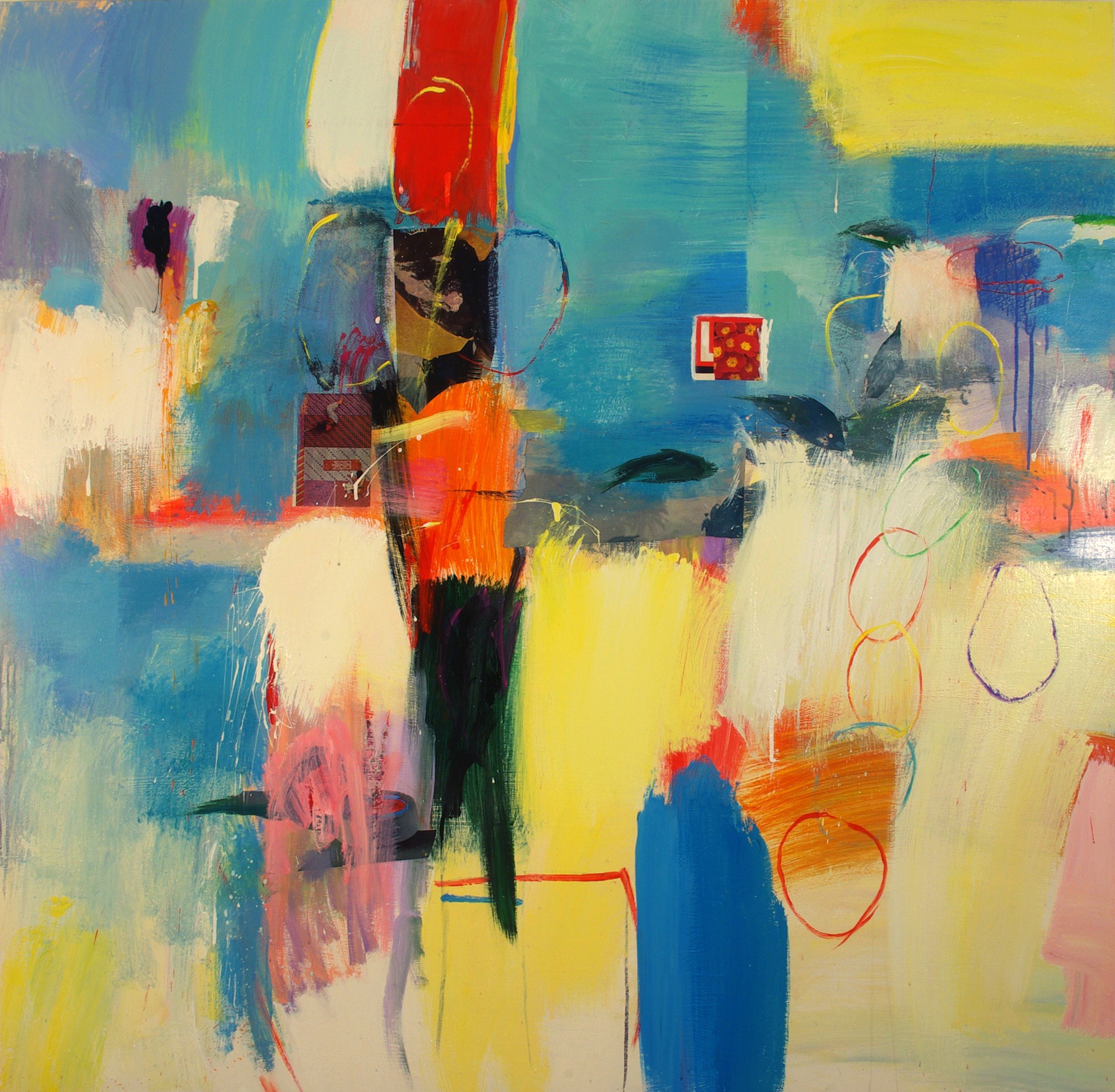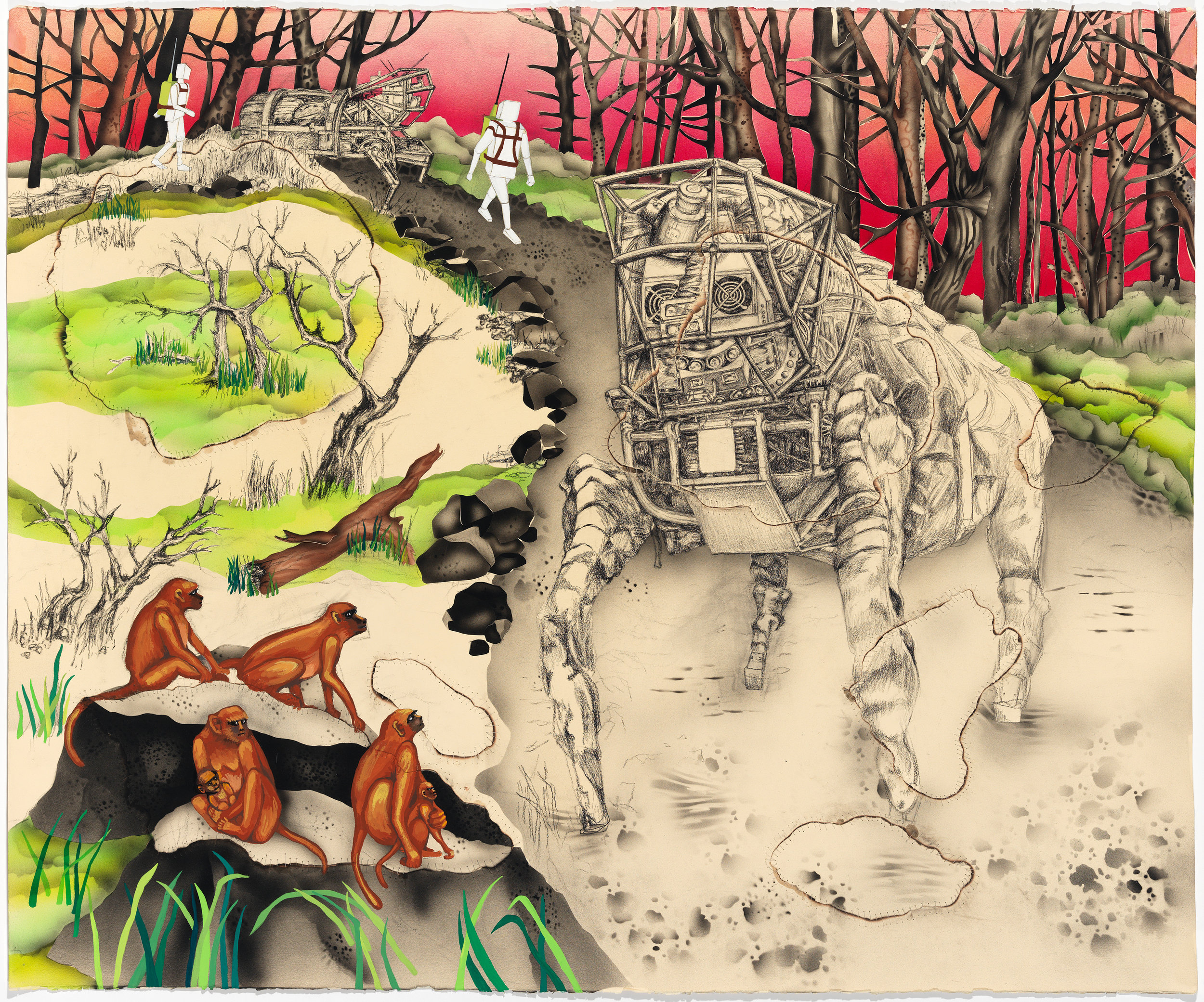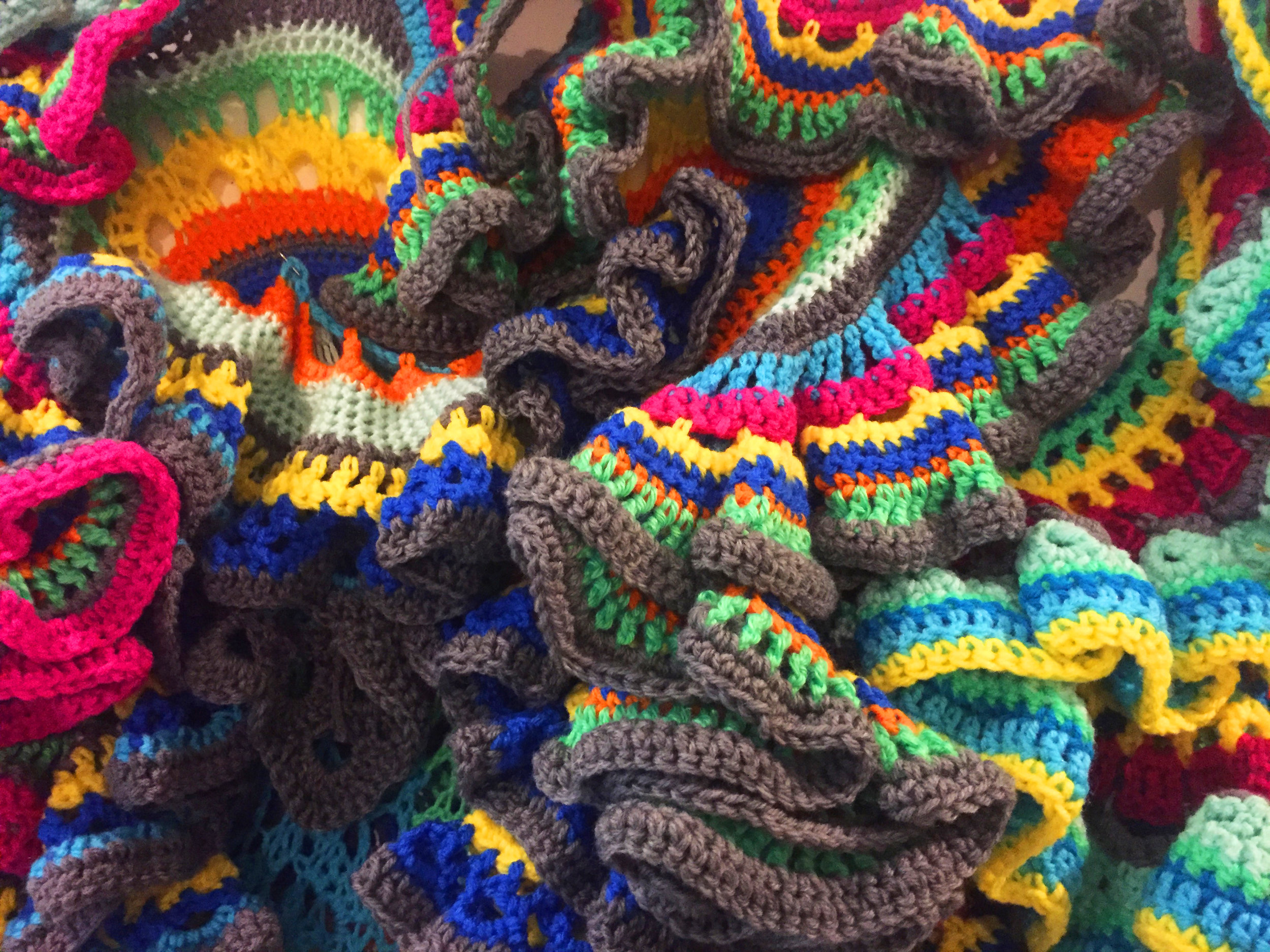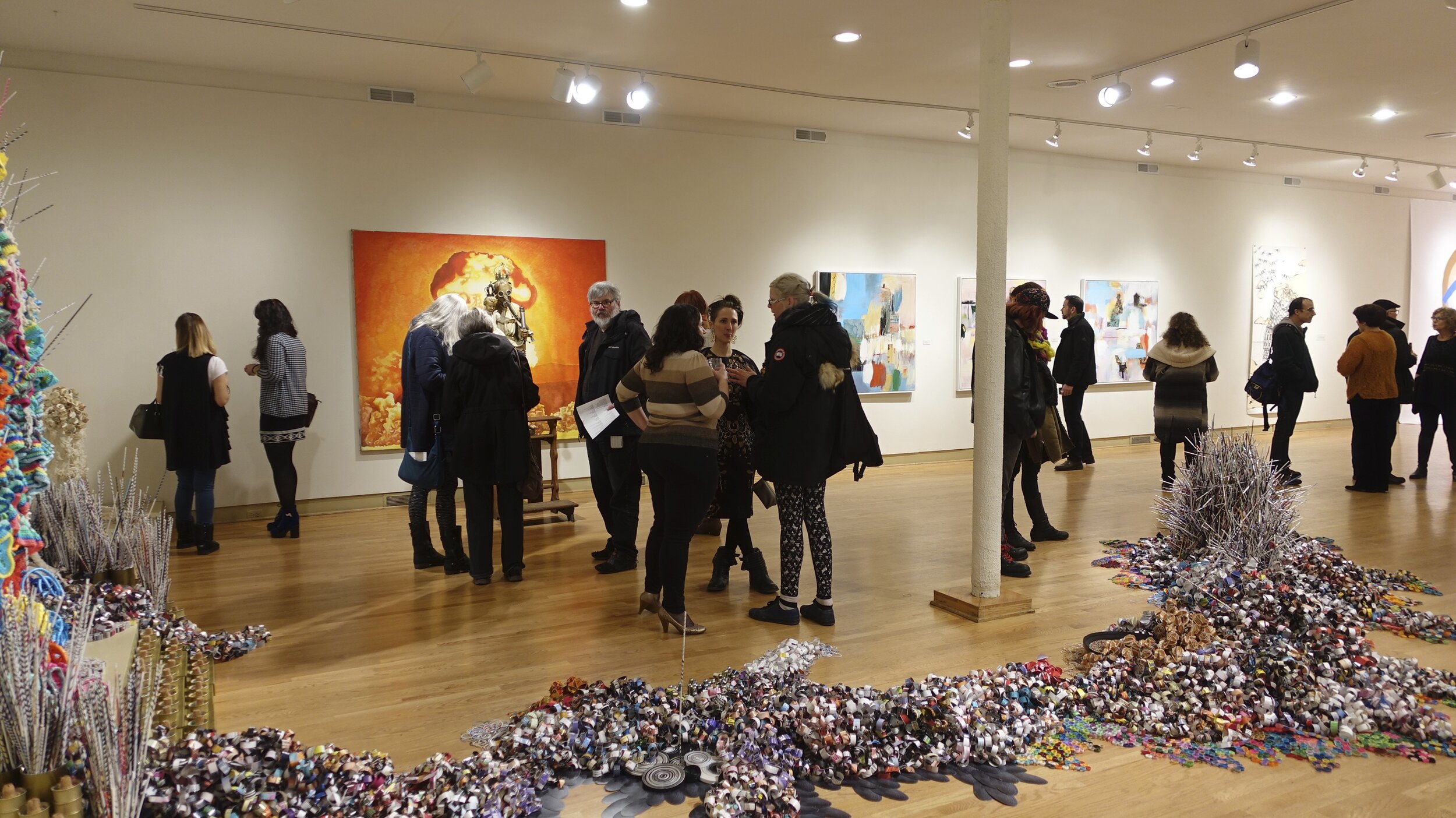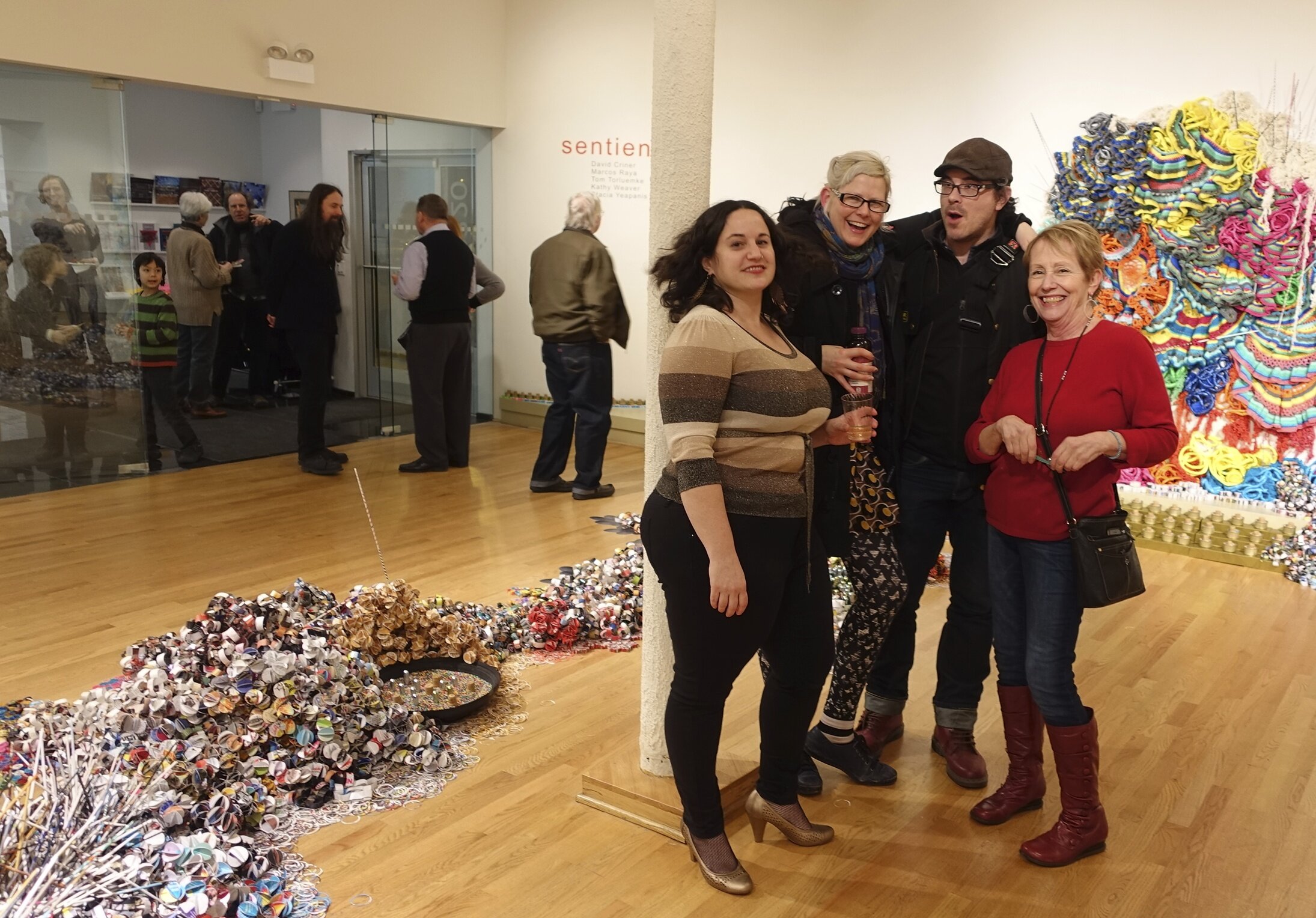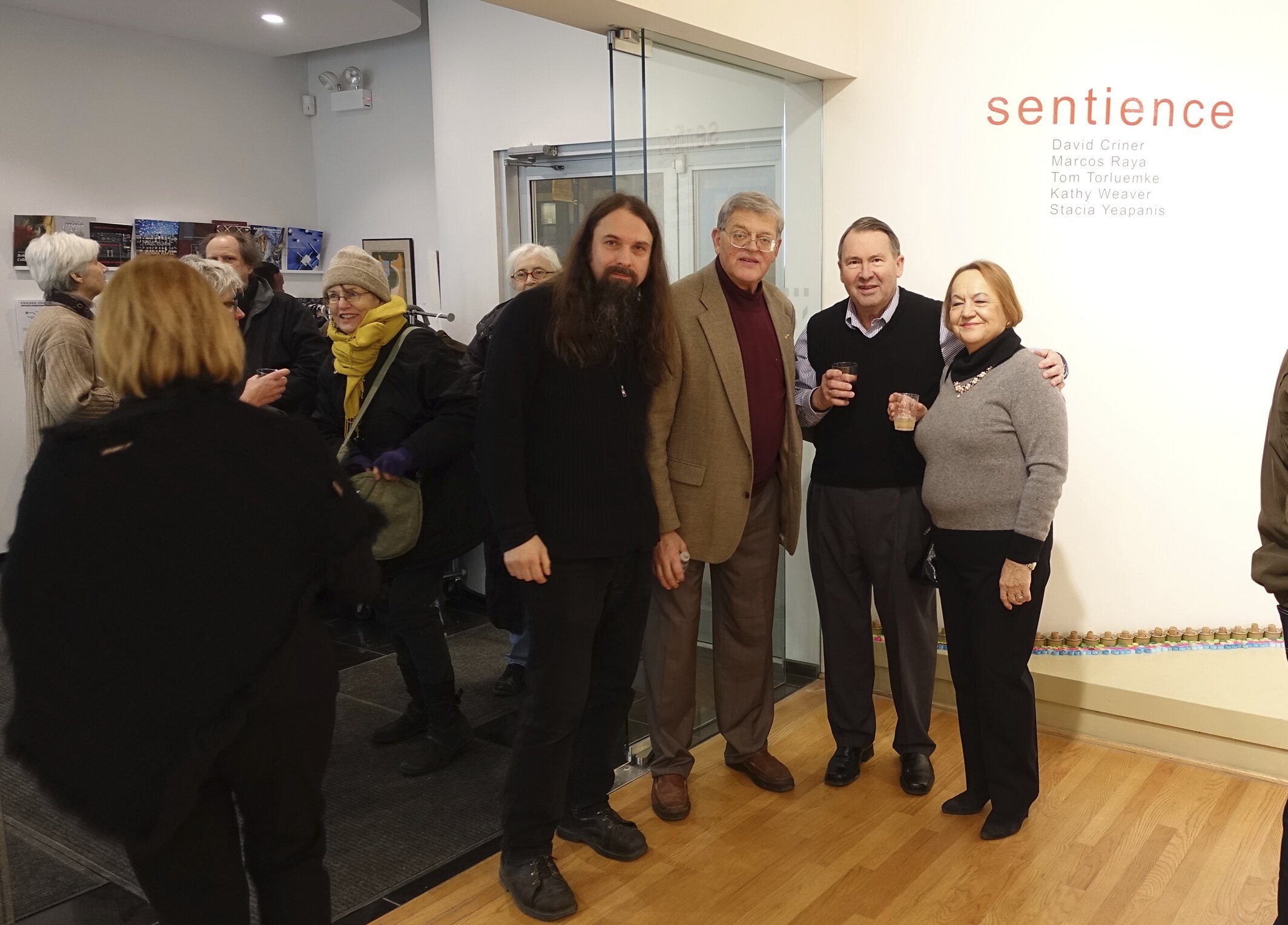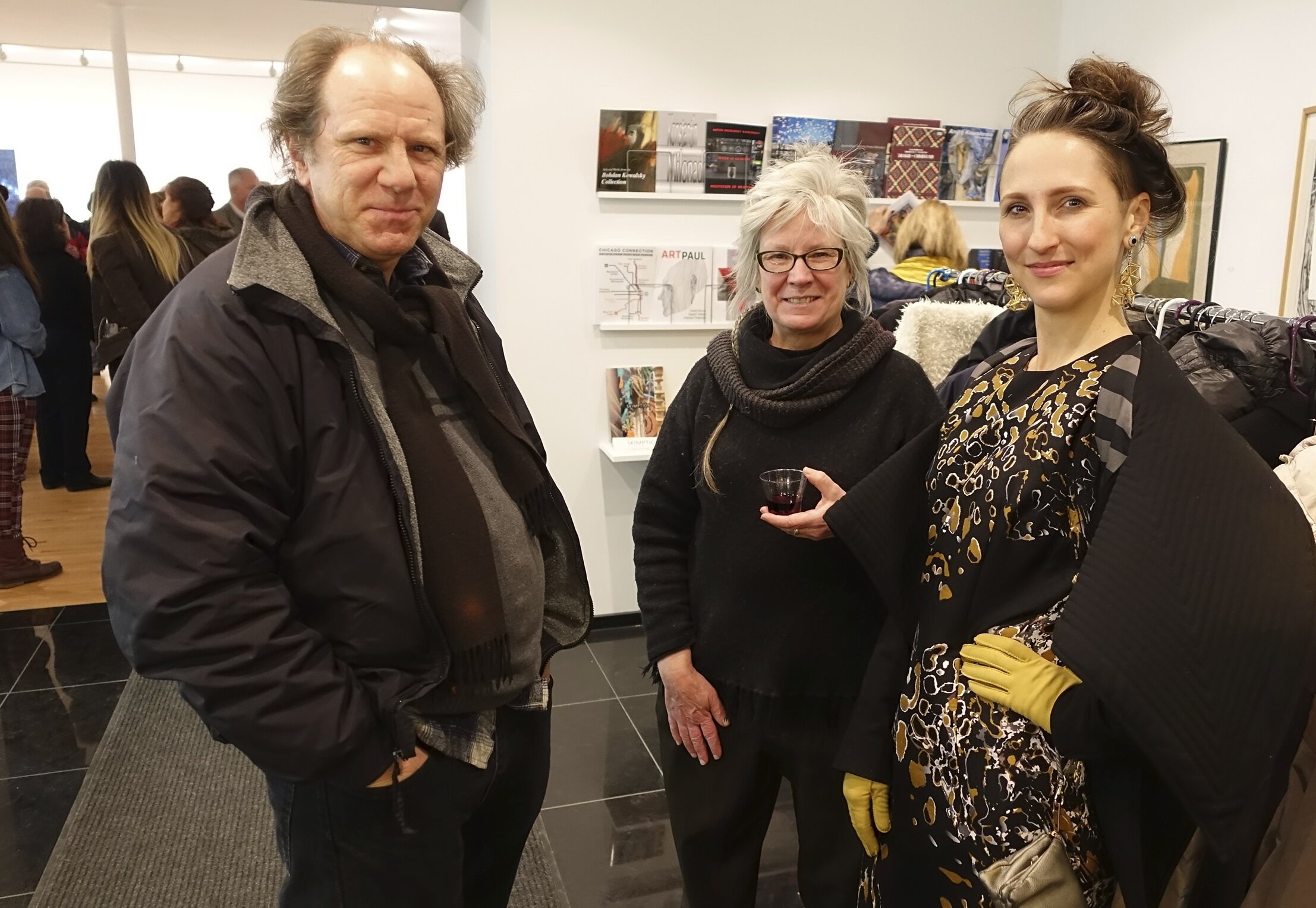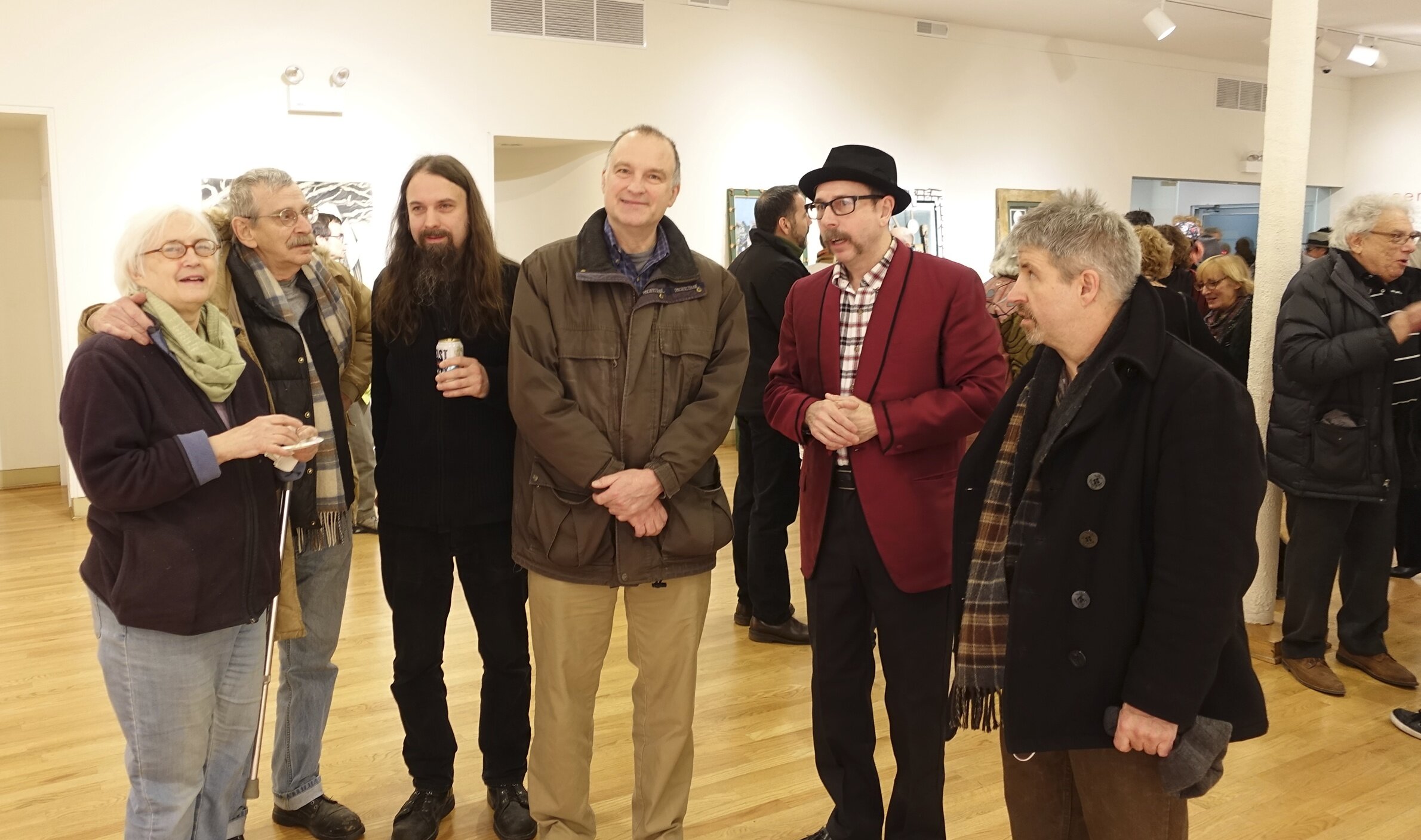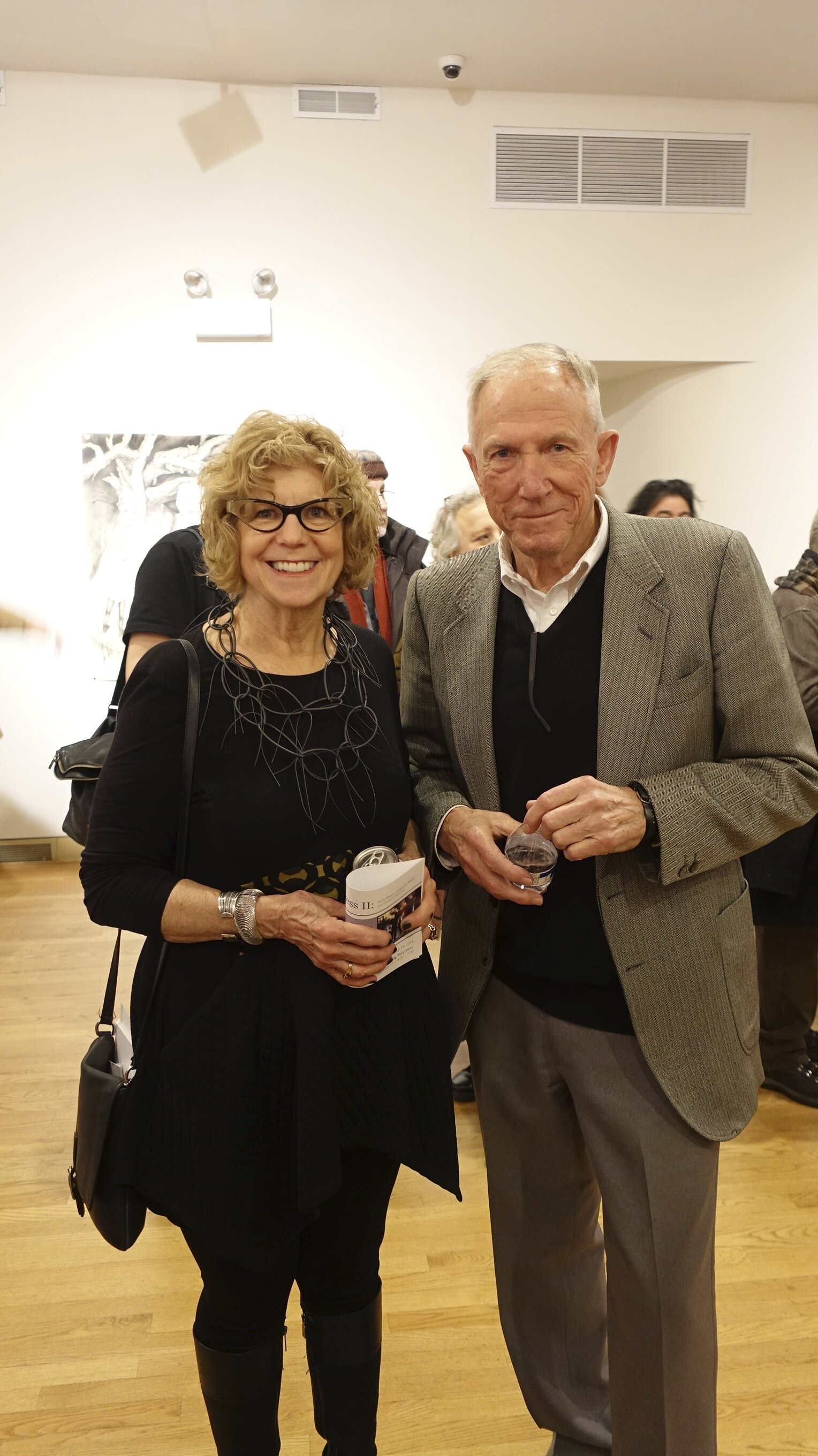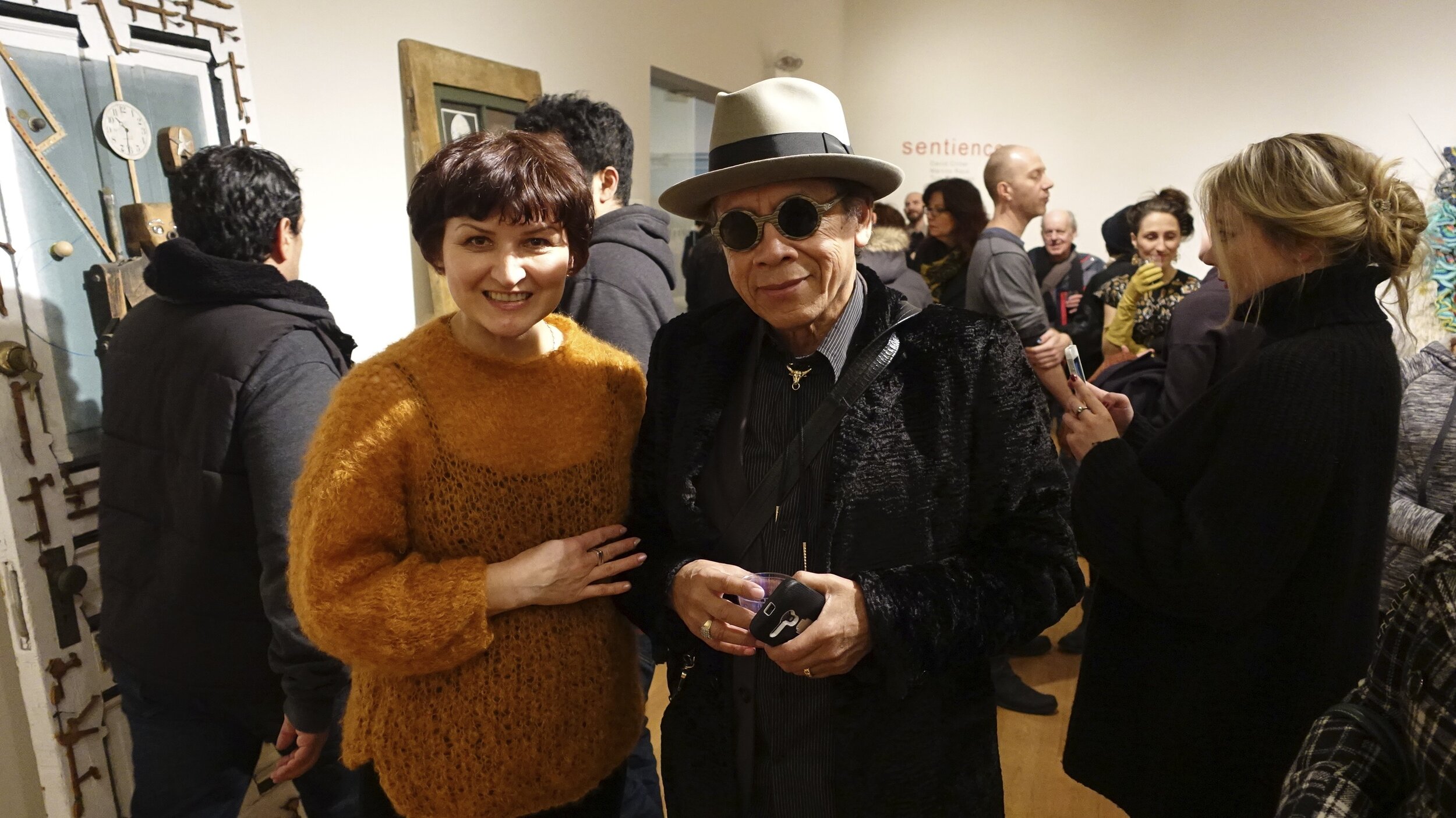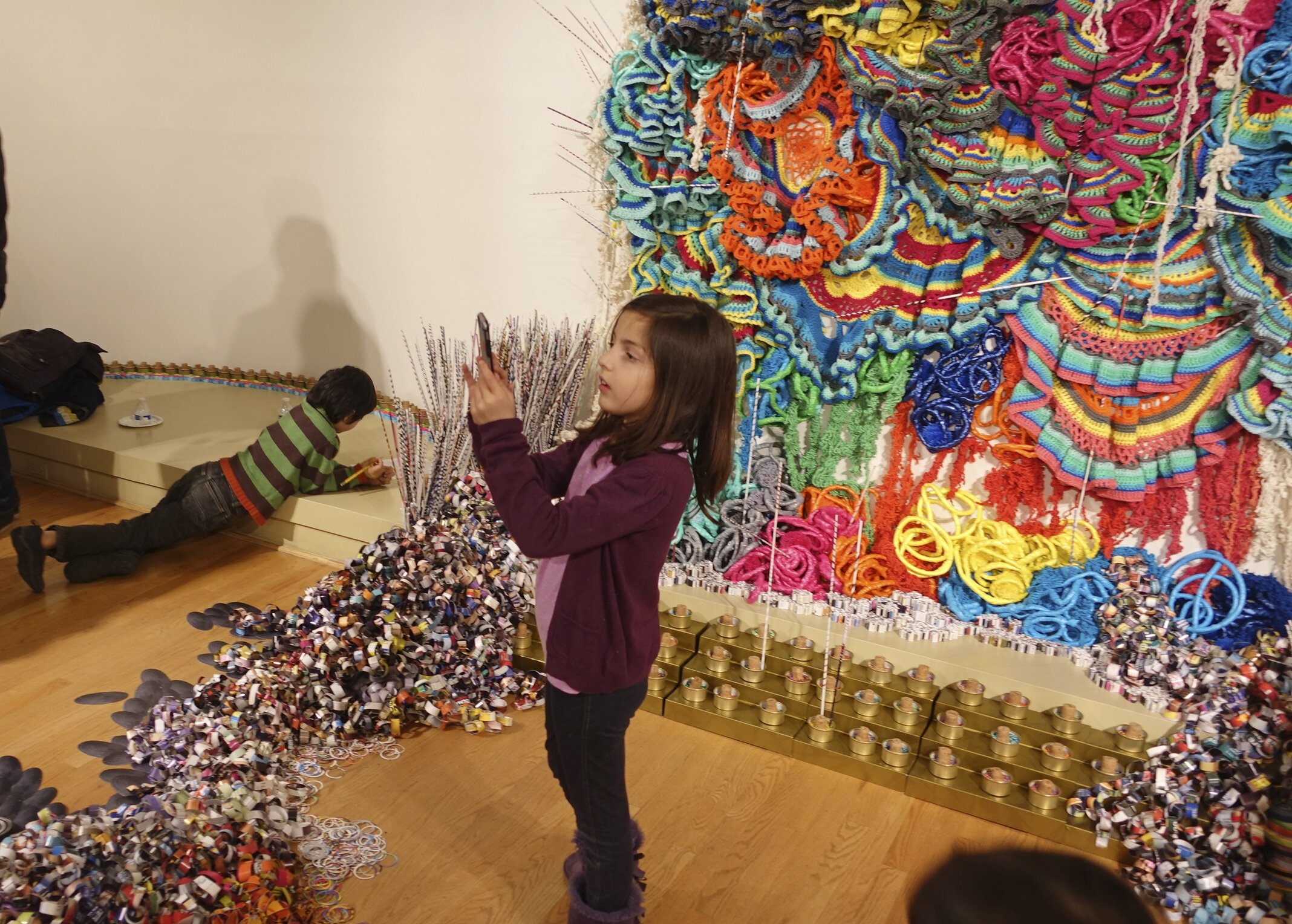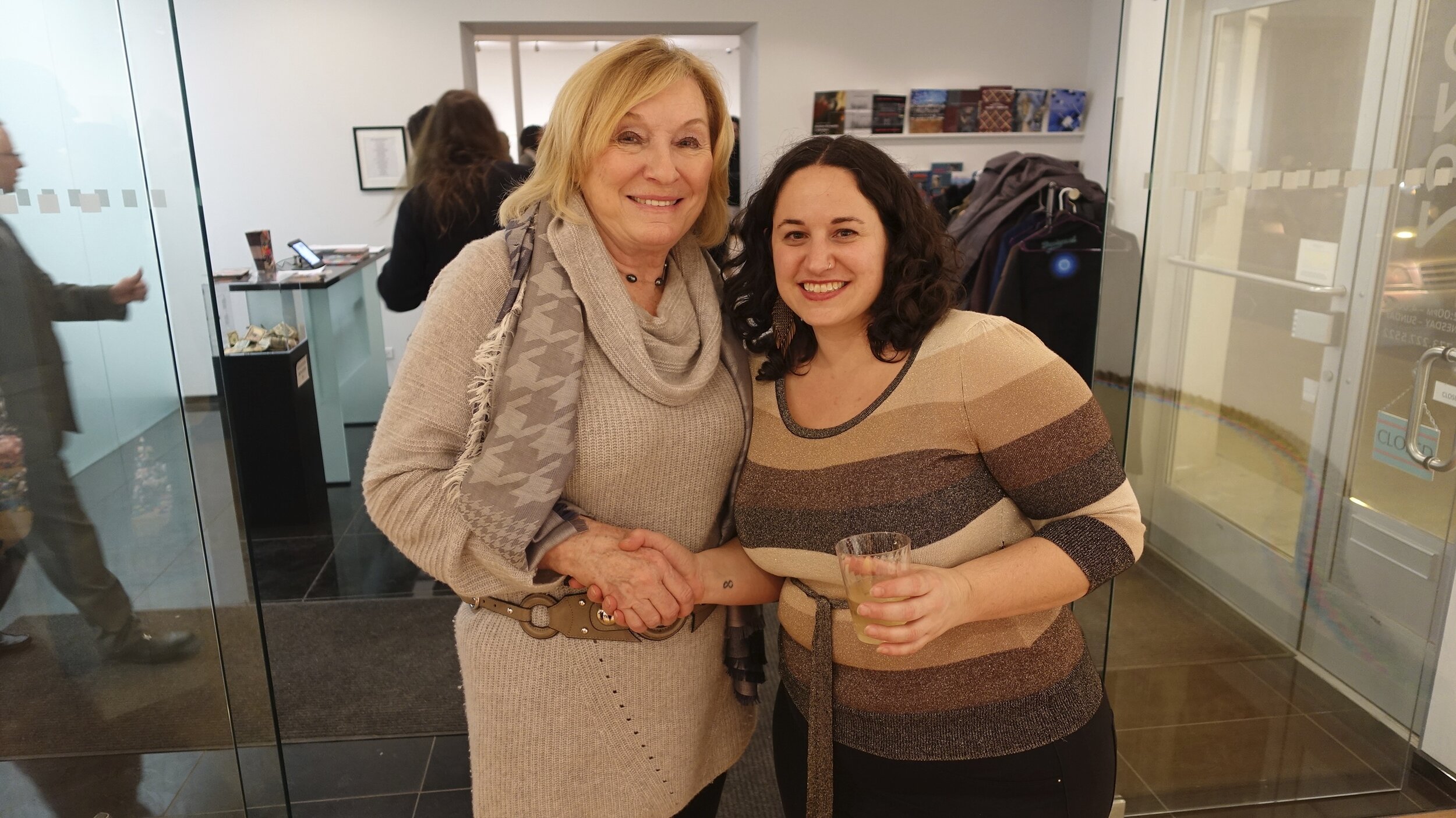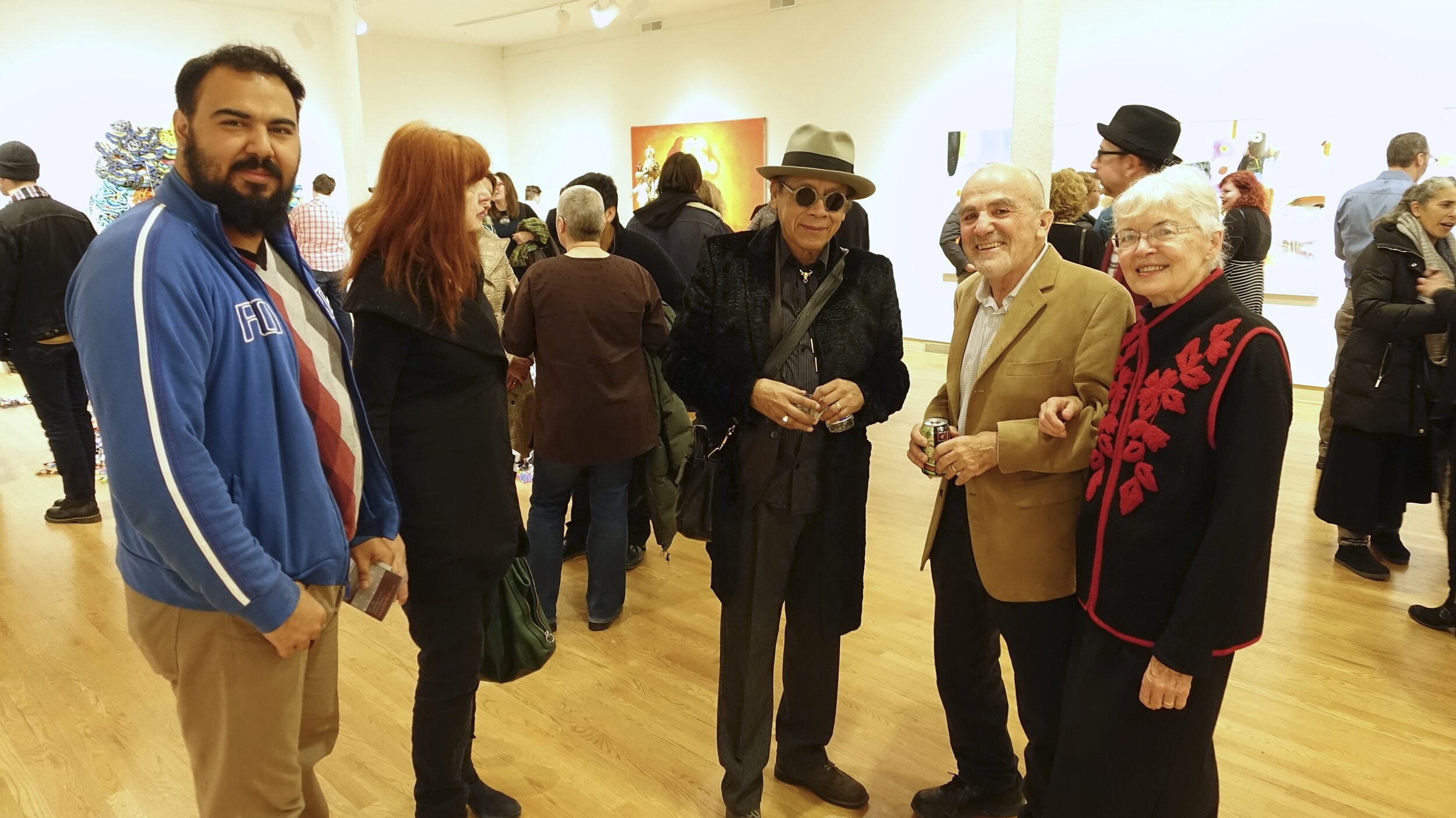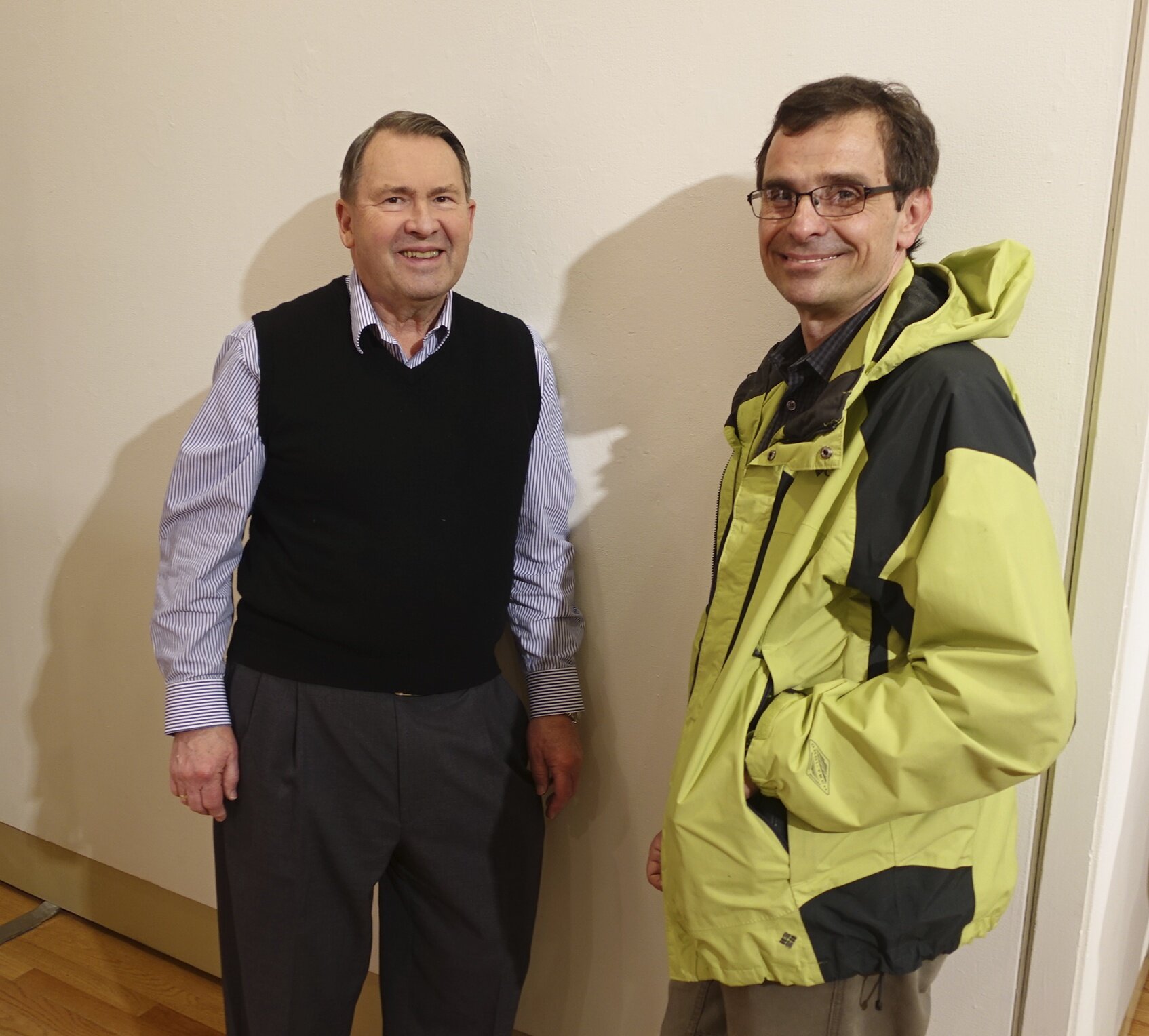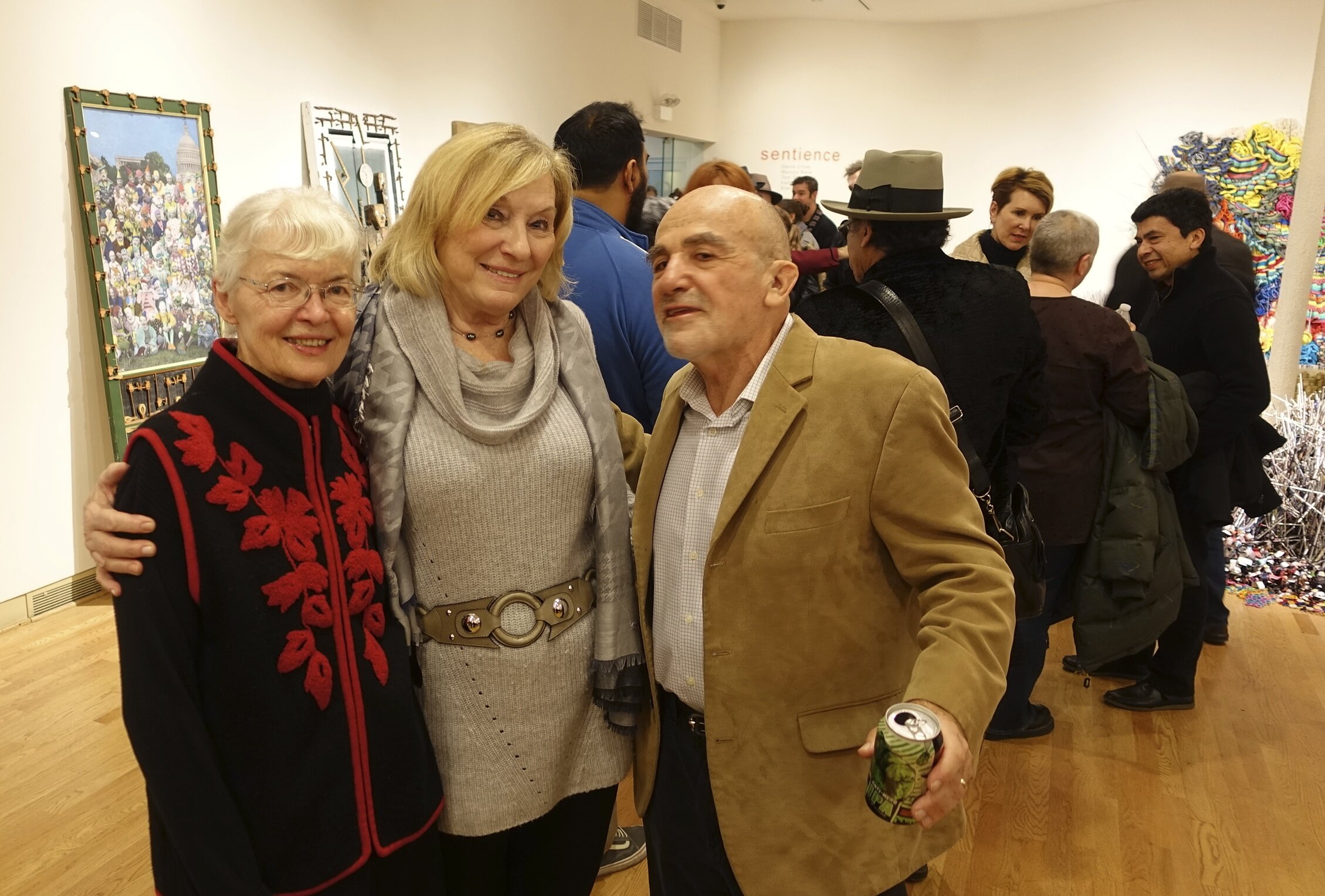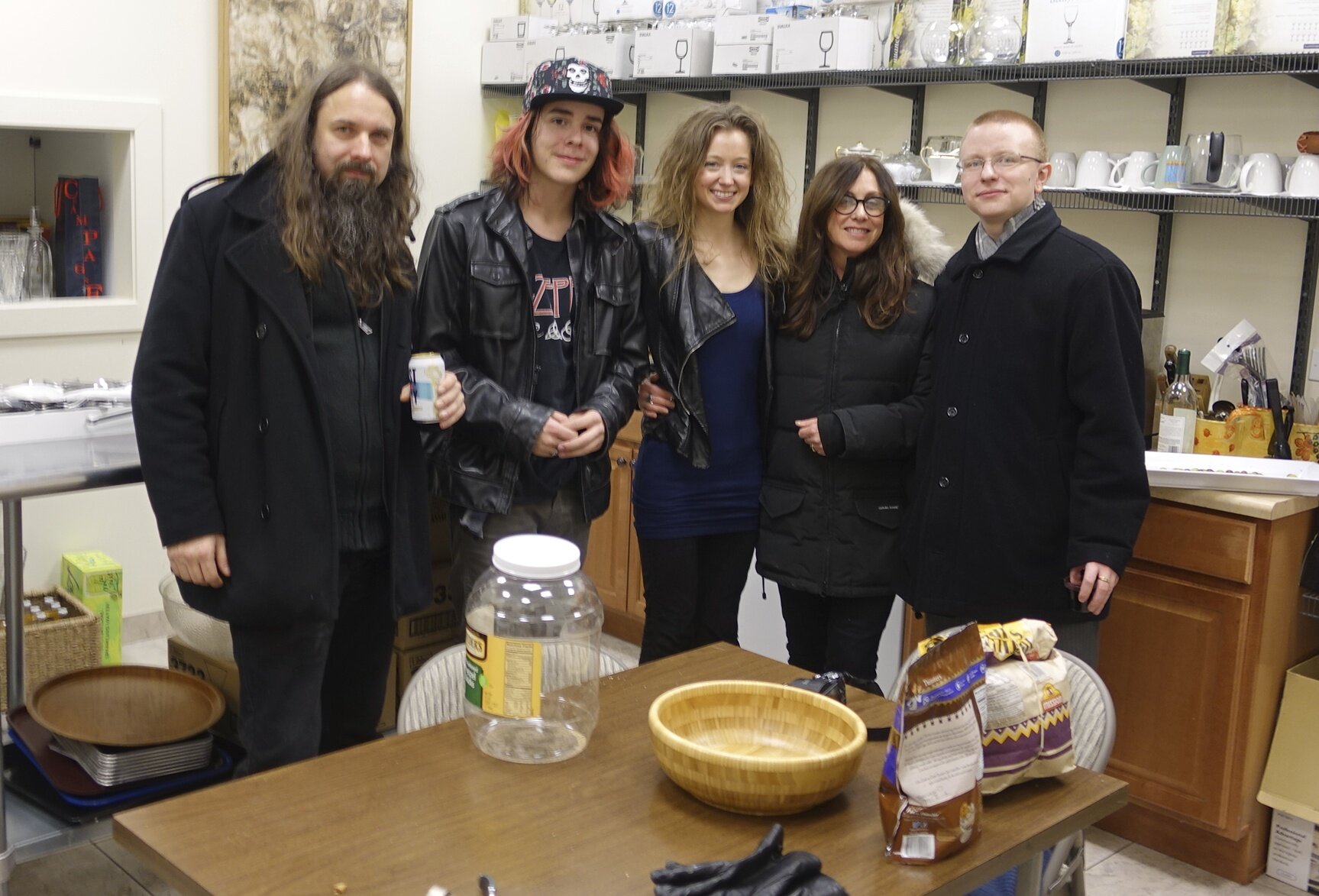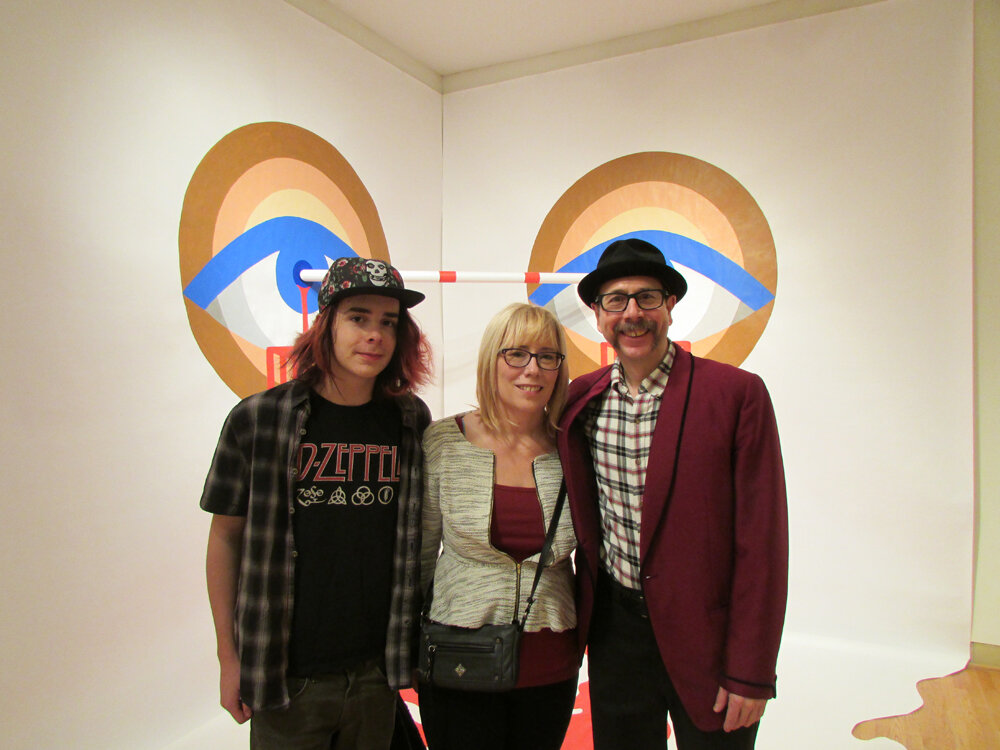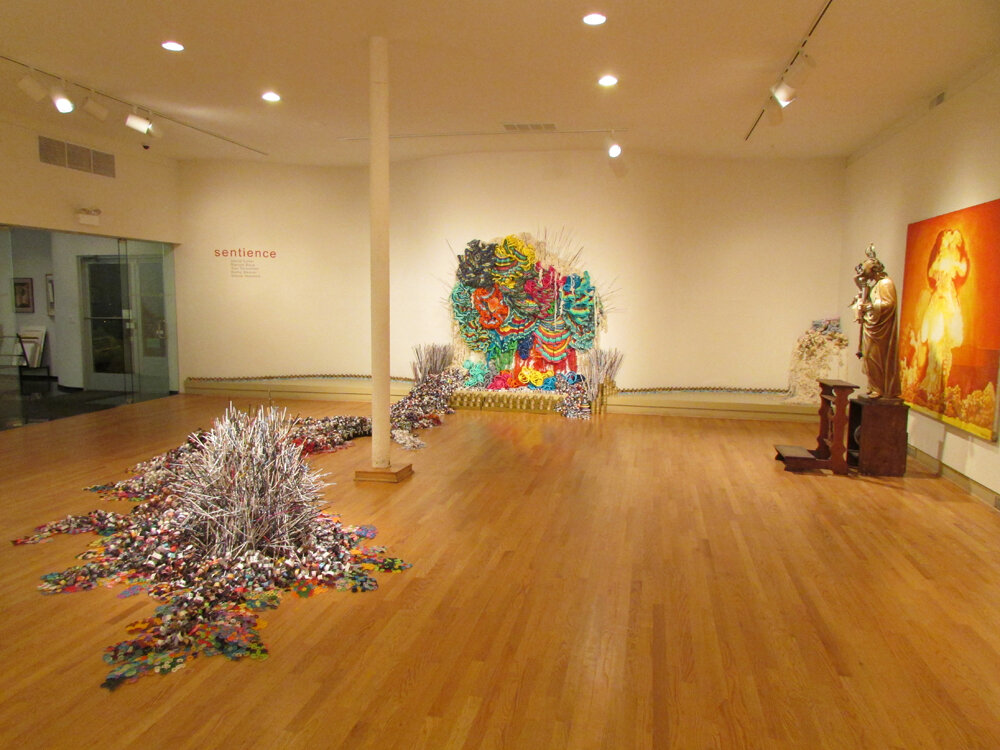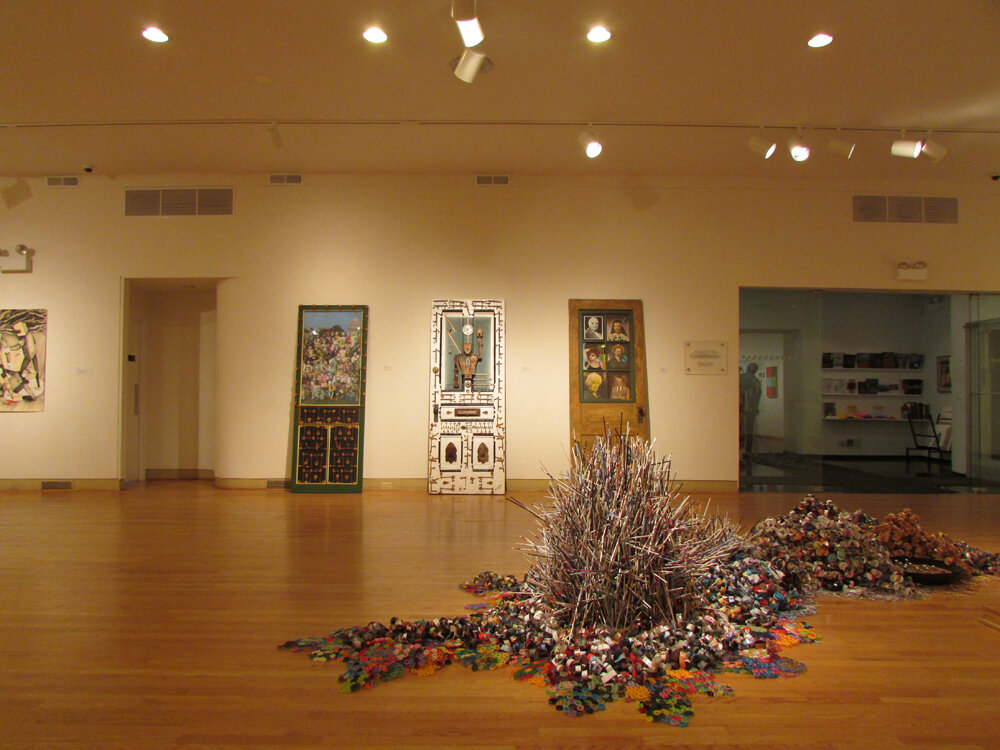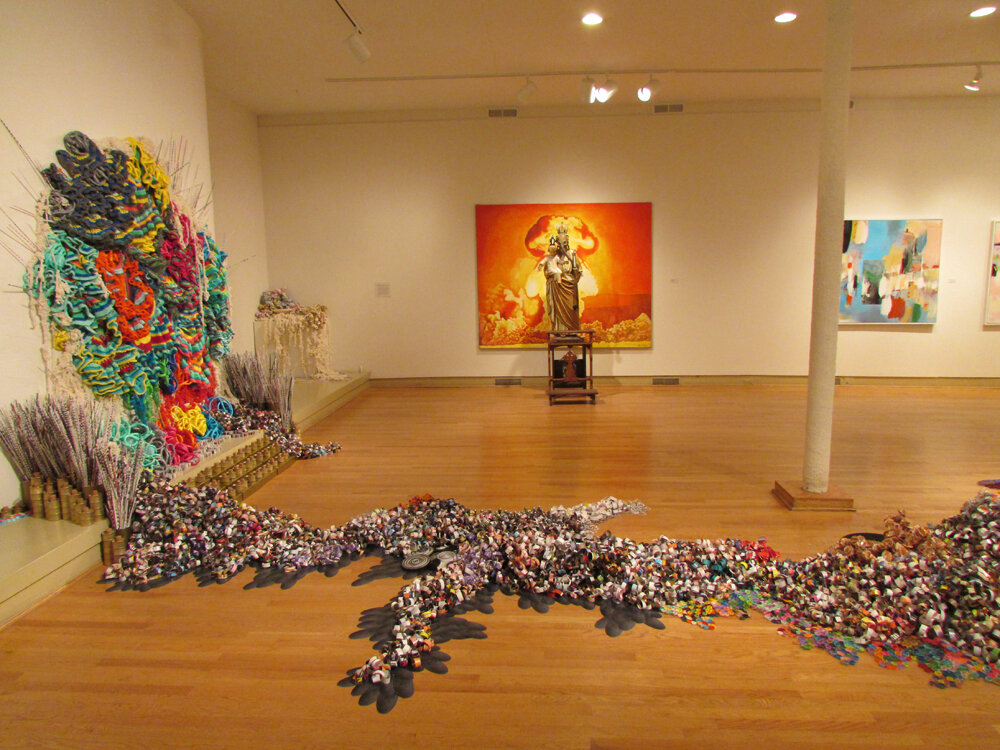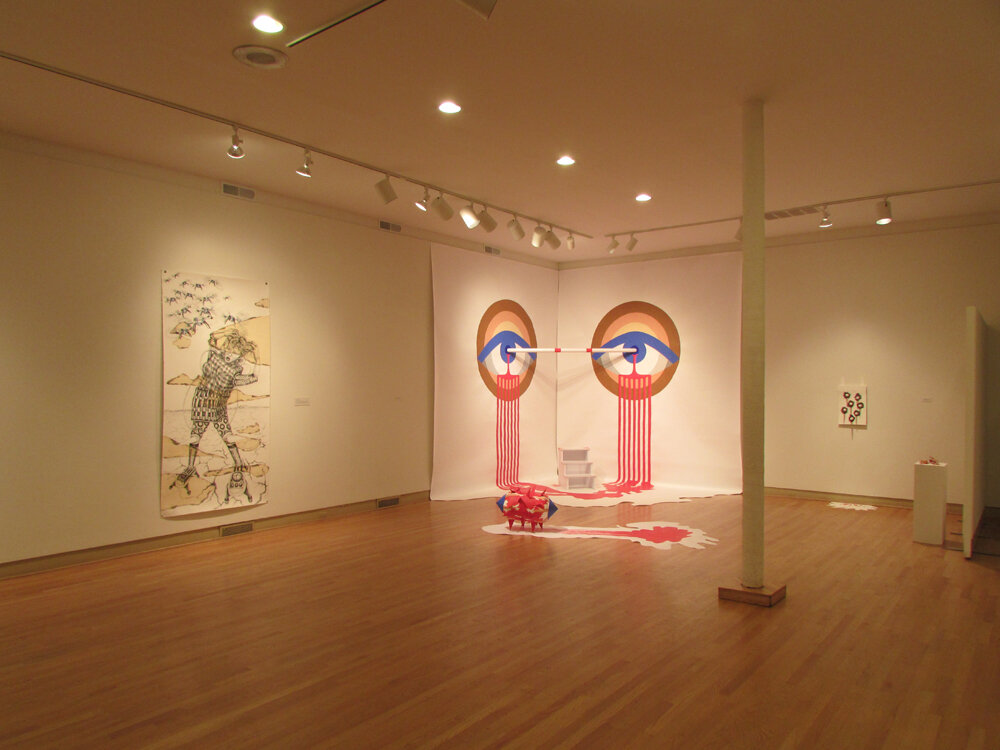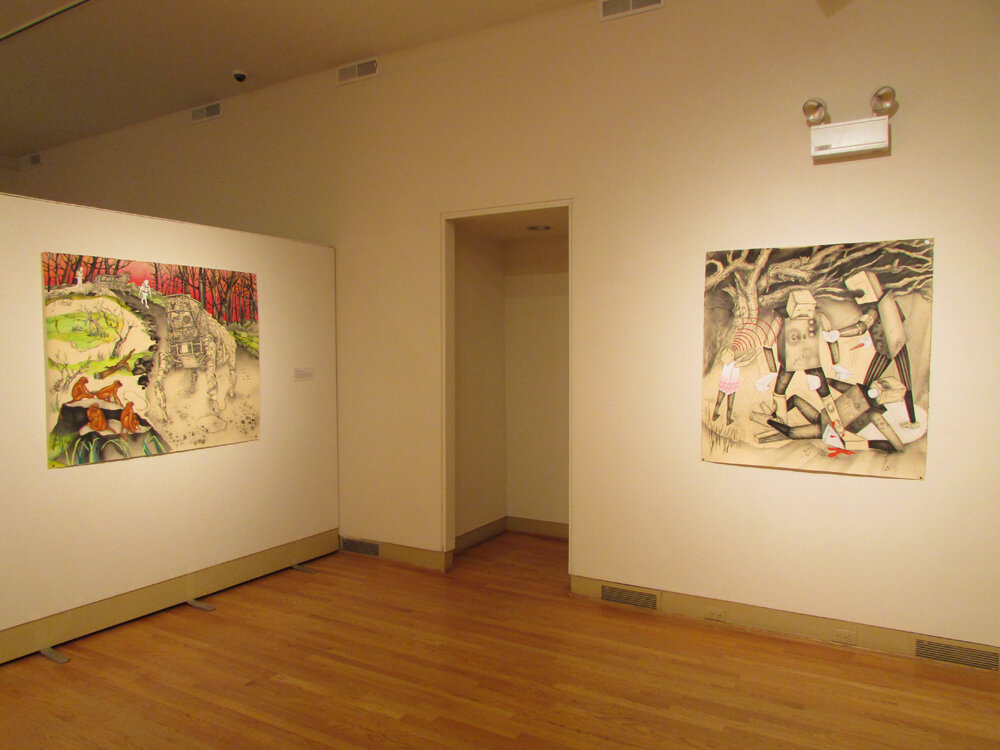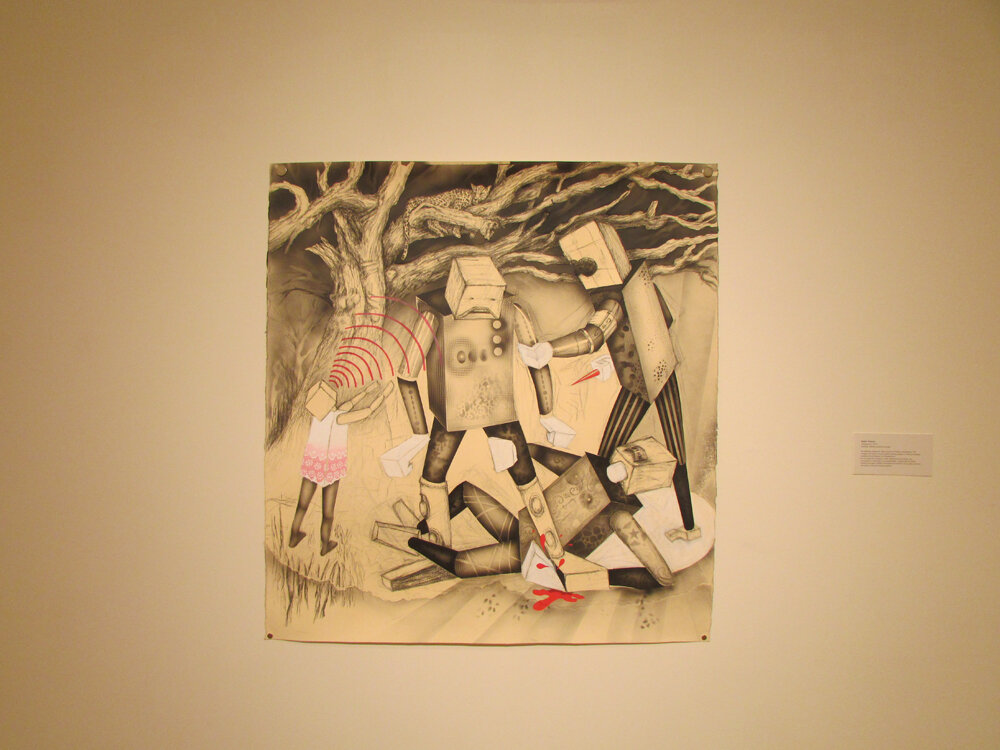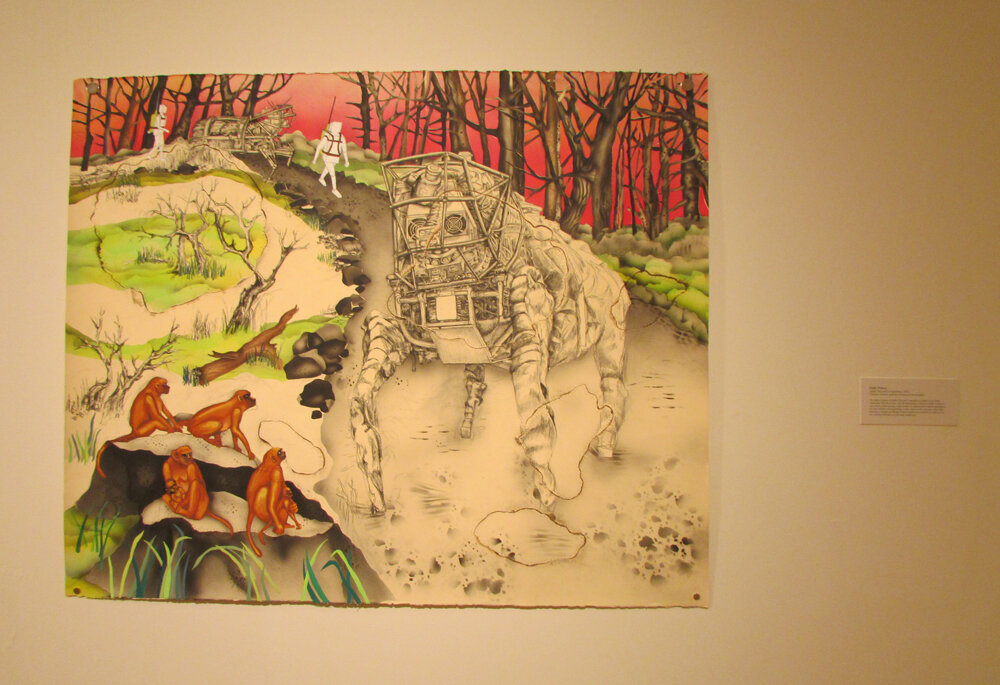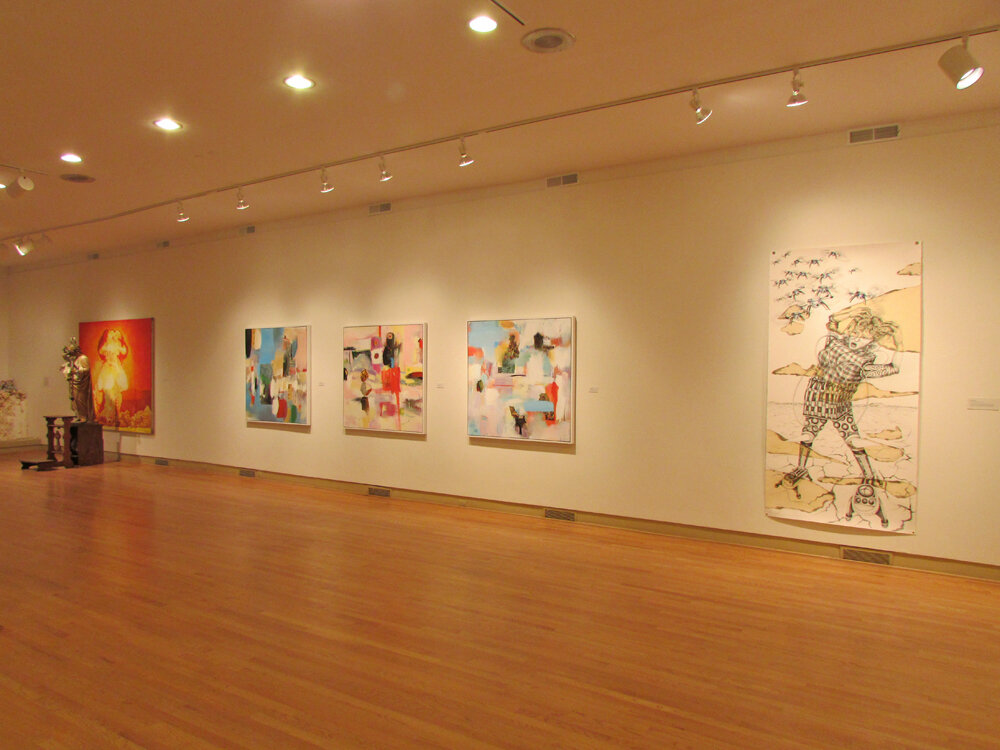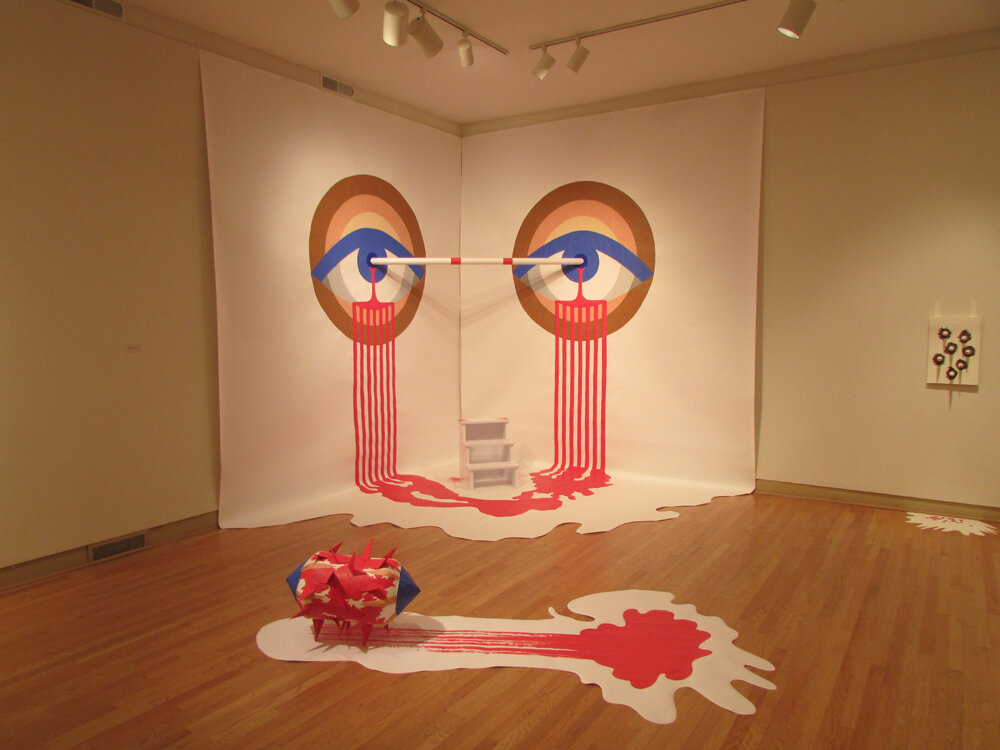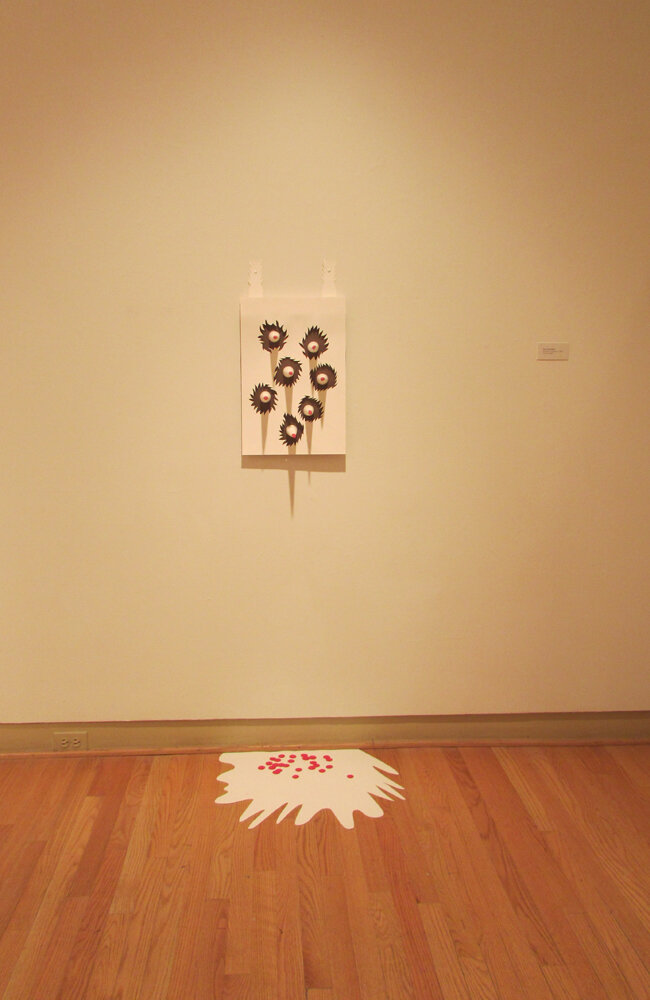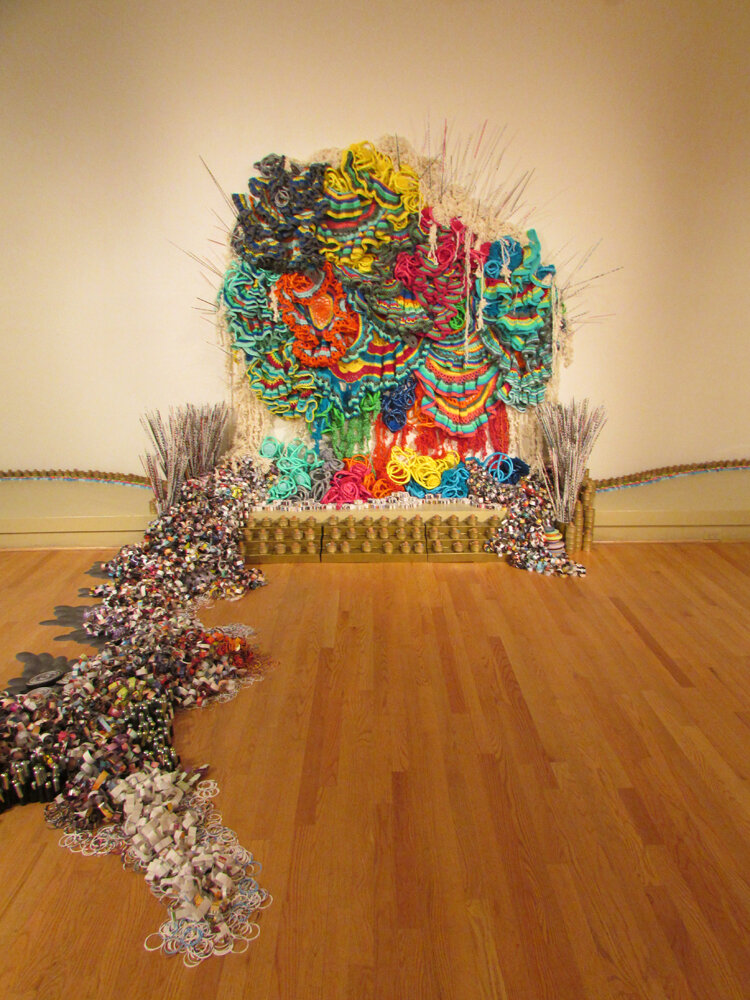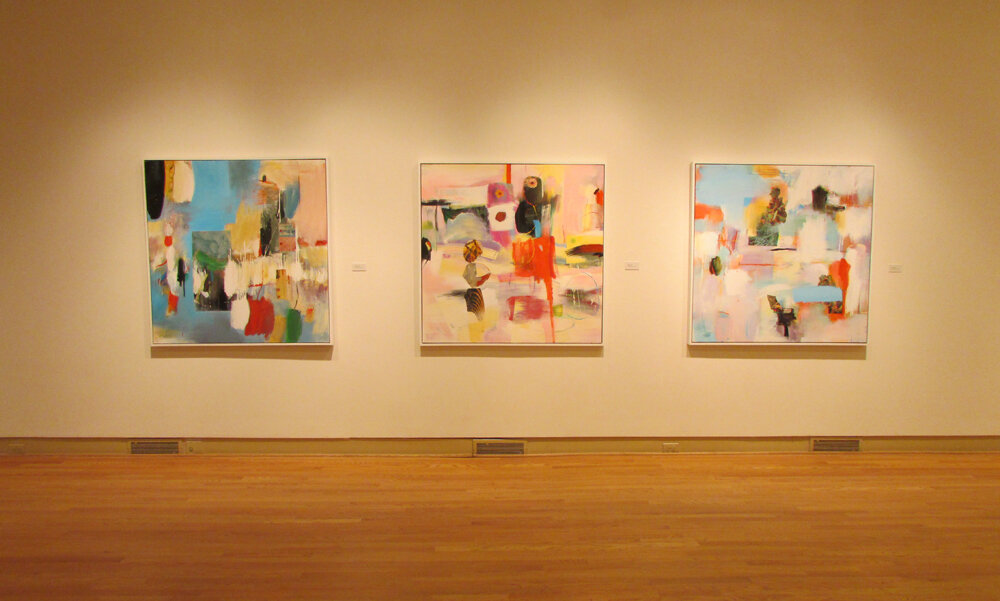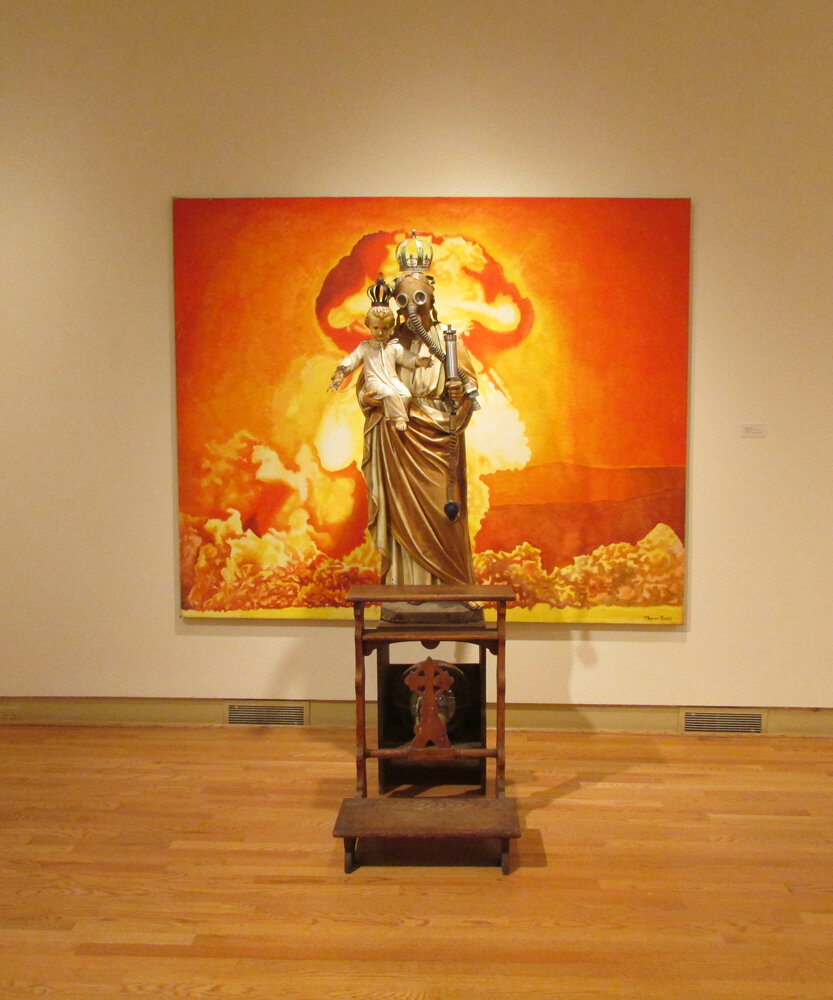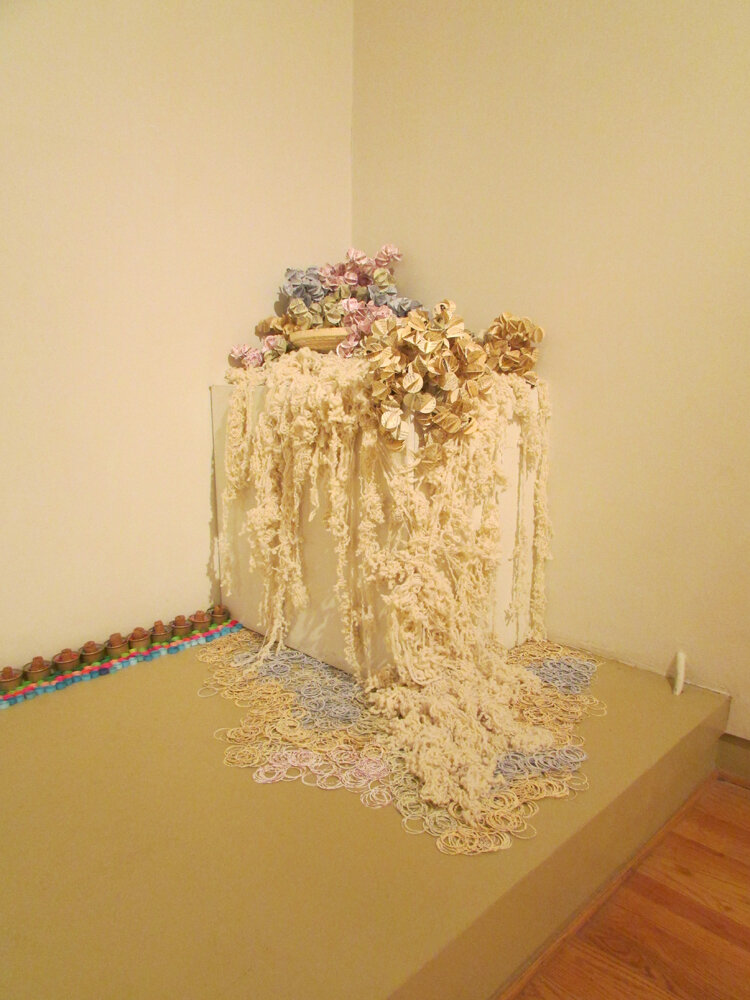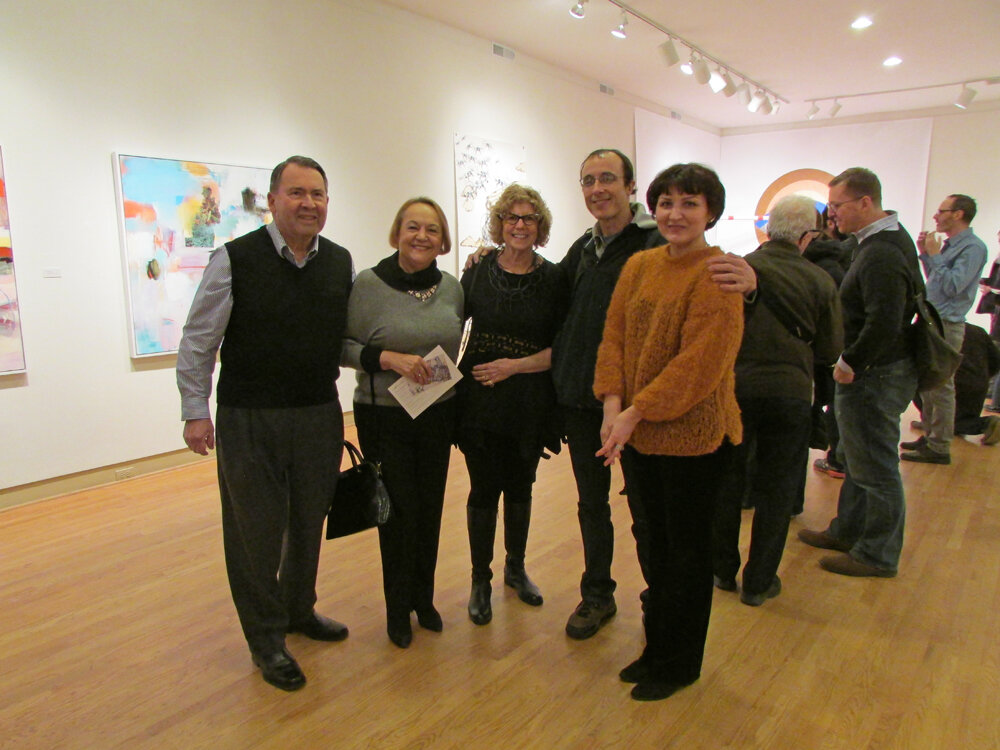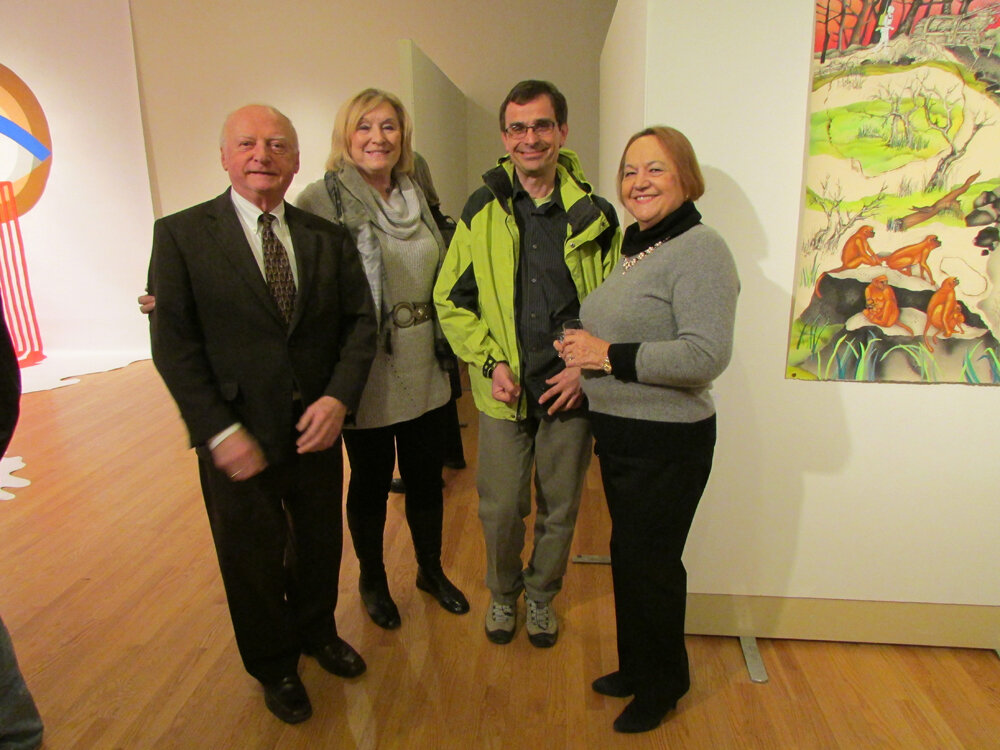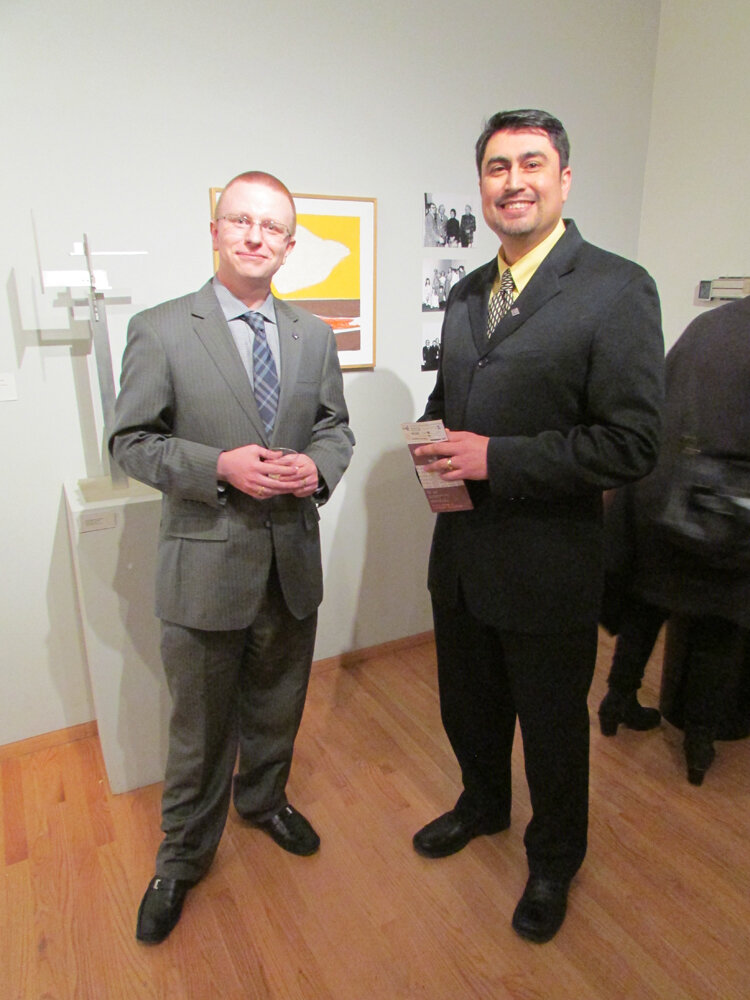Cubism Collage Cybergrams Concrete
December 9, 2016 – January 29, 2017
CUBISM COLLAGE CYBERGRAMS CONCRETE:
4 Artists from Moholy-Nagy’s School
Opening Reception: Friday, December 9, 6-9pm
December 9, 2016 – January 29, 2017
The Ukrainian Institute of Modern Art is pleased to present the museum’s second collaboration with the Bauhaus Chicago Foundation, “CUBISM COLLAGE CYBERGRAMS CONCRETE: 4 Artists from Moholy-Nagy’s School.” This exhibition, curated by T. Paul Young, is rooted in the founding of the New Bauhaus which formally opened its doors in 1937 at the renovated Marshall Field mansion on the near south side of Chicago. This new school, directed by former Bauhaus Master László Moholy-Nagy, began a powerful and dynamic new chapter within Chicago’s art, design and educational community. The four gifted artists exhibited here, Alexander Corazzo, Gretchen Schoeninger Corazzo, Robert Nickle and Tadao Takano, are among many from Moholy-Nagy’s school whose work has received only rare exposure to a broad public audience.
Born in France, Alexander Corazzo attended the New Bauhaus in its inaugural year (1937-38). He spent a decade painting and then began studying architecture in 1943 with Mies van der Rohe, working in his office, then continuing his practice of architecture. In this exhibition, Corazzo is represented by his Cubist paintings created 1932-42; the structural aesthetic of hard edges and flat planes of color in his works on canvas foreshadow Corazzo’s later career of building actual structures in the landscape.
Gretchen Schoeninger Corazzo, too, started at the New Bauhaus that first year, studying with Ukrainian-born artist Alexander Archipenko, whose influence is apparent in her plaster and cast concrete works on display here. Schoeninger Corazzo’s very long career (she was still working steadily last year at age 102) is marked with wide-ranging material experimentation, including printmaking, weaving, collages and “paintings” made entirely from seeds, also included in this exhibition.
Like Schoeninger Corazzo, Robert Nickle also used non-art materials to create his multimedia collages, which he started making even before attending Moholy-Nagy’s Institute of Design (a later iteration of the New Bauhaus). For Nickle, (who was also a graphic designer and influential teacher at the University of Illinois in Chicago), the scraps and detritus he found in the street became surrogates for brushstrokes, arranged in abstracted compositions made of real life objects.
Tadao Takano, also a beloved teacher at UIC, began making repeated, machine-aided photographic works in the early 1980s and shortly after developed an entirely new medium he called “cybergrams,” which he created using an IBM computer and robotic machine. Takano’s innovative cybergrams, a selection of which is on display here, are the result of a laborious dance of pinpointed light on photosensitive paper.
Curated by T. Paul Young with the Bauhaus Chicago Foundation
A Gallery Talk with T. Paul Young and John Corbett will take place Sunday January 15, 2017 at 2pm.
Contact: T. Paul Young at tpaulyoung@bauhauschicago.org
Preview Exhibition – HERE
Images from the opening reception – HERE
Order catalog – HERE
Extended version of the catalog – HERE
Opening Reception
Axiom
October 7 – December 4, 2016
GALLERY TALK - Thursday, November 17 at 6:30pm
October 7 – December 4, 2016
GALLERY TALK with curator Doug Stapleton and artists Frank Connet, Anne McGinnand Lialia Kuchma for Q&A. Thursday, November 17 at 6:30pm.
“Axiom” presents three artists rooted in craftsmanship who conceptually challenge the expectations of their discipline. “Axiom” addresses the commonalities that link their work, either through shared propositions as well as assumptions around the nature of craft. Frank Connet, Lialia Kuchma and Anne McGinn hold skill and materials in high regard and they acknowledge the historic narrative that has defined their discipline. Nevertheless, their thinking about their work pushes across the border of the imagined, across materials, into refined and distinctive artistic voices.
Frank Connet is well known for his textile work: shibori-based geometric compositions, primarily in indigo and over-dyed walnut, that have a bold, graphic presence. Connet’s complex, organic patterns have an overarching geologic and meteorologic reference. His work also suggests processes of accumulation and mutation, as well as the tension between matrix and void—where latent energy continually agitates against restraint.
Lialia Kuchma’s tapestries and prints are inspired by a host of ideas, primarily folded paper studies that model for the figure in her work. The three tapestries in this exhibition appear as elegant apparitions floating in a void, or perhaps a structured garment that has been cast off and left where it landed. Kuchma is also a trained calligrapher; mark marking is a potent, expressive force for her. Here, she remarkably translates that immediacy of line and gesture into a structured, binary weaving process.
Anne McGinn, most known for large-scale tapestries, is represented in this exhibition by a group of ceramic sculptures, along with a new body of unique woodblock prints. When McGinn’s health compromised her ability to continuing weaving, the artist took up ceramics as a way to continue a studio practice. In clay, McGinn has fashioned often large-scale forms, which like a tablet are written upon with complex surfaces of glaze and incised line. Many of her pieces allude to figures, while others are built more like monuments, stoic and stolid as sentinels.
“Axiom” curator Doug Stapleton is an Associate Curator of Art with the Illinois State Museum Chicago Gallery. He is also a visual artist and educator.
Order catalog- HERE
Photos from the opening reception – HERE
AXIOM review in NewCity – HERE
Opening Reception
Reality Check
August 26 - November 27, 2016
REALITY CHECK: DIRECTIONS IN CONTEMPORARY ART SINCE UKRAINIAN INDEPENDENCE
GALLERY TALK - Saturday, November 5 at 1pm
August 26 - November 27, 2016
GALLERY TALK – Curator Adrienne Kochman and artists
Lydia Bodnar-Balahutrak & Natalka Husar discussed their work, identity, and politics in the exhibition “Reality Check: Directions in Contemporary Art since Ukrainian Independence”.
Photos from Gallery Talk – HERE
The Ukrainian Institute of Modern Art is pleased to celebrate the 25th Anniversary of Ukraine’s Independence with the exhibition, “Reality Check,” curated by Adrienne Kochman, one of North America’s foremost scholars of contemporary art of Ukraine and the Ukrainian diaspora.
For Ukrainian professional artists, the collapse of the Soviet Union created an opportunity to learn and engage with current artistic developments occurring in the west, as well as delve into those of the past from which they had been excluded. “Reality Check” explores the work of eight contemporary artists affected by Ukraine’s 1991 independence: Lydia Bodnar-Balahutrak, Anna Bogatin, Yhelena & Michael Hall, Roman Hrab, Natalka Husar, Yulia Pinkusevich, and Valya.
In 1991, Cleveland-born, Ukrainian-American artist Lydia Bodnar-Balahutrak visited Ukraine for the first time; the trip, and subsequent visits following, reignited the artist’s concern for the human condition, resulting in works that liken Ukraine’s ravagement by the Soviet Union with the ravagement of nature by the Chornobyl disaster. Anna Bogatin, too, finds inspiration in nature; the artist, born in Ukraine, draws from the forms and colors of nature, using new technologies to create compositions that suggest the quest for peace and harmony.
Roman Hrab’s works deal with the way that images documenting a given place, like Ukraine’s Carpathian Mountains or the Green Zone in Baghdad, inevitably become more unrecognizable the more one attempts to digitally enhance them; finding this an apt metaphor for experiencing a landscape, he translates these images into multimedia installations. Conflict zones also feature in the work of Yulia Pinkusevich, who was born in the USSR with both Ukrainian and Russian heritage; her installation, Silencing the Cacophony, references the Euromaiden resistance in Kyiv as well as protests that occur globally.
Born in New Jersey to Ukrainian Displaced Persons, Natalka Husar examines issues of persona in her works, Why They Behave Like Russians; here, the figurative artist captures the trend amongst men in post-Soviet Ukraine to dress like Russian mobsters, reflecting a need to intimidate to survive. Valya, too, addresses notions of identity in her figurative works, but to a much different end; with repeated images in her textile pieces of an aged ‘Mother Eve,” the artist reinforces the commonality that all humans share in their biological ancestry.
Ukrainian-born, Chicago-based artist, Yhelena Hall and her collaborator, Michael Hallcreate works that look to the past, but reinvigorate the outdated with the contemporary. In Bullafolis Cylinder, the artists appropriate the outmoded function of a bellow, reimagining it as a large scale, interactive bubble blower.
Order catalog- HERE
Photos from the opening reception – HERE
Article in Chas i Podii – HERE
Opening Reception
Dissecting Signifiers
August 12 – October 2, 2016
Opening Reception: Friday, August 12, 6-9pm
August 12 – October 2, 2016
The Ukrainian Institute of Modern Art is pleased to present “Dissecting Signifiers,” a group show curated by artist Eric Gushee investigating the signs, symbols, and icons that are present in our everyday experiences. The show presents and indexes the variety of ways one interprets and reinterprets the everyday objects and imagery of the visual language we are exposed to in our environment.
Man-made objects from the urban landscape are the basis for LA-based artist Salvador Dominguez‘s practice, as he recreates paraphernalia like manhole covers and rearview mirrors through making processes that recall experiences of blue-collar labor. Chicago-based artist Jason Hawk too uses masterful fabrication techniques in his work, here presenting an “archaeological” installation of cast objects from everyday life cascading from a hole in the gallery wall. From Chicago’s graffiti and skateboarding scene, Chris Silva creates complex assemblages of found and crafted objects, using the gritty, graphic characteristics of street art in works that trigger intuitive responses. Turkey-born, Chicago-based artist Asli Uludag sources materials and objects from different geographical locations, creating narrative sculptures that unite notions of history, conflict and humanity.
The artists selected for this show extrapolate meaning from dissecting visual language – implementing it in their art as tools for creating allegories, to reflect on personal experience, voice political opinions, and even constructing new worlds from the remains of this one.
Preview the exhibit – HERE
Order catalog – HERE
Pictures from the opening – HERE
Cover image:
Salvador Dominguez, Brooklyn 01a, 2016, Acrylic skin and plastic hanger, 33 x 16 in.
Opening Reception
Ruminate
June 3 - July 31, 2016
Opening Reception: Friday, June 3, 2016, 6-9pm
June 3 - July 31, 2016
The Ukrainian Institute of Modern Art is pleased to present “Ruminate,” a three-person exhibition of work by Robin Dluzen, Cydney Lewis and Allison Svoboda. For these three Chicago-based artists, contemplative thought processes address the confluence of and contrasts between humans and nature, using a vast range of meaningful, tactile materials.
For Robin Dluzen, the intersection of labor and landscape is at the core of her practice, and here, a new series of charcoal drawings on stretched lawn-refuse bags consider the artist’s mother’s 30-year career as a horticulturalist. In this exhibition, Dluzen redraws the precisely rendered botanical drawings created by her recently retired mother over the course of her tenure; Dluzen preserves the gestures of her mother’s hand (and even her signature), combining them with her own in works that truly have two authors, collaborating decades apart.
Cydney Lewis, too, looks to everyday materials, both embracing the lowness and the unaesthetic nature of man made matter like plastic paper towel wrapping and dry cleaning bags, and also completely transcending their humble origins. In her installation pieces, the twisted, wired plastics become extraordinarily laborious, vivid recreations of flora. Accompanying these sculptural pieces are a series of ink drawings, taking cues from the aesthetics of black and white films to address a number of symbolic dualistic tensions, including that of race.
Created during a recent fellowship studying Zen and traditional artistic techniques in Japan, Allison Svoboda exhibits a number of multimedia works that use fractals found in nature as catalysts. In her collage works, thousands of brushstrokes on paper are torn and reassembled into a monochromatic, wall-bound mandala. In Svoboda’s Scorched Vestments, a burning incense stick is the sole mark-making tool. Cotton sheets hand dyed with indigo shibori are suspended from the ceiling, suggesting a kind of soft, temple-like architecture. Light refraction from the Vernal Equinox is featured in a video piece. Together, these varied materials and processes create a rich, meditative experience.
A catalog is published in conjunction with the exhibition, featuring an essay by artist and art critic, Alan Pocaro.
Order catalog – HERE
Cover Image:
Robin Dluzen, Drawing of a Drawing My Mom Made (Pineapple), 2016,
Charcoal on lawn refuse bags and stretcher, 56 x 64 in.
Opening Reception
Chornobyl 30 Years Later
April 1 - May 29, 2016
Opening reception April 1, 2016 (6-9pm)
April 1 - May 29, 2016
On April 26, 1986, the Chornobyl nuclear disaster occurred in Pripyat, Ukraine. This was the worst nuclear power plant catastrophe in history resulting in tremendous casualties and long term contamination effects that are still reverberating to this day. 2016 marks the 30th anniversary of the disaster, and the Ukrainian Institute of Modern Art is dedicating the exhibition spaces of the entire museum to two exhibits addressing the theme, “Chornobyl 30 Years Later.”
In the West Gallery, “Chornobyl: Impact & Beyond,” nine artists have created works with a range of subject matter related to Chornobyl before, during and after the incident, as well as its wider impact physically and conceptually. Artists Ricardo Manuel Díaz, Yhelena Hall, Karolina Kowalczyk, Dominic Sansone, Anaïs Tondeur, Jave Yoshimoto, Eden Unluata, Tara Zanzig and Igor Zaytsev hail from many different backgrounds and from all over the world, including Chicago, France and Ukraine.
The human toll of the disaster is addressed in Díaz’s metaphorical painting about emptiness and evacuation, Sansone’s multi-headed sculpture referencing the lives lost, and Zanzig’s painting and street art series that depicts the long term effects on those exposed to radiation. Chornobyl’s natural environment is explored in Hall’s sculptural plant installation on the absorption of the manmade by nature, Kowalczyk’s layered work on paper about the impact of radioactivity on flora and fauna, and Tondeur’s photograms that document the invisible scars left upon that which grows in irradiated soil. Zaytsev’s and Yashimoto’s pieces consider the power of creative and destructive forces. Throughout the exhibition, Unluata will be activating a site-specific installation with a Turkish tea ceremony performance addressing the radioactive impact on the tea grown and consumed in nearby Turkey.
In addition to “Chornobyl: Impact & Beyond,” the Ukrainian Institute of Modern Art has commissioned a fine art print portfolio project and exhibition entitled, “Chornobyl: Artists Respond,” the contents of which will be on display in the East Gallery.
UIMA invited 30 Chicago artists to participate in this project, each artist creating an edition of 40 original prints for the portfolio in remembrance of the event. The artists, who come from different cultural backgrounds, approached this project from unique perspectives, reflecting on their individual experiences and knowledge of the Chornobyl disaster. The completed prints feature a range of themes, from scenes of the Chornobyl accident and its aftermath, to commentary on its current state, and its correlation to other nuclear accidents. Just as varied as the artists’ points of view are the techniques with which they chose to create their prints, from the traditional media of screenprints, etchings and lithographs, to more unconventional methods incorporating natural and non-art materials.
While the exhibitions and the portfolio are composed of a multitude of voices and perspectives, they are all united in remembrance. Though Chornobyl was 30 years ago, it is clear that the disaster and its memory are just as potent today.
Preview exhibit Chornobyl: Impact & Beyond – HERE
Preview exhibit Chornobyl: Artists Respond – HERE
Order catalog Chornobyl 30 years later – HERE
Pictures of the installation and opening – HERE
—————–
Tea Ceremony Performances with “Chornobyl: Impact & Beyond” artist Eden Unluata:
Saturday April 16, 1-4pm
Saturday May 7, 1-4 pm
Saturday May 14, 1-4 pm
Free and open to the public
Chornobyl: Impact & Beyond
Chornobyl: Artists Respond
Opening Reception
Sentience
February 5 - March 27, 2016
February 5 - March 27, 2016
ARTIST TALK: Saturday, March 19, 2016 (2-4pm)
In “Sentience,” five Chicago-based artists embrace mediums of construction, assemblage or collage in a range of vastly differing practices. Though David Criner, Marcos Raya, Tom Torluemke, Kathy Weaver and Stacia Yeapanis each work within their own unique artistic intentions, their works share a strangeness that results from the tension of commingling imagination with the stuff of everyday life.
In his work, David Criner transforms twentieth century collage material in pursuit of an image that celebrates the present moment. The antiquated “pop” sensibility imbued by Criner’s sourced matter is countered by his gestural, spontaneous mark-making, creating compositions that manage to reference the past while also feeling timeless.
Sometimes autobiographical, and sometimes socially engaged or critical, Marcos Raya’sworks are always a reflection of his unique vision. Though renowned as a painter and muralist, Raya also possess a proficiency for found objects, turning ordinary things into complex tableaus that are thoroughly surreal.
Tom Torluemke, a master of many mediums, here presents a large-scale painted paper installation. Torluemke is well known for his unflinching depictions of highly emotive narratives, and in this piece, objects and figures occupy three-dimensional space with the viewer, making his handcrafted creations feel unsettlingly real.
Kathy Weaver emphasizes the uncanniness of our relationships with seemingly sentient machines with the use of soft charcoals, burning and hand stitching. Her longtime use of robots as subject matter has evolved throughout her oeuvre, varying in character from whimsical to sinister. Here, Weaver employs familiar settings viewers associate with home and the Midwest to relate narratives that are far darker.
For this exhibition, Stacia Yeapanis creates a site-specific installation assembled from recycled materials. In this work, manmade media like newspaper and plastic are completely transformed into a vast, organic-looking construction, blurring the lines between the artificial, the natural and the completely invented.
Preview – HERE
Installation and opening reception images – HERE
Cover image by:
David Criner, To Live in This World, 2015, Mixed media, 50 x 50 in.
PRESS:
“American Eye Pull-Up Bar”: A Conversation with Tom Torluemke by Kevin Blake in Bad at Sports
11 art gallery exhibitions to see in February by Jenny Lam in TimeOut Chicago
